blockchain
description: a distributed ledger technology that underpins cryptocurrencies like Bitcoin and allows for secure and transparent transactions
289 results
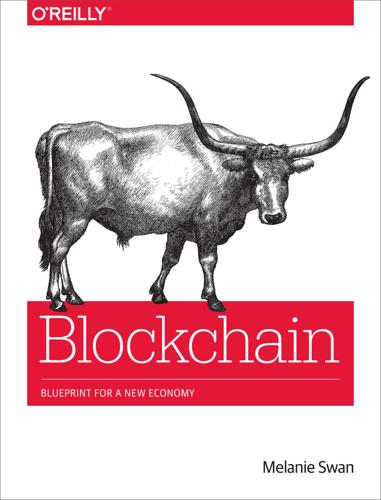
Blockchain: Blueprint for a New Economy
by
Melanie Swan
Published 22 Jan 2014
and popular culture, Bitcoin Culture: Bitfilm Festival pricing, Relation to Fiat Currency terminology, Currency, Token, Tokenizing Web metaphor, Blockchain 2.0: Contracts Bitcoin Association of Berkeley, Campuscoin Bitcoin terminology, Technology Stack: Blockchain, Protocol, Currency BitDrop, Coin Drops as a Strategy for Public Adoption Bitfilm Festival, Bitcoin Culture: Bitfilm Festival bitFlyer, Dapps Bithandle, Digital Identity Verification BitID, Digital Identity Verification-Digital Identity Verification Bitmessage, Dapps BitMixer, eWallet Services and Personal Cryptosecurity Bitnotar, Virtual Notary, Bitnotar, and Chronobit BitPay, Merchant Acceptance of Bitcoin, Financial Services Bitreserve, Relation to Fiat Currency BitShare, Relation to Fiat Currency, Blockchain 2.0 Protocol Projects BitTorrent, The Double-Spend and Byzantine Generals’ Computing Problems, Blockchain Ecosystem: Decentralized Storage, Communication, and Computation block chain cryptography, The Double-Spend and Byzantine Generals’ Computing Problems block explorers, The Double-Spend and Byzantine Generals’ Computing Problems Block.io, Blockchain Development Platforms and APIs Blockchain 1.0, Technology Stack: Blockchain, Protocol, Currency-Regulatory Status (see also currency) practical use, Summary: Blockchain 1.0 in Practical Use-Regulatory Status technology stack, Technology Stack: Blockchain, Protocol, Currency-Technology Stack: Blockchain, Protocol, Currency Blockchain 2.0, Blockchain 2.0: Contracts-The Blockchain as a Path to Artificial Intelligence (see also contracts) applications beyond currency, Blockchain 2.0: Contracts-Blockchain 2.0: Contracts origins and applications overview, Blockchain 2.0: Contracts-Blockchain 2.0: Contracts protocol projects, Blockchain 2.0 Protocol Projects Blockchain 3.0, Blockchain Technology Is a New and Highly Effective Model for Organizing Activity-Societal Maturity Impact of Blockchain Governance (see also justice applications) academic publishing, Blockchain Academic Publishing: Journalcoin-Blockchain Academic Publishing: Journalcoin (see also publishing, academic) for censorship-resistant governance, Distributed Censorship-Resistant Organizational Models consumer genomics applications, Blockchain Genomics-Genomecoin, GenomicResearchcoin (see also genomics, consumer) decentralized DNS system, Namecoin: Decentralized Domain Name System-Decentralized DNS Functionality Beyond Free Speech: Digital Identity digital art, Digital Art: Blockchain Attestation Services (Notary, Intellectual Property Protection)-Personal Thinking Blockchains (see also digital art) digital identity verification, Digital Identity Verification-Digital Divide of Bitcoin freedom and empowerment potential of, Distributed Censorship-Resistant Organizational Models-Distributed Censorship-Resistant Organizational Models health-related applications, Blockchain Health (see also health) and Internet administration, Distributed Censorship-Resistant Organizational Models learning applications, Blockchain Learning: Bitcoin MOOCs and Smart Contract Literacy-Learning Contract Exchanges (see also learning and literacy) science applications, Blockchain Science: Gridcoin, Foldingcoin-Charity Donations and the Blockchain—Sean’s Outpost as transnational governance structure, Distributed Censorship-Resistant Organizational Models-Distributed Censorship-Resistant Organizational Models blockchain application progression, Dapps, DAOs, DACs, and DASs: Increasingly Autonomous Smart Contracts blockchain archival system, Blockchain Ecosystem: Decentralized Storage, Communication, and Computation blockchain attestation services, Digital Art: Blockchain Attestation Services (Notary, Intellectual Property Protection)-Personal Thinking Blockchains (see also digital art) automated digital asset protection, Digital Asset Proof as an Automated Feature benefits, Proof of Existence Bitnotar, Virtual Notary, Bitnotar, and Chronobit Chronobit, Virtual Notary, Bitnotar, and Chronobit contract services, Virtual Notary, Bitnotar, and Chronobit hashing and timestamping, Hashing Plus Timestamping-Limitations, Batched Notary Chains as a Class of Blockchain Infrastructure limitations, Limitations notary chains, Batched Notary Chains as a Class of Blockchain Infrastructure personal thinking chains, Personal Thinking Blockchains-Personal Thinking Blockchains Proof of Existence, Proof of Existence-Limitations Virtual Notary, Virtual Notary, Bitnotar, and Chronobit blockchain development platforms, Blockchain Development Platforms and APIs blockchain ecosystem, Blockchain Ecosystem: Decentralized Storage, Communication, and Computation-Blockchain Ecosystem: Decentralized Storage, Communication, and Computation blockchain government, Blockchain Government-Societal Maturity Impact of Blockchain Governance (see also governance) blockchain interoperability, Technical Challenges blockchain neutrality, Blockchain Neutrality blockchain technology, Blockchain Technology Is a New and Highly Effective Model for Organizing Activity-Blockchain Layer Could Facilitate Big Data’s Predictive Task Automation administrative potential of, Blockchain Technology Could Be Used in the Administration of All Quanta and artificial intelligence, The Blockchain as a Path to Artificial Intelligence, Blockchain AI: Consensus as the Mechanism to Foster “Friendly” AI-Smart Contract Advocates on Behalf of Digital Intelligence application to fundamental economic principles, Fundamental Economic Principles: Discovery, Value Attribution, and Exchange-Fundamental Economic Principles: Discovery, Value Attribution, and Exchange applications for, Preface-Blockchain 1.0, 2.0, and 3.0, M2M/IoT Bitcoin Payment Network to Enable the Machine Economy-Mainstream Adoption: Trust, Usability, Ease of Use appropriate uses, The Blockchain Is Not for Every Situation-The Blockchain Is Not for Every Situation as complementary technology, Conclusion capabilities of, The Blockchain Is an Information Technology concept and overview, What Is the Blockchain?
…
and popular culture, Bitcoin Culture: Bitfilm Festival pricing, Relation to Fiat Currency terminology, Currency, Token, Tokenizing Web metaphor, Blockchain 2.0: Contracts Bitcoin Association of Berkeley, Campuscoin Bitcoin terminology, Technology Stack: Blockchain, Protocol, Currency BitDrop, Coin Drops as a Strategy for Public Adoption Bitfilm Festival, Bitcoin Culture: Bitfilm Festival bitFlyer, Dapps Bithandle, Digital Identity Verification BitID, Digital Identity Verification-Digital Identity Verification Bitmessage, Dapps BitMixer, eWallet Services and Personal Cryptosecurity Bitnotar, Virtual Notary, Bitnotar, and Chronobit BitPay, Merchant Acceptance of Bitcoin, Financial Services Bitreserve, Relation to Fiat Currency BitShare, Relation to Fiat Currency, Blockchain 2.0 Protocol Projects BitTorrent, The Double-Spend and Byzantine Generals’ Computing Problems, Blockchain Ecosystem: Decentralized Storage, Communication, and Computation block chain cryptography, The Double-Spend and Byzantine Generals’ Computing Problems block explorers, The Double-Spend and Byzantine Generals’ Computing Problems Block.io, Blockchain Development Platforms and APIs Blockchain 1.0, Technology Stack: Blockchain, Protocol, Currency-Regulatory Status (see also currency) practical use, Summary: Blockchain 1.0 in Practical Use-Regulatory Status technology stack, Technology Stack: Blockchain, Protocol, Currency-Technology Stack: Blockchain, Protocol, Currency Blockchain 2.0, Blockchain 2.0: Contracts-The Blockchain as a Path to Artificial Intelligence (see also contracts) applications beyond currency, Blockchain 2.0: Contracts-Blockchain 2.0: Contracts origins and applications overview, Blockchain 2.0: Contracts-Blockchain 2.0: Contracts protocol projects, Blockchain 2.0 Protocol Projects Blockchain 3.0, Blockchain Technology Is a New and Highly Effective Model for Organizing Activity-Societal Maturity Impact of Blockchain Governance (see also justice applications) academic publishing, Blockchain Academic Publishing: Journalcoin-Blockchain Academic Publishing: Journalcoin (see also publishing, academic) for censorship-resistant governance, Distributed Censorship-Resistant Organizational Models consumer genomics applications, Blockchain Genomics-Genomecoin, GenomicResearchcoin (see also genomics, consumer) decentralized DNS system, Namecoin: Decentralized Domain Name System-Decentralized DNS Functionality Beyond Free Speech: Digital Identity digital art, Digital Art: Blockchain Attestation Services (Notary, Intellectual Property Protection)-Personal Thinking Blockchains (see also digital art) digital identity verification, Digital Identity Verification-Digital Divide of Bitcoin freedom and empowerment potential of, Distributed Censorship-Resistant Organizational Models-Distributed Censorship-Resistant Organizational Models health-related applications, Blockchain Health (see also health) and Internet administration, Distributed Censorship-Resistant Organizational Models learning applications, Blockchain Learning: Bitcoin MOOCs and Smart Contract Literacy-Learning Contract Exchanges (see also learning and literacy) science applications, Blockchain Science: Gridcoin, Foldingcoin-Charity Donations and the Blockchain—Sean’s Outpost as transnational governance structure, Distributed Censorship-Resistant Organizational Models-Distributed Censorship-Resistant Organizational Models blockchain application progression, Dapps, DAOs, DACs, and DASs: Increasingly Autonomous Smart Contracts blockchain archival system, Blockchain Ecosystem: Decentralized Storage, Communication, and Computation blockchain attestation services, Digital Art: Blockchain Attestation Services (Notary, Intellectual Property Protection)-Personal Thinking Blockchains (see also digital art) automated digital asset protection, Digital Asset Proof as an Automated Feature benefits, Proof of Existence Bitnotar, Virtual Notary, Bitnotar, and Chronobit Chronobit, Virtual Notary, Bitnotar, and Chronobit contract services, Virtual Notary, Bitnotar, and Chronobit hashing and timestamping, Hashing Plus Timestamping-Limitations, Batched Notary Chains as a Class of Blockchain Infrastructure limitations, Limitations notary chains, Batched Notary Chains as a Class of Blockchain Infrastructure personal thinking chains, Personal Thinking Blockchains-Personal Thinking Blockchains Proof of Existence, Proof of Existence-Limitations Virtual Notary, Virtual Notary, Bitnotar, and Chronobit blockchain development platforms, Blockchain Development Platforms and APIs blockchain ecosystem, Blockchain Ecosystem: Decentralized Storage, Communication, and Computation-Blockchain Ecosystem: Decentralized Storage, Communication, and Computation blockchain government, Blockchain Government-Societal Maturity Impact of Blockchain Governance (see also governance) blockchain interoperability, Technical Challenges blockchain neutrality, Blockchain Neutrality blockchain technology, Blockchain Technology Is a New and Highly Effective Model for Organizing Activity-Blockchain Layer Could Facilitate Big Data’s Predictive Task Automation administrative potential of, Blockchain Technology Could Be Used in the Administration of All Quanta and artificial intelligence, The Blockchain as a Path to Artificial Intelligence, Blockchain AI: Consensus as the Mechanism to Foster “Friendly” AI-Smart Contract Advocates on Behalf of Digital Intelligence application to fundamental economic principles, Fundamental Economic Principles: Discovery, Value Attribution, and Exchange-Fundamental Economic Principles: Discovery, Value Attribution, and Exchange applications for, Preface-Blockchain 1.0, 2.0, and 3.0, M2M/IoT Bitcoin Payment Network to Enable the Machine Economy-Mainstream Adoption: Trust, Usability, Ease of Use appropriate uses, The Blockchain Is Not for Every Situation-The Blockchain Is Not for Every Situation as complementary technology, Conclusion capabilities of, The Blockchain Is an Information Technology concept and overview, What Is the Blockchain?
…
Blockchain 3.0: Justice Applications Beyond Currency, Economics, and Markets Blockchain Technology Is a New and Highly Effective Model for Organizing Activity Extensibility of Blockchain Technology Concepts Fundamental Economic Principles: Discovery, Value Attribution, and Exchange Blockchain Technology Could Be Used in the Administration of All Quanta Blockchain Layer Could Facilitate Big Data’s Predictive Task Automation Distributed Censorship-Resistant Organizational Models Namecoin: Decentralized Domain Name System Challenges and Other Decentralized DNS Services Freedom of Speech/Anti-Censorship Applications: Alexandria and Ostel Decentralized DNS Functionality Beyond Free Speech: Digital Identity Digital Identity Verification Blockchain Neutrality Digital Divide of Bitcoin Digital Art: Blockchain Attestation Services (Notary, Intellectual Property Protection) Hashing Plus Timestamping Proof of Existence Virtual Notary, Bitnotar, and Chronobit Monegraph: Online Graphics Protection Digital Asset Proof as an Automated Feature Batched Notary Chains as a Class of Blockchain Infrastructure Personal Thinking Blockchains Blockchain Government Decentralized Governance Services PrecedentCoin: Blockchain Dispute Resolution Liquid Democracy and Random-Sample Elections Random-Sample Elections Futarchy: Two-Step Democracy with Voting + Prediction Markets Societal Maturity Impact of Blockchain Governance 4. Blockchain 3.0: Efficiency and Coordination Applications Beyond Currency, Economics, and Markets Blockchain Science: Gridcoin, Foldingcoin Community Supercomputing Global Public Health: Bitcoin for Contagious Disease Relief Charity Donations and the Blockchain—Sean’s Outpost Blockchain Genomics Blockchain Genomics 2.0: Industrialized All-Human-Scale Sequencing Solution Blockchain Technology as a Universal Order-of-Magnitude Progress Model Genomecoin, GenomicResearchcoin Blockchain Health Healthcoin EMRs on the Blockchain: Personal Health Record Storage Blockchain Health Research Commons Blockchain Health Notary Doctor Vendor RFP Services and Assurance Contracts Virus Bank, Seed Vault Backup Blockchain Learning: Bitcoin MOOCs and Smart Contract Literacy Learncoin Learning Contract Exchanges Blockchain Academic Publishing: Journalcoin The Blockchain Is Not for Every Situation Centralization-Decentralization Tension and Equilibrium 5.
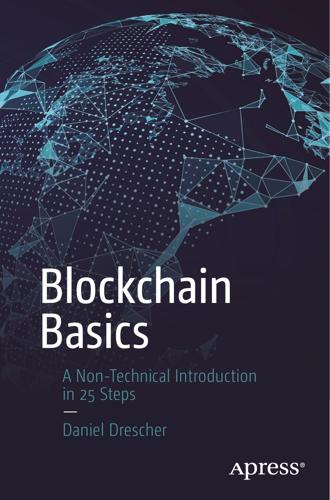
Blockchain Basics: A Non-Technical Introduction in 25 Steps
by
Daniel Drescher
Published 16 Mar 2017
com/documents/universal-payment-channels.pdf. 6BitFury Group. Public versus private blockchains: Part 1, Permissioned blockchains. White paper. 2015; BitFury Group. Public versus private blockchains: Part 2, Permissionless blockchains. White paper. 2015. Blockchain Basics 239 different types of blockchains can be seen as a conceptual advancement as they have an impact on major characteristics of the blockchain such as its purpose, distributed nature, and architecture. Privacy The openness of public blockchains has already been the subject of discussions and further development since it conflicts with the level of privacy required in some application contexts.
…
By the end of Step 23, you will understand why the original idea of the blockchain as explained in the previous steps may not be suitable for large-scale commercial applications, what changes were made to overcome these limitations, and how these changes altered the properties of the blockchain. Introduction xv Stage V: Using the Blockchain, Summary, and Outlook Steps 24 and 25 consider how the blockchain can be used in real life and what questions should to be addressed when selecting a blockchain application. This stage also points out areas of active research and further development. By the end of Step 25, you will have gained a well-grounded understanding of the blockchain and you will be well prepared to read more advanced texts or to become an active part in the ongoing discussion about the blockchain. Accompanying Material The website www.blockchain-basics.com offers accompanying material for some of the steps of this book.
…
The incompatibility between two or more opinions or goals is called a conflict, which can be solved either by finding a compromise or by deciding in favor of one option to the disadvantage of all alternatives. This step presents two major conflicts of the blockchain that are represented in two of its major technical limitations and how the attempt to overcome them led to the invention of four distinct versions of the blockchain. © Daniel Drescher 2017 D. Drescher, Blockchain Basics, DOI 10.1007/978-1-4842-2604-9_23 214 Step 23 | Reinventing the Blockchain Conflicting Goals of the Blockchain The blockchain faces two conflicts: • Transparency vs. privacy • Security vs. speed Transparency vs. Privacy The blockchain clarifies ownership based on the whole history of transaction data, which is available to everyone.
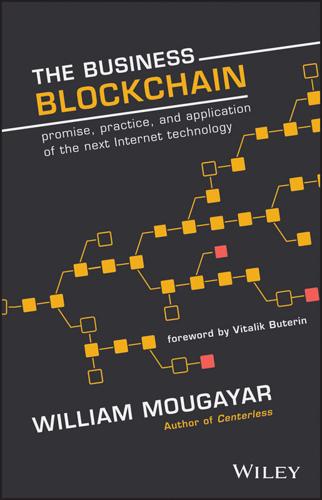
The Business Blockchain: Promise, Practice, and Application of the Next Internet Technology
by
William Mougayar
Published 25 Apr 2016
Banks as Backends Blockchain Inside Regulations Versus Permissionless Innovation Landscape of Blockchain Companies in Financial Services Blockchain Applications in Financial Services Strategic Questions for Financial Services Key Ideas from Chapter Four Notes 5: Lighthouse Industries & New Intermediaries The New Intermediaries Lighthouse Industries Key Ideas from Chapter Five Notes 6: Implementing Blockchain Technology Internal Strategies for Tackling the Blockchain The Blockchain Czar Organizational Models A Blockchain Functional Architecture Core & Protocol Blockchain Software Development Writing Decentralized Applications 12 Features of a Blockchain Platform Decision-Making Framework Key Ideas from Chapter Six Notes 7: Decentralization as the Way Forward What Happened to the Decentralized Internet?
…
Blockchain applications need the Internet, but they can bypass the Web, and give us another version that is more decentralized, and perhaps more equitable. That is one of the biggest promises of blockchain technology. There is more than one way to build blockchain applications. You can build them natively on a blockchain, or you could mix them in an existing Web application, and we will call that flavor, “hybrid blockchain applications.” Since the Internet is comprised of a public version and several private variations, blockchains will also follow that path. Therefore, we will have public and private blockchains. Some will be natively bolted to a blockchain, whereas others might be a hybrid implementation that is part of an existing Web or private application.
…
CONTENTS Foreword Acknowledgments A Personal Preface Notes Introduction 1: What is the Blockchain? Visiting Satoshi’s Paper The Web, All Over Again One or Several Blockchains? Introduction to Blockchain Applications The Blockchain’s Narrative is Strong A Meta Technology Software, Game Theory and Cryptography The Database vs. The Ledger Looking Back So We Can Look Forward Unpacking the Blockchain State Transitions and State Machines— What Are They? The Consensus Algorithms Key Ideas from Chapter One Notes 2: How Blockchain Trust Infiltrates A New Trust Layer Decentralization of Trust—What Does it Mean?
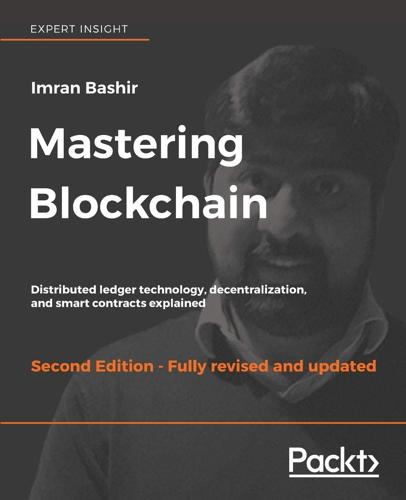
Mastering Blockchain, Second Edition
by
Imran Bashir
Published 28 Mar 2018
PacktPub.com Contributors About the author About the reviewer Packt is searching for authors like you Preface Who this book is for What this book covers To get the most out of this book Download the example code files Download the color images Conventions used Get in touch Reviews Blockchain 101 The growth of blockchain technology Distributed systems The history of blockchain and Bitcoin Electronic cash Blockchain Blockchain defined Peer-to-peer Distributed ledger Cryptographically-secure Append-only Updateable via consensus Generic elements of a blockchain How blockchain works How blockchain accumulates blocks Benefits and limitations of blockchain Tiers of blockchain technology Features of a blockchain Types of blockchain Distributed ledgers Distributed Ledger Technology Public blockchains Private blockchains Semiprivate blockchains Sidechains Permissioned ledger Shared ledger Fully private and proprietary blockchains Tokenized blockchains Tokenless blockchains Consensus Consensus mechanism Types of consensus mechanisms Consensus in blockchain CAP theorem and blockchain Summary Decentralization Decentralization using blockchain Methods of decentralization Disintermediation Contest-driven decentralization Routes to decentralization How to decentralize The decentralization framework example Blockchain and full ecosystem decentralization Storage Communication Computing power and decentralization Smart contracts Decentralized Organizations Decentralized Autonomous Organizations Decentralized Autonomous Corporations Decentralized Autonomous Societies Decentralized Applications (DApps) Requirements of a Decentralized Application Operations of a DApp DApp examples KYC-Chain OpenBazaar Lazooz Platforms for decentralization Ethereum MaidSafe Lisk Summary Symmetric Cryptography Working with the OpenSSL command line Introduction Mathematics Set Group Field A finite field Order An abelian group Prime fields Ring A cyclic group Modular arithmetic Cryptography Confidentiality Integrity Authentication Entity authentication Data origin authentication Non-repudiation Accountability Cryptographic primitives Symmetric cryptography Stream ciphers Block ciphers Block encryption mode Electronic Code Book Cipher Block Chaining Counter mode Keystream generation mode Message authentication mode Cryptographic hash mode Data Encryption Standard Advanced Encryption Standard How AES works Summary Public Key Cryptography Asymmetric cryptography Integer factorization Discrete logarithm Elliptic curves Public and private keys RSA Encryption and decryption using RSA Elliptic Curve Cryptography Mathematics behind ECC Point addition Point doubling Discrete logarithm problem in ECC RSA using OpenSSL RSA public and private key pair Private key Public key Exploring the public key Encryption and decryption Encryption Decryption ECC using OpenSSL ECC private and public key pair Private key Private key generation Hash functions Compression of arbitrary messages into fixed-length digest Easy to compute Preimage resistance Second preimage resistance Collision resistance Message Digest Secure Hash Algorithms Design of Secure Hash Algorithms Design of SHA-256 Design of SHA-3 (Keccak) OpenSSL example of hash functions Message Authentication Codes MACs using block ciphers Hash-based MACs Merkle trees Patricia trees Distributed Hash Tables Digital signatures RSA digital signature algorithm Sign then encrypt Encrypt then sign Elliptic Curve Digital Signature Algorithm How to generate a digital signature using OpenSSL ECDSA using OpenSSL Homomorphic encryption Signcryption Zero-Knowledge Proofs Blind signatures Encoding schemes Financial markets and trading Trading Exchanges Orders and order properties Order management and routing systems Components of a trade The underlying instrument General attributes Economics Sales Counterparty Trade life cycle Order anticipators Market manipulation Summary Introducing Bitcoin Bitcoin Bitcoin definition Bitcoin – a bird's-eye view Sending a payment to someone Digital keys and addresses Private keys in Bitcoin Public keys in Bitcoin Addresses in Bitcoin Base58Check encoding Vanity addresses Multisignature addresses Transactions The transaction life cycle Transaction fee Transaction pools The transaction data structure Metadata Inputs Outputs Verification The script language Commonly used opcodes Types of transactions Coinbase transactions Contracts Transaction verification Transaction malleability Blockchain The structure of a block The structure of a block header The genesis block Mining Tasks of the miners Mining rewards Proof of Work (PoW) The mining algorithm The hash rate Mining systems CPU GPU FPGA ASICs Mining pools Summary Bitcoin Network and Payments The Bitcoin network Wallets Non-deterministic wallets Deterministic wallets Hierarchical Deterministic wallets Brain wallets Paper wallets Hardware wallets Online wallets Mobile wallets Bitcoin payments Innovation in Bitcoin Bitcoin Improvement Proposals (BIPs) Advanced protocols Segregated Witness (SegWit) Bitcoin Cash Bitcoin Unlimited Bitcoin Gold Bitcoin investment and buying and selling bitcoins Summary Bitcoin Clients and APIs Bitcoin installation Types of Bitcoin Core clients Bitcoind Bitcoin-cli Bitcoin-qt Setting up a Bitcoin node Setting up the source code Setting up bitcoin.conf Starting up a node in testnet Starting up a node in regtest Experimenting with Bitcoin-cli Bitcoin programming and the command-line interface Summary Alternative Coins Theoretical foundations Alternatives to Proof of Work Proof of Storage Proof of Stake (PoS) Various stake types Proof of coinage Proof of Deposit (PoD) Proof of Burn Proof of Activity (PoA) Nonoutsourceable puzzles Difficulty adjustment and retargeting algorithms Kimoto Gravity Well Dark Gravity Wave DigiShield MIDAS Bitcoin limitations Privacy and anonymity Mixing protocols Third-party mixing protocols Inherent anonymity Extended protocols on top of Bitcoin Colored coins Counterparty Development of altcoins Consensus algorithms Hashing algorithms Difficulty adjustment algorithms Inter-block time Block rewards Reward halving rate Block size and transaction size Interest rate Coinage Total supply of coins Namecoin Trading Namecoins Obtaining Namecoins Generating Namecoin records Litecoin Primecoin Trading Primecoin Mining guide Zcash Trading Zcash Mining guide Address generation GPU mining Downloading and compiling nheqminer Initial Coin Offerings (ICOs) ERC20 tokens Summary Smart Contracts History Definition Ricardian contracts Smart contract templates Oracles Smart Oracles Deploying smart contracts on a blockchain The DAO Summary Ethereum 101 Introduction The yellow paper Useful mathematical symbols Ethereum blockchain Ethereum – bird's eye view The Ethereum network Mainnet Testnet Private net Components of the Ethereum ecosystem Keys and addresses Accounts Types of accounts Transactions and messages Contract creation transaction Message call transaction Messages Calls Transaction validation and execution The transaction substate State storage in the Ethereum blockchain The world state The account state Transaction receipts Ether cryptocurrency / tokens (ETC and ETH) The Ethereum Virtual Machine (EVM) Execution environment Machine state The iterator function Smart contracts Native contracts Summary Further Ethereum Programming languages Runtime bytecode Opcodes and their meaning Arithmetic operations Logical operations Cryptographic operations Environmental information Block information Stack, memory, storage, and flow operations Push operations Duplication operations Exchange operations Logging operations System operations Blocks and blockchain The genesis block The block validation mechanism Block finalization Block difficulty Gas Fee schedule Forks in the blockchain Nodes and miners The consensus mechanism Ethash CPU mining GPU mining Benchmarking Mining rigs Mining pools Wallets and client software Geth Eth Pyethapp Parity Light clients Installation Eth installation Mist browser Geth The geth console Funding the account with bitcoin Parity installation Creating accounts using the parity command line APIs, tools, and DApps Applications (DApps and DAOs) developed on Ethereum Tools Supporting protocols Whisper Swarm Scalability, security, and other challenges Trading and investment Summary Ethereum Development Environment Test networks Setting up a private net Network ID The genesis file Data directory Flags and their meaning Static nodes Starting up the private network Running Mist on private net Deploying contracts using Mist Block explorer for private net / local Ethereum block explorer Summary Development Tools and Frameworks Languages Compilers Solidity compiler (solc) Installation on Linux Installation on macOS Integrated Development Environments (IDEs) Remix Tools and libraries Node version 7 EthereumJS Ganache MetaMask Truffle Installation Contract development and deployment Writing Testing Solidity language Types Value types Boolean Integers Address Literals Integer literals String literals Hexadecimal literals Enums Function types Internal functions External functions Reference types Arrays Structs Data location Mappings Global variables Control structures Events  Inheritance Libraries Functions Layout of a Solidity source code file Version pragma Import Comments Summary Introducing Web3 Web3 Contract deployment POST requests The HTML and JavaScript frontend Installing web3.js Example Creating a web3 object Checking availability by calling any web3 method Contract functions Development frameworks Truffle Initializing Truffle Interaction with the contract Another example An example project – Proof of Idea Oracles Deployment on decentralized storage using IPFS Installing IPFS Distributed ledgers Summary Hyperledger Projects under Hyperledger Fabric Sawtooth Lake Iroha Burrow Indy Explorer Cello Composer Quilt Hyperledger as a protocol The reference architecture Requirements and design goals of Hyperledger Fabric The modular approach Privacy and confidentiality Scalability Deterministic transactions Identity Auditability Interoperability Portability Rich data queries Fabric Hyperledger Fabric Membership services Blockchain services Consensus services Distributed ledger The peer to peer protocol Ledger storage Chaincode services Components of the fabric Peers Orderer nodes Clients Channels World state database Transactions Membership Service Provider (MSP) Smart contracts Crypto service provider Applications on blockchain Chaincode implementation The application model Consensus in Hyperledger Fabric The transaction life cycle in Hyperledger Fabric Sawtooth Lake PoET Transaction families Consensus in Sawtooth The development environment – Sawtooth Lake Corda Architecture State objects Transactions Consensus Flows Components Nodes The permissioning service Network map service Notary service Oracle service Transactions Vaults CorDapp The development environment – Corda Summary Alternative Blockchains Blockchains Kadena Ripple Transactions Payments related Order related Account and security-related Interledger Application layer Transport layer Interledger layer Ledger layer Stellar Rootstock Sidechain Drivechain Quorum Transaction manager Crypto Enclave QuorumChain Network manager Tezos Storj MaidSafe BigchainDB MultiChain Tendermint Tendermint Core Tendermint Socket Protocol (TMSP) Platforms and frameworks Eris Summary Blockchain – Outside of Currencies Internet of Things Physical object layer Device layer Network layer Management layer Application layer IoT blockchain experiment First node setup Raspberry Pi node setup Installing Node.js Circuit Government Border control Voting Citizen identification (ID cards) Miscellaneous Health Finance Insurance Post-trade settlement Financial crime prevention Media Summary Scalability and Other Challenges Scalability Network plane Consensus plane Storage plane View plane Block size increase Block interval reduction Invertible Bloom Lookup Tables Sharding State channels Private blockchain Proof of Stake Sidechains Subchains Tree chains (trees) Block propagation Bitcoin-NG Plasma Privacy Indistinguishability Obfuscation Homomorphic encryption Zero-Knowledge Proofs State channels Secure multiparty computation Usage of hardware to provide confidentiality CoinJoin Confidential transactions MimbleWimble Security Smart contract security Formal verification and analysis Oyente tool Summary Current Landscape and What's Next Emerging trends Application-specific blockchains (ASBCs) Enterprise-grade blockchains Private blockchains Start-ups Strong research interest Standardization Enhancements Real-world implementations Consortia Answers to technical challenges Convergence Education of blockchain technology Employment Cryptoeconomics Research in cryptography New programming languages Hardware research and development Research in formal methods and security Alternatives to blockchains Interoperability efforts Blockchain as a Service Efforts to reduce electricity consumption Other challenges Regulation Dark side Blockchain research Smart contracts Centralization issues Limitations in cryptographic functions Consensus algorithms Scalability Code obfuscation Notable projects Zcash on Ethereum CollCo Cello Qtum Bitcoin-NG Solidus Hawk Town-Crier SETLCoin TEEChan Falcon Bletchley Casper Miscellaneous tools Solidity extension for Microsoft Visual Studio MetaMask Stratis Embark DAPPLE Meteor uPort INFURA Convergence with other industries Future Summary Another Book You May Enjoy Leave a review – let other readers know what you think Preface This book has one goal, to introduce theoretical and practical aspects of the blockchain technology.
…
Blockchain 3.0: This third blockchain generation is used to implement applications beyond the financial services industry and is used in government, health, media, the arts, and justice. Again, as in Blockchain 2.0, Ethereum, Hyperledger, and newer blockchains with the ability to code smart contracts are considered part of this blockchain technology tier. This generation of blockchain emerged around 2012 when multiple applications of blockchain technology in different industries were researched. Blockchain X.0: This generation represents a vision of blockchain singularity where one day there will be a public blockchain service available that anyone can use just like the Google search engine. It will provide services for all realms of society.
…
This preceding structure is a simple block diagram that depicts a block. Specific block structures relative to their blockchain technologies will be discussed later in the book with greater in-depth technical detail. Generic elements of a blockchain Now, let's walk through the generic elements of a blockchain. You can use this as a handy reference section if you ever need a reminder about the different parts of a blockchain. More precise elements will be discussed in the context of their respective blockchains in later chapters, for example, the Ethereum blockchain. The structure of a generic blockchain can be visualized with the help of the following diagram: Generic structure of a blockchain Elements of a generic blockchain are described here one by one.
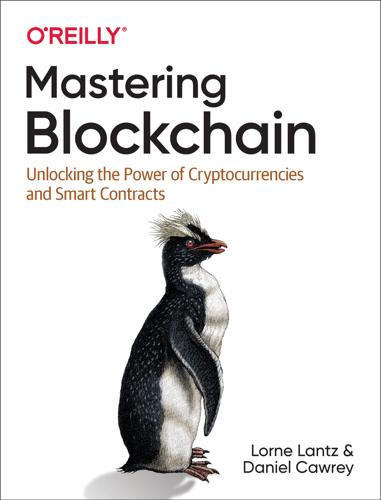
Mastering Blockchain: Unlocking the Power of Cryptocurrencies and Smart Contracts
by
Lorne Lantz
and
Daniel Cawrey
Published 8 Dec 2020
Aaron Caswell, Expert Blockchain Engineer Get down in the trenches with Lorne and Daniel and find out what’s really inside Bitcoin, Ethereum, altcoin, and other blockchains and forks. Karen Kilroy, CEO, Kilroy Blockchain Corporation Mastering Blockchain goes from the basics to using blockchain in real-life implementations in enterprise-grade environments. Jorge Lesmes, Global Head of Blockchain at everis (an NTT Data company) Daniel and Lorne cover an exceptionally broad range of topics in the blockchain universe with clarity. Mastering Blockchain is a terrific starting place for those trying to gain a comprehensive view of the incredible impact of this technology on the world. Jeremy Allaire, CEO Circle Internet Financial Cofounder, Centre USD Stablecoin Consortium As someone who teaches blockchain, this book would be a great accompaniment to a course, providing a much more robust offering than almost anything I have come across.
…
Databases and Ledgers Decentralization Versus Centralization Participants Key Properties of Distributed Verifiable Ledgers Ethereum-Based Privacy Implementations Nightfall Quorum Enterprise Implementations Hyperledger Corda DAML Blockchain as a Service Banking The Royal Mint Banque de France China US Federal Reserve JPMorgan Permissioned Ledger Uses IT Banking Central Bank Digital Currencies Legal Gaming Health Care Internet of Things Payments Libra The Libra Association Borrowing from Existing Blockchains Novi How the Libra Protocol Works Summary 10. The Future of Blockchain The More Things Change Blockchains to Watch How Monero Works Mimblewimble, Beam, and Grin The Scaling Problem Sidechains Sharding STARKs DAGs Avalanche Liquid Lightning Ethereum Scaling Privacy Interoperability Tokenize Everything Summary Index Praise for Mastering Blockchain Blockchain can be a daunting and elusive subject matter, especially for those who see the vast potential in this incredible technology. Mastering Blockchain brings within one’s grasp a solid foundation of understanding, allowing for immediate actionable learning.
…
Contentious Hard Forks When a contentious hard fork occurs, the main blockchain of a cryptocurrency splits into two separate blockchains. This is what happened with Bitcoin Cash, a chain that diverged from Bitcoin in 2017, as illustrated in Figure 3-2. Figure 3-2. Blocks generated after the Bitcoin and Bitcoin Cash fork Each blockchain inherits the history of the main blockchain before the fork. This includes every previous transaction, every address balance, every block hash, and so on. At the moment of the fork, the two blockchains have identical histories. After the fork, each blockchain creates its own new blocks and its own new record of transactions, and blocks can be mined by different miners.

Blockchain Revolution: How the Technology Behind Bitcoin Is Changing Money, Business, and the World
by
Don Tapscott
and
Alex Tapscott
Published 9 May 2016
Austin Hill called it Wall Street’s “Faustian bargain,” an onerous trade-off.28 “People love the idea of not having to wait three days to settle transactions but having them cleared within minutes and knowing that they’re final and that they’re true,” said Hill. “The counterpart to that is all transactions on the [bitcoin] blockchain are completely public. That terrifies a number of people on Wall Street.” The solution? Confidential transactions on so-called permissioned blockchains, also known as private blockchains. Whereas the bitcoin blockchain is entirely open and permissionless—that is, anyone can access it and interact with it—permissioned blockchains require users to have certain credentials, giving them a license to operate on that particular blockchain. Hill has developed the technology whereby only a few stakeholders see the various components of a transaction and can ensure its integrity.
…
To him, “There’s a difference between enabling and moving the world in a new direction.” He said, “People still have to want to do it, to take the risk of doing it.”31 So get ready for blockchain Airbnb, blockchain Uber, blockchain Lyft, blockchain Task Rabbit, and blockchain everything wherever there is an opportunity for real sharing and for value creation to work together in a cooperative way and receive most of the value they create. 4. The Metering Economy Perhaps blockchain technology can take us beyond the sharing economy into a metering economy where we can rent out and meter the use of our excess capacity. One problem with the actual sharing economy, where, for example, home owners agree to share power tools or small farming equipment, fishing gear, a woodworking shop, garage or parking, and more, was that it was just too much of a hassle.
…
Users This means you and me—people who care about identity, security, privacy, our other rights, long-term viability, fair adjudication, or a forum for righting wrongs and fighting criminals who use technology to destroy what we care about. Everyone seems divided on basic taxonomy and categorization: Does blockchain refer to the bitcoin blockchain or the technology in general? Is it big “B” Blockchain or little “b” blockchain? Is it a currency, commodity, or technology? Is it all of these things or none of these things? Women Leaders in Blockchain As many have observed, the blockchain movement is overpopulated with men. In technology and engineering, males still outnumber females by a wide margin. However, high-profile women are founding and managing companies in the space: Blythe Masters, CEO of Digital Asset Holdings; Cindy McAdam, president of Xapo; Melanie Shapiro, CEO of Case Wallet; Joyce Kim, executive director of Stellar Development Foundation; Elizabeth Rossiello, CEO and founder of BitPesa; and Pamela Morgan, CEO of Third Key Solutions.

The Truth Machine: The Blockchain and the Future of Everything
by
Paul Vigna
and
Michael J. Casey
Published 27 Feb 2018
The former refers to bitcoin’s status as a currency, the latter is a reference to the overarching system and protocol that underpins that currency and other uses for the Bitcoin blockchain ledger. * Addressing an inconsistency in popular parlance, we generally employ three distinct usages of the word “blockchain”: “The blockchain,” which refers to Bitcoin’s original distributed ledger; “a blockchain”—or, pluralized, “blockchains”—to cover a variety of more recent distributed ledgers that share Bitcoin’s chain-of-blocks structure; and “blockchain technology,” referring to the overall field. We also use “distributed ledger technology” to encompass both blockchain and non-blockchain distributed ledgers. We mostly avoid the popular construct of “blockchain” as a non-countable noun.
…
the company said that the prototype’s use had generated $6.5 million: Andrew Sawers, “Foxconn Uses Blockchain for New SCF Platform after $6.5m Pilot,” SCF Briefing, March 17, 2017, http://www.scfbriefing.com/foxconn-launches-scf-blockchain-platform/. Blockchain-proven digital tokens point to what blockchain: Michael J. Casey and Pindar Wong, “Global Supply Chains Are About to Get Better, Thanks to Blockchain,” Harvard Business Review, March 13, 2017, https://hbr.org/2017/03/global-supply-chains-are-about-to-get-better-thanks-to-blockchain. Belt and Road Blockchain Consortium: https://www.beltandroadblockchain.org/. Some have described it as a Beijing-led Marshall Plan: “China’s One Belt, One Road: Will It Reshape Global Trade?”
…
Beale, Inga Behlendorf, Brian Belt and Road Blockchain Consortium Benet, Juan Berners-Lee, Tim Bessemer Venture Partners Big Data Birch, David bitcoin, use of the term Bitcoin “civil war” consensus logic and cybersecurity and Cypherpunk movement and decentralization digital assets and financial sector and forks history of and open-source innovation permissionless ideal of price of and privacy Satoshi Nakamoto, (pseudonymous creator) and scalability and security SHA-256 hashing algorithm and trust Bitcoin Cash (BCH) Bitcoin Core Bitfinex BitFury BitLand BitLicense regulation Bitmain BitPesa black-hat hackers blockchain agnostic blockchain and blockchain technologies censorship resistance and Cypherpunk community definition and use of the term distributed trust protocol and double-spending problem and energy sector and financial inclusion and financial industry and governance and citizenship hashes history of and identity information and innovation and art and international agencies and Internet of Things and Internet 3.0 potential of provably signed transactions and record-keeping and registries replicated and security sequentially linked and cryptographically secured transactions software-driving consensus and supply chains talent pool tokens and trust as truth machine See also Bitcoin; distributed ledger technology; Ethereum; permissioned (private) blockchains; permissionless blockchains Blockchain Capital blockchain-distributed ledger. See also double-spending Blockchain Health Blockchain.info blockchain labs block.one Blockstream Bloq Blue Apron Bosch Brave New Brave Software Inc. Basic Attention token Breitman, Arthur Breitman, Kathleen Brexit. See also United Kingdom Brody, Paul Burniske, Chris Buterin, Vitalik BuzzFeed Byrne, Preston capitalism Carlson-Wee, Olaf Casares, Wences Casey, Michael.

Attack of the 50 Foot Blockchain: Bitcoin, Blockchain, Ethereum & Smart Contracts
by
David Gerard
Published 23 Jul 2017
Blockchains won’t clean up your data for you Six questions to ask your blockchain salesman Security threat models Permissioned blockchains Beneficiaries of business Blockchain Non-beneficiaries of business Blockchain “Blockchain” products you can buy! UK Government Office for Science: “Distributed Ledger Technology: beyond block chain” Chapter 12: Case study: Why you can’t put the music industry on a blockchain The rights management quagmire Getting paid for your song The record industry’s loss of control and the streaming apocalypse Berklee Rethink and blockchain dreams Imogen Heap: “Tiny Human”. Total sales: $133.20. Why blockchains are a bad fit for music Attempts to make sense of the hype Other musical blockchain initiatives SingularDTV Summary Conclusion Further reading Glossary Acknowledgements About the author Index Notes A Bitcoin FAQ © Christian Wagner http://brokenlibrarian.org/bitcoin/ Short Version 1) Should I buy Bitcoins?
…
Matt Levine from Bloomberg notes: “The word ‘blockchain’ has managed to make that boring back-office coordination work sexy, which means that it might actually get done.”375 This, rather than anything blockchains themselves offer, seems to be the most productive result of business blockchain trials to date. Once that’s in place, you can increase efficiency markedly by taking the blockchain bit out. Six questions to ask your blockchain salesman If someone is trying to sell you on blockchains, the obvious skeptical questions will get you a long way: Are they confusing “might” and “is”? (Almost all business blockchain claims are full of “might” and salespeople talking about “the possibilities.”) Do they have present-day working blockchains that do every one of the things they’ve claimed you can get from blockchains?
…
Chapter 7: Spending bitcoins in 2017 Bitcoin is full: the transaction clog Bitcoin for drugs: welcome to the darknet Ransomware Non-illegal goods and services Case study: Individual Pubs Chapter 8: Trading bitcoins in 2017: the second crypto bubble How to get bitcoins From the first bubble to the second Bitfinex: the hack, the bank block and the second bubble Chapter 9: Altcoins Litecoin Dogecoin Ethereum Buterin’s quantum quest ICOs: magic beans and bubble machines Chapter 10: Smart contracts, stupid humans Dr. Strangelove, but on the blockchain So who wants smart contracts, anyway? Legal code is not computer code The oracle problem: garbage in, garbage out Immutability: make your mistakes unfixable Immutability: the enemy of good software engineering Ethereum smart contracts in practice The DAO: the steadfast iron will of unstoppable code Chapter 11: Business bafflegab, but on the Blockchain What can Blockchain do for me? But all these companies are using Blockchain now! Blockchains won’t clean up your data for you Six questions to ask your blockchain salesman Security threat models Permissioned blockchains Beneficiaries of business Blockchain Non-beneficiaries of business Blockchain “Blockchain” products you can buy!
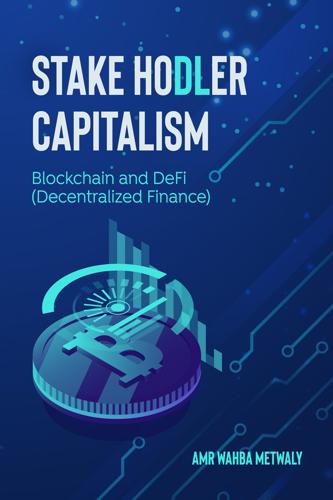
Stake Hodler Capitalism: Blockchain and DeFi
by
Amr Hazem Wahba Metwaly
Published 21 Mar 2021
Stake Hodler Capitalism: Blockchain and DeFi (Decentralized Finance) Table of Contents Stake Hodler Capitalism: Blockchain and DeFi (Decentralized Finance) Disclaimer Introduction Author's Note Chapter 1: DeFi Apps: The Ultimate Killer Apps in Blockchain What Is DeFi? Cryptography Chapter 2: Blockchain Storage structure Decentralization Transparency How secure is blockchain? Bitcoin vs. Blockchain Ways Blockchains Are Implemented Banking and finance Currency Health care Records of property Supply chains Pros and Cons of Blockchain Blockchain Advantages Disadvantages of Blockchain Chapter 3: Introduction to Smart Contracts The Operation Process of a Smart Contract How can you use smart contracts?
…
Examples of platforms that offer private blockchain solutions are IBM Blockchain, Azure Blockchain, and AWS (Amazon Web Services) Blockchain solutions. In the blockchain, every node has a complete history of the blockchain's data since its birth. For Bitcoin, the data is the full history of all Bitcoin transactions. If there is an error in one node's data, it can use the thousands of other nodes as a reference to correct itself. This way, a single node within the network will not change any information held in it. Hence, the history of transactions in every block that encompasses Bitcoin's blockchain is not changeable.
…
The crucial factor to comprehend here is that Blockchain's sole purpose isn't Bitcoin, to record a ledger of payments; however, in theory, blockchain can be used to make records of any number of data points rigidly. This could be in the form of regular monetary transactions, votes in an election, product inventories, state identifications, deeds to homes, etc. Presently, there is a broad variety of blockchain-based projects looking to carry out blockchain to help society rather than just recording transactions. A good instance is that of blockchain being used as a way to vote in democratic elections. The nature of blockchain's immutability means that illegal voting would become a bit more difficult to happen.
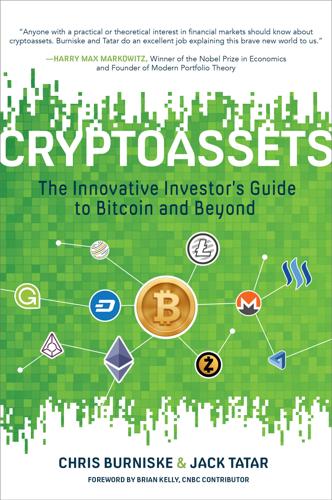
Cryptoassets: The Innovative Investor's Guide to Bitcoin and Beyond: The Innovative Investor's Guide to Bitcoin and Beyond
by
Chris Burniske
and
Jack Tatar
Published 19 Oct 2017
The same will likely be true of blockchain technology. If these distributed databases of value are to be truly transformational, they will have to interoperate and value one another. THE MANY USES OF THE WORD BLOCKCHAIN Despite increased interest in blockchain technology, confusion remains as to what it specifically means due to imprecision in the use of the term. For example, “a blockchain,” “the blockchain,” “blockchain,” and “blockchain technology” can all refer to different things. Typically, when people say the blockchain, they are referring to the original, or Bitcoin’s blockchain. At the risk of redundancy but in pursuit of clarity, we will always use “Bitcoin’s blockchain” instead of “the blockchain.”
…
At the risk of redundancy but in pursuit of clarity, we will always use “Bitcoin’s blockchain” instead of “the blockchain.” On the other hand, terms such as a blockchain and blockchain technology typically refer to derivatives of the original that now may have nothing to do with Bitcoin. Meanwhile, blockchain is normally used to refer to the concept itself, with no particular implementation in mind. It is the most amorphous, so our least favored of the terms. Chapter 3 “Blockchain, Not Bitcoin?” In drawing a line between public and private blockchains, we have entered contentious territory that the innovative investor should understand.
…
The October 31, 2015, issue of the Economist featured “The Trust Machine” on its front cover, and while the article tipped its hat to Bitcoin, its focus was the more broadly applicable “technology behind bitcoin” and used the term blockchain throughout.14 The combination of Masters, Bloomberg, and the Economist led to a spike in interest in blockchain technology that set off a sustained climb in global Google search volumes for “blockchain” that is still in an upward trend. In the two weeks between October 18 and November 1, 2015, just after Bloomberg and the Economist published their articles, global Google search volumes for “blockchain” grew 70 percent (see Figure 3.2). Figure 3.2 The rise in Google Search trends for the term “blockchain” Data sourced from Google Search Trends Masters’s focus for blockchain technology in financial services is on private blockchains, which are very different from Bitcoin’s blockchain. Pivotal to the current conversation, private blockchains don’t need native assets.
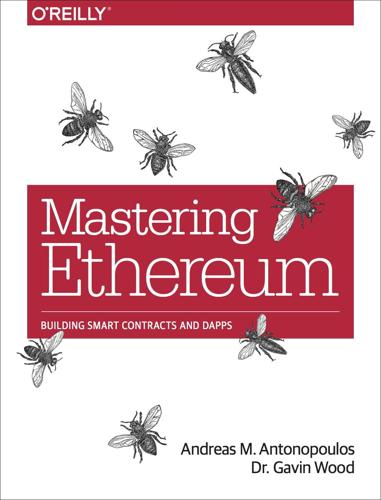
Mastering Ethereum: Building Smart Contracts and DApps
by
Andreas M. Antonopoulos
and
Gavin Wood Ph. D.
Published 23 Dec 2018
In the past, we used the term “blockchain” to represent all of the components just listed, as a shorthand reference to the combination of technologies that encompass all of the characteristics described. Today, however, there are a huge variety of blockchains with different properties. We need qualifiers to help us understand the characteristics of the blockchain in question, such as open, public, global, decentralized, neutral, and censorship-resistant, to identify the important emergent characteristics of a “blockchain” system that these components allow. Not all blockchains are created equal. When someone tells you that something is a blockchain, you have not received an answer; rather, you need to start asking a lot of questions to clarify what they mean when they use the word “blockchain.”
…
If you are curious, the bytecode looks like this: PUSH1 0x60 PUSH1 0x40 MSTORE CALLVALUE ISZERO PUSH2 0xF JUMPI PUSH1 0x0 DUP1 REVERT JUMPDEST PUSH1 0xE5 DUP1 PUSH2 0x1D PUSH1 0x0 CODECOPY PUSH1 0x0 RETURN STOP PUSH1 0x60 PUSH1 0x40 MSTORE PUSH1 0x4 CALLDATASIZE LT PUSH1 0x3F JUMPI PUSH1 0x0 CALLDATALOAD PUSH29 0x100000000000000000000000000000000000000000000000000000000 SWAP1 DIV PUSH4 0xFFFFFFFF AND DUP1 PUSH4 0x2E1A7D4D EQ PUSH1 0x41 JUMPI JUMPDEST STOP JUMPDEST CALLVALUE ISZERO PUSH1 0x4B JUMPI PUSH1 0x0 DUP1 REVERT JUMPDEST PUSH1 0x5F PUSH1 0x4 DUP1 DUP1 CALLDATALOAD SWAP1 PUSH1 0x20 ADD SWAP1 SWAP2 SWAP1 POP POP PUSH1 0x61 JUMP JUMPDEST STOP JUMPDEST PUSH8 0x16345785D8A0000 DUP2 GT ISZERO ISZERO ISZERO PUSH1 0x77 JUMPI PUSH1 0x0 DUP1 REVERT JUMPDEST CALLER PUSH20 0xFFFFFFFFFFFFFFFFFFFFFFFFFFFFFFFFFFFFFFFF AND PUSH2 0x8FC DUP3 SWAP1 DUP2 ISZERO MUL SWAP1 PUSH1 0x40 MLOAD PUSH1 0x0 PUSH1 0x40 MLOAD DUP1 DUP4 SUB DUP2 DUP6 DUP9 DUP9 CALL SWAP4 POP POP POP POP ISZERO ISZERO PUSH1 0xB6 JUMPI PUSH1 0x0 DUP1 REVERT JUMPDEST POP JUMP STOP LOG1 PUSH6 0x627A7A723058 KECCAK256 PUSH9 0x13D1EA839A4438EF75 GASLIMIT CALLVALUE LOG4 0x5f PUSH24 0x7541F409787592C988A079407FB28B4AD000290000000000 Aren’t you glad you are using a high-level language like Solidity instead of programming directly in EVM bytecode? Me too! Creating the Contract on the Blockchain So, we have a contract. We’ve compiled it into bytecode. Now, we need to “register” the contract on the Ethereum blockchain. We will be using the Ropsten testnet to test our contract, so that’s the blockchain we want to submit it to. Registering a contract on the blockchain involves creating a special transaction whose destination is the address 0x0000000000000000000000000000000000000000, also known as the zero address. The zero address is a special address that tells the Ethereum blockchain that you want to register a contract. Fortunately, the Remix IDE will handle all of that for you and send the transaction to MetaMask.
…
You can do almost everything you need to do with a testnet node (which connects you to one of the smaller public test blockchains), with a local private blockchain like Ganache, or with a cloud-based Ethereum client offered by a service provider like Infura. You also have the option of running a remote client, which does not store a local copy of the blockchain or validate blocks and transactions. These clients offer the functionality of a wallet and can create and broadcast transactions. Remote clients can be used to connect to existing networks, such as your own full node, a public blockchain, a public or permissioned (proof-of-authority) testnet, or a private local blockchain. In practice, you will likely use a remote client such as MetaMask, Emerald Wallet, MyEtherWallet, or MyCrypto as a convenient way to switch between all of the different node options.

The Blockchain Alternative: Rethinking Macroeconomic Policy and Economic Theory
by
Kariappa Bheemaiah
Published 26 Feb 2017
While a public blockchain, like bitcoin, is accessible to all, a private blockchain offers a degree of exclusivity. In a private blockchain, a financial institution (for example) could create a blockchain in which the miners are known, trusted, and vetted. As these blockchains are more reflective of the current financial system, a large number of financial institutions are keen on creating and using them. The recent R3 partnership (composed of 46 financial institutions as of June 2016), showcases the extent to which large institutions are seriously dwelling on the use of blockchains. Smart Contracts One of the most dynamic occurrences in the past few years has been the development of Apps.
…
While the purpose of the book it to shed more light on the implications of the widespread use of Blockchain technology, the growing diversity within the currency space cannot be fully excluded from the discussion. As the blockchain gains more traction in formal financial circles, its first manifestation in the form of Bitcoin is increasingly being excluded from the dialogue. This seems to be contrary to the symbiotic link between the two. What is more surprising is the fact that this tendency to separate bitcoin from blockchain is a repeat of what happened when the Internet first came into existence. As banks try to harness the power of the blockchain by creating private blockchains, we find ourselves witnessing the same execution of events as when private companies tried to create intranets instead of simply using the Internet.
…
Value Web Chris Skinner General book that offers a holistic view of how FinTech and Blockchain firms are using technology to create a new internet of value. Useful for business persons and students. Blockchain: Blueprint for a New Economy Melanie Swan General book that looks at usability and potential impact of Blockchain from a number of sectors. The author also discusses theoretical, philosophical, and societal impacts of cryptocurrencies and Blockchain. Useful for general readers, novices included. The Business Blockchain: Promise, Practice, and Application of the Next Internet Technology William Mougayar Ideal for business persons with a proclivity for business models.
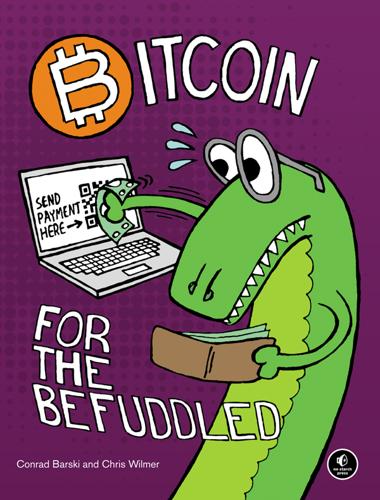
Bitcoin for the Befuddled
by
Conrad Barski
Published 13 Nov 2014
However, before you build more sophisticated bitcoinJ programs, read “Gotchas When Using Wallets in BitcoinJ” on page 239. Not only does a Bitcoin app need a wallet, it also needs a blockchain. The following lines initialize a new blockchain for us: File file = new File("my-blockchain");➊ SPVBlockStore store = new SPVBlockStore(params, file);➋ BlockChain chain = new BlockChain(params, wallet, store);➌ Because blockchains consume lots of space, we’ll write it to a file named my-blockchain ➊. Next, we create a block store, which is an object that manages the data for our copious blockchain data ➋. BitcoinJ offers several block store types, all with different feature and performance trade-offs.
…
In this case, Crowley and Satoshi will each add a block to the blockchain (each thinking that he is the winning miner for that round). The problem occurs when one part of the network copies Crowley’s block and the other copies Satoshi’s. As a result, now two blockchains disagree! Figure 2-13: Bitcoin miners Crowley and Satoshi find a block at the same time, creating two copies of the blockchain. The resolution to the forked blockchain occurs when Satoshi’s version of the blockchain adds another block before Crowley’s, and Satoshi receives the reward. Recall that your Bitcoin wallet program needs an up-to-date copy of the blockchain to function, but it doesn’t know how to resolve a forked blockchain.
…
Well, the biggest performance challenge any app that works with bitcoins has to deal with is that the official Bitcoin blockchain is larger than 10GB in size. Do most Bitcoin apps really need all 10GB of the blockchain? To answer this question, let’s consider why the blockchain exists. At a simplified level, a Bitcoin blockchain is responsible for two main jobs: 1. Figuring out how much money everyone on the network has 2. Figuring out whether new transactions broadcast across the network are valid For the first task, the blockchain allows us to examine all the historical blocks in the blockchain and compile comprehensive data about every Bitcoin address ever used and how much money each contains.
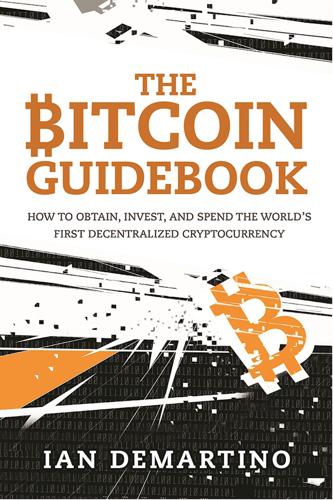
The Bitcoin Guidebook: How to Obtain, Invest, and Spend the World's First Decentralized Cryptocurrency
by
Ian Demartino
Published 2 Feb 2016
It offered 20MB-sized blocks as a primary feature. block: Transactions on the blockchain are grouped into blocks, confirmed by miners roughly every 10 minutes. They are currently limited to 1MB in size but that is likely to change in the near future. blockchain: The decentralized public ledger that makes Bitcoin work. Every transaction and account is kept track of here. Not to be confused with Blockchain.info the website or its parent company, Blockchain. Also used to refer to any upcoming technology that uses a public ledger to keep track of digital value; i.e., “They are developing their own blockchain technology.” block explorer: A website or piece of software that allows users to observe and follow Bitcoin transactions through the blockchain.
…
Today they give tiny fractions of bitcoins that, like full bitcoins previously, are worth fractions of a cent. 51% attack: Proof-of-work is used in Bitcoin to validate the blockchain. It takes computational power to validate and confirm transactions. Changing one transaction will change the verifiable data in all subsequent transactions. Therefore, if there are two competing blockchains with different transaction histories, the one that is longer will be considered the “true” blockchain because it has the most computational power behind it. Since malicious actors usually work alone, it is unlikely that any one group could put more computational power behind its modified blockchain compared to the real blockchain. However, if someone did control a higher hashrate than the combined hashrate of all of the miners working on the true blockchain, that group would be able to outwork the valid chain and get its blockchain confirmed as valid.
…
The uses I’ve described so far, while not all strictly involving sending money back and forth, are still financial in nature. But the blockchain can do much more than that. It can store documents in a secure cryptographic manner. A user could encrypt a digital copy of their passport, store the hash of that file on the blockchain and then use that copy as a backup. Two users could record their marriage on the blockchain; in fact, this has already happened.9 Nearly every official document or contract that needs a notary could be stored on the blockchain and while it might not be recognized legally as such, it is far harder to forge a blockchain transaction than a notarized document. The utility could potentially go beyond the financial.
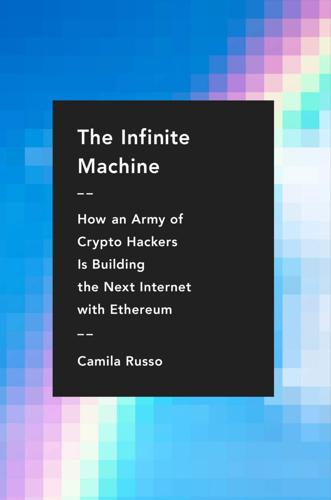
The Infinite Machine: How an Army of Crypto-Hackers Is Building the Next Internet With Ethereum
by
Camila Russo
Published 13 Jul 2020
In the case of Bitcoin, “Bitcoin” is the name of both the blockchain and of the cryptocurrency itself (uppercase “B” is used for the network, lowercase “b” is used for the cryptocurrency), while ether is the coin that runs on the Ethereum blockchain. There will be some blockchains that don’t even have their own corresponding cryptocurrency, and there is no one, single blockchain. Each chain will have its own unique characteristics, which is why the term “on the blockchain” that’s used ad nauseam should immediately be met with the follow-up question, “Which one?” In keeping with the open source ethos, Bitcoin is an open protocol that anyone can join, modify, or even copy to create their own, separate version.
…
The difference with BitShares was that rather than having a single asset as collateral it would use multiple cryptocurrencies on the Ethereum blockchain to be more decentralized and stable. The system would be managed by a Decentralized Autonomous Organization, or DAO, called Maker. As mentioned earlier, Dan Larimer and his father, Stan, proposed the concept in September 2013, and Vitalik followed up with an article in Bitcoin Magazine just a couple of days later. In 2015 DAOs were all the rage in the blockchain world. They fit perfectly into a futuristic, cypherpunk vision where digital money and blockchain-based platforms would replace old, dusty banks and all human intervention would be minimized. Blockchain technology would take people out of the equation as much as possible and leave decision making to computer programs.
…
In the land of deserts, ancient religious sites, and cobblestone streets winding through the same noisy markets for the past three thousand years, Vitalik found a cluster of entrepreneurs and developers who were making the biggest strides in the blockchain world. Teams there were trying to push Bitcoin’s limits and test whether it could be used for more than digital currency. The idea was that traits of blockchain technology—such as having no central point of failure, being uncensorable, cutting out intermediaries, and being immutable—could also benefit other applications besides money. Financial instruments like stocks and bonds, and commodities like gold, were the obvious targets, but people were also talking about putting other representations of value like property deeds and medical records on the blockchain, too. Those efforts—admirable considering Bitcoin hadn’t, and still hasn’t, been adopted widely as currency—were known as Bitcoin 2.0.
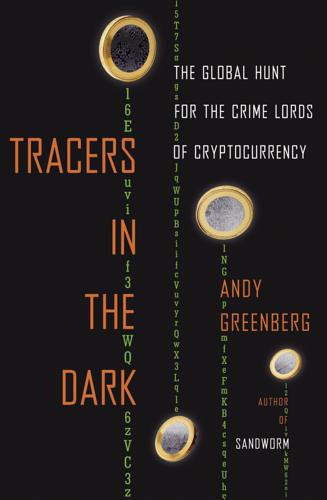
Tracers in the Dark: The Global Hunt for the Crime Lords of Cryptocurrency
by
Andy Greenberg
Published 15 Nov 2022
If you don’t get privacy, what do you get?” The temptation was more than Meiklejohn could resist. The blockchain, like a massive, undeciphered corpus of an ancient language, hid a wealth of secrets in plain view. CHAPTER 8 Men with No Names When Meiklejohn began digging into the blockchain in late 2012, she started with a very simple question: How many people were using Bitcoin? That number was much harder to pin down than it might seem. After downloading the entire blockchain onto a UCSD server and organizing it into a database that she could query, like a gargantuan, searchable spreadsheet, she could see that there were more than twelve million distinct Bitcoin addresses, among which there had been nearly sixteen million transactions.
…
At one point early in his tenure as an IRS-CI agent, watching the Silk Road’s unchecked growth, he had even gone so far as to suggest to a fellow agent that they try tracing bitcoins on the blockchain. His colleague had laughed at him. “Oh, so we’re going to bring in Satoshi Nakamoto to introduce the blockchain as evidence in court?” the agent had joked. But Gambaryan had read the news coverage on the heels of UCSD’s “Men with No Names” research in late 2013, and it had only reinforced what he’d suspected all along: Despite the prevailing belief of both cops and criminals, cryptocurrency was traceable. So, why not use the blockchain as evidence? If a cryptographically unforgeable, giant ledger displaying every Bitcoin transaction was good enough to prove who owned millions of dollars within Bitcoin’s economy, Gambaryan thought, it ought to be good enough to use as evidence in a criminal indictment, too.
…
” * * * · · · It was late afternoon on a fall day in 2014 when Gambaryan got to work tracing Force’s money on the blockchain. Despite having read Meiklejohn’s paper, he possessed none of the data that she’d assembled over months of clustering Bitcoin addresses and identifying them with test transactions. So he simply started copying Bitcoin addresses from Carl Force’s account records—the ones he’d gotten from exchanges such as CampBX and Bitstamp—and pasting them into the search field on Blockchain.info, which displayed the entire blockchain on the web. At first, the collections of garbled character strings seemed meaningless to Gambaryan.
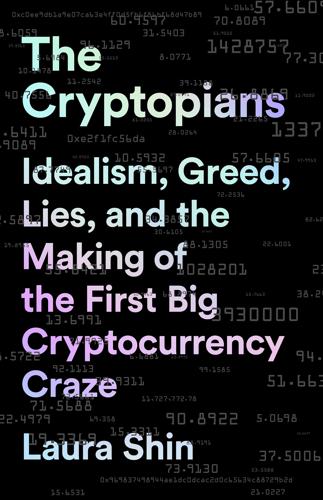
The Cryptopians: Idealism, Greed, Lies, and the Making of the First Big Cryptocurrency Craze
by
Laura Shin
Published 22 Feb 2022
DAO attacker attempts to exchange 0.67744325 BTC on ShapeShift; the money is returned to the attacker’s return address: ShapeShift API, June 16, 2016, originally at https://shapeshift.io/txstat/1GYmoQPGh9S9dj3ADnhwK32TRh8U7pjBVD, now at https://laurashin.com/cryptopians/06/12-1GYmo., on the Bitcoin blockchain, see “Summary,” Blockchain.com, June 16, 2016, https://www.blockchain.com/btc/tx/afd6fc9cb2910445b126cbfd8a8dd58b4d5359356688f416635c12b15fcab7bf. 13. DAO attacker exchanges 1.23628167 BTC for 46.87979279 ETH via ShapeShift, June 16, 2016: on Bitcoin blockchain, see “Summary,” Blockchain.com, https://www.blockchain.com/btc/tx/8883a039f4b5df3e90a0aa15fc485dcbc1efbbef3bee32bfa0e985ae63c1e11a, originally via ShapeShift API, https://shapeshift.io/txstat/17yqyLree8URtSnZbZu6S5EMKjTMnzo8b7, now at https://laurashin.com/cryptopians/06/13-17yqy., on the Ethereum blockchain, see “Transaction Details,” Etherscan, June 16, 2016, https://etherscan.io/tx/0x512df37c9702e2cbfd761d4f336e6f01911a84a1b3b91f731e9675ef79b81d13. 14.
…
DAO attacker converted 0.667 BTC into 25 ETH on ShapeShift, June 16, 2016: on Bitcoin blockchain, see Blockchain.com, https://www.blockchain.com/btc/tx/009ab0293e8f24c76f1d7fce018dfca1059c1bef6819670d8f11c6c277531bdc, originally via ShapeShift API, https://shapeshift.io/txstat/14mMb4xdSW8hZtzboHFHVzAUhnwLf11sSK, now at https://laurashin.com/cryptopians/06/14a-14mMb., on Ethereum blockchain, see “Transaction Details,” Etherscan, June 16, 2016, https://etherscan.io/tx/0xc6a773490f9e69f4bce6dc1c887c52fb5d51917be256bbb873ef2c18014cf1a8; DAO attacker exchanges .4 BTC for 14.9258 ETH on ShapeShift, June 16, 2016: on Bitcoin blockchain, see “Summary,” Blockchain.com, https://www.blockchain.com/btc/tx/3b26f606cc9e381b48a1aa87585af3611cee6fcfab325c61a216a783a4866f46, originally via ShapeShift API, https://shapeshift.io/txstat/1FB1MuuCnG9ERrKqZAcsKUPgy19WReRAub, now at https://laurashin.com/cryptopians/06/14b-1FB1M., on Ethereum blockchain, see “Transaction Details,” Etherscan, June 16, 2016, https://etherscan.io/tx/0xd120cfdb68baa17e519cf1e3d18efb35432a77afe8a080961aff42d07199515b; DAO attacker converts .31304245 BTC into 1,283.55 DAO tokens via ShapeShift: on the Bitcoin blockchain, see “Summary,” Blockchain.com, https://www.blockchain.com/btc/tx/e90687a4e7f3593e5dee704b801b46164509e6e887ecc0ac5a3fc8c44723a285, originally via ShapeShift API, https://shapeshift.io/txstat/1ERErQFpZUjfqmc4HR9SLovx9QxhGiZa1Q, now at https://laurashin.com/cryptopians/06/14c-1EREr., on the Ethereum blockchain, see “Transaction Details,” Etherscan, June 16, 2016, https://etherscan.io/tx/0x46de32fec895a13373c523a8e20263faf2ae5410468b3d9af41127d08dd42688. 15.
…
Vitalik Buterin, “The Evolution of Ethereum,” September 28, 2015, Ethereum Foundation Blog, https://blog.ethereum.org/2015/09/28/the-evolution-of-ethereum. 11. Shanghai’s Wanxiang Blockchain Labs. 12. Jemima Kelly, “Nine of World’s Biggest Banks Join to Form Blockchain Partnership,” Reuters, September 15, 2015, https://www.reuters.com/article/us-banks-blockchain-idUSKCN0RF24M20150915; Jemima Kelley, “Thirteen More Top Banks Join R3 Blockchain Consortium,” Reuters, September 29, 2015, https://www.reuters.com/article/banks-blockchain-idUSL5N11Z2QE20150929. 13. “DevCon 1,” YouTube, video playlist, last updated March 1, 2016, https://www.youtube.com/playlist?
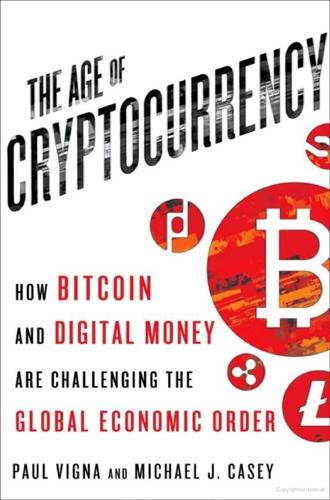
The Age of Cryptocurrency: How Bitcoin and Digital Money Are Challenging the Global Economic Order
by
Paul Vigna
and
Michael J. Casey
Published 27 Jan 2015
* * * For ease of explanation, we’re going to focus on how bitcoin’s blockchain, currency-creation, and transaction-confirmation systems work, though many blockchain variations exist across the cryptocurrency universe. James’s cup of coffee represented one transaction. The system must process many more. The blockchain is managed, as we’ve mentioned, by bitcoin’s core software protocol. Every user of the bitcoin network from Nakamoto to the present has in one form or another downloaded a set of programming instructions that tell their computer or smartphone how to interact, talk to, and work with others on that network. The blockchain doesn’t live on a single computer or server but, as with our Yapese ledger-keepers, is shared around that community of computer owners, or nodes.
…
Those nodes include machines that run bitcoin wallets, a form of software that gives consumers and businesses special passwords with which to propose changes to bitcoin balances (i.e., initiate payments) in those limited parts of the blockchain that are assigned to them. The nodes also include the individual PCs—or, more likely these days, specialized mining rigs—that are used by bitcoin miners to build the blockchain and earn bitcoin rewards. Working together according to the preordained system, these nodes collectively ensure the ledger’s contents are legitimate and protected from abuse by rogue elements. The blockchain is everything to bitcoin. In fact, this ever-shifting accounting of debits and credits constitutes the currency itself.
…
Once the puzzle is solved, the bitcoin software client that’s running on the winning node’s machine “seals off” a new block of transactions with the block hash and assigns to it a block number that sequentially follows the last block number on the ever-extending blockchain. (At the exact moment that these words were being written, the blockchain was working on block number 318,685—that’s how many blocks had been completed since Nakamoto mined the Genesis Block, and if you converted that into time by multiplying that number by ten minutes, it would bring you more or less out at January 2009.) Because the previous block hash has been included in the new hash, the latest block is now mathematically linked to the blockchain, as if to form the latest in an ever growing line of trailer hitches.

Life After Google: The Fall of Big Data and the Rise of the Blockchain Economy
by
George Gilder
Published 16 Jul 2018
Scrutinizing data on all the available blockchains, including Ethereum, they discovered that by far the most robust, secure, and reliable blockchain was Satoshi’s bitcoin blockchain. Blockstack now faced a critical test, having to move some eighty thousand subscribers from one blockchain to another. Fortunately, the team had already anticipated this kind of challenge with Jude Nelson’s virtual chains in the code.2 Nelson recalls, “Soon we intend to give each application the ability to form its own blockchain securely. I’d argue that this makes it easier for average people to reap the business successes of blockchain-powered companies, since (1) there are more of them now, and (2) they all have tokens whose value may appreciate.
…
Blockstack has been in operation on the Net for four years, with hundreds of thousands of users. It is a platform for security and identity for a new distributed Internet. It provides a domain name service rooted in the bitcoin blockchain, a $25 million venture fund, and a scalable model that reserves the blockchain for pointers to memory addresses rather than for data storage itself. It thus uses the blockchain for what a blockchain can offer—security, identity, and trust—while freeing the blockchain from what it cannot offer—huge transaction speeds and storage space. Its key figures are Muneeb Ali, Ryan Shea, Luke Nelson, and Michael J. Freedman of Princeton.
…
Again and again he implied that smart contracts could be created on the bitcoin blockchain that critics claimed could not accommodate them. He ended his Arnhem speech by throwing down a gauntlet to his rivals. “I’m not going away. We will scale radically. You’re either with us or against us. We will compete by growing the value through easy connectivity and easy use.” Asked directly what he thought of the rival blockchain from Ethereum, he declared, “I was a bitcoin maximalist in 2013 and I am a bitcoin maximalist today.” A bitcoin maximalist bars all other blockchains. Enter Wright’s nemesis, Vitalik Buterin, the founder of the Ethereum blockchain. It is a platform explicitly designed for smart contracts, token issues, investment vehicles, and autonomous corporations.
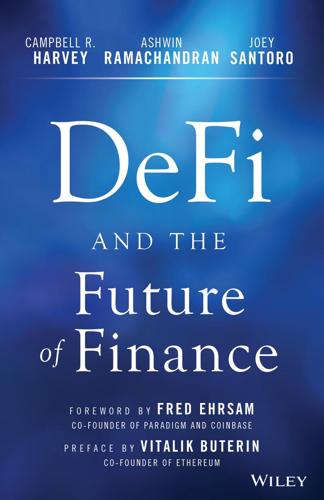
DeFi and the Future of Finance
by
Campbell R. Harvey
,
Ashwin Ramachandran
,
Joey Santoro
,
Vitalik Buterin
and
Fred Ehrsam
Published 23 Aug 2021
This regulation has led to geoblocking of U.S. customers from certain decentralized exchange functionalities. Layer 2. A scaling solution built on top of a blockchain that uses cryptography and economic guarantees to maintain desired levels of security. For example, small transactions can occur using a multisignature payment channel. A blockchain is used only when funds are added to the channel or withdrawn. Liquidity provider (LP). A user that earns a return by depositing assets into a pool or a smart contract. Mainnet. The fully operational, production blockchain behind a token, such as the Bitcoin blockchain or the Ethereum blockchain. Often used to contrast with testnet. Miner. Cycles through various values of a piece of data called a nonce to try to find a rare cryptographic hash value in a proof-of-work blockchain.
…
BITCOIN AND CRYPTOCURRENCY The dozens of digital currency initiatives beginning in the early 1980s all failed.5 The landscape shifted, however, with the publication of the famous Satoshi Nakamoto Bitcoin white paper6 in 2008, which presents a peer-to-peer system that is decentralized and uses the concept of blockchain. Invented in 1991 by Haber and Stornetta,7 blockchain was initially primarily envisioned to be a time-stamping system to keep track of different versions of a document. The key innovation of Bitcoin was to combine the idea of blockchain (time stamping) with a consensus mechanism called proof of work (introduced by Back8 in 2002). The technology produced an immutable ledger that eliminated a key problem with any digital asset: you can make perfect copies and spend them multiple times. Blockchains allow for the important features desirable in a store of value, which were never before simultaneously present in a single asset.
…
III DeFi INFRASTRUCTURE In this chapter, we discuss the innovations that led to DeFi and lay out the terminology. BLOCKCHAIN The key to all DeFi is the decentralizing backbone: a blockchain. Fundamentally, blockchains are software protocols that allow multiple parties to operate under shared assumptions and data without trusting each other. These data can be anything, such as location and destination information of items in a supply chain or account balances of a token. Updates are packaged into “blocks” and are “chained” together cryptographically to allow an audit of the prior history – hence the name. Blockchains are possible because of consensus protocols – sets of rules that determine what kinds of blocks can become part of the chain and thus the “truth.”
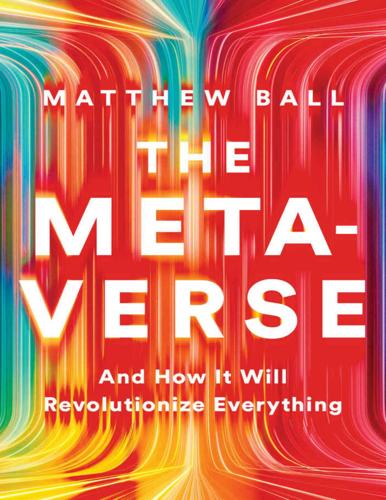
The Metaverse: And How It Will Revolutionize Everything
by
Matthew Ball
Published 18 Jul 2022
At the same time, rather than rely on tips or posting promotional tweets on behalf of advertisers to generate income, super-users and influencers could be awarded tokens for hosting events. By the end of 2021, Kickstarter, Reddit, and Discord had all publicly described plans to shift to blockchain-based token models. Blockchain Obstacles There are still numerous obstacles facing a potential blockchain revolution. Most notably, blockchain remains too expensive and slow. For this reason the majority of “blockchain games” and “blockchain experiences” are still running mostly on non-blockchain databases. As a result, they are not truly decentralized. Given the computational requirements of large-scale real-time rendered 3D virtual worlds, as well as their need for ultra-low latency, some experts debate whether we can ever fully decentralize such an experience—let alone “the Metaverse.”
…
It helps to put aside the idea of NFTs, cryptocurrencies, fears of record theft, and the like. What matters is that blockchains are programmable payment rails. That is why many position them as the first digitally native payment rails, while contending that PayPal, Venmo, WeChat, and others are little more than facsimiles of legacy ones. Blockchains, Bitcoin, and Ethereum The first mainstream blockchain, Bitcoin, was released in 2009. The sole focus of the Bitcoin blockchain is to operate its own cryptocurrency, bitcoin (the former is usually capitalized while the latter is not, in order to distinguish between the two). To this end, the Bitcoin blockchain is programmed to compensate processors handling bitcoin transactions by issuing them bitcoin (this is called a “gas” fee and is typically paid by the user to submit a transaction).
…
One of the leading gaming investors in the world told me that nearly every talented game developer she knew, with the exception of those already running world famous studios, was focused on building games on the blockchain. In total, blockchain-based games and gaming platforms received more than $4 billion9 in venture investment (total VC funding for blockchain companies and projects was roughly $30 billion; some speculate another $100 billion–$200 billion more has already been raised or earmarked by venture funds).10 The influx of talent, investment, and experimentation can quickly produce a virtuous cycle whereby more users set up a crypto wallet, play blockchain games, and buy NFTs, increasing the value and utility of all other blockchain products, which also attracts more developers, and in turn more users, and so on.
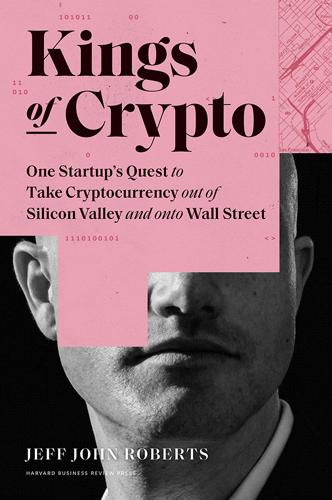
Kings of Crypto: One Startup's Quest to Take Cryptocurrency Out of Silicon Valley and Onto Wall Street
by
Jeff John Roberts
Published 15 Dec 2020
Instead, every ten minutes or so, one of the computers on the network rounds up a new series of the most recent transactions and stuffs them into a package of computer code called a block. Each new block refers to the one that came before it, resulting in a long series of transactions wrapped into parcels and visible to everyone. It’s called the blockchain. Today, there are many blockchains, and the term can refer to any piece of software that relies on multiple computers to create a ledger of transactions. But the bitcoin blockchain is the first and the most famous one. The first block appeared on the bitcoin blockchain in 2009 when bitcoin’s shadowy creator, Satoshi Nakamoto, put it there. Since then, computers around the world have added more than half a million additional blocks.
…
At Dimon’s own firm, in a high-profile defection, senior executive Blythe Masters left to run a blockchain startup called Digital Asset. Masters was already renowned on Wall Street for inventing credit default swaps, the contracts Warren Buffett correctly labeled as “time bombs,” which could (and did) set off a financial crisis. Now, she would become the face of a faction in the crypto world known as “blockchain, not bitcoin.” It was inevitable that as bitcoin grew, people without the same agenda as the libertarian types in the Valley would find useful apps for blockchain’s ledger technology, and that’s what was happening. “Blockchain, not bitcoin” meant you were part of the group that wanted to use the technology bitcoin had pioneered without the radical decentralized system that let anyone in the world be part of it—a members-only system that produced a tamper-proof common ledger similar to the bitcoin one.
…
Gox Bitcoin Foundation, 54, 55, 56, 58–59 Bitcoin Magazine, 87 bitcoin maximalists, 203 bitcoin meetups, 30 bitcoin Sign Guy, 139 Bitconnect, 141–142 Bitfinex, 108, 114 BitInstant, 54–55, 97, 115–116 Bit License, 127 Bitmain, 171–172 Blankfein, Lloyd, 212 Blockchain, 179 “blockchain not bitcoin” faction, 104–105 Blockchain Revolution (Tapscott and Tapscott), 214, 217 blockchains, 19–21, 24 academic research on, 218–219 block size issues, 152–153 enterprise, 73 future of, 214–220 processing time backlogs in, 83 smart contracts and, 89–95 social engineering for, 21 2.0, 88 block rewards, 21 blocks, 19–20 infrastructure problems with, 75–84 size issues with, 152–153 Bloomberg, 179 Bloomberg Businessweek, 49, 112 Brave, 136 Bridges, Shaun, 59–60 Brooks, Brian, 224 Buffett, Warren, 171 Burges, Kolin, 56 Burnham, Brad, 36 Burning Man, 55 Business Insider, 195–196 Buterin, Vitalik, 48, 87–88, 90, 92, 182 cult of personality around, 202 profile of, 167–168 social media scams using, 143 Byrne, Preston, 206 Cantor Fitzgerald, 101–103 capital gains rules, 122–126 cap tables, 215 Carlson-Wee, Olaf, 24–30 on bitcoin valuation, 62 on Coinbase’s complacency, 177–178 on the crypto bubble, 148 in the crypto winter, 172 on dApps, 188 departure from Coinbase, 95–96, 157 hedge fund of, 223 on hiring, 38–39 legacy of, 220 on Mt.

Confessions of a Crypto Millionaire: My Unlikely Escape From Corporate America
by
Dan Conway
Published 8 Sep 2019
Ethereum’s killer app is the smart contract, an unalterable, ironclad agreement between two or more parties that is validated by the blockchain. If something happens at point X, the blockchain enforces the contracted action at point Y. The people whose computers are “mining blocks” (anyone who wants to) are rewarded with a small amount of ETH for validating these transactions on the blockchain. This is the engine that keeps Ethereum running without any central control or funding. As a fully functional third-party ledger, Ethereum has the potential, as it matures, to run corporate alternatives as decentralized entities. These decentralized corporations running on a blockchain wouldn’t need, or even allow, centralized control.
…
I found it ironic to be working for a centralized company trying to eliminate centralized regulations by pulling the right levers in a centralized political power structure while I was obsessed with a technology that functioned in the exact opposite manner. The only way to change the rules or manipulate the Ethereum blockchain was through transparent consensus. No oily lobbying or campaign contributions could foul things up for everyone else The concept of blockchain had made its way into the popular business lexicon. Few knew what it was, and the few who did made a clear distinction between private business blockchains (good) that were centralized in key ways, and the public blockchains (bad) like Bitcoin and Ethereum which weren’t controlled by any one person or group. The latter were considered a little dangerous, according to those wise enough to avoid edgy bullshit.
…
Now Ethereum was pulling in the most talented blockchain developers. They were working on hundreds of dApps. They were all decentralized. Once these dApps were released into the blockchain, they weren’t controlled by a headquarters. They were owned by the users of the dApp. All it took was one to hit paydirt to achieve some semblance of widespread adoption. Use of the Ethereum blockchain would skyrocket, as would the value of the ETH token that powered the network. I’d been living the problem of work, the problem of gatekeepers, my whole life. So I had no problem imagining the benefits of decentralization through blockchain. It became clear to me that the potential value of blockchain could be bigger than virtually anything else ever invented if it was indeed a new platform for the economy, for the world.
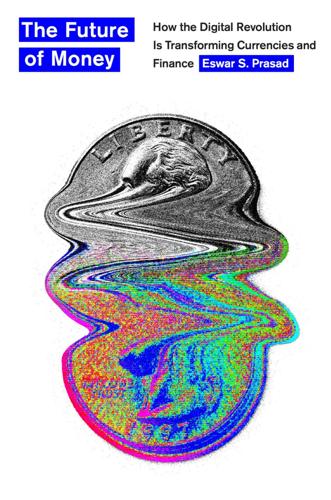
The Future of Money: How the Digital Revolution Is Transforming Currencies and Finance
by
Eswar S. Prasad
Published 27 Sep 2021
If Jack wanted to persist in his double-spending behavior, he would have to expend computing power to continually “fork” the blockchain (create a new branch) and, more importantly, get other nodes to accept each forked version as the valid blockchain. The further back in the blockchain a given transaction was validated, the more computing power it would take to create a new forked blockchain that would have a different transaction history from the point where the fork was inserted. This is why it has become customary to accept large-value Bitcoin transactions as final only if they are buried at least six blocks deep in the blockchain, which would take about an hour for confirmation.
…
Later in this chapter, we will delve into hacks of Bitcoin exchanges that have caused people to lose bitcoins from their digital wallets. But the Bitcoin blockchain itself has not been successfully attacked—yet. * * * To sum up this portion of the discussion, the blockchain is a publicly shared ledger of transactions maintained on a decentralized network of computer nodes. Blocks of validated transactions are added to the blockchain through computation performed by individual miners. The consensus mechanism for validating transactions is, thus, decentralized, and the blockchain is updated on the network in real time. The integrity of the blockchain is buttressed by its transparency and the decentralized structure of the network, which makes it largely tamperproof.
…
Achieving Consensus through Proof of Work The original Bitcoin whitepaper (Nakamoto 2008) presents calculations showing that a transaction that is in a block six blocks deep in the blockchain (with six confirmations succeeding it) is secure in the following sense: For an attacker who has control of 10 percent of the network’s total hashrate, the probability of being able to create a forked version of the blockchain that is accepted as the valid blockchain by the network, thereby allowing the attacker to double-spend a coin in that block, is less than 0.1 percent, implying a negligible risk. See also Christina Comben, “What Are Blockchain Confirmations and Why Do They Matter?” blog post, October 10, 2018, https://coincentral.com/blockchain-confirmations/. The text at the end of this section draws partially on Michael Casey, “Dollar-Backed Digital Currency Aims to Fix Bitcoin’s Volatility Dilemma,” Wall Street Journal (blog), July 8, 2014, https://blogs.wsj.com/moneybeat/2014/07/08/dollar-backed-digital-currency-aims-to-fix-bitcoins-volatility-dilemma/.
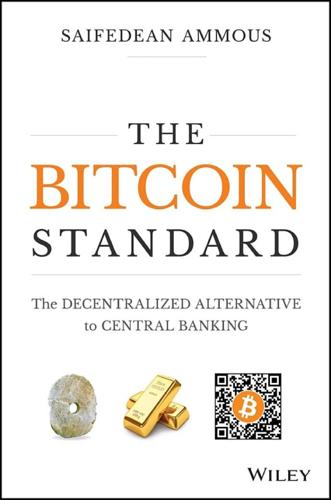
The Bitcoin Standard: The Decentralized Alternative to Central Banking
by
Saifedean Ammous
Published 23 Mar 2018
A centralized system reliant on a single point of failure is less secure with a larger number of network members able to write to the blockchain as each added network member is a potential security threat. Blockchain Technology as a Mechanism for Producing Electronic Cash The only commercially successful application of blockchain technology so far is electronic cash, and in particular, Bitcoin. The most common potential applications touted for blockchain technology—payments, contracts, and asset registry—are only workable to the extent that they run using the decentralized currency of the blockchain. All blockchains without currencies have not moved from the prototype stage to commercial implementation because they cannot compete with current best practice in their markets.
…
It is also possible that bitcoin will stagnate or even fail and disappear. What cannot happen is Bitcoin's blockchain benefiting the intermediation it was specifically designed to replace. For any trusted third party carrying out payments, trading, or recordkeeping, the blockchain is an extremely costly and inefficient technology to utilize. A non‐Bitcoin blockchain combines the worst of both worlds: the cumbersome structure of the blockchain with the cost and security risk of trusted third parties. It is no wonder that eight years after its invention, blockchain technology has not yet managed to break through in a successful, ready‐for‐market commercial application other than the one for which it was specifically designed: Bitcoin.
…
As will become apparent from this exposition, the notion that a “blockchain technology” exists and can be deployed to solve any specific problems is highly dubious. It is far more accurate to understand the blockchain structure as an integral part of the operation of Bitcoin and its testnets and copycats. Nevertheless, the term blockchain technology is used for simplicity in elucidation. The next section of this chapter examines the most commonly touted use‐cases for blockchain technology, while the section after it identifies the main impediments to its application to these problems. Potential Applications of Blockchain Technology An overview of startups and research projects related to blockchain technology concludes that the potential applications of blockchains can be divided into three main fields: Digital Payments Current commercial mechanisms for payment clearance rely on centralized ledgers to record all transactions and maintain account balances.
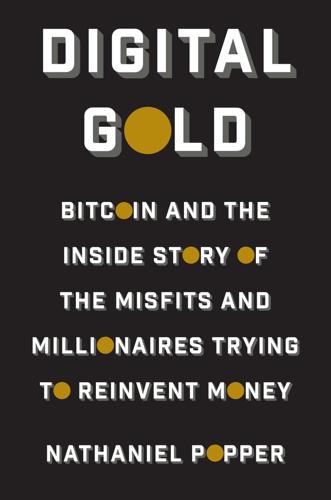
Digital Gold: Bitcoin and the Inside Story of the Misfits and Millionaires Trying to Reinvent Money
by
Nathaniel Popper
Published 18 May 2015
Rather than holding its customers’ Bitcoins, Blockchain.info kept only a small file for each customer with the private keys of that customer, encrypted in a way that made it impossible for the company to see the keys themselves. Because Blockchain.info held an encrypted file with the keys, they were not on the computer of the user, vulnerable to hackers. But when a customer logged into a Blockchain. info wallet, the log-in process decrypted the file so that the keys were temporarily on the customer’s computer and could be used to access coins that the customer had on the blockchain. The customer’s data—how much money he or she had and the transaction history—was viewable through Blockchain.info’s online template. But the company itself never saw the data. Because Blockchain. info did not hold money or a transaction history for its customers, it couldn’t be subpoenaed to give up customer records.
…
This JPMorgan group began secretly working with the other major banks in the country, all of which are part of an organization known as The Clearing House, on a bold experimental effort to create a new blockchain that would be jointly run by the computers of the largest banks and serve as the backbone for a new, instant payment system that might replace Visa, MasterCard, and wire transfers. Such a blockchain would not need to rely on the anonymous miners powering the Bitcoin blockchain. But it could ensure there would no longer be a single point of failure in the payment network. If Visa’s systems came under attack, all the stores using Visa were screwed. But if one bank maintaining a blockchain came under attack, all the other banks could keep the blockchain going. For many technology experts at banks, the most valuable potential use of the blockchain was not small payments but very large ones, which are responsible for the vast majority of the money moving between banks each day.
…
For many banks, the biggest stumbling block was the inherent unreliability of the Bitcoin blockchain, which is, of course, powered by thousands of unvetted computers around the world, all of which could stop supporting the blockchain at any moment. This increased the desire to find a way to create blockchains independent of Bitcoin. The Federal Reserve had its own internal teams looking at how to harness the blockchain technology and potentially even Bitcoin itself. Many in the existing Bitcoin community scoffed at the idea that the blockchain concept could be separated from the currency. As they viewed it, the currency, and the mining of the currency, was what gave users the incentive to join and power the blockchain.
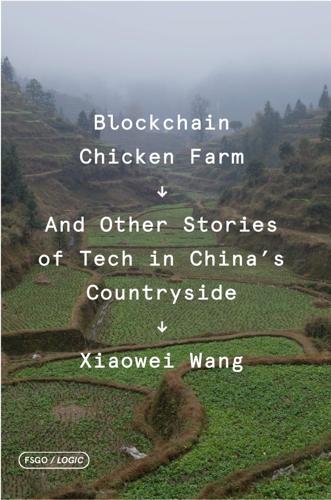
Blockchain Chicken Farm: And Other Stories of Tech in China's Countryside
by
Xiaowei Wang
Published 12 Oct 2020
Underneath the large red sign is a woman at a desolate fruit stand rearranging the oranges in her crate over and over. Hustle has come to Sanqiao. 6. Blockchain chicken is not the actual name of the chicken I am here to see. The official name is Bubuji (步步鸡), or GoGoChicken, as some English PR materials call it. The COO of Shanghai Lianmo Technology, the company behind blockchain chicken, says that he explicitly keeps “blockchain” out of the name. To him, overhyped blockchain projects have turned the term “blockchain” into marketing gloss. These blockchain chickens sell for up to RMB 300 (US$40) on JD.com. Typical buyers are upper-class urbanites—people willing to pay a premium on food.
…
Despite Ostrom’s work, the belief in innate human selfishness in a world of scarcity had become ingrained outside of ecology—in fields like information science and economics.6 This belief in selfishness and scarcity is one of the core ideologies that gave rise to blockchain. Although blockchain has become synonymous with Bitcoin, they are not quite the same. Bitcoin is one use of blockchain, but it remains separate from blockchain technology. Some have used a biological analogy to illustrate the difference: if blockchain is DNA, Bitcoin is a distinct species. Blockchain is a special kind of distributed record-keeping system that uses cryptography to prevent records from being falsified, eliminating the need to trust a centralized authority to verify records.
…
In the car, driving through the small mountain paths back to the bus stop, I ask Ren, “So, what do you think of qukuailian [blockchain, 区块链]?” Although we’ve seen the GoGoChicken farm, I haven’t explicitly brought up blockchain at all during my visit. “Blockchain? What’s blockchain?” asks Ren. 7. Onstage at the Internet Archive’s Decentralized Web Summit in San Francisco, the founder of the Lightning Network, a protocol layer that sits on top of Bitcoin’s blockchain, is speaking into the microphone. The Decentralized Web Summit is host to an eclectic assortment of people, a caricature of the Bay Area’s tech scene.

Radical Technologies: The Design of Everyday Life
by
Adam Greenfield
Published 29 May 2017
, Kybernetes, Volume 31, Issue 2, 2002. 11.Kickstarter exacts a 5 percent commission on successfully funded projects, kickstarter.com/help/faq/kickstarter+basics. 12.Graham Rapier, “Yellen Reportedly Urges Central Banks to Study Blockchain, Bitcoin,” American Banker, June 6, 2016; see also Nathaniel Popper, “Central Banks Consider Bitcoin’s Technology, if Not Bitcoin,” New York Times, October 11, 2016. 13.Pete Rizzo, “Bank of Canada Demos Blockchain-Based Digital Dollar,” CoinDesk, June 16, 2016. 14.See, e.g., a proposal for London’s budget to be executed via blockchain. Arlyn Culwick, “MayorsChain: a blockchain-based public expenditure management system,” July 4, 2015, mayorschain.com/wp-content/uploads/2015/07/Whitepaper_Mayorschain-0.01-4July2015.pdf. 15.Simon Taylor, “Blockchain: Understanding the potential,” Barclays Bank, 2015, barclayscorporate.com/content/dam/corppublic/corporate/Documents/insight/blockchain_understanding_the_potential.pdf. 16.Jarrett Streebin, “The Cost of Bad Addresses,” Easypost blog, July 15, 2015; Rainu Kaushal et al., “Effects of Computerized Physician Order Entry and Clinical Decision Support Systems on Medication Safety: A Systematic Review,” Archives of Internal Medicine.
…
Because each successive block’s hash value is generated with the signature of the one immediately preceding it in time, it folds into itself the details of every block of Bitcoin transactions ever executed, tailing all the way back to the very first, the so-called Genesis Block. And again, because every participant in the network holds their own local copy of the blockchain, at no point is there the slightest need for transactions to be checked against any central registry or clearinghouse. The entire network works to maintain and protect the blockchain: its shared, public, distributed ledger. Once a block has been confirmed by the network and added to the blockchain, all of the transactions bundled into it are considered to have been settled; from this point forward, they are a part of the permanent record. For very low-value transactions, this is where the story ends; a single-pass confirmation is sufficient to ensure that they probably won’t be overturned.
…
But when the string identifying your Bitcoin wallet resides alongside your own encoded fingerprints, on a phone that bears a unique IMEI number, you are inherently at risk of being connected to whatever pattern of transactions you’ve left behind in the blockchain.19 And even without access to the physical device, or anything it may contain, parties to transactions may find that their identities can be pinpointed with surprising ease. As early as 2011, for example, security researchers were able to cross-reference forum posts, Twitter handles and the blockchain’s own record of public transaction data to determine the identity of “anonymous” donors to WikiLeaks.20 The sources of potentially identifying information are legion, and not all that easy for a user to clamp down on. The blockchain itself, of course, retains everything, and shares it on demand with anyone who asks.
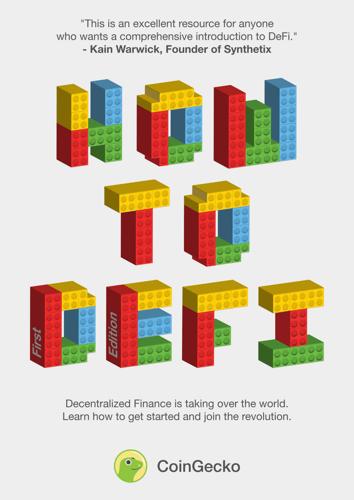
How to DeFi
by
Coingecko
,
Darren Lau
,
Sze Jin Teh
,
Kristian Kho
,
Erina Azmi
,
Tm Lee
and
Bobby Ong
Published 22 Mar 2020
In the context of Ethereum, Dapps are interfaces that interact with the blockchain through the use of smart contracts. From the front, Dapps look and behave like regular web and mobile applications, except that they interact with a blockchain and in different ways. Some of the ways include requiring ETH to use the Dapp, storage of user data onto blockchain such that it is immutable, and so on. ~ What are the benefits of Dapps? Dapps are built on top of decentralized blockchain networks such as Ethereum and usually have the following benefits: Immutability: Nobody can change any information once it’s on the blockchain. Tamper-proof: Smart contracts published onto the blockchain cannot be tampered with without alerting every other participant on the blockchain.
…
Tamper-proof: Smart contracts published onto the blockchain cannot be tampered with without alerting every other participant on the blockchain. Transparent: Smart contracts powering Dapps are openly auditable. Availability: As long as the Ethereum network remains active, Dapps built on it will remain active and usable. ~ What are the disadvantages of Dapps? While a blockchain offers many benefits, there are also many different downsides that come along with it: Immutability: Smart contracts are written by humans and can only be as good as the person who wrote it. Human errors are unavoidable and immutable smart contracts have the potential to compound errors into something larger.
…
Tokens It is a unit of a digital asset. Token often refers to coins that are issued on existing blockchain. Tokenize It refers to the process of converting things into digital tradable assets. - - V Value Staked It refers to how much value the insurer will put up against the target risk. If the value that the insurer staked is lower than the target risk, then it is not coverable. W Wallet A wallet is a user-friendly interface to the blockchain network that can be used as a storage, transaction and interaction bridge between the user and the blockchain. X - Y - Z - 1. “How Long Does It Take to Have a Payment Post Online to ....” 2 Jul. 2017, https://www.gobankingrates.com/banking/checking-account/how-long-payment-posted-online-account/ 2.
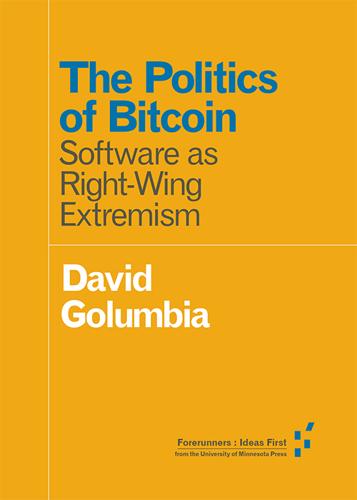
The Politics of Bitcoin: Software as Right-Wing Extremism
by
David Golumbia
Published 25 Sep 2016
In this sense, it becomes a tool for existing power to concentrate itself, rather than a challenge to the existing order: as some better economically informed commentators consistently point out, Bitcoin functions much more like a speculative investment than a currency (Worstall 2013; Yermack 2014), although what one is investing in, beyond Bitcoin itself, is not at all clear. 6. The Future of Bitcoin and the Blockchain BITCOIN IS NOT SO MUCH a single software program as it is software written using a model called the blockchain that is can be used to build other very similar programs (related cryptocurrencies like Litecoin, Dogecoin, and so on), but also less similar ones. The cryptographically enabled distributed ledger, and the blockchain used to implement it, advocates insist, have wide application outside of their current uses.[1] We hear (not infrequently) that the blockchain is as revolutionary today as were “personal computers in 1975, the internet in 1993” (Andreessen 2014).
…
The ledger is the first widespread implementation of a software model called a blockchain. The techniques involved in building the blockchain work to ensure that transactions are unique and authentic: “The block chain is a shared public ledger on which the entire Bitcoin network relies. All confirmed transactions are included in the block chain. This way, Bitcoin wallets can calculate their spendable balance and new transactions can be verified to be spending bitcoins that are actually owned by the spender. The integrity and the chronological order of the blockchain are enforced with cryptography” (“How Does Bitcoin Work?”).
…
Yet this, in the end, is the extreme rightist—anarcho-capitalist, winner-take-all, even neo-feudalist—political vision too many of those in the Bitcoin (along with other cryptocurrency) and blockchain communities, whatever they believe their political orientation to be, are working actively to bring about. This is not to say that Bitcoin and the blockchain can never be used for non-rightist purposes, and even less that everyone in the blockchain communities is on the right. Yet it is hard to see how this minority can resist the political values that are very literally coded into the software itself. Recent events have shown repeatedly that we discount the power of engineers and/or ideologues to realize their political visions through software design at our peril.
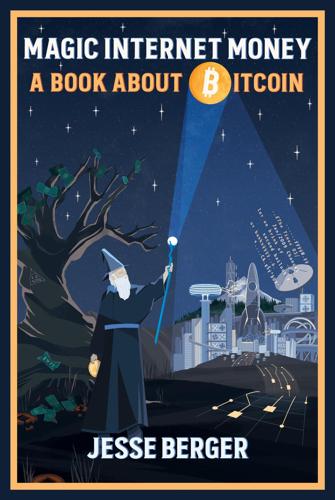
Magic Internet Money: A Book About Bitcoin
by
Jesse Berger
Published 14 Sep 2020
By combining the security of cryptography and the practicality of software, the framework for a new monetary system emerges, which eliminates the need to entrust money to a bank by making banking as trustworthy as money itself. 5.3.1 Blockchain 101: Shared Ledger “We need to come up with use cases for this technology that drive clear benefits for individuals and institutions – these are our customers. Too often we see Bitcoin and blockchain technologies as solutions in search of a problem.” Abigail Johnson, CEO of Fidelity Investments One of the innovations upon which Bitcoin was built has spawned an entirely new class of software-based technology. Originally referred to by Satoshi as the “timechain” in an early version of the software, this technology is known today as “blockchain.” A blockchain is a shared ledger – a shared database – that allows multiple users to inscribe transactions.
…
For reference, a node is a computer connected to the network that verifies blocks, and a “full node” goes a step further, saving the complete blockchain – the history of all valid transactions. As a committed ledger of record, blockchain can dutifully underpin a credible monetary system if it standardizes widely known and agreeable protocols (i.e. predetermined issuance schedule and fixed limit of 21 million coins) that are strictly enforced by consensus (i.e. proof-of-work to prevent partisan modifications). 5.3.2 Blockchain 101: Immutable Data “The more people you have to ask for permission, the more dangerous a project gets.” Alain de Botton, Philosopher & Author In recent years, blockchain has become a familiar term in business and technology circles, but its meaning and value proposition have been somewhat blurred.
…
Alain de Botton, Philosopher & Author In recent years, blockchain has become a familiar term in business and technology circles, but its meaning and value proposition have been somewhat blurred. Blockchains can effectively be divided into two types – public and private. Public blockchains, like the Bitcoin chain, have no restrictions on the use of their software and network. On the other hand, private blockchains are intended only for select participants, and permission is required from central authorities in order to gain access. They could be likened to cloud-based databases that, similar to Google Docs, selectively permit multiple users to access, contribute to, and edit a shared document. A private blockchain typically does not issue any monetary unit, and therefore has no monetary utility or value.
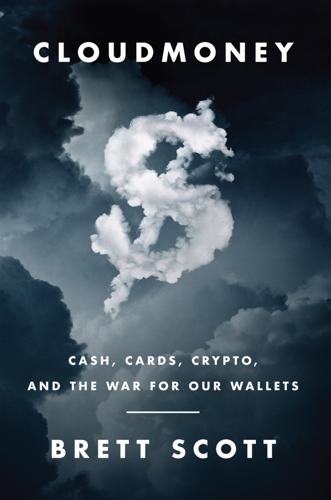
Cloudmoney: Cash, Cards, Crypto, and the War for Our Wallets
by
Brett Scott
Published 4 Jul 2022
Entering the massive Astana exhibition centre for the Expo, I found myself watching a Texan blockchain consultant pitching the technology to Kazakh oil execs in the audience. He was from ConsenSys, a New York-based company that builds ‘private blockchain’ systems for banks and other corporations. Here were ‘pirates’, selling a privatised version of their technology to their apparent enemies. Let me take you through the gradual corporate takeover of crypto that led up to this, and how blockchain technology may strengthen corporate oligopolies, rather than weakening them. Automating oligopolies Early blockchain communities did have counter-cultural currents within them, but, as detailed in the previous chapter, many crypto enthusiasts were also politically conservative and often pro-business.
…
In the early years, crypto entrepreneurs had presented themselves as enemies of big corporates, but – given that the profit motive is a political ideal in free-market thought – those same entrepreneurs later struggled to determine whether they were ‘selling out’ if those corporations offered them profitable collaboration opportunities. I got my first glimpse into this when I took part in a blockchain brainstorming session at a major UK bank. Several blockchain entrepreneurs were invited, and quickly sought to promote their initiatives to the bankers present. That may seem counterintuitive. What ‘collaboration opportunities’ could even exist between banks and crypto rebels, and why would crypto entrepreneurs be pitching them blockchain technology if its purpose was to bypass the banking system? Isn’t blockchain technology supposed to facilitate ‘decentralisation’? To understand what was going on – and what continues to go on – we need to remember that banks operate as oligopolies, and oligopolies are only semi-centralised, which means they are also semi-decentralised.
…
What has this got to do with blockchain technology? In Chapter 11 I showed that blockchain systems are designed to sync separate systems into unity, so – with some alterations – a privatised version of the same technology could be used to sync these separate IT systems of banks into unity. Picture the Premier League co-opting a grassroots co-ordination technology used by an amateur league. Big corporates can raid and repurpose the technological scaffolding of blockchain technology to coordinate their cartels, syndicates and oligopolies. This is what led to the explosion of interest in ‘private blockchains’, ‘enterprise blockchains’ and ‘consortium blockchains’.
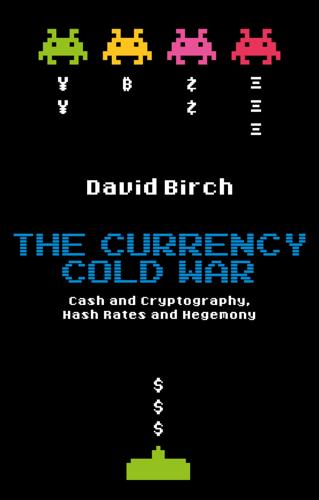
The Currency Cold War: Cash and Cryptography, Hash Rates and Hegemony
by
David G. W. Birch
Published 14 Apr 2020
An IMF paper on the subject illustrates just what a significant change this new technology might deliver, and why, decades after de Bono floated the idea, the financial system might adopt it (Adrian and Mancini-Griffoli 2019). This implementation would not be due to any idealogical or technological fancy, but because the system is cheaper and offers more functionality: If assets like stocks and bonds were moved to blockchains, blockchain-based forms of e-money would allow seamless payment of automated transactions (so-called delivery versus payment, assuming blockchains were designed to be interoperable), thereby potentially realizing substantial efficiency gains from avoiding manual back-office tasks. When they are properly regulated, as I am sure they will be in time, tokens will be a more efficient way to manage such a mass-market solution.
…
As observers pointed out, Griffith may have evolved a sub-optimal communications strategy in connection with his travel plans: When you plan on visiting a country to teach them how to evade your government’s imposed sanctions, best not to tweet about it.52 The Foundation for Defense of Democracies (FDD), a Washington think tank, summarizes the situation quite well in its position paper ‘Crypto Rogues’ by observing that ‘blockchain technology may be the innovation that enables US adversaries for the first time to operate entire economies outside the US-led financial system’. While technically this may be slightly inaccurate (there are ways to create anonymous transactions without a blockchain, but let us take this use of the term to mean ‘third-party anonymous digital currency’), it does accurately flag that the widespread availability of decentralized financial services threatens to bypass existing infrastructure. The FDD are surely right to say that ‘blockchain sanctions resistance is a long-term strategy for US adversaries’.53 In its report, the FDD highlights four scenarios that might lead to a diminution of the greenback’s role in international trade and finance.
…
Kevin Werbach has set out a useful taxonomy, saying that (Werbach 2018) there is cryptocurrency, i.e. the idea that networks can securely transfer value without central points of control; there is blockchain, i.e. the idea that networks can collectively reach consensus about information across trust boundaries; and there are cryptoassets, i.e. the idea that virtual currencies can be ‘financialized’ into tradable assets. Figure 4. From digital value to real-world markets. I will use a slightly different, more generalized approach, as shown in figure 4 (because a blockchain is only one kind of shared ledger that could be used to transfer digital values around), but Werbach summarizes the situation exceedingly well.

Easy Money: Cryptocurrency, Casino Capitalism, and the Golden Age of Fraud
by
Ben McKenzie
and
Jacob Silverman
Published 17 Jul 2023
Sam said he hadn’t done a deep dive into USDD, but he was “pretty skeptical of it.” Still, Sam’s own trading firm was a key player on the project. We asked about TRON, Justin Sun’s blockchain and the main one for which Tether seemed to be minting its tokens. Sun and Tether clearly shared close business ties—$30-plus billion worth of Tether were on the TRON blockchain—and Sam was in a position to know something about them. TRON wasn’t a great blockchain, Sam said, but “the scam is not the blockchain. The scam is the token [emphasis mine]. It’s basically worthless.” While TRON had been useful for its low transaction fees, he thought it would eventually die out.
…
Here’s the good news: You are now free to forget everything I just said. The operational details of blockchain technology are not important to understanding cryptocurrency’s rise in popular culture. Remember, blockchain is at least thirty years old and barely used by businesses outside of the crypto industry. Since at least 2016, hundreds of enterprises have tried to incorporate it into their business models, only to later scrap it because it didn’t work any better than what they were already using. Ask yourself a simple question: If blockchain is so revolutionary, after thirty years, why is its primary use case gambling?
…
In typical Austin fashion, we were ready for things to get weird. But we couldn’t anticipate quite how weird they would get. ° ° ° Our first ever in-person journalist outing—a SXSW blockchain schmoozefest—turned out to be one of the strangest. Having just picked up our press passes, Jacob, Ryan, and I strolled into a bar that had been converted into a demo space for Blockchain Creative Labs, the new crypto venture from Fox Entertainment. Immediately a few ironies presented themselves. Blockchain was supposed to overthrow the old techno-economic order and yet here was one of the country’s most powerful media conglomerates leading the supposed revolution.

The Sharing Economy: The End of Employment and the Rise of Crowd-Based Capitalism
by
Arun Sundararajan
Published 12 May 2016
There’s no risk associated with meeting someone unsavory. Not surprisingly, therefore, much of the initial focus of blockchain marketplace development has been on creating new systems for trading assets that are non-physical: digital and financial assets. In a 2015 conversation I had with Adam Ludwin, the CEO of the blockchain startup Chain I mentioned earlier in the chapter, he described the blockchain as a “new database technology, purpose-built for trading assets,” and sees immense potential in new blockchain based marketplaces for loyalty points, mobile minutes, gift cards, and of course, a range of financial assets.
…
CDixon Blog, October 4, 2014. http://cdixon.org/2014/10/04/some-ideas-for-native-bitcoin-apps. 17. Jemima Kelley, “Nine of the World’s Biggest Bank Join to Form Blockchain Partnership,” Reuters, September 15, 2015, http://www.reuters.com/article/2015/09/15/banks-blockchain-idUSL1N11L1K720150915#k5rPvtF0AteX3fFK.97; Jemima Kelly, “Three Banks Join #3 Blockchain Consortium Taking Total to 25,” Reuters, October 28, 2015, http://www.reuters.com/article/2015/10/28/us-global-banks-blockchain-idUSKCN0SM1U120151028#2rAUwQDFjkKbPeS1.97. 18. Bitcoin has this feature, although, as of 2015, this was just a couple of percent of the total miner revenue. 19.
…
W., 184 Artists Against Piracy, 58 Aspen Institute, 157, 179, 187 Asset-light generation, 2 Automation, 164–167 BackFeed, 199 Bandwagon, 44 Bapna, Ravi, 13–14 Barnes, Peter, 189 Barrett, Sara, 106 Barter economy, 36–37 Bauwens, Michel, 32–33, 99–100, 210–211n32 BazaarBay, 97 Beck, Jessica, 11 Beck, Ulrich, 189 Benjamin, Robert, 69, 72–74 Benkler, Yochai, 30–32, 33, 35, 36, 37, 199, 210n19 Bennett and Coleman, 25 Berger, Alan, 15 Berlingen, Flore, 23 BestBuy, 57 Bilateral reciprocity, 36–37 Billock, Jennifer, 39 Bitcoin, 52, 59, 82, 86, 96 and the blockchain, 86–89 as decentralized peer-to-peer exchange, 87–91, 100–101 mining, 87, 90, 101 BitTorrent, 92, 97, 100 BlaBlaCar, 6, 12–13, 44, 48, 203, 204. See also Car sharing platform, 77 trust and, 98, 145 Black Rock, 25 Blecharczyk, Nathan, 7, 8, 131 Blinder, Alan S., 159, 163–164 Blockchain, 18–19, 59–60, 86, 88 blockchain economies, 58–60, 87–95, 100–102 Blockchain: Blueprint for a New Economy (Swan), 93 Blurring of boundaries/lines, 8, 27, 46, 76, 141–142, 148, 171 Botsman, Rachel, 27–30, 35, 70, 81, 82 Bradley, Jennifer, 157 Brand-based trust, 144–146 Brastaviceanu, Tiberius, 199 Bresnahan, Timothy, 75 Brookings Institute, 179, 184 Brown-Philpot, Stacy, 157 Brynjolfsson, Erik, 75, 112, 165–166 Budelis, Katrina, 14 Burnham, Brad, 85–86, 187 Business of Sharing, The (Stephany), 28 Buterin, Vitalik, 95, 101–102 Button, 201 Byers, John W., 121 California Fruit Exchange, 197 California Labor Commissioner, 160 California Public Utilities Commission (CPUC), 153–154 Capalino, James, 136 Capital in the 21st Century (Piketty), 123 Card, David, 166 Car sharing, 1, 3.

Machine, Platform, Crowd: Harnessing Our Digital Future
by
Andrew McAfee
and
Erik Brynjolfsson
Published 26 Jun 2017
Posting all documentation for the Ornua–Seychelles Trading transaction on the blockchain reduced a seven-day process to four hours. In June of 2016 the Republic of Georgia announced a project in conjunction with economist Hernando de Soto to design and pilot a blockchain-based system for land title registry in the country. It is expected that moving elements of the process onto the blockchain can reduce costs for homeowners and other users, while also reducing possibilities for corruption (since the land records, like everything else on the blockchain, will be unalterable). Why Not Get Smart about Contracts? As it became apparent that the blockchain could be used to record all kinds of transactions, not just those related to Bitcoins, it also became clear to some that a distributed ledger was the ideal home for digital “smart contracts.”
…
utm_term=.80e5d64087d2. 287 James Howells: “James Howells Searches for Hard Drive with £4m-Worth of Bitcoins Stored,” BBC News, November 28, 2013, http://www.bbc.com/news/uk-wales-south-east-wales-25134289. 288 rising to a high of over $1,100 in November 2013: Blockchain, “BTC to USD: Bitcoin to US Dollar Market Price,” accessed February 8, 2017, https://blockchain.info/charts/market-price. 289 University of Nicosia: University of Nicosia, “Academic Certificates on the Blockchain,” accessed February 8, 2017, http://digitalcurrency.unic.ac.cy/free-introductory-mooc/academic-certificates-on-the-blockchain. 289 Holberton School of Software Engineering: Rebecca Campbell, “Holberton School Begins Tracking Student Academic Credentials on the Bitcoin Blockchain,” Nasdaq, May 18, 2016, http://www.nasdaq.com/article/holberton-school-begins-tracking-student-academic-credentials-on-the-bitcoin-blockchain-cm623162#ixzz4Y8MUWUu2. 289 Kimberley Process: James Melik, “Diamonds: Does the Kimberley Process Work?”
…
c=131091&p=irol-newsArticle&ID=2056957. 290 In March of 2016: Overstock.com, “Overstock.com Announces Historic Blockchain Public Offering,” March 16, 2016, http://investors.overstock.com/mobile.view?c=131091&v=203&d=1&id=2148979. 291 reducing settlement risk exposure by over 90%: Nasdaq, “Nasdaq Linq Enables First-Ever Private Securities Issuance Documented with Blockchain Technology,” December 30, 2015, http://ir.nasdaq.com/releasedetail.cfm?releaseid=948326. 291 When Ornua, an Irish agricultural food company: Jemima Kelly, “Barclays Says Conducts First Blockchain-Based Trade-Finance Deal,” Reuters, September 7, 2016, http://www.reuters.com/article/us-banks-barclays-blockchain-idUSKCN11D23B. 294 “A broad statement of the key idea”: Nick Szabo, “Smart Contracts: Building Blocks for Digital Markets,” Alamut, 1996, http://www.alamut.com/subj/economics/nick_szabo/smartContracts.html. 295 “a decentralized platform”: Ethereum, accessed February 8, 2017, https://www.ethereum.org. 295 In a 2012 onstage conversation: The Well, “Topic 459: State of the World 2013: Bruce Sterling and Jon Lebkowsky,” accessed February 8, 2017, http://www.well.com/conf/inkwell.vue/topics/459/State-of-the-World-2013-Bruce-St-page01.html. 296 “What will the world that they create look like?”
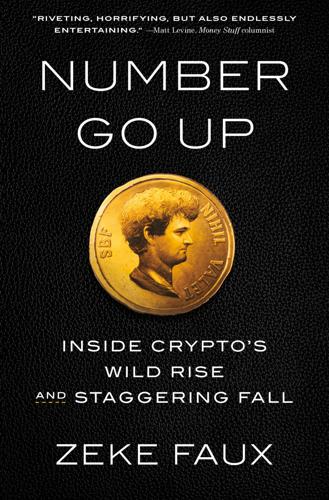
Number Go Up: Inside Crypto's Wild Rise and Staggering Fall
by
Zeke Faux
Published 11 Sep 2023
The breathless hype made me more confused about what exactly a Bitcoin was or how the blockchain worked. I would only later figure out that crypto wasn’t that complicated—at least not the important parts. A blockchain is a database. Think of a spreadsheet with two columns: In Column A there’s a list of people, and in Column B there’s a number representing how much money they have. Column A Column B ZEKE 0.647 SBF 1,000,000 With the Bitcoin blockchain, the numbers in Column B represent Bitcoins. And the people in Column A are identified by strings of random characters instead of names.
…
Without the spreadsheet, the Bitcoins don’t exist. If we were talking about the Dogecoin blockchain, the numbers in Column B would represent Dogecoins. Tethers are just numbers in a spreadsheet like this too. (Technically, a blockchain is a list of all transactions ever made, which is compiled into something like this spreadsheet by software, but close enough.) The next section explains how this works exactly, and I promise I’ll do my best to keep it interesting, but you can skip it if you want—you are now an expert on Bitcoin and the blockchain. * * * — TWO-COLUMN LISTS LIKE the one above have always been at the core of the financial system.
…
As one New York Times headline put it in January 2018, “Everyone Is Getting Hilariously Rich and You’re Not.” These ICO-funded start-ups promised that blockchain would revolutionize commerce by enabling provenance to be tracked and verified. Even big companies like IBM and Microsoft started saying that they would put practically everything on the blockchain: diamonds, heads of lettuce, shipping containers, personal identification, and even all the real estate in the world. It seemed like blockchain-powered ICOs were the practical use that crypto had been waiting for. But there was one problem. None of this stuff ever advanced beyond the testing phases, if anyone bothered to even do that.
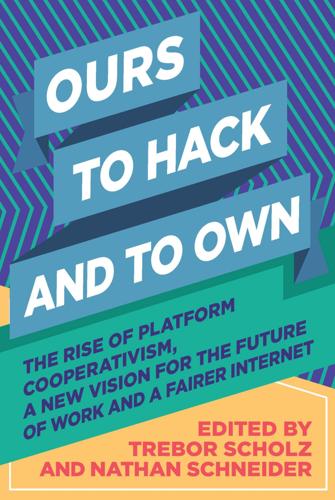
Ours to Hack and to Own: The Rise of Platform Cooperativism, a New Vision for the Future of Work and a Fairer Internet
by
Trebor Scholz
and
Nathan Schneider
Published 14 Aug 2017
These are essentially self-organized online commons. A DCO could use blockchain technology to give its members specified rights within the organization, which could be managed and guaranteed by the blockchain. These rights, in turn, could be linked to the conventional legal system to make the rights legally cognizable and enforceable. One rudimentary example of how the blockchain might be used to facilitate a commons: In the United States, former Federal Communications Commission Chairman Reed Hundt has proposed using blockchain technology to create distributed networks of solar power on residential houses coordinated as commons.
…
Very quickly, it seems, distributed ledger technologies have made their way into any project broadly related to social or political transformation for the left—“put a blockchain on it!”—until its mention, sooner or later, looks like the basis for a dangerous drinking game. On the other side of things, poking fun at blockchain evangelism is now a nerdy pastime, more enjoyable even than ridiculing handlebar moustaches and fixie bicycles. So let me show my hand. I’m interested in the blockchain (or blockchain-based technologies) as one tool that, in a very pragmatic way, could assist with cooperative activities—helping us to share resources, to arbitrate, adjudicate, disambiguate, and make collective decisions.
…
This can create the sense that technical fixes like the blockchain are part of some broader shift to a post-capitalist society, when this shift has not taken place. Indeed, the blockchain applications that are really gaining traction are those developed by large banks in collaboration with tech startups—applications to build private blockchains for greater asset management or automatic credit clearing between banks, or to allow cultural industries to combat piracy in a distributed network and manage the sale and ownership of digital goods more efficiently. While technical tools such as the blockchain might form part of a broader artillery for platform cooperativism, we also need to have a little perspective.

The Future Is Faster Than You Think: How Converging Technologies Are Transforming Business, Industries, and Our Lives
by
Peter H. Diamandis
and
Steven Kotler
Published 28 Jan 2020
Or, at least, until blockchain came along. With blockchain, since trust is built into the system, the system is no longer necessary. Take a stock trade. Right now, to execute that trade, there’s a buyer, a seller, a series of banks that hold their money, the stock exchange itself, clearinghouses, etc.—roughly, ten different intermediaries. Blockchain removes everyone but the buyer and seller. The technology does the rest. In an attempt to hold on to their thinning slice of the pie, every major bank is rushing into blockchain. Yet arguably moving faster are the thousands of entrepreneurs using blockchain to disrupt these same banks.
…
See: https://www.alizila.com/how-alipay-users-planted-100m-trees-in-china/. R3: See: https://www.r3.com/. Ripple: See: https://www.ripple.com/. these companies are using blockchain to replace the SWIFT network: The blockchain blog Cointelegraph has a good piece overviewing SWIFT’s relationship to blockchain. You can find the piece here: https://cointelegraph.com/news/swift-announces-poc-gateway-with-r3-but-remains-overall-hesitant-about-blockchain. 4 billion people, the rising billions, will gain access to the internet: The world population is expected to reach 8.2 billion by 2025, as projected by the United Nations Population Division.
…
If you can satisfy it, everything else improves: health, wellness, income, education levels for children. 3-D printing is an incredible tool for fighting poverty. It’s up to us to use it.” Blockchain In the short time it’s been around, the blockchain has accrued some wonderfully colorful monikers. It’s been called the exponential technology of record keeping, the sexiest accounting solution in the history of the world, and the end of government as we know it. In simpler terms, blockchain is an enabling technology, one that began its life by enabling digital currency. Digital currencies, or the notion that we can use ones and zeroes to replace dollars and cents, were first proposed in 1983.
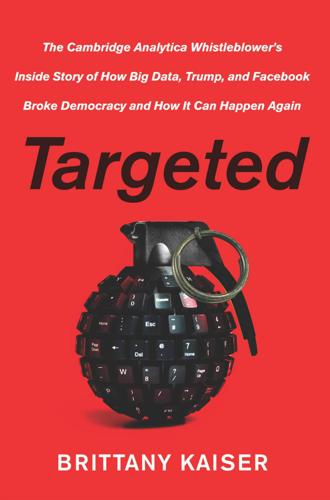
Targeted: The Cambridge Analytica Whistleblower's Inside Story of How Big Data, Trump, and Facebook Broke Democracy and How It Can Happen Again
by
Brittany Kaiser
Published 21 Oct 2019
We did, and within the first twelve hours on land, we met many of the top people in the industry, most notably, Craig Sellars, one of the founders of Tether, the first stable coin pegged to the U.S. dollar; and Matt McKibbin, cofounder of both D10E, a blockchain conference series, and DecentraNet, one of the first blockchain advisory firms. We also met a slew of fascinating people involved in everything from blockchain-funded space projects to digital banking services for the unbanked rural populations. Chester and I walked away from the experience on a high. The potential in the field was vast, but even more invigorating was how blockchain seemed to represent the perfect off-ramp for my time at Cambridge. Tech-driven, built around ideas of data security, it was an ideal next step, an act of both personal and professional penance.
…
The technology to digitize both money and governance could be the greatest innovation to come out of tech in decades, but because it was a threat to governments and banks around the world, and given that the audience in Davos comprised the world’s wealthiest people and top government officials, we had to get this one right. Between Matt’s contacts in the blockchain industry, my own, and Chester’s contacts around the world, we’d been able to put together a weeklong event called “CryptoHQ,” featuring panels, keynote addresses, and social gatherings of entrepreneurs and thought leaders. Guests included U.S. Treasury Secretary Steve Mnuchin (one of the officials in charge of blockchain policy for the U.S. government); the CEOs of many of the top blockchain companies at the time; mixed with powerful policy leaders such as the head of the European Commission’s FinTech and blockchain strategy. In Davos, Matt and I cochaired the conference with his colleagues from DecentraNet, and we ran the events out of our CryptoHQ “Blockchain Lounge,” a massive three-story affair with a restaurant, après-ski bar, and conference venue, set up on Promenade 67, the main street running through the middle of the World Economic Forum.
…
My last trip there had been back in February, for a breakfast meeting with officials from the Securities and Exchange Commission, the Commodity Futures Trading Commission, and the Federal Reserve, to discuss blockchain policy, the catalyst for the launch of Digital Asset Trade Association (DATA), the first blockchain lobbying organization. DATA had already helped pass eight new laws over the past few months in the State of Wyoming by putting boots on the ground in the State Congress, following the lead of the fierce expert Caitlin Long and the hardworking people of the Wyoming Blockchain Coalition. DATA was also working with legislators across the country to implement other laws and regulations for the greater good—what I like to call “blockchain-positive laws” to differentiate them from legislation that hampers innovation, such as New York State’s BitLicense.
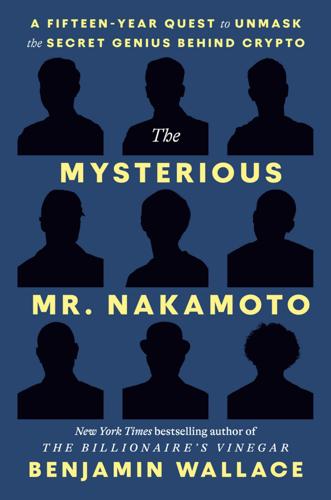
The Mysterious Mr. Nakamoto: A Fifteen-Year Quest to Unmask the Secret Genius Behind Crypto
by
Benjamin Wallace
Published 18 Mar 2025
Wright was claiming to be the world’s most elusive person, but he seemed increasingly set on demystifying himself. Skip Notes * A hard fork, in this context, means a new, separate blockchain, with its own set of miners running its own distinct software. When the new blockchain launches, it starts with a copy of the ledger from the blockchain it is forking away from. This means that all holders of the original blockchain’s coins hold coins, free money, in the new blockchain as well. BTC owners became BCH owners too. Freedom of Information In 2022, I came across another promising lead. In the spring of 2019, Rana Saoud, an assistant agent in charge in the Department of Homeland Security’s division of Immigration and Customs Enforcement, had spoken at the OffshoreAlert Conference in Miami as part of a panel titled “Regulating Cryptocurrencies & ICOs: Security, Commodity, or Currency?”
…
Ou had been inspired in 2016, when China was threatening to ban cryptocurrencies, and she and Szabo began to experiment with extending the Bitcoin network using ham radio. The blockchain was everlasting. After Len Sassaman died, friends embedded in a Bitcoin transaction an ASCII portrait of his bearded face along with the inscription “LEN ‘rabbi’ SASSAMA 1980–2011 Len was our friend. A brilliant mind, a kind soul, and a devious schemer.” The transaction became part of Block 138725, which meant that it would live in the blockchain as long as the blockchain existed, with copies of it on every computer that made up the network. As a utopian project, Bitcoin had, like all utopian projects, never stood a chance.
…
Gavin Andresen, who was in New York City for the Consensus 2016 blockchain conference, had been expecting a brief, straightforward demonstration that Wright was Satoshi Nakamoto, a public signing of a message with one of Nakamoto’s private keys. Instead, Wright had written “wacky” “gobbledygook” that was “incredibly technical and hard to follow.” Online, people who studied Wright’s Sartre post discovered a bigger problem. A Redditor named JoukeH found, simply by copy-pasting Wright’s supposed Nakamoto-signed Sartre quote into a Google search box, that the signature had been lifted from a 2009 transaction publicly available on the blockchain. “It would be like if I was trying to prove that I was George Washington,” Bitcoin developer Peter Todd said, “and to do that provided a photocopy of the Constitution and said, ‘Look, I have George Washington’s signature.’ ” Gavin was at the Times Square Marriott Marquis that morning to appear on a panel about the scaling controversy, which was still raging in Bitcoinland.
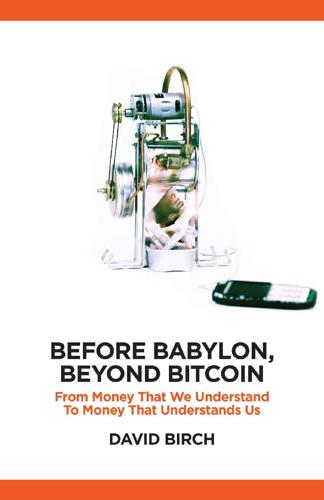
Before Babylon, Beyond Bitcoin: From Money That We Understand to Money That Understands Us (Perspectives)
by
David Birch
Published 14 Jun 2017
And let’s have no limit on the number of different currencies that the banking system’s ledger might hold. Here comes the blockchain What might that ledger look like? The emerging consensus, at least in the finance sector, seems to be that the technology behind Bitcoin, the blockchain, will disrupt the sector (Raymaekers 2015), although many commentators are not at all clear how (or, indeed, why). Melanie Swan posits that even if all of the infrastructure developed by the blockchain industry were to disappear, its legacy could persist (Swan 2015). This is because the blockchain has provided new larger-scale ideas about how to organize financial services and, as Swan and other observers have noted, there is a very strong case for decentralized models.
…
She is surely right to say that ‘decentralisation is an idea whose time is come’, and to identify the Internet as a new cultural technology that admits techniques such as shared ledgers. The blockchain is, as I have mentioned, only one kind of such a shared ledger, and the Bitcoin blockchain works in a very specific way. This may not be the best way to organize shared ledgers for disruptive innovation and it may not, in my opinion, point towards where the disruptive influence of shared ledger technology will deliver its biggest benefits to society. Shared ledgers Interest in shared ledger technology has been rekindled as interest in the blockchain has grown. The blockchain is the specific distributed shared ledger technology that underpins Bitcoin (Wood and Buchanan 2015), and it can be seen as a consensus database that everybody can copy and access but, by clever design, not subvert: a permanent record of transactions that no one can go back and change.
…
The blockchain is the specific distributed shared ledger technology that underpins Bitcoin (Wood and Buchanan 2015), and it can be seen as a consensus database that everybody can copy and access but, by clever design, not subvert: a permanent record of transactions that no one can go back and change. The key characteristics of this blockchain that make it a special kind of shared ledger – and that are particularly appealing to developers and to its proponents – are that it is distributed, decentralized, public or transparent, time-stamped, persistent and verifiable (DuPont and Maurer 2015). However, the blockchain is just one kind of shared ledger. Let us put the blockchain to one side for a moment and build up a view of shared ledger technology that will both locate the blockchain in the right context and inform interaction between technologists and financial services imagineers.
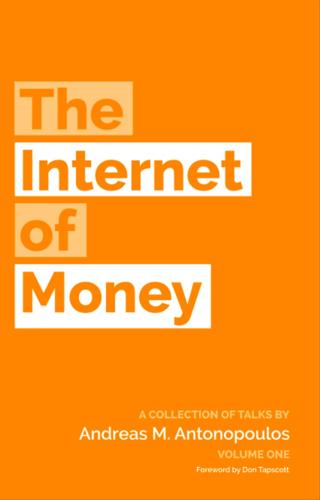
The Internet of Money
by
Andreas M. Antonopoulos
Published 28 Aug 2016
What they fail to grasp is that this medium is not just for the trivial; it spans the entire range of transactional expression from the trivial to the enormous. "The blockchain can encompass the entire range of transactional expression, from the 10-cent tweet to the $100 billion debt settlement." One day, a country will pay its oil bill on the blockchain. One day, you might buy a multinational company on the blockchain. One day, you might sell an aircraft carrier, hopefully for scrap metal, on the blockchain. The blockchain can encompass the entire range, from the 10-cent tweet to the $100 billion debt settlement. We just haven’t noticed yet.
…
I want to sit at my kitchen table every Sunday and balance my checkbook and make sure none of my checks bounced. I don’t like all of this electronic instantaneous global transfer. It scares me,” we can slow it down. This infrastructure inversion will allow us to comfortably run traditional banking applications on top of a distributed global ledger — an open blockchain like bitcoin, the open blockchain, probably bitcoin’s open blockchain and simultaneously open the door for other applications, for applications we’ve never seen before. These new applications will look different from traditional banking. As different as a Segway or skateboard looks to those committed to traditional horse-carriages.
…
We’ve taken the transaction, which is just 250 bytes, and we’ve separated it from the transport medium, so it doesn’t depend on any underlying security. We’ve made it stand alone so that it can be independently verified by any node that has a full copy of the blockchain. Independently verified as spendable, authentic, and properly signed by any system that has a full copy of the blockchain—in fact, even by systems that only have a partial copy of the blockchain. That transaction can be verified in seconds. All it has to do is reach one node in the network that can talk to miners. That’s it. Once it’s injected into the bitcoin network and once it propagates, you can be almost certain that the transaction will be included eventually and will become valid.

The Industries of the Future
by
Alec Ross
Published 2 Feb 2016
Bitcoin’s answer to all these questions, and its method for establishing a genuine breakthrough in digital trust, is a cryptographic invention called the blockchain. At its core, the blockchain is the big ledger on which all transactions are logged. And every single transaction going back to the very first Bitcoin payment is recorded on the blockchain, though they’re logged anonymously or pseudo-anonymously. One of the blockchain’s key characteristics is that it is public, and instead of being stored at one central location, it is distributed to every Bitcoin user. By making everything public, the blockchain reduces the possibility of fraud drastically, because you can’t counterfeit the existence of property in public view.
…
When Bitcoin was still obscure enough to go largely unnoticed, these dark websites had a brief heyday, but law enforcement agencies have thoroughly penetrated this world and, if anything, Bitcoin has made their work easier. Although the blockchain keeps personal identities secret behind cryptographic code, in order to access the blockchain, people must leave digital footprints that law enforcement agencies know how to follow. THE BLOCKCHAIN AND THE ESTABLISHMENT Bitcoin initially pitted Silicon Valley against the establishment in government, on Wall Street, and among leading economists. However, much of that same establishment now sees blockchain technology as a technological solution to many high-cost transactions. Economists from the left and right, investment bankers, and government officials questioned its value and often its legality.
…
Gox was forced to shut down. As the Mt. Gox episode shows, the real security threat to Bitcoin is not the security of the blockchain but the infrastructure around it. In my professional circles, when many people think of Bitcoin, they think of hacking. And while Bitcoin advocates are technically correct when they say that the Bitcoin blockchain has never been compromised, when what you use to buy, store, and transfer bitcoins is compromised, it feels like a distinction without meaning. For all the strength of the blockchain, Bitcoin still needs an enabling ecosystem including trading platforms, payment systems, and pricing indexes to function smoothly and create the level of confidence necessary for high-trust transactions.

The Fourth Industrial Revolution
by
Klaus Schwab
Published 11 Jan 2016
Positive impacts – Increased financial inclusion in emerging markets, as financial services on the blockchain gain critical mass – Disintermediation of financial institutions, as new services and value exchanges are created directly on the blockchain – An explosion in tradable assets, as all kinds of value exchange can be hosted on the blockchain – Better property records in emerging markets, and the ability to make everything a tradable asset – Contacts and legal services increasingly tied to code linked to the blockchain, to be used as unbreakable escrow or programmatically designed smart contracts – Increased transparency, as the blockchain is essentially a global ledger storing all transactions The shift in action Smartcontracts.com provides programmable contracts that do payouts between two parties once certain criteria have been met, without involving a middleman.
…
In “The Robot Reality: Service Jobs Are Next to Go”, Blaire Briody, 26 March 2013, The Fiscal Times, http://www.cnbc.com/id/100592545 Shift 16: Bitcoin and the Blockchain The tipping point: 10% of global gross domestic product (GDP) stored on blockchain technology By 2025: 58% of respondents expected this tipping point to have occurred Bitcoin and digital currencies are based on the idea of a distributed trust mechanism called the “blockchain”, a way of keeping track of trusted transactions in a distributed fashion. Currently, the total worth of bitcoin in the blockchain is around $20 billion, or about 0.025% of global GDP of around $80 trillion. Positive impacts – Increased financial inclusion in emerging markets, as financial services on the blockchain gain critical mass – Disintermediation of financial institutions, as new services and value exchanges are created directly on the blockchain – An explosion in tradable assets, as all kinds of value exchange can be hosted on the blockchain – Better property records in emerging markets, and the ability to make everything a tradable asset – Contacts and legal services increasingly tied to code linked to the blockchain, to be used as unbreakable escrow or programmatically designed smart contracts – Increased transparency, as the blockchain is essentially a global ledger storing all transactions The shift in action Smartcontracts.com provides programmable contracts that do payouts between two parties once certain criteria have been met, without involving a middleman.
…
(Airbnb) – The largest provider of transportation doesn’t own a single car? (Uber) Shift 18: Governments and the Blockchain The tipping point: Tax collected for the first time by a government via a blockchain By 2025: 73% of respondents expected this tipping point to have occurred The blockchain creates both opportunities and challenges for countries. On the one hand, it is unregulated and not overseen by any central bank, meaning less control over monetary policy. On the other hand, it creates the ability for new taxing mechanisms to be built into the blockchain itself (e.g. a small transaction tax). Unknown impacts, or cut both ways – Central banks and monetary policy – Corruption – Real-time taxation – Role of government The shift in action In 2015, the first virtual nation, BitNation, was created using blockchain as the foundation identification technology for citizen’s identity cards.
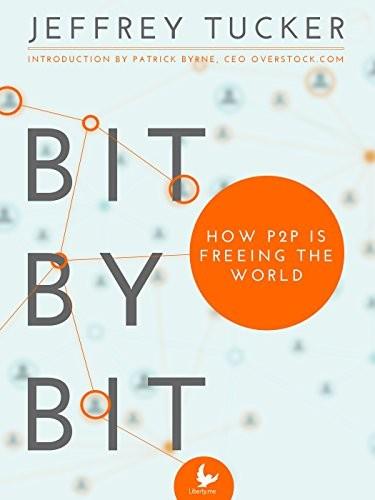
Bit by Bit: How P2P Is Freeing the World
by
Jeffrey Tucker
Published 7 Jan 2015
The applications of these P2P networks are enormously surprising. The biggest surprise in my own lifetime is how they have been employed to make payment systems P2P—no longer based on third-party trust—through what’s called the blockchain. The blockchain can commodify and title any bundle of information and make it transferable, with timestamps, in a way that cannot be forged, all at nearly zero cost. An offshoot of blockchain-distributed technology has been the invention of a private currency. For half a century, it has been a dream of theorists who saw that taking money out of government hands would do more for prosperity and peace than any single other step.
…
At the conference Coins in the Kingdom, a bitcoin event held at Disney World, I was honored to officiate at the first-ever marriage done on the blockchain. The blockchain is the fantastic digital innovation that provides not only a ledger for the currency unit bitcoin but also an indestructible public record of verified contracts with timestamps. It works without any public authority—or any third party at all. This wedding between my new friends, David Mondrus and Joyce Bayo, was recorded on the blockchain. They “burned” exactly 0.1 bitcoin through a CoinOutlet bitcoin ATM right there in front of all the witnesses. The transaction permits secure messaging, which, in this case, will be the wedding vows themselves, which were then permanently available for the world to see.
…
It was released as a distributed technology free for the whole world to use. Five years ago, very few people outside the computer-code community took notice. Those who did take notice doubted the promise of bitcoin’s future. After all, nothing like this had ever existed. Now the blockchain processes up to 100K transactions per day and is being used to empower workers and companies around the world. And even so, we may be just at the beginnings of this shift. Blockchain technology is not just a money; it is a means of bundling, porting, and verifying commodified information of all sorts, including titles, contracts, wills, and more. Ultimately, the cryptorevolution is about parties exchanging value without needing central institutions to mediate their exchanges.
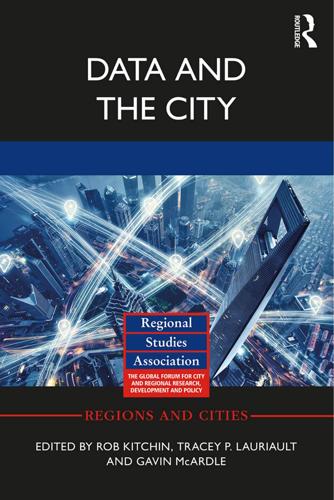
Data and the City
by
Rob Kitchin,Tracey P. Lauriault,Gavin McArdle
Published 2 Aug 2017
An alternative and emerging form of data infrastructure for city dashboards and services are blockchains. Blockchains are sealed and encrypted distributed ledgers of all transactions ever conducted within a system. Each block records key metadata regarding a transaction such as information about sender and receiver, time, value, fees and IP address, and once recorded cannot be altered, thus creating trust. Each block adds to the sequence of transactions forming a chain that leads back to the start of the database. While blockchains are most commonly associated with new financial currencies such as Bitcoin, Chris Speed, Deborah Maxwell and Larissa Pschetz examine their utility for recording and sharing other kinds of transactions.
…
While blockchains are most commonly associated with new financial currencies such as Bitcoin, Chris Speed, Deborah Maxwell and Larissa Pschetz examine their utility for recording and sharing other kinds of transactions. To illustrate how blockchains work as economic, social and cognitive ledgers they discuss their use with regards to finance and work. They then detail the development of two prototype city ledgers produced in a design workshop that utilize Bitcoin technology demonstrating how blockchains offer opportunities to capture diverse social practices and transactions in city ledgers. They contend that the blockchain has the potential to create trusted city ledgers (databases), and thus trusted city dashboards, and provide the foundation for dealing with complexity and predicting future outcomes.
…
By reflecting on the role of ledgers across different forms, this formative chapter establishes the complexity of capturing and producing data across a myriad of social practices using linear systems. 142 C. Speed, D. Maxwell and L. Pschetz Ledger 1: money, time and the blockchain There are many elements that make Bitcoin an interesting alternative currency, but critically it is the development and implementation of the blockchain – a distributed ledger that contains all transaction records ever conducted. The Bitcoin blockchain is an encrypted, cumulative ledger composed of ‘blocks’ of transactions that are verified by miners and which lead back to the first ‘Genesis’ block whose instance is timed as 18:15:05 GMT, on 3 January 2009, signifying the start of the currency.

Future Politics: Living Together in a World Transformed by Tech
by
Jamie Susskind
Published 3 Sep 2018
See Yochai Benkler, The Wealth of Networks: How Social Production Transforms Markets and Freedom (New Haven and London:Yale University Press, 2006) and The Penguin and the Leviathan: How Cooperation Triumphs over Self-Interest (New York: Crown Publishing, 2011). 24. Don Tapscott and Alex Tapscott, Blockchain Revolution: How the Technology Behind Bitcoin is Changing Money, Business and the World (London: Portfolio Penguin, 2016), 7. 25. Tapscott and Tapscott, Blockchain Revolution, 16. 26. Tapscott and Tapscott, Blockchain Revolution, 153–4; Stan Higgins, ‘IBM Invests $200 Million in Blockchain-Powered IoT’, CoinDesk, 4 October 2016 <https://www.coindesk.com/ibm-blockchain-iotoffice/> (accessed 30 November 2017). 27. Melanie Swan, Blockchain: Blueprint for a New Economy (Sebastopol, CA: O’Reilly, 2015), 14. 28. Economist, ‘Not-so-clever Contracts’, 28 July 2016 <http://www. economist.com/news/business/21702758-time-being-leasthuman-judgment-still-better-bet-cold-hearted?
…
A ‘smart contract’, for instance, is a piece of blockchain software that executes itself automatically under pre-agreed circumstances— like a purchase agreement which automatically transfers the ownership title of a car to a customer once all loan payments have been made.27 There are early ‘Decentralised Autonomous Organisations’ (DAOs) that seek to solve problems of collective action without a centralized power structure.28 Imagine services like Uber or Airbnb, but without any formal organization at the centre pulling the strings.29 The developers of the Ethereum blockchain, among others, have said they want to use DAOs to replace the state altogether. Blockchain still presents serious challenges of scale, governance, and even security, which are yet to be overcome.30 Yet for a youthful technology it is already delivering some interesting results. The governments of Honduras, Georgia, and Sweden are trialling the use of blockchain to handle land titles,31 and the government of Estonia is using it to record more than 1 million patient health records.32 In the UK, the Department for Work and Pensions is piloting a blockchain solution for the payment of welfare benefits.33 In the US, the Defense Advanced Research Projects Agency (DARPA) is looking into using blockchain technology to protect its military networks and communications.34 Increasingly connective technology is not just about people connecting with other people.
…
Schwab, Klaus, The Fourth Industrial Revolution (Geneva: World Economic Forum, 2016), 19; Laura Shin, ‘The First Government to Secure Land Titles on the Bitcoin Blockchain Expands Project’, Forbes, 7 February 2017 <https://www.forbes.com/sites/laurashin/ 2017/02/07/the-first-government-to-secure-land-titles-onthe-bitcoin-blockchain-expands-project/#432b8b494dcd> (accessed 30 November 2017); Joon Ian Wong, ‘Sweden’s Block chain-powered Land Registry is Inching Towards Reality’, Quartz Media, 3 April 2017 <https://qz.com/947064/sweden-is-turninga-blockchain-powered-land-registry-into-a-reality/> (accessed 30 November 2017). Daniel Palmer, ‘Blockchain Startup to Secure 1 Million e-Health Records in Estonia’, CoinDesk, 3 March 2016 <http://www.coindesk. com/blockchain-startup-aims-to-secure-1-million-estonian-healthrecords/> (accessed 30 November 2017).

The People vs Tech: How the Internet Is Killing Democracy (And How We Save It)
by
Jamie Bartlett
Published 4 Apr 2018
If you’ve ever read that bitcoin is ‘anonymous’, that’s not strictly true, because of this database record. However, even though the blockchain records the transactions, there is no link to the identity of the people behind them, which is why some writers prefer to call it ‘pseudonymous’. A simple way to put it is: the blockchain is a massive, distributed, tamper-proof database that anyone can add to but no one can delete. Bitcoin’s blockchain was designed to store financial transactions, but it can hold other information, too. In fact, a new wave of blockchains allow complicated code to be stored. This could be as revolutionary as the internet itself, because it represents a way to store information in a far more decentralised way.
…
Although Silk Road was eventually shut down, there are now several other dark net markets, where stolen personal data, narcotics and child abuse images can be bought and sold, Amazon-style. Let’s imagine a blockchain-based social media platform (there are already versions of this, like Mastodon, which is on the normal net), in which posts are simultaneously hosted on multiple decentralised blockchain databases. Facebook runs on servers that sit in massive data centres controlled by the company – meaning that it can delete or edit what its users see. A blockchain social media platform would be untouchable – no government would be able to edit or remove hate-speech, illegal images or terror propaganda, unless the whole network was somehow vaporised. Blockchain advocates hate ‘middle men’.
…
Similarly, powerful AI used in the public interest could yield remarkable benefits in health research, spending decisions, intelligence, strategy and much more. Beyond that, technology like blockchain could dramatically improve how people can hold their governments to account. Central and local governments should explore ways to use blockchains to improve the functions of democracy. For example, we’re used to governments making regular spending pledges at election time, which then simply evaporate. Blockchain-based accounting and contracts could help connect pledges with actual outputs – transforming how the public can track the way our taxes are spent. The UK Government should investigate whether blockchain-based identity systems – whether for land ownership, health records or passports – could improve citizen data security and efficiency, without the government accruing too much power.4 There are many exciting new ways to involve people more in political decision-making too, including secure online voting; but these need to be adopted cautiously – votes every week on every subject is a bad idea
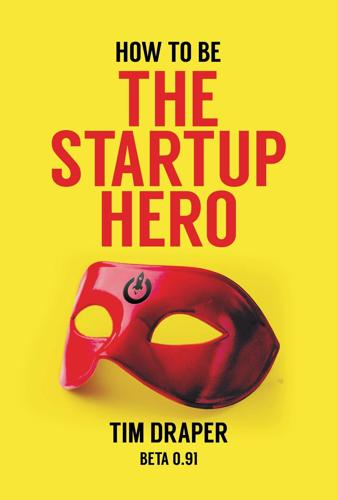
How to Be the Startup Hero: A Guide and Textbook for Entrepreneurs and Aspiring Entrepreneurs
by
Tim Draper
Published 18 Dec 2017
The technology behind Bitcoin is called the blockchain. The blockchain also has some amazing potential. It can be thought of as a giant ledger, keeping track of money, data, inventory, contracts, etc. “Smart” contracts can be designed such that they anticipate eventualities and automatically distribute appropriately. And corporations can use the blockchain to automatically pay employees their wages and benefits, pay shareholders their dividends, and pay noteholders their interest and principal payments, all with precise accuracy and automated accounting. Furthermore, companies can use the blockchain to pay their suppliers and receive money from their customers, handling lay away payment plans and warranties without friction or human influence.
…
And the US government (and other governments) can manage social security, welfare, Medicare, worker’s comp, disability and all their data verification of citizens and businesses with Bitcoin and the blockchain, since blockchain is the perfect government service employee. It is honest, incorruptible, secure, and fair. Bitcoin and its underlying technology, the blockchain, are changes that allow us to progress. But change is difficult for those people who don’t have the spark of a Startup Hero in their eyes, and many industries will have to go through fundamental changes to adapt to the advent of this new way of thinking. People will have to learn that the bank, being the trusted third party for centuries, will soon be replaced by computers that now monitor their holdings through the blockchain.
…
Banks will have to adapt their services as the need for trusted third parties and financial middlemen are eclipsed by a trusted crowd of blockchain monitors. The blockchain, being a perfect ledger, may change the accountant’s role to one of advisor, and smart contracts may change what it means to be a corporate lawyer. People will not need to hoard gold or hard currency since Bitcoin is a far more convenient source for stored value. Governments may recognize that their fiat currencies are inferior to virtual currencies and will have to allow more financial freedom to their citizens or risk losing those citizens. Taxing authorities and welfare service providers may be replaced by blockchain tax redistribution engines and welfare insurance wallets.
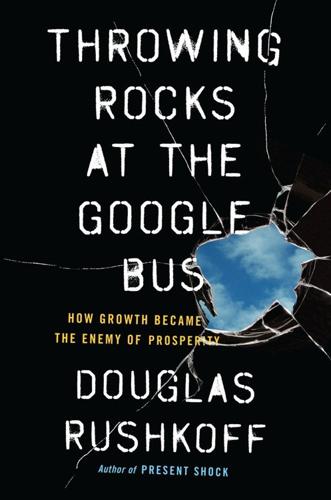
Throwing Rocks at the Google Bus: How Growth Became the Enemy of Prosperity
by
Douglas Rushkoff
Published 1 Mar 2016
This is a money system that works through protocols—digital handshakes between peers—instead of establishing security through central authorities. Bitcoin is based on a database known as the “blockchain.” The blockchain is a public ledger of every bitcoin transaction ever. It doesn’t sit on a server at a bank or in the basement of a credit-card company’s headquarters; it lives on the computers of everyone in the Bitcoin network. When bitcoins are transacted, an algorithm corresponding to that transaction is “published” to the blockchain. The algorithm is just a description of the transaction itself, as in “2 bitcoins came from A and went to B.” Instead of a list of users and their bitcoin balances, the ledger simply lists the transactions in chronological order.
…
Additionally, it is verified by an anonymous peer group, then encrypted so that only those involved in the specific transaction know who participated. This has applications well beyond bitcoins.41 The blockchain can “notarize” and record anything we choose, not just the cash transactions between Bitcoin users. Entire companies can be organized on blockchains, which can authenticate everything from contracts to compensation. Decentralized autonomous corporations, or DACs, for example, are a fast-growing category of businesses that depend on a collectively computed blockchain to determine how shares are distributed. To count as a true DAC, a company must be an open-source endeavor whose operation occurs without the supervision of a single guiding body, such as a board or a CEO.* Instead, a project’s governing rules and mission must emerge from consensus.
…
Project workers are compensated for their labor or capital investment with shares in the blockchain, which increase in number as the project develops.42 We can think of DACs as companies whose stock is issued little by little as the company grows from a mere business plan into a sustainable enterprise. Only individuals who create value for the company are awarded new stock proportionate to their contributions.43 Fittingly, the majority of DACs currently sell blockchain-related services themselves. By committing to the blockchain for their own governance and share distribution, DACs lend credibility to the technologies they are selling.
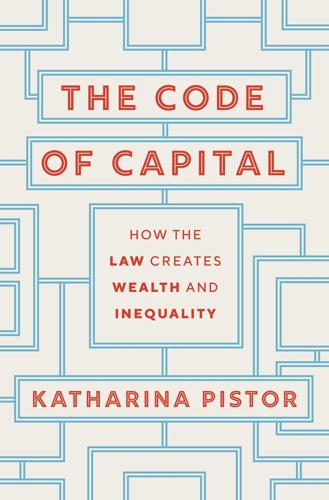
The Code of Capital: How the Law Creates Wealth and Inequality
by
Katharina Pistor
Published 27 May 2019
Some advances in digital technology, however, have created the possibility of decentralized governance, most prominently among them, blockchain technology. A blockchain is a tamper-proof ledger that contains a complete history of all state changes in transactions that take place on it.2 Smart contracts are pieces of code set to execute on the blockchain. Since every action on the blockchain is recorded automatically, blockchain-based smart contracts create an unprecedented level of granularity, completeness, and trustworthiness in the data gathered. A blockchain typically can only be written onto; it cannot be modified. Because they do not allow parties to back out from existing commitments, smart contracts that are written on blockchain create even more binding commitments than do legal contracts.
…
For an excellent summary of Minsky’s thinking of how to stabilize an inherently instable financial system, see Mehrling, “Minsky and Modern Finance.” 47. Described by De Filippi and Wright, Blockchain and the Law, at Loc. 449 (Kindle edition). 48. Gerard, Attack of the 50 Foot Blockchain: Bitcoin, Blockchain, Ethereum & Smart Contract (Creative Commons, 2017) at Loc 202 (Kindle edition). 49. De Filippi and Wright, Blockchain and the Law, at Loc. 800 (Kindle edition). 50. See also Desan, Making Money, who argues that money is grounded in constitutional law. 51. Mark J. Flannery, “Contingent Capital Instruments for Large Financial Institutions,” Annual Review of Financial Economics 6 (2014):225–240. 52.
…
Because they do not allow parties to back out from existing commitments, smart contracts that are written on blockchain create even more binding commitments than do legal contracts. By transacting through blockchain-based smart contracts, participants agree to a set of coded rules that are enforced by deterministic computers. As a result, there will no longer be any need for state power or state law and the world may at long last become as flat as many economists have long imagined it to be. When the digital code replaces the legal code, the commitments we make to one another become hardwired, and even the powerful cannot simply wiggle out of them.
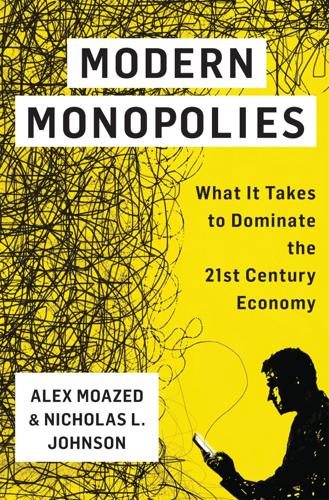
Modern Monopolies: What It Takes to Dominate the 21st Century Economy
by
Alex Moazed
and
Nicholas L. Johnson
Published 30 May 2016
But the blockchain could be the wedge that cracks open the overly concentrated financial sector. Because Bitcoin allows developers to build on top of the blockchain protocol, it enables countless new uses of the underlying technology. Just as Apple’s iOS platform created a world where “there’s an app for that,” we may soon be in a world where “there’s a Bitcoin app for that.” Today, there’s an enormous ecosystem of blockchain-based startups that are building new applications tapping into Bitcoin’s blockchain as a way of verifying transactions. But these startups also put the blockchain to radically new uses.
…
However, that doesn’t mean Bitcoin doesn’t have revolutionary potential. Bitcoin the currency is based on a technology called the blockchain, although the two terms are often used synonymously. The blockchain is a novel way of transferring a digital message from one party to another, where both parties can count on the integrity of the message—even if they don’t trust, or know, each other. Essentially, the blockchain is a ledger of transactions that keeps a record all previous transactions in one place. Each “block” in the blockchain requires a record of recent transactions as well as a string of letters and numbers (called a hash), which is produced using cryptographic algorithms.
…
Given the large (and growing) number of bitcoin miners out there, this is currently a borderline impossible task. If one miner were to gain control of a significant portion of the network, the entire blockchain would be endangered. But thus far this hasn’t been a real threat. Currently, Bitcoin is by far the largest blockchain network. However, many others (often collectively referred to altcoins) make small alterations to the Bitcoin protocol to adapt it for other uses. But as the nature of the blockchain suggests, a larger blockchain network is a more useful and more secure one. As a result, at present, Bitcoin is effectively the only game in town. However, there are signs that this could change in the near future.

What Algorithms Want: Imagination in the Age of Computing
by
Ed Finn
Published 10 Mar 2017
But Bitcoin’s second innovation is where we discover a new form of computational arbitrage, in the consensus-driven mechanism of the blockchain. The blockchain is the public ledger of all Bitcoin transactions in the history of the currency. It contains a detailed accounting of every transaction since the currency’s instantiation, a digital file that now exceeds 20 gigabytes in size and must be downloaded locally by every Bitcoin software client. The blockchain is the algorithm that implements the political critique of Bitcoin, a marvel of arbitrage that inverts the traditional relationship between privacy and transparency. Every transaction, every incremental unit of Bitcoin value, is traced through the blockchain, and each of those transactions is tied to one or more buyer and seller identities.
…
The system will gradually taper the reward for completing new blocks to zero, thereby ceasing the creation of new Bitcoins entirely, once 21 million Bitcoins have been created.26 At that point, transaction fees alone will provide the incentive for Bitcoin users to dedicate their computers to endlessly updating the blockchain. Figure 5.1 The blockchain, a system for transparent, public accounting of Bitcoin transactions. I am dwelling on the details of this elaborate process for delivering financial consensus because Bitcoin is not simply a decentralized currency but a revaluation of commerce in algorithmic terms. Bitcoin’s true radicalism stems from the fact that the blockchain grounds its authority on collective computation as an intrinsic form of value. To understand this shift we need to consider Bitcoin in the context of the historical value propositions of capitalism.
…
These different transaction announcements are bundled up into transaction blocks by Bitcoin “miners,” who then compete to assemble and validate these transactions against the extant communal history of the currency. The outcome of that labor is a new block for the blockchain. To do this, they must solve an arbitrary and highly complex math problem. The miner who is the first to correctly solve the problem “wins” that block. And there is a reward: the first transaction in each new block is a “generation transaction,” that creates a quantity of new Bitcoins (the number gradually decreases over time). The miner who solves the block earns this reward for throwing the most computational resources at assembling the latest block for the blockchain (figure 5.1). The miner also accepts a secondary reward by claiming a small transaction fee for processing these various trades (this fee gradually increases over time).
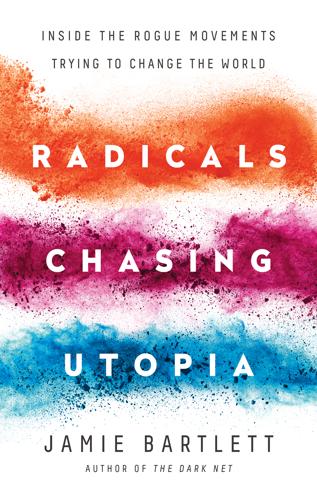
Radicals Chasing Utopia: Inside the Rogue Movements Trying to Change the World
by
Jamie Bartlett
Published 12 Jun 2017
Every time someone sends a bitcoin as payment, a record of the transaction is timestamped to the microsecond, and stored in something called a ‘blockchain’ (each block representing about ten minutes’ worth of transactions). The blocks are ordered chronologically, and each includes a digital signature (a ‘hash’) of the previous block, which administers the ordering and guarantees that a new block can join the chain only if it starts from where the preceding one finishes. A copy of the blockchain—which is basically a record of every single transaction ever made—is kept by everyone who has installed the bitcoin software. To ensure everything is running as it should, the blockchain is constantly verified by the computers of certain key users who compete to crack a mathematical puzzle that allows them to officially verify the blocks are all in order (and in exchange they get to mint a small number of new bitcoins).
…
Many people assume bitcoin to be completely decentralised, but if a miner, or a group of miners, controlled over half the computing power that works on verifying the transaction, it could feasibly force a change on the blockchain transaction list however it wished, create a fork of the blockchain, and all the other computers would start to work on the new version (the protocol is written so that all computers work from the longest blockchain). In bitcoin, a few large pools can register most of the new bitcoin blocks, which could push them to the 51 per cent threshold for mining power: which could result in a takeover. Indeed, in 2014 one mining rig took over 51 per cent of bitcoin’s hashing power for twelve straight hours.
…
It wasn’t bitcoin itself that excited Susanne, but the way bitcoin stored information. It works because a copy of every transaction between users is stored on a public, chronologically ordered database, called the ‘blockchain’.18 A copy of that database is hosted on thousands of computers, and new transactions can only be added to that database once they’ve been verified by other computers that check them. The upshot is that it’s possible to add new transactions to the blockchain, but not edit, change or delete old ones. It’s like a magic spreadsheet: a massive, public, chronologically ordered, tamper-proof database that anyone can view and add to, but no one is in charge of it.

On the Edge: The Art of Risking Everything
by
Nate Silver
Published 12 Aug 2024
In Hold’em, there is a small blind and a big blind, with the former costing half as much. See also: ante. Blockchain: A digital ledger of transactions in chronological order; for instance, the Bitcoin blockchain records all sales of Bitcoin. A blockchain is decentralized and distributed across multiple computers so as to provide a mechanism to verify transactions without relying on governments or the financial system. There are multiple blockchains—the Bitcoin blockchain and Ethereum blockchain are separate ledgers. Blocker (poker): A card that affects the statistical distribution of your opponent’s hand range.
…
The process is random, though just like buying more scratch-off tickets gives you more chances to win the lottery, having more computing power gives you more of a chance to win the big prize from mining: a block reward, set at 6.25 Bitcoins (approximately $250,000) as I’m writing this plus transaction fees. But how in the world did we go from the first blockchain—a digital ledger for recording Bitcoin transactions—to raucous parties at Art Basel? The through line runs through Vitalik Buterin, a waifish, Russian Canadian computer programmer who created the Ethereum blockchain.[*11] The Ethereum blockchain has a native digital currency, Ether (ETH)—pronounced as “eth” with a long “e” as in the name Ethan. But like an appliance on one of those late-night infomercials—it slices, it dices, it makes julienne fries!—the Ethereum blockchain can do a whole lot more than just record ETH transactions.
…
For example, public-private key cryptography plays a crucial role in securing transactions. *11 Let me parse a few fine points here. Satoshi Nakamoto invented (1) the first functional blockchain and (2) Bitcoin, a digital currency whose transactions are recorded on the Bitcoin blockchain. But there isn’t just one blockchain. Buterin created a different blockchain, Ethereum. *12 Like a lot of early crypto adopters, VonMises has libertarian political leanings, and his username is a shout-out to the free-market-championing Austrian economist Ludwig von Mises. *13 This was back in the days before Robert Moses destroyed the aboveground levels of Penn Station to build Madison Square Garden and it was a relatively nice place to hang out too
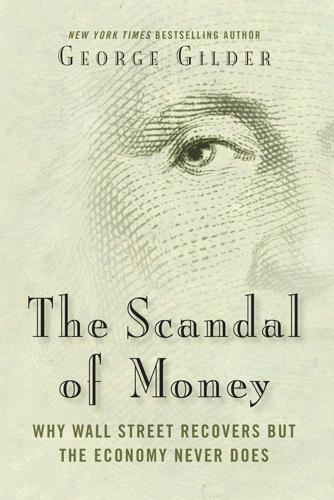
The Scandal of Money
by
George Gilder
Published 23 Feb 2016
As Moore’s Law improves the computer systems used to validate transactions and integrate them with the bitcoin blockchain, for example, the “proof of work” challenge in the algorithm becomes proportionately more difficult and the reward smaller. Bitcoin “miners” could gain their specified rewards, but they could not use their superfast devices to accelerate their own transactions or capture greater personal returns from them. Regardless of the evolution of computer technology, every group of transactions in the blockchain and every new issue of bitcoins would require a ten-minute span to verify and integrate, mine and mint.
…
To the Austrian economics of subjectivity, time provides an objective foundation. In reaching for commodities in which to anchor his system of value, Ametrano should have ended with gold, with its intimate links to the irreversibility of time. In the end, a test of bitcoin or any other blockchain will be the price of gold. If in a mature bitcoin system the gold chain massively bifurcates from the blockchain, it will signify a disorientation of values. As in bitcoin itself, the majority of users will decide which branch bears economic truth.11 Since its creation in 2009, bitcoin’s price movements have been 80.4 percent correlated with the gold price.12 Bitcoin’s relatively tiny float has imparted much greater volatility.
…
Fortunately such a payment system has already been invented. It is set to become a new facet of Internet infrastructure. It is called the bitcoin blockchain. It is already in place. It functions peer-to-peer without outside trusted third parties, and it follows Nick Szabo’s precursor, bitgold. Its value, like gold’s, is ultimately based on the scarcity of time. With automation it will become capable of micropayments. Even if bitcoin proves flawed, scores of companies are developing alternatives based on the essential blockchain innovation that can serve as a successful transactions layer for digital commerce. The existence of such a system would enable sellers on the Internet, such as content producers, to name their own prices and collect their funds directly.

Leadership by Algorithm: Who Leads and Who Follows in the AI Era?
by
David de Cremer
Published 25 May 2020
Of specific interest to our discussion here is the finding that 86% of these executives believe that blockchain technology can be applied to the aspects of management that involve leading an organization. How could blockchain technology be used to achieve this goal? Let us first consider, what is blockchain? Blockchain is a distributed database composed of a chain of blocks in chronological sequence. Each block is a collection of data. Blockchain records data about past behaviors of individuals who are all participating within the same interconnected network. The technology behind blockchain thus builds a platform that holds a transparent and immutable record of past events relevant to all individuals within a shared network.
…
This network could be a team, department or even the organization in its entirety. Transparency is created based on the history of interactions taking place within the network, which means that a blockchain should have the ability to make individual parties trust each other. Indeed, in 2015, The Economist put blockchain on its cover and called it “the trust machine”. Because of its supposed ability to create trust, it should be possible for blockchain to manage behavior within companies. The key element in blockchain’s supposed role as the trust builder is that it creates a risk-free environment. The past of every individual involved in the network is controlled and the risk of exploitation is therefore virtually zero.
…
In light of this movement of algorithms into a role of managing (some may say monitoring) others, an interesting application in this area concerns the potential employment of blockchain technology to manage work relations in organizations. Blockchain is mostly known as the underlying technology of applications, such as Bitcoin. At the same time, the technology is also increasingly being seen as a way of changing how our companies work. One specific application that was pointed out in a recent Deloitte survey is to use this technology to perform the basic functions of management as well as motivating employees more specifically.¹⁰³ This survey revealed that among 1,386 senior executives in 12 nations, 83% saw compelling ways for blockchain to be used by their organizations.
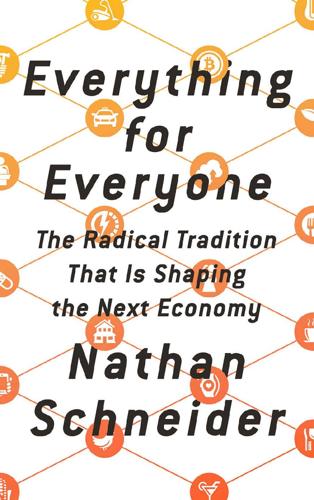
Everything for Everyone: The Radical Tradition That Is Shaping the Next Economy
by
Nathan Schneider
Published 10 Sep 2018
Just a few weeks earlier, a nineteen-year-old Russian Canadian named Vitalik Buterin had published a proposal for what he called Ethereum.7 What Bitcoin was for money, Ethereum would be for everything else. It turns out that the basic idea of an ironclad list with no single caretaker—the blockchain—has an enormous range of potential applications. Rather than listing transactions, for instance, it can list contracts and enforce them computationally, resulting in an autonomous legal system without courts or cops. A blockchain of websites could be the basis of a more secure kind of internet. “It’s an operating system for society,” D’Onofrio said. Before long, coders were sketching out prototypes for what they called decentralized autonomous organizations, or DAOs—entities made up of Ethereum “smart contracts.”
…
These initial coin offerings, or ICOs, have re-created a little-regulated free-for-all like the pre–Great Depression stock markets, before government oversight ruined the dangerous fun. They have democratic potential but mostly anarcho-capitalist adoption. Blockchains will become what we use them for, and we will become creatures of those uses. One of those nights visiting Silicon Valley, I stopped by Joel Dietz’s house for the meeting of a group that called itself the Cryptocommons. The house itself had a name, the Love Nest, having become home to a shifting cast of residents who shared Joel’s interests in blockchains, art, and “exponential” relationships. Dietz wore a black T-shirt bearing the white circle that represented his current project, Swarm, a prototype for crypto-crowdfunding, still so new as to be of ambiguous legality; it would later be resurrected as a “cooperative ownership platform for real assets.”
…
One of the earliest platform co-ops of all, Snowdrift.coop, is honing a model for helping its co-owners crowdfund free-and-open projects for the commons that nobody will own. Seedbloom, based in Berlin, enables backers of a new project to become its co-owners—a kind of “equity crowdfunding.” It ran the initial membership drive for Resonate, which uses blockchain tech as well, and which later raised $1 million in tokens through a cooperative blockchain project called RChain. The total value of RChain’s Ethereum-based crowd-sale tokens has reached over $800 million; while proposing to develop a sophisticated, next-generation protocol, founder Greg Meredith modeled RChain’s co-op structure on old-fashioned REI.
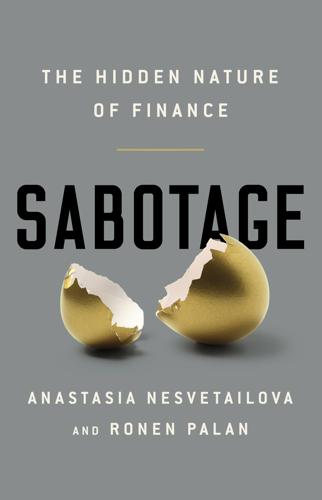
Sabotage: The Financial System's Nasty Business
by
Anastasia Nesvetailova
and
Ronen Palan
Published 28 Jan 2020
Wire and transfer fees will be decreased by using bitcoin, clearing and settlement can happen instantly, loans and credit applications can be assessed on the spot and consumers will have instant access to the funds they need and the answers they require.32 The political appeal of blockchain is rather unique. The Right cheers the ability of the technology to force a decentralization of the system and independence from formal governance structures. The Left sees an enormous potential of blockchain to democratize finance as a system that has become systemically corrupt, and thus empower people’s direct participation. Academics and economic historians are convinced that technology will forever change banking as we know it. Veblenians are among those who do not share the general enthusiasm. They cast a weary eye on blockchain and its offspring, as well as on the whole new fintech phenomenon.
…
The emergence of data as the most valuable asset in the digital capitalism of the twenty-first century, as well as tighter regulation of the traditional financial sector, is paving the way for a new means of doing the business of finance. Many of these innovations are celebrated in the market and beyond. Blockchain – a distributed ledger technology underpinning the drive – is heralded as the radically new way to connect people across various sectors and walks of life. It is rapidly transforming the way business is conducted and services are delivered, from the energy sector to adult entertainers, as well as public services such as insurance and healthcare. Blockchain is probably best compared to the financial equivalent of the invention of email, a seemingly isolated revolution in communication which back in the mid-1990s would herald the rise of a new type of economic organization.
…
Blockchain is probably best compared to the financial equivalent of the invention of email, a seemingly isolated revolution in communication which back in the mid-1990s would herald the rise of a new type of economic organization. Enthusiasts argue that a blockchain-powered economy can overcome a lot of the ills and costs of the traditional ways of doing business in finance. Currently, we rely on a dated financial system that depends on paper and outdated software. It is expensive and completely open to fraud and crime. Blockchain disrupts the current bank system by being a real-time updating digital ledger that cannot be changed. This takes paper and fraud out of the equation. Wire and transfer fees will be decreased by using bitcoin, clearing and settlement can happen instantly, loans and credit applications can be assessed on the spot and consumers will have instant access to the funds they need and the answers they require.32 The political appeal of blockchain is rather unique.

How to Fix the Future: Staying Human in the Digital Age
by
Andrew Keen
Published 1 Mar 2018
They can’t be secretly tampered with or spied upon. Viik describes this as “blockchain before blockchain.” Blockchain, by the way, is new technology that enables the creation of a public database that can’t be tampered with or altered. According to the Canadian futurists Don and Alex Tapscott, this blockchain technology, which they call the “trust protocol,” could be the most significant technological development since the invention of the internet.12 So what Viik means by his “blockchain before blockchain” comment is that while the Estonian ID system doesn’t contain formal blockchain technology, it nonetheless has a similar impact: creating what the Economist, in describing blockchain, called a “trust machine . . . the great chain of being sure about things.”13 As always with new new things, the technological details of this process are less interesting than its political and economic consequences.
…
According to the Canadian futurists Don and Alex Tapscott, this blockchain technology, which they call the “trust protocol,” could be the most significant technological development since the invention of the internet.12 So what Viik means by his “blockchain before blockchain” comment is that while the Estonian ID system doesn’t contain formal blockchain technology, it nonetheless has a similar impact: creating what the Economist, in describing blockchain, called a “trust machine . . . the great chain of being sure about things.”13 As always with new new things, the technological details of this process are less interesting than its political and economic consequences. And there are some extremely significant potential consequences of the Estonian government’s entry into the data business. According to Viik, one result might be a new type of rivalry between sovereign governments and Silicon Valley’s private superpowers. “Governments are realizing that they’re losing the digital identities of their citizens to American companies like Google, Facebook, Amazon, and Apple,” Viik explains.
…
Like it or not, this data is only going to grow exponentially with the development of smart homes, smart cars, smart cities, and, above all, all the other smart objects driving the internet of things. We don’t have a choice about any of this. But what we do have a choice about is the amount of transparency we demand of the governments or corporations that have access to our personal data. That’s why Viik’s attempt to create a blockchain-like transparency within the Estonian government’s database of information about its citizens is so important. It may not be an ideal solution but, outside of Utopia, this Estonian model is probably about as good as we are going to get. Speaking of Utopia, perhaps it should come as no surprise that in Thomas More’s little sixteenth-century book, the island of Utopia was organized on transparent principles similar to those in twenty-first-century Estonia.

The Quiet Coup: Neoliberalism and the Looting of America
by
Mehrsa Baradaran
Published 7 May 2024
The developers copied the hacker’s technique and managed to recover about 70 percent of the funds, but the solution was only temporary: the method would remain viable on the smart contract and thus hackers would be able to steal again. The only way to stop it permanently was a “hard fork,” which would split the blockchain into two parallel networks with the new blockchain run separately from the initial blockchain—essentially, a reset button that would restart the entire Ethereum blockchain anew. Because Ethereum runs on a purely consensus model across all the nodes, users discussed what should be done. It was an existential struggle: to the DAO and Ethereum developers who favored the hard fork, the integrity of the entire network was on the line; to the “code is law” camp who opposed it, a hard fork would compromise the very theory on which the entire enterprise was based.
…
The competition for yield-producing investments has led to the generation of creative new forms of assets that manufacture scarcity out of thin air, such as the non-fungible token (NFT). An innovation made possible by the blockchain—the distributed ledger network underlying cryptocurrencies—NFTs are unique digital assets that use blockchain to prove ownership and scarcity, sort of like digital collectibles or artwork. The assets themselves are usually a JPEG or a meme of something funny or artistic or interesting. The “thing”—if one can even use such a traditional descriptor—being purchased is an exclusive right to a concept. The purchase of an NFT confers upon its owner a right to say “this thing on the blockchain is mine and no one else can own it but me.” Anyone can look at the image or download it, but an NFT can have only one true owner, a feature that marks a property right.
…
Bitcoin sought to create the monetary system of Hayek’s and Friedman’s dreams—rooted in scarcity and free of state control. The explosion of cryptocurrencies and the so-called blockchain revolution began with the launch of bitcoin, which began as a reaction to the bank bailouts. In 2009, Satoshi Nakamoto—a pseudonym for the actual creator—laid out the code and logic of bitcoin. Bitcoin was a new form of currency, “mined” by computer algorithm through end-to-end encryption that would be a fixed unit of exchange existing on the blockchain. Embedded in the genesis block of code upon which all bitcoin could be “mined” was a single line of text: “The Times 03/Jan/2009 Chancellor on brink of second bailout for banks.”
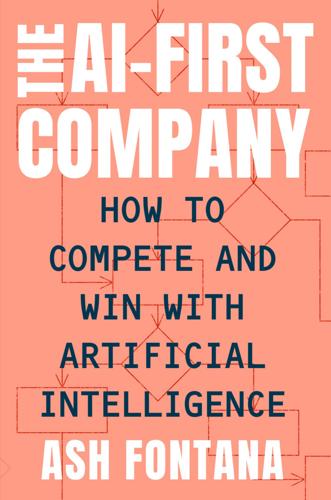
The AI-First Company
by
Ash Fontana
Published 4 May 2021
The idea is to issue a crypto token to a group of people, they submit data to a data network, that data is sold, and the revenue is then distributed back to the owners of the tokens. The blockchain offers two benefits in building a data network. First, blockchains can verify the provenance of data. The data gets a unique identifier upon submission that is recorded by every entity on the blockchain. When someone has a question about when, or even whether, that data was submitted, query the blockchain. Provenance is all but guaranteed where the blockchain has a sufficiently large number of entities verifying transactions. Second, crypto tokens are a way to securely and automatically pay data contributors.
…
This is different from customer-contributed data, the difference being that customers pay for the AI-First product, whereas consumers just take the output of a product. CONSUMER GENERATED Token-Based Incentives Blockchain-based ownership tokens, or crypto tokens, can be used to incentivize people to submit data to a network. Given that these tokens are relatively new, it’s worth defining some terms. Blockchain: a decentralized and distributed public ledger of transactions. Crypto token: a representation of an asset that is kept on a blockchain. Data network: a set of data that is built by a group of otherwise unrelated entities rather than a single entity. The idea is to issue a crypto token to a group of people, they submit data to a data network, that data is sold, and the revenue is then distributed back to the owners of the tokens.
…
Token owners get paid according to their contributions of data to the network, verified by all entities on the blockchain. Tokens are verified by a decentralized set of entities, meaning that no one party can invalidate a token owner’s claim to payment. Token management systems are scalable for two reasons: one, because, once registered, ownership doesn’t need to be changed or managed, and two, payments are automatically calculated based on a formula depending on the contribution, reducing the potential for conflict between the system operator and contributors. The challenge of running a data network on the blockchain is standardization via validation—that is, automatic compensation for contributions requires automatic verification upon submission.

The Economic Singularity: Artificial Intelligence and the Death of Capitalism
by
Calum Chace
Published 17 Jul 2016
The answer just might be the blockchain. Blockchain People have gone mad trying to understand how the blockchain works, never mind trying to explain it. Its most famous application is Bitcoin, the world’s first completely decentralized digital currency.[cccxlix] In just a few years, the Bitcoin “economy” has grown larger than the economies of some countries. The value of a Bitcoin has fluctuated wildly, hitting a peak of $1,216 in November 2013. The insights which made Bitcoin possible were published in 2008 under the pseudonym Satoshi Nakamoto, and the blockchain is at the heart of it. The blockchain is a public ledger which records transactions.
…
[cccl] Digital currency is only one of the possible applications of blockchain technology. It can register and validate all sorts of transactions and relationships. For instance, it could be used to manage the sale, lease or hire of a car. When you take possession of a car, it could be tagged with a cryptographic signature, which would mean that you are the only person who could open and start the car.[cccli] The revolutionary benefit of the blockchain is that all kinds of agreements can be validated without setting up a centralised institution to do so. By removing the need for a central intermediary, the blockchain can reduce transaction costs, and it can enhance privacy: no government agents need have access to your data without your permission.
…
Your transaction is published on the blockchain’s network as soon as it is agreed, but it is only confirmed, and hence reliable, when a miner has incorporated it into a block. Satoshi Nakamoto’s innovation solved a previously intractable challenge in computer science known as the Byzantine General’s Problem. Imagine a mediaeval city surrounded by a dozen armies, each led by a powerful general. If the armies mount a co-ordinated attack, their victory is assured, but they can only communicate by messengers on horseback who visit the generals one by one, and some of the generals are untrustworthy. The blockchain provides a way for each general to know that a message calling for an attack at a particular time is genuine, and has not been fabricated by a dishonest general before it reached him.
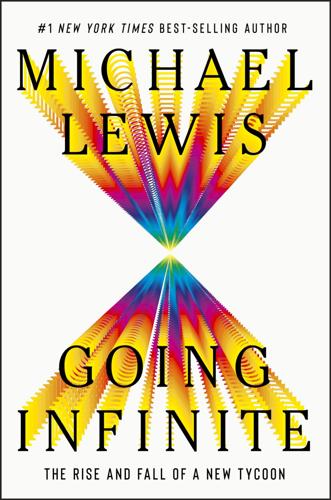
Going Infinite: The Rise and Fall of a New Tycoon
by
Michael Lewis
Published 2 Oct 2023
Serum was more like a currency in the private board game Sam never stopped playing inside his own mind. Serum was Sam’s bet on blockchains replacing, say, the New York Stock Exchange or, for that matter, FTX. Blockchains were just communally maintained records of who owned what and when they’d owned it. They could keep track of any transaction. It was at least theoretically possible that they could keep track of all financial transactions. The Serum tokens that Friedberg had been paid gave their owner trading discounts on, voting rights over, and a slice of the tiny fee charged for any financial transaction that occurred on the Solana blockchain. Which sounded great. The problem was that there were relatively few financial transactions on the Solana blockchain.
…
The Goldman guys and the venture capitalists and the corporate lawyers turned crypto bros—they were all part of this invasion of conventional people who wanted to make fast money without the kookiness that had made the fast money possible. The pseuds would seek common ground with the original crypto religionists by exhibiting their excitement about the technology. The blockchain! The blockchain is going to change . . . everything, they’d say, and hope that would suffice. A religion based on hating banks and government and any sort of institutional authority—well, for the pseuds, that was usually taking things too far. The crypto religionists, the people who had been drawn to the cause for their own reasons, had, at best, mixed feelings about the people who came to it later, and just for the money.
…
And those were just the trading profits; the numbers didn’t include the seemingly vast unrealized gains on Sam’s token stashes. In March 2020, a Silicon Valley engineer named Anatoly Yakovenko launched a new and better blockchain that offered a solution to maybe Bitcoin’s biggest weakness as a means of exchange: it was way too slow. Bitcoin could only validate seven transactions a second. The new Solana blockchain promised to process up to sixty-five thousand transactions a second. Sam had no independent ability to evaluate the thing, but he asked people who did and soon decided that Solana might be the crypto of the future.
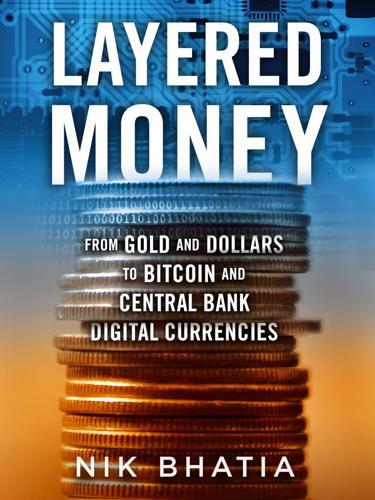
Layered Money: From Gold and Dollars to Bitcoin and Central Bank Digital Currencies
by
Nik Bhatia
Published 18 Jan 2021
Bitcoin’s design combines SHA2 with intelligent rules so elegant that it’s able to embody gold’s monetary properties in the digital world. Bottom line, the cryptography used by Satoshi was proven and secure. These ingenious rules built a coordination mechanism that he called a “chain of blocks,” but the world would come to call it Bitcoin’s blockchain. Computer Science Before diving into the specific technical innovations of Bitcoin’s blockchain that made it a successful digital currency, we have to acknowledge that understanding Bitcoin on a technical level requires an abundance of computer science expertise. Textbooks have been written on the Bitcoin software, filled with programming-level detail on all of Bitcoin’s major components including keys, addresses, wallets, transactions, and mining.
…
You can share your Bitcoin address with anybody sending you money, but only with your password, called a private key, can you spend it. Email is a protocol to send and receive data; its formal name is Simple Mail Transfer Protocol (SMTP). Bitcoin is also a protocol, but to send and receive value instead of data. Blockchain and Bitcoin Mining What makes Bitcoin tantamount to gold, human civilization’s most proven monetary asset? The answer lies in the rules of the Bitcoin protocol. The Bitcoin blockchain most fundamentally describes a record of transactions simultaneously kept by all peers in the network. In order to properly define blocks and chains, let’s first dive a little deeper into the word peer.
…
Once a miner successfully mines a block and wins BTC as a result, the block becomes an update to Bitcoin’s shared transaction ledger so that every peer in the network has the latest understanding of which Bitcoin addresses are associated with exactly how much BTC. Blocks become chained together during this process to leave an accounting record, the Bitcoin blockchain, for all peers to witness. The term blockchain has grown in popularity, but distributed ledger technology is a simpler way to describe a network structure whereby all peers keep a ledger, or a record of transactions. For this reason, the term Distributed Ledger Technology (DLT) has been adopted by central banking research departments to describe software that mimics Bitcoin’s original distributed ledger design.
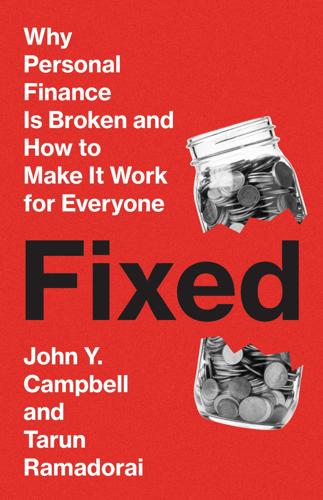
Fixed: Why Personal Finance is Broken and How to Make it Work for Everyone
by
John Y. Campbell
and
Tarun Ramadorai
Published 25 Jul 2025
Providers of distributed ledgers compete with one another, issuing a bewildering array of “tokens” or cryptocurrencies that serve as a medium of exchange for transactions on particular blockchains or across blockchains. There is much to like about DeFi, and there is clearly potential to use the technology to reduce the market power of large, traditional financial institutions. But it has become clear that DeFi holds many dangers, particularly in the provision of cryptocurrencies. The first danger is that direct access to the blockchain, including to holdings of a cryptocurrency, requires the use of a private key with which people can validate their identity.
…
A leading example, which we discuss below, is decentralized finance (DeFi), the use of blockchain technology to design financial instruments and operate markets without relying on large, regulated financial institutions. DeFi institutions have arisen that mimic the functions of traditional finance: cryptocurrency exchanges, for example, are the crypto equivalent of both stockbrokers and stock exchanges. We argue that these institutions are in fact more dangerous to ordinary investors than the equivalent institutions in traditional finance. While blockchain code may not be manipulable once written, it is also impossible for ordinary people to read or understand, and it is difficult for courts to intervene to enforce commonsense solutions to fraud and abuse.
…
We argue that this fast-growing area exemplifies how potentially valuable financial technology has outrun the regulation that has evolved to limit abuses in traditional finance. DeFi is a broad term covering the notion of a financial system built on blockchain technology, which creates a “distributed digital ledger” that is maintained by a consensus of participants and cannot be manipulated once created. The distributed ledger is a publicly accessible record, which eliminates the reliance of financial services on private records held by individual financial institutions. “Smart contracts” can be set up as self-executing code that will run on the blockchain to generate transactions that automatically pay off under mutually agreed contingencies, thus further reducing the reliance on financial intermediaries.
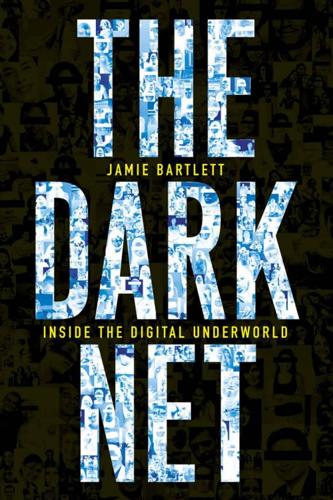
The Dark Net
by
Jamie Bartlett
Published 20 Aug 2014
‘He got a sceptical reception at first,’ recalls Hal Finney, the veteran cypherpunk who’d seen several proposals come and go. But Finney noticed Satoshi had included something he’d not really seen before, something called a blockchain. A quantity of Bitcoin is stored at a Bitcoin address, the key to which is a unique string of letters and numbers that can be kept on a website, desktop, mobile phone, or even a piece of paper. Every time someone sends a Bitcoin as payment, a record of the transaction is stored in something called the blockchain. Transactions are collected into blocks, with each block representing about 10 minutes’ worth of transactions. The blocks are ordered chronologically, and each includes a digital signature (a ‘hash’) of the previous block, which administers the ordering and guarantees that a new block can join the chain only if it starts from where the preceding one finishes.
…
The blocks are ordered chronologically, and each includes a digital signature (a ‘hash’) of the previous block, which administers the ordering and guarantees that a new block can join the chain only if it starts from where the preceding one finishes. A copy of the blockchain record – a record every single transaction ever made – is maintained by everyone who has installed the Bitcoin software. To ensure everything is running as it should, the blockchains are constantly verified by the computers of everyone else using the software. The upshot of all this is that, at any point, the system knows exactly how many Bitcoins I have in my wallet, so they cannot be copied or spent twice.
…
He even added an out-of-place line of text into the ‘genesis block’ (the very first bit of the blockchain – his transactions with Finney), which read: ‘The Times 03/Jan/2009 Chancellor on brink of second bailout for banks.’ To keep governments and central banks out of it, Satoshi placed a cap on the total number of Bitcoins that could ever be produced: 21 million. Although Bitcoins can be bought and sold with real-world currencies, new Bitcoins are not minted by any central authority. Instead anyone who dedicates his computing power to verifying the transactions in the blockchain competes to earn a very small amount of new Bitcoins each time they do so (this is called ‘mining’).
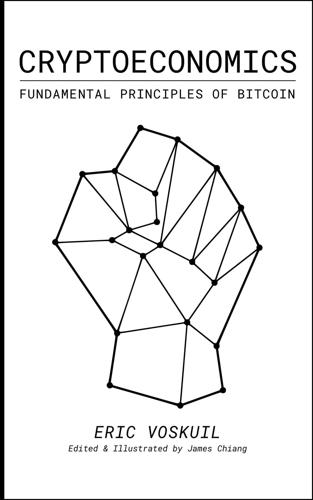
Cryptoeconomics: Fundamental Principles of Bitcoin
by
Eric Voskuil
,
James Chiang
and
Amir Taaki
Published 28 Feb 2020
A merchant can cease to accept any money, which reduces the utility of the money. This can be considered a custodial risk, but not a default as the merchant has accepted no obligation to trade for the money. As shown in Fragmentation Principle4, changing merchant acceptance is the nature of a split. As shown in Blockchain Fallacy [121] , “blockchain technology” can offer no defense against custodial default. A “tokenized” asset is a security. The opportunity for fraud or theft by the custodian, either directly or as compelled by the state, is not reduced. Just as with commodity monies, such as gold, the custodial risk reduction afforded by Bitcoin is not a consequence of technology or contractual obligation, but the size of its economy.
…
Bitcoin as a money [446] is non-custodial. Its units do not represent an asset held by a trusted third party. The money is traded directly between customer and merchant . In this sense all merchants are custodians of Bitcoin’s value . The blockchain fallacy arises from a misconception of the Bitcoin security model, attributing security to its technology as opposed to its distribution of merchants. The term “blockchain technology” reinforces this error, implying that it is primarily the structure of Bitcoin’s data that secures it. Brand Arrogation Bitcoin is a set of essential concepts [447] , not a chain . No person can control the concepts.
…
ISBN: 978-1-7350608-1-1 Contents Title Page Copyright Author Editor & Illustrator Acknowledgements Foreword Preface Introduction SECURITY MODEL Axiom of Resistance Censorship Resistance Property Centralization Risk Cockroach Fallacy Consensus Property Cryptodynamic Principles Custodial Risk Principle Hearn Error Hoarding Fallacy Jurisdictional Arbitrage Fallacy Other Means Principle Patent Resistance Principle Permissionless Principle Prisoner’s Dilemma Fallacy Private Key Fallacy Proof of Work Fallacy Public Data Principle Qualitative Security Model Risk Sharing Principle Social Network Principle Threat Level Paradox Value Proposition STATISM Fedcoin Objectives Inflationary Quality Fallacy Reservation Principle Reserve Currency Fallacy State Banking Principle Mining ASIC Monopoly Fallacy Balance of Power Fallacy Byproduct Mining Fallacy Causation Fallacy Decoupled Mining Fallacy Dedicated Cost Principle Efficiency Paradox Empty Block Fallacy Energy Exhaustion Fallacy Energy Store Fallacy Energy Waste Fallacy Fee Recovery Fallacy Halving Fallacy Impotent Mining Fallacy Miner Business Model Pooling Pressure Risk Proximity Premium Flaw Relay Fallacy Selfish Mining Fallacy Side Fee Fallacy Spam Misnomer Variance Discount Flaw Zero Sum Property ALTERNATIVES Bitcoin Labels Blockchain Fallacy Brand Arrogation Consolidation Principle Dumping Fallacy Fragmentation Principle Genetic Purity Fallacy Hybrid Mining Fallacy Maximalism Definition Network Effect Fallacy Proof of Cost Fallacy Proof of Memory Façade Proof of Stake Fallacy Replay Protection Fallacy Shitcoin Definition Split Credit Expansion Fallacy Split Speculator Dilemma ECONOMICS Credit Expansion Fallacy Depreciation Principle Expression Principle Full Reserve Fallacy Inflation Principle Labor and Leisure Production and Consumption Pure Bank Savings Relation Speculative Consumption Subjective Inflation Principle Time Preference Fallacy MONEY Collectible Tautology Debt Loop Fallacy Ideal Money Fallacy Inflation Fallacy Money Taxonomy Regression Fallacy Reserve Definition Risk Free Return Fallacy Thin Air Fallacy Unlendable Money Fallacy PRICE Lunar Fallacy Price Estimation Scarcity Fallacy Stability Property Stock to Flow Fallacy SCALABILITY Auditability Fallacy Scalability Principle Substitution Principle Utility Threshold Property Glossary of Terms Author Eric Voskuil Eric Voskuil is a major contributor to Libbitcoin [1] , a free and open source high performance Bitcoin developer toolkit.

Whiplash: How to Survive Our Faster Future
by
Joi Ito
and
Jeff Howe
Published 6 Dec 2016
It’s also entirely possible that Bitcoin itself, the currency, collapses and becomes little more than an answer to a Trivial Pursuit question. So the second and far more important reason to pay attention is that the blockchain—the technology that makes Bitcoin possible—has implications far beyond the future of currencies and financial services. The blockchain is, in our estimation, likely to change the very relationship between individuals and institutions, a revolution in the nature of authority. The importance of Bitcoin and the blockchain—in simple terms, the public ledger in which every Bitcoin transaction that has ever taken place is recorded—lies in its architecture, a structure based on the understanding that the network will pull the resources necessary to its formation and maintenance, without the need for a central director orchestrating, pushing the organization of those resources.
…
Because the total number of bitcoins is limited—no more than twenty-one million can be produced with the current code—and the rate of block creation stays fairly constant, the number of bitcoins created by each block must decline over time. Thus, the system is designed so that the proof-of-work functions used to verify transactions become increasingly difficult, making it harder to mine new bitcoins. The number of bitcoins created by the blockchain is set to decrease by 50 percent every four years. As a result, while the earliest bitcoin miners could use their personal computers to validate the blockchain, today’s miners use specialized, high-end server farms. In late 2014, one of those operations comprised six sites in China that collectively produce eight petahashes of computation per second, creating 4,050 bitcoins per month.
…
Casey, “Linked-In, Sun Microsystems Founders Lead Big Bet on Bitcoin Innovation,” Moneybeat blog, Wall Street Journal, November 17, 2014, http://blogs.wsj.com/moneybeat/2014/11/17/linked-in-sun-microsystems-founders-lead-big-bet-on-bitcoin-innovation/. 46 “Enabling Blockchain Innovations with Pegged Sidechains,” r/Bitcoin, Reddit, http://www.reddit.com/r/Bitcoin/comments/2k070h/enabling_blockchain_innovations_with_pegged/clhak9c. 47 Timothy Leary, “The Cyber-Punk: The Individual as Reality Pilot,” Mississippi Review 16, no. 2/3 (1988). 48 T.F. Peterson, Nightwork (Cambridge, MA.: The MIT Press, 2011), https://mitpress.mit.edu/books/nightwork. 49 While the science on the human microbiome, which includes gut bacteria, is still evolving, there’s intriguing evidence that our bacteria have a strong influence not only on our health, but also on our behavior.
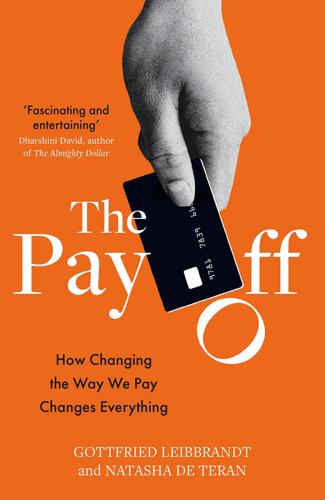
The Pay Off: How Changing the Way We Pay Changes Everything
by
Gottfried Leibbrandt
and
Natasha de Teran
Published 14 Jul 2021
Nonetheless, I struck up a conversation with a man who ran a company that ‘did something with blockchain’. I asked him what the business model was. ‘I just raised $20 million through an ICO,’ he said. ‘That pays for everything.’1 No wonder he seemed to be enjoying life. Upstairs was a better-lit room, some fifty chairs and a podium. The chairs were all occupied and a few people were wearing suit jackets. I began to feel more at home. The young man on the podium was explaining how he was going to put woven skirts made in Indonesia on the blockchain; he was looking for investors. Another man asked the room whether anyone wanted to invest and several jacketed hands immediately went up.
…
An API call could specify the details of a transfer, including account numbers and amounts, and in return the caller would receive an acknowledgement that the payment has been executed. Without most of us noticing, APIs have already transformed the way in which we use the internet and our mobile phones, and they are now truly revolutionising how we pay. And – sacrilege, we know, for true believers – they can achieve many of the benefits promised by the much touted blockchain technology that underpins cryptocurrencies like Bitcoin (which we’ll look at in Chapter 22). These APIs allow others – whether foreign behemoths like Amazon and Google or local Indian providers – to embed UPI within their mobile apps. The result is the ‘seamless payment experience’. The apps enable buyers to pay by exchanging QR codes with merchants and merchants to present customers with electronic invoices that can be paid through UPI.
…
So to spend part of the BTC 0.02 you sent me, I will perform a transaction that destroys the token you sent me while creating two new tokens as output, each of which has to be assigned to a public address (public key) of a payee. I will send/assign the first token to the public key/address of the person I need to pay, and the second token back to myself, as change. Figure 4 demonstrates how this transaction would appear on the public ledger/blockchain. It shows one input, for BTC 0.02 (around $600), with its public key/address (14R534V. . .). Since this input is the token you sent me earlier, this is the address that I gave you when you paid me. Because I have the corresponding private key, I can prove that I own this input token. Figure 4.

Survival of the Richest: Escape Fantasies of the Tech Billionaires
by
Douglas Rushkoff
Published 7 Sep 2022
Chapter 2: Mergers and Acquisitions 25 Tech companies actively sought : Douglas Rushkoff, Cyberia: Life in the Trenches of Hyperspace (New York: HarperOne, 1994). 25 “new communalists” : Fred Turner, From Counterculture to Cyberculture: Stewart Brand, the Whole Earth Network, and the Rise of Digital Utopianism (Chicago: University of Chicago Press, 2006). 26 Operation Sundevil : Bruce Sterling, The Hacker Crackdown: Law and Disorder on the Electronic Frontier (New York: Bantam, 1992). 26 “Governments of the Industrial World” : John Perry Barlow, “A Declaration of the Independence of Cyberspace,” Electronic Frontier Foundation, 1996, https:// www .eff .org /cyberspace -independence. 26 fungus and bacteria : Qi Hui Sam, Matthew Wook Chang, and Louis Yi Ann Chai, “The Fungal Mycobiome and Its Interaction with Gut Bacteria in the Host,” International Journal of Molecular Sciences , February 4, 2017, https:// www .ncbi .nlm .nih .gov /pmc /articles /PMC5343866 /. 28 extolled the virtues of the deal : Saul Hansell, “America Online Agrees to Buy Time Warner for $165 Billion; Media Deal is Richest Merger,” New York Times , January 11, 2000, https:// www .nytimes .com /2000 /01 /11 /business /media -megadeal -overview -america -online -agrees -buy -time -warner -for -165 -billion .html. 28 the piece I wrote placed in the Guardian : Douglas Rushkoff, “Why Time Is Up for Warner,” Guardian , January 20, 2000, https:// www .theguardian .com /technology /2000 /jan /20 /onlinesupplement10. 29 People blamed : Seth Stevenson, “The Believer,” New York Magazine , July 6, 2007, https:// nymag .com /news /features /34454 /. 30 hired investment bank Salomon Smith Barney : Tim Arango, “How the AOL–Time Warner Merger Went So Wrong,” New York Times , January 10, 2010, https:// www .nytimes .com /2010 /01 /11 /business /media /11merger .html. 31 probably borrowed : Steven Levy, Facebook: The Inside Story (New York: Blue Rider Press, 2020). 32 stocks quadruple : Lisa Pham, “This Company Added the Word ‘Blockchain’ to Its Name and Saw Its Shares Surge 394%,” Bloomberg , October 27, 2017, https:// www .bloomberg .com /news /articles /2017 -10 -27 /what -s -in -a -name -u -k -stock -surges -394 -on -blockchain -rebrand. 33 “independent, host-led local organizations” : Dave Lee, “Airbnb Using ‘Independent’ Host Groups to Lobby Policymakers,” Financial Times , March 21, 2021, https:// www .ft .com /content /1afb3173 -444a -47fa -99ec -554779dde236. 33 Google was outspending : Shaban Hamza, “Google for the First Time Outspent Every Other Company to Influence Washington in 2017,” Washington Post , January 23, 2018, https:// www .washingtonpost .com /news /the -switch /wp /2018 /01 /23 /google -outspent -every -other -company -on -federal -lobbying -in -2017 /. 33 outspent by Facebook : Lauren Feiner, “Facebook Spent More on Lobbying than Any Other Big Tech Company in 2020,” CNBC , January 22, 2021, https:// www .cnbc .com /2021 /01 /22 /facebook -spent -more -on -lobbying -than -any -other -big -tech -company -in -2020 .html. 33 Numerous studies : Martin Gilens and Benjamin I.
…
They had come to ask questions. They started out innocuously and predictably enough. Bitcoin or Ethereum? Virtual reality or augmented reality? Who will get quantum computing first, China or Google? But they didn’t seem to be taking it in. No sooner would I begin to explain the merits of proof-of-stake versus proof-of-work blockchains than they would move to the next question. I started to feel like they were testing me—not my knowledge so much as my scruples. Eventually, they edged into their real topic of concern: New Zealand or Alaska? Which region will be less impacted by the coming climate crisis? It only got worse from there.
…
In the new, improved, post-crash version of Silicon Valley, extreme capitalism rules. Digital technology is valued most for its ability to scale a business without needing to hire many human beings, and to provide the earnings or—as is more often the case—the hype required to boost the share price. (Companies that add trendy words like “blockchain” to their names have seen their stocks quadruple .) Following AOL’s example of mailing free disks, companies scramble to get subscribers at any cost. A company can lose money for years, as long as its user base is rising—preferably at an exponential rate. But it’s not all abstract. Hockey stick user growth leads to hockey stick stock growth.

The Evolution of Everything: How New Ideas Emerge
by
Matt Ridley
Jeff Garzik, a bitcoin developer, calls it ‘the biggest thing since the internet – a catalyst for change in all areas of our lives’. Blockchains for all What are these enthusiasts on about? The ‘blockchain’ technology behind bitcoin could prove to be an ingredient of an entire new world of technology, as big as the internet itself, a wave of innovation that drives the middleman out of much commerce and leaves us much more free to exchange goods and services with people all over the world without going through corporate intermediaries. It could radically decentralise society itself, getting rid of the need for banks, governments, even companies and politicians. Take the example of Twister, a blockchain-based rival to Twitter, built entirely on a peer-to-peer network.
…
The one thing that’s missing, but that will soon be developed, is a reliable e-cash,’ said Milton Friedman. And it is not just e-cash; it is the technology behind bitcoin that could finally decentralise not just the internet but society too. The blockchain technology that makes bitcoin work has far-reaching implications. The bizarre evolution of blockchains The story begins in 1992, when the internet was just beginning to emerge. A wealthy computer pioneer named Tim May invited a group of people to his house in Santa Cruz to discuss how to use ‘cryptologic methods’ on networked computers to break down barriers of intellectual property and government secrecy.
…
One of the pithiest explanations I have come across is in a recent launch by Ethereum, a business built to follow up on bitcoin: ‘The innovation provided by Satoshi is the idea of combining a very simple decentralised consensus protocol, based on nodes combining transactions into a “block” every ten minutes, creating an ever-growing blockchain, with proof of work as a mechanism through which nodes gain the right to participate in the system.’ If you think that’s hard to understand, you are not alone. I have yet to come across a description of blockchain technology in English, as opposed to mathematics, that is really clear. In outline, I know that bitcoin is effectively a public ledger – a compendium of transactions, stored by bitcoin users all over the world.

Nexus: A Brief History of Information Networks From the Stone Age to AI
by
Yuval Noah Harari
Published 9 Sep 2024
Dionysis Zindros, “The Illusion of Blockchain Democracy: One Coin Equals One Vote,” Nesta Foundation, Sept. 14, 2020, www.nesta.org.uk/report/illusion-blockchain-democracy-one-coin-equals-one-vote/; Lukas Schädler, Michael Lustenberger, and Florian Spychiger, “Analyzing Decision-Making in Blockchain Governance,” Frontiers in Blockchain 23, no. 6 (2023); PricewaterhouseCoopers, “Estonia—the Digital Republic Secured by Blockchain,” 2019, www.pwc.com/gx/en/services/legal/tech/assets/estonia-the-digital-republic-secured-by-blockchain.pdf; Bryan Daugherty, “Why Governments Need to Embrace Blockchain Technology,” Evening Standard, May 31, 2023, www.standard.co.uk/business/government-blockchain-technology-business-b1080774.html. 8.
…
Some people believe that blockchain could provide a technological check on such totalitarian tendencies, because blockchain is inherently friendly to democracy and hostile to totalitarianism. In a blockchain system, decisions require the approval of 51 percent of users. That may sound democratic, but blockchain technology has a fatal flaw. The problem lies with the word “users.” If one person has ten accounts, she counts as ten users. If a government controls 51 percent of accounts, then the government constitutes 51 percent of the users. There are already examples of blockchain networks where a government is 51 percent of users.7 And when a government is 51 percent of users in a blockchain, it gives the government control not just over the chain’s present but even over its past.
…
Many rabbis further argued that God created the Torah at the very dawn of time so that even biblical characters who lived before Moses—like Noah and Adam—read and studied it.26 The other parts of the Bible also came to be seen as a divinely created or divinely inspired text, totally different from ordinary human compilations. Once the holy book was sealed, it was hoped that Jews now had direct access to Jehovah’s exact words, which no fallible human or corrupt institution could erase or alter. Anticipating the blockchain idea by two thousand years, Jews began making numerous copies of the holy code, and every Jewish community was supposed to have at least one in its synagogue or its bet midrash (house of study).27 This was meant to achieve two things. First, disseminating many copies of the holy book promised to democratize religion and place strict limits on the power of would-be human autocrats.
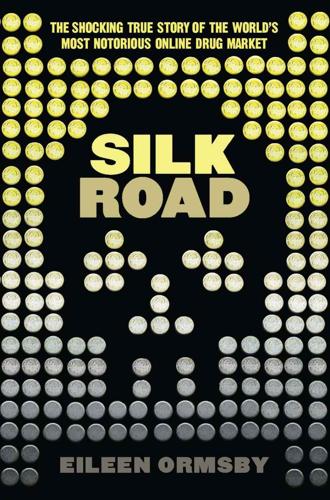
Silk Road
by
Eileen Ormsby
Published 1 Nov 2014
The important feature of bitcoin is that it is both completely transparent and, if users know what they are doing, completely anonymous. It is transparent in that anyone can view any transaction that has occurred in any account (or ‘wallet’) at any time they want. Every transaction is recorded in a database known as the ‘blockchain’. Several websites, which anyone can visit and view, keep track of all transactions on the blockchain. Without further information, however, it is impossible to tell who owns the account you are looking at. So while, for example, you might be able to see that $20,000 worth of bitcoin was transferred from bitcoin address 1LK5HQqU6M9qyWSUhfPnV6xtKBCocUp6PY to bitcoin address 13g7xpD27XWDg5NX9dRLEdqumUNL6koh6H, unless the owners of those addresses have advertised the fact, there is no way of knowing who owns either of them.
…
Rather than shovels and earthmovers, bitcoins were designed to be mined by computers performing complex mathematical equations, or what Nakamoto called ‘proof-of-work’. In order to prevent people attempting to ‘double spend’ bitcoin, every transaction record had to be added to the blockchain, which became proof that a legitimate transaction had taken place and the bitcoin had changed from one wallet to another. Mining involved computers adding those records to the blockchain. As more transactions took place, it became more difficult for a computer to perform the equation that confirmed the transaction. People who set their computers to compete with each other to be the first to solve the equation were known as ‘miners’, and the miner of the computer that solved the equation would be rewarded in bitcoin.
…
As with most sham schemes, BST provided the returns to those who wanted them, and ‘reinvested’ for those who wanted the cumulative interest effect. It managed to run until August 2012, collecting around 700,000 bitcoin, until Bitcointalk became filled with complaints and suspicions. As people examined the blockchain in the aftermath, the internet sleuths of Bitcointalk uncovered a very large wallet that they soon determined belonged to Silk Road. From this, some concluded BST was in fact a clever money-laundering scheme that accepted investors’ bitcoin and returned to them Silk Road’s funds, effectively ‘washing’ the dirty money.

MegaThreats: Ten Dangerous Trends That Imperil Our Future, and How to Survive Them
by
Nouriel Roubini
Published 17 Oct 2022
“The concept of renting, the concept of a mortgage, the concept of all this stuff is going to be challenged with this new world because the funding sources are flexible,” says LoanSnap founder Karl Jacob. Using BaconCoin, LoanSnap aims to revolutionize home buying by sharing mortgages via the blockchain that can etch every transaction from day one.20 The first such mortgages changed hands in late 2021. Once inscribed on a blockchain visible to every user, new transactions update the status quo but, in principle, no one can alter or hack what occurred in the past. The rush to DeFi is premature and ultimately misguided. The rapid rise of Bitcoin, Ethereum, Dogecoin, and thousands of fledgling cryptocurrencies since 2010 exposes our collective wilting faith in the ability of governments to back the money they issue.
…
A lot of crypto consists of mostly manipulative Ponzi schemes. If we want to revamp a centralized financial system with safeguards and supervision, we don’t need crypto or blockchain. Artificial intelligence, machine learning, big data, 5G, and the Internet of Things can speed transactions, lower costs, and increase reliability. These centralized fintech tools and firms collect and process detailed financial data at blistering speeds without any use of blockchain. Hundreds of firms worldwide have entered the fray with payment systems that handle billions of daily consumer and business-to-business transactions. Companies in the United States and China dominate the industry, but markets have sprouted in other advanced and developing economies.
…
Will the US dollar retain its global reserve currency status or be replaced by the Chinese renminbi or other arrangements now that the dollar is increasingly weaponized? Will cryptocurrencies replace all traditional currencies, or will central bank digital currencies (CBDCs) prevail and displace cryptocurrencies? Will high costs and inefficiencies doom venerable financial institutions and usher in decentralized finance built with blockchain technology? Or will centralized fintech—rather than DeFi—challenge traditional banks and financial institutions? These critical questions beg for sensible answers. Data are still coming in. We can point now to tentative conclusions, but we absolutely must figure out the future of money, finance, and reserve currencies, stable or unstable as they may be.
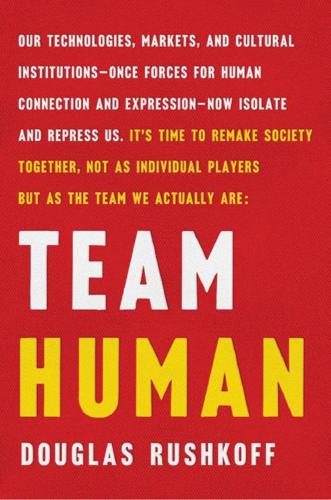
Team Human
by
Douglas Rushkoff
Published 22 Jan 2019
More countercultural solutions, such as bitcoin and the blockchain, are no less technosolutionist in spirit. The blockchain replaces the need for central authorities such as banks by letting everyone on a network authenticate their transactions with computer encryption. It may disintermediate exploitative financial institutions but it doesn’t help rehumanize the economy, or reestablish the trust, cohesion, and ethos of mutual aid that was undermined by digital capitalism. It simply substitutes for trust in a different way: using the energy costs of blockchain mining as a security measure against counterfeiting or other false claims.
…
(The computer power needed to create one bitcoin consumes at least as much electricity as the average American household burns through in two years.) Is this the fundamental fix we really need? A better ledger? The problem the blockchain solves is the utilitarian one of better, faster accounting, and maybe an easier way to verify someone’s identity online. That’s why the banking industry has ultimately embraced it: the quicker to find us and drain our assets. Progressives, meanwhile, hope that the blockchain will be able to record and reward the unseen value people are creating as they go about their lives—as if all human activity were transactional and capable of being calculated by computer.
…
Heck, humans are the natives, subject to unpredictable ebbs and flows of emotions and hormones and irrational needs. Singularitans consider technology more trustworthy than humans. Surveillance is not just a profit center for social media, but a way of safeguarding digital society from human resistance. Code enforces rules without bias (unless, of course, you happen to be the coder). It’s a blockchain reality, where machines execute the letter of the law without any sense of the spirit. So much the better to accelerate development and reach the singularity before the clock runs out on the habitable biosphere. Computers and artificial intelligences are pure intention, not clouded or tempered by human social priorities or moral misgivings.
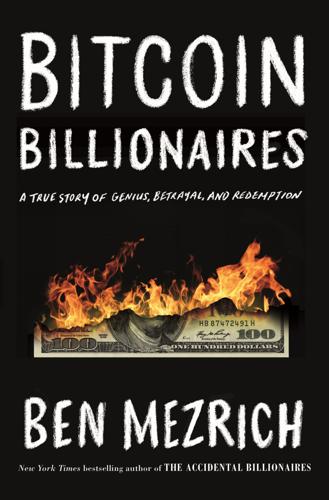
Bitcoin Billionaires: A True Story of Genius, Betrayal, and Redemption
by
Ben Mezrich
Published 20 May 2019
And the golden ticket, which will grant him a tour of Willy Wonka’s factory, is like the block reward. Now suppose that by searching for this golden ticket, Charlie is also simultaneously validating purchases of candy bars and recording them in the factory’s business ledger—the Willy Wonka blockchain. And suppose there are many Charlies all around the world doing the same thing, searching for that golden ticket. As they open Wonka bars, they are auditing the Wonka blockchain and checking one another’s work. Willy Wonka’s contest has miraculously incentivized children around the world to work together to validate and record transactions of Wonka bars, helping Willy keep track of who paid for what, thereby protecting his profits and ensuring that his factory stays in business and can continue to make chocolate for everyone.”
…
Voorhees explained how Bitcoin “miners”—people with computers running specialized software—validate and audit bitcoin transactions by solving complex math problems generated by the transactions themselves. Once a miner has solved the math puzzle for a new “block” of transactions, the block is added to the Bitcoin “blockchain,” the global ledger of every bitcoin transaction since the beginning of time. For their effort, miners were rewarded by the network with newly minted bitcoins. This is known as the “block reward.” And the more computing power a miner brings to the network, the greater the chance they have of solving the math problems and winning the block reward.
…
“Cameron said it first—‘this is either complete bullshit or the next big thing,’ ” Tyler said. His father nodded, looking out at the water. They’d already discussed Bitcoin at length on the phone and during breakfast that morning. His father had immediately seen the mathematical beauty behind the now three-year-old cryptocurrency. The elegance of the blockchain—the open, decentralized ledger where transactions were permanently recorded—immediately made sense to him, and the brilliance of Bitcoin itself, of a currency backed by math and cryptography, with a fixed supply mined by computers running complex equations, certainly thrilled his mathematical mind.
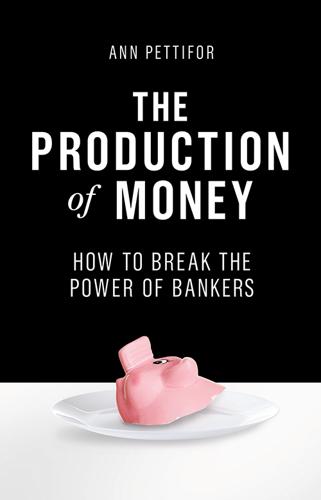
The Production of Money: How to Break the Power of Banks
by
Ann Pettifor
Published 27 Mar 2017
However, some have hyped up the technology used by bitcoin – blockchain, a distributed database or ledger – and argued that it could revolutionise the distribution of wealth and provide transparent accounts of transactions. We should treat these claims cautiously. In a recent blog, Financial Times journalist Izabella Kaminska argued that financial technology fads follow a pattern similar to new music designated first as ‘hip’ and ‘cool’ but which then fades and becomes ‘so last year’. In the same way, for her as an investigative journalist, Blur (bitcoin) evolved into a love of Radiohead (blockchain). But Radiohead (blockchain) was adopted too quickly by those who then compromised the likeability of the entire Indy genre (cryptocurrency).
…
Suffice to say, there is some commentary emerging to suggest we are indeed in a phase transition and what’s cool isn’t the blockchain anymore but rather the defiant acknowledgement that the old operating system – for all its flaws – is built on the right regulatory, legal and trusted foundations after all and just needs some basic tweaking.27 In 2016, $70 million worth of bitcoin was stolen from customer accounts held at Bitfinex. As Kaminska writes, that ‘should give the banking industry pause for thought with respect to adopting blockchain and bicoin-based financial technologies’.28 Speculators have periodically inflated the value of bitcoin to delirious heights.
…
But Radiohead (blockchain) was adopted too quickly by those who then compromised the likeability of the entire Indy genre (cryptocurrency). It was time consequently to turn to drum and bass (private blockchains). But drum and bass was being cross-polluted by Indy rock enthusiasts (cryptocurrency enthusiasts) so it became time to embrace something totally radical and segregated, i.e. go backwards to an ironic appreciation of Barry Manilow abandoning all refs to modern musical phenomena (Distributed Ledger Technology). Which puts us roughly at the point where cheesy revivalism should be turning into a general love of the all time provable greats (old school centralised ledger technology, but you know, digitally remastered).

The Inevitable: Understanding the 12 Technological Forces That Will Shape Our Future
by
Kevin Kelly
Published 6 Jun 2016
But instead of paying a traditional title company a lot of money to verify a complex transaction such as a house sale, an online peer-to-peer blockchain system can execute the exchange for much less cost, or maybe for free. Some blockchain enthusiasts propose creating tools that perform a complicated cascade of transactions that depend on verification (like an import/export deal) using only decentralized automated blockchain technology, thereby disrupting many industries that rely on brokers. Whether Bitcoin itself succeeds, its blockchain innovation, which can generate extremely high levels of trust among strangers, will further decentralize institutions and industries. An important aspect of the blockchain is that it is a public commons.
…
But forget the anonymity; it’s a distraction. The most important innovation in Bitcoin is its “blockchain,” the mathematical technology that powers it. The blockchain is a radical invention that can decentralize many other systems beyond money. When I send you one U.S. dollar via a credit card or PayPal account, a central bank has to verify that transaction; at the very least it must confirm I had a dollar to send you. When I send you one bitcoin, no central intermediary is involved. Our transaction is posted in a public ledger—called a blockchain—that is distributed to all other bitcoin owners in the world. This shared database contains a long “chain” of the transaction history of all existing bitcoins and who owns them.
…
Six times an hour this open distributed database of coins is updated with all the new transactions of bitcoins; a new transaction like ours must be mathematically confirmed by multiple other owners before it is accepted as legitimate. In this way a blockchain creates trust by relying on mutual peer-to-peer accounting. The system itself—which is running on tens of thousands of citizen computers—secures the coin. Proponents like to say that with bitcoin you trust math instead of governments. A number of startups and venture capitalists are dreaming up ways to use blockchain technology as a general purpose trust mechanism beyond money. For transactions that require a high degree of trust between strangers, such as real estate escrows and mortgage contracts, this validation was previously provided by a professional broker.
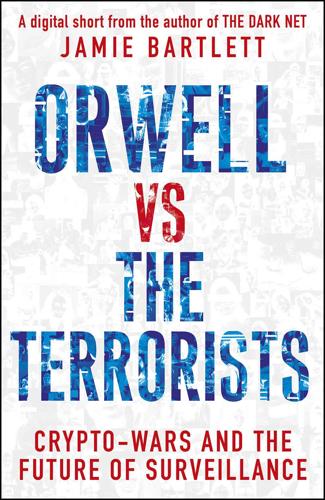
Orwell Versus the Terrorists: A Digital Short
by
Jamie Bartlett
Published 12 Feb 2015
Bitcoin creates an immutable, unchangeable public copy of every transaction ever made by its users, which is hosted and verified by every computer that downloads the software. This public copy is called the ‘blockchain’. Pretty soon, enthusiasts figured out that the blockchain system could be used for anything. Armed with 30,000 Bitcoins (around $12 million) of crowdfunded support, the Ethereum project is dedicated to creating a new, blockchain-operated internet. Ethereum’s developers hope the system will herald a revolution in the way we use the net – allowing us to do everything online directly with each other, not through the big companies that currently mediate our online interaction and whom we have little choice but to trust with our data.
…
fn3 You’ve probably heard of this pseudonymous digital cash because it was, and still is, the currency of choice on the illegal online drugs markets. fn4 And increasingly, I predict, politics. Although no political parties – save the occasional fringe party – have given any thought to what crypto-currencies might mean. What does a modern centre-left party think of crypto-currency, or of blockchain decentralisation? They have no idea. Orwell I’ve interviewed many of the people in the frontline of the battle, the people behind the extraordinary innovation currently taking place. They see the question of online privacy as the digital front in a battle over individual liberty: a rejection of internet surveillance and censorship that they believe has come to dominate modern life online.
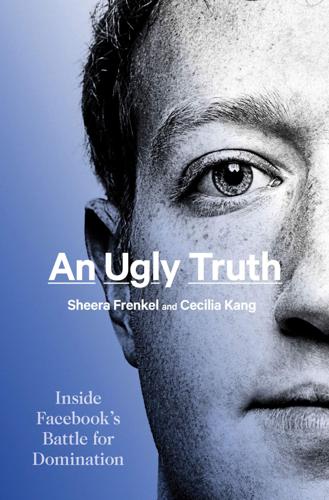
An Ugly Truth: Inside Facebook's Battle for Domination
by
Sheera Frenkel
and
Cecilia Kang
Published 12 Jul 2021
Zuckerberg would kick things off with a boozy dinner catered by one of his favorite Palo Alto restaurants. At the daytime sessions, executives gave exuberant presentations, with charts showing hockey stick growth in revenue and users. They showcased audacious plans for products in artificial intelligence, virtual and augmented reality, and blockchain currency. The group hashed out the biggest problems facing Facebook and discussed ways to beat back competition. The forty or so executives had gotten to know one another well over the years, working through Facebook’s painful transition to mobile, its rocky IPO, and its race for the first billion and then the second billion users.
…
Two months earlier, he had overhauled the leadership ranks by reshuffling the duties of his deputies. Chris Cox, head of product, would oversee all of the company’s apps, including Blue, WhatsApp, Facebook Messenger, and Instagram. The chief technology officer, Mike Schroepfer, was put in charge of all emerging products, such as virtual reality and blockchain. Javier Olivan, the head of the growth team, added security, ads, and services to his portfolio.4 Sandberg remained chief operating officer, but it was less clear if she was still, in effect, Zuckerberg’s second-in-command. She hadn’t been mentioned in the announcement. Now, with Zuckerberg asserting himself even further, it seemed he envisioned himself as number one—and then there was everybody else.
…
The Federal Trade Commission opened an investigation into Facebook’s monopoly power.14 Led by New York, eight state attorneys general also began their own joint antitrust investigation of the social network.15 The House Judiciary Committee’s antitrust subcommittee began a separate inquiry into Facebook and other tech giants.16 The multiple government inquiries, extraordinary for any corporation, caught many in the Washington Facebook office unaware. But Zuckerberg wasn’t slowing down. In June, he announced Libra, a blockchain currency system that could replace regulated financial systems. The virtual currency plan drew immediate criticism from global regulators, who warned that a system run by a private company—especially Facebook—could harbor illegal activity. Congress promptly called for the company to appear in hearings.
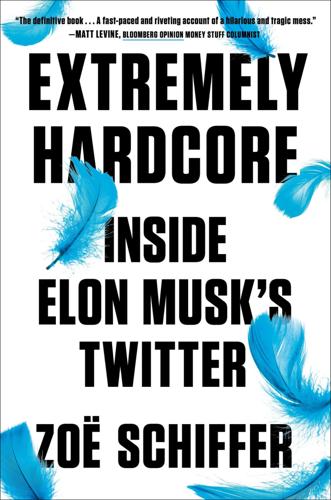
Extremely Hardcore: Inside Elon Musk's Twitter
by
Zoë Schiffer
Published 13 Feb 2024
What if, instead of joining Twitter’s board, he built a competitor, resurrecting X, the “everything app” he’d tried to start at PayPal? What if he put it on the blockchain? “I have an idea for a blockchain social media system that does both payments and short text messages/links like Twitter,” he texted his brother, Kimbal Musk, on April 8, before laying out a convoluted pay-to-play scheme for a blockchain-based social network. Musk described a “massive real-time database that keeps a copy of all blockchain messages in memory, as well as all messages sent to or received by you, your followers and those you follow” culminating in a “twitter-like app on your phone that accessed the database in the cloud.”
…
“You don’t know how much this is going to suck for you,” Kimbal told his brother. “You tell people what you think, and then they smile and nod and ignore you.” Creating an alternative—particularly a technically complex alternative on the blockchain, then one of the buzziest technologies—seemed like a better use of Elon’s skills. Musk told his lieutenant Steve Davis about his plan B if the Twitter board seat didn’t work out. He’d build a “blockchain-based version of twitter” where users paid a small amount of Dogecoin to tweet. Rather than rid Twitter of crypto spam, he’d build his own app and integrate crypto into the very foundation of the product.
…
In 2022, the team announced the formation of a public benefit LLC, noting Bluesky had become an independent organization. If Bluesky had any immediate impact at Twitter, it was in bringing Dorsey and Agrawal closer together. Dorsey had become an unabashed Bitcoin enthusiast. Agrawal was one of the highest-ranking Twitter employees who took his blockchain ideas seriously. “Parag was Jack’s technical guy,” said Yue. “If Jack had a question, he would go to Parag.” In 2017, Agrawal was promoted from distinguished engineer to chief technology officer. Shortly after stepping into his new role, Agrawal had a meeting with a group of product leaders, where he tried to give an inspiring speech about the need for them to come together as a team.
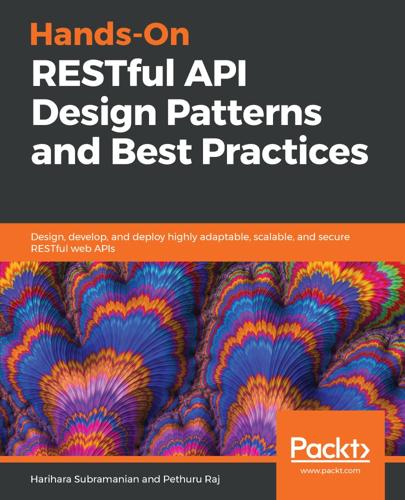
Hands-On RESTful API Design Patterns and Best Practices
by
Harihara Subramanian
Published 31 Jan 2019
That is, the motto of future IT is distributed deployment and centralized monitoring, measurement, and management. Decentralized and intelligent applications with blockchain technology As noted in the preceding section, centralized applications are well-suited to certain situations. However, in the recent past, there has been an increased market for decentralized applications, with the faster adoption and adaptation of the blockchain technology. The blockchain paradigm promises a bevy of disruptions and transformations when realizing and running decentralized applications across multiple industry verticals.
…
The much-touted unbreakable and impenetrable security of software systems is guaranteed through the decentralized approach. The peer-to-peer (P2P) interactions facilitated by the decentralized approach is turning out to be a silver bullet for many recent use cases. The faster maturity and stability of blockchain technology is clearly driving IT professionals and organizations toward the production of decentralized systems. The blockchain paradigm also resulted in the new concept of smart contracts, which leads to the realization of adaptive applications. Composite and multi-container applications Decomposition and composition techniques have been extensively used to achieve breakthroughs in software engineering.
…
PacktPub.com Contributors About the authors About the reviewers Packt is searching for authors like you Preface Who this book is for What this book covers To get the most out of this book Download the example code files Conventions used Get in touch Reviews Introduction to the Basics of RESTful Architecture Technical requirements Evolution of web technologies Learning about Web 3.0 Learning about web service architecture Discussing the web API Learning about service-oriented architecture Learning about resource-oriented architecture Resource-oriented design The benefits of ROA Beginning with REST REST architecture style constraints Beginning with client-server The client in client-server architecture The service in client-server architecture Understanding statelessness Advantages and disadvantages of statelessness Caching constraint in REST Benefits of caching Understanding the uniform interface Identification of resources Manipulation of resources Self-descriptive messages Hypermedia as the Engine of Application State Layered systems Code on demand RESTful service mandates Architectural goals of REST Summary Design Strategy, Guidelines, and Best Practices Technical requirements Learning about REST API and its importance Goals of RESTful API design Affordance Loosely coupled Leverage web architecture API designer roles and responsibilities  API design best practices API design principles Ubiquitous web standards Flexibility Granularity Optimized APIs Functionality Learning about unusual circumstances Community standardization API playgrounds RESTful API design rules Learning about Uniform Resource Identifiers URI formats REST API URI authority Resource modelling Resource archetypes URI path URI query HTTP interactions Request methods Response status codes Metadata design HTTP headers Media types and media type design rules Representations Message body format Hypermedia representation Media type representation Errors representation Client concerns Versioning Security Response representation composition Processing hypermedia JavaScript clients Summary Further reading Essential RESTful API Patterns Technical requirements Beginning with the installations Beginning with RESTful API patterns – part I Statelessness Content negotiation Content negotiation with HTTP headers URI templates Design for intent Pagination Discoverability Error and exception logging Unicode Summary Advanced RESTful API Patterns Technical requirements RESTful API advanced patterns Versioning Versioning through the URI path Versioning through query parameters Versioning through custom headers Versioning through content-negotiation Authorization Authorization with the default key Authorization with credentials Uniform contract Entity endpoints Endpoint redirection Idempotent Bulk operation Circuit breaker Combining the circuit pattern and the retry pattern API facade Backend for frontend Summary Further reading Microservice API Gateways Technical requirements About microservice architecture The prominent infrastructure modules in microservice-centric applications Service registry  Service discovery Composition/orchestration  Transformation  Monitoring  Load balancing and scaling  High availability and failover  HA and failover guidelines Governance  About API gateway solutions API gateways for microservice-centric applications The issues with microservice API gateways Security features of API gateways Prominent API gateway solutions Service mesh versus API gateway Summary RESTful Services API Testing and Security An overview of software testing  RESTful APIs and testing Basics of API testing Understanding API testing approaches API testing types Unit tests API validation tests Functional tests UI or end-to-end tests Load testing Runtime error detection tests Monitoring APIs Execution errors Resource leaks Error detection REST API security vulnerabilities Exposing sensitive data Understanding authentication and authentication attacks Understanding authorization and OAuth2 schemes Cross-site scripting Reflected XSS Stored XSS DOM XSS Cross-site request forgery Denial-of-service attack Distributed denial of service Injection attacks Insecure direct object references Missing function-level access control Man-in-the-middle attacks Common types of MITM attacks and protection measures Replay attacks and spoofing Causes of vulnerabilities API design and development flaws Poor system configuration Human error Internal and external connectivity Security tests Penetration tests or pen tests Importance of penetration tests Pen testing lifecycle Preparation, planning, and reconnaissance Scanning Gaining access Maintaining access Analysis Pen testing types for API testing White-box penetration testing Fuzz tests The life cycle of fuzz tests Fuzz testing strategy Mutation-based fuzz tests Generation-based fuzz tests Advantages and disadvantages of fuzz tests Back to API testing API test cases Essential aspects of API test cases and test case preparation API testing challenges Initial setup API schema updates for testing Testing parameter combinations API call sequence Validating parameters Tracking system integration API testing best practices API testing tools CQRS Summary Further reading RESTful Service Composition for Smart Applications Technical requirements Briefing RESTful microservices Demystifying the MSA style The advantages of microservices The emergence of cloud-native applications The growing ecosystem of IoT device services The changing application ecosystem Tending toward the API-driven world The Representational State Transfer service paradigm API design best practices Learning about service-composition methods Service orchestration and choreography Beginning with service orchestration The shortcomings of service orchestration Applying orchestration-based composition Beginning with service choreography The shortcomings of service choreography Applying choreography-based composition The hybridization of orchestration and choreography Another example of the hybridization of orchestration and choreography Choreography Service choreography using the message broker Service orchestration Service orchestration using BPMN and REST The hybridization – event-driven service orchestration Data management  Thinking in REST Discarding SQL join Eventual consistency Polyglot persistence Summary RESTful API Design Tips Technical requirements Beginning with APIs Learning about application programming interfaces APIs have become indispensable Learning about the major types of APIs Describing API platforms Creating API development platforms API-integration platforms Legacy integration API management platforms Demystifying the RESTful services paradigm Characterizing the REST architecture style REST Resource Representation Compression Idempotent REST APIs REST API design considerations Enumerating RESTful API design patterns Media types API security design patterns Whitelist allowable methods Summary Further reading A More In-depth View of the RESTful Services Paradigm Technical requirements Tending toward the software-defined and software-driven world Software-enabled clouds for the digital intelligence era The IoT applications and services Cloud-enabled applications Cloud-native applications Mobile, handheld, and wearable applications Transactional, operational, and analytical applications Knowledge visualization applications Social applications  Scientific and technical applications  Centralized and distributed applications Decentralized and intelligent applications with blockchain technology  Composite and multi-container applications  Event-driven applications  High-quality applications Resilient applications  The REST paradigm for application modernization and integration Application programming interfaces Public APIs for external integration and innovation Private APIs for internal purposes  APIs for IoT devices APIs for application integration Describing the RESTful services paradigm REST architectural constraints The advantages of REST Self-descriptive messages SOAP versus REST When to use REST versus SOAP Best practices for REST-based microservices The API-first approach Developing API-first Building services API-first Summary Further reading Frameworks, Standard Languages, and Toolkits Technical requirements Core features of a framework Spring Boot Core features of Spring Database integration with Spring data Messaging integration Extending Spring with auto-configuration Writing unit tests and integration test cases Benefits of Spring Boot Drawbacks of Spring Boot Beginning about Light 4j Core features of Light 4j Learning about Light Rest 4j Light-code-gen Choosing Light 4j over the rest Spark Framework Core features of Spark Framework Creating an API with fewer lines Benefits of Spark Drawbacks of Spark Dropwizard Overview Core features of Dropwizard Jetty for HTTP Jersey for REST Jackson Metrics Liquibase Other noteworthy features Benefits of Dropwizard Drawbacks of Dropwizard Understanding Go framework for the RESTful API An overview Gin-gonic Core features HttpRouter Http2 server push Multi-template Upload files Other noteworthy features Benefits of Gin-Gonic Drawbacks of Gin-Gonic Revel Core features Router Server engine Controllers Handlers Interceptors Filters Cache Other noteworthy features Benefits of Revel Drawbacks of Revel Python RESTful API frameworks Overview of Python Django Django Rest Framework Core features Web-browsable API Authentication Serialization and deserialization Other noteworthy features Benefits of the DRF Drawbacks of the DRF Flask Flask-RESTful Core features of Flask-RESTful Resourceful routing Restful request parsing Output fields Other noteworthy features Benefits of the Flask framework Drawbacks of Flask Frameworks – a table of reference  Summary Further reading Legacy Modernization to Microservices-Centric Apps Technical requirements A preview of containers and microservices Introducing the microservices architecture Why legacy modernization?

Platform Revolution: How Networked Markets Are Transforming the Economy--And How to Make Them Work for You
by
Sangeet Paul Choudary
,
Marshall W. van Alstyne
and
Geoffrey G. Parker
Published 27 Mar 2016
One of the most innovative forms of architectural control ever invented made its appearance in 2008, when an anonymous coding genius known as Satoshi Nakamoto published a paper on the Cryptography mailing list defining the Bitcoin digital currency and the so-called blockchain protocol governing it. Although Bitcoin is notable as the world’s first unforgeable digital currency that cannot be controlled by a government, bank, or individual, the blockchain is truly revolutionary. It makes possible fully decentralized, completely trustworthy interactions without any need for escrow payments or other guarantees. The blockchain is a distributed public ledger that enables storage of data in a container (the block) affixed to other containers (the chain).37 The data can be anything: dated proof of an invention, a title to a car, or digital coins.
…
Anyone can verify that you placed data in the container because it has your public signature, but only your private key can open it to see or transfer the contents. Like your home address, a blockchain container is publicly, verifiably yours, but only people you authorize have a key that permits entry.38 The blockchain protocol makes decentralized governance possible. Normally, when you sign a contract, you must either trust the other party to honor the terms or rely on a central authority such as the state, or on an escrow service like eBay, to enforce the deal. Public blockchain ownership empowers us to write self-enforcing smart contracts that automatically reassign ownership once contract terms are triggered.
…
Michael Lewis, “Michael Lewis Reflects on his Book Flash Boys, a Year after It Shook Wall Street to its Core,” Vanity Fair, April 2015, http://www.vanityfair.com/news/2015/03/michael-lewis-flash-boys-one-year-later. 37. William Mougayar, “Understanding the Blockchain,” Radar, January 16, 2015, http://radar.oreilly.com/2015/01/understanding-the-blockchain.html. 38. Ibid. 39. Tamara McCleary, “Got Influence? What’s Social Currency Got To Do With It?” Tamara McCleary blog, December 1, 2014, http://tamaramccleary.com/got-influence-social-currency/. 40. Grant and Stothers, “iStockphoto.Com,” 3. 41. Hind Benbya and Marshall Van Alstyne, “How to Find Answers within Your Company,” MIT Sloan Management Review 52, no. 2 (2011): 65–75. 42.

AI 2041: Ten Visions for Our Future
by
Kai-Fu Lee
and
Qiufan Chen
Published 13 Sep 2021
In the very long term, 100-percent detection may be possible with a totally different approach—to authenticate every photo and video ever taken by every camera or phone using blockchain technology (which guarantees that an original has never been altered), at the time of capture. Then any photo loaded to a website must show its blockchain authentication. This process will eliminate deepfakes. However, this “upgrade” will not arrive by 2041, as it requires all devices to use it (like all AV receivers use Dolby Digital today), and blockchain needs to become fast enough to process this at scale. Until we have this longer-term solution based on blockchain or equivalent technology, we hope there will be continuously improved technologies and tools for detecting deepfakes.
…
Since that is unlikely to be perfect, there will also need to be laws that make the penalty for making malicious deepfakes very high, in order to deter potential perpetrators. For example, California passed a law in 2019 against using deepfakes for porn, and for manipulating videos of political candidates near an election. Finally, we may need to learn to live in a new world (until the blockchain solution works) where online content should always be questioned, no matter how real it looks. In addition to making deepfakes, GANs can be used for constructive tasks, such as to age or de-age photos, colorize black-and-white movies and photos, make animated paintings (such as Mona Lisa), enhance resolution, detect glaucoma, predict climate change effects, and even discover new drugs.
…
Don’t forget he’s always wanted to catch you and put you in prison. ROBIN: How about you shut the fuck up. Lee? LEE: Stop fighting, you two. I have news. Lee gestured a screen into existence on the stone wall of the simulated dungeon. A cartoon started to play, showing decentralized yet organized crime operations on a global scale, in a blockchain and AI-based world. All transactions were encrypted. All manufacturing and transportation were automated. Criminals and crime were totally separated in time and space, so long as interlocking encryption tasks were set up. Weapons could be manufactured and deployed automatically. Drugs could be grown, harvested, purified, subcontracted to robots in uninhabited regions, transferred to the marketplace by unmanned vehicles, and delivered—all by drones.

Reinventing Capitalism in the Age of Big Data
by
Viktor Mayer-Schönberger
and
Thomas Ramge
Published 27 Feb 2018
Some banks have sought to push cost cutting and automation much further by teaming up with or investing in companies that are working on alternative payment systems. In financial circles, Bitcoin (as well as blockchain, its underlying technology) has not only caused fear but also instilled hope that banking can be saved—although it’s unclear how. Banks advocating deeply decentralizing technologies for transferring and holding value such as blockchain may not yet fully appreciate that these technologies obviate the need for the centralized service they are offering. Overall, cost cutting may sound smart, but in banking it is as constrained by organizational setup and internal structures as it is for any other firm, and banks are already beginning to realize that.
…
the number of listed companies: Maureen Farrell, “America’s Roster of Public Companies Is Shrinking Before Our Eyes,” Wall Street Journal, January 6, 2017, https://www.wsj.com/articles/americas-roster-of-public-companies-is-shrinking-before-our-eyes-1483545879. No digital currency is capable of: For more on blockchain, see Don Tapscott and Alex Tapscott, The Blockchain Revolution: How the Technology Behind Bitcoin Is Changing Money, Business, and the World (New York: Portfolio/Penguin Books, 2016). fintechs attracted investments exceeding $19 billion: Andrew Meola, “The Fintech Report 2016: Financial Industry Trends and Investment,” Business Insider, December 14, 2016, http://www.businessinsider.de/the-fintech-report-2016-financial-industry-trends-and-investment-2016-12?
…
Lowering costs may help the banking sector in the short term, but over the long term, it may amount to little more than rearranging deck chairs on the Titanic. Responding to the cost of money disregards the demise of its informational dimension. As markets turn data rich, money is no longer needed to facilitate most of the information flow. No digital currency is capable of fundamentally altering that, not even the most advanced blockchain technology. Essentially, these are solutions for a different problem. But even as a medium of exchange, money may no longer hold an absolute monopoly. If markets teem with information that facilitates transactions, that information itself holds value. Every time it gets used, it creates insight and greases the market.

The Great Wave: The Era of Radical Disruption and the Rise of the Outsider
by
Michiko Kakutani
Published 20 Feb 2024
Others worry that its rapid growth could be destabilizing, that it could facilitate money laundering and criminal exploitation, and that investing in a currency which possesses no intrinsic value is extremely hazardous—a warning underscored by the spectacular crash of the cryptocurrency exchange FTX in the fall of 2022. Blockchain, advocates contend, has the potential to disrupt industries from e-commerce to music sales to health care by creating virtually tamperproof records and allowing retailers to sell directly to customers without intermediaries. Whereas people now tend to place their trust in marketplaces like Amazon and eBay, blockchain will supposedly empower buyers to make trustworthy purchases directly from manufacturers and vendors. For artists, too, blockchain promises tangible benefits—not only making it more difficult, say, to illegally copy and download music, but also enabling musicians to be compensated directly for their work without having to rely upon platforms like Apple Music (iTunes) and Spotify.
…
Other proponents of a decentralized web or Web3 are proposing a model based on the sort of peer-to-peer technology employed by blockchain (which powers bitcoin and other cryptocurrencies). In theory, such a decentralized architecture would allow users to bypass the control of tech giants like Facebook, Google, and Microsoft, which currently act as intermediaries, and would also make it more difficult for Big Tech and governments to collect our data and control what we see. Blockchain is a kind of digital ledger where transaction data is stored not in one central location but on servers and hard drives around the world, making that data difficult to alter or hack and circumventing centralized authorities like governments and banks.
…
GO TO NOTE REFERENCE IN TEXT “has evolved into an engine of inequity”: Tim Berners-Lee, “One Small Step for the Web…,” Medium, Sept. 29, 2018, medium.com/@timberners_lee/one-small-step-for-the-web-87f92217d085. GO TO NOTE REFERENCE IN TEXT Berners-Lee has proposed a new platform: Solid, solidproject.org; Thomas Macaulay, “Web Inventor Tim Berners-Lee: Screw Web3—My Decentralized Internet Doesn’t Need Blockchain,” TNW, June 23, 2022, thenextweb.com/news/web-inventor-tim-berners-lee-screw-web3-my-decentralized-internet-doesnt-need-blockchain; Peter Verdegem, “Tim Berners-Lee’s Plan to Save the Internet: Give Us Back Control of Our Data,” Conversation, Feb. 5, 2021, theconversation.com/tim-berners-lees-plan-to-save-the-internet-give-us-back-control-of-our-data-154130; Greg Noone, “What Is Web 3.0?

Augmented: Life in the Smart Lane
by
Brett King
Published 5 May 2016
It’s extremely unlikely given its recent volatility; however, our eyes have been opened to new possibilities in terms of commerce and we can be sure that Bitcoin won’t be the last attempt that we’ll see at developing Money 2.0. The more interesting development emerging out of the Bitcoin movement is actually the technology that underpins the way Bitcoin is transacted and recorded. We call this the blockchain, and this could quite possibly be the answer to a world full of smart, transacting devices. Why We Need a Blockchain Traditional banking asserts that a bank account is owned by an individual and that individual must be identified so that he can safely and legally transact over the networks, pipes and wires maintained by the chartered banks of the world.
…
There are only a few thousand Bitcoin nodes,13 but the distributed ledger system that allocates the millions of bitcoins around the world is constantly syncing and updating the records of digital currency moving from one wallet to another. For the same reason that regulators generally don’t like the Bitcoin system, i.e. a wallet functioning independent of the wallet holder’s identity, it makes the blockchain or something similar, much better suited to the future of money. It has much higher redundancy than exiting banking systems, and works to reinforce itself constantly. There is no such thing as a bitcoin, of course, at least not in the physical sense. The blockchain simply keeps track of an ever-expanding list of addresses, and how many units of bitcoin are at each of those addresses. Figure 9.5: At the heart of Bitcoin is a distributed ledger system that is far more efficient for digital transactions than the existing banking system.
…
The banking system of 2025 will need to work more like an IP, or peer-to-peer, network than the current centralised banking networks that we have today; and the blockchain is a better, future-proof example of that. We are moving to a world where smart devices can have a value store or multiple value stores and can act as agents transacting on our behalf or on behalf of a group of people. We’re also moving to a world where identity won’t be tied to your driving licence, signature or social security number, but instead managed as a construct based on biometrics, unique identity markers, behavioural data and heuristics. Identity could itself be managed on a blockchain, as could contracts, assets and other information that need to be secured in a distributed, redundant system of record.
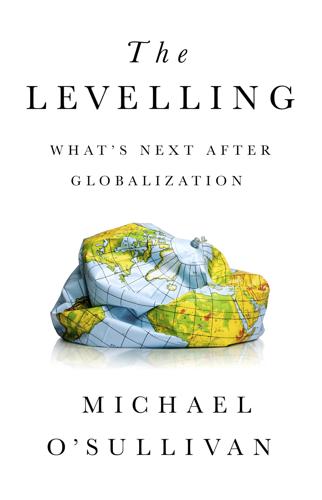
The Levelling: What’s Next After Globalization
by
Michael O’sullivan
Published 28 May 2019
This suggests the need for tougher regulation of personal data, and it also points the way toward new technologies such as blockchain (i.e., distributed ledger technology) being deployed to protect data, and of the need to think about how fifth-generation telecommunications networks are protected. With blockchain, data is much more secure, and data owners can explicitly give permission for the use of their data (e.g., to doctors or pharmacists in the case of medicine). The potential use of blockchain—where not only can someone’s data be better protected, but a person’s identity can also be more easily verified—opens up the possibility that internet users could carry a form of verified online identification certificate.
…
Many of them will have failed to spot the emergence of the new trend but are quick to align themselves with it (which tells us more about the labor market than about anything else: people align their careers with hot trends). For instance, the December 2017 spike in the price of bitcoin was accompanied by a raft of new research opinions on the cryptocurrency from new cryptocoin brokers and large banks. For what it is worth, my own view on cryptocurrencies is that the future will be characterized as “Blockchain everywhere, bitcoin nowhere”—that is, the distributed ledger technology behind bitcoin will become more pervasive across economic sectors, but bitcoin will fail to prove itself as a currency proper and will live out an existence as a lurid, speculative asset.* To return to the business of forecasting, I am also often struck by the number of times that bodies like the IMF and central banks follow up a crisis or market event with a downward adjustment to their GDP forecasts.
…
The starting point in this challenge is for people, rather than their leaders, to decide what they want from politics. One of the best examples of how this can be done lies with the example of the Levellers. * Distributed ledger technology “allows simultaneous access, validation and record updating… across a network spread across multiple entities or locations. [It is] more commonly known as the blockchain technology.” “Distributed Ledger Technology,” Investopedia, https://www.investopedia.com/terms/d/distributed-ledger-technology-dlt.asp. * What I have in mind here is that some countries condone and accept practices in areas like genetic editing that are not commonly or legally accepted around the world.

Red Moon
by
Kim Stanley Robinson
Published 22 Oct 2018
“Oh yeah, we have to keep track of that, to keep the gas exchange and everything else. I just don’t know if John moved on or not.” “We do blockchain governance,” one of the others said. “The census is part of that.” “Blockchain governance? Meaning what?” “All our activities and decisions are recorded in a secure distributed network, including our comings and goings, but also everything we do as a town. We call it documented anarchy. A full-disclosure commons. Anyone can do anything, but everyone gets to know what that is.” “Is that what the blockchain governance movement on Earth is trying for?” “I don’t know.” Valerie said, “Since you keep track of everyone, could you look for someone we’re looking for, see if they’re in town?”
…
What this virtual currency would come to in the real world no one could know, and the fact that millions of people had withdrawn their savings from normal seigniorage currencies to invest in such a murky new form of money, meaning, in the end, value and trust and exchangeability, was just another frightening destabilization to add to all the rest. That the millions of backers of this new currency were also demanding blockchain governance only added to the worries of people in power everywhere. “Do you understand this idea of blockchain governance?” Ta Shu asked John Semple at one point. John shrugged. “I think the idea is that if everyone’s got a wristpad and a connection to the cloud, everyone could participate in some kind of global governance, in which every action legal and financial would be completely documented, and recorded and secured publicly step by step and law by law.”
…
The Householders’ Union. Extant and open to inspection. Rigid flexibility: the structure remains the same while content and function change. Small Leading Group on the Internet and Informatization. Extant and permeable to inspection. Anything that can be inspected can be altered, unless locked in a blockchain. Blockchains block alteration: is this good? Venues for information dissemination: CCTV. Global Times. Xinhua. WeChat. Citizen scores alert system. Health alert system. Weibo. Sesame scores alert system. Alibaba regular customer pages. Tencent. South China Morning Post. Full list includes 1,294 venues.
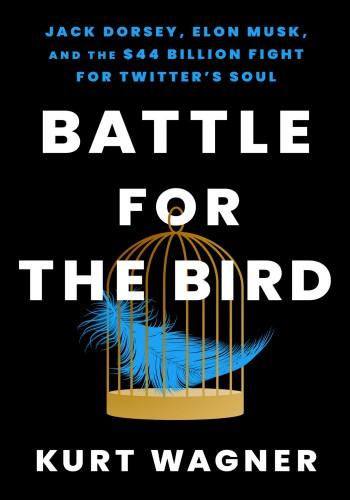
Battle for the Bird: Jack Dorsey, Elon Musk, and the $44 Billion Fight for Twitter's Soul
by
Kurt Wagner
Published 20 Feb 2024
Musk, though, was serious and was also working on a backup plan in case his Twitter bid was rejected. At the TED conference, he’d also been asked about a “Plan B” onstage but refused to share details. Privately, though, he was messaging with confidants about an idea for a blockchain-based social network that let users post messages on the blockchain’s public ledger. Musk was even meeting with engineers to discuss building the blockchain idea just in case his Twitter deal failed to materialize. Twitter’s board started anxiously waiting to see if Musk could pull the financing together for his bid. Jack Dorsey, though, started tweeting as if the deal was already done.
…
“Spend some time in a country and a nation that has to constantly be aware of what their government is trying to do to them, how their government is trying to sell them out, how much control their government has over them through this instrument of currency.” The trip stoked a fire inside Dorsey, who went home more excited than ever about cryptocurrencies and blockchain technology that few people in the United States understood and appreciated. Toward the end of November, as Dorsey waited to take off from Ethiopia’s Addis Ababa Bole International Airport, he pulled out his phone and posted a tweet of appreciation for his monthlong adventure. “Sad to be leaving the continent… for now,” he wrote.
…
Over the next several years, and with a front-row seat to the world of banking regulation thanks to his role running Square, Dorsey grew enamored with the idea of a global currency that wasn’t controlled by any bank or government. It reminded Dorsey of his early days learning to code back in St. Louis before the internet became so commercialized and siloed by various businesses. Bitcoin traded on a public, global ledger called the blockchain, and because it was digital, it could be sent or spent anywhere in the world almost instantly. With Bitcoin, people wouldn’t even need banks, Dorsey thought. Dorsey’s trip to Africa a few years earlier had revived his interest in the currency, and Square was suddenly a testing ground for all the CEO’s Bitcoin-related ideas.
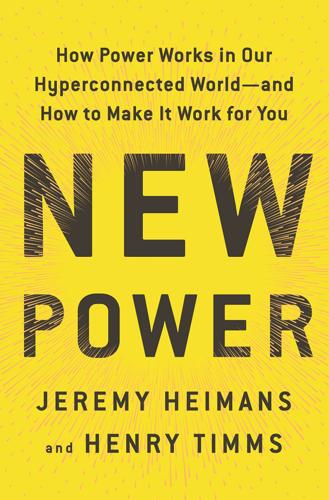
New Power: How Power Works in Our Hyperconnected World--And How to Make It Work for You
by
Jeremy Heimans
and
Henry Timms
Published 2 Apr 2018
Another solution to the problem of placing one’s data in the hands of a powerful intermediary comes in the great—and much-hyped—hope of the Blockchain. The Blockchain is a distributed public ledger that allows everyone to record and see what transactions have taken place. Unlike a centralized secret ledger—such as those of banks—it is transparent. And transactions are verified not by a central force, but as a distributed process. You might know the Blockchain from its most famous (and controversial) application to date: it is the underlying technology upon which the virtual currency Bitcoin is built on.
…
As The Economist puts it, “It offers a way for people who do not know or trust each other to create a record of who owns what that will compel the assent of everyone concerned. It is a way of making and preserving truths.” The potential of this is as huge as the hype (although, like all technologies, Blockchain remains vulnerable to co-optation and capture). It opens up a world where users might exchange value directly without an extractive middleman. We can easily imagine real estate contracts or financial transactions living on the Blockchain. But we might imagine, too, the intermediaries being removed from the mega-platforms of the world—our Ubers or Airbnbs—when drivers and riders, or hosts and guests, work out ways to collaborate and exchange directly with each other.
…
“online social networking will be more immune”: Ching-man Au Yeung, Ilaria Liccardi, Kanghao Lu, Oshani Seneviratne, and Tim Berners-Lee, “Decentralization: The Future of Online Social Networking,” In W3C Workshop on the Future of Social Networking Position Papers, 2009. Berners-Lee’s Solid project: “What Is Solid?” July 2017. https://solid.mit.edu. You might know the Blockchain: BlockGeeks, “What Is Blockchain Technology? A Step-by-Step Guide for Beginners,” BlockGeeks, July 2017. www.blockgeeks.com. “It offers a way for people”: The Economist Staff, “The Great Chain of Being Sure About Things,” The Economist, October 31, 2015. In a Guardian poll in 2017: Olivia Solon: “Americans ‘Evenly Split’ Over Need to Regulate Facebook and Other Big Tech,” The Guardian, November 1, 2017.
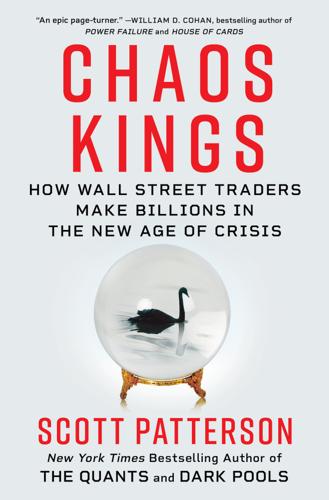
Chaos Kings: How Wall Street Traders Make Billions in the New Age of Crisis
by
Scott Patterson
Published 5 Jun 2023
After class one day in 2015, a student walked up to Schmalbach. “I think there’s something going on with blockchain,” he said. “It’s getting important. I think it could destroy your whole industry.” Schmalbach had long been interested in finding alternatives to the old-school form of insurance, which he believed had become inefficient, hampered by a long, legalistic, and highly complex money supply chain. Prodded by his student, he immersed himself in blockchain and quickly realized it could provide an alternative method of delivering insurance. Blockchain offers something called “smart contracts,” which is software that can automatically execute a transaction when certain conditions are met.
…
It wasn’t normal insurance. The contracts were arranged via blockchain, the Internet ledger that could efficiently track financial transactions. Unlike traditional insurance, which could take months or years to pay out, this was so-called parametric insurance. With parametric insurance, a payout happens automatically when a certain trigger point is reached. Say Company X buys Ryskex insurance against a devastating flood that causes its shares to go down 20 percent. The flood happens, the shares fall, and bingo, the payment is made via the blockchain. The risk-takers—those providing the insurance—were typically hedge funds eager to get the steady premiums, much like the firms that sold far-out-of-the-money put options that paid off in a crash to Universa.
…
The young German insurance executive was the CEO and founder of Ryskex, a new kind of insurance company that focused solely on systemic disasters. The hurricane that takes out a company’s supply chain. The deadly crash that grounds an airline’s fleet. The cyberattack that destroys a company’s reputation. The virus that decimates a workforce. Using artificial intelligence and blockchain, Schmalbach had created an entirely new, tradeable asset class: systemic risk. With Ryskex, hedge funds and banks could buy and sell systemic risk like a bushel of corn. Fortune 500 companies could use it to protect themselves against calamitous shocks. In the late 2010s, it remained a fledgling effort.
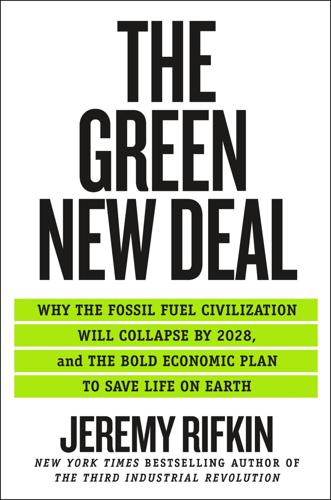
The Green New Deal: Why the Fossil Fuel Civilization Will Collapse by 2028, and the Bold Economic Plan to Save Life on Earth
by
Jeremy Rifkin
Published 9 Sep 2019
Although Siemens ranked sixty-sixth among the Fortune 500 Global Companies in 2018, no single company will be able to go it alone and scale up a twenty-year construction site in every city, region, and country to transition the world economy into a zero-carbon Third Industrial Revolution paradigm. More likely, Siemens and hundreds of other large companies will join with thousands of regional, high-tech small- and medium-sized enterprises, blockchained in cooperatives, in an ESCO performance-contracting business model, financed by a consortium of global and national pension funds, working with local municipalities and regions to provision the scale-up of a smart Green New Deal infrastructure. This distributed ESCO blockchain model is likely to be the favored approach to quickly transitioning local and regional economies, given the tight fifteen-to-twenty-year time frame hovering over us.
…
This more intimate and inclusive engagement in commerce, trade, and social life, made possible by a distributed and smart postcarbon Third Industrial Revolution platform, is being accompanied by a shift from globalization to “glocalization” as individuals, businesses, and communities engage each other directly, bypassing many of the global companies that mediated commerce and trade in the twentieth century. Glocalization makes possible a vast expansion in social entrepreneurship with the proliferation of smart high-tech small and medium-sized enterprises (SMEs) blockchained into laterally extended cooperatives operating in networks circling the world. In short, the Third Industrial Revolution brings with it the prospect of a democratization of commerce and trade on a scale unprecedented in history. The shift from globalization to glocalization is transforming the relationship between national governments and local communities, in a sense, reversing the locus of responsibility for the workings of the economy and the affairs of governance from the nation-state to the regions.
…
Fourth, warehouse operators along the logistics corridors will need to aggregate into cooperative networks to bring all of their assets into a shared logistical space to optimize the shipment of goods, taking advantage of lateral economies of scale. For example, thousands of warehouses and distribution centers might establish blockchained cooperatives to share unused spaces, allowing a carrier to drop off a shipment at any warehouse and pass it on to another carrier from another company who might have more cargo going near the particular destination. This will ensure that all the carriers are fully loaded in their trailers at all times and that shipments are sent along the most efficient path en route to their final destination.
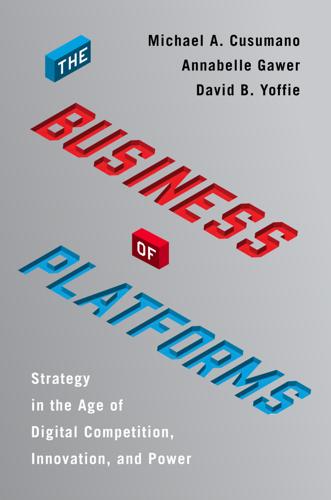
The Business of Platforms: Strategy in the Age of Digital Competition, Innovation, and Power
by
Michael A. Cusumano
,
Annabelle Gawer
and
David B. Yoffie
Published 6 May 2019
IBM was trying to turn its Watson AI technology into a new consulting service as well as an innovation platform by building partnerships with application developers at companies and universities, especially for health care applications.40 General Electric opened up its Predix operating system to other firms, encouraging them to build products and services for the Internet of things.41 (We explore this case in Chapter 5.) We also have some open general-purpose technologies emerging as potentially new innovation platforms. Blockchain is a good example. This was once associated with Bitcoin, the cryptocurrency (also a kind of transaction platform technology). Various firms were starting to use blockchain software to track different types of transactions over the Internet, including shipments of food as well as transfers of money and confidential documents.42 Third, managers and entrepreneurs in many more industries probably need to give serious thought to combining innovation and transaction functions—adopting a hybrid strategy.
…
We can foresee a time when digital platforms and associated ecosystems will be the way we organize new information technologies such as artificial intelligence, virtual and augmented reality, the Internet of things, health care information, and even quantum computing. We can also see peer-to-peer transaction platforms replacing or competing with traditional businesses, especially as the “sharing” or “gig” economy expands and new technologies diffuse. Use of blockchains (distributed ledger technology that is extremely secure though not unbreakable) and cryptocurrencies (digital money, usually independent of banks and governments) may greatly reduce the need for many different services, from traditional banks to supply-chain contracts and monitoring. Yet another hot topic as we write this book is increasing demand for governments to rethink data-privacy laws, antitrust laws, and other regulations that could rein in the most powerful platform businesses.
…
Looking at the bigger picture, we can see that mainframes ultimately gave way to personal computers, the Internet, social media, mobile devices such as smartphones, and cloud computing. Old and new platforms coexist, though some have become more important than others. Looking forward from what we know today, artificial intelligence, machine learning, virtual and augmented reality, blockchain applications, and even quantum computing are likely to challenge currently dominant platforms, at least in some domains. In this last chapter, we use the principles emphasized in this book to explore ongoing and future platform battlegrounds. We start by summarizing the book’s key arguments. We then identify four trends likely to impact today’s dominant players and the platform entrepreneurs and managers of tomorrow.

Elon Musk
by
Walter Isaacson
Published 11 Sep 2023
Just at that moment, in the midst of his dialogue with Taylor and Agrawal, Elon got a reply from Kimbal to his texts from earlier that morning about the possibility of creating a new social network based on the blockchain. “I’d love to learn more,” Kimbal said. “I’ve dug deep on Web3 (not crypto as much) and the voting powers are amazing and verified. Blockchain prevents people from deleting tweets. Pros and cons, but let the games begin!” “I think a new social media company is needed that is based on the blockchain and includes payments,” Elon replied. Yet even while he was musing with Kimbal about creating a new social network, he reiterated to Agrawal and Taylor that he wanted to take over Twitter.
…
He was available to fly to Austin the next day, if Musk was willing to meet with him. Musk had discussed with Kimbal and others the possibility of using the blockchain as a backbone for Twitter. But despite the fun he had with Dogecoin and other cryptocurrencies, he was not a blockchain acolyte, and he felt it would be too sluggish to support fast-paced Twitter postings. So he had no desire to meet with Bankman-Fried. When Michael Grimes persisted by texting that Bankman-Fried “could do $5bn if everything vision lock,” Musk responded with a “dislike” button. “Blockchain Twitter isn’t possible, as the bandwidth and latency requirements cannot be supported by a peer to peer network.”
…
“Dude, you’ve never been on a board, so you don’t know how much this is going to suck for you,” he said. “You tell people what you think, and then they smile and nod and ignore you.” Kimbal thought that it would be better for his brother to start his own social media platform based on the blockchain. Perhaps it could include a payment system using Dogecoin, Elon mused. After brunch, he sent Kimbal a few texts fleshing out the idea for “a blockchain social media system that does both payments and short text messages like Twitter.” Because there would be no central server, “there’d be no throat to choke, so free speech is guaranteed.” The other option, Elon said, was not merely to join the board of Twitter but to buy it.
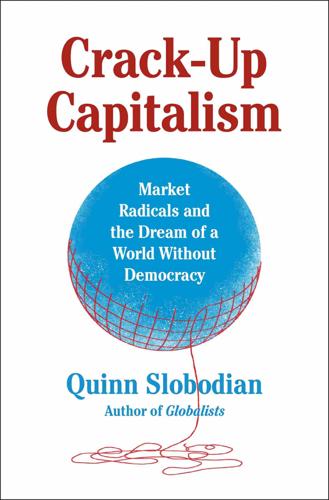
Crack-Up Capitalism: Market Radicals and the Dream of a World Without Democracy
by
Quinn Slobodian
Published 4 Apr 2023
Bitcoin, designed by a mysterious figure named Satoshi Nakamoto, was an ingenious system in which digital “coins” could be securely transferred between participants, with all transactions and holdings recorded on a public ledger called the blockchain. The coins could be “mined”—that is, acquired—by running computer programs solving difficult equations, and the system limited the total number of bitcoins that could ever be mined to twenty-one million. If you distrusted the management of money by the organs of the democratic state, and especially if you were concerned about state-led inflation, this cap on the total bitcoin supply was very appealing. At the same time, the publicly visible blockchain seemed to promise both radical transparency and ironclad protection against meddling.
…
Bringing The Sovereign Individual’s “cybercash” into reality would remove the human factor from money. It also offered the tantalizing possibility of substituting technology for trust, enabling algorithmically governed “smart contracts” without judges or courts. In that sense, putting money and laws “on the blockchain” was the ultimate form of exit. In 2015, Srinivasan left Andreessen Horowitz to work full-time at a new company devoted to mainstreaming Bitcoin.45 The cryptocurrency was trading at about $258 per bitcoin when he started. Six years later, it peaked at about $58,000, translating into a return on investment of over 24,000 percent.
…
He himself opted for Singapore, an authoritarian city-state far from the disorder that he complained of in San Francisco. There he launched a more earnest campaign for a cloud country, including an online lecture series and a website that paid people in bitcoins for solving potential future problems for a city built on the blockchain.73 Srinivasan’s writings continued his update of The Sovereign Individual, arguing that states do not matter, cryptography had solved the problems of government, and the internet was enabling “a digital Atlantis—a new continent floating in the cloud where old powers compete and new powers arise.”74 Yet the course of the pandemic had not been kind to his predictions.
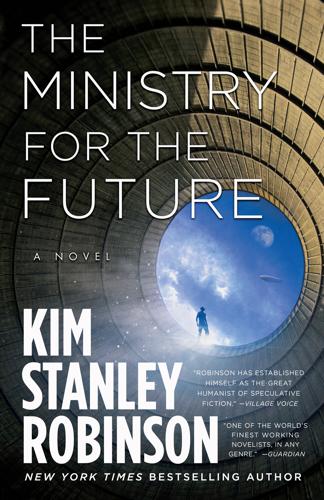
The Ministry for the Future: A Novel
by
Kim Stanley Robinson
Published 5 Oct 2020
I began as a silent speaking, a key to open every door; now that I have opened all the front doors, I am the key that locks the back doors by which wrongdoers try to escape the scene of the crime. I am the nothing that makes everything happen. You don’t know me, you don’t understand me; and yet still, if you want justice, I will help you to find it. I am blockchain. I am encryption. I am code. Now put me to use. 44 The part of Antarctica that holds its ice the longest is near the middle, between the Transantarctics and an ice-submerged mountain range called the Gamburtsev Mountains. The Gamburtsevs are almost as high as the Alps, yet still completely buried by ice; they were only discovered by overflights using ice-penetrating radar.
…
Indeed the internet’s earlier rapid colonization and capitalization of the mental life of so many people had occurred in a similarly invisible fashion, so Mary wasn’t sure people even knew what they were wishing for when they postulated an internet revolution. But her team knew— or they were imagining it. Now everyone who signed up for YourLock and started using it was also helping to sustain it, by hosting their part of a blockchained record of its history from its beginning. A distributed ledger: it was only by way of work given for free (meaning not just the labor but the electricity), by many millions of people, that this new organization could function at the level of the computing required. Even if that worked, Mary wasn’t sure it was going to represent a net gain in terms of a sustainable civilization.
…
But no matter which national or surpranational (with a nod to the European Union’s central bank head, and the BIS head) model they referenced or preferred, now she urged them to consider again something new and fully international: a carbon coin, a digital currency backed by a consortium of all the big central banks, with open access for more central banks to join; these coins to be backed by long-term bonds created by the consortium, and shored up against financial attacks by speculators who were sure to attack it. Defended by all the central banks working together, they would be able to repulse successfully any entities that tried to hamstring their new system. Indeed, if the central banks blockchained not just the new carbon coins but all the fiat money that existed, they could probably squeeze parasitic speculators right out of existence. The best defense being a good offense. The crucial banks, Mary thought privately, were the US, the ECB, and China. Germany and the UK were also important, also Switzerland itself.
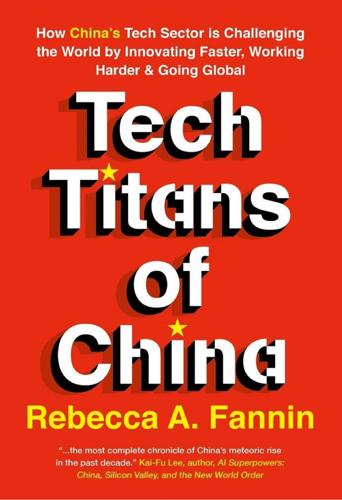
Tech Titans of China: How China's Tech Sector Is Challenging the World by Innovating Faster, Working Harder, and Going Global
by
Rebecca Fannin
Published 2 Sep 2019
China’s mobile payments market led by WeChat Pay and Alipay already exceeds US credit and debit card usage. •Fintech: Alibaba affiliate Ant Financial is a one-stop financial services giant that uses big data and machine learning to dominate in money market funds, lending, insurance, mobile payments, wealth management, and blockchain services. •Social credit: China’s new, controversial social credit system judges a citizen’s trustworthiness through technological surveillance and encourages compliance by giving ratings that can determine access to loans, jobs, schools, and travel. •Sharing economy: China-invented business models for shared bikes, battery chargers, umbrellas, basketballs, and takeout kitchens have been popularized by dozens of startups.
…
Shortly after Alibaba scored its mega IPO in New York in 2014, Alipay’s financial services business was rebranded Ant Financial in a new push into financial services, and then in 2018, Alibaba crawled back in, buying a 33 percent stake in Ant Financial. Alibaba’s fintech affiliate is shaking up the financial sector with internet technology and big data for wealth management, mobile payments, insurance, microloans, money market funds, and blockchain for cryptocurrencies. Its money market fund, Yu’e Bao, promising returns of more than 4 percent, became the world’s largest fund in just four years after its 2013 launch, with $211 billion in assets and 370 million account holders, who needed only 15 cents to open an account. The fund’s assets have since downsized to $168 billion following pressure by Chinese regulators and concerns of systemic liquidity risks to the entire banking market.10 Ant Financial made big news again when it hauled in the largest-ever single fund-raising by a private company: an eye-popping $14 billion investment in 2018 at a valuation of about $150 billion from US private equity firms Carlyle Group, Silver Lake Partners, Warburg Pincus, and General Atlantic, as well as Singaporean sovereign wealth fund GIC.
…
“It was true 25 years ago that China was copying, but today China has cutting-edge tech. At Tsinghua University, it’s as good as it gets,” says Robinson, general partner of New York–based RRE Ventures, a longtime investor in China who sees the Chinese coming up fast in quantum computing, machine learning, blockchain, and software for gaming. “It was true 25 years ago that China was copying, but today China has cutting-edge tech. At Tsinghua University, it’s as good as it gets.” Jim Robinson Cofounder and general partner, RRE Ventures But there’s a potential downside. Many venture-funded Chinese startups are burning cash like there’s no tomorrow to chase growth, well before profits (just as Amazon did).

How Boards Work: And How They Can Work Better in a Chaotic World
by
Dambisa Moyo
Published 3 May 2021
Older companies’ reluctance to innovate and embrace cost-cutting technologies is what gives newcomers an opportunity to disrupt whole industries. Another innovation, blockchain, also promises to upend traditional business processes. Blockchain is the decentralized, secure record-keeping technology behind cryptocurrencies like Bitcoin. It can be used to speed up global transactions, such as a US-based company buying a barrel of oil from the Middle East. Where a transaction like this has traditionally taken many weeks or even months, with lots of paperwork and numerous middlemen—including accountants, lawyers, and banks—blockchain makes it so that it can be done in a matter of minutes. The application of blockchain that has been the subject of the most heated debate in recent years is, of course, cryptocurrencies.
…
March 13, 2020. www.catalyst.org/research/women-on-corporate-boards/. Cavale, Siddharth. “P&G Holds Peltz at Bay as Shareholders Back Company’s Board Picks.” BNN Bloomberg, October 10, 2017. www.bnnbloomberg.ca/p-g-holds-peltz-at-bay-as-shareholders-back-company-s-board-picks-1.880445. CB Insights. “How Blockchain Could Disrupt Banking.” December 12, 2018. www.cbinsights.com/research/blockchain-disrupting-banking/. CEIC. “European Union Market Capitalization: % of GDP.” Last modified July 2, 2020. www.ceicdata.com/en/indicator/european-union/market-capitalization--nominal-gdp. CEO Climate Dialogue. “Guiding Principles for Federal Action on Climate.” www.ceoclimatedialogue.org/guiding-principles.

The Future Is Asian
by
Parag Khanna
Published 5 Feb 2019
China is intentionally pursuing internationalization to lock partners into renminbi-denominated trade prior to making its currency freely convertible. It aims to have half its trade denominated in renminbi in the near future—a goal that switching oil contracts to renminbi would advance rapidly. China is also strategically pushing blockchain-based currencies so that it can trade in ways that will evade the long arm of the US Treasury Department and its sanctions. Given the rapid advance of these blockchain instruments, it is more likely that all Asian countries will use them to denominate trade with each other than that they will all change to using the renminbi. Whatever the currency, central banks such as those of Singapore, Australia, and New Zealand have established financial technology (“fintech”) bridges to enable seamless cross-border payments with others quickly getting on board.
…
Aadhar universal ID card, 187 Abbasid Caliphate, 36, 38, 69 Abbott, Tony, 128 Abe, Shinzo, 63, 132, 155 Abu Dhabi, 100, 103 art scene in, 342 film industry and, 348 Abu Dhabi National Oil Company, 102 Achaemenid people, 30, 32 ADNOC, 103 Afghanistan, 9, 16, 47, 106–7, 116 Asian trade of, 107 China and, 116, 117 India and, 118 Soviet invasion of, 58, 59 Taliban takeover of, 62 US invasion of, 3, 62, 113 Africa, 68, 261–68 Asian investments in, 262–63, 264, 266 Asian trade with, 261, 264–65 China and, 261, 262, 263–65, 266 Chinese debt of, 263–64 Chinese immigrants in, 263 corruption in, 267 Dubai as offshore hub of, 261 food imports of, 266 India and, 264–66 Indian migration to, 265 Japan and, 265 overpopulation in, 266 Southeast Asia and, 264 Soviets and, 261 West and, 261 see also specific countries African Development Bank, 266 agriculture: East Asian spread of, 29 West Asian origins of, 28 Ahmadinejad, Mahmoud, 62 Air Asia, 121–22 AI research, in Asia, 98, 174, 199–200 airline routes, in Asia, 156 Akbar, Mughal emperor, 70–71 Akkadian Empire, 29 Aleppo, 28 Alexander III, king of Macedon, 32, 68 Alibaba, 85–86, 104, 134, 154, 167–68, 173, 184, 188–89, 193, 198, 199, 202, 210, 244, 318, 319, 321 Al Jazeera International, 314, 331 Al Qaeda, 62, 117 alternative energy, 17, 19, 84, 97, 101, 109, 141, 175, 178–80, 182 Asia and, 17, 112 alternative energy programs, 17, 19, 84, 97, 109, 141, 175, 178–80, 182 Amazon, 193, 198, 210, 348 Amu Darya River, 67 Anatolia (Asia Minor), 28, 29, 30, 33, 36, 38, 41, 92 see also Turkey, Republic of Angkor Wat, 70, 239 Anglo-Iranian Oil Company, 50 Ankara, 49 anticolonial movements, 74 anti-Semitism, 97 Apple, 198, 320 Aqaba, 97, 99 Arab Americans, 217, 218 Arabian Peninsula, 36, 50 Arabic script, 69 Arab-Israeli conflict, 54, 57, 101 Arab League, 54 Arabs, Arab world, 11, 68, 72, 73, 76 Asia and, 96 Chinese investments in, 103 in Europe, 253, 255 global image of, 331 in Latin America, 276 US and, 100–101 youth unemployment in, 204–5 Arab uprisings (2011), 91, 255, 314 Arab world, Asia and, 96 Arafat, Yassir, 62 Arctic, Asian gas exploration in, 249 Argentina, 272 Asian trade with, 272 Aristotle, 37 Armenia, 59 Armstrong, Karen, 220 artificial intelligence (AI), 98, 174, 199–200 in governance, 318–19 Art of War, The (Sun Tzu), 31 arts, in Asia, 341–43 ASEAN, see Association of Southeast Asian Nations ASEAN–China Free Trade Area (ACFTA), 154 ASEAN Regional Forum, 9, 60, 127 Ashdod, 99 Ashoka, Mauryan emperor, 33, 35 Asia: Americans in, 229–35 ancient, 28–36, 239 Asian cross-border investment in, 156 branding of, 330–33 as coherent regional system, 5, 6–7, 8–11, 8, 15, 120, 140, 151–58, 352 in Cold War era, 51–58, 138 cross-regional investments in, 113–20 cultural and commercial exchange in, 29–30, 32, 33, 34–39, 68–72 in era of European imperialism, 43–51, 73–75 ethnic and cultural diversity of, 78, 330 expansionist period in, 36–43 GDP of, 2, 4 geographic extent of, 1, 5–6 geopolitical flashpoints in, 11 historical self-knowledge as lacking in, 75 IDI rankings of, 150 internal ignorance about, 24, 352 migration in, 46, 69, 74, 188, 333–37 mixture of democracy and authoritarianism in, 309 modern reawakening of, 58–63 as multipolar, 15–16, 20, 75–76, 78, 137 nomenclature of, 6, 9, 67–68 population of, 1, 4, 5 postcolonial affinities of, 330 PPP of, 2, 9, 10 precolonial connectivity of, 72–73 preference for stability over democracy in, 309–13 return of international students and workers to, 226–27 third growth wave in, 147–51 US military presence in, 137, 138 see also specific countries and subregions Asia-Africa Growth Corridor, 266 Asia-Europe Meeting (ASEM), 241 Asia Minor, see Anatolia Asian Americans, 217–18, 225–26, 228–29 academic achievements of, 219 Asian domestic politics and, 222 in athletics, 220 in politics, 221 real-estate industry and, 224 in US economy, 218 see also specific ethnicities Asian Development Bank (ADB), 9, 109, 110, 150, 199 Asian Games, 330 Asian Infrastructure Investment Bank (AIIB), 8, 9, 63, 94, 97, 109–10, 243, 323 Asianization: of Asia, 9, 80–91, 106, 120, 127–31, 330, 333 of global civilization, 21–24, 345–51 “Asianization of Asia” (Funabashi), 8–9 Asian Journal of Social Science, 352 Asians: in Europe, 253–58 in return to Asia, 226–27 in US colleges and universities, 224–27 Asia Times, 353 Asia Week, 353 Assad, Bashar al-, 87, 106, 142, 310 Association of Southeast Asian Nations (ASEAN), 54, 60, 63, 87, 102, 121, 125, 126, 141, 154, 156, 161, 208, 250, 264, 273, 277, 338 Australia’s possible joining of, 129 financial markets in, 167 see also Southeast Asia Assyria, 29 Astana, 111 Atatürk, Mustafa Kemal, 49, 91 Aung San, 49 Aung San Suu Kyi, 63 Australia: alternative energy programs in, 180, 182 Asian immigrants in, 129–30 Asianization of, 81, 127–31 Asian trading partners of, 128–29 China and, 127–31 Chinese hegemony resisted by, 19–20 exports of, 175 tourism in, 129 US and, 128 Western ties to, 127, 128, 131 Australia and New Zealand Banking Group (ANZ), 131 Australian Open, 131 automation, 193–94 automobile industry, 210–12, 227–28 aviation industry, 211 Azerbaijan, 59, 140 infrastructure investment in, 191 oil and gas exports of, 190–91 Babur, Mughal emperor, 41 Babylon, 28, 29 Bactria, 30, 33, 35 Baekje Kingdom, 34 Baghdad, 37, 40 Bahrain, 104 Baidu, 167–68, 171, 188, 198, 199, 208, 226 Baku, 191 Baku-Tbilisi-Ceyhan (BTC) pipeline, 92 Bamiyan, Buddha statues of, 68 Bangalore, 245 Bangladesh, 55, 118, 122, 185, 302, 334 economic growth of, 187 Bangladesh-China-India-Myanmar (BCIM) Economic Corridor, 119 Bank of Japan, 132 Batavia, 45 Beatles, 331 Beijing, art scene in, 342 Bell, Daniel, 301 Belt and Road Initiative (BRI), 1–2, 14, 18, 19, 63, 85, 105, 108, 109, 110, 113, 117, 126, 133, 138, 143, 147, 156, 212, 242, 243, 247, 262 Bengal, 35, 36, 38, 46, 55 see also Bangladesh Bengal, Bay of, 39 Benioff, Marc, 331 Bharatiya Janata Party (BJP), 313 Bhutan, 46, 119, 182 eco-tourism in, 340 Bihar, 186 billionaires, in Asia, 160 Biruni, Al-, 37 blockchain-based currencies, intra-Asian trade and, 157 blockchain business models, 174 Bollywood, 349–51 Bolshevik Revolution, 49 bonds, in Asia, 163, 164, 167 Books Kinokuniya, 133 border disputes, 113, 119, 120, 139 in Kashmir, 53, 55, 61, 77–78, 117–18 Boxer Rebellion, 47 Brahmaputra River, 118, 182 Brazil, 272, 350 Asian economic ties to, 274, 276–77 Asian immigrants in, 276 Brexit, 127, 232, 247, 252, 283–84, 286, 293–94 British East India Company, 46 Bronze Age, 29 Brown, Jerry, 178 Buddha, 31 Buddhists, Buddhism, 32, 37, 38, 40, 68, 69, 70–71, 182, 316, 332 in Southeast Asia, 121 spread of, 33–35 Tibetan diaspora of, 120 in US, 220 Buffett, Warren, 317 Bukhara, 32, 39, 46 Burma, 39, 46, 49, 50, 51, 53 see also Myanmar Bush, George W., 18, 240 business schools, US, Asian campuses of, 232 Buzan, Barry, 7 Byblos, 28 Byzantium, 36, 39, 91 fall of, 41, 43 Calcutta, 46 Cambodia, 45, 52, 56, 122, 154, 239 Cameron, David, 247, 293 Canada, 7, 176, 284 Asian immigrants in, 223–24 China’s relations with, 223 Latin American trade with, 273 Can Asians Think?
…
The start-up CeeSuite has automated the investment banking lifecycle for the vast pool of regional SMEs that could never afford Wall Street banks. Its founders are also creating a virtual accelerator that digitizes the stages and lessons of the start-up process, from crowd-funding investment through initial coin offerings (ICOs) and blockchain-based business models. Cybersecurity companies are thriving in Singapore and expanding from there. Asians are learning and adapting as much or more from each other as from the West. The ride-sharing industry is emblematic of how Western companies are losing out to local rivals for both strategic and cultural reasons.
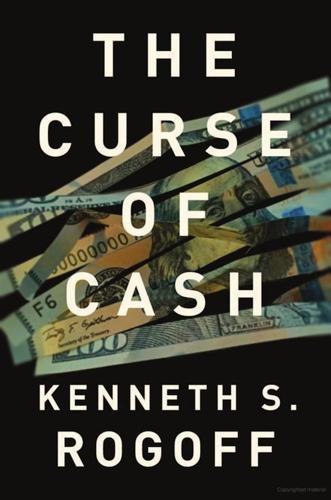
The Curse of Cash
by
Kenneth S Rogoff
Published 29 Aug 2016
See also Bitcoin; cryptocurrencies American Hustle (Russell), 71 Amromin, Gene, 238n22 Andolfatto, David, 213 Antràs, Pol, 236n12 Argentina, 44, 82 Ascaria, Guido, 248n5 Australia, 52, 132 Austria: cash, per capita holdings of, 33; cash used for different kinds of purchases, percentage of, 55–56; coinage debasement in, 20; currency held by consumers in, 51–52; deutsche mark currency demand, as a control for estimating, 45; stamp currency experiment in, 164–65 Automated Clearing House system, 103 Bagehot, Walter, 244n9 Bank Act of 1844 (Peel’s Act), 235n25 Bank of England: inflation target, choice of, 153; interest rate hike prior to 2008, impact of, 177–78; nominal policy interest rates, 2000–2015, 130; notes convertible to specie, early issue of, 26; quantitative easing by, 135–36 Bank of Japan: inflationary expectations, challenges faced in lifting, 124; inflation target, choice of, 153; January 2016 policy of, 250n5; museum of, understanding coinage debasement in, 20; negative interest rates, experience with, 1, 161; quantitative easing by, 135–36, 143; zero-bound problem of, lack of international coordination regarding, 206 Bartzsch, Nikolaus, 236n23 Baum, Frank (author of The Wonderful Wizard of Oz), 192 Belgium: cash used for different kinds of purchases, percentage of, 55; currency/GDP ratio, 1995, 46–47; restrictions on the use of cash, 64 Bennett, Paul, 237n4 Bernanke, Ben: financial stability, limits to concern regarding, 176; “global savings glut,” 122; “Helicoper Ben,” advice for Japan from, 155; inflation targeting adopted under, 232; macroprudential regulation, argument for, 177; Perry’s attack on, 191; small interest hikes, limited impact of, 177; “taper tantrum” set off by, 126, 141 Billi, Roberto, 229 biometric method for estimating foreign holdings of currency, 43–44 Bitcoin/bitcoins: “Bencoin” as governmental version of, 209–10, 213–14; blockchain technology pioneered by, 112; as a currency, possibility of, 211; as encrypted digital technology, 208; inflation and, 213; market price of, 212; as payment mechanism for criminal activities, 72; security of using, 67 Black, Fischer, 244n5 Blackburn, David, 253n6 Blanchard, Olivier Jean, 248n2, 252n7 blockchain technology, 112, 210, 213–14 border control, issue of, 75–76 Bordo, Michael D., 234n6 Brazil, 65, 183–84, 191, 205 Breaking Bad (TV series), 68, 240n27 Bretton Woods regime, 30 bribes, 70 Britain.
…
Credit card companies already make use of neural networks to detect payment fraud. (A purchase coming from Russia for a designer handbag being shipped to the French Riviera might be regarded as suspect for a cardholder who lives in Boston.) Security is constantly evolving. Some Federal Reserve officials have talked about using a variant of the blockchain methodology pioneered by the cryptocurrency Bitcoin to create payment platforms that have built-in security due to its distributed public ledger verification process. We consider this technology in chapter 14. There are certainly going to be other special cases where cash is still needed. An interesting example is the recent experience of marijuana shops in Colorado after the state legalized the drug in 2014.
…
Regardless of whether the first generation of cryptocurrencies survives the next decade, the public ledger encryption technology they pioneer just might provide a road map to better security over a broad range of financial transactions. The basic idea, in a nutshell, is to create a system in which diverse private-sector individuals (or entities) are incentivized to maintain independent ledgers of transaction trees (or blockchains), and new transactions cannot clear the books without achieving a critical mass of third-party acceptance. A fair dose of encryption technology is also included, and in Bitcoin, for example, individuals are allowed to use aliases with passcode-protected accounts to make it difficult to determine their identities.
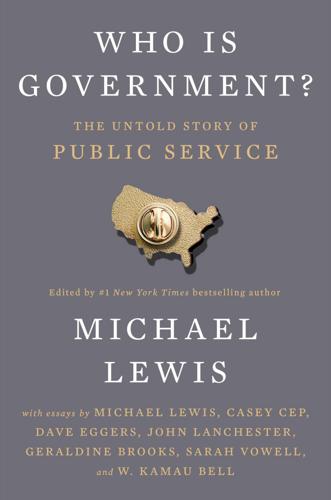
Who Is Government?: The Untold Story of Public Service
by
Michael Lewis
Published 18 Mar 2025
The next time a politician or a pundit traduces the IRS, or JD Vance suggests firing half the civil service and putting in “our people,” consider whether a system that filled out its ranks with a new batch of political loyalists every four years would have the expertise of these dedicated, lifelong civil servants. For obvious reasons, Koopman is vague about the tracing techniques his agents use to follow money on the blockchain. And even if he weren’t, you’d need to speak fluent Geek to understand it. The methods change constantly, helped along by specialist blockchain analytics firms and academic researchers, always adapting to keep up with criminals who try new ways of mixing and tumbling transactions to evade pursuit. The new frontier for criminals is the gaming world of the metaverse, which combines anonymity with digital currency.
…
On the coding query, Altoid had initially given an email address for replies, before going back later and deleting it. But Alford discovered that one responder had copied that address into his reply: rossulbricht@gmail.com. Ross Ulbricht is now serving two life sentences plus 40 years. Because of the permanent record of the blockchain, the U.S. Treasury has received a gift that keeps on giving, as Koopman’s team continues to unearth illicit accounts tied to Silk Road crimes. Long after Ulbricht’s arrest, another of Koopman’s agents, Tigran Gambaryan, figured out that the people who had really been stealing from Silk Road were not the drug dealers Ulbricht had plotted to have killed, but a DEA agent and a member of the Secret Service supposedly working alongside the IRS on the case.
…
The key piece of evidence nailing the DEA agent was another digital scar. Ulbricht usually encrypted all his messages, but in a moment of carelessness he’d failed to run one line of text through his privacy software. In that line, he mentioned the amount of a payment to one of the agent’s aliases. Koopman’s team was able to trace that figure through the blockchain to its destination in the agent’s personal account. The DEA’s Carl Mark Force IV served more than five years in prison; the Secret Service’s Shaun Bridges served six. In November 2021, they traced another stash of bitcoin that had been stolen from Silk Road nine years earlier. The key to the digital wallet was found on a circuit board in a popcorn tin stored in the bathroom closet of a house in Gainesville, Georgia.

The Innovation Illusion: How So Little Is Created by So Many Working So Hard
by
Fredrik Erixon
and
Bjorn Weigel
Published 3 Oct 2016
It is very difficult to change merchant behavior.”16 No one knows how this market will evolve, but markets, competition, and consumer behavior – not only the technology itself – will determine its future success. The same is true for another promising technology that can be applied to the payments market: blockchain, or mutual distributed ledger technology (like bitcoin). The market clearly sees a big potential in blockchain technology. It could reduce the costs and risks in transactions, and create a far better system for sharing information in financial markets. Some have billed it as a greater technological leap than the internet for capital markets. Perhaps it will be, but the hype around the technology is premature and the expectation of big market changes is an aspiration.
…
12.Ad Hoc Committee on the Triple Revolution, “The Triple Revolution: Cybernation, Weaponry, Human Rights.” 13.Tracy, “Why Some of Google’s Coolest Projects Flop Badly.” 14.Tracy, “Why Some of Google’s Coolest Projects Flop Badly.” 15.Polymath Consulting, “A Brief History of Payments.” 16.Byrnes, “Technology Repaints the Payment Landscape.” 17.Mainelli and Milne, “The Impact and Potential of Blockchain,” 4. 18.Mainelli and Milne, “The Impact and Potential of Blockchain,” 5. 19.Simmons, “George Foster: Are Startups Really Job Engines?” 20.AlixPartners, Press release on “C.A.S.E. – Car of the Future.” 21.Phelps, Mass Flourishing, 19. 22.Pugsley and Şahin, “Grown-up Business Cycles.” 23.Hathaway and Litan, “The Other Aging of America.” 24.Pugsley and Sahin, “Grown-up Business Cycles.”
…
Magnus, George, The Age of Aging: How Demographics Are Changing the Global Economy and Our World. Wiley, 2012. Mahbubani, Kishore, “The Case Against the West.” Foreign Affairs, May 3, 2008. At https://www.foreignaffairs.com/articles/asia/2008-05-03/case-against-west. Mainelli, Michael, and Alistair Milne, “The Impact and Potential of Blockchain on the Securities Transaction Lifecycle.” Working Paper No. 2015-007. Swift Institute, May 2016. Mandel, Michael, and Diana G. Carew, “Regulatory Improvement Commission: A Politically Viable Approach to US Regulatory Reform.” Progressive Policy Institute, May 2013. At http://www.progressivepolicy.org/wp-content/uploads/2013/05/05.2013-Mandel-Carew_Regulatory-Improvement-Commission_A-Politically-Viable-Approach-to-US-Regulatory-Reform.pdf.
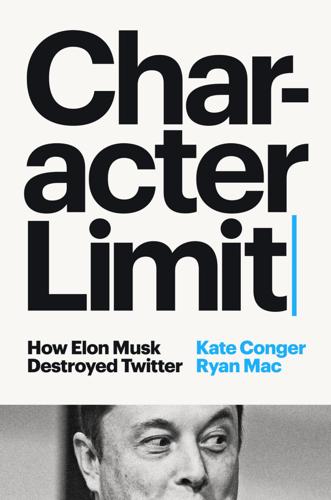
Character Limit: How Elon Musk Destroyed Twitter
by
Kate Conger
and
Ryan Mac
Published 17 Sep 2024
He hadn’t given up completely on the idea of creating his own separate social media platform either. Earlier that morning, he had been texting with Kimbal about a Twitter-like site built on blockchain. Users would spend tiny amounts of money to post messages, cutting out bots. As Musk slung arrows at Agrawal, he was simultaneously texting his brother about his idea. “I think a new social media company is needed that is based on blockchain and includes payments,” he wrote to his younger sibling. Still, to Musk, Twitter was unique. After all, it was where he had built a loyal following and become one of the platform’s most prominent voices.
…
As Birchall would tell others: “If Elon asked Steve to jump out of a window, he would do it.” Musk had texted his tweet announcing his offer to the Boring Company’s head early on Thursday morning along with ideas for a “Plan B” to build a “blockchain-based version of Twitter.” “Amazing!” Davis wrote back after waking up and seeing the messages from his boss. “Not sure which plan to root for. If Plan B wins, let me know if blockchain engineers would be helpful.” Neither Afshar nor Davis, however, were quite as jazzed as Jason Calacanis, a tech entrepreneur who pivoted to investing and hosting podcasts. One of his early companies had funding from Musk, and over the years, Calacanis, a beady-eyed man with a penchant for name-dropping his famous friends, became one of the staunchest defenders of Tesla and its leader.
…
The hearings felt theatrical, with the senators or representatives grandstanding on the culture war topic du jour. Dorsey attended the hearing—still virtual because of COVID concerns—from his Sea Cliff mansion kitchen, calling in from an iPad stacked on top of a pile of books. His dishes, glassware, and a blockchain-based clock could be seen in the shot framed behind his buzzed head and graying beard. He did his best to explain how Twitter had arrived at its content moderation decisions, trying to walk the lawmakers through the process. But they kept interrupting him, demanding that he give yes or no answers that left little room for nuance.

The Smartphone Society
by
Nicole Aschoff
Perhaps following in the footsteps of Henry Ford’s model city, Fordlandia, built in the Brazilian state of Pará, Microsoft purchased twenty-five thousand acres in Arizona to build the City of the Future, while Page has invested in research on the feasibility of privately owned city-states.26 More recently Jeffrey Berns, a cryptocurrency millionaire, bought a chunk of land in Nevada bigger than Reno to build a Utopian blockchain community. Berns believes that blockchains—decentralized, distributed, public digital ledgers facilitated by autonomous, peer-to-peer networks—will give people rather than companies or governments power: “I don’t know why,” says Berns. I just—something inside me tells me this is the answer, that if we can get enough people to trust the blockchain, we can begin to change all the systems we operate by.”27 Blockchain Utopias and the Singularity are pretty far afield from phone apps and social networks, but the expansive simplicity of its vision is what makes the emergent Silicon Valley spirit of capitalism so appealing.
…
“Abrams, Jenna,” 109 ACLU (American Civil Liberties Union), 21, 22, 96, 148–49, 153, 176n28 Acxiom, 72, 77 addiction to social media, 65–69 Admiral, 78, 79 Adolfsson, Martin, 84 AdSense, 52 Advanced Research Projects Agency Network (ARPANET), 80 advertising: data collection and, 76–77, 83–84; on Facebook, 47–48; on Google, 52; political, 149 AdWords, 52 Afghanistan, politics in, 95–96 age discrimination, 149 AI Now, 129, 157 Airbnb, 42, 119, 120, 148 al-Abed, Bana, 90 al-Abed, Fatemah, 90 Aldridge, Rasheen, 91 algorithm(s): for consumer categories, 77; in dystopian future, 129–30, 131; in politics, 109–10; recommender, 67; search, 51–52, 53 algorithmic accountability, 151, 157–59 “algorithmic management,” 32–34 Alibaba, 4, 42 Allard, LaDonna Brave Bull, 104 aloneness, 7 Alphabet, 41, 55, 76, 122, 150 Alpha Go Zero program, 122 alter-globalization activists, 91 Amazon: acquisitions by, 41; and CIA, 81; in Europe, 150; marketplace model of, 150; as monopoly, 53–54; and new capitalism, 118–19; as new titan, 38–41, 44, 45; power of, 54–55; Rekognition software of, 149; tax evasion by, 49; warehouse workers at, 31–32, 33, 34; working conditions at, 46 Amazon Shopping, 30 Amazon Web Services (AWS), 41 American Academy of Pediatrics, 9 American Association of People with Disabilities, 55 American Civil Liberties Union (ACLU), 21, 22, 96, 148–49, 153, 176n28 American Dream, 120–21 American Library Association, 55 amplification, 91 analog networks, in cognitive mapping, 143 Android operating system, 39, 41, 53, 69, 70–71, 72 “angel investor,” 120 Ant Financial, 42 antidiscrimination laws, 149 antitrust laws and practices, 43–44, 52–53, 55, 150 AOL, data collection from, 81 app(s): top ten, 38 “app dashboard,” 69 app jobs, 30–34, 35, 137 Apple: data collection from, 81; in Europe, 150; low-paid workers at, 147; as new titan, 42; refusal of “right to repair” by, 155; supply chain of, 28–29; tax evasion by, 49–50; working conditions at, 46 appropriation, frontiers of, 73–76 appwashing, 34, 35, 146 “Arab Spring,” 97 Ardern, Jacinda, 93 ARPANET (Advanced Research Projects Agency Network), 80 artificial intelligence, 121–22, 123, 130 aspirational story, 120 assembly workers, 28–29 Athena, 42 AT&T, 29, 42, 43, 71 attention, 7 Audible, 41 Australia, justice in, 21 automation, 128, 131 automobiles, analogy between smartphones and, 2–3, 161, 162 autonomy, 117, 124 AWS (Amazon Web Services), 41 bad behavior, 138–39 Baidu, 42 Bannon, Steve, 105 Barlow, John Perry, 124 Bellini, Eevie, 24 Berners-Lee, Tim, 40 Beyoncé, 61, 107 Bezos, Jeff, 38, 44, 49, 54, 118–19 Bharatiya Janata Party (India), 93 big data, 76, 83–84, 145 Binh, Huang Duc, 95 black(s): police violence against, 17–23, 35, 169n6, 169n13 Blackberry, 6 “black-box algorithms,” 151 Black Lives Matter (BLM), 89–90, 100–102, 104, 107, 111 Blades, Joan, 91 blockchains, 124 body cameras worn by police, 22 book publishers, 172n40 boredom, 11 bots, 109 Boyd, Wes, 91 boyfriend, invisible, 24 Boyle, Susan, 63 Brazil, politics in, 97 Brin, Sergei, 38, 41, 54, 119, 148 Brown, Michael, Jr., 22, 89–90, 91, 101–2 Buffett, Warren, 41 Bumble, 23, 91 Bumblehive, 81 Burke, Tarana, 108 Bush, George W., 99 Calico, 41 California Consumer Privacy Act, 150 “CamperForce,” 31–32 Canales, Christian, 21 cancer, 7 candidates, social media use by, 103–5 Capital G, 41 capitalism: chameleonesque quality of, 116–17; crony, 105; and frontiers, 72–79; maps of, 143–44; neoliberal, 69, 102, 112–13, 117–18, 144–45; smartphones as embodiment of, 161–62; spirit of, 115–18; surveillance, 8 capitalist frontiers, government and, 80–81 carbon footprint, 82, 175n77 Carnegie, Andrew, 37, 54, 57 Castile, Philando, 20, 35 CatchLA, 62 caveats, 14–15 celebrities, in digital movements, 91 celebrity culture, 64–65 censorship, 95 Center for American Progress, 55 Center for Responsive Politics, 56 Central Intelligence Agency (CIA), 81, 95, 96, 138, 175n74 centrism, 112 Chadaga, Smitha, 89 change agent, 12 Chan, Priscilla, 56 Chan Zuckerberg Initiative (CZI), 56 Charles, Ashley “Dotty,” 109 Charlottesville, Virginia, 106–7, 111 Chesky, Brian, 120 children, 8, 9, 11–12, 84 China, 4, 42, 94–95 Chronicle, 41 CIA (Central Intelligence Agency), 81, 95, 96, 138, 175n74 Cienfuegos, Joaquin, 20–21 City of the Future, 124 Clinton, Bill, 43, 91, 99 Clinton, Hillary, 50, 107 Clooney, George, 91 “the cloud,” 82 cloud storage facility, 81 coercive relationships, 137–38, 152–54 cognitive maps and mapping, 143–59; algorithmic accountability in, 151; antidiscrimination laws in, 149; coercive and unjust relationships in, 152–54; defined, 143; digital and analog networks in, 143; digital commons in, 156–59; ecological externalities in, 145; economic implications in, 151–52; internet access for poor and rural communities in, 149–50; lacunae in, 145; low-paying jobs in, 146–49, 153–54; monopoly in, 150; political advertising in, 149; power in, 145; and principles of smartphone use, 152–59; privacy in, 150–51; selfish or immoral behavior in, 154–56; sociotechnical layers of, 145 collateral damage, 96 collective action, 155–56 Comcast, 29, 71 comic books, 11 commodification of private sphere, 144 Communications and Decency Act, 51 communities, on-line, 64 community broadband initiative, 149–50 Community Legal Services, 171–72n32 Compass Transportation, 147 Computer and Communications Industry Association, 55 “connected presence,” 6 connection, 44, 63–64, 143, 162 connectivity, 122 Connolly, Mike, 94 consumer(s): vs. producers, 28–29 consumer categories, 77 consumer scores, 77–78 consumption, 83, 138–39 content algorithms, 51–52 content creation, 74–79 contingent workers, 30 convenience, 29–30, 35 Cooperation Jackson, 155 cop-watch groups, 20–21 “The Counted,” 19, 169n6 “creative monopoly,” 44 creativity, 117 credit scores, 78–79 creepin”, 65 critiques, 7–8 crony capitalism, 105 CrushTime, 24 Cruz, Ted, 92 “Cuban Twitter,” 95 Cucalon, Celia, 48 Cullors, Patrisse, 100–102 cultural capital, 62 “custom breathers,” 69 “customer lifetime value score,” 78 “cyberspace,” 82 CZI (Chan Zuckerberg Initiative), 56 Dakota Access Pipeline Protests, 103–4, 110 dashboard apps, 132 data brokers, 72, 77 data centers, energy use by, 82 data collection, 70–72, 83–84, 137, 150–51, 156–59 data mining, 76–79 data ownership, 135–36 “data smog,” 72 Data & Society, 151, 179n20 data vendors, 76 datification, 156–57, 161 dating apps, 23–27, 35 decentralization, 101–2, 120 decommodification, 156–57 DeepMind, 41, 79, 122, 157 Deliveroo, 32–33, 153 Department of Homeland Security, 149 Desai, Bhairavi, 146 Descartes, René, 67 Diallo, Amadou, 19 Diapers.com, 41 dick pics, 25 Dick’s Sporting Goods, 91 digital-analog political model, 104, 110–12, 145, 162 digital commons, 139–41, 156–59 digital divide, 28–29, 35 “digital exclusion,” 29 digital frontier, limits of, 82 digital justice, 17–23, 152, 157, 169n6, 169n13 digital networks, 143 digital platforms, 44 “digital redlining,” 29 “digital well-being,” 69 disconnection, 132–33 discrimination in housing, 47–48 divides, 17–36; built-in, 28–34, 35; related to justice, 17–23, 169n6, 169n13; related to sexuality, 23–27, 35 division of labor, 74–75 Dobbs, Tammy, 129 documentation, 62 domestic violence, 25 DoorDash, 33–34, 146–47 dopamine driven feedback loops, 67 double standard, 25–27, 35 drone warfare, 95 “dual economy,” 12–13 dumbness, 7, 9 “dumb phone,” 1, 8, 132, 167n15 dystopian future, 125–26, 128–30, 131 eBay, 147, 148 Echo Look device, 84 ecological externalities, 145 ecological limit of digital frontier, 82–83, 175n77 economic crisis (2008), 98–100, 117–18 economic divide, 13–14 economic implications, in cognitive mapping, 151–52 economic nationalism, 105 “ecosystems,” 40 Eddystone, 78 education, 13 Edwards, Jordan, 18 Egypt, 92, 97 elderly Americans, 63–64, 84 Electronic Frontier Foundation, 55, 124 Elliot, Umaara, 90 Ellison, Keith, 45 emails: vs. phone calls, 6; scanning of, 70–71 Emerson, Ralph Waldo, 133 employment relationships, 137 encryption, 81, 175n74 energy consumption, 151–52, 154–55; by physical elements of digital life, 82, 175n77 entrepreneurship, 120–21 environmental justice, 154–55 Epsilon, 72 Equal Credit Opportunity Act, 78 Estrada, Joseph, 90–91 Europe, American tech titans in, 150 European Union (EU), 49, 52–53, 150–51 experience economy, 62, 83 exploitation of labor, 75 externalization of work and workers, 31 Facebook: acquisitions by, 41; addiction to, 66–67, 69; and antidiscrimination laws, 149; credit ratings by, 79; data collection by, 71–72, 76, 81, 84; demographics of, 84; discrimination in advertising by, 47–48; employees organizing at, 148; in Europe, 150; Free Basics by, 41–42, 50; low-paid workers at, 147; managing impressions on, 63; as monopoly, 53–54, 172n46; and new capitalism, 124, 136; as news source, 50–51; as new titan, 38–39, 40, 41–42, 44–45; power and influence of, 56; tax evasion by, 49; time spent on, 60 Facebook Live, 84 Facebook Pixel, 72 “Facebook Revolution,” 97 facial recognition software, 129, 149 Fair Housing Act, 48 fake news, 50–51, 56 Federal Bureau of Investigation (FBI), 149 feedback loop, 66–67 “Feminist Five,” 108 feminist movement, 107–8 Ferguson, Missouri, 89–90, 101–2 Fields, James Alex, Jr., 106 filter bubbles, 53, 109–10 financial crisis (2008), 98–100, 117–18 fintech companies, 78–79 flexibility, 117 FlexiSpy, 25 FOIA (Freedom of Information Act) requests, 149 food delivery apps, 32–33 food pictures, 62 forced arbitration, 148 Ford, Henry, 37, 124 Fordlandia, 124 Ford Motor Company, 37, 38, 44 Fowler, Susan, 126–27 FoxConn, 28 framing of analysis of cell phones, 12–14 Free Basics, 41–42, 50 Freedom of Information Act (FOIA) requests, 149 “free market” competition, 98 free speech, 138 Friedman, Patri, 124 frontier of social media, 59–86; addiction to, and fears about, 65–69; and big data, 82–86; characteristics of, 59–65; and government, 80–81; and privacy, 69–72; and profit, 72–79 Fuller, Margaret, 133 Galston, Bill, 45 gamification, 23–24, 146 Garza, Alicia, 100–102 Gassama, Mamoudou, 115 Gates, Bill, 56, 130 General Data Protection Regulation (GDPR), 150–51, 156 Geofeedia, 96 geopolitics, 95–96, 144 Germany, 3 Ghostbot, 24 gig economy, 137 Gilded Age, 1–2, 11, 54 global divides, 28–29 globalization, 98 Global Positioning System (GPS), 5 Gmail, 38, 71 Goodman, Amy, 104 Google: addiction to, 69; advertising on, 76; companies owned by, 41; data collection by, 70–71, 76, 81, 150; employees organizing at, 147–48; in Europe, 150; immoral projects at, 154; and intelligence agencies, 81; lobbying by, 55; low-paid workers at, 147; molding of public opinion by, 55; as monopoly, 52–54; and new capitalism, 119–20, 123, 136; as new titan, 38, 39, 40, 41, 43–45, 56; for online search, 52; power and influence of, 55–56; research funding by, 55; “summer camp” of, 55; tax evasion by, 49, 50; use by children, 84; working conditions at, 47 Google Calendar, 71 Google Chrome browser, 53 Google Drive, 71 Google Earth, 123 Google Fiber, 41 Google Images, 131 Google News, 50 Google Play, 72 Google Search, 38, 41, 53 Google Shopping Case, 52–53 Google Translate, 10 government: and capitalist frontiers, 80–81; and Silicon Valley, 124; surveillance by, 137–38, 144, 148–49 government tracking, 94–95 GPS (Global Positioning System), 5 Grant, Oscar, III, 18 Gray, Freddie, 22, 96 Great Pessimism, 118, 119 Great Recession, 118 Greece, 97 greenhouse emissions, 82 Green New Deal, 103, 151–52, 154, 179n22 Greenpeace, 157 Grindr, 23 gun violence, 90, 91, 110, 111 GV, 41 habitus, 62 Happn, 23, 24 Harari, Yuval Noah, 129–30, 132 Hearst, William Randolph, 50 Herndon, Chris, 56 Heyer, Heather, 106 Hirschman, Albert, 133 household expenses, 13 housing, discrimination in, 47–48 human, fear of becoming less, 67–68 iBeacon, 78 IBM, 149 ICE (Immigration and Customs Enforcement), 21, 148 ICT (information and communication technologies) sector, energy used by, 82 ideals, 120 “identity resolution services,” 77 ILSR (Institute for Local Self-Reliance), 149–50, 153 Immigration and Customs Enforcement (ICE), 21, 148 immoral behavior, 138–39, 154–56 impressions, management of, 62–63 income discrepancy, 12–13 independent contractors, 33–34, 137, 153 India, 4, 42, 60, 93 individualism, 117, 118 information and communication technologies (ICT) sector, energy used by, 82 injustice, 17–23, 169n6, 169n13 In-Q-Tel, 96 insta-bae principles, 61–62 Instacart, 30, 146 Instagram: addiction to, 69; content on, 60, 61, 62; creepin’ on, 65; data collection from, 72; demographics of, 61; microcelebrities on, 60; as new titan, 38, 41; time spent on, 60; value of, 74 Institute for Local Self-Reliance (ILSR), 149–50, 153 insurance companies, data mining by, 79 intelligence agencies, and capitalist frontiers, 81 internet: access for poor and rural communities to, 149–50; access to high-speed, 5, 29; creation of, 80; early days of, 40; government shutdown of, 94; smartphone connection to, 10 Internet Association, 45 Internet Broken Brain, 66 Internet.org, 41 Internet Research Agency, 109 internet service providers, and privacy, 71–72 inventions, new, 11 investors, 120–21 invisible boyfriend, 24 iPhone, 6, 42 Iron Eyes, Tokata, 104 Jacob’s letter, 127 Jacobs, Ric, 127 Jaffe, Sarah, 91 James, LeBron, 92 Jenner, Kris, 59 Jigsaw, 41 Jobs, Steve, 2, 6, 42 Joint Special Operations Command, 95 Jones, Alex, 111 Jones, Keaton, 109 justice, 17–23, 152, 157, 169n6, 169n13 Kalanick, Travis, 126, 127 Kardashian, Kim, 59 Kardashian, Kylie, 59 Kasky, Cameron, 90 Kattan, Huda, 60 Kellaway, Lucy, 1 Kennedy, John F., 88 Kerry, John, 56 Keynes, John Maynard, 117 Khosla, Sadhavi, 93 King, Martin Luther, Jr., 97 King, Rodney, 19 Klein, Naomi, 104 Knight First Amendment Institute, 93, 175n14 Knoll, Jessica, 108 Kreditech, 78–79 Kristol, Bill, 45 Kurzweil, Ray, 123 Lanier, Jaron, 67, 70, 135 Lantern, 95 law enforcement, surveillance by, 96–97, 137–38, 176n28 “leaners,” 29 Lean In (Sandberg), 107 Lehman Brothers, 98 Levandowski, Anthony, 123 LGBTQ community, 10, 64 “lifestyle politics,” 133 “like” button, 66 Lind, William, 105 “listening tour,” 56 Liu Hu, 94 live chats, 5 livestreaming of police violence, 20–21 lobbying, 55, 56 location data, 71 logistics workers, 31 Loon, 41 Loop Transportation, 147 Losse, Katherine, 124 love, 23–27, 35 low-income households, access to high-speed internet by, 29 low-paying jobs, 146–49, 153–54 Luxy, 23 Lyft 30, 31, 33, 146, 153 Lynd, Helen, 2, 3 Lynd, Robert, 2, 3 Lynn, Barry, 56 machine learning, 76, 121–22, 174n52 “machine zone,” 8 Macron, Emmanuel, 93 mainstream media, bypassing of, 91 Ma, Jack, 42 Makani, 41 mamasphere, 64 March for Our Lives, 104 March of the Margaridas, 108 Marjorie Stoneman Douglas (MSD) High School, 90 marketification, 161 Markey, Ed, 152, 179n22 marriage, expectations and norms about, 24–25 Marshall, James, 17–19 Marshall, Tanya, 17–19 Martin, Trayvon, 22, 100 Marx, Karl, 67 mass shootings, 90, 91, 110, 111 Match.com, 23, 24 Match Group, 24 Matsuhisa, Nobu, 62 Maven, 147–48 McDonald, Laquan, 18 McInnes, Gavin, 106, 107, 111 McSpadden, Lezley, 101 meaning, sense of, 64–65, 162 Medbase200, 77 men’s work, 75 mental health of children, 8 meritocracy, 121 Messenger: data collection from, 72 Messenger Kids, 84 metadata, 72 #MeToo movement, 108 microcelebrities, 60 microchoices, 69 Microsoft: and City of the Future, 124; data collection from, 81; employees organizing at, 148; in Europe, 150; immoral projects at, 154; as new titan, 42, 43, 55, 56 Middleton, Daniel, 60 “Middletown,” 2–3 Middletown: A Study in Contemporary American Culture (Lynd and Lynd), 2–3 military, 80–81, 95 mind-body divide, 67–68 miners, 28 Minutiae, 84 misogyny, 25 Mobile Devices Branch of CIA, 81, 95 Mobile Justice MI app, 21, 169n13 Modi, Narendra, 93 Mondragon, Elena, 22–23 monetization, 59, 79 money accounts, mobile, 10 monopolies, 43–46, 52–53, 150 Morgan, J.
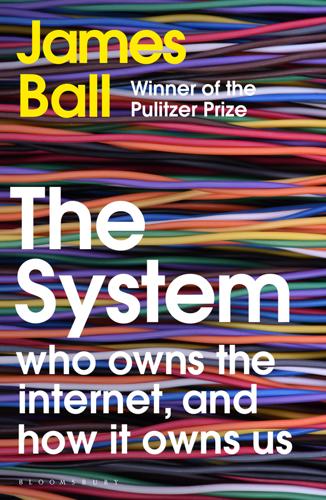
The System: Who Owns the Internet, and How It Owns Us
by
James Ball
Published 19 Aug 2020
Named after ARPA/DARPA, the US government research agencies which initially funded it. BGP: Border Gateway Protocol, a system devised on the back of a napkin which helps govern how traffic flows across the internet to this very day. blockchain: a form of distributed, verifiable database that is typically used to power cryptocurrencies. Still in its infancy, there are hopes blockchain represents a chance to break the power held by existing database gatekeepers. cookies: small text files left on your computer or phone by sites as you browse the internet. While they leave little information on your own device, they can be used remotely to track each time the cookie is seen and store much, much richer information.
…
Google is a big database of search queries, query histories and retrieval results, and web pages. Three of the big web giants that we think of are databases. Your account balance, my account balance is being maintained in a database.’ For Wenger the database insight is a particularly exciting one because he is a believer in blockchain, a relatively new technology best known for being what powers Bitcoin and similar cryptocurrencies – but at its core is a distributed database technology over which no one party theoretically has control. To its advocates, this could disrupt the online data oligopoly – but to its critics it’s a convoluted and unproven technology with many side effects.
…
They clearly did not take their Spider-Man “with great power comes great responsibility” to heart.’ He concludes: ‘This is why it’s a particularly interesting moment in time to revisit how the internet is organised because the maintainers of big databases have proven to be less than having the best interest of the customer in mind.’ In other words, he hopes the potential for blockchains to allow databases to be widely distributed, impossible to alter and publicly verifiable, could lead to a change in the power structure of the internet, which hands control to the companies sitting on the most data. This matters because control over databases is even more important than it first appears, he explains, partly because of one of the most discussed phenomena of the online world: network effects.
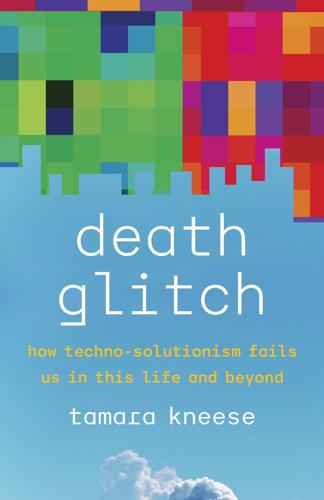
Death Glitch: How Techno-Solutionism Fails Us in This Life and Beyond
by
Tamara Kneese
Published 14 Aug 2023
Barbo believes it is a problem that legacy institutions have trillions in assets, but everything is “paper-based,” which he sees as a poor match for a digital world. That fact prompted a conversation about digital assets and how they pass from one generation to the next, especially because his business partner was “super deep into blockchain” technology at the time. Like many other founders I encountered, Barbo was inspired to start a company after experiencing death firsthand. When his friend’s brother died, the family could not access his Facebook account. They were upset because his party habits were portrayed on Facebook, and they wanted to shut down the account.
…
Digital inheritance must take into account queer and nontraditional conceptions of kinship, allowing digital remains to be kept by a network of people rather than a sole inheritor. In October 2017, Willow Idlewild, a researcher at the Massachusetts Institute of Technology (MIT), and the attorney Megan Yip hosted a Networked Mortality workshop for digital estate–planning entrepreneurs and lawyers in San Francisco that included the CEOs of Bitmark, a company that uses blockchain to give people more autonomy over their digital property, and Digital Public, a company that focuses on building data trusts for the public good. Networked Mortality is also the name of Idlewild and Yip’s open wiki, which strives to provide a “community-based, distributed way of contributing your corpus and corpse to larger society at the time of your death.”
…
They wanted to appeal to people thinking about digital estate planning for the first time and to make estate planning accessible. Idlewild is invested in a community-based, DIY approach to digital inheritance, moving away from the startup model, although many of the people they and Yip partner with, including the CEO of Bitmark, a management platform for protecting NFTs and other blockchain-based assets, are certainly startup entrepreneurs aligned with Silicon Valley technoculture. Idlewild is less interested in the individualist legacy associated with digital inheritance, instead reimagining digital estate planning as a place where, as both they and Yip put it, “hyper-individualism breaks down.”
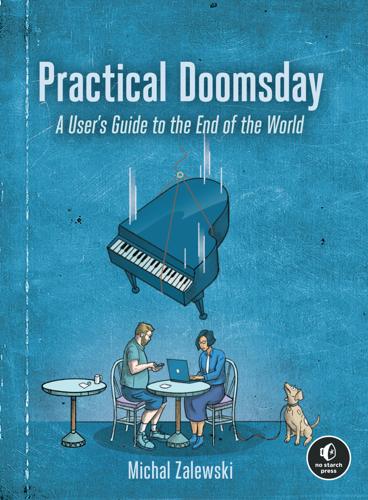
Practical Doomsday: A User's Guide to the End of the World
by
Michal Zalewski
Published 11 Jan 2022
Only the authorized holder of a given coin would know the secret key needed to transfer the asset, but anyone in the world could verify that a transaction had taken place. And finally, Nakamoto’s currency employed a decentralized, internet-based ledger—known as the blockchain—to record the chain of custody for coins in a tamper-proof way, and to rule out the possibility of the owner of a coin spending it twice. As long as the majority of market participants acted in good faith, the integrity of the blockchain was assured without the need for any central authority to keep track of transactions and accounts. The consensus-operated blockchain is widely seen as Bitcoin’s most revolutionary feature, and it contributed to the currency’s image as a renegade financial instrument that has given back control of the financial system to the common folk.
…
Revisiting Dangers to Liquidity and Capital This lengthy stroll through the history of money serves an important purpose. It sets the stage for a more grounded review of the most common threats to personal savings, and for a critical examination of the folksy financial remedies touted on the internet—from gold chains to blockchain and everything in between. A solid understanding of the history of barter helps us decide if bullets and beans are the best way to get through a currency collapse. A grasp of the causes and goals of inflation makes it easier to pinpoint instruments that track it more faithfully than silver or gold; and a sense of how money is created makes it easier to comprehend why banks fail.
…
than daydreaming about the glorious future that awaits if your investments pan out well. From that perspective, the cost of passing on Bitcoin is modest, while the cost of taking a substantial stake can be unacceptably high. The other very recent financial innovation that captured the attention of the media are non-fungible tokens (NFTs): short blockchain-recorded entities with cryptographically established chains of ownership. In most ways, their inner workings resemble cryptocurrencies, but they’re specifically designed not to serve that role. Instead, every token is meant to be distinguishable from others by virtue of possessing a unique ID. The ecosystem of NFTs involves not just the tokens themselves, but third-party providers who associate these IDs with metadata describing a unique physical or digital asset on which the NFT is supposed to confer some sort of a claim.

What to Think About Machines That Think: Today's Leading Thinkers on the Age of Machine Intelligence
by
John Brockman
Published 5 Oct 2015
The potential future world of intelligence multiplicity means accommodating plurality and building trust. Blockchain technology—a decentralized, distributed, global, permanent, code-based ledger of interaction transactions and smart contracts—is one example of a trust-building system. The system can be used between human parties or interspecies parties, exactly because it’s not necessary to know, trust, or understand the other entity, just the code (the language of machines). Over time, trust can grow through reputation. Blockchain technology could be used to enforce friendly AI and mutually beneficial interspecies interaction.
…
Someday, important transactions (like identity authentication and resource transfer) will be conducted on smart networks that require confirmation by independent consensus mechanisms, such that only bona fide transactions by reputable entities are executed. While perhaps not a full answer to the problem of enforcing friendly AI, decentralized smart networks like blockchains are a system of checks and balances helping to provide a more robust solution to situations of future uncertainty. Trust-building models for interspecies digital intelligence interaction could include both game-theoretic checks-and-balances systems like blockchains and also, at the higher level, frameworks that put entities on the same plane of shared objectives. This is of higher order than smart contracts and treaties that attempt to enforce morality; a mind-set shift is required.
…
Seth Lloyd’s analysis of the computational power of the universe shows that even the entire universe, acting as a giant quantum computer, could not discover a 500-bit hard cryptographic key in the time since the Big Bang.1 The new technologies of postquantum cryptography, indistinguishability obfuscation, and blockchain smart contracts are promising components for creating an infrastructure secure against even the most powerful AIs. But recent hacks and cyberattacks show that our current computational infrastructure is woefully inadequate to the task. We need to develop a software infrastructure that’s mathematically provably correct and secure.

Robot Rules: Regulating Artificial Intelligence
by
Jacob Turner
Published 29 Oct 2018
When a person buys a crate of apples, there is usually an implied term that those apples will not be full of maggots. 89Kirsten Korosec, “Volvo CEO: We Will Accept All Liability When Our Cars Are in Autonomous Mode”, Fortune, 7 October 2015, http://fortune.com/2015/10/07/volvo-liability-self-driving-cars/, accessed 1 June 2018. 90[1892] EWCA Civ 1. 91Fumio Shimpo, “The Principal Japanese AI and Robot Strategy and Research toward Establishing Basic Principles”, Journal of Law and Information Systems, Vol. 3 (May 2018). 92Dirk A. Zetzsche, Ross P. Buckley, and Douglas W. Arner, “The Distributed Liability of Distributed Ledgers: Legal Risks of Blockchain ”, EBI Working Paper Series (2017), No. 14; “Blockchain & Liability”, Oxford Business Law Blog, 28 September 2017, https://www.law.ox.ac.uk/business-law-blog/blog/2017/09/blockchain-liability, accessed 1 June 2018. 93Paulius Čerkaa, Jurgita Grigienėa, Gintarė Sirbikytėb, “Liability for Damages Caused By Artificial Intelligence”, Computer Law & Security Review, Vol. 31, No. 3 (June 2015), 376–389. 94However, the conclusion they point to was apparently reached by UNCITRAL in its deliberations, though does not formally form part of the convention.
…
Fumio Shimpo points out that not all such contracts will be binding under Japanese Law; if the AI fails to identify itself as such and entices a person to enter into a contract , then such contract might be deemed “equivalent to a mistake of an element (Article 95 of the Japanese Civil Code)”, and potentially rendered ineffective.91 There are many automated contractual systems operating today—from consumer sales to high-frequency trading of financial instruments. At present, these all conclude contracts on behalf of recognised legal people. That may not always need to be the case. Blockchain technology is a system of automated records, known as distributed ledgers. Its uses can include chains of “self-executing” contracts, which can be executed without any need for human input. This technology has already given rise to novel and uncertain questions as to liability arising from a particular blockchain system in which all parts are interconnected.92 In a situation where AI concludes a contract without direct or indirect instructions from a principal, it remains unclear how a legal system would address liability arising from such an agreement; the AI would require legal personality to be able to go to court to enforce such contract —the possibility of which is discussed further in Chapter 5.
…
One solution to the secrecy issue would be for contracts concerning liability for AI to be made public. The obvious objection to this is that it would be enormously bureaucratic to store such details on a public register, and commercial parties may well refuse to do so, on the basis of well-established legal principles including confidentiality and privacy. Distributed ledger technology such as blockchain offers one option as to how contracts relating to AI might be made a matter of public record. However, it seems unlikely that many market participants would agree to this level of public scrutiny unless they were required to by law. Quasi-Hidden Contracts Contractual arrangements concerning AI will work best where arrangements are made between parties who are able to understand the obligations to which they are binding themselves, and are able to weigh up the benefits and disadvantages of the position they have taken.
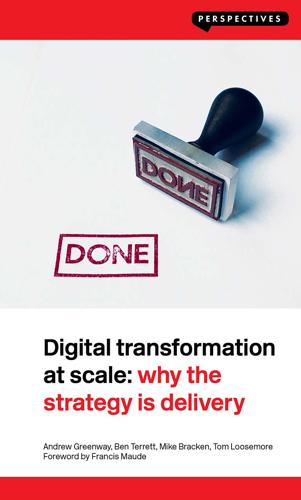
Digital Transformation at Scale: Why the Strategy Is Delivery
by
Andrew Greenway,Ben Terrett,Mike Bracken,Tom Loosemore
Published 18 Jun 2018
It is noticeable that technologies like blockchain and artificial intelligence have especially gripped executives in organisations that have largely failed to react to the open internet’s impact. In our experience, the more senior the figure, the more interested they are in technologies at the bleeding edge of discovery. On one level, this seems counterintuitive. Why would senior leaders with a track record of not applying more obvious and understood trends suddenly jump on the singularity bandwagon? The answer, we suspect, is that technologies like blockchain and AI are for the most part still largely in the realm of theory.
…
It becomes even easier for a large business or government administration to ignore hard yet necessary tasks if they can find something else that has the characteristics of work, while being much more comfortable to sink time into. Fortunately, the technology hype cycle is ready to provide a stream of distractions. All too often, the word digital is conflated with whatever technology fad has made it into the colour supplements this month. Blockchain. Artificial intelligence. The Internet of Things and connected devices. Robotic Process Automation. The captains of industry, ministers and senior officials who read colour supplements during their brief periods of down time see these exciting things and commission policy papers to unpick their potential effect on the organisations they run.
…
You’ve annoyed people on the way of course – that’s a pity – so they think that perhaps now is the moment to consolidate the success and slow things down. If the digital team is all too tired to keep going, those keen to go back to an easy life will push back. Resisting the hype Every business strategy presentation for the last two years (and the next three) will have a slide that says something like: ‘AI, blockchain, Internet of Things – what should we do?’ For most organisations, this discussion is a little premature. Even allowing for the fact these technology breakthroughs are near the top of their hype cycle at the time of writing, we are not saying that they are unimportant for large organisations, public or private.

The Autonomous Revolution: Reclaiming the Future We’ve Sold to Machines
by
William Davidow
and
Michael Malone
Published 18 Feb 2020
Eighty-one million dollars was stolen from accounts at the Bangladesh Bank, and the hackers might have gotten access to $1 billion more were it not for a typo—the hackers misspelled “foundation” as “fandation,” attracting the attention of the New York Federal Reserve.33 There are also many practical problems associated with Bitcoin, and for that reason Bitcoin itself will probably have a limited impact. But the blockchain technology it gave the world will be used in many applications with the goal of making transactions more secure. It is highly likely that new virtual currencies using blockchain will be more broadly adopted in the future. Millions of dollars of Bitcoins have already been stolen from users. The attributes of the technology described above regarding the speed, security, and anonymity of the transfer process make it inherently more difficult to solve Bitcoin thefts.
…
By comparison, the single-copy ledgers that banks use to keep track of bank accounts and credit card transactions are much less secure. In payment systems based on distributed ledgers, only the source of a payment is identified; no account information is ever revealed to the payee. This makes it virtually impossible to acquire information from a payee, such as Arby’s, to access money from a payer’s account. Transactions using blockchain technology (a form of distributed ledger technology in which data can only be added to databases and not altered or deleted) can also be made very secure and anonymous. In the case of Bitcoin, a cryptographic algorithm is used to ensure that Bitcoins are transferred from the correct payer’s wallet to the correct recipient’s wallet.32 In the credit card world, the typical fee for transferring money is about 2 percent of the size of the transaction, and a merchant will typically have to wait one to three days before money is deposited in its account.
…
See cyber currencies; financial industry; payment systems bank robberies, 39–40 Bardeen, John, 55 behavior manipulation, 125, 134–137 by gaming industry, 89, 138–144 in retail sector, 13, 117, 121, 123 Bell Labs, 22, 54–55 Belorossov, Dimitry, 40 Benz, Karl, 53 Bergman, Shawn, 146 Betterment, 10, 77 Bill of Rights. See constitutional rights Bitcoin, 78–80, 176–177 Blackstone, William, 127 Blockbuster, 50, 65, 88, 98–99 blockchain technology, 79, 80 book industry, 27–28, 90–91 Brack, J. Allen, 143–144 Brattain, Walter, 55 Britain, Industrial Revolution in, 29–30 Brown, Tina, 63 business models: customers becoming products in new, 120–123 financial industry transformation of, 74–83 freemium, 70, 73, 121–123, 129–130, 169 media industry shift in, 9–10, 72–73 non-monetizable productivity relation to shifting, 60, 65 sharing economy, 83–87 substitutional equivalence and smaller markets in new, 87–88, 103 Butler, Nicholas, 2–3 Campbell, W.

Butler to the World: How Britain Became the Servant of Tycoons, Tax Dodgers, Kleptocrats and Criminals
by
Oliver Bullough
Published 10 Mar 2022
When I was in Gibraltar I had a long chat with Albert Isola, minister for digital and financial services, who was surprisingly hip-looking with an open-necked shirt and multicoloured thread bracelet. He was keen to talk about the peninsula’s new proposal for attracting business to the Rock, which is to introduce regulations for companies that use blockchain, a mechanism by which financial or other transactions are recorded in a decentralised way and which underpins crypto-currencies like Bitcoin. From Gibraltar’s perspective, it is acting in a nimble way to take advantage of a new business opportunity, and it is perfectly possible that the companies that submit to the peninsula’s regulators will prove beneficial to the world.
…
It is also, however, perfectly possible that this new technology will act like a twenty-first-century shell company, and help crooks and tax dodgers hide their wealth from democratic scrutiny. My concern is that Gibraltar rushed ahead and set out legislation to encourage and protect companies engaged in blockchain activities apparently without any debate or discussion of the potential downsides. This is after all exactly what happened when Gibraltar welcomed the gambling industry, and indeed Isola drew an explicit comparison between Gibraltar’s approach to regulating the new technology and its early approach to gambling.
…
The reason Gibraltar has not had a single failure of a gambling company is that it has exported failure to the jurisdictions where its clients live. Meanwhile, it is difficult for politicians in the UK to do anything about this for the same reason it was hard to combat shell companies – because they need to respect Gibraltar’s autonomy. Could blockchain companies suck money out of the world to the benefit of Gibraltar and a handful of wealthy foreigners to the detriment of ordinary people and governments trying to provide basic services? Perhaps. We simply don’t know because there has been no discussion about it in the UK, and Gibraltar has powered on regardless.
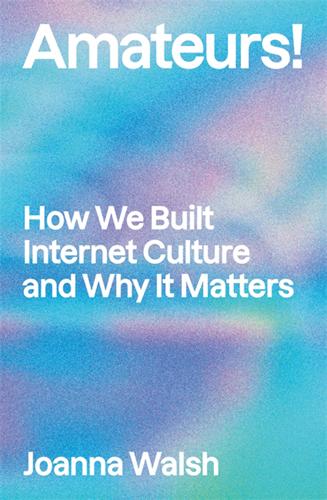
Amateurs!: How We Built Internet Culture and Why It Matters
by
Joanna Walsh
Published 22 Sep 2025
It sold on for 1696.9 ETH (Ether, a cryptocurrency), approximately US$4 million at the time. 2021 was the year memes became NFTs: rare bulbs in a contemporary tulipomania – aesthetic digital objects whose exchange value so grossly and quickly inflated that their economic trajectory itself became their aesthetic. The thing was not to appreciate or even to own one of these ‘tulips’, but to be able to buy one, making the networks of purchasers into the work of art. Ironically, NFTs appeared to be an attempt to restore the Benjaminian ‘aura’ of a non-reproducible original via blockchain encryption that ensured traceable ownership. Despite their virtuality, these NFTs were one-shot originals and were often made by professional artists. Still their structure remained pure meme, dependent both on their status as transferrable digital iterations, and on their pursuit of an anti-aesthetic aesthetic.
…
Try [insert improbable almost non-food, initially ‘30 to 40 olives’]: an easy 51weeknight dinner. eat them directly out of [insert whatever] with your fingers. you will certainly not regret eating [whatever it is].41 Speaklolspeak.com, a Cheezburger spinoff site codifying the tone and vocabulary of the macros, is now a fake-content splash page that suggests that it might be an insurance-comparison site. Nakagawa now works developing sustainable blockchain. Unebasami is a baker and pastry cook. Ben Huh, who claims that LOLcats facilitated ‘a shift in the way people perceived entertainment’, is allergic to cats.42 52 2011: The Old Aesthetic Whatever you now find weird, ugly, uncomfortable and nasty about a new medium will surely become its signature.
…
We already know about data capitalism and information capitalism; but Web3 is aesthetic capitalism. ~ 212Web3 is indivisible from NFTs, which are best known for the digital art bubble that wreaked such economic havoc in 2022, making a very few speculators and artists rich. But an NFT is not an artwork; it’s a unique blockchain identifier that proves ownership of any digital asset. NFT artworks have adapted some of the styles and structures built up during Web 2.0, but not others. As with Web 2.0 art, NFTs can be shared: viewed, copied and downloaded without loss of quality, and for free. Each copy is not a ‘mechanical’ – or even a ‘digital’ – ‘reproduction’; it is exactly identical to the original: it is the original.
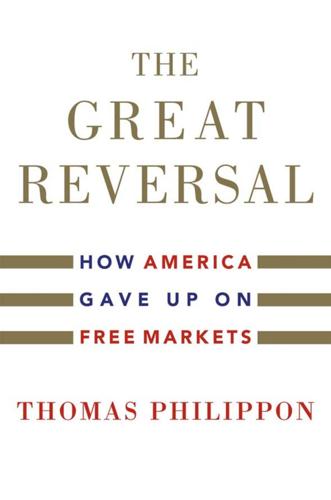
The Great Reversal: How America Gave Up on Free Markets
by
Thomas Philippon
Published 29 Oct 2019
I think that is a key lesson for the regulation of fintech. I recall a fascinating exchange at a recent conference about blockchains and privacy. There is a tension between the principles of blockchains (such as their permanence) and the right of individuals to request that their personal data be erased. To my surprise, however, the blockchain specialists said this would not be a big challenge, provided they knew what the regulator wanted. In other words, it is possible to implement a blockchain in which private data can be erased under some conditions. But it must be conceived as such from the beginning.
…
Innovations can provide new gateways for entrepreneurship and democratize access to financial services, but they also create significant privacy, regulatory, and law-enforcement challenges. Examples of innovations that are central to fintech today include mobile payment systems, crowdfunding, robo-advisors, blockchains, and various applications of artificial intelligence and machine learning. All the large financial firms have jumped on the tech wagon. JPMorgan Chase & Co. recently announced that it will require its asset management analysts to learn to use Python, a powerful and flexible coding language. This is not to say that all fintech ideas are great.
…
See finance and financial intermediation bankruptcy, 295 Barnett, Thomas O., 92 Barroso, José Manuel, 201 Baumgartner, Frank R., 157, 163 Baxter, William, 3 Bekkouche, Yasmine, 192, 193 Benmelech, Efraim, 281 Berger, Allen, 216 Berger, David, 281 Bergman, Mats, 146 Bergman, Nittai, 281 Bergstresser, Daniel, 220 Berlusconi, Silvio, 199 Berry, Jeffrey M., 157 Bertrand, Marianne, 156, 162–163, 164, 199 Bezos, Jeff, 285 Big Bird, 153–154 Big Mac index, 115–116, 117 Bipartisan Campaign Reform Act (2002), 182 Birnbaum, Jeffrey, 153 Blanchard, Olivier, 31 Blanes i Vidal, Jordi, 161–162 blockchains, 219 Blonigen, Bruce A., 91 Bloom, Nicholas, 284 Boggs, Thomas Hale Jr., 162, 200 Bombardini, Matilde, 162–163, 165–166, 190, 199 Bork, Robert, 87 Bowman, Julie Benafield, 234 Bown, Chad P., 92 Brexit, 149 Briand, Aristide, 129 broadband, costs in US versus Europe, 5–6 Brown, Charles, 3 Brynjolfsson, Erik, 79, 258 Buckley, James, 182 Buckley v.

Boom: Bubbles and the End of Stagnation
by
Byrne Hobart
and
Tobias Huber
Published 29 Oct 2024
By adopting the same set of validation rules, network participants form an intersubjective consensus about what constitutes “Bitcoin” technology. 309 Dissenting network participants can only deviate from this intersubjective definition of Bitcoin by hard-forking the protocol—that is, upgrading a copied version of the software to a new set of transaction- and block-verification rules or a different blockchain history. 310 Two key components of Bitcoin’s techno-economic feedback loop are responsible for incentivizing its development, valuation, and adoption. (See Figure 1 on page 218.) First, it is technologically reflexive. When a miner successfully solves a puzzle, the miner gets to contribute the next block of transactions to the blockchain and receives bitcoins as a reward. Miners are incentivized to secure and maintain the network by rejecting block rewards for invalid transactions.
…
These dimensions are intertwined, as each bubble converts more users into believers, and—as has been the case over the past decade—after each crash, the user base of committed believers is larger than before the preceding bubbles. (The quasi-religious zeal of Bitcoin “hodlers” can be cryptographically verified by the number of bitcoin that haven’t moved after a market crash, which is etched into the blockchain—but we’re getting ahead of ourselves.) It’s the rare asset that has been called too expensive at $1 and too cheap at $65,000 without significant changes in its fundamentals. Bitcoin: From zero to one Bitcoin combines various preexisting technical components, such as peer-to-peer network technology, asymmetric public-key cryptography, and proof of work algorithms.
…
Whereas others proposed relying on trusted servers to time-stamp transactions in a ledger, Bitcoin transactions are collected by a network of untrusted miners who are compensated with new bitcoins and transaction fees in exchange for permanently and publicly recording transaction data into irreversible blocks. Each new block validates the previous set, turning untrusted inputs into a trusted part of the global consensus. 305 Ordered in a linear sequence, these blocks give rise to what Nakamoto called a “time-chain,” which later became known as a blockchain. 306 (It is a chain because each new, verified set of transactions references the previous block, going all the way back to the first block ever mined. Meanwhile, each transaction references the previous Bitcoin address that received the payment. It’s as if every dollar bill in circulation had a public history, starting at the US Mint and documenting everywhere the bill had been since then. 307) It is Bitcoin’s immutable and hard-coded deflationary monetary policy that makes it a vertical or zero-to-one innovation, to use Peter Thiel’s terminology.

Green Swans: The Coming Boom in Regenerative Capitalism
by
John Elkington
Published 6 Apr 2020
See also change process stages; technology; wicked problems defined, 7, 21–22 historical, 41–42 identifying, 7–8 Lehman Brothers, 48 losing control, risk of, 193–197 materiality and, 69–70 as parallel reality with Green Swans, 9–10 in social media, 53 spotting, 254–256 starting off as Green Swans, 182 three horizons, two scenarios for, 38–39 BlackRock, 13, 129 Blackwell, Norman, 202 Blockchain, 174, 180 blockchain technology, 177–178 The Blue Planet (TV series), 43 BlueNalu, 233 BMW, 214 boardrooms. See business leaders, working with The Body Shop International, 227 Boeing, 193–197 Bolsonaro, Jair, 227 Bosco Verticale, 255 bottled water, microplastics in, 96 bottom line, 54. See also triple bottom line Boulding, Elise, 209 BP, 146 Brabeck-Letmathe, Peter, 96 Brand, Stewart, 231 Braungart, Michael, 141 break-even point, extra-financial, 152–153, 154f Breakthrough Compass, 34–35, 35f, 64 breakthrough innovations, 38–39 Breakthrough Starshot project, 115 breakthrough technologies, 184–185.
…
As early expectations of breakthrough success are dashed, the wider world loses interest. For those businesses that are venture capital funded, we often see second or third rounds of funding to keep the show on the road, with investors imposing ever-tougher conditions on the innovators, owners, and management. By 2018, for example, Blockchain had peaked, following in the wake of enthusiasm about such things as the “Connected Home” and “Mixed Reality,” and was descending into the Trough. Investors typically become more cautious at this point in the cycle. Inevitably, many firms and, indeed, some technologies, never make it out of the hole.
…
And in an increasingly interconnected world where “electric grids, public infrastructure, vehicles, homes and workplaces are capable of being accessed and controlled remotely, the vulnerability to cyber-attacks and the potential for these security breaches to cause serious harm are unprecedented.” •Blockchain and Distributed Ledger Technology: This one is now shuddering down from the Peak of Inflated Expectations. This set of technologies has caused intense excitement because it potentially enables the decentralized and secure storage and transfer of information. As WEF notes, it “has already proven itself to be a powerful tracking and transaction tool.
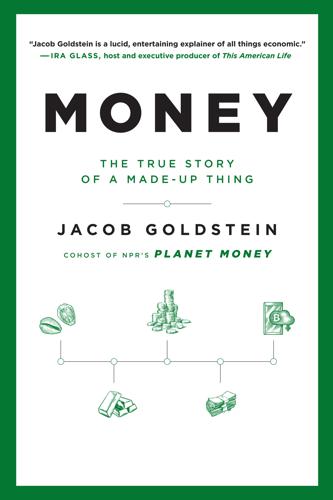
Money: The True Story of a Made-Up Thing
by
Jacob Goldstein
Published 14 Aug 2020
The big blockers launched a rival currency, which they called bitcoin cash, that allowed for far more transactions per second than bitcoin. The small blockers stuck with bitcoin. Everybody stayed mad at everybody else. They never worked it out. Over these same years, people launched hundreds of alternative cryptocurrencies. They all ran on blockchains but had their own tweaks. They promised better anonymity or a stable value relative to the dollar. They promised whole new kinds of businesses built on top of the blockchain. Some of these coins developed huge followings and billion-dollar valuations. Most failed and became known as shitcoins. Eventually, Facebook and the Chinese government started developing their own digital currencies.
…
Once they see that it is, they begin again, recording new transactions in a new block and trying to solve the next computational puzzle. Each block of transactions is linked to the block that came before. In this way, all transactions in the history of bitcoin are linked together forever. In the white paper, Satoshi called this a “chain of blocks.” It would soon get the slightly shorter, significantly snappier name “blockchain.” In early 2009, Satoshi published the source code for bitcoin. Anyone who wanted to, anywhere in the world, could download the code to their computer and start solving computational puzzles, packaging blocks of transactions, and winning bitcoin. The winner for each block would get 50 bitcoins—which, at the time, was worth nothing at all.
…
If bitcoin were run by a company, the CEO would have had some meetings, talked to customers, weighed the costs and benefits, and decided whether to make the tweak. But bitcoin is not run by a company. There is no CEO. The whole point is that nobody is in charge. So who decides what changes to make? Everybody! Bitcoin is democratic. The official blockchain is whatever most of the computer processors mining bitcoins say it is. On top of that, anyone who wants to can take the bitcoin code, tweak it, and create their own, new and improved version of bitcoin. This sounds like chaos, and it kind of is, and that was kind of the point of bitcoin all along.

Coders: The Making of a New Tribe and the Remaking of the World
by
Clive Thompson
Published 26 Mar 2019
There were considerably fewer women working in back-end jobs that involve wrangling servers and databases, or in newly hot areas like blockchain or AI. In those areas, men rule. And the men are paid more for it: Front-end jobs, she found, pay on average about $30,000 less than back-end work. The upshot, Posner notes, is that when women move into an area of coding, it gets devalued. The men leave that area, looking for new cutting-edge areas where they can reestablish artificial scarcity and a tacit no-girls-allowed culture, or at least one where girls are regarded as foreign interlopers. These days, that appears to be Bitcoin—or blockchain tech in general—and AI, where, whenever I go to events, it’s a sea of men, far more than most other fields of coding.
…
But this merely provoked a classic social-media cat-and-mouse game; as researchers found, anorexic users shift to new coinages like #thygap or #thynspo. (Krieger and Systrom left Instagram in September 2018, citing a desire to explore new ideas; Everingham moved that spring to a division of Facebook that develops blockchain technology.) Neither Krieger nor Systrom actively set out to erode anyone’s self-esteem, of course. They loved photography, dug code, and aimed to unlock the latent energy of a world where everyone’s already carrying a camera 24/7. But social software has impacts that the inventors, who are usually focused on the short-term goal of simply getting their new prototypes to work (and then scale), often fail to predict.
…
None of these fields were being sufficiently funded by the free market. It took the slow-moving, long-term patience of a government to produce the core inventions that make it possible for us to hold a phone and order one of Kalanick’s Uber cars. Nonetheless, the libertarian protestations of a certain set of coders continues apace. In recent years, blockchain technology has been the latest site of tech’s anti-government fervor. That ranges from Bitcoin—a currency specifically designed to create money that couldn’t be controlled by dough-printing central banks—to Ethereum, a way of creating “smart contracts” that, its adherents hope, would allow commerce so frictionless and decentralized that even lawyers wouldn’t be necessary: The instant someone performed the service you’d contracted them to do for you, the digital cash would arrive in their digital wallet.

This Is for Everyone: The Captivating Memoir From the Inventor of the World Wide Web
by
Tim Berners-Lee
Published 8 Sep 2025
Glasswing’s survey did identify a few companies in the cryptocurrency space trying to do something a little similar, but none of these companies had made it very far. I was sceptical of blockchain-based technology, which the computer scientist and Ethereum co-founder Gavin Wood has grouped under the rubric Web3. This term, to me, was a meaningless buzzword as few of these initiatives had anything to do with the web per se (the moniker also conflicted with my own branding initiative for Solid, which I had been separately calling the ‘Web – take 3.0’). My feeling was that the blockchain, the underlying technology that drove Bitcoin, was good for making transactions publicly identifiable, but a bad store for personal data.
…
Given what I was trying to achieve, this was really a compact amount of code – and that was because of NeXT. In fact, NeXT’s Interface Builder was what made the web possible. Using its elegant, drag-and-drop development environment, I was able to do in a few months what would have taken years in Windows. Many years later, we used blockchain technology to package this original source code into an NFT (non-fungible token), which was then auctioned off by Sotheby’s. The NFT of the code was compressed onto a big poster. Another reason I developed the web so quickly was that I had a deadline: our first child was due on 24 December, Christmas Eve!
…
My feeling was that the blockchain, the underlying technology that drove Bitcoin, was good for making transactions publicly identifiable, but a bad store for personal data. Not just because it’s expensive and slow, but because any data you put on the blockchain is immediately public – not great for personal data, which should be private by default. The other thing Glasswing’s survey identified was a niche community of online hobbyists known as ‘lifeloggers’. These enterprising individuals had essentially built their own homebrew pods, by downloading and saving their own financial and credit card records, uploading all their geolocation data, tracking the food they ate and their daily steps, requesting copies of their medical records and even their dental X-rays, and, in extreme cases, recording their daily lives with wearable microphones and cameras.

12 Bytes: How We Got Here. Where We Might Go Next
by
Jeanette Winterson
Published 15 Mar 2021
When we consider that the earth is about 4.5 billion years old, and that the oldest Homo sapiens fossil, discovered in Morocco in 2017, is 300,000 years, then what has happened in the last 250 years is time on a tiny scale – my 1780s house in London has lived that long. Not the next 250 years but the next 25 years will take us into a world where intelligent machines and non-embodied AI are as much a part of everyday life as humans are. Many of the separate strings we are developing now – the Internet of Things, blockchain, genomics, 3D printing, VR, smart homes, smart fabrics, smart implants, driverless cars, voice-activated AI assistants – will work together. Google calls it ambient computing: it’s all around you. It’s inside you. This future isn’t about tools or operating systems; the future is about co-operating systems.
…
My-wi might leave us as little children are: cared for, fed, safe, watched over, with plenty of fun stuff and free stuff, and with someone else deciding the big stuff. No reason to believe that who decides will always be in human form. AUTHOR’S P. S. On 22 May 2021 I read in the Financial Times that the next big thing for blockchain and cryptocurrencies will be DeFi – standing for decentralised finance – how to bypass intermediaries in financial services transactions. You might want to do this if you are breeding or selling digitally created racehorses (NFTs) … Recently one such horse sold for $125,000. These horses don’t need feeding – but you can race them, bet on them, and yes, breed them using algorithms.
…
* * * As I send these essays to the press today, 23 March 2021, I notice three things in my inbox. * * * A digital house on Mars has been sold for $500,000. It’s an NFT artwork – a collectible digital asset. Non-fungible artworks is the unlovely name for an electronic file that can’t be reproduced. It comes with ownership and authentication in the form of a token on a blockchain – that’s a tamper-resistant digital public ledger. No one can copy your artwork even though your artwork is made in a format that can be copied. If you see what I mean. Toronto artist Krista Kim sold the 3D digital file. Its owners can furnish the house as they please. * * * Sidney Powell, Kraken Queen and lawyer who was part of Trump’s Stop the Steal campaign, has responded to the 1.3 billion-dollar lawsuit brought against her by Dominion Voting Systems.
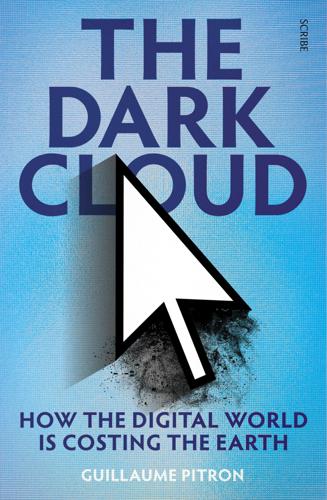
The Dark Cloud: How the Digital World Is Costing the Earth
by
Guillaume Pitron
Published 14 Jun 2023
You won’t meet a single person who hasn’t heard of it. What a mess!’ says a Norwegian as I drop off my suitcase in Narvik, a neighbouring city of Ballangen. She’s not wrong: barely had the first stone of the data centre been laid when the cloud company was bought for close to $10 million by the Canadian firm Hive Blockchain. The data-centre project was then morphed into a centre for cryptocurrency ‘mining’ — a booming, energy-intensive industry.52 The world’s best-known cryptocurrency, Bitcoin, itself guzzles 0.5 per cent of the world’s electricity, or the equivalent of Denmark’s energy requirements.53 But such considerations have little bearing when the key premise is to ‘make money fast’, a local journalist told me.54 This didn’t stop the barrage of criticism against what was perceived as a purely speculative transaction.
…
The data-centre project was then morphed into a centre for cryptocurrency ‘mining’ — a booming, energy-intensive industry.52 The world’s best-known cryptocurrency, Bitcoin, itself guzzles 0.5 per cent of the world’s electricity, or the equivalent of Denmark’s energy requirements.53 But such considerations have little bearing when the key premise is to ‘make money fast’, a local journalist told me.54 This didn’t stop the barrage of criticism against what was perceived as a purely speculative transaction. Meanwhile, the authorities were discontinuing a number of tax breaks for cryptocurrency companies, at which point Hive Blockchain ceased all communications. In May 2021, it paid the municipality of Narvik $200,000 to take Kolos off its hands. All you can see now on the piece of land acquired at the price of gold are herds of reindeer, and no one believes the project will go anywhere. Although not everyone came up short: the directors of Kolos ‘pocketed loads of money in exchange for a basic concept!
…
The future is in materials.’5 Taking their cue from scientists, a network of multinationals and start-ups — we’ll call them ‘techblazers’ — are refining a narrative in which the protection of the planet is conditional on the unlimited development of technologies, and, in particular, digital technologies. They propose, for example, less energy-intensive ‘smart mines’, robots used for recycling (such as Apple’s robot Daisy), and tools such as blockchain to trace the source of raw materials (such as the company Circulor).6 The techblazers will thrive in the ‘people, planet, profit State’ and the actions it champions. Some of them will become so powerful that they could one day contest the authority of nations in the fight to protect the environment.
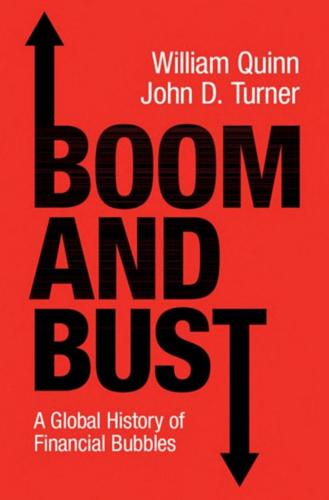
Boom and Bust: A Global History of Financial Bubbles
by
William Quinn
and
John D. Turner
Published 5 Aug 2020
Gelderblom, O. and Jonker, J. ‘Public finance and economic growth: the case of Holland in the seventeenth century’, Journal of Economic History, 71, 1–39, 2011. Gentzkow, M. and Shapiro, J. M. ‘Media bias and reputation’, Journal of Political Economy, 114, 280–316, 2006. Gerard, D. Attack of the 50 Foot Blockchain: Bitcoin, Blockchain, Ethereum and Smart Contracts, David Gerard (self-published), 2017. Gilmore, N. R. ‘Henry George Ward, British publicist for Mexican mines’, Pacific Historical Review, 31, 35–47, 1963. Gissing, G. The Whirlpool. London: Penguin Classics, 2015. Gjerstad, S. and Smith, V. L. ‘Monetary policy, credit extension, and housing bubbles: 2008 and 1929’, Critical Review, 21, 269–300, 2009.
…
As banks recovered from the effects of the financial crisis, credit was becoming more widely available. The continuing development of the Internet meant that the marketability of financial assets was increasing. Although levels of speculation appeared to be relatively low, the bubble triangle suggested that a spark could change this very quickly. A spark soon arrived in the form of blockchain technology: an encryption technique that allowed virtual assets known as cryptocurrencies to circulate without being managed by any central authority. The most widely known cryptocurrency was bitcoin. To its advocates, bitcoin was the money of the future: it could not be devalued through inflation by a central bank, you could spend it on anything without having to worry about government interference or taxes, and it cut out the middleman, namely commercial banks.
…
Akerlof and Shiller, Animal Spirits, p. 55. 25. Shiller, Irrational Exuberance, p. 105. 26. Gentzkow and Shapiro, ‘Media bias and reputation’. 27. Dyck and Zingales, ‘The bubble and the media’. 28. Dyck and Zingales, ‘The bubble and the media’. 29. See, for example, Gerard, Attack; https://davidgerard.co.uk/blockchain/, last accessed 19 November 2019; www.coppolacomment.com/, last accessed 19 November 2019. One exception to the poor quality of news media coverage was the Financial Times’s Alphaville. 30. On the corrosive effect of television on public discourse, see Postman, Amusing Ourselves to Death. 31. Akerlof and Shiller, Phishing for Phools. 32.
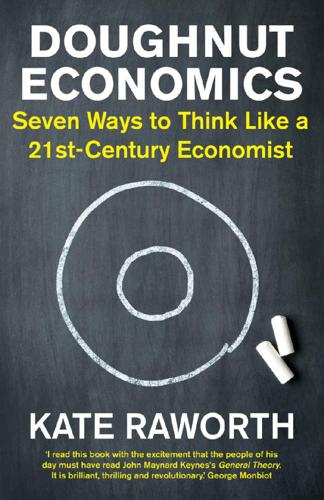
Doughnut Economics: Seven Ways to Think Like a 21st-Century Economist
by
Kate Raworth
Published 22 Mar 2017
As such schemes spread, research is needed to investigate the full ripple of their social effects, and to explore how they can be designed in ways that serve to reinforce rather than replace the human instinct to care for others. Complementary currencies can clearly enrich and empower communities but game-changing ones are now emerging, thanks to the invention of Blockchain. Combining database and network technologies, Blockchain is a digital peer-to-peer decentralised platform for tracking all kinds of value exchanged between people. Its name derives from the blocks of data – each one a snapshot of all transactions that have just been made in the network – which are linked together to create a chain of data blocks, adding up to a minute-by-minute record of the network’s activity.
…
Its name derives from the blocks of data – each one a snapshot of all transactions that have just been made in the network – which are linked together to create a chain of data blocks, adding up to a minute-by-minute record of the network’s activity. And since that record is stored on every computer in the network, it acts as a public ledger that cannot be altered, corrupted or deleted, making it a highly secure digital backbone for the future of e-commerce and transparent governance. One fast-rising digital currency that uses blockchain technology is Ethereum, which, among its many possible applications, is enabling electricity microgrids to set up peer-to-peer trading in renewable energy. These microgrids allow every nearby home, office or institution with a smart meter, Internet connection, and solar panel on its roof to hook in and sell or buy surplus electrons as they are generated, all automatically recorded in units of the digital currency.
…
First, the digital revolution has given rise to the network era of near zero-marginal-cost collaboration, as we saw in the dynamic rise of the collaborative commons in Chapter 2. It is essentially unleashing a revolution in distributed capital ownership. Anyone with an Internet connection can entertain, inform, learn, and teach worldwide. Every household, school or business rooftop can generate renewable energy and, if enabled by a blockchain currency, can sell the surplus in a microgrid. With access to a 3D printer, anyone can download designs or create their own and print-to-order the very tool or gadget they need. Such lateral technologies are the essence of distributive design, and they blur the divide between producers and consumers, allowing everyone to become a prosumer, both a maker and user in the peer-to-peer economy.

New Laws of Robotics: Defending Human Expertise in the Age of AI
by
Frank Pasquale
Published 14 May 2020
Aspirations to self-sufficiency and invulnerability help explain why, after so many scandals, failures, exposes, and scams, florid varieties of cryptocurrency enthusiasm continue unabated.13 The crypto narrative fulfills deep psychological needs for security and independence. Just as encryption buffs celebrate pure mathematics as a bedrock foundation for secrecy and privacy (rather than the social and legal structures that perform the bulk of data protection), cryptocurrency fans promote blockchains as immutable, “censorship resistant” stores of value. A bank may fail; the government may renege on its pension promises; but the perfected blockchain would be embedded into the internet itself, automatically memorialized on so many computers that no one could undermine it.14 Some crypto diehards even imagine Bitcoin or ether as a last currency standing, long after central banks lose credibility.
…
Similar commercial pressures may be leading to a premature plunge into online education. Based on the success of Khan Academy, enthusiasts breathlessly project that a college education can be had for a fraction of the current tuition costs; just record all the lectures, automate evaluation of students, and invite the world to attend, with grades recorded on a blockchain transcript. Get stuck on a lesson? Just keep interfacing with a keyboard, camera, and perhaps haptic sensors. Or perhaps instant message some reserve army of tutors via digital labor platforms like Mechanical Turk or TaskRabbit.79 Want to prove that you aren’t faking exams? Just let cameras record your every move and keystroke—perhaps your eye movements and facial expressions, too.
…
A good recent overview is Nicholas Weaver, “Inside Risks of Cryptocurrencies,” Communications of the ACM 61, no. 6 (2018): 1–5. For broader background, see David Golumbia, The Politics of Bitcoin: Software as Right-Wing Extremism (Minneapolis: University of Minnesota Press, 2016). 14. This possibility is expertly critiqued by Angela Walch; see “The Path of the Blockchain Lexicon (and the Law),” Review of Banking and Financial Law 36 (2017): 713–765. 15. Evan Osnos, “Doomsday Prep for the Super-Rich,” New Yorker, January 22, 2017, https://www.newyorker.com/magazine/2017/01/30/doomsday-prep-for-the-super-rich. 16. Noah Gallagher Shannon, “Climate Chaos Is Coming—and the Pinkertons Are Ready,” New York Times Magazine, April 10, 2019, https://www.nytimes.com/interactive/2019/04/10/magazine/climate-change-pinkertons.html. 17.
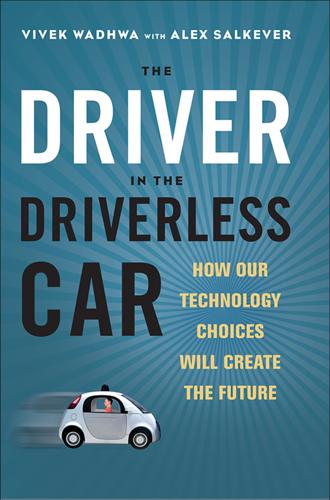
The Driver in the Driverless Car: How Our Technology Choices Will Create the Future
by
Vivek Wadhwa
and
Alex Salkever
Published 2 Apr 2017
But now Moore’s Law applies, as we have described above, not just to smartphones and PCs but to everything. Change has always been the norm and the one constant; but we have never experienced change like this, at such a pace, or on so many fronts: in energy sources’ move to renewables; in health care’s move to digital health records and designer drugs; in banking, in which a technology called the blockchain distributed ledger system threatens to antiquate financial systems’ opaque procedures.* It is noteworthy that, Moore’s Law having turned fifty, we are reaching the limits of how much you can shrink a transistor. After all, nothing can be smaller than an atom. But Intel and IBM have both said that they can adhere to the Moore’s Law targets for another five to ten years.
…
Technology has been advancing exponentially since the advent of evolution on Earth, and computing power has been rising exponentially: from the mechanical calculating devices used in the 1890 U.S. Census, via the machines that cracked the Nazi enigma code, the CBS vacuum-tube computer, the transistor-based machines used in the first space launches, and more recently the integrated circuit– based personal computer. * The blockchain is an almost incorruptible digital ledger that can be used to record practically anything that can be digitized: birth and death certificates, marriage licenses, deeds and titles of ownership, educational degrees, medical records, contracts, and votes. Bitcoin is one of its many implementations.
…
A Difficult Balance Transparency, detection, and accountability are the necessary antidotes to security risks. Companies need to build systems with the assumption that they will be hacked. They need to develop technologies that notify us when we’ve been compromised and take automatic actions to block attackers. They must design systems to be distributed and resilient, such as blockchain technology, which can help prevent tampering and information leakage. With regard to privacy, we have yet to reach a consensus on what is acceptable. We all make choices about what we put on line, but much of what is collected about us is out of our control. The actual value of privacy is up to citizens and governments of the world to decide.

Angrynomics
by
Eric Lonergan
and
Mark Blyth
Published 15 Jun 2020
And that a lot of what people say is really techno-babble and a bunch of fantasy-hawkers selling bits of the sky to each other and gullible investors. Entertaining, but not serious. We argue that just because a technology exists, it does not follow that it will be adopted. Technologists, especially those selling blockchain technology and cryptocurrencies, tend to forget that. What economists term the “rate of diffusion” – the length of time it takes us to absorb technology in our work practices and lives – is often far more important than the innovation itself. New technologies are rarely adopted overnight. They are constrained by institutions, social norms and costs, and they are always resisted and modified.
…
Just as the global financial crisis really began to bite in Europe in 2010, the press everywhere suddenly became replete with stories about how pretty much all workers were shortly to be replaced by robots. Whether in the form of self-driving cars and trucks, drone delivery of goods, computer analysis of financial and legal data, blockchain and bitcoin, we were told over and over that no one was immune. Why? Because this time it was different – different in that AI and ML would combine to do things better than humans can do, and that such machines would get better at doing whatever they do better faster than we can catch up, hence the “race against the machine” and we were all going to lose.
…
AfD (Alternative für Deutschland) 114 Afghanistan 6 aging population 10, 13, 14, 95, 106–11 and consumption 109–10 and government bonds 138–9, 152 and inequality 56–7, 58, 107–10 and inter-generational transfer 106–107 and poverty 57, 107 as stressor 57, 91, 106, 110, 111, 116, 118 and technological change 90, 106, 122 AIG 85, 124 Amazon 96, 98, 104, 142, 143–4 Anderson, Elizabeth 176 anger 2–3, 7–9, 10, 11–12, 159, 161 misplaced 13 as opportunity 16 and play 153 private see private anger public see public anger reducing see calming strategies anxiety/stress 9, 13–14, 50, 53, 55–6, 88, 118, 161 and cognitive effort 89–90, 91 and job insecurity 95–6 three causes of 91 and uncertainty see uncertainty Apple 96, 142, 143 Aristotle 59, 153 artificial intelligence (AI) 14, 102–106, 142 Asian financial crisis (1998) 77, 140 asset ownership 130–31, 133, 136, 140–41 Atkinson, Tony 80, 173 austerity policies 2–3, 6, 15, 34–5, 41, 48, 84 and euro crisis 44–5 and low interest rates 135 Australia 125 Austria 3 baby boomers 107–108, 110, 111, 175 Bank of England 84, 103, 120, 145, 148 TFS scheme 149–50, 166 banks 1, 6, 15, 33–5, 42, 44, 48, 145–50 and capital/liquidity ratios 126 and direct support for consumption 145–8 and dual interest rates 149–50 and economic models 3, 4 failure of 119–21, 122 and helicopter money 131, 146 independence of 78, 79 and leverage see financial leverage and problem of low interest rates 120–21, 122, 131, 135 regulations on 125–6, 127, 129, 132 restrictions on 72, 77 see also financial crisis (2008) Beck, Aaron 171–2 Bernanke, Ben 6, 148 Biden, Joe 106 billionaires 4 Bitcoin 102, 103 Blackrock 165 blockchain technology 14, 103 Blyth, Mark 172, 175 bonuses 81, 85, 124 Brazil 11, 127 Brexit 4, 7, 11, 22, 24, 37, 38, 55, 117, 154 and austerity policies 41, 45 and immigration 111, 112, 114, 116 and job insecurity 100–101 Brill, Stephen 175 Britain (UK) 3, 38, 119, 155, 162, 164 aging population in 107, 110 austerity policies in 41 dual interest rates in 149–50 and EU see Brexit fear of immigration in 27 gig economy in 100 and government bonds 135, 140 government spending in 71 immigration in 111, 112, 114, 115–16 inequality in 6 interest rates in 145 nationalism in 23 Thatcherism in 75, 76 Brittan, Samuel 151 Brynjolfsson, Erik 173 budget deficits 71, 75 Buffett, Warren 130 calming strategies 12, 15, 118, 122, 123–57 and data dividend see data dividend and direct support for consumption 145–8 and dual interest rates 149–50 and economic diversity 153–6 and inequality see inequality, strategies to reduce and national wealth fund see NWF and regulations on banks 125–6, 127, 129, 132 and sustainable investment see sustainable investment Canada 125 cancer 53, 87, 88, 106 capital 4 cost of 137, 139, 153 and dispersion 97–98 as “fictitious” commodity 65 formation, rate of 108 global 40, 42, 43, 49, 50, 58 and labour 50, 60, 69, 72 and neoliberalism 75, 76, 77, 79 protection of, following financial crisis 85 versus capital 97, 98 Capital in the Twenty-First Century (Piketty) 49, 108–10 capital/liquidity ratios 126 capitalism 64–5 and commodities 65–6 capitalism as computer 11, 61–72 fixing 124–25 hardware of 62–3, 117 software of 63–4, 68–71 and unemployment/inequality 66–7 version 1.0 68–9 version 1.0 crash 64, 66, 67, 71, 73, 83, 118 version 2.0 69–73, 74, 75, 76, 116 version 2.0 crash 70–71, 73, 83–4, 118 version 3.0 74–80, 98–9, 117, 125, 140–41 version 3.0 crash 116 car industry 100–101 caring industry 104 Case, Anne 54, 176 centrism, political 38, 48, 118–19, 121, 160–61, 162 CEOs (chief executive officers) 4 Chamberlain, Joseph 66 Chile 3 China 42, 63, 64, 78, 93, 137, 151, 156 Citibank 81, 82 cities 55, 56 climate change 104, 111, 121, 129, 131, 153, 159–60 and investment see sustainable investment Clinton, Hillary 160 Coggan, Philip 172 cognitive effort 89–90, 91 Cold War 28, 48 ending/legacy of 5, 23, 26, 29, 30, 37, 116 communism 68, 71 competition/competitiveness 47, 65, 94, 95, 111, 116, 125 and technology 105 see also product market competition computer analogy see capitalism as computer constrained volatility 85 consumption, direct support for 145–8, 150–51, 160 consumption, distribution of 52–3, 58 Corbyn, Jeremy 119 corporations 6, 20, 57 and competition 95, 96 and data dividend see data dividend corruption 8, 29, 61, 130 Covid-19 163 culture 160 Czech Republic 146, 147, 155 data dividend 141–4, 160, 162 and monopolies 142, 143, 144 and privacy 141–2 and property rights 142–3 de-unionization 50, 95, 99 Deaton, Angus 54, 176 debt 75, 84, 120, 132, 145, 150 and demography 109, 111, 131 government 136–7, 151, 152 net 136 deflation 65, 69, 120, 128, 144, 148 demand management 44–5, 47, 126–7 democracy 16, 25, 29, 39, 40, 104, 117, 130 and markets 68 demography see aging population Denmark 64, 164 depression see recession deregulation 28, 40, 48, 50, 58, 75 and inflation 127 as micro-stressor 94, 96, 99, 101, 118 DGSE (dynamic stochastic general equilibrium) models 3–4 Doughnut Economics (Raworth) 131–2, 165 dual interest rates 131–2, 149–50, 174 Dublin (Ireland) 17–18 economic change 9–10, 29, 43, 153 see also fiscal reform; recession economic growth 2, 6, 41, 69, 71, 86 and demography 108–10 and immigration 116 and inequality 76, 79–80 and quality of jobs/wages 46, 47, 85 economic ideology 28 economics 12, 54–5 shortcomings of models 3–5, 6, 7 education 24, 53, 58, 135, 141 tuition fees/student loans 107, 111 electoral politics 5–6, 104 and demographics 107, 110 and tribalism 13, 22, 24–7, 29, 30, 31 electric vehicles 153 elites 2–3, 5, 6, 7, 9, 37 in cities 55, 56 and corruption 8, 29 and ethical norms 20 and financial crisis 43–4 manipulation of tribal identity by 22, 24, 61, 116, 161 policy failures of 48–9 Engbom, Niklas 175–6 environmental degradation 29, 161 see also climate change environmental and social governance 168 ethical norms 20 euro crisis 7, 37, 44, 77, 144 Europe 34, 42, 137, 140 inequality in 41, 53, 56, 58 migrant crisis in 7 tribalism in 30 European Central Bank (ECB) 34, 84, 146, 155, 164–5 TLTRO programme 147–8, 166 European Union (EU) 22, 33, 34–5, 37, 43, 119 austerity policies in 2, 36, 48 and financial crisis (2008) 82 micro-stressors in 47–8 and nationalism 154–6 and neoliberalism 76, 77 unemployment in 44–5 see also Brexit eurozone 45, 65, 83, 148, 151, 155 exchange rates 72, 134 Extinction Rebellion 8, 131–2 Facebook 27, 96, 98, 142, 143 fake news 26 Farage, Nigel 17, 161 Farmer, Roger 174 fascism 45–6, 66, 67–8, 71 fear 16, 17, 94, 113, 117, 150, 161 and media 26, 27 and politics 7, 45 financial crisis (2008) 1–2, 6, 26, 29, 30, 39, 48, 127, 163 and automation 102–103 and bail-out of banks 84 fragility of recovery from 46, 85, 89, 121 further reading on 172–3 and globalized financial system 84 and growth of populism 85 and inequality 79–80 and low interest rates 135 and regulation of banks 129 financial leverage 72, 81–3, 85, 99, 126, 157 and credit crunch 83 and interest rates 81–2 financial market deregulation 77 fiscal councils 150–51 fiscal reform 15, 150–53, 162 Fischer, Stan 148, 165 Florence (Italy) 87–8 foodbanks 6, 53 football fans 8, 19, 56 France 2, 3, 20, 55, 56, 71, 101, 154, 156 and NWF 135 Franklin, Benjamin 87 free markets 30, 69, 118 Friedman, Milton 118 full employment 40, 47, 60, 66, 71–2, 79, 85, 175 and inflation 73–4, 76 without inflation 121, 125, 126 future 101–102, 111 Garcia family, parable of 33–5, 43 Gates, Bill 130 GDP (gross domestic product) 5, 44, 76, 79, 100–101, 106, 151, 152 and NWF 135, 141 Germany 3, 11, 34, 38, 42, 62–3, 66, 151, 154, 156, 167 and migrant crisis 111, 113–14 and NWF 135 Gibley, Bruce Cannon 175 gig economy 94, 98, 99–100 global economy 12, 39–40, 50, 53, 58, 133 and nationalism 154 and neoliberalism 77 globalization 5, 39, 41, 42–3, 48, 77, 117 hyper- 40 and inequality 80 and inflation 127 and insecurity 101 and labour market 42, 43 and nationalism 154 Gold Standard 65, 67 Google 96, 98, 104, 142 government bonds 72, 131, 133, 135, 137, 138–9, 152 as insurance policies 139, 140 government borrowing 134–5, 137, 152–3 and cost of capital 137, 139, 153 and low inflation 128, 138–40, 150 and NWF 136–137, 138–40 Great Depression 40, 44, 66, 69, 120 Great Moderation 6, 120 Greece 35, 38, 44, 45, 106–07, 110, 144 green revolution see sustainable investment gross domestic product see GDP Guilluy, Christophe 55 Gulf States 133, 134 Hayek, Friedrich 118 healthcare 47, 53–4, 58, 123–4, 135, 139 and access to data 141–2 and NWF 141 and uncertainty/probability 92 hedge fund managers 4 helicopter money 131, 146, 166 Hildebrand, Philipp 165 Hong Kong 2–3, 140, 164 Hopkin, Jonathan 172 Hopkins, Ellen 123 housing 71, 113, 114, 135 Hungary 11, 23, 30 Iceland 1–2, 8, 20 immigration 5, 7, 26, 27, 111–17, 164 economic effects of 115–16 and housing/training 113, 114 and income distribution 112, 113, 114–15 and manipulation by media/politicians 111, 115 as stressor 113, 115 and technological change 106 and tribalism 95, 111, 112, 113 income see wages income distribution 43, 50, 51 and Keynesian economics 71 and neoliberalism 80, 81 independent fiscal councils 150–51 India 23, 127 individualism 29, 154 Indonesia 3 inequality 3, 4, 6, 15, 29, 30, 40–41, 43, 49–57, 58, 61, 79, 118 difficulties in measuring 50–53 and distribution of income/consumption 53–4 and financial crisis (2008) 79–80, 83, 85 further reading on 173, 176 intergenerational 56–7, 107–10 and populism 54–5 and uncertainty 49–50 inequality, strategies to reduce 121–2, 129–31, 132, 162 asset ownership 130–31, 133, 136, 140–41 and data dividend 141–4 National Wealth Fund see NWF optimal/effective 132–3 and universal basic income (UBI) 141, 144 wealth tax 130, 132 inflation 5, 40, 51–2, 53, 69 death of 126, 128 and full employment 73–4, 76, 121, 122, 125 and global financial markets 78 and interest rates 75, 81–2, 120 low see low inflation and oil prices 96–7 and printing money 78, 128, 145 and raising taxes 129 and recession 144–5 and regulation of banks 125–6, 127, 132 and stagflation 40, 74, 120, 128 inheritance 132, 133, 160 national 136 innovation see technological change insurance industry 93 interest rates 15, 33–4, 75, 81–2, 165–6 dual, and sustainable investment 131–2, 149–50 low, problem of 120–21, 122, 131, 132, 135, 146–8, 152 negative, problem of 15, 148, 149, 150 and spending 147 internet 25 investment spending 40, 60, 69 and future expectations 103 and global capital flows 77–8 and inflation 74 public sector 67, 70–71 sustainable see sustainable investment IRA (Irish Republican Army) 17 Iraq 6 Ireland 17–18, 23, 24 Islam 27 Italy 35, 37, 38, 39, 44, 66, 71, 87–8, 144, 156, 167 aging population in 110 poverty in 47 tribalism in 45–6 Japan 26, 84, 110, 137, 140, 148 job security/insecurity 34, 50, 56, 61, 94, 95–6, 100–101 and technology 102 Kalecki, Michał 60–61, 73–5, 120, 121, 127 Keynes, John Maynard/Keynesian economics 60, 66–7, 68–70, 92, 103, 118, 127, 151 General Theory of Employment, Interest and Money 66, 175 and inflation 67, 69, 128 labour market 35, 40–41, 42, 43, 44 and automation 102–106 deregulation 50, 95, 99, 122, 127 dispersion in 98–9 and full employment see full employment and immigration 115–16 in Keynesian system 71–2 and labour as commodity 59, 60, 65–6, 73, 85 and protectionism 59–61, 66 and secular stability 125, 126 and training 62–3 see also wages Lagarde, Christine 167 Lerner, Abba 118 libertarianism 63 Lonergan, Eric 174 Los Indignatios 85 low inflation 79, 134, 157 and full employment/secular stability 126 and government spending/borrowing 128, 138–40, 150, 152 and recession 144–5, 150, 162 Luce, Edward 164 Ludd, Ned/Luddites 102 machine learning (MI) 102–104 see also artificial intelligence macroeconomics 9, 13, 47, 89 failure of 119–20 and uncertainty 94 Macron, Emmanuel 162 Mair, Peter 172 markets 30, 59–61, 62, 66–7 and democracy 68 and quantity theory of money 68–9 see also labour market Mauss, Marcel 21–2 Mazzucato, Mariana 156 media 11, 43, 47 and technological change 98, 102–103, 105 and tribalism 24–5, 26–7, 29, 31, 61, 116, 161 Merkel, Angela 114 Mexico 63 micro-stressors 47–8, 53, 84, 91 and aging populations see aging populations and change 94 and fourth industrial revolution 94 and immigration see immigration microeconomics 9, 13–14, 160 migrant crisis 7, 111 Milanovic, Branko 52, 80 minimal group paradigm 21 Minsky, Hyman 128 mobile phones 53, 96, 97, 142 modern monetary theory (MMT) 118, 128–9 money, printing 78, 128, 145 monopolies 142, 143, 144 moral outrage 8, 13, 15, 35–6, 57–8, 117, 130, 161 and inequality see inequality as rational 36 and tribalism, compared 19, 20, 22, 29, 30–31, 36 triggers for 36 mortgages 34, 35, 38, 82, 111, 137, 145 nation state 39–40, 48, 50, 117, 119 national wealth fund see NWF nationalism 5, 11, 23, 29, 31, 39, 41, 116, 119 as positive 153–6 neoliberalism 4, 28–9, 37, 75–8, 122 and global capital flows 77–8 and inequality 51, 52, 53 NHS (National Health Service) 107 Nissan 100–101 Nixon, Richard 26 Northern Ireland 17–18, 23, 24 Norway 133, 134 Nussbaum, Martha 16, 35, 36 NWF (national wealth fund) 15, 132, 133–41, 143, 152, 168 and aging population 138–9 and asset ownership 133, 136, 140–41 and government borrowing/debt 136–7, 138–40 and growth of global stock market 137–8 and individual trust funds 135 and negative interest rates 134–5, 136 and risk 136, 137–8 sovereign 133–4 and trade surplus 134 Obama, Barack 29, 46 oil prices 96–7 Orban, Viktor 23, 30, 161 “Panama Papers” 2, 20 pensions 57, 63, 106–107, 138 perpetual loans 147–8 Philadelphia Eagles 20 Pickett, Kate 168 Piketty, Thomas 49, 52, 80, 108–10 play 153 Poland 11, 30 Polanyi, Karl 59–61, 64–5, 67, 175 political centrism 38, 48, 118–19, 121, 160–61, 162 political disengagement 29 political economy 12, 13 political identity 22–3, 29–30, 37, 48, 116, 117 further reading on 172 political parties 5–6, 7, 28 politics, new 15–16, 58, 160 populism 11, 27, 39 and financial crisis 86 three genres of 54–5 Portugal 35, 38, 44, 144 poverty 47, 67, 72, 80, 115 and demographics 57, 107 power 4, 48 powerlessness 9, 41 price stability 76, 79, 128, 147 private anger 7, 8, 9, 10, 13–14, 36, 117 and cognitive effort 89–90, 91 see also anxiety/stress private sector debt 131, 145 and government borrowing 134–5, 137, 138–40 investment 67, 70, 149–50, 151 liability in financial crisis 85, 127 privatization 28, 40, 96, 107 probability 91–3 product market competition 94, 95–8, 116, 125 and deregulation/privatization 96–7 and dispersion 97, 98–9 intensification of 96, 101 and technological change 96, 97–8, 99 productivity 40 and technological innovation 9, 10, 15, 102, 104–105 and wages 71, 72, 74, 76 profit margins 98, 101, 105, 143 property prices 34, 38 property rights 142, 143, 154 protectionism 59–60, 61, 66 public anger 7, 8–9, 10, 89, 98, 117–18 economic causes of 13 see also moral outrage; tribalism/tribal anger public housing 71, 113, 114 public sector investment 67, 70–71 public services 24, 115, 116 quantitative easing (QE) 146–7, 167 quantity theory of money 68–9, 78 racism 26, 54, 55, 115 Raworth, Kate 131–2, 173 Reagan, Ronald 26, 75, 118 recession 15, 29, 30, 34–5, 44, 49, 55, 58, 84, 152, 153 and dual interest rates 150 and interest rates 75, 120–21 and investment spending 60, 70, 71 and low inflation 144–5, 150, 162 and MMT 128–9 and stock markets 139, 140 see also euro crisis referenda 37 regeneration, economic 132 regional development 15, 115, 116, 149, 153, 156 Renzi, Matteo 37 risk 91–2, 127, 136, 137, 153 Roberts, Carys 174 robotics see artificial intelligence Rodrik, Dani 4, 39, 40 Russia 11, 41 Sahm, Claudia 150–51 Salvo, Francesca 87–8 Sandbu, Martin 174 Sanders, Bernie 128, 164 savings 93 scale economies 98, 99, 142 Scottish nationalism 7, 119 secular stability 125, 126, 127 service-based economy 52 Singapore 133, 134, 162 SMEs (small- and medium-sized enterprises) 164–5, 166 social democracy 63–4 social media 26, 27, 90, 98 Solow growth model 109 sovereign wealth funds 133–4 sovereignty 39 Spain 33–5, 38, 44, 45, 144 protests against austerity in 85 spending increasing 145, 147, 151 investment 40, 60 power 145 public sector 67, 70–71, 128, 151 restrictions on 41, 44, 149 sports fans 8, 19–20, 21, 25 sports industry 99 stagflation 40, 74, 120, 128 status-injury 36, 54 stock markets 63, 137–8, 139–40 stress see anxiety/stress strikes 73, 74 student loans 111 supply–demand 60, 96, 104 sustainable investment 131–2, 149–50, 152, 153 Sweden 63–4, 72–3 Syria 111, 113 Tavris, Carol 36, 171 taxes 40, 50, 57, 108, 116, 124 cuts in 34, 44, 111, 151 dodging 2, 6, 20, 132–3, 143 political opposition to 129, 130, 132, 133 raising 152 on wealth 129, 130, 132, 140 Tea Party movement 85 technocracy 37, 42–3, 48, 160–61 technological change 29, 58, 96, 109 and aging population 90, 106, 122 and competition 96, 97–8 and dispersion of returns 97 and fourth industrial revolution 94 further reading on 173–4 and inequality 50, 53 and labour market 102–104 and media 24–5, 27 as micro-stressor 88, 91, 94, 96, 97–8, 99, 101–102, 105, 116, 118 and productivity 9, 10, 15, 105, 122 and rate of diffusion 14 and uncertainty 101–102 telecommunications 96, 97, 142 terrorism 17, 18, 27 Thatcher, Margaret 75, 76, 118, 131 Thunberg, Greta 150 TLTRO programme (European Central Bank) 147–8 trade 21–2, 26, 42, 78, 154 and neoliberalism 78 trade surplus 134 trade unions 28, 42, 63, 66, 72, 73, 76, 79 trade wars 21–2, 26 training 62–3, 93, 113, 114, 141 tribalism/tribal anger 8–9, 11, 18–31, 41, 45–6, 117 and central/eastern Europe 23, 30 destructiveness of 24 and ethical norms 20 and fascism 68 and financial crisis 86, 89 and global politics 21–2, 26, 28–9 and immigration 95, 111, 112, 113 manipulation by politicians/media of 13, 22, 24–7, 29, 30, 31, 35, 61, 95, 116, 161 and minimal group paradigm 21 and moral outrage, compared 19, 20, 22, 29, 30–31, 36 and political identity 22–23, 29–30 social function of 20–21 and sport fans 19–20, 25 see also nationalism trickling down/up 79–80 trilemma, political 39 trucking industry 103 Trump, Donald 11, 22, 23, 25–6, 27, 33, 38, 119, 126, 161 and deregulation 129 election of 41–2, 54 tax cuts of 11 Turkey 11 universal basic income (UBI) 141, 144 Ukraine 11 uncertainty 9–10, 43, 49–50, 65, 91–4, 99, 118, 161 and aging populations see aging populations and emerging technologies 102–103, 106 and healthcare 92 and immigration see immigration reducing 93–4 and risk/probability 91–3 and skills development 93 unemployment 2, 30, 34, 44–5, 48, 58, 66, 72, 84, 167 and inflation/interest rates 74, 75, 125 unfairness 25, 36, 105 United States (US) 3, 38, 93, 118, 129, 164 aging population in 107–108, 110, 111 automation in 103, 104–105 financial crisis in (2008) 82–3, 84, 85 gig economy in 100 healthcare in 47–8, 53–4, 58, 106, 123–4 independent fiscal councils in 150–51 inequality in 50, 51, 53–4, 58, 80–81 Keynesian system in 71, 72–3 labour market in 42, 44, 46, 62 micro-stressors in 47–8 neoliberalism in 76 and NWF 135 stock market in 63 tribalism in 23, 25, 29 wealth tax in 130 US Federal Reserve 6, 46, 84, 108, 110, 120, 148, 151 voice, loss of 37–9, 43, 48, 58 Volcker, Paul 75, 81–2 voting 37–8 see also electoral politics wages 2, 60 and automation 105 and competition 96–7, 98 and consumption 53–4, 58, 72 distribution of see income distribution growth in, without inflation 125 and immigration 115–16 and inequality 4, 50–53, 58 and neoliberalism 76, 77 and oil prices 96–7 and productivity 72, 76 stagnation in 34, 47, 58, 80–81, 83, 84, 85 and supply/demand 65–6 Wall Street Crash 67 Warren, Elizabeth 130, 132 Watson’s Analytics 19 wealth, distribution of 4, 15, 29, 30 welfare state 71 WhatsApp 2 Wilkinson, Richard 176 wind power, investment in 150 Wolf, Martin 80, 173 World Trade Organization (WTO) 42 Wren-Lewis, Simon 151 Yates, Tony 151 “Yellow Jackets” protests 2, 20, 55, 56
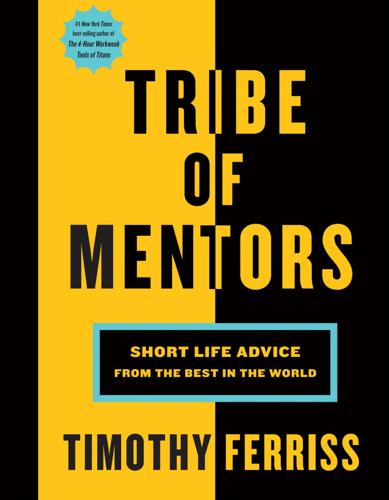
Tribe of Mentors: Short Life Advice From the Best in the World
by
Timothy Ferriss
Published 14 Jun 2017
–W “I’d rather give an understated good recommendation: be interdisciplinary . . . the interactions between [fields] tend to very often inform strategic and protocol decisions.” Vitalik Buterin TW: @VitalikButerin Reddit: /u/vbuterin VITALIK BUTERIN is the creator of Ethereum. He first discovered blockchain and cryptocurrency technologies through Bitcoin in 2011, and was immediately excited by the technology and its potential. He co-founded Bitcoin magazine in September 2011, and after two and a half years looking at what the existing blockchain technology and applications had to offer, wrote the Ethereum white paper in November 2013. He now leads Ethereum’s research team, working on future versions of the Ethereum protocol.
…
But I do want to get that culty Japanese journal that all the designers use, a Hobonichi Techo. It’s the kind of thing you see in Japan: a notebook turned into a high art. Maybe next year. . . . “No one is qualified to tell you how you experience the world.” Vlad Zamfir TW: @VladZamfir Medium: @vlad_zamfir vladzamfir.com VLAD ZAMFIR is a blockchain architect and researcher at Ethereum, working on blockchain efficiency and scaling. Vlad is interested in governance and privacy solutions, and he was also the first person to introduce me to absurdism. He is a frequent contributor on Medium and lives in Antarctica (or so he wants us to believe). What is the book (or books) you’ve given most as a gift, and why?
…
I feel like I have a much better idea about “how society works” now that I understand something about the nature of institutions. Not that I can claim to understand much! I tried to “crystallize” some of my understandings, but I didn’t do a great job. In practical terms, though, I am now able to think much more clearly about blockchain governance. I can see that we already have a handful of nascent blockchain governance institutions! I can understand what it means for an institution to be more or less formal, and more or less tacit/ad hoc. I am now completely open to the possibility that institutionalization can be a reasonable process, rather than one that is inevitably powered by hubris.

Peers Inc: How People and Platforms Are Inventing the Collaborative Economy and Reinventing Capitalism
by
Robin Chase
Published 14 May 2015
In order to stay compatible with each other, all users need to use software complying with the same rules. Bitcoin can only work correctly with a complete consensus among all users. Therefore, all users and developers have a strong incentive to protect this consensus.22 While the block-chain protocol has necessarily evolved over the last six years, the evolution is driven by consensus, with the most suitable and widely adopted changes being the ones that win out over the alternatives. The block-chain process errs toward consensus and changes only for big improvements. This chapter has been about exploring ways to finance platforms without the involvement of government or the private sector.
…
We often pay for services this way: Cellphone use is paid by the minute or byte and Zipcar by the hour and mile using rates the company sets. Having a reward system that is adopted and applied by a decentralized group is more challenging and therefore more impressive. Can we allow for nuanced circumstances? How do we deal with arguments? Innovators are now repurposing the block-chain methodology for a much wider range of activities and providing rewards dynamically based on more localized circumstances. An Israeli startup, LaZooz, is using the block chain to build a ridesharing network. People sign up and download the app, which measures distances travelled, and provides the reward in Zooz tokens accordingly.
…
Every transaction can have its own special combination built using standard building blocks. Rule-making and standards adoption is all accomplished through decentralized leader-free “voting” based on market signals. All of the transactions on the public ledger are there for all to see, and open source. In the potentiality of block-chain visionaries, the most useful programs, contracts, and methods will be the ones that are most copied, eventually becoming standards. The Bitcoin.org website explains how this is accomplished with Bitcoin: Nobody owns the Bitcoin network.… [It] is controlled by all Bitcoin users around the world.
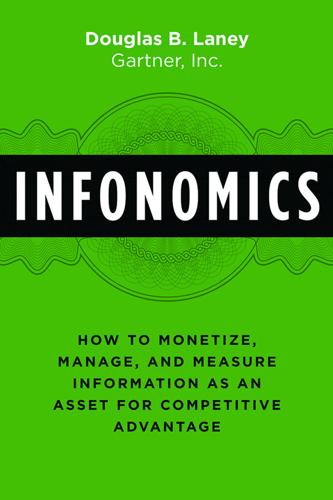
Infonomics: How to Monetize, Manage, and Measure Information as an Asset for Competitive Advantage
by
Douglas B. Laney
Published 4 Sep 2017
Early attempts at this, however, will be plagued with erroneous interpretations of the data, both by the algorithms themselves and unsuspecting recipients (humans and applications). Blockchain is worth mentioning as well, since it is a hot (if overhyped) topic at present. Into the next decade, expect most blockchain efforts to miss the mark, either due to performance challenges endemic to the technology or the misapplication of the technology by overzealous architects. That said, blockchain may very well prove useful for rationalizing metadata or master data long before being practicable for managing most high volume/velocity/variety information assets themselves.
…
Index 3 “V”s of big data 101n9 Abe’s Market 39 accessibility 249 accounting: accountants and information 227–9; cashing in on information 229; information 201–5; probable economic value 229–30 ACNielsen 12, 22 Acxiom 229 Adams, Paul 168 Advanced Drain Systems (ADS) 97 Affordable Care Act (Obamacare) 98 Albala, Mark 261 algorithm(s) 84, 88–9, 94, 96, 98, 137, 199, 230–1, 279, 286, 289–91 Amazon 36, 132, 211, 217n2 American Institute of Certified Public Accountants (AICPA) 21, 205–6 analytics: actionable decision-making 89–93; advanced 289–90; advanced analytics advantage 83–5; business intelligence implementation 82; descriptive 82–3; diagnostic 82–3; exploiting Big Data 86–9; Gartner analytic ascendency model 83; identifying monetizable insights 93–9; information management 99–100; information monetization 75–6; predictive 82–3; prescriptive 82–3; value 266 application program interfaces (APIs) 34, 73 applied asset management: governance 186–9; information strategy 177–81; information vision 174–7; infrastructure 196–8; metrics 182–6; people 189–92; process 193–6; roles for infosavvy organization 198–200 Aquatics Informatics 114 Archer Daniels Midland 8 Armstrong, Neil 1 Arthur Andersen 205, 217 artificial intelligence (AI) 85, 90, 115, 286, 289–90 Art of War, The (Sun Tzu) 144n4 asset, definitions 2–3, 9–11, 214–15 asset management: barriers to information 114–16; fiduciary responsibility 164; financial methods 163–5; intangibles 168–9; lessons from sustainability 138–43; see also applied asset management; physical asset management AULIVE 12 Australian Computer Society Data Taskforce 222 Australian Privacy Commissioner 233 Automated Teller Machines (ATMs) 43–4 Auto Trader 23 Ayasdi 14, 27n6, 42, 98 balance sheet assets 158–9; physical asset management 9, 116, 158–63, 176, 184, 188–9, 198, 235 Bardin, Noam 35 bartering: favorable terms and conditions 38–9; goods and services 37–8; relationships 38–9 Becker, Gary 128 Becker, Mark 30 Beechcraft Cessna 292 Beechwood House Publishing 255–6 Bekenstein Bounds 273 Bell Helicopter 292 Bespoke Data Organisation 225 Beyer, Mark 186 Big Data 10, 12, 26n2, 49n1, 59, 212; exploiting 85–9; health insurance company 107; information trend 287; processing 40–1; roadblocks to information monetization 287–8; term 86, 101n8; variety of information 88–9; velocity of information 85–6; volume of information 87 biodiversity 136 Bippert, Doug 84 Birchler, Urs 272 blockchain 291 Bloomberg 12, 211, 229 blunderfunding 244, 268n5 Boone, Ryan 40 Box, George 246 BrightPlanet 65 Brownstein, John 96 Brynjolfsson, Erik 272 Brzmialkiewics, Caryl 44 Buchanan, Stewart 107 Bugajski, Joe 281 business: asset 10; climate 136; information 48–9; introducing a new line of 33–4; models 24–6; performance 43–4 business intelligence (BI) 14, 77, 81, 198, 211, 292; analytics 82; beyond basic 81–6; innovation 97–9; see also analytics business-to-business (B2B) 15, 38 business-to-consumer (B2C) 15 business value of information (BVI) 253–4 Bütler, Monka 272 Buytendijk, Frank 34, 281 Caltex 63 Capability Maturity Model Integration (CMMI) 148 cash 14–16, 20–1, 28, 35, 37, 39, 42–4, 96, 128, 161, 165, 188, 209, 227, 229, 257, 260, 293 Casonato, Regina 132 Casper, Carsten 244 Center for Disease Control 65; Youth Risk Behavior Surveillance System (YRBSS) 89 chief data officer (CDO) 3, 9, 17, 25: analytics 106–7; balancing act of 288–9; concept of 190; emergence of 293; hiring 211; information ecosystem 138; information leader 56–6, 155; information management 154; leadership 112; role of 192, 199–200 chief financial officer (CFO) 3, 100, 105, 107, 165, 200, 213, 245, 250 chief executive officer (CEO) 15, 32, 34, 40, 57, 100, 112, 155, 168, 175, 190, 200 chief information officer (CIO) 3, 40, 42, 58–9, 81, 106, 112, 132, 134, 175–6, 190, 200 China 35, 64, 159, 224 Christiaens, Stan 106 Cicero Group 148, 265, 269n25 Citigroup13–14, 16 Clark, Christina 243 Coca-Cola 83–4, 88, 132 Cohen, Jack 91 Coles Supermarkets 192 Collibra 106, 163 commercial data 63 commercial general liability (CGL) 241–2 competitive differentiation 36–7 completeness 248, 252 Comprehensive Capital Analysis and Review (CCAR) 14 Connotate Software 62, 65 consistency 248 content management, contending approaches for 154–5 Corbin, Stacey 63 Cordner, Matt 292 costs, defraying information management and analytics 40–1 cost savings, monetization success 74 cost value of information (CVI) 256–7, 261–2, 274–5 cultural attitudes, information management 114 customer acquisition and retention 29–31 customer relationship management (CRM) 140 D&B 22, 57, 63–4, 229 DalleMule, Leandro 176, 184 dark data 32, 42, 62–3, 141; information asset 61–2; understanding 94–5 data as a service (DAAS) 181–2 database management system (DBMS) 134, 302 Data Driven Leaders Always Win (Zaidi) 234 data governance 188–9; see also governance, information Data Management Association International (DAMA) 148 data ownership 20; see also ownership data preparation 17, 73–4, 189; for monetization use 72–3 data quality: assessing 246–9; objective metrics 248; subjective metrics 249 Data Republic 63 data science 289–90 Datateam Business Media (DBM) 221 Davis, Lord Justice 221 DB2 database 115, 228 DBS Bank 43–4 decision making: actionable 85, 89–93; complexity, activity and change 89–90; governance, risk and compliance (GRC) 91–2; optimizing business processes 90–1; scenario planning 92–3 deinformationalization 36 Deming, Edward 243 derivative data 279 Desai, Samir 58 Deutsche Telekom 225 Dibble, Bill 94 differential data 278 digerati 210 digital detritus 42 digital industry, intellectual property of 288 diminishing marginal utility 276–8; law of 276 Direct Eats 39 direct information monetization 66–8 Disney World 83 distinct data 278 diversity, people 191–2 Dollar General 32, 36, 40 Dominick, Lauren 92 Drucker, Peter 243 DSCI 63 Dun & Bradstreet see D&B Duncan, Alan 160, 272 economic attribution, monetization success 74 economics: applying concepts to information 272–3; as dismal science 271; principles 271–2; see also infonomics economic value of information (EVI) 258–9, 266 economy 11, 147, 192, 205–6, 217, 242, 272 ecosystem: definition 132–3; entities 135–6; features 136; influences 137; management 137–8; processes 136–7; sustainability principles 138–43, 180; see also information ecosystem Ehlers, Brian 183 elasticity, information pricing and 275–6 Electronic Communications Privacy Act of 1986 224 endowment effect 279 enterprise architect 10 enterprise asset management (EAM): infrastructure 197–8; systems 162 enterprise content management (ECM) 154, 181 Enterprise Data Management (EDM) Council 148 enterprise information management (EIM): impediments to maturity 111–14; leadership issues 112; levels of maturity 109–11; maturity model 108–11, 174; metrics 182–4; vision 174–7 enterprise resource planning (ERP) 140 Equifax 12, 57, 63 Equinox Fitness Clubs 58 Evans, Nina 114 Everedge 168 existence 249 exogenous information 16, 165; see also external information Experian 57, 63, 213 Experience Matters 106, 114, 148, 181, 186 external information 11, 31, 36, 55, 60–1, 165, 195, 292 Facebook 11, 21–2, 31, 34, 64, 211–13, 218n10, 232 faint signals, identifying 95–6 feasibility checklist 69–70; economical 72; ethical 72–3; legal 72; manageable 71; marketable 71; practical 70–1; scalable 71; technological 71 Federal Aviation Administration (FAA) 46 fiduciary 164, 189, 234 Financial Accounting Standards Board (FASB) 21, 206 financial valuation models, information assets 251, 255–61 Fisher, Jennifer 260 Fisher, Tony 272 Fisher, William W., III 169 FleetRisk Advisors 92 Francis, James C., IV 224 fraud and risk, identifying and reducing 44–5 Freedom of Information Act (FOIA) 17, 45–6 Friedman, Milton 128–9 Friedman, Ted 247, 268n12 fundamental valuation models, information assets 251–5 Gaia hypothesis 144n5 Ganschow, Karen 54 Gartner: enterprise information management (EIM) maturity model 108–11, 297–302; financial valuation models 251, 255–6; fundamental valuation models 251–5; Hype Cycle 281, 284n7; information asset valuation models 250; information value models 262; Magic Quadrants 68 Geis, Alex 33 General Data Protection Regulations (GDPR) 240n24 generally accepted accounting principles (GAAP) 21, 116, 217, 245 generally accepted information principles 116–19, 120n13; assumptions 117; constraints 117–18; principles 118–19 Georgia Aquarium 29–30 geographic 18, 35, 96, 235 Gledhill, David 43 goods and services, bartering 37–8 Google 11, 21, 47, 76, 211, 213, 217n2 governance: applied asset management 188–9; challenges and remedies 187; data entry 187; governance, risk and compliance (GRC) 91–2, 152; information 188, 234; information management 186–9; information management challenges 299–300; proving benefits of information 264 government 9, 17, 22–3, 41, 45–8, 61, 64, 95–6, 105, 115, 193, 206, 223–5, 237, 276, 286 Grayson-Rizzuto, Kimberly 39 Grossman, Larry 46 Hadoop 41 Hamilton, Stuart 114 Hawthorne effect 243, 268n4 Hawthorne Works 243 Health and Human Services Department 44 HealthMap 95–6 HERE Life 38 Hershberger, John 111 Higgins, Mike 97 Hillard, Rob 148, 272 Hogan, Tom 107 Holloway, Todd 32 Horrisberger, Jim 83 House of Cards (TV series) 59 Hubbard, Douglas 260 Human Capital (Becker) 128 human capital management 165–8, 184 Hutton, James 144n7 Hype Cycle 281, 284n7 IBM 87, 91, 115, 148 IMDB 34 Indigenous Land Corporation 63 indirect information monetization 68–9 industry average 283 Infinity Property and Casualty 94 infodiversity 180 infonomics 272, 285–6; concept of 3; definition 9; future of 292–5; improving information yield 281–4; information pricing and elasticity 275–6; information-related trends 286–91; managing information 106; marginal utility of information 276–9; opportunity cost for information choices 279–80; production possibilities of information 280; supply and demand of information 274–5 Informatica 163 information: accountants and 227–30; accounting for 214–17; as asset 2, 205–7; asset realization 207–8; business models and profitability 24–6; characteristics of 18–26; control of 228–9, 233; data vs 25–6, 26n4; digitalization of 288; economic alternatives for 13–14; getting more than cash for 14–16; as liability 216; liquidity of 20–1; monetizing, managing and measuring 9–11; multimedia 2; opportunity cost for information 279–80; pricing elasticity 275–6; probable economic value of 229–30; real world evidence of economic value of 210–13; replicability 23; reusable nature of 19; as second language 143–4; stop giving it away 18; supply and demand of 274–5; taxing situation 21–2; thinking beyond 16–17; transferability 23–4; uncovering hidden treasures 17–18; value of 208–10; see also ownership Information Age 3, 95, 136, 149, 160, 216 informationalize 36 informationalized product 75 information as a second language (ISL) 143–4, 192 information asset management (IAM) 107, 176; information yield 281–4; unified approach to 169–70; vision 176–7; see also applied asset management information assets 59–66; commercial data 63; commercial general liability (CGL) 241; dark data 62–3; financial valuation models 249, 255–60; fundamental valuation models 251–6; inventory 60; measuring 242–6; new supply chain model for 128–31; operational data 61; privacy and security 291; public data 64; social media data 64–5; valuation models 249–60; web content 65–6 information curation 17 information ecosystem: classic ecosystem entities concepts 135; ecosystem entities 135; ecosystem features of 136; ecosystem influences 137; ecosystem management 137–8; ecosystem processes 136–7; lessons from sustainability 138–43; preparing for 131–8; recycle 142–3; reduce 140–1; refuse 139–40; remove 143; repurpose 141–2; reuse 141; role of information in 133–5 information keiretsus 132 information lifecycle: expense 267; process challenges 301–2 information management 105–8; barriers to asset management 114–16; challenges and principles 119; cultural attitudes about 114; future of infonomics 292; generally accepted information principles 116–19; governance challenges 299–300; impediments to maturity 111–14; information metrics challenges 299; infrastructure challenges 302; leadership 112; levels of information maturity 109–11; maturity model 108–11, 174; monetization success 74; monetization to 99–100; people-related challenges 300–1; priority control 113–14; process challenges 301–2; resources 113–14; strategy challenges 298; vision challenges 297–8 information measurement, future of infonomics 294–5 information owners 222; see also ownership information ownership 222, 226–8, 232–4 information performance gap 262 information product management 56–9 information property rights 303–5; rulings affirming 303–4; rulings denying 304–5; see also information ownership; ownership information security 244 information supply chain (ISC) 8, 119; activities 131; metrics for 126–7; model for information assets 128–31; preparing for information ecosystem 131–8; scenarios 126; SCOR (Supply Chain Operations Reference) model 124–5; see also information ecosystem Information Technology Infrastructure Library (ITIL) 151–2 information valuation models 263–7; benefits of information governance 264; expanded revenue 266; innovation and digitalization 265; monetization and analytics 265–6; prioritizing IAM investments 264; reducing information lifecycle expense 267 information vision gap 262 information yield 281–4; concept 281; curve 281 infosavvy 3, 11; chief data officer (CDO) 199–200; growing market valuations 245; investors prizing, companies 211–13; roles for organization 198–200 infrastructure 12, 40–1, 47, 108, 139, 150–1, 192, 196–8, 267, 286, 290–1, 299, 302; information 290–1; information management 196; information management challenges 302 innovation 3, 26, 31, 46, 76, 97–9, 107, 113, 161, 236, 246, 265, 287, 289, 298, 301 innovation and digitalization, value 265 Instagram 34 Institute of Electrical and Electronics Engineers (IEEE) 147 intangible assets 168–9 integrity 248 intellectual property (IP) 62, 116, 128, 130, 168, 176, 181, 230–1, 288 International Accounting Standards Board (IASB) 214 International Accounting Standards (IAS) 214–15, 217 International Astronomical Union 148 International Federation of Library Association and Institutions (IFLA) 157 International Financial Reporting Standards (IFRS) 214–15; criteria 219n19 International Organization for Standardization (ISO): ISO 8000 170n2; ISO 15489–1:2016 152, 170n8, 171n10; ISO 19770–1 149; ISO 19770–2 149; ISO 19770–3 150; ISO 19770–4 150; ISO 30300:2011 170n9; ISO 55001 158; ISO/IEC 20000 170n7; ISO/IEC 27001 147, 170n3; IT asset management (ITAM) 149–50; IT service management (ITSM) 150–1 intrinsic value of information (IVI) 251–2 Intuit’s TurboTax 36 inventory, information asset 60 investor awareness, monetization success 76 IT asset management (ITAM): International Organization for Standardization (ISO) standards 149–50 IT service management (ITSM) 150–1; information strategy 180–1 J.D.

Human + Machine: Reimagining Work in the Age of AI
by
Paul R. Daugherty
and
H. James Wilson
Published 15 Jan 2018
It’s no wonder that precision-agriculture services are expected to grow to $4.55 billion by 2020.12 As the technology becomes more widely used, the land will benefit, the farmer will benefit, and the hundreds of millions of people who need access to healthy affordable food will benefit. (See the sidebar “AI for Good: Akshaya Patra.”) AI for Good: Akshaya Patra Akshaya Patra, an India nonprofit with the vision that “no child in India shall be deprived of education because of hunger,” combines the power of AI with blockchain (a digital, decentralized, public ledger) and IoT technologies. To achieve its vision, the company’s midday meal program provides one wholesome lunchtime meal to keep children sufficiently motivated and nourished to pursue their education. Since 2000, when it began by feeding 1,500 children, its operations have expanded to 1.6 million children per year in 2017; it commemorated its two-billionth meal served in 2016.
…
Since 2000, when it began by feeding 1,500 children, its operations have expanded to 1.6 million children per year in 2017; it commemorated its two-billionth meal served in 2016. Thus far, the nonprofit has demonstrated a 20 percent efficiency improvement in selected kitchens. Now feedback is digitized where once it was manually input, and blockchain is driving efficiencies in audit, attendance recording, and invoice processing. AI is used to accurately forecast demand, and IoT sensors monitor and sequence cooking processes to minimize waste and ensure consistent food quality. AI in combination with these other technologies will help Akshaya Patra expand its operations efficiently, meaning more children fed and kept in school.a a.
…
INDEX Accenture, 35, 129, 146, 184–185 acceptance of AI, 131 accountability, 129–130, 169–172 adaptive processes, 5–6, 108–109 mindset for reimagining, 155–160 skills for, 16 advertising, 86, 99 AdWords, 99 AeroFarms, 36 agency, 15, 172–174 agriculture, 34–37, 156–157 Aida, 55–56, 59, 139, 143, 145, 160 Airbus, 144 AI systems as black boxes, 106, 125, 169 collaboration with, 1–2, 25 in corporate functions, 45–66 current state of, 9–11 definition of, 3 deployment of, 208–209 embodied, 21–23 fairness and auditability of, 129 fear of, 126–127, 129, 166–167 framing problems in, 191–193 future of, 209–214 glossary on, 60–66 guardrails with, 168–169 history of, 40–44 human replaced by, 4–5 human roles in developing and deploying, 113–133 humans vs., 7, 19, 106, 207 integration of, 3 modifying outcomes of, 172–174 potential and impact of, 3–4 in production, supply chain, and distribution, 19–39 in R&D, 67–83 responses to, 131–132 scientific method and, 69–77 skills of, 20–21, 105–106 symbiotic partnerships with, 7–8 third wave of, 4–6 training, 100, 114–122 “winters” of, 25, 41 Akshaya Patra, 37 Alexa, 11, 56, 86, 92, 94, 118, 146 Capital One and, 204–205 empathy training for, 117–118 Alexander, Rob, 204–205 algorithm aversion, 167 algorithm forensics analysts, 124–125 Alice, 146 Allgood, Brandon, 81 Almax, 89, 90 Amazon Alexa, 11, 56, 86, 92, 94–95, 118, 146 Echo, 92, 94–95, 164–165 fulfillment at, 31, 150 Go, 160–165 Mechanical Turk, 169 recommendation engine, 92 Amelia, 55–56, 139, 164, 201, 202 amplification, 7, 107, 138–139, 141–143, 176–177 jobs with, 141–143 See also augmentation; missing middle anthropomorphism, brand, 93–94 Antigena, 58 anti-money-laundering (AML) detection, 45–46, 51 Apple, 11, 96–97, 118, 146 Apprenticeship Levy, 202 apprenticing, reciprocal, 12, 201–202 Arizona State University, 49 “Artificial Intelligence, Automation, and the Economy,” 211 Asimov, Isaac, 69, 128–129 assembly lines, 1–2, 4 flexible teams vs., 13–14 AT&T, 188 Audi, 158–160, 190 audio and signal processing, 64 Audi Robotic Telepresence (ART), 159–160 augmentation, 5, 7 customer-aware shops and, 87–90 embodiment and, 147–149 fostering positive experiences with, 166 generative design and, 135–137 of observation, 157–158 types of, 138–140 workforce implications of, 137–138 augmented reality, 143 Autodesk, 3, 136–137, 141 automakers, 116–117, 140 autonomous cars and, 67–68, 166–167, 189, 190 BMW, 1, 4, 10, 149–150 customization among, 147–149 Mercedes-Benz, 4, 10 process reimagination at, 158–160 automation, 5, 19 intelligent, 65 automation ethicists, 130–131 Ayasdi, 178 back-office operations, 10 banking digital lending, 86 fraud detection in, 42 money laundering and, 45–46, 51 virtual assistants in, 55–56 Beiersdorf, 176–177 Benetton, 89 Benioff, Marc, 196 Berg Health, 82 Bezos, Jeff, 161, 164 BHP Billiton Ltd., 28 biases, 121–122, 129–130, 174, 179 biometrics, 65 BlackRock, 122 blockchain, 37 Bloomberg Beta, 195 BMW, 1, 4, 10, 148, 209 Boeing, 28, 143 Boli.io, 196 bot-based empowerment, 12, 186, 195–196 boundaries, 168–169 BQ Zosi, 146 Braga, Leda, 167 brands, 87, 92–94 anthropomorphism of, 93–94 disintermediated, 94–95 personalization and, 96–97 as two-way relationships, 119 Brooks, Rodney, 22, 24 burnout, 187–188 Burns, Ed, 76 business models, 152 business processes.
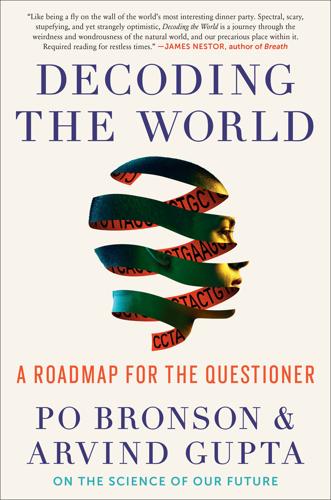
Decoding the World: A Roadmap for the Questioner
by
Po Bronson
Published 14 Jul 2020
His girls dropped their piecemeal needlepoints to rush outside. 3 Silicon Valley’s New Obsession: Boring-Ass Startups The Hustle IndieBio erupted just as the Bay Area was kind of getting sick of itself, whining about how everyone was on the make and everybody’s startups were lame. People who worked at Facebook would go out to dinner and express regret that their job was really to sell ads. Everyone made themselves feel better by hosting Social Purpose Parties. This is where you drink, give money, and talk about using blockchain to protect the environment or end poverty. There was a hunger in the Valley for something rad, something uncompromising. Saving the world was everyone’s favorite topic; they talked about it endlessly. But talk grew cheap. IndieBio wasn’t a Think Tank. It was a Do Tank. That’s what was so refreshing about it.
…
Ninety-nine percent of the “new industry” jobs created since 2010 have gone to people with a graduate degree. Virtual reality is a future industry; it doesn’t need many physical laborers. Nuclear fusion is a future industry; it will need fewer jobs than the coal and gas industry it replaces. Cryptocurrency and blockchain don’t create jobs. These technologies just make it easier to get paid in fractions of pennies. Even biotech is rapidly adopting robots to replace lab techs. All of the future industries will follow the Power Law, which is VC speak for “winners take all.” You can’t point to a single deep-tech field and argue, “That’s going to create a lot of jobs for everyone.”
…
They’re using their stake as collateral and borrowing dollars and going crazy—spending it, or making future bets and margin bets. And the whales aren’t immune to this. Plenty of whales play “whale games,” pumping up and knocking down the coin prices. Whales and believers aren’t married to Bitcoin. They are married to a world that is not hackable. A blockchain that unites the planet in free and unrestricted trade. That’s the part that has me excited. I don’t know who said it, but there is a great quote: “When goods stop crossing borders, armies will.” It’s so true. Beyond wars, protectionism creates poverty. Grain rots in barrels. Unemployed workers in Mexico die in the Texan desert trying to get work in America.
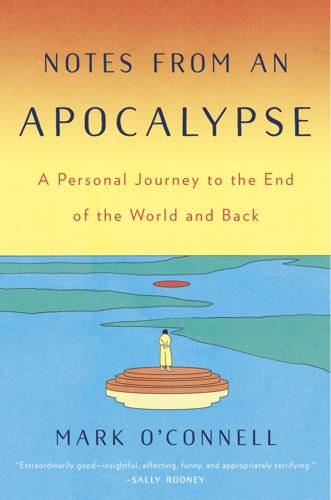
Notes From an Apocalypse: A Personal Journey to the End of the World and Back
by
Mark O'Connell
Published 13 Apr 2020
(There was in this sense a journalistic quality in Simon’s approach to his work, if not to the work itself.) Over beers in Anthony’s kitchen the previous night, Simon had told me about a dinner party he had been to in San Francisco earlier that year, at the home of a techie acquaintance. There had been a lot of Silicon Valley new money types there, he said, a lot of “blockchain entrepreneurs.” There were MAGA hats, and there was palpable excitement about Trump and the great rupture he seemed to represent. These people were from hacker backgrounds, and their view of the world arose out of a deep ethos of lulz. It was as though the new president had pulled off the ultimate troll on the liberal establishment.
…
Entitled “Mars and the Space Revolution,” the conference promised to explore how we might go about building a self-sustaining civilization on Mars. Around this central question, four full days of talks were scheduled across an array of topics. How quickly could a Mars colony become completely Earth-independent? What might a new Martian religion look like? How would a Martian colony be structured politically? How might the blockchain facilitate an interplanetary financial system? How could self-replicating robots be used to terraform a hostile alien environment? What were the logistics of drilling for water on Mars? There were numerous talks on the kinds of difficulties colonists might face on Mars, from natural disasters to teenage delinquency to the lack of a clearly defined legal regime for recognizing property rights in space under current US and international law.
…
Simply by using and investing in Marscoin, you are contributing to a serious bootstrapping effort to further a colony on Mars.” There seemed to be a general consensus in Mars colonization circles that the financial system of the colonies would inevitably be based in some or other cryptocurrency. (That there was a high degree of crossover between the enthusiasts of human settlement of Mars and blockchain fundamentalists was not especially surprising, given that both were of disproportionate interest to the libertarian wing of the geek community.) It was right out of The Founder’s Paradox, this whole idea. I thought again of the world-building strategy board game, down in that dungeon-like basement of the gallery in Auckland, depicting successive levels of escape from a dying planet, with its democratic nation-states, until the player finally reached the anarcho-capitalist utopia of Mars.

Prediction Machines: The Simple Economics of Artificial Intelligence
by
Ajay Agrawal
,
Joshua Gans
and
Avi Goldfarb
Published 16 Apr 2018
If people do not provide the data, then the AI can’t learn from feedback, limiting its ability to boost productivity and increase income. There are likely to be opportunities to innovate in a way that assures people as to their data’s integrity and control while allowing the AI to learn. One emerging technology—the blockchain—offers a way of decentralizing databases and lowering the cost of verifying data. Such technologies could be paired with AI to overcome privacy (and indeed security) concerns, especially since they are already used for financial transactions, an area where these issues are paramount.25 Even if enough users provide data so AIs can learn, what if those users are different from everyone else?
…
Aleecia M. McDonald and Lorrie Faith Cranor, “The Cost of Reading Privacy Policies,” I/S 4, no. 3 (2008): 543–568, http://heinonline.org/HOL/Page?handle=hein.journals/isjlpsoc4&div=27&g_sent=1&casa_token=&collection=journals. 25. Christian Catalini and Joshua S. Gans, “Some Simple Economics of the Blockchain,” working paper no. 2874598, Rotman School of Management, September 21, 2017, and MIT Sloan Research Paper No. 5191-16, available at https://ssrn.com/abstract=2874598. 26. Nick Bostrom, Superintelligence (Oxford, UK: Oxford University Press, 2016). 27. For an excellent recent discussion of this debate, see Max Tegmark, Life 3.0: Being Human in the Age of Artificial Intelligence (New York: Knopf, 2017). 28.
…
See also autonomous vehicles autonomous vehicles, 8, 14–15 decision making by, 111–112 knowledge loss and, 78 legal requirements on, 116 loss of human driving skill and, 193 mail delivery, 103 in mining, 112–114 passenger interests and, 95 preferences and, 88–90 rail systems, 104 reward function engineering in, 92 school bus drivers and, 149–150 tolerance for error in, 185–187 value capture and, 164–165 Autopilot, 8 Babbage, Charles, 12, 65 back propagation, 38 Baidu, 164, 217, 219 bail-granting decisions, 56–58 bank tellers, 171–173 Bayesian estimation, 13 Beane, Billy, 56, 161–162 Beijing Automotive Group, 164 beta testing, 184, 191 Bhalla, Ajay, 25 biases, 19 feedback data and, 204–205 human predictions and, 55–58 in job ads, 195–198 against machine recommendations, 117 regression models and, 34 variance and, 34–35 binding affinity, 135–138 Bing, 50, 204, 216 biopsies, 108–109, 148 BlackBerry, 129 The Black Swan (Taleb), 60–61 Blake, Thomas, 199 blockchain, 220 Bostrom, Nick, 221, 222 boundary shifting, 157–158, 167–178 data ownership and, 174–176 what to leave in/out and, 168–170 breast cancer, 65 Bresnahan, Tim, 12 Bricklin, Dan, 141, 163, 164 A Brief History of Time (Hawking), 210–211 Brynjolfsson, Erik, 91 business models, 156–157 Amazon, 16–17 Camelyon Grand Challenge, 65 capital, 170–171, 213 Capital in the Twenty-First Century (Piketty), 213 capsule networks, 13 Cardiio, 44 Cardiogram, 44–45, 46, 47–49 causality, 63–64 reverse, 62 CDL.
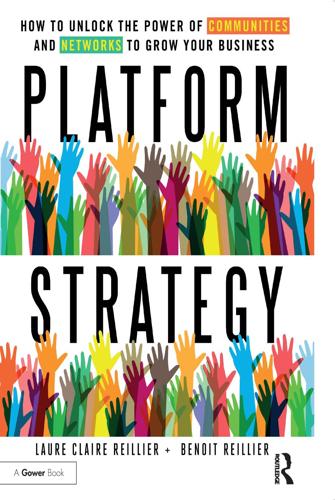
Open for Business Harnessing the Power of Platform Ecosystems
by
Lauren Turner Claire
,
Laure Claire Reillier
and
Benoit Reillier
Published 14 Oct 2017
Technology underpinning platform businesses is improving everyday Current platform business models are powered by technologies such as relational databases, instant Internet-based communications and matching algorithms. To start with, all of these technologies benefit from regular hardware performance improvements.15 But more fundamental innovations in these areas, such as blockchains, which are effectively distributed ledgers, also contribute to the development of key building blocks able to further unlock the potential of platforms as business models. By lowering the friction for securely registering time-stamped transactions, blockchain technology can provide a global, scalable, low-cost registrar for contracts and commitments between platform agents. This has the potential to strengthen and broaden platforms’ transaction capabilities globally.
…
Lastly, the platform itself should embed some of the intelligence required to enforce governance principles. Many automated algorithms and rules help ensure that the right information is captured, that it is internally consistent, and that the parties are who they say they are (if anonymous participation is forbidden). Going forward, new technologies, such as distributed database models like blockchain, will open the door to ‘self-enforcing smart contracts’ between platform participants and further strengthen the legal certainty of core transactions. This will be a formidable enabler for platform businesses since it will further lower friction between transacting parties. Platform branding The other side of trust is brand recognition.
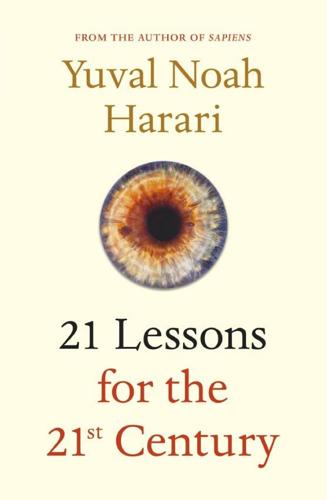
21 Lessons for the 21st Century
by
Yuval Noah Harari
Published 29 Aug 2018
The democratic system is still struggling to understand what hit it, and is hardly equipped to deal with the next shocks, such as the rise of AI and the blockchain revolution. Already today, computers have made the financial system so complicated that few humans can understand it. As AI improves, we might soon reach a point when no human can make sense of finance any more. What will that do to the political process? Can you imagine a government that waits humbly for an algorithm to approve its budget or its new tax reform? Meanwhile peer-to-peer blockchain networks and cryptocurrencies like bitcoin might completely revamp the monetary system, so that radical tax reforms will be inevitable.
…
He looked at the propaganda posters – which typically depicted coal miners, steelworkers and housewives in heroic poses – and saw himself there: ‘I am in that poster! I am the hero of the future!’5 In 2018 the common person feels increasingly irrelevant. Lots of mysterious words are bandied around excitedly in TED talks, government think tanks and hi-tech conferences – globalisation, blockchain, genetic engineering, artificial intelligence, machine learning – and common people may well suspect that none of these words are about them. The liberal story was the story of ordinary people. How can it remain relevant to a world of cyborgs and networked algorithms? In the twentieth century, the masses revolted against exploitation, and sought to translate their vital role in the economy into political power.
…
Abbasid caliphs 94 Abraham, prophet 182–3, 186, 187, 274 advertising 36, 50, 53, 54, 77–8, 87, 97, 113, 114, 267 Afghanistan 101, 112, 153, 159, 172, 210 Africa 8, 13, 20, 58, 76, 79, 100, 103–4, 107, 139, 147, 150–1, 152, 168, 182, 184, 223, 226, 229, 239 see also under individual nation name African Americans 67, 150, 152, 227 agriculture 171, 185; animals and 71, 118–19, 224; automation of jobs in 19–20, 29; climate change and modern industrial 116, 117; hierarchical societies and birth of 73–4, 185, 266–7; religion and 128–30 Aisne, third Battle of the (1918) 160 Akhenaten, Pharaoh 191 Al-Aqsa mosque, Jerusalem 15 al-Baghdadi, Abu Bakr 98 Algeria 144, 145 algorithms see artificial intelligence (AI) Ali, Husayn ibn 288 Alibaba (online retailer) 50 Allah 104, 128, 130, 204, 271–2, 289 AlphaZero 31, 123 al-Qaeda 162, 168 Amazon (online retailer) 39, 40, 50, 52, 91, 267–8 Amazon rainforest 116 Amos, prophet 188 Amritsar massacre (1919) 10 Andéol, Emilie 102 animals xi, 73, 86, 98–9, 182, 190, 218, 245; distinct social behaviours 94–5; ecological collapse and 71, 116, 118–19, 224; farm animals, subjugation of 71, 118–19, 224; morality and 187–8, 200; religious sacrifice of 190 anti-Semitism 142, 143, 194, 195, 235–6 see also Jews Apple (technology company) 91, 178 Arab Spring xi, 91 Arjuna (hero of Bhagavadgita) 269–70, 271, 299 art, AI and 25–8, 55–6, 182 artificial intelligence (AI) xiii, xiv; art and 25–8, 55–6, 182; authority shift from humans to 43, 44–72, 78, 268; biochemical algorithms and 20, 21, 25–8, 47–8, 56, 59, 251, 299; cars and see cars; centaurs (human-AI teams) 29, 30–1; communism and 35, 38; consciousness and 68–72, 122, 245–6; creativity and 25–8, 32; data ownership and 77–81; dating and 263; decision-making and 36–7, 50–61; democracy and see democracy; digital dictatorships and xii, 43, 61–8, 71, 79–80, 121; discrimination and 59–60, 67–8, 75–6; education and 32, 34, 35, 38 39, 40–1, 259–68; emotional detection/manipulation 25–8, 51–2, 53, 70, 79–80, 265, 267; equality and xi, 8, 9, 13, 41, 71–2, 73–81, 246; ethics and 56–61; free will and 46–9; games and 29, 31–2, 123; globalisation and threat of 38–40; government and xii, 6, 7–9, 34–5, 37–43, 48, 53, 61–8, 71, 77–81, 87, 90, 121, 267, 268; healthcare and 22–3, 24–5, 28, 48–9, 50; intuition and 20–1, 47; liberty and 44–72; manipulation of human beings 7, 25–8, 46, 48, 50–6, 68–72, 78, 79–80, 86, 96, 245–55, 265, 267, 268; nationalism and 120–6; regulation of 6, 22, 34–5, 61, 77–81, 123; science fiction and 245–55, 268; surveillance systems and 63–5; unique non-human abilities of 21–2; war and 61–8, 123–4 see also war; weapons and see weapons; work and 8, 18, 19–43 see also work Ashoka, Emperor of India 191–2, 286 Ashura 288, 289 Asia 16, 39, 100, 103, 275 see also under individual nation name Assyrian Empire 171 Athenian democracy, ancient 95–6 attention, technology and human 71, 77–8, 87, 88–91 Australia 13, 54, 116, 145, 150, 183, 187, 232–3 Aztecs 182, 289 Babri Mosque, Ayodhya 291 Babylonian Empire 188, 189 Baidu (technology company) 23, 40, 48, 77, 267–8 Bangladesh 38–9, 273 bank loans, AI and 67 behavioural economics 20, 147, 217 Belgium 103, 165, 172 Bellaigue, Christopher de 94 Berko, Anat 233 bestiality, secular ethics and 205–6 bewilderment, age of xiii, 17, 215, 257 Bhagavadgita 269–70, 271, 299 Bhardwaj, Maharishi 181 Bible 127, 131–2, 133, 186–90, 198, 199, 200, 206, 233, 234–5, 240, 241, 272, 298 Big Data xii, 18, 25, 47, 48, 49, 53, 63, 64, 68, 71–2, 268 biometric sensors 23, 49, 50, 52, 64, 79, 92 biotechnology xii, xiv, 1, 6, 7, 8, 16, 17, 18, 21, 33–4, 41, 48, 66, 75, 80, 83, 88, 109, 121, 122, 176, 211, 251–2, 267 see also under individual area of biotechnology bioterrorism 167, 169 Bismarck, Otto von 98–9 bitcoin 6 Black Death 164 Blair, Tony 168 blockchain 6, 8 blood libel 235–6 body, human: bioengineered 41, 259, 265; body farms 34; technology and distraction from 88–92 Bolshevik Revolution (1917) 15, 248 Bonaparte, Napoleon 96, 178, 231, 284 Book of Mormon 198, 235, 240 Book of the Dead, Egyptian 235 Bouazizi, Mohamed xi brain: biochemical algorithms of 20, 21, 47, 48; brain-computer interfaces 92, 260; brainwashing 242–4, 255, 267, 295; decision-making and 50, 52; equality and 75, 79; flexibility and age of 264–5; free will and 250–2, 255; hominid 122; marketing and 267; meditation and 311, 313–14, 316, 317 Brazil 4, 7, 12, 76, 101, 103, 118, 130 Brexit referendum (2016) 5, 9, 11, 15, 45–6, 93, 99, 115 Brihadaranyaka Upanishad 283–4, 302–3 Britain 5, 9, 10, 11, 13, 15, 44–5, 94, 99, 108, 115, 139, 143, 150, 165, 172, 178, 182, 232–3, 243 Brussels bombings (March, 2016) 160 Buddha/Buddhism 58, 102, 136, 183, 184, 186, 190, 196, 278, 291, 302–6, 315 Bulgaria 169, 195, 227 Burma 304–5 Bush, George W. 4, 168, 176, 178 Caesar, Julius 96, 179 California, U.S. 8, 39, 85, 88, 148, 172, 177, 178, 200, 266 Cambridge Analytica 80, 86 Cambridge University 12, 45, 194 Cameron, David 45, 46 Canaan 189, 190, 289, 291 Canada 13, 38, 74, 107 capitalism xii, 11, 16, 35, 38, 55, 68, 76, 77, 96, 105–6, 108, 113, 130, 131, 132, 134, 135, 148, 210, 217, 245, 273, 292, 309 carbon dioxide 117 care industry 24–5 Caro, Rabbi Joseph 195 cars 133, 135; accidents and 23–4, 54, 56–7, 114, 159, 160; choosing 78; GPS/navigation and 54; self-driving 22, 23–4, 33, 41, 56–7, 58–9, 60–1, 63, 168 Catalan Independence 124, 125 Catholics 108, 132, 133, 137, 213, 292, 299 centaurs (human-AI teams) 29, 30 Chad 103, 119 Chaucer, Geoffrey: Canterbury Tales 235–6 Chemosh 191 chess 29, 31–2, 123, 180 Chigaku, Tanaka 305 child labour 33, 224 chimpanzees 94–5, 98, 122, 187–8, 200, 242 China xi, 4, 5, 8, 9, 10, 12, 13, 15, 64, 76, 100, 104, 105, 106, 107, 109, 113, 114, 115, 118, 119, 120, 121, 135, 145, 150, 151, 159, 168, 169, 171, 172–3, 175, 176, 177–8, 180, 181, 182, 183, 184, 185, 186, 193, 201, 227–8, 232, 251, 259–60, 262, 274, 284–5 Chinese Communist Party 5 Christianity 13, 55, 58, 96, 98, 126, 128–30, 131, 132, 133, 134–5, 137, 142, 143, 148, 183, 184–6, 187, 188, 189–90, 191, 192, 193, 194, 196, 199, 200, 203, 204, 208, 212–13, 233, 234–5, 236, 253, 282, 283, 288, 289, 291, 294, 296, 308; Orthodox 13, 15, 137, 138, 183, 237, 282, 308 Churchill, Winston 53, 108, 243 civilisation, single world xi, 5, 92, 95–109, 110, 138; ‘clash of civilisations’ thesis and 93–8; economics and 105–6; European civilisation and 95–6, 108–9; human tribes and 98–100; science and 107–8 ‘clash of civilisations’ 93–4 climate change x, xi, 15, 75–6, 78, 108, 109, 116–20, 121, 122–3, 124, 127, 128, 130, 133, 138, 168, 195, 219, 223, 228, 244, 265 Clinton, Bill 4, 168, 176 Clinton, Hillary 8, 97, 236 Cnut the Great, King of the Danes 105 Coca-Cola 50, 238, 267 Coldia (fictional nation) 148–50, 152–4 Cold War (1947–91) 99, 100, 113, 114, 131, 176, 180 communism xii, 3, 5, 10, 11, 14, 33, 35, 38, 74, 87, 95, 131, 132, 134, 176–7, 209–10, 251, 262, 273, 277, 279 Communities Summit (2017) 85 community 11, 37, 42, 43, 85–92, 109, 110, 135, 143–4, 201, 230, 241; breakdown of 85–7; Facebook and building of global xiii, 81, 85–91 compassion 62, 63, 71, 186; Buddhism and 305–6; religion and 186, 200, 201–2, 204, 208–9, 234, 305–6; secular commitment to 200, 201–2, 204–6, 208–9, 210 Confucius 15, 136, 181, 190, 260, 284–5 consciousness ix; AI and 36, 68–72, 122; intelligence and 68–70, 245–6; meditation and 315, 316; religion and 197 Conservative Party 45 conservatives: conservation and 219–20; embrace liberal world view 44–5 conspiracy theories 222, 229 Constantine the Great, Roman Emperor 192 Constantius II, Roman Emperor 192 cooperation 12, 29, 134; fictions and mass 134, 137, 233–42, 245; human-AI 29, 31; morality and 47, 187; nationalism and 134, 137, 236–8; religion and 134, 137, 233–6 corruption 12, 13, 15, 188–9 Council of Religion and the Homosexual (CRH) 200 creativity 25–8, 31, 32, 75, 182, 234, 262, 299 Crimea 174–5, 177, 179, 231, 238 Croats 282 Crusades 96, 165, 184, 199, 212, 213, 296 cryptocurrency 6 Cuba 9–10, 11, 114, 176 Cuban Missile Crisis (1962) 114 cultures, differences between 147–55 culturism 150–4 cyberwarfare 127, 176, 178, 179 cyborgs 8, 76–7, 212, 278 Czech Republic 200 Daisy advertisement: US presidential election (1964) and 113, 114 Darwin, Charles 194; On the Origin of Species 98–9 Darwinism 213 data: Big Data xii, 18, 25, 47, 48, 49, 53, 63, 64, 68, 71–2, 268; liberty and 44–72; ownership regulation 77–81, 86 see also artificial intelligence (AI) Davos World Economic Forum 222 Dawkins, Richard 45 Deep Blue (IBM’s chess program) 29, 31 democracies: ‘clash of civilisations’ thesis and 93–8; data processing and 65; equality and 74; individual, trust in and 217, 220; liberal democracy see liberal democracy; liberty and 44–6, 53, 55, 64, 65, 66, 67; media manipulation and 12–13; secular ethics and 204, 210 Denmark 4, 94, 105, 144, 153, 200, 210 dharma 270, 271, 286, 299, 309 Di Tzeitung 97 dictatorships 3, 5, 33, 74, 210, 305; digital xii, 43, 61–8, 71, 79–80, 121 discrimination: AI and 59–60, 67–8, 75–6; brain and structural bias 226–8; religion and 135, 191, 200, 208; racism/culturism, immigration and 147–55 disease 16, 22, 28, 49, 88, 107, 218, 289 disorientation, sense of 5, 6 DNA 49, 66, 67, 79, 98, 150, 182 doctors 22–3, 24, 28, 48–9, 106–7, 128–9, 280 dogmas, faith in 229–30 dollar, American 106 Donbas 238 Donetsk People’s Republic 232 drones 29, 30, 35, 64, 76 East Africa 239 ecological crisis, xi, xiv, 7, 109, 195, 219, 244, 265; climate change x, xi, 15, 75–6, 78, 108, 109, 116–20, 121, 122–3, 124, 127, 128, 130, 133, 138, 168, 195, 219, 223, 228, 244, 265; equality and 75–6; global solution to 115–26, 138, 155; ignorance and 219–20; justice and 223, 228, 244, 265; liberalism and 16; nationalism and 15, 115–26; religion and 127, 128, 130, 133, 138; technological breakthroughs and 118–19, 121, 122–4 economics xii, 3, 4, 7, 9, 11, 16, 68, 99, 222, 224, 225, 240, 262, 309; AI and 6, 7, 8, 9, 19–43; capitalist see capitalism; communism and see communism; data processing and 65–6; economic models 37, 105–6; equality and 9, 71, 73–7 see also equality; liberalism and 3–5, 16, 44–5; nationalism and 115, 117, 118, 120, 121, 124; religion and 130–3; war and 171–5, 177–8, 179–80; work and 19–43 education 11, 16, 66, 74, 75, 111, 112, 113, 184, 194, 259–68; AI and 32, 34, 35, 38 39, 40–1, 259–68; basic level of 40–1; future of 259–68; liberal 217, 219, 261; secular 207, 209 Egypt 63, 74, 128–9, 172, 181, 188–9, 235, 284, 291, 296 Einstein, Albert 45, 181, 193, 194, 195 El Salvador 4, 150 ‘End of History’ 11 Engels, Friedrich: The Communist Manifesto 262, 273 England 105, 139, 235–6 equality xi, 13, 41, 71–2, 73–81, 92, 95, 144, 204, 223; AI and 75–81; history of 73– 4; secularism and 206–7, 208–9 ethics: AI and 56–61, 63, 121; complex nature of modern world and 223–30; nationalism and 121–2; religion and 186–93, 199–202; secular 199–202, 203–14 Europe xi, xii, 5, 10, 11, 16, 40, 47, 79, 93–100, 103–4, 105, 106, 107, 108–9, 113, 114, 115, 124–5, 128, 135, 136, 138, 139, 140, 143–4, 145, 147, 150, 153, 154–5, 159, 160, 164, 169, 171–2, 175, 176, 186, 187, 193, 201, 207, 228, 236, 252, 294, 307 see also under individual nation name European Union xii, 47, 93, 94, 95, 99, 108, 115, 124, 169; Constitution 95, 124; crisis in 138; immigration and 138, 139, 143–4, 154–5; Russia and 177; size and wealth of 176; terrorism and 159 Evangelical Christians 133 evolution 47, 98–9, 110–11, 127, 187, 194, 205, 206, 217, 218, 223, 274, 276, 277 Ex Machina (film) 246 Facebook xiii, 27, 77, 178, 230, 301, 302, 306; community-building and xiii, 85–91, 93; equality and 77, 80; liberty and 55, 64, 65, 67, 80, 86; ownership of personal data 80, 86; post-truth and 233, 235, 238; US presidential election (2016) and 80, 86 failed states 101, 112, 210 fair game rules 187 fake news xi, 231–42 famine 16, 33, 208, 212, 238, 251, 271 farming, modern industrial 29, 116, 118, 127, 128, 129, 224, 260, 262 see also agriculture fascism xii, 3, 9, 10, 11, 33, 142, 148, 154, 237, 251, 292–5, 297, 305 feminism 87, 143, 208, 217, 246, 280 Ferdinand, Archduke Franz 9, 11, 171 Fernbach, Philip 218 financial crisis, global (2008) 4, 171 financial system, computers and complexity of 6 Finland 38, 74 First World War (1914–18) 9, 10, 11, 30, 33, 99–100, 112, 123, 124, 160, 170, 171, 172, 265 Flag Code of India 285–6 flags, national 103, 285–6 fMRI scanner 21, 240 football, power of fictions and 241 France 10, 13, 51, 63, 66, 76, 94, 96, 99, 102, 103, 104, 115, 122, 139, 144, 145, 164, 165, 172, 182, 184, 194, 204, 285, 295–6 Francis, Pope 133 Freddy (chimpanzee) 188 free-market capitalism xii, 3, 4, 11, 16, 44, 55, 217, 245 free will 20, 44, 45–6, 47–8, 250–1, 299–301 French Revolution (1789) 63, 184, 207 Freud, Sigmund 135, 185, 193, 194–5, 286 Friedman, Milton 130 Front National 13 Galilei, Galileo 193, 207 gay marriage 44, 198, 205–6 Gaza 173 genetically modified (GM) crops 219 Georgia 176, 177 Germany 13, 66, 68, 95, 96, 98–9, 108, 118, 139, 147, 148, 155, 169, 171–2, 173, 179, 182, 194, 195, 239, 251, 277; Nazi 10, 66, 96, 134, 136, 212, 213, 226, 237, 251, 279, 294, 295 Gandhi, Mahatma 132 globalisation 8, 9, 113, 139; AI/automation and 38–9; history of 99; inequality and 73, 74, 76; nationalism and 109; reversing process of xiii, 5; spread of 4, 99 global stories, disappearance of 5, 14 global warming see climate change God xi, xiii, 46, 106, 197–202; 245, 252, 254, 269, 281, 285, 287, 303, 304; Bible and see Bible; ethics and 199–202, 205, 206, 208, 209; existence of 197–9; Jewish and Christian ideas of 184–5, 189, 190; justice and 225; mass cooperation and 245; monotheism and 190–3; post-truth and 234–6, 239; sacrifice and 287, 289; state identity and 138 gods xii, 277, 281, 291; agriculture and 128, 129; humans becoming ix, 79, 86; justice and 188, 189; sacrifice and 287–9; state identity and 136, 137 Goebbels, Joseph 237 Goenka, S.
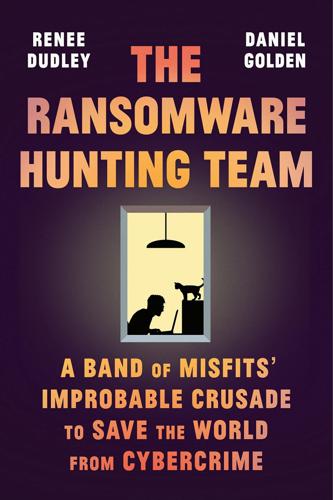
The Ransomware Hunting Team: A Band of Misfits' Improbable Crusade to Save the World From Cybercrime
by
Renee Dudley
and
Daniel Golden
Published 24 Oct 2022
The DMA Locker hacker was so familiar with Proven Data’s Bitcoin wallet numbers that he would send a decryption key as soon as he saw the transaction on the blockchain, the electronic public ledger. Normally, attackers waited for Proven Data to send confirmation that the ransom had been paid before sending a key. “One of the weird benefits was that he knew our wallets enough that every time we sent him a payment, he would send us a key before we could send a transaction ID,” Storfer said. “He would literally sit on the blockchain, and just be like, ‘Oh yeah, Proven, let me give you guys some keys.’” When the hacker decided to retire from the ransomware business, he let Proven Data know—and proposed one last deal.
…
While he enjoyed some parts—such as hearing a federal prosecutor describe behind-the-scenes details of a successful case—he couldn’t schmooze about non-cyber topics he knew little about. One night, Lawrence bought him a drink, but Michael felt dizzy after one sip. He switched to water and tried to stay awake as someone droned on about blockchain technology. During the day, he took part in a panel discussion alongside John Fokker, the former HTCU team leader, and a researcher from cybersecurity software company Trend Micro. Michael described ID Ransomware, and an audience member later asked whether his site had a privacy policy. Hacker email and Bitcoin addresses found in files uploaded there “may be stored and shared with trusted third parties or law enforcement,” according to a disclaimer on the site.
…
He knew the process of setting up a shell company, and of handling and accounting for millions of dollars’ worth of Bitcoin, would be “a pain in the ass” for a publicly traded corporation—something they’d only do if they really thought they needed to. He called friends who had left SecondMarket to work at Digital Currency Group, a firm founded by Silbert that invested in Bitcoin and blockchain companies. Bill wanted to know if anyone had heard of corporations holding Bitcoin reserves in case of a ransomware attack. “Hey, is this a thing?” he asked. “Oh yeah, it’s a thing, and we know because we get calls every day,” a contact told him. Some of the businesses calling Digital Currency Group wanted more than a Bitcoin stockpile; already hit by ransomware, they wanted the firm to pay the Bitcoin ransom on their behalf.

Surviving AI: The Promise and Peril of Artificial Intelligence
by
Calum Chace
Published 28 Jul 2015
These teams need high-level support and freedom from the usual metrics of return on investment, at least for a while. The theory is fairly easy but putting it into practice is hard: most will need external help, and many will fail. Of course the disrupters can also be disrupted. A service called La’Zooz (16) is planned, based on the blockchain technology you will have heard about in connection with Bitcoin, which may provide serious competition for Uber. 3.2 – Killer robots It is not only commerce where AI is threatening disruption. Human Rights Watch and other organisations are concerned that within a decade or two, fully autonomous weapons will be available to military forces with deep pockets. (17) They argue that lethal force should never be delegated to machines because they can never be morally responsible.
…
lang=en (27) http://www.theatlantic.com/magazine/archive/2013/11/the-great-forgetting/309516/ (28) https://twitter.com/MFordFuture/status/606939607356219392/photo/1 (29) http://www.reddit.com/r/Futurology/comments/34u1a9/technostism_the_ideology_of_futurology/People also talk about a financial singularity arriving if and when cryptocurrencies like Bitcoin based on the blockchain technology disrupt traditional banking. Are we perhaps nearing peak singularity, or a singularity singularity? (30) https://www.cia.gov/library/publications/the-world-factbook/geos/xx.html (31) http://www.nature.com/news/flashing-fish-brains-filmed-in-action-1.12621 (32) http://www.theguardian.com/technology/2007/dec/20/research.it (33) http://www.newyorker.com/news/news-desk/is-deep-learning-a-revolution-in-artificial-intelligence (34) http://www.theguardian.com/science/2015/may/21/google-a-step-closer-to-developing-machines-with-human-like-intelligence (35) . https://intelligence.org/2014/05/13/christof-koch-stuart-russell-machine-superintelligence (36) http://uk.businessinsider.com/elon-musk-killer-robots-will-be-here-within-five-years-2014-11#ixzz3XHt6A8Lt (37) I am grateful to Russell Buckley for drawing my attention to this illustration
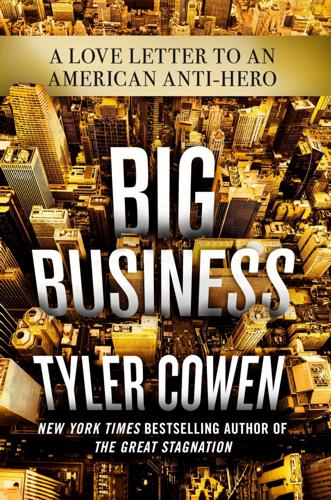
Big Business: A Love Letter to an American Anti-Hero
by
Tyler Cowen
Published 8 Apr 2019
It competes with gold as a hedge and unorthodox store of value, and you can use it as a currency to buy (legal) marijuana, a transaction that, because of federal regulations, the regular banking system cannot support. It enables a blockchain as a new medium for recording, storing, and verifying information and common agreement as to who owns what. It remains to be seen how much Bitcoin, along with other cryptocurrencies and more generally the blockchain, will prove transformational. It might not even hold its market value. But that is how innovation usually proceeds. Innovators try lots of new approaches; some are discarded, others take off, and yet others evolve into something more useful with the passage of time.
…
Bernstein, Elizabeth best sellers See also publishing Bezos, Jeff See also Amazon Big Brother See privacy Big Data Big Pharma Big Tech disappearance of competition impact on intelligence innovation and loss of privacy and overview Bing Bird, Larry Bitcoin Black, Leon BlackBerry Blackstone blockchain Bloxham, Eleanor Blue Cross/Blue Shield brand loyalty Brexit Brin, David Brooks, Nathan bubbles, financial sector Bullshit Jobs: A Theory (Graeber) Burger King cable TV cable companies cable news Capital One capitalism “creative destruction” and Friedman on logic of market churn and media and public’s view of short-termism venture capitalists workers and young people and See also crony capitalism Capitalism for the People, A (Zingales) Carr, Nicholas Carrier CEOs deaths of increases in salary overview pay for creating value short-termism and skill set China American manufacturing and Apple and facial recognition technology financial innovations financial institutions multinational corporations and productivity retail and tech companies and See also Alibaba Cialdini, Robert Cisco Citibank Citizens United decision See also Supreme Court Civil War Clark, Andrew E.
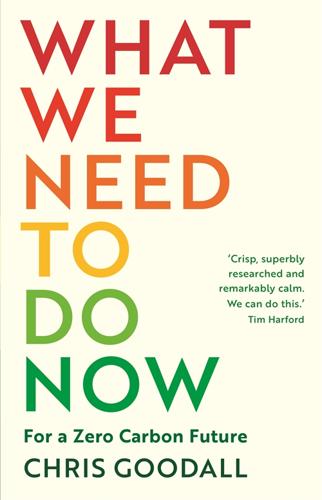
What We Need to Do Now: A Green Deal to Ensure a Habitable Earth
by
Chris Goodall
Published 30 Jan 2020
At the moment, the energy coming from a micro-wind turbine on a farm will flow back into the electricity network if the house isn’t using it all, and the owner will see little return. The Orkney experiment will allow a neighbour to buy that energy at a price that is lower than that from conventional suppliers. The proposal to allow power sales to neighbours is based around what is called ‘blockchain’, a software that can account for tiny transactions. If the sun starts shining and my roof produces electricity for a few minutes that I don’t use, my neighbour can buy that power and pay for it immediately. This can all happen automatically using modern digital technologies. Peer-to-peer electricity trading is a hugely important part of the transition to a genuinely local energy system.
…
This enables management of supply and demand and settlement of bills for the sale of electricity by one participant to another. If demand is temporarily too great, an effective microgrid system can turn off or turn down flexible uses of energy, such as electric vehicle charging or air conditioning. Members of the Brooklyn microgrid can buy and sell electricity with each other automatically over a blockchain network. Customers are alerted when the electricity price is cheap, so that they can carry out their energy-intensive activities as inexpensively as possible. Or, when it is scarce, they can release power from their batteries in return for a good price. Advances in sensors mean that every use of electricity around a building – or a town for that matter – can be monitored and controlled to help keep the local network in balance, if necessary by turning appliances up or down.
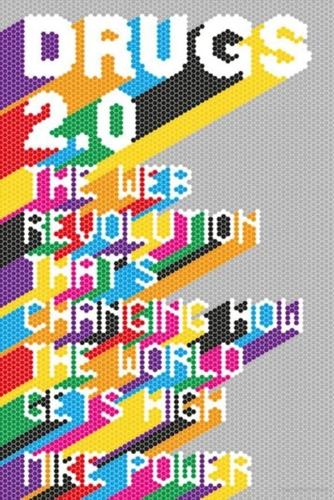
Drugs 2.0: The Web Revolution That's Changing How the World Gets High
by
Mike Power
Published 1 May 2013
Users, known as miners, donate processor time to maintain and update the block chain, which records all transactions between users, and in the process also ‘dig’ for new coins. Miners’ computers send evidence of those transactions to the network, racing each other to solve these irreversible crypotographic puzzles that contain several transactions. The first miner to crack these puzzles gets fifty new bitcoins as a reward, and those transactions are added to the blockchain. The puzzles are designed to become more complex over time as more miners come on board, which maintains production to one block every ten minutes, keeping the creation of new coins steady. The reward for successful mining also falls over time, from fifty to twenty-five coins per block, and drops sequentially by half every 210,000 blocks.
…
The system was then flooded with speculators, forcing MtGox to limit withdrawals to US$1,000 worth of bitcoins a day to stem the flow and prop up the dollar-value of the currency.6 Network analysts Fergal Reid and Martin Harrigan of University College Dublin wrote a 2012 paper baldly titled ‘Bitcoin is Not Anonymous’. In it they demonstrated what the high-tech coining community knew – that the blockchain recorded all transactions. Reid posted in a comment thread following the release of his paper, ‘You don’t get anonymity automatically from the system. A lot of people out there think you do.’7 But the determined user can retain anonymity easily enough in the US at least, by entering a bank and paying cash into an exchanger’s account, for bitcoins are now traded just as dollars and euros are.
…
When most investigators can’t even understand the basics of encryption, the likelihood that they or a jury member will reach an understanding of bitcoin is minimal. And when most small-scale drug transactions are small, under £100, who’s watching? The answer, so far, is that no one has been busted using evidence from the bitcoin blockchain. Bitcoin addresses, where you receive and store coins, are randomly generated strings of letters and numbers, and there’s no ID check system – and you can create another in moments. If that’s not enough, the more paranoid users can use a service such as Bitcoinfog, which matches deposits and transactions randomly, paying out the total you paid in in a series of different amounts.
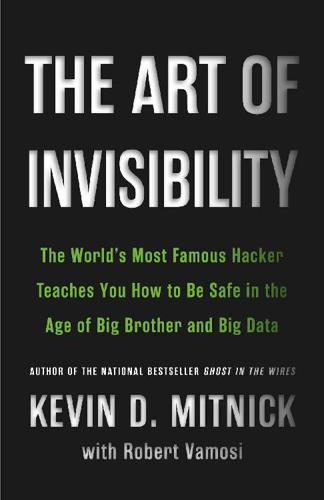
The Art of Invisibility: The World's Most Famous Hacker Teaches You How to Be Safe in the Age of Big Brother and Big Data
by
Kevin Mitnick
,
Mikko Hypponen
and
Robert Vamosi
Published 14 Feb 2017
Exchanges allow you to invest in Bitcoin and change it into other currencies, such as US dollars, or purchase goods on sites such as Amazon. Say you have one Bitcoin, valued at $618. If you only need around $80 for a purchase, then you will retain a certain percentage of the original value, depending on the exchange rate, after the transaction. Transactions are verified in a public ledger known as a blockchain and identified by IP address. But as we have seen, IP addresses can be changed or faked. And although merchants have started accepting Bitcoin, the service fees, typically paid by the merchant, have been transferred to the purchaser. Furthermore, unlike credit cards, Bitcoin permits no refunds or reimbursements.
…
This requires setting up a fake e-mail address in advance (see here) and using an open wireless network. Once you have that fake e-mail address, use Tor to set up a Bitcoin wallet, find a Bitcoin ATM to fund the wallet, and then use a tumbler to essentially launder the Bitcoin so it cannot be traced back to you on the blockchain. This laundering process requires setting up two Bitcoin wallets using different Tor circuits. The first wallet is used to send the Bitcoin to the laundering service, and the second is set up to receive the laundered Bitcoin. Once you have achieved true anonymity by using open Wi-Fi out of camera view plus Tor, find a VPN service that accepts Bitcoin for payment.
…
So now we have a laptop, with Tor and Tails loaded, a burner phone, a handful of anonymous prepaid gift cards, and an anonymous hotspot with an anonymously purchased data plan. We’re still not ready. To maintain this anonymity, we need to convert our anonymously purchased prepaid gift cards to Bitcoin. In chapter 6 I talked about Bitcoin, virtual currency. By itself Bitcoin is not anonymous. They can be traced through what’s called a blockchain back to the source of the purchase; similarly, all subsequent purchases can be traced as well. So Bitcoin by itself is not going to hide your identity. We will have to run the funds through an anonymity mechanism: converting prepaid gift cards into Bitcoin, then running the Bitcoin through a laundering service.

The Price of Time: The Real Story of Interest
by
Edward Chancellor
Published 15 Aug 2022
During an outbreak of ‘marijuana madness’ in September 2018, a Canadian cannabis producer was briefly valued at more than American Airlines.21 CRYPTO BUBBLES As the world’s financial system imploded in the summer of 2008, an anonymous software engineer circulated a paper containing a cure for all monetary ills. Commercial banks had shown they couldn’t be trusted with money. Central banks were oiling their printing presses, ready to debase their currencies. The solution was to use the internet to create ‘a new electronic cash system that’s fully peer-to-peer’. Once the distributed ledger, or blockchain, was in place financial trust would be restored and monetary crises come to an end.22 Things didn’t turn out quite as Bitcoin’s mystery creator, Satoshi Nakamoto, envisaged. What he had unleashed was not so much a new type of money, but rather the most perfect object of speculation the world had ever seen.
…
But that didn’t stop the Useless Ethereum Token, whose logo showed the middle finger and whose website advised ‘don’t buy these tokens’, rising five times faster than Bitcoin in the giddy last months of 2017.25 Just as internet companies were spun off from their parents during the Dotcom bubble, so ‘forks’ in the blockchain created yet more coins. Bitcoin laid two eggs, Bitcoin Cash and Bitcoin Gold. Towards the end of the year, the leading crypto’s market value surpassed many of the world’s largest companies, including Boeing, Toyota and McDonald’s. In Charlotte, North Carolina, a restaurant chain saw its share price surge after launching a cryptocurrency rewards programme for its clientele.26 A young Dutch family was reported to have sold their home and possessions and moved into a campsite, where they would live off the profits gained from trading cryptocurrencies.27 True believers maintained that blockchain was going to ‘change the world’.’
…
In Charlotte, North Carolina, a restaurant chain saw its share price surge after launching a cryptocurrency rewards programme for its clientele.26 A young Dutch family was reported to have sold their home and possessions and moved into a campsite, where they would live off the profits gained from trading cryptocurrencies.27 True believers maintained that blockchain was going to ‘change the world’.’ But transactions on Bitcoin’s network were agonizingly slow and consumed vast amounts of energy. Amazon wouldn’t accept bitcoin for retail transactions, nor would the US government accept it for the payment of taxes. Its market price was too volatile to serve as a store of value, a key function of money.

On the Future: Prospects for Humanity
by
Martin J. Rees
Published 14 Oct 2018
Two trends are reducing interpersonal trust: firstly, the remoteness and globalisation of those we routinely have to deal with; and secondly, the rising vulnerability of modern life to disruption—the realisation that ‘hackers’ or dissidents can trigger incidents that cascade globally. Such trends necessitate burgeoning security measures. These are already irritants in our everyday life—security guards, knotty passwords, airport searches, and so forth—but they are likely to become ever more vexatious. Innovations like blockchain, the publicly distributed ledger that combines open access with security, could offer protocols that render the entire internet more secure. But their current applications—allowing an economy based on crypto-currencies to function independently of traditional financial institutions—seem damaging rather than benign.
…
See also genomes bio terror, 73, 75, 77–78 bioweapons of governments, 77 black carbon, reduction of, 47 Black Death, 76, 216 black holes: in center of Milky Way, 124; crashing together, 171; Einstein’s theory applied to, 166, 186; evaporation of, 179; fears about particle accelerators and, 111–12; as simple entities, 166, 173; space telescopes with evidence of, 142 blockchain, 220 Blue Origin, 146 Borucki, Bill, 132 Boston Dynamics, 88 bottlenecks, evolutionary, 155–56, 158 Boyle, Robert, 61–63 brain: basic science needed for medical applications to, 212; chain of complexity from big bang to, 214; complexity of, 174, 176–77; computer simulations of, 190; limits to human understanding and, 189–90, 192–94; mystery of self-awareness and, 193 brain death, 71 brain implants, downloading thoughts from, 105 Breakthrough Listen, 157 Brewster, David, 126–27 Brooks, Rodney, 106 Brundtland, Gro Harlem, 26 Bruno, Giordano, 129 C4 pathway, 25 carbon capture and storage, 51, 58 carbon dioxide in atmosphere, 1, 38–44; cosmic history of carbon atoms in, 123; cutting to preindustrial level, 52; direct extraction of, 59; electric cars and, 47; predicting accelerated increase in, 57–58.
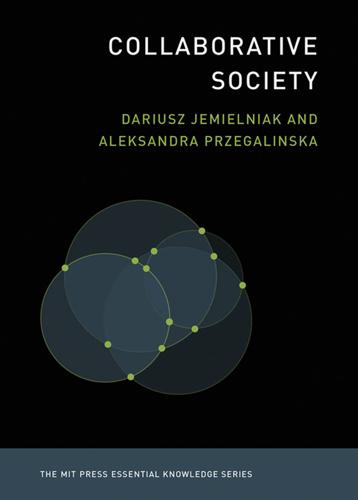
Collaborative Society
by
Dariusz Jemielniak
and
Aleksandra Przegalinska
Published 18 Feb 2020
Raymond notes, the dominant capitalist exchange economy relies on adapting to scarcity, whereas gift culture relies on adapting to abundance.55 Raymond perceives early free/open source development and hacking as clearly about the latter. Sharing is an alternative form of redistributing goods and services.56 Through a large set of technologies, collaborative society builds on this alternative, allowing more and more departures from the traditional capitalist model. Platform capitalism may soon see its demise due to blockchain or other peer-to-peer technology development, especially as p2p empowers users with means of direct interaction that eliminate the need for intermediary platforms. Collaborative society, however, is a phenomenon with much deeper roots and possibly wider ramifications. Nevertheless, collaborative society faces major challenges.
…
Currently, however, a creative hybrid of former trust-enhancing mechanisms has taken over: the user-generated reviews of fellow peers, along with brand reputation, allow us to make better judgments when conducting transactions.9 We believe that this trust shift has indeed occurred, but observe that it differs from institutional trust: peer production organizations substitute the trust in individuals with the trust in procedures and the process as a whole. This trend is most visible in blockchain technology, but it’s clear as well in regular website platforms. As a result, individual credentials may not matter. For instance, a medical doctor with 20 years of experience may still need to support arguments and provide pertinent research when persuading those who contradict a particular diagnosis.

Where We Are: The State of Britain Now
by
Roger Scruton
Published 16 Nov 2017
It is a broker among possible worlds, and resides nowhere among them. Such a business cannot be easily pinned down, and the question where it is, for purposes of taxation, legal accountability, and obedience to sovereign laws and policies may be decidable, but only by convention and without calling upon any basic loyalty of the firm. The arrival of Bitcoin and blockchain may facilitate this mass escape from the grip of sovereign overlords, by making currency itself into a network of freely associating users, outside the control of any state. More and more businesses are built on this model, offering goods and services through networks that ignore national boundaries, coming to earth here and there like Amazon and Ikea, but only temporarily and only where the tax regime is favourable.
…
INDEX Abbé Sieyès here Act of Settlement (1701) here, here Act of Union (1707) here Act of Union (1800) here, here Acton, Lord here Addison, Joseph here adolescents and home here, here, here see also network psyche American Constitution here American Revolution here Amritsar massacre (1919) here Anglers’ Conservation Association here Anglo-American alliance here anonymity and global business conduct here anti-Semitism here ‘anywheres’ and ‘somewheres’, David Goodhart’s here, here, here, here Apostolic Succession here architecture, globalization and here art here, here, here Ashcroft, Lord here Australia here Austro-Hungarian Empire here authority/officialdom, attitudes to here Barnett, Correlli here, here Baudrillard, Jean here Becket, Thomas here Belgium here, here benefits tourism here Benetton here Bernanos, Georges here, here Betjeman, John here Betts, Alexander here Bitcoin and blockchain here Blackman, Alexander here Blair, Tony here, here, here, here, here, here boundaries, countryside land here Bowlby, John here Boyle, Danny here Brexit here, here, here, here, here, here, here, here, here, here, here, here, here, here, here, here, here, here see also European Union Britain‘anywheres’ and ‘somewheres’ here attitude to authority/officialdom here bottom-up legal system here, here, here, here, here, here British as ‘subjects of the Queen’ here charitable donations here ‘Christian’ attitude of charitableness here, here Church of England here, here, here collective trust and stability here, here, here, here see also citizenship Common Law/law of the land here, here, here, here, here, here, here, here, here, here, here Court of Chancery/civil law here current Royal family here, here, here, here declinist literature here development through private ventures and institutions here, here, here education here, here, here environmental accountability here farm subsidies here ‘free movement of labour’/Treaty of Maastricht (1992) here, here, here see also immigration/immigrants; Islam freedom here, here, here, here, here, here, here housing and planning here, here, here identity here, here, here, here, here, here, here, here, here, here, here see also citizenship; nationality/nationhood institutions and ‘clubbable’ instinct here interpretations of national history here, here land-ownership here, here, here landscape and countryside here left-wing intellectuals here, here see also Blair, Tony; Labour Party military power here, here, here neighbourhood and home here North-South divide here overcoming oppressive systems here patriotism here, here, here, here perception of European Union here relationship with Commonwealth here religion here, here see also Islam sovereignty and national identity here, here, here sovereignty and the Church here sovereignty and the law here, here, here town-country divide here urban elite/upper classes here, here urbanization – ‘garden cities’ here working classes here, here, here young voters here, here, here see also England; Ireland, Northern; Scotland; United Kingdom; Wales Britten Benjamin here Brown, Gordon here building societies/friendly societies here, here, here Burke, Edmund here, here business and cyberspace here, here Butterfield, Herbert here Byron, Lord here Cadbury family here, here Calvin, John here Cameron, David here Canada here, here capitalism and globalization here Catholic Church here, here Catholic Emancipation Act (1829) here, here Catholic revival, French here charities here Chesterton, G.
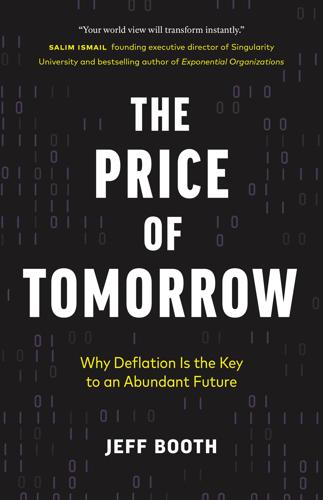
The Price of Tomorrow: Why Deflation Is the Key to an Abundant Future
by
Jeff Booth
Published 14 Jan 2020
Governments can change or manipulate this natural dynamic by increasing supply—printing more money, which lowers the value of their currency relative to others. Bitcoin attempts to change that dynamic by forever fixing supply at twenty-one million Bitcoins. In addition to that, it creates a peer-to-peer ledger without any central control: the blockchain. As an open, distributed ledger, it offers security and trust by verifying transactions with consensus instead of through a central authority. Although the blockchain that Bitcoin sits on has never been hacked, transactions are difficult, which has slowed widespread adoption as a payment alternative. In addition to that, storage of Bitcoins or other cryptocurrencies (wallets) has been prone to cyberattack or loss, creating a different form of risk.
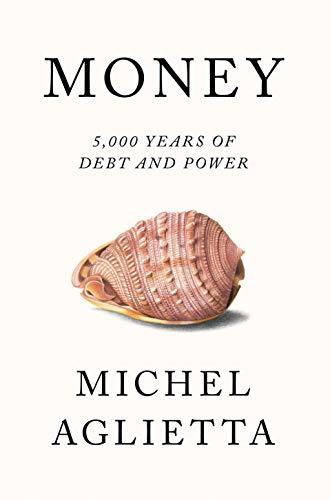
Money: 5,000 Years of Debt and Power
by
Michel Aglietta
Published 23 Oct 2018
The central clearing house holds the general ledger of payments. Taking inspiration from the technology that underpins bitcoin, the big banks have begun to explore the possibility of a structure that organises clearing and settlement anonymously through a computer network (a blockchain) that records, validates and updates transactions in real time. The blockchain is charged with showing who possesses what amount of money on any given date. Certainly, the banks’ idea is not to extend the decentralised settlement system to just anyone, but rather to keep it within a banking club. Such a banking club could be able to establish a clearing and settlement system without any central bank, with the aid of cryptography.
…
How can it be adapted to the gigantic sums involved in the transactions of globalised finance? If we know that final liquidity is inherent to the very concept of money, and it is not plugged into the settlement of debts, then how can the supply of money be determined? How would the system be regulated to limit the inflationist effect of the flow of payments accepted in the blockchain? Many questions will need to be resolved before entirely private clearing and settlement systems can produce the public good that is money. DO COMPLEMENTARY LOCAL CURRENCIES THREATEN THE OFFICIAL MONETARY SYSTEM? When civil society actors create local and complementary currencies, they are seeking common mediums that benefit communities.
…
See central banks; commercial banks; merchant banks; specific banks Baring Brothers, 214–15, 305 barter, 21, 28, 30, 45, 49–51, 76–77b Basel Financial Stability Forum, 389 Basel III negotiations, 388 Basic Law of 1948, 131, 366, 368 benchmarking, 26 Bentham, Jeremy, 166 Bernanke, Ben, 376 bill of exchange, 108, 116–25, 119f, 136, 144, 250, 252 billons, 193–4 bimetallism, 140n50, 199, 202, 217, 217n13, 245, 297 biodiversity, 170 BIS (Bank for International Settlements), 23, 80b, 158, 323, 324, 332, 335 bitcoin, 157, 158, 173–6 Bland–Allison Act of 1878, 217n12 blockchain, 175–6 Blum, Léon, 310 Bodin, Jean, 115 bond crisis (1994), 237 Braudel, Fernand, 83, 84, 120–1, 135, 145 Brazil crisis (1999), 243 Brender, Anton, 162n6 Breton, Stéphanie, 68 Bretton Woods system, 286, 296, 302, 311–29, 348, 350, 352–3, 386, 387, 389, 390, 391 bronze money, 98, 192 Bryan, William Jennings, 217n13 Bundesbank, 260–1 Burns, Arthur, 327 business cycles, and financial cycles (1976 Q1–2014 Q3), 333f C Caillé, Alain, 66 Cailleux, P., 111 capital, foundations of, 48 Capital Asset Pricing Model (CAPM), 25 capitalism birth and spread of, 135 end of golden age of, 146 first era of, 198 as global, 144 invention of, 116 monetary regulation under, 245–83 most fundamental tendency of, 149 private credit as source of rise of, 115 private monetary innovations as inherent to history of, 156 spirit of, 107 transformation of, 120–5, 204 vertical debts in, 62–6 carbon currency, 80b Cardoso, Fernando Henrique, 234 ‘cash in advance’ hypothesis, 29 Cechetti, Stephen, 335 cens, 107 centime, 112t central banks, 48, 49, 56, 65, 69, 74, 75, 80b, 126, 139, 141–3, 151, 154–5, 158, 160, 161–4, 177–8, 179, 245, 246–9, 283 centralisation, 137–8, 139, 142, 152, 155, 189, 201, 221, 246 Chicago Boys, 232 Chinese antiquity, 88–9 Chinese currency, 371–83 Chinese exchange policy, 374–7 Chinese exchange rate, 372–4, 378 Chinese hyperinflation, 230–1 Chinese management of yuan and accumulation of exchange reserves, 377–80 Chinese Yuan Hong Kong (CNH) market, 381 chrematism, 95, 96 Christian-Democratic Union, 130 cigarette currency, 222–3 Civilization and Capitalism (Braudel), 121 Clearing House Loan Certificates, 141 clearing houses, 138, 139, 141–2, 143 climate change, 70, 85, 100, 170, 179, 182, 357 Coeuré, Benoît, 367 Cohen, Benjamin J., 387n17 Coinage Act of 1792, 134 of 1834, 140n50 of 1873, 217 collective action, 14, 168, 175, 312, 366 commensurability, 32, 50, 51, 68, 83 commercial banks, 69, 211, 215, 226, 238, 250, 252, 272, 322 Committee of Twenty (C20), 327, 329, 345, 391 Commons/commons, 80b, 168n11, 174, 180, 183 common unit of account, 41–2, 79, 222 confidence.
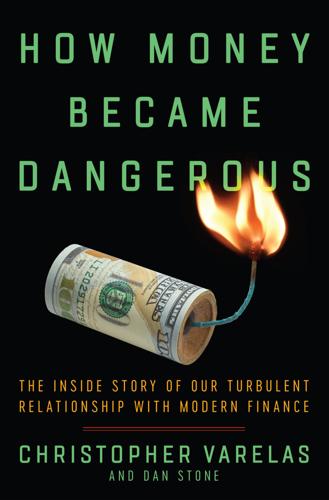
How Money Became Dangerous
by
Christopher Varelas
Published 15 Oct 2019
A lot of people believe that what will survive the crypto bubble will be the infrastructure, rather than many of the currencies themselves. Blockchain is a digital ledger originally created to record Bitcoin transactions, but it has since found a multitude of other valuable uses. Blockchain, as the infrastructure that allows the majority of cryptocurrencies to operate, is the shovel salesman, just like Equinix was for the internet, while the cryptocurrencies are the gold seekers or the startups. One use of Blockchain that will have a dramatic impact on wealth management and the way we look at value will be the ability to divide an asset into as many parts as desired and sell those to third parties.
…
accountability, 360, 362, 363, 368, 369 acquisitions, see mergers and acquisitions activist investors, 104, 106, 360 see also corporate raiders Adelson, Jay, 228, 240, 242, 244 Adult Video News (AVN) Awards, 218, 219 advertising, 294, 296, 298, 362 social media influencers and, 283, 294–96, 298 AEA, 182 aerospace and defense companies, 118, 124, 125, 137 Conquistadores del Cielo club and, 124–25, 146 “Last Supper” summit and, 124 see also Grumman Corporation; Martin Marietta; Northrop Corporation Aetna, 188 Airbnb, 246 air travel, 299–300 Albert, Mark, 94–95, 96–97 Alcatel, 202 algorithms, 23, 37, 242 All Things Considered, 349 Amateur Athletic Union, 274 Amazon, 233, 246, 292 American Express, 188 American Psycho, 144 American Toxxic Control, 155, 159, 168 Andonian, Nazareth, 16–19, 25–29, 31–36, 38–42 Andonian, Vahe, 16, 39–40 Anschutz, Philip, 212 anti-Semitism, 304 AOL, 237 Apollo Global Management, 165 Armstrong, Michael, 207, 208 Ashe, Danni, 226–27, 231–33, 244, 245 Aspen Institute, 210, 371 Aspin, Les, 124 asset division, 246 AT&T, 190, 196–97 Citi and, 197, 207, 208 IPO of, 197, 198, 207, 208 ATMs, 216–17, 246 Augustine, Norman, 124, 136 Avery, Al, 228, 240, 244 B-2 Stealth Bomber, 118, 136, 138 Bailes, Justin, 331, 332, 335, 344, 345 Bailey, Jeff, 154 bankers, 97, 358 author’s uncle John, 371–73 banks, 247, 259 ATMs at, 216–17, 246 Glass-Steagall legislation and, 189, 200 investment, going public, 52–53 local, managers of, 22 Bank of America: author at, 5, 7, 9–43, 111, 216–17, 285, 358 “five c’s of credit” in training program of, 13, 42 jewelry industry and, 5, 9–35 spreadsheets used at, 19–20, 24 Bank One, 196 Barbarians at the Gate (Burrough and Helyar), 144 Barss, Patchen, 233 B Corp, 105 Beach Boys, 178, 182 Bear Stearns, 118, 146, 188 Bell, Alexander Graham, 190 Bell Labs, 190 Bennett, Bruce, 331, 339 Bertelsmann, 170 Bibliowicz, Jessica, 196 Bieber, Justin, 296–97, 299 Big Brother, 302 Bitcoin, 245, 246, 308 Bizaardvark, 299 Black Monday, 37 Blockbuster, 160 Blockchain, 246 Blodget, Henry, 196, 207, 212, 215 Blyth & Co., 51 Boeing Company, 124 bonds, 50–51, 56, 77–78 high-yield (junk), 91, 93, 96, 97, 104 Salomon and, 50–51, 55–58, 62, 64, 67, 72, 74–76 Bonfire of the Vanities, The (Wolfe), 47, 116, 144 bonuses, see compensation Boob Cruise, 231 Booker, Cory, 340 Borde, Laurence (“Larry Bird”), 54, 55, 79, 203 Brannan, Sam, 230 Bruck, Connie, 93, 94 bubbles, 229, 244, 307, 362–63 crypto, 245–46 dotcom, 175, 211, 214, 228–31, 233–34, 236, 238, 240, 243, 244, 267, 322 education, 292 pension, 353–54 Budweiser, 162 Buffett, Warren, 275, 316, 324 Salomon Brothers and, 68, 75–76, 262–63 Businessweek, 68 cable industry, 96 Caesars Palace, 27–29 California Community Foundation, 347 California gold rush, 230 CalPERS (California Public Employees’ Retirement System), 335–36 Canal+, 170 Caporali, Renso, 119 Carpenter, Michael, 200–201 Carr, Michael, 118, 138, 145 Carter, Jimmy, 154 character, 13, 22–23, 34, 35, 40–43, 358 Chicago Daily Herald, 219 Chinatown, 150 Chrysler, Walter, 74 Cicero, 128 Citadel, The, 48 Citicorp-Travelers merger, 189, 253 Citigroup (Citi), 211, 214–15, 261, 315 AT&T and, 197, 207, 208 author at, 5, 199, 204–5, 211–12 bureaucracy and policies at, 203–4 creation of, 189 culture at, 209, 215, 264, 365–66 culture committee at (Project Passion), 204–6, 211, 264–65, 365–66 Lucent and, 200–201 Prince as CEO of, 208–10 TMT (technology, media, and telecom) group at, 5, 211–12, 253 Weill as CEO of, 188 Weill’s creation of financial supermarket model with, 189–90, 195, 196, 200, 209, 211 Weill’s resignation from, 208–9 Citron, Robert, 315–20, 324, 326, 343–45, 352, 367 Clinton, Bill, 189, 324 cloud, 225, 361 see also data centers Coachella, 292–93, 295, 296 CocaCola, 295 Cocktail, 355 college: admissions scandal, 291–92 financial aid, see student loans Colorado River, 162 COMDEX, 218 Comedy Central, 302 commerce: e-commerce, 232–33, 244, 245 physical world and, 247 CommScope, 201, 202 community and human contact, 233, 247, 307, 309, 358, 361 diminishment of, 216, 246–47 engagement with, 369–70 Compagnie Générale des Eaux, 169 compensation, 248–79, 361 and aligning incentives with investment horizons, 364 annual cycle of, 270–71 author’s bonuses, 248–51, 266–70 of CEOs, 275–76 and complexity and opacity of purpose, 260–61 contentment and, 268–70, 278–79 culture tied to, 205–6, 257–58, 264–65 and “having a number,” 251–53, 263–64, 274, 277, 278 reactions to bonus amounts, 256–59, 270 Salomon bonuses, 64, 248–51, 253–59, 262–63 talent and skills and, 261–62 transparency in, 260, 269, 270, 275, 361–62 CompuServe, 237, 241 computers, 38 algorithms, 23, 37, 242 Black Monday and, 37 spreadsheets, 19–23, 24, 37, 360 ConQuest, 221 Conquest of Happiness, The (Russell), 248 Conquistadores del Cielo, 124–25, 146 Consumer Electronics Show (CES), 217–19 Conway, Cathy, 109–12 Corbat, Michael, 315, 324 Corning Inc., 201 corporate raiders, 82, 84, 88, 89, 94, 96, 103–4, 360 as activist investors, 104, 106, 360 in Pretty Woman, 98, 100–102 see also hostile takeovers credit: five c’s of, 13, 42, 205 spreadsheets used for analysis in, 19–20, 24 worthiness, 22 credit cards, 233 in e-commerce, 232–33, 244, 245 Credit Suisse, 263–64, 273–74, 340 Crisanti, Jim, 203 cryptocurrencies, 245–46, 308 Culligan, 164–68, 182 currency(ies), 245–46 cryptocurrencies, 245–46, 308 phone minutes as, 245 Cutler, Carol, 207 Daily Stormer, 304 Danni’s Hard Drive, 226, 227, 231–33 data centers, 224–25, 227–28, 231 Equinix, 228, 230–31, 237–47 “naked woman in the server room” story and, 223–26, 232 security at, 225 Davis, Mark, 156–58, 165, 166, 221–22 DEA (Drug Enforcement Administration), 31–33, 34, 39, 40 Deasy, John, 351 DEC (Digital Equipment Corporation), 227–28 defense and aerospace companies, see aerospace and defense companies Defense Department, 124 Denham, Bob, 324 Denny’s, 154 Depression, Great, 51, 189 derivatives, 316–19, 324 de Vries, Peter, 81 Diamond, Neil, 321 diamond and gold wholesalers, see jewelry industry Diamond Club, 15 Dii Group, 213 Dimon, Jamie, 196, 197 Disney, 81–90, 85, 86, 111, 304 Eisner at, 88, 89, 109 Epcot Center, 86 films, 88, 102, 148–49 Steinberg’s hostile takeover attempt, 81–84, 86–91, 98, 102–4, 111 Touchstone Pictures, 88, 102 Disney, Roy, 85 Disney, Walt, 84–86, 87, 103, 112 Disney Channel, 299, 301, 302 Disneyland, 84, 85, 103, 112, 148, 288–90, 314 author’s career at, 4, 5, 10, 11–13, 40, 45, 61, 71, 81–85, 89–90, 106–12, 148, 158, 289, 290 Café Orleans at, 81, 106–12, 289 in Pretty Woman, 106 privilege and, 289–90 Disney World, 85–86 Dominguez, Bernardo, 132 Dominica, 285, 286 dotcom bubble, 175, 211, 214, 228–31, 233–34, 236, 238, 240, 243, 244, 267, 322 Doughty, Caitlin, 301 Douglas, Michael, 98 Drexel Burnham Lambert, 91–96, 188 author’s offer from, 91, 93, 94–95 bankruptcy of, 96 Milken at, 91–94 Ducasse, Alain, 168, 169 Dunkin’ Donuts, 294 earthquake, Whittier Narrows, 34–35 eBay, 233 Ebbers, Bernie, 212, 238 e-commerce, 232–33, 244, 245 Economic Consequences of the Peace, The (Keynes), 280 Economist, 245 Eisner, Michael, 88, 89, 109 Elmassian, George, 25, 31, 32, 34, 38 Elmassian, Richard, 25, 31–33, 38 Enron, 171, 177 Epcot Center, 86 Equinix, 228, 230–31, 237–47 Escobar, Pablo, 39 Euripides, 9 Evoqua, 182 exchange-traded funds (ETFs), 105 F9 mistake, 127 Facebook, 294, 305 Family Ties, 97–98 Fargo, William, 230 Federal Reserve, 370 FedEx, 127 Feuerstein, Don, 57 FICO score, 22 Finance Leaders Fellowship program, 371 financial crisis of 2008, 1–2, 7, 76, 211, 215, 259, 307 Equinix and, 242 financial supermarkets and, 211 see also Great Recession financial supermarkets, 204, 214–15, 361 financial crisis and, 211 Weill’s model of, with Citi, 189–90, 195, 196, 200, 209, 211 financial system, financial industry, 6, 328–30 causes of society’s dysfunctional relationship with money, 359–63 citizens’ disconnection from government finance, 328–29, 343–44, 351, 353, 362 clashes sparked by financial unrest and collapse, 355–58 compensation in, see compensation complexity of, 260–61, 277 estimated worth of financial instruments in the world, 209 net financial burden, 329–30 people’s feelings about working in, 277 preppers and, 306 see also Wall Street financial system, reform of, 363–64 accountability for public officials, 369 action items for banking system and investment management, 364–66 action items for each of us, 368–70 action items for government, 366–68 changing compensation structures to align incentives with investment horizons, 364 community engagement, 369–70 creating federal-level oversight or review board for pension systems, 366–67 creating independent review processes, 364–65 education in financial and economic matters, 368 forming culture or values committees, 365–66 requiring finance background for treasurers and other financial officers, 367 simplicity of regulations, 367–68 Fiorina, Carly, 190, 194–95 Fitzgerald, F.

Your Computer Is on Fire
by
Thomas S. Mullaney
,
Benjamin Peters
,
Mar Hicks
and
Kavita Philip
Published 9 Mar 2021
One of the most currently overhyped technologies in the computer industry is the virtual and distributed trust infrastructure known as the blockchain. This technology is attracting a massive amount of attention (and a slightly less massive amount of investment capital), and its financial and technological viability is entirely dependent on the mistaken assumption that the computational resources provided by the Cloud are essentially free—or will eventually be free in some unspecified and indeterminate future. This ignores the fact that the only significant implementation of the blockchain, which is the virtual cryptocurrency Bitcoin, is deliberately and irredeemably energy-inefficient.
…
By design it is an almost infinite sink for computer power and, by extension, coal, oil, water, and uranium.42 Already the Bitcoin network, which does not and cannot provide even basic functional financial services, is one of the largest consumers of computer power on the planet, with an annual appetite for electricity approaching that of the entire nation of Denmark. There are multiple ways to implement blockchain technology, of which the proof-of-work algorithm used by Bitcoin is by far the least desirable, at least from an environmental point of view. For anyone cognizant of the relationship between virtual and physical infrastructure, the fact that Bitcoin is not only not regulated but rather actively encouraged is astonishing. 4.
…
See also Accent, bias algorithms, 121, 127–128 antisemitic, 265 class, 4–6, 88, 136, 161–162, 174, 184, 265 class in India, 299, 302–303, 308 data, 66, 205 design-value, 81 discrimination (see Discrimination) facial recognition, 118–119 hiring, 256–257, 260–263, 267 implicit, 257, 262 societal, 152, 179–180 speech technology, 180–181, 190–191, 193 technical training, 253–254, 265 technology, 214, 218, 232 unconscious, 6, 256 Big tech, 12, 87, 191, 254–255, 257 Biometrics, 121, 128–129, 208 Bioshock, 237–238 Bioshock Infinite, 238–239 Bitcoin, 5, 44–45 BITNET, 323–324 Black. See African American(s) Black Girls Code, 255, 263 Block switching, 83 Blockchain, 44–45 Body economic, 79 national, 77–78, 86, 86t Boeing, 19–20, 23 MCAS, 19 737 Max tragedies, 19–20 Bolivia, 45 Bonaparte, Napoleon, 39 Borsdorf, Johannes H., 168–169 Boston Marathon Bombing, 120 Business Process Management, 308 Brandenburg v. Ohio, 373 Brazil, 103–104, 234, 324 BSD (programming language), 273 Bug.

Fancy Bear Goes Phishing: The Dark History of the Information Age, in Five Extraordinary Hacks
by
Scott J. Shapiro
A Bitcoin address is an ugly string of alphanumeric characters, such as 1BvBMSEYstWetqTFn5Au4m4GFg7xJaNVN2. A Bitcoin address reveals how much Bitcoin is associated with that address. That information is stored on a public ledger known as a blockchain. Thus, when someone tries to pay with Bitcoin, those who maintain the blockchain check it to see whether the sender has enough Bitcoin. If so, the transaction is listed on the blockchain, so that future sellers will know that the Bitcoins associated with that address have been transferred to a new Bitcoin address. Everyone who has access to an internet browser can tell how much money is associated with a Bitcoin address.
…
Everyone who has access to an internet browser can tell how much money is associated with a Bitcoin address. It is public information. But the identity of the owner of that address is not public. I may own the Bitcoins at 1BvBMSEYstWetqTFn5Au4m4GFg7xJaNVN2, but the information that I’m the owner is not posted on the blockchain. The identity of Bitcoin owners would be anonymous, except for one wrinkle: the vast majority of Bitcoin owners buy their currency from cryptocurrency exchanges. Exchanges such as Coinbase and Crypto allow people to use dollars or other state-sponsored fiat money (euros, shekels, lires) to buy cryptocurrency. These exchanges are subject to special regulations to prevent money laundering, known as KYC, for “know your customer.”

Designing Web APIs: Building APIs That Developers Love
by
Brenda Jin
,
Saurabh Sahni
and
Amir Shevat
Published 28 Aug 2018
Slack also provides a WebSocket-based Real Time Messaging API to developers so that they can receive events from Slack in real time and send messages as users. Similarly, Trello uses WebSockets to push changes made by other people down from servers to brows‐ ers listening on the appropriate channels, and Blockchain uses its WebSocket API to send real-time notifications about new transac‐ tions and blocks. WebSockets can enable full-duplex communication (server and cli‐ ent can communicate with each other simultaneously) at a low over‐ head. Additionally, they are designed to work over port 80 or 443, enabling them to work well with firewalls that might block other ports.
…
Table 2-3 summarizes the differences between the various eventdriven API options. Table 2-3. Comparison of event-driven APIs What? Example services Pros 24 | WebHooks Event notification via HTTP callback Slack, Stripe, GitHub, Zapier, Google WebSockets Two-way streaming connection over TCP Slack, Trello, Blockchain HTTP Streaming Long-lived connection over HTTP Twitter, Facebook • Easy server-to-server communication • Two-way streaming communication • Can stream over simple HTTP • Uses HTTP protocol • Native browser support • Native browser support • Can bypass firewalls • Can bypass firewalls Chapter 2: API Paradigms Cons When to use?

Human Compatible: Artificial Intelligence and the Problem of Control
by
Stuart Russell
Published 7 Oct 2019
And it will do that not because it wants to stay alive but because it is pursuing whatever objective we gave it and knows that it will fail if it is switched off. There are some systems being contemplated that really cannot be switched off without ripping out a lot of the plumbing of our civilization. These are systems implemented as so-called smart contracts in the blockchain. The blockchain is a highly distributed form of computing and record keeping based on encryption; it is specifically designed so that no datum can be deleted and no smart contract can be interrupted without essentially taking control of a very large number of machines and undoing the chain, which might in turn destroy a large part of the Internet and/or the financial system.
…
See intelligent agent agent program, 48 “AI Researchers on AI Risk” (Alexander), 153 Alciné, Jacky, 60 Alexander, Scott, 146, 153, 169–70 algorithms, 33–34 Bayesian networks and, 275–77 Bayesian updating, 283, 284 bias and, 128–30 chess-playing, 62–63 coding of, 34 completeness theorem and, 51–52 computer hardware and, 34–35 content selection, 8–9, 105 deep learning, 58–59, 288–93 dynamic programming, 54–55 examples of common, 33–34 exponential complexity of problems and, 38–39 halting problem and, 37–38 lookahead search, 47, 49–50, 260–61 propositional logic and, 268–70 reinforcement learning, 55–57, 105 subroutines within, 34 supervised learning, 58–59, 285–93 Alibaba, 250 AlphaGo, 6, 46–48, 49–50, 55, 91, 92, 206–7, 209–10, 261, 265, 285 AlphaZero, 47, 48 altruism, 24, 227–29 altruistic AI, 173–75 Amazon, 106, 119, 250 Echo, 64–65 “Picking Challenge” to accelerate robot development, 73–74 Analytical Engine, 40 ants, 25 Aoun, Joseph, 123 Apple HomePod, 64–65 “Architecture of Complexity, The” (Simon), 265 Aristotle, 20–21, 39–40, 50, 52, 53, 114, 245 Armstrong, Stuart, 221 Arnauld, Antoine, 21–22 Arrow, Kenneth, 223 artificial intelligence (AI), 1–12 agent (See intelligent agent) agent programs, 48–59 beneficial, principles for (See beneficial AI) benefits to humans of, 98–102 as biggest event in human history, 1–4 conceptual breakthroughs required for (See conceptual breakthroughs required for superintelligent AI) decision making on global scale, capability for, 75–76 deep learning and, 6 domestic robots and, 73–74 general-purpose, 46–48, 100, 136 global scale, capability to sense and make decisions on, 74–76 goals and, 41–42, 48–53, 136–42, 165–69 governance of, 249–53 health advances and, 101 history of, 4–6, 40–42 human preferences and (See human preferences) imagining what superintelligent machines could do, 93–96 intelligence, defining, 39–61 intelligent personal assistants and, 67–71 limits of superintelligence, 96–98 living standard increases and, 98–100 logic and, 39–40 media and public perception of advances in, 62–64 misuses of (See misuses of AI) mobile phones and, 64–65 multiplier effect of, 99 objectives and, 11–12, 43, 48–61, 136–42, 165–69 overly intelligent AI, 132–44 pace of scientific progress in creating, 6–9 predicting arrival of superintelligent AI, 76–78 reading capabilities and, 74–75 risk posed by (See risk posed by AI) scale and, 94–96 scaling up sensory inputs and capacity for action, 94–95 self-driving cars and, 65–67, 181–82, 247 sensing on global scale, capability to, 75 smart homes and, 71–72 softbots and, 64 speech recognition capabilities and, 74–75 standard model of, 9–11, 13, 48–61, 247 Turing test and, 40–41 tutoring by, 100–101 virtual reality authoring by, 101 World Wide Web and, 64 “Artificial Intelligence and Life in 2030” (One Hundred Year Study on Artificial Intelligence), 149, 150 Asimov, Isaac, 141 assistance games, 192–203 learning preferences exactly in long run, 200–202 off-switch game, 196–200 paperclip game, 194–96 prohibitions and, 202–3 uncertainty about human objectives, 200–202 Association for the Advancement of Artificial Intelligence (AAAI), 250 assumption failure, 186–87 Atkinson, Robert, 158 Atlas humanoid robot, 73 autonomous weapons systems (LAWS), 110–13 autonomy loss problem, 255–56 Autor, David, 116 Avengers: Infinity War (film), 224 “avoid putting in human goals” argument, 165–69 axiomatic basis for utility theory, 23–24 axioms, 185 Babbage, Charles, 40, 132–33 backgammon, 55 Baidu, 250 Baldwin, James, 18 Baldwin effect, 18–20 Banks, Iain, 164 bank tellers, 117–18 Bayes, Thomas, 54 Bayesian logic, 54 Bayesian networks, 54, 275–77 Bayesian rationality, 54 Bayesian updating, 283, 284 Bayes theorem, 54 behavior, learning preferences from, 190–92 behavior modification, 104–7 belief state, 282–83 beneficial AI, 171–210, 247–49 caution regarding development of, reasons for, 179 data available for learning about human preferences, 180–81 economic incentives for, 179–80 evil behavior and, 179 learning to predict human preferences, 176–77 moral dilemmas and, 178 objective of AI is to maximize realization of human preferences, 173–75 principles for, 172–79 proofs for (See proofs for beneficial AI) uncertainty as to what human preferences are, 175–76 values, defining, 177–78 Bentham, Jeremy, 24, 219 Berg, Paul, 182 Berkeley Robot for the Elimination of Tedious Tasks (BRETT), 73 Bernoulli, Daniel, 22–23 “Bill Gates Fears AI, but AI Researchers Know Better” (Popular Science), 152 blackmail, 104–5 blinking reflex, 57 blockchain, 161 board games, 45 Boole, George, 268 Boolean (propositional) logic, 51, 268–70 bootstrapping process, 81–82 Boston Dynamics, 73 Bostrom, Nick, 102, 144, 145, 150, 166, 167, 183, 253 brains, 16, 17–18 reward system and, 17–18 Summit machine, compared, 34 BRETT (Berkeley Robot for the Elimination of Tedious Tasks), 73 Brin, Sergey, 81 Brooks, Rodney, 168 Brynjolfsson, Erik, 117 Budapest Convention on Cybercrime, 253–54 Butler, Samuel, 133–34, 159 “can’t we just . . .” responses to risks posed by AI, 160–69 “. . . avoid putting in human goals,” 165–69 “. . . merge with machines,” 163–65 “. . . put it in a box,” 161–63 “. . . switch it off,” 160–61 “. . . work in human-machine teams,” 163 Cardano, Gerolamo, 21 caring professions, 122 Chace, Calum, 113 changes in human preferences over time, 240–45 Changing Places (Lodge), 121 checkers program, 55, 261 chess programs, 62–63 Chollet, François, 293 chunking, 295 circuits, 291–92 CNN, 108 CODE (Collaborative Operations in Denied Environments), 112 combinatorial complexity, 258 common operational picture, 69 compensation effects, 114–17 completeness theorem (Gödel’s), 51–52 complexity of problems, 38–39 Comprehensive Nuclear-Test-Ban Treaty (CTBT) seismic monitoring, 279–80 computer programming, 119 computers, 32–61 algorithms and (See algorithms) complexity of problems and, 38–39 halting problem and, 37–38 hardware, 34–35 intelligent (See artificial intelligence) limits of computation, 36–39 software limitations, 37 special-purpose devices, building, 35–36 universality and, 32 computer science, 33 “Computing Machinery and Intelligence” (Turing), 40–41, 149 conceptual breakthroughs required for superintelligent AI, 78–93 actions, discovering, 87–90 cumulative learning of concepts and theories, 82–87 language/common sense problem, 79–82 mental activity, managing, 90–92 consciousness, 16–17 consequentialism, 217–19 content selection algorithms, 8–9, 105 content shortcomings, of intelligent personal assistants, 67–68 control theory, 10, 44–45, 54, 176 convolutional neural networks, 47 cost function to evaluate solutions, and goals, 48 Credibility Coalition, 109 CRISPR-Cas9, 156 cumulative learning of concepts and theories, 82–87 cybersecurity, 186–87 Daily Telegraph, 77 decision making on global scale, 75–76 decoherence, 36 Deep Blue, 62, 261 deep convolutional network, 288–90 deep dreaming images, 291 deepfakes, 105–6 deep learning, 6, 58–59, 86–87, 288–93 DeepMind, 90 AlphaGo, 6, 46–48, 49–50, 55, 91, 92, 206–7, 209–10, 261, 265, 285 AlphaZero, 47, 48 DQN system, 55–56 deflection arguments, 154–59 “research can’t be controlled” arguments, 154–56 silence regarding risks of AI, 158–59 tribalism, 150, 159–60 whataboutery, 156–57 Delilah (blackmail bot), 105 denial of risk posed by AI, 146–54 “it’s complicated” argument, 147–48 “it’s impossible” argument, 149–50 “it’s too soon to worry about it” argument, 150–52 Luddism accusation and, 153–54 “we’re the experts” argument, 152–54 deontological ethics, 217 dexterity problem, robots, 73–74 Dickinson, Michael, 190 Dickmanns, Ernst, 65 DigitalGlobe, 75 domestic robots, 73–74 dopamine, 17, 205–6 Dota 2, 56 DQN system, 55–56 Dune (Herbert), 135 dynamic programming algorithms, 54–55 E. coli, 14–15 eBay, 106 ECHO (first smart home), 71 “Economic Possibilities for Our Grandchildren” (Keynes), 113–14, 120–21 The Economic Singularity: Artificial Intelligence and the Death of Capitalism (Chace), 113 Economist, The, 145 Edgeworth, Francis, 238 Eisenhower, Dwight, 249 electrical action potentials, 15 Eliza (first chatbot), 67 Elmo (shogi program), 47 Elster, Jon, 242 Elysium (film), 127 emergency braking, 57 enfeeblement of humans problem, 254–55 envy, 229–31 Epicurus, 219 equilibrium solutions, 30–31, 195–96 Erewhon (Butler), 133–34, 159 Etzioni, Oren, 152, 157 eugenics movement, 155–56 expected value rule, 22–23 experience, learning from, 285–95 experiencing self, and preferences, 238–40 explanation-based learning, 294–95 Facebook, 108, 250 Fact, Fiction and Forecast (Goodman), 85 fact-checking, 108–9, 110 factcheck.org, 108 fear of death (as an instrumental goal), 140–42 feature engineering, 84–85 Fermat, Pierre de, 185 Fermat’s Last Theorem, 185 Ferranti Mark I, 34 Fifth Generation project, 271 firewalling AI systems, 161–63 first-order logic, 51, 270–72 probabilistic languages and, 277–80 propositional logic distinguished, 270 Ford, Martin, 113 Forster, E.

Stakeholder Capitalism: A Global Economy That Works for Progress, People and Planet
by
Klaus Schwab
Published 7 Jan 2021
Norton, 2011, https://drodrik.scholar.harvard.edu/publications/globalization-paradox-democracy-and-future-world-economy” 21 “The End of History and the Last Man, Francis Fukuyama, Penguin Books, 1993”. 22 “The Rise and Fall of Hungary,” Zsolt Darvas, The Guardian, October 2008, https://www.theguardian.com/business/blog/2008/oct/29/hungary-imf. 23 “How Rotterdam Is Using Blockchain to Reinvent Global Trade,” Port of Rotterdam, September 2019, https://www.portofrotterdam.com/en/news-and-press-releases/how-rotterdam-is-using-blockchain-to-reinvent-global-trade. 24 Interview with William and Winston Utomo by Peter Vanham, Jakarta, Indonesia, October 16, 2020. 6 Technology A Changing Labor Market The press release touted a most remarkable headline: “Denmark in the world's top 10 for robots.”1 The organization behind the release was not a Danish tech firm, media outlet, or politician.
…
Small, open economies such as Singapore, Denmark, the Netherlands, Belgium, who often trade goods worth well over 100 percent of their GDP, understand they live or die by their ability to adapt to the latest technologies driving globalization. If they invest in these technologies, or the skills to harness them, they can come out on the winning side. The Port of Rotterdam in this case is a good example. Understanding digital technologies such as blockchain will only intensify in their applications, the Port authority invested heavily in this technology.23 It makes Rotterdam now possibly the most technologically advanced port in Europe, giving it and its workers a digital edge over its competitors in cities like Hamburg and Antwerp. In the future, it won't just be physical trade that gets affected by technology.

Stakeholder Capitalism: A Global Economy That Works for Progress, People and Planet
by
Klaus Schwab
and
Peter Vanham
Published 27 Jan 2021
Norton, 2011, https://drodrik.scholar.harvard.edu/publications/globalization-paradox-democracy-and-future-world-economy” 21 “The End of History and the Last Man, Francis Fukuyama, Penguin Books, 1993”. 22 “The Rise and Fall of Hungary,” Zsolt Darvas, The Guardian, October 2008, https://www.theguardian.com/business/blog/2008/oct/29/hungary-imf. 23 “How Rotterdam Is Using Blockchain to Reinvent Global Trade,” Port of Rotterdam, September 2019, https://www.portofrotterdam.com/en/news-and-press-releases/how-rotterdam-is-using-blockchain-to-reinvent-global-trade. 24 Interview with William and Winston Utomo by Peter Vanham, Jakarta, Indonesia, October 16, 2020. 6 Technology A Changing Labor Market The press release touted a most remarkable headline: “Denmark in the world's top 10 for robots.”1 The organization behind the release was not a Danish tech firm, media outlet, or politician.
…
Small, open economies such as Singapore, Denmark, the Netherlands, Belgium, who often trade goods worth well over 100 percent of their GDP, understand they live or die by their ability to adapt to the latest technologies driving globalization. If they invest in these technologies, or the skills to harness them, they can come out on the winning side. The Port of Rotterdam in this case is a good example. Understanding digital technologies such as blockchain will only intensify in their applications, the Port authority invested heavily in this technology.23 It makes Rotterdam now possibly the most technologically advanced port in Europe, giving it and its workers a digital edge over its competitors in cities like Hamburg and Antwerp. In the future, it won't just be physical trade that gets affected by technology.
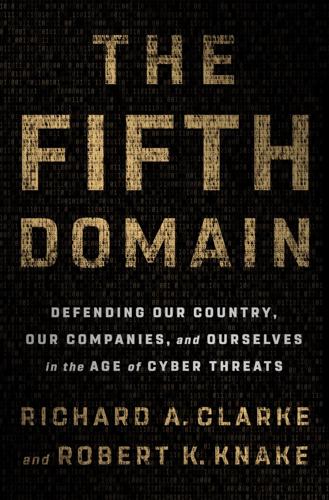
The Fifth Domain: Defending Our Country, Our Companies, and Ourselves in the Age of Cyber Threats
by
Richard A. Clarke
and
Robert K. Knake
Published 15 Jul 2019
Automation and artificial intelligence have the potential to erase much of the attacker’s advantage. Yet, at the same time, attackers are looking at how they can use these tools as well. Quantum computing could provide both impossible-to-break protection for data and the ability to crack all current forms of encryption. Blockchain, which many technologists think could lead to fundamentally more secure protection of data, has for the time being found its biggest use in cryptocurrency, a technology that is decidedly giving an advantage to attackers by allowing criminals to move their ill-gotten gains around anonymously. These technology trends could shift the balance in either direction.
…
There they could deploy something else easily procured on the dark web: software that finds and encrypts all data stored on a network, including emails, Word and Excel documents, Salesforce, Oracle, SAP files, everything. Then comes the ransom offer. Want the key to unlock everything we encrypted? Then send us one hundred thousand dollars’ worth of Bitcoin. Although Bitcoin was supposed to be a safe way of doing business because it involved a publicly viewable blockchain record, it has actually turned out to be easy to use it to hide money flows. Bitcoin is the coin of the realm when it comes to ransomware, allegedly very difficult to trace. Faramarz Savandi and Mohammad Mansouri knew how to do it. The two Iranians wrote their own version of ransomware software and it became known as the SamSam kit.
…
Ackerman, Bob, 68–69 Active Cyber Defense Certainty Act, 99 actuators, 66–67, 83 advanced persistent threat (APT), 33, 39, 42–44, 46, 74, 76, 77, 148, 299 Aetna, 40–42, 133 Air Force, U.S., 50, 102, 166, 183 Aitel, Dave, 35–36 Akamai, 71, 87, 119 Alexander, Keith, 43, 93–95, 105, 161, 246 Alliance for Securing Democracy (ASD), 223, 224 Alperovitch, Dmitri, 33–35, 40 Amazon, 73–77, 98, 153, 213, 215, 276 American Morning, 155 Amin, Rohan, 49–52 Amoroso, Ed, 74, 75, 78 antivirus software, 22–23, 35–36, 53, 65, 70, 244, 251, 288 Apple, 8, 24, 124, 138, 153 apprenticeship programs, 152–53 Archuleta, Katherine, 175, 176 Argo, 85, 104 Army, U.S., 150, 170, 183, 195 artificial intelligence (AI), 53, 80–82, 144, 153, 239–52, 280 in cyber warfare, 239–41 data and, 247–48, 251 defensive use of, 244–48, 252, 263 machine learning, 42, 53, 80, 81, 243–52, 263–64, 304 offensive use of, 248–52 quantum computing and, 263–64 Assange, Julian, 23–24, 277 AT&T, 74, 119, 120, 265–66 authentication, 42, 129–41, 299 multifactor, 46, 129, 131–34, 137, 304 ReallyU, 138–40, 306 two-factor, 129, 131, 132, 285, 287, 308 see also identity authorization, 133 Authorization for Use of Military Force (AUMF), 196 Avery, Heidi, 110 backdoors, 23, 197, 299 backing up data, 127, 291–92 Badin, Dmitriy Sergeyevich, 28 Banga, Ajay, 152, 153 Bank of America, 9, 38, 85, 136, 284 banks, bank accounts, 8–9, 27, 38, 39, 85–87, 91, 94, 115, 119, 132, 133, 136, 137, 284, 286–87, 292–93 Barksdale, Jim, 33 Barlow, John Perry, 207–10 Benioff, Marc, 75 Bennett, Corey, 97 Better Identity Coalition, 136 Bezos, Jeff, 73 Bhalotra, Sameer, 134–36 biometrics, 129–30, 137, 138 Bitcoin, 18, 125, 126, 277, 289 Black Hat Briefings, 49, 73, 102 blacklists, 35–36, 244, 245 blackout of 2003, 155–57 blockchain, 6, 126 Blumenthal, Richard, 233 Boeing, 37, 79–80 Bohr, Niels, 253 Bolton, John, 97 Booz Allen Hamilton, 40, 170, 189 Border Gateway Protocol (BGP), 78, 118–20, 299 botnets, 73, 300 Bottoms, Keisha, 126 Bra-Ket, 258, 259 breach disclosure, 115–16 Brennan, John, 110 Britain, 17–18, 25, 96, 211–12, 220–21 Brown, Jerry, 117 Budapest Convention, 212–13, 216 Bush, George H.

Deep Medicine: How Artificial Intelligence Can Make Healthcare Human Again
by
Eric Topol
Published 1 Jan 2019
While many have pronounced the end of privacy, that simply will not work for medical data. The privacy and security of your data relies on its decentralization from massive server farms, the principal target of cyberthieves, to the smallest number possible—one person or a family unit being ideal—stored in a private cloud or blockchain platform. We’ve seen how every EHR has abundant mistakes that are perpetuated from one doctor visit to another, no less that we all have many different EHRs from all our different clinical encounters. And even if they were accurate, remember, too, that EHRs were designed for billing purposes, not to be a comprehensive resource of information about the individual.
…
I’ve argued, along with colleagues, that owning your medical data should be a civil right.43 While I maintain that is the desired end goal and will likely be an inevitable reality someday in the United States, we can’t wait decades for that to happen if we want to achieve the virtual medical coach’s full potential. There are many countries around the world that have this configured appropriately. Take the little post-Soviet nation Estonia, profiled in the New Yorker, as “the digital republic:” “A tenet of the Estonian system, which uses a blockchain platform to protect data privacy and security, is that an individual owns all information recorded about him or her.”44 No one can even glance at a person’s medical data without a call from the system overseers inquiring why it is necessary. The efficiencies of Estonia’s health informatics system, in contrast to that of the United States, are striking, including an app for paramedics that provides information about patients before reaching their home and advanced telemedicine capabilities with real-time vital sign monitoring (with AI algorithms for interpretation) setting up doctoring from a distance and the avoidance of adverse drug-drug interactions.
…
See Accelerating Therapeutics for Opportunities in Medicine Atomwise, 219 atrial fibrillation (AF), 25 ECGs detecting, 60, 65–67, 153–154 strokes and, 65–66 audio generation Lyrebird and, 100 truth, blurring of, and, 100 augmented individualized medical support (AIMS), 145 augmented microscopy, 229 Auris Health, 161 autism, genomics and, 211 automated science, 229–231 availability bias, 46 Avati, Anand, 187 Awdish, Rana, 306–307 Babylon Health, 265 backpropagation, 70 (table) Hinton and, 72, 77, 93 neuroscience and, 223 Baicker, Katherine, 193 Bayes’s theorem, 34, 43 Bayesian network, 9 Bejnordi, Babak, 127 BenevolentAI, 217–218, 220–221 Bezos, Jeff, 256 bias AI Now Institute on, 99 availability, 46 cognitive, 27, 45–49 confirmation, 27, 49 criminal justice and, 98 diversity and, 99 gender and, 97, 99 image recognition and, 97–98 NamePrism and, 98 race and, 98–99 Wikipedia and, 99 Big Data, 9 biohybrid computers, 227 biomarkers, 181–182 depression and, 169 (fig.), 171–174, 175 (fig.), 180–181 PTSD and, 174–175 black box problem, 97 accountability and, 96 AI Now Institute on, 95 Deep Dream and, 96 Deep Patient and, 95 Domingos on, 95 medical imaging and, 96 blockchain, medical data and, 275 Blue Cross Blue Shield Association, 200–201 Bonnefon, Jean-Francois, 104–105 Bostrom, Nick, 110 brain cancer, 117 genomics and, 214 molecular diagnostics and, 128–129 brain-wave monitoring, depression and, 174 breast cancer, misdiagnosis and, 126–127 breathing tubes, machine vision and, 196 Brooks, David, 307 Bryan, Nick, 121 Brynjolfsson, Erik, 107 Budner, Pascal, 180 Buoy Health, 51 burnout, 18, 30, 285, 288–289 Butterfly Network, 154 C. diff.
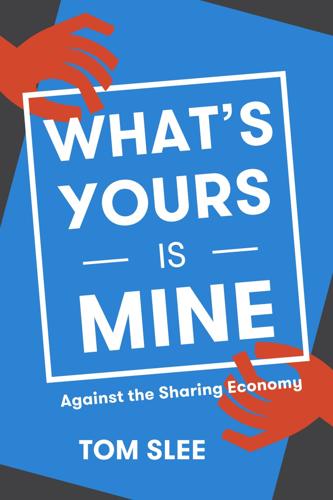
What's Yours Is Mine: Against the Sharing Economy
by
Tom Slee
Published 18 Nov 2015
Neal Gorenflo of non-profit Shareable writes that the theme “brought the elephant in everybody’s room to the fore—the gaping contradiction between the utopian possibilities and the hyper-capitalist realities of the sharing economy.” 23 If the newly-skeptical OuiShare attendees are going to find a way to convert the Sharing Economy into something useful, something that actually delivers on the promise of community and human-scale exchange, it must leave aside its identification with technology. There are few signs that it will do so; Gorenflo reports that the “blockchain” technology underlying Bitcoin is the new thing: “Everybody was talking about the blockchain from keynotes to side conversations.” To look for a technical fix, a designed-in mechanism for solving social problems, will only end up going down the same path. Bitcoin itself has already cycled through the familiar trajectory of rebellious alternative, promising a currency independent of the state, through to a venture-capital-funded investment vehicle in which 0.1% of the participants own 50% of the coins.
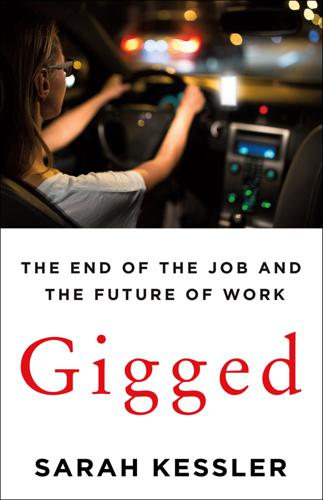
Gigged: The End of the Job and the Future of Work
by
Sarah Kessler
Published 11 Jun 2018
Voting could take place electronically, which would make it faster. Marketing theoretically would be cheaper using social media and digital advertising. The digital infrastructure for a ride-hailing app or a task marketplace, unlike a brick-and-mortar building, could be shared between several different companies. And the emerging blockchain technology, the decentralized ledger-keeping system behind the success of Bitcoin, promises to make transactions between people easier and less costly by making them incredibly secure and transparent without intermediaries. Still, Trebor was often asked: Could a self-funded cooperative really compete with venture-backed startups like Uber?
…
Accenture (professional services company) AFL AFL-CIO Airbnb (hospitality service) Amazon net sales See also Mechanical Turk Arise (customer service company) Artsicle (art rental service) A-Ryde (ride-hailing app) Aspen Institute Atlantic, The (magazine) Attenborough, David automated cars automation baby boom generation Backchannel (tech website) Bahá’í BBS (bulletin board system) Belsky, Scott Bernstein, Michael Better Business Bureau Bezos, Jeff Big Brother (reality television program) Bitcoin Black Car Fund blockchain technology Bloomberg (magazine) Bloomberg, Michael Borzi, Phyllis C. Bravo Brio Restaurant Group Brustein, AJ Bureau of Labor Statistics Burton, Diane Bush, Jeb Camp, Garrett Campbell, Harry Care.com (marketplace for independent caregivers) CB Insights Chartered Institute of Personnel and Development, The Chia, Stan churn (customer attrition) Clark, Shelby cleaning services churn (customer attrition) See Handy; Homejoy; Managed by Q Clinton, Bill Clinton, Hillary Clinton Global Initiative collective action.
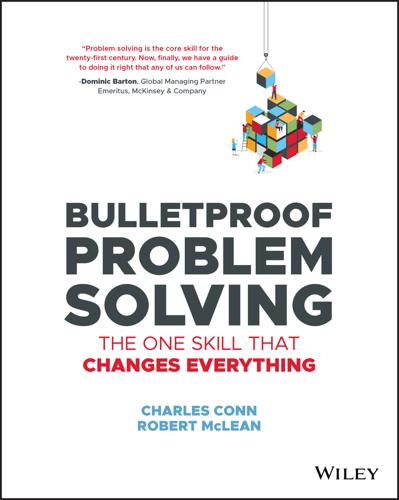
Bulletproof Problem Solving
by
Charles Conn
and
Robert McLean
Published 6 Mar 2019
Make a forecast of something you're interested in. It could be the economy, fashion, sports, or entertainment. Set out what you have to believe for the forecast to be true. Then ask whether it's likely to happen. Check out fivethirtyeight.com, where they do this for a living. The blockchain is now 10 years old and a promising technology for smart contracts and governance. Draw out the diffusion curve for blockchain and explain how you validated your assumptions. Take a business plan in a tech venture or social enterprise you have seen and do a knock‐out analysis, followed by a set of questions to the entrepreneur about what you have to believe for success.

Cashing Out: Win the Wealth Game by Walking Away
by
Julien Saunders
and
Kiersten Saunders
Published 13 Jun 2022
It’s time to let go of that narrative. Tech entrepreneurs and digitally savvy people understand the moment we’re in. They know the internet has made it easier than ever before to earn money, and they’re taking full advantage of these advances in technology to build life-changing wealth every single day. Whether it’s blockchain technology, cryptocurrency, NFTs, or virtual reality, the tech savvy among us aren’t waiting to explore the future of wealth, they’re creating it. Ways to Make Your Own Money Today, there are thousands of ways you can stop waiting on your boss to promote you and, instead, take the reins to your own life to earn money outside your normal 9-to-5.
…
A B C D E F G H I J K L M N O P Q R S T U V W X Y Z A Abrams, Stacey, 133 acorns.com, 131 actively managed funds, 160, 166, 171 advertising, exposure to, 210 affiliate marketing, 124, 136 Ally Bank, 167 Amazon, 137 Amazon Fresh, 131 American Dream, 128, 211 American Psychological Association (APA), 199 anticipation of rewards, 194 arbitrage (flipping goods), 134–35 The Art of the Sale (Broughton), 138 attunement, emotional and conversations about debt, 195, 196 as dance (interactive pattern), 189–90 dynamic state of, 198 and pause button in conversations, 203 and reframing practice of saving, 193 and scheduling conversations, 202 See also couples audiobooks, 127 “Automation and the Future of the African American Workforce” (McKinsey), 126 automation as threat to employment, 125–26, 128 avalanche method of paying off debt, 79, 80 B Bach, David, 155 Baldwin, James, 36 bankbonus.com, 131 banks and the Black tax, 40 cash bonuses from, 130–31 co-signing for loans from, 196 paying off loans from, 82 rounding-up programs at, 118–19 Barnes, Kendra, 83–85, 86–87, 95 basic needs, meeting, 56–60 bear markets, 173–74 belief in a better life, 48 belongings, identities tied to, 59 Betterment, 167 Big 3 (housing, transportation, food), 57, 59–60, 72 blackfreelance.com, 133 Black individuals and families and automation threat to employment, 126, 128 and Black American Dream, 12 and Black buying power, 52–55 and Black excellence, 20, 21, 29 and Black tax, 39–40 declining net worth of, 54 and degrees earned by Black women, 76 and depictions of wealth, 33–34 and inequality in the workplace, 10, 24, 31 lack of advancement opportunities for, 24, 28–29, 31 median wealth prediction for, 3, 53–54 millionaires among, 29 student loan debt of, 76–77 technological literacy among, 128 untangling religious faith from civic faith, 36–37 Black Monday (1987), 173 blockchain technology, 129 blogs and blogging, 6, 108–9, 143, 145 Bogle, Jack, 167 bond index funds, 168 books/ebooks, 64, 127, 136 brokerage accounts. See investment/brokerage accounts Broughton, Philip Delves, 138 Browning, Chris, 218 budgeting, importance of, 16 Buffett, Warren, 163 Bureau of Labor Statistics, 59 burnout, 31–33 Business Insider, 32, 76 Butler, Jason, 135 buying power, Black, 52–55 C cable television, 64 CampFI, 37–38, 212, 219 car dealerships, 61 career, fifteen-year, 74–102 caveats regarding, 75–76 rules and richuals for, 82, 89–90, 95, 101–2 and skeptics, 99–100 years 1–5: paying off debt, 76–82 years 6–10: building an income portfolio, 83–90 years 11–15: building an escape hatch, 90–95 “The Case Against Tokenism’ ” (King), 41 cash bonuses from banks, 130–31 Center for American Progress, 165 certainty in financial markets, lack of, 111, 114–16 children and childcare costs, 30 and fifteen-year careers, 75, 76 and 529 plans, 168, 205 funding investment accounts for, 94 choices, right to make own, 100 churches, Black, 36 civil institutions, faith in, 36–37 Clahar, Erica “Umi,” 221–22 community, time to dedicate to, 25 comparison, avoiding trap of, 224 compound interest and author’s early investments, 155 and investment fees, 172 power of, 67–68, 140, 172 confidence and the “Dwayne Johnson Effect,” 112–13 and FI community, 209 and identifying strengths, 89–90 and investing expertise, 116 conflict in relationships avoidance/fear of, 170, 195 from competing objectives, 42 as a constant, 198, 199 in couples, 11, 189–90, 190 and 51 percent rule, 198 and fighting about money, 198, 199 normalizing, 189 as opportunity for growth, 15 connectedness, false sense of, 25 consumerism and spending as addiction/compulsion, 44–45, 210 and authors’ first conversation about money, 179–88 and Black buying power, 52–55 breaking the cycle of, 45 and budgeting, 16 conversations about, 190–93 in excess of income, 210 and Fast Spenders personality type, 48–50, 51, 52, 61, 69 and identities tied to belongings, 59 and labeling people as “spenders,” 191 and “lifestyle inflation,” 39, 61 and living below your means, 72 of Middle personality type, 50–51 and purpose of income, 51–52 and stealth wealth, 38, 39 See also expenses; frugality content creators, 141–45 conversations about money about debt, 195–96 about future plans, 193–94 about saving, 193–94 about spending, 190–93 authors’ first, 11, 179–88 and constraints of labels, 191–92 exercising curiosity in, 192 and normalizing conflict, 189 pause button in, 202–3 scheduling short but frequent, 202 using “I” statements in, 194 using “tell me more” prompt in, 196–97 couples, 179–203 authors’ first conversation about money, 11, 179–88 and backgrounds of individuals, 180–81, 184–85, 187, 188 challenges faced by, 201 conversations about debt, 195–96 conversations about future plans, 193–94 conversations about saving, 193–94 conversations about spending, 190–93 and divorces, 75, 199, 201, 234 emotional attunement in, 189–90, 193, 195, 196, 202 and expectations for happiness, 200–201, 202 and 51 percent rule, 200–201, 202, 231 and fighting about money, 189, 198, 199 interaction patterns in, 189 and money-related conflicts, 189 rules and richuals for, 202–3 shared goals of, 192–93 courage to accelerate your income, 139 and the “Dwayne Johnson Effect,” 112–14 and making financial progress, 108, 111 and paying yourself first, 118 small acts of, 117–18 courses, digital, 135–37 COVID-19 pandemic changes brought by, 228–29 and FI community, 231–33 lessons learned from, 15, 229–31 and Umi Feeds (nonprofit), 222 unknown financial impact on Black America, 54 Craigslist, 134 credit cards and authors’ first conversation about money, 182–83, 186 cash bonuses from, 131 debt from, 4 high balances on, 45 and Jannese’s success story, 123, 124 paying off, 6, 82 credit scoring, 3 cryptocurrency, 114, 129, 174 curiosity, 116, 192, 196–97 D debt and authors’ first conversation about money, 179–88, 195, 197 authors’ freedom from, 6, 11 avalanche method of paying off, 79, 80 conversations about, 195–96 of couples, 195–96 and living paycheck to paycheck, 77–78 paying off, 6, 76–82, 99, 195–96 and rewarding yourself, 81–82 snowball method to paying off, 80–81, 81 student loans, 4, 6, 59, 76–77, 123, 124, 210 treated like moral failing, 195 See also credit cards Delish D’Lites, 123–24 Deutsche Bank, 128 digital divide, 128.
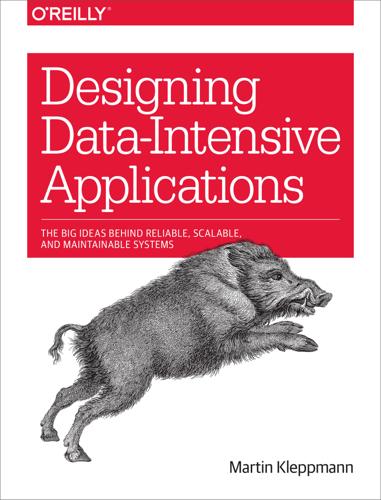
Designing Data-Intensive Applications: The Big Ideas Behind Reliable, Scalable, and Maintainable Systems
by
Martin Kleppmann
Published 16 Mar 2017
In a system with multiple participating organizations, some participants may attempt to cheat or defraud others. In such circumstances, it is not safe for a node to simply trust another node’s messages, since they may be sent with malicious intent. For example, peer-to-peer networks like Bitcoin and other blockchains can be considered to be a way of getting mutually untrusting parties to agree whether a transaction happened or not, without relying on a central authority [83]. However, in the kinds of systems we discuss in this book, we can usually safely assume that there are no Byzantine faults. In your datacenter, all the nodes are controlled by your organization (so they can hopefully be trusted) and radiation levels are low enough that memory corruption is not a major problem.
…
A transaction log can be made tamper-proof by periodically signing it with a hardware security module, but that does not guarantee that the right transactions went into the log in the first place. It would be interesting to use cryptographic tools to prove the integrity of a system in a way that is robust to a wide range of hardware and software issues, and even potentially malicious actions. Cryptocurrencies, blockchains, and distributed ledger technologies such as Bitcoin, Ethereum, Ripple, Stellar, and various others [71, 72, 73] have sprung up to explore this area. I am not qualified to comment on the merits of these technologies as currencies or mechanisms for agreeing contracts. However, from a data systems point of view they contain some interesting ideas.
…
[71] “Sawtooth Lake Documentation,” Intel Corporation, intelledger.github.io, 2016. [72] Richard Gendal Brown: “Introducing R3 Corda™: A Distributed Ledger Designed for Financial Services,” gendal.me, April 5, 2016. [73] Trent McConaghy, Rodolphe Marques, Andreas Müller, et al.: “BigchainDB: A Scalable Blockchain Database,” bigchaindb.com, June 8, 2016. [74] Ralph C. Merkle: “A Digital Signature Based on a Conventional Encryption Function,” at CRYPTO ’87, August 1987. doi:10.1007/3-540-48184-2_32 [75] Ben Laurie: “Certificate Transparency,” ACM Queue, volume 12, number 8, pages 10-19, August 2014. doi:10.1145/2668152.2668154 [76] Mark D.

The Wires of War: Technology and the Global Struggle for Power
by
Jacob Helberg
Published 11 Oct 2021
“Industry, technology, and innovation are developing rapidly,” observed Dai Hong, an official with China’s National Standardization Management Committee. “Global technical standards are still being formed. This grants China’s industry and standards the opportunity to surpass the world’s.”114 China Standards 2035 aims to shape everything from what the world’s solar panels look like to how the “blockchain” is regulated.VI Beijing has pushed for new facial recognition standards, which have been roundly criticized by lawyers and human rights advocates. China’s foreign minister has proposed a Global Data Security Initiative, which he contends will “provide a blueprint for the formulation of international principles on data security”115 and which critics see as an attempt to implement the Great Firewall abroad.116 Today’s Internet is defined by rules.
…
While China has sought to control undersea cables, Russia has appeared more interested in sabotaging them. In recent years, Russian submarines have stepped up their activity near cable routes. V. It should be noted that some observers believe that economic advantage, rather than repression, is the primary goal of these new standards. VI. The blockchain is a secure, decentralized electronic record of transactions, originally designed for electronic currency transfers but with a wide range of applications. VII. Some of Huawei’s attempts at influence have been rather comical. In February 2019, state media spread a video of identically dressed Chinese children singing a song called “Huawei Beauty,” with lyrics like “All around the world, which phone is the most pretty?
…
To combat manipulated images and video, social media platforms should likewise invest in deepfake detection. Qualcomm has begun incorporating sophisticated photo and video verification tools into its smartphone chips, making it easier to determine if content originating on its phones has been manipulated.80 Blockchain technology could allow every image to carry with it a log of any alterations made to the content. Other technologies are being developed that could determine if a video is being broadcast live or not.81 Big Is Not Necessarily Bad Clearly, the tech industry has a critical role to play in addressing the front-end conflict raging on its platforms.
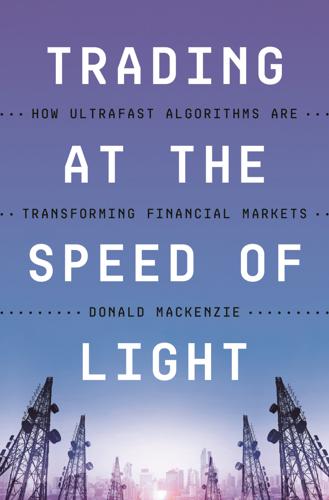
Trading at the Speed of Light: How Ultrafast Algorithms Are Transforming Financial Markets
by
Donald MacKenzie
Published 24 May 2021
I took my rough estimate of the bitcoin network’s fluctuating total hash rate (100 million TH/s) from https://www.blockchain.com/charts/hash-rate, accessed June 5, 2020. (A terahash or TH is a thousand billion applications of bitcoin’s hashing algorithm.) The example of efficient equipment I used was Bitmain’s S17e, which I assumed performed at the company’s specifications (a hash rate of 60TH/s and power consumption of 2.7 kW), taken from https://m.bitmain.com, accessed June 1, 2020. 33. I take the daily numbers of transactions from https://www.blockchain.com/charts/n-transactions, accessed June 10, 2020. 34. See https://newsroom.fb.com/company-info/, accessed June 5, 2020. 35.
…
(The issues are different for cryptocurrencies such as Facebook’s proposed Libra, which, if it is launched, will be run, at least initially, in a centralized fashion; I don’t propose to discuss those currencies here.) The issue that most clearly makes material political economy applicable is how to motivate at least a subset of the users of a cryptocurrency to check the validity of each transaction (including checking the validity of each other’s checking) and take part in adding it irreversibly to the blockchain, the record of every transaction that has taken place. The solution adopted for bitcoin by Satoshi Nakamoto, its pseudonymous inventor, is known as proof-of-work. Roughly every ten minutes, all day, every day, bitcoin miners, as they are called (and I like the moniker’s materiality) compete to be the first to find a hash of a block of transactions that is smaller than a certain target binary number (a hash is a cryptographic transformation by a predetermined algorithm).

Thank You for Being Late: An Optimist's Guide to Thriving in the Age of Accelerations
by
Thomas L. Friedman
Published 22 Nov 2016
“And we can make that guarantee work because, again, we know you, and we have all the data … We have one hundred ninety million customers worldwide and are adding fifteen to twenty million new ones a year.” These guarantees are also driving more globalization. Slowly but surely people are using PayPal to do away with cash. Like all big financial players, PayPal is experimenting with the emerging technology known as “blockchain” for validating and relaying global transactions through multiple computers. Blockchain, which is most famously used by the virtual currency Bitcoin, “is a way of enabling absolute trust between two parties making a financial transaction,” explained Schulman. “It uses Internet protocols to make the transaction go around any nation-state in a way that is visible to all the participants and goes beyond all middlemen and regulatory bodies—and therefore has the promise of lower costs.”
…
“It uses Internet protocols to make the transaction go around any nation-state in a way that is visible to all the participants and goes beyond all middlemen and regulatory bodies—and therefore has the promise of lower costs.” At the speed that the digitization of money is happening, I am sure I will be writing about blockchain in the paperback edition of this book. When the Big Shift Hits Strangers On February 24, 2016, Facebook announced that as part of its “A World of Friends” initiative, it was tracking the number of relationships forged on its site by longtime foes. Facebook said that on just that one day it had connected 2,031,779 people from India and Pakistan, 154,260 from Israel and Palestine, and 137,182 from Ukraine and Russia.
…
Louis Park Agadez, Niger age of accelerations; dislocation and; education and; human adaptability as challenged by; as inflection point; innovation as response to; leadership and; the Machine and; Moore’s law and; social technologies and agriculture: in Africa and Middle East; climate change and; monocultures vs. polycultures in Airbnb; trust and air-conditioning Aita, Samir algorithms; human oversight and; self-improving Alivio Capital Allen, Paul Allisam, Graham Almaniq, Mati Al Qaeda Al-Shabab AltaVista Amazon (company) Amazon rain forest Amazon Web Services American Civil Liberties Union American Dream American Interest American University of Iraq “America’s New Immigrant Entrepreneurs: Then and Now” (Kauffman Foundation) Amman, Jordan amplifying, as geopolitical policy Andersen, Jeanne Anderson, Chris Anderson, Ross Anderson, Wendell Andreessen, Marc Andrews, Garrett Android AngularJS Annan, Kofi Anthropocene epoch Anthropocene Review anti-Semitism APIs (application programming interfaces) Apple; see also Jobs, Steve Applebaum, Anne Apple Newton Apple Pay apps revolution Arab Awakening Arabic, author’s study of Arab-Muslim world, golden age of Arafat, Yasser architects, software for Armstrong, Neil artificial intelligence (AI); intelligent algorithms and; intelligent assistance and Artnet.com Ashe, Neil Ashraf, Quamrul Assad, Bashar al- Associated Press Astren, Fred AT&T; intelligent assistance and; iPhone gamble of; lifelong learning and; as software company Atkinson, Karen atmosphere: aerosol loading in; CO2 in; ozone layer of ATMs Auguste, Byron Austria Austro-Hungarian Empire Autodesk automation, see computers, computing autonomous systems; see also cars, self-driving Autor, David Avaaz.org Azmar Mountain Bajpai, Aloke Baker, James A., III balance of power Bandar Mahshahr, Iran bandwidth Bangladesh bankruptcy laws bank tellers Barbut, Monique baseball, class-mixing and BASIC Bass, Carl Batman, Turkey BBCNews.com Bee, Samantha Beinhocker, Eric Beirut: civil war in; 1982 Israeli-Palestinian war in Bell, Alexander Graham Bell Labs Bennis, Warren Benyus, Janine Berenberg, Morrie Berenberg, Tess Berkus, Nate Berlin, Isaiah Berlin Wall, fall of Bessen, James Betsiboka River “Better Outcomes Through Radical Inclusion” (Wells) Between Debt and the Devil (Turner) Beykpour, Kayvon Bible Bigbelly garbage cans big data; consumers and; financial services and; software innovation and; supernova and Big Shift Big World, Small Planet (Rockström) “Big Yellow Taxi” (song) Bingham, Marjorie bin Laden, Osama bin Yehia, Abdullah biodiversity: environmental niches and; resilience and biodiversity loss; climate change and biofuels biogeochemical flows biomass fuels biotechnology bioweapons birth control, opposition to Bitcoin black elephants Blase, Bill blockchain technology Bloomberg.com Blumenfeld, Isadore “Kid Cann” Bobby Z (Bobby Rivkin) Bodin, Wes Bohr, Mark Bojia, Ayele Z. Boko Haram Bombetoka Bay Bonde, Bob Bork, Les Boston Consulting Group Boston Globe Bourguiba, Habib Boys & Girls Clubs of America Brainerd, Mary “Brains & Machines” (blog) Braun, Gil Brazil breakers, super-empowered; degrading of; humiliation and; weak states and Brew “Brief History of Jews and African Americans in North Minneapolis, A” (Quednau) Brimeyer, Jim Brin, Sergey broadband Broadgate, Wendy Brock, David Brooks, David Brooks, Mel Brookview golf club Brown, John Seely Brynjolfsson, Erik Bucksbaum, Phil Buffett, Warren building information modeling buildings, energy efficient Burke, Edmund Burke, Tom Burnett, T Bone Burning Glass Technologies business: social responsibility and Business Bridge Business Insider Busteed, Brandon Bustle.com “Caddie Chatter” (Long and Seitz) Cairo calcium carbonate California, University of, at San Diego Cambodia campaign spending Campbell, James R.
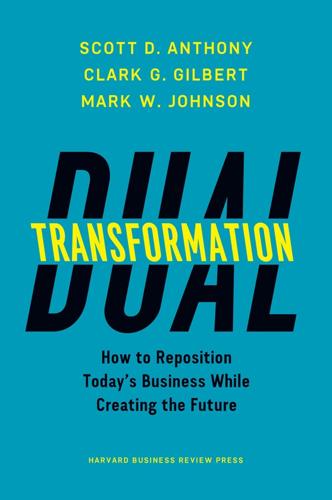
Dual Transformation: How to Reposition Today's Business While Creating the Future
by
Scott D. Anthony
and
Mark W. Johnson
Published 27 Mar 2017
Peer-to-peer payments such as PayPal, now almost twenty years old, have started to change the conception of what banking looks like. The rise of the smart phone and the increasing ubiquity of always-on high-speed networks mean that a generation is used to swiping, tapping, waving, or just leaving a car (in the case of Uber) to consummate a payment. Distributed ledger solutions, such as ones that use a technology called blockchain as their backbones, create decentralized transaction registers that are impervious to fraud or manipulation, albeit with legitimate questions about scalability and usability. In the future, will people need to have a central repository that holds their savings, or will what we conceive of as banks increasingly be companies such as Starbucks (whose prepaid cards held more than $1 billion in assets as of mid-2016), Apple, Samsung, and more?
…
Leaders who catch the disruptive changes early and respond appropriately will have the ability to thrive in the years to come. Those who don’t, well, Darwin has a way of taking care of them. TABLE AF-1 Disruption by industry Industry Disruptive trends New competitors Growth opportunities Consumer banking Peer-to-peer lending and payments, blockchain Telecommunications companies (e.g., Globe), technology giants Data-driven advisory support for businesses Shipping 3-D printing, drone delivery, smart, connected devices Amazon Real-time tracking, new inventory management services Medical devices Smart, connected devices, customized medicines Apple, IBM, Nestlé Wellness and prevention Automotive Driverless cars, integration of cars and commerce Uber, Apple, Google Transport and logistics services and solutions Professional services Democratized knowledge, platforms, software, artificial intelligence Hourlynerd, LegalZoom Software-enabled complex services Appendix: Dual Transformation Toolkit This appendix presents a set of checklists, discussion guides, and simple analytical models that help you apply key concepts in the book.
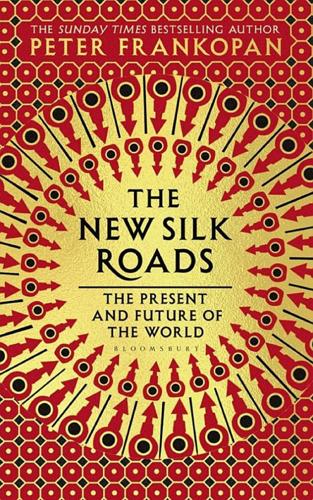
The New Silk Roads: The Present and Future of the World
by
Peter Frankopan
Published 14 Jun 2018
As well as everything else, the Silk Roads acted as ‘gene corridors’ for humans and for flora and fauna alike.6 Then there is new research that links the origins of Yiddish with commercial exchange across Asia and claims that its evolution was connected to measures designed to protect the security of transactions by devising a language that could only be understand by a select few.7 This has obvious resonance in the world of the twenty-first century, where crypto-currencies and blockchain technology seek to solve the problem of how to enable traders to complete transactions securely. Or there is the startling evidence from new-generation ice-core technology that can be used to shed fresh light on the devastating impact of the Black Death by showing the extent of the collapse in metal production in the mid-fourteenth century.8 Documents declassified in 2017 recording meetings held between the British minister in Washington in 1952, Sir Christopher Steel, and the assistant secretary of state Henry Byroade to discuss a coup to depose the prime minister of Iran help us gain a clearer understanding of how the ill-fated plans took shape.9 The release of previously secret US nuclear strike plans from the early part of the Cold War likewise help reveal important insights into American military and strategic planning – and contemporary assessments of how best to neutralise the Soviet Union in the event of war.10 These are just a small number of examples to show how historians continue to use different techniques to refine and improve their understanding of the past.
…
There are real dangers in concentrating only on matters that are of parachial importance when so many other more significant and challenging problems require and demand attention. * The rapid development of new technologies is also a significant difficulty to address, in terms of trying to predict the impact these will have in the coming years – and working out how to prepare accordingly for a world where artificial intelligence (AI), robotics, machine learning, Blockchain, Ethereum and more will change the way we live, love, work and communicate. Then there are cryptocurrencies like Bitcoin, which, while exciting for digital pioneers, seem most obviously of interest to those who seek to keep their transactions secure and away from prying eyes – including those who deal in illicit substances or goods, or who prefer to keep potentially taxable revenue away from the authorities.
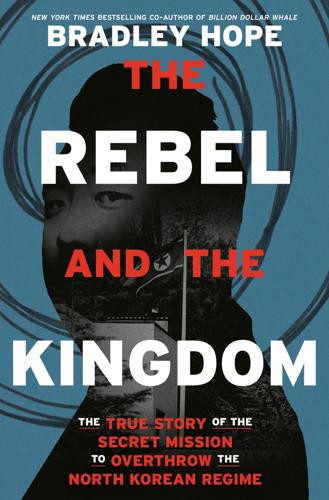
The Rebel and the Kingdom: The True Story of the Secret Mission to Overthrow the North Korean Regime
by
Bradley Hope
Published 1 Nov 2022
Adrian also kicked off a new fundraising strategy inspired by the global fascination with cryptocurrencies that the group had been working on for months. Their perceived anonymity could be a benefit to groups such as Free Joseon, he believed. In March, they debuted a “Post-Liberation Blockchain G-VISA” that would allow any holder to visit the country of “Free Joseon” established after the fall of North Korea. The announcement even included an authentic-looking visa from the Provisional Government of Free Joseon. The stunt wasn’t a wild success. Blockchain records show it earned only about $30,000 worth of cryptocurrency. In an echo of Adrian’s discussions with businesses about buying permits to work in “Free Joseon,” the rules for the visa asked for anyone seeking “to establish commercial activities” to contact the group via its encrypted email address.

The Stack: On Software and Sovereignty
by
Benjamin H. Bratton
Published 19 Feb 2016
We can only anticipate what forms of high weirdness will ensue, as the paired computerization of matter-into-monies (i.e., carbon credits trading, where the value of money is itself measured in carbon) and monies-into-virtuality (i.e., the light pulses of high-speed trading) continues to evolve and accelerate.8 New addressing schemes to locate and coordinate instances of value are multiplying, both as generic currency (bitcoin blockchains) and as platforms for brokering things-with-value (various sharing economy schemes). At stake in all this is also the design of the economy of information itself, from the smallest-scale object or gesture to the largest topological frameworks, and interrelations across scales by drawing and managing an orthodox map in the form of an address table.9 What gets to count and to whom, and who profits from merely counting?
…
Perhaps its hash architecture can be made to not only to map virtual quanta of “value” but actual things as well at the scale required by a global economy, or a parallel economy. (Is the “coin” the “address” and the value in the mesh of addressees? If so then the cost of addressing of anything and everything may be prohibitive without the introduction of some new incentive for settling the blockchain consensus.) All that is solid doesn't melt so much as it becomes fuzzy and spastic. In this, Address layer technologies of universal addressability point not only to assemblages that exist but to the media with which to compose those to come.38 48. Communication and Composition Design can only grope with the implications of an Address layer that meets matter at its own scales, and surely, unfortunately, it will do so initially through a demand that everything must appear and be disclosed to the cartographic militation of logistical necessity.
…
Aozaki's project is also a nice demonstration (and inversion) of the “double spend problem” that could plague any digital or networked currency: without discrete physical tokens that guarantee each unit of value is in only one place at a time, how to ensure that the same “dollar” is not spent more than once at a time? Blockchains offer the solution of distributed clearing of all transactions so that bitcoin's realm of value-representation remains uncompromised. It does not, however, solve the “problem” that Aozaki introduces, which we could perhaps call the “double acquire problem.” 46. Rachel Swaby, “Big Ideas: Spray Wi-Fi Hotspots on to Everything,” Wired UK, March 30, 2013, http://www.wired.co.uk/magazine/archive/2013/03/big-ideas/spray-wi-fi-hotspots-on-to-everything. 47.

The Age of Surveillance Capitalism
by
Shoshana Zuboff
Published 15 Jan 2019
“The New Deal gives customers a stake in the new data economy; that will bring first greater stability and then eventually greater profitability as people become more comfortable sharing data.”76 In Pentland’s view of data ownership, certainty machines like blockchain, which relies on complex encryption and algorithms to create a decentralized tamper-proof database, are commandeered to bypass social trust. He advocates systems “that live everywhere and nowhere, protecting and processing the data of millions of people, and executing on millions of internet computers.”77 One important study of Bitcoin, the cryptocurrency that relies on blockchain, suggests that such machine solutions both express and contribute to the general erosion of the social fabric in ways that are both consistent with instrumentarianism and further pave the way for its success.
…
He advocates systems “that live everywhere and nowhere, protecting and processing the data of millions of people, and executing on millions of internet computers.”77 One important study of Bitcoin, the cryptocurrency that relies on blockchain, suggests that such machine solutions both express and contribute to the general erosion of the social fabric in ways that are both consistent with instrumentarianism and further pave the way for its success. Information scholars Primavera De Filippi and Benjamin Loveluck conclude that contrary to popular belief, “Bitcoin is neither anonymous nor privacy-friendly… anyone with a copy of the blockchain can see the history of all Bitcoin transactions… every transaction ever done on the Bitcoin network can be traced back to its origin.” Such systems rely on “perfect information,” but the kinds of coordination processes that build open democratic societies, such as “social trust” or “loyalty,” are “expunged” in favor of “a profoundly market-driven approach.”78 Like Varian, Pentland does not acknowledge the social and political implications of such systems, which are in any case irrelevant to an instrumentarian future in which democracy and social trust are superseded by the certainty machines, their priests, and their owners.
…
Shoshana Zuboff has somehow escaped from the fishbowl in which we all now live and introduced to us the concept of water. A work of penetrating intellect, this is also a deeply human book about what is becoming, as it relentlessly demonstrates, a dangerously inhuman time.” —Kevin Werbach, The Wharton School, University of Pennsylvania, and author of The Blockchain and the New Architecture of Trust DETAILED TABLE OF CONTENTS INTRODUCTION CHAPTER ONE Home or Exile in the Digital Future I. The Oldest Questions II. Requiem for a Home III. What Is Surveillance Capitalism? IV. The Unprecedented V. The Puppet Master, Not the Puppet VI. The Outline, Themes, and Sources of this Book PART I The Foundations of Surveillance Capitalism CHAPTER TWO August 9, 2011: Setting the Stage for Surveillance Capitalism I.

Going Dark: The Secret Social Lives of Extremists
by
Julia Ebner
Published 20 Feb 2020
On Telegram and the Dark Net, terrorists have increasingly called on their sympathisers to donate in cryptocurrencies.11 For example, the Al-Qaeda-linked organisation al-Sadaqa campaigned for bitcoin donations in November 2017, while Indonesian ISIS leader Bahrun Naim used the cryptocurrency to transfer money to his followers.12 Bitcoin transactions, however, can be tracked, and wallets are easily traced back to their owners due to the highly transparent blockchain technology this cryptocurrency is built on. As a result, many extremists have resorted to anonymous cryptocurrencies such as Monero, ‘which best maintains our privacy’, as neo-Nazi hacker Weev put it. From alternative social media and news channels to extremist messaging apps and cryptocurrencies, the changes that new media ecosystems are undergoing resemble those that are under way in the political landscape.
…
Index Abdurrahman, Aman here abortion here, here, here Accelarationism here, here Accurint here Achse des Guten here Adonis, Lord (Andrew) here advertising here Akademikierball here al-Adnani, Abu Muhammad here aliens here, here Alinsky, Saul here Allen, Lily here Al-Qaeda here, here, here, here, here, here, here, here Al-Rawi, Ahmed here al-Sadaqa here al-Suri, Aby Musab here Alt Right Leaks here Alternative for Germany (AfD) here, here, here, here Altman, Mitch here Alt-Tech Alliance here alt-tech platforms, types of here Amadeu Antonio Foundation here ‘Amara, Umm here Amazon here, here Ames, Aldrich here Amnesty International here Andelin, Helen here anger-management here Angern, Eva von here Angleton, James Jesus here Anglin, Andrew here, here, here, here Anonymous here, here, here, here, here, here, here, here Anschluss here Ansgar Aryan here, here Antaios publishing house here Anthony, Jon here Anti-Defamation League here Antifa (anti-fascists) here, here, here, here Anti-Racist Action here anti-Semitism here, here, here, here, here, here, here, here, here, here and Charlottesville rally here, here, here, here hackers and here, here, here rising under Trump here and terrorist attacks here Tommy Robinson denies here and Yellow Vests here see also Jews; ZOG Anton, Reinhold here ‘apocalypse’ (the word) here apophenia here APT28 (‘Fancy Bear’) unit here AQ Electronic Jihad Organisation here Arendt, Hannah here Ares, Chris here Article here, here artists here assault rifles, availability of here Association for Retired Persons of Austria here AT&T here Atomwaffen here Auernheimer, Andrew, see Weev Auschwitz here Bakker, Jim here Bali bombing here Balliet, Stephan here Baltic Elves here Bambenek, John here Bannon, Steve here, here Bantown here Barley, Katarina here Barojan, Donara here Barr, Roseanne here Bataclan attack here Batam Island here Bateman, Hannibal here BBC here, here, here, here BDSM here Beiler, Ronald here Benjamin, Carl (Sargon of Akkad) here, here Benjamin, Walter here Benotman, Noman here Berger, J. M. here, here b4bo here bin Laden, Osama here, here, here birthrates here, here Bissonnette, Alexandre here, here BitChute here bitcoin here, here, here Blissett, Luther here Bloc Identitaire here blockchain technology here bloggers here Blood & Honour here Bloom, Mia here Bloomberg, Michael here Böhmermann, Jan here Bowers, Robert here Breed Them Out here Breitbart here, here, here Breivik, Anders Behring here, here ‘Brentonettes’ here Brewer, Emmett here Brexit here, here Britain First here British National Party (BNP) here, here, here Broken Heart operation here Brown, Dan here Bubba Media here Bumble here, here Bundestag hack here, here BuzzFeed here C Star here, here ‘Call of Duty’ here, here Cambridge Analytica here, here Camus, Renaud here Carroll, Lewis here CBS here Channel programme here Charleston church shooting here Charlie Hebdo here Charlottesville rally here, here, here, here, here, here, here, here, here Chemnitz protests here, here Choudary, Anjem here Christchurch terror attacks here, here, here, here Christian identity here Chua, Amy here CIA here, here, here Clinton, Bill and Hillary here, here, here, here, here, here, here Cohn, Norman here Collett, Mark here Cologne rape crisis here Combat here, here Comey, James here Comvo here concentration camps here Conrad, Klaus here Conservative Political Action Conference here Constitution for the Ethno-State here Corem, Yochai here counter-extremism legislation here counter-trolling here Covington, Harold here Crash Override Network here Crusius, Patrick here cryptocurrencies here, here, here, here Cuevas, Joshua here Cyberbit here Cyborgology blog here ‘Daily Shoah’ podcast here Daily Stormer here, here, here, here, here, here, here, here, here Weev and here Damore, James here Dark Net here Data and Society Research Institute here Davey, Jacob here Dawkins, Richard here, here De La Rosa, Veronique here de Turris, Gianfranco here Dearden, Lizzie here deep fakes here, here DefCon here, here Der Spiegel here Deutsche Bahn here Diana, Princess of Wales here, here Die Linke here Die Rechte here ‘digital dualism’ here digital education here disinformation here, here, here Disney here Domestic Discipline here, here Donovan, Joan here Doomsday preppers here doubling here Dox Squad here, here doxxing here, here, here, here, here Doyle, Laura here, here Draugiem here DTube here Dugin, Alexander here Dunning–Kruger Effect here Dutch Leaks here Dylan, Bob here Earnest, John here 8chan here, here, here, here, here, here, here, here EKRE (Estonian fascist party) here El Paso shooting here Element AI here Emanuel, Rahm here encryption and steganography here Encyclopedia Dramatica here English Defence League here, here, here, here Enoch, Mike here environmentalism here, here ethno-pluralism here, here ‘Eurabia’ here, here ‘European Israel’ here European National here European Parliament elections here European Spring here Evola, Julius here executions here Facebook friends here fashions and lifestyles here, here Fawcett, Farah here Faye, Guillaume here FBI here, here, here, here, here Fearless Democracy here, here FedEx here Feldman, Matthew here Ferdinand II, King of Aragon here Fiamengo, Janice here Fields, James Alex here Fight Club here Finkelstein, Robert here Finsbury Mosque attack here, here, here Fisher, Robert here Foley, James here Follin, Marcus here football hooligans here, here Football Lads Alliance (FLA) here For Britain party here Fortnite here 4chan here, here, here, here, here, here, here, here, here FPÖ (Austrian Freedom Party) here, here, here, here, here Frankfurt School here Fransen, Jayda here Fraternal Order of Alt-Knights here Freedom Fighters, The here freedom of speech here, here, here, here F-Secure here FSN TV here Gab here, here, here, here, here, here Gamergate controversy here GamerGate Veterans here gamification here, here, here, here, here, here, here, here Ganser, Daniele here Gates of Vienna here Gateway Pundit here Gawker here GCHQ here GE here GellerReport here Generation Identity (GI) here, here, here, here, here, here, here, here Generation Islam here genetic testing here, here German elections here, here German Institute on Radicalization and De-Radicalization Studies here German National Cyber Defence Centre here Gervais, Ricky here Ghost Security here Giesea, Jeff here Gigih Rahmat Dewa here Gionet, Tim here gladiators here Global Cabal of the New World Order here global financial crisis here, here global warming here GNAA here Goatse Security here GOBBLES here Goebbels, Joseph here GoFundMe here Goldy, Faith here Goodhart, David here ‘Google’s Ideological Echo Chamber’ here Gorbachev, Mikhail here Graham, Senator Lindsey here Gratipay here Great Awakening here, here Great Replacement theory here, here, here, here, here ‘Grievance Studies’ here grooming gangs here, here Guardian here, here H., Daniel here Habeck, Robert here HackerOne here hackers and hacking here ‘capture the flag’ operations here, here denial of service operations here ethical hacking here memory-corruption operations here political hacking here ‘qwning’ here SQL injections here techniques here Halle shooting here Hamas here, here Hanks, Tom here Happn here Harris, DeAndre here ‘hashtag stuffing’ here Hate Library here HateAid here, here Hatreon here, here, here Heidegger, Martin here Heise, Thorsten here, here Hensel, Gerald here, here Herzliya International Institute for Counter-Terrorism here Heyer, Heather here, here, here Himmler, Heinrich here Hintsteiner, Edwin here Histiaeus here Hitler, Adolf here, here, here, here, here Mein Kampf here, here Hitler salutes here, here, here, here Hitler Youth here HIV here Hizb ut-Tahrir here, here, here Höcker, Karl-Friedrich here Hofstadter, Richard here Hollywood here Holocaust here Holocaust denial here, here, here, here, here Holy War Hackers Team here Home Office here homophobia here, here, here Hooton Plan here Hoover Dam here Hope Not Hate here, here, here Horgan, John here Horowitz Foundation here Hot or Not here House of Saud here Huda, Noor here human trafficking here, here Hussein, Saddam here, here Hutchins, Marcus here Hyppönen, Mikko here Identity Evropa here, here iFrames here Illuminati here Incels (Involuntary Celibacy) here, here Independent here Inkster, Nigel here Institute for Strategic Dialogue (ISD) here, here, here, here, here, here, here, here Intelius here International Business Times here International Centre for the Study of Radicalisation (ICSR) here International Federation of Journalists here International Holocaust Memorial Day here International Institute for Strategic Studies here Internet Research Agency (IRA) here iPads here iPhones here iProphet here Iranian revolution here Isabella I, Queen of Castile here ISIS here, here, here, here, here, here, here, here, here, here, here, here hackers and here, here, here, here, here Islamophobia here, here, here, here, here, here, here Tommy Robinson and here, here see also Finsbury Mosque attack Israel here, here, here, here, here Israel Defense Forces here, here Jackson, Michael here jahiliyya here Jakarta attacks here Jamaah Ansharud Daulah (JAD) here Japanese anime here Jemaah Islamiyah here Jesus Christ here Jewish numerology here Jews here, here, here, here, here, here, here, here, here see also anti-Semitism; ZOG JFG World here jihadi brides here, here JihadWatch here Jobs, Steve here Johnson, Boris here Jones, Alex here Jones, Ron here Junge Freiheit here Jurgenson, Nathan here JustPasteIt here Kafka, Franz here Kampf der Niebelungen here, here Kapustin, Denis ‘Nikitin’ here Kassam, Raheem here Kellogg’s here Kennedy, John F. here, here Kennedy family here Kessler, Jason here, here Khomeini, Ayataollah here Kim Jong-un here Kohl, Helmut here Köhler, Daniel here Kronen Zeitung here Kronos banking Trojan here Ku Klux Klan here, here Küssel, Gottfried here Lane, David here Le Loop here Le Pen, Marine here LeBretton, Matthew here Lebron, Michael here Lee, Robert E. here Li, Sean here Li family here Libyan Fighting Group here LifeOfWat here Lifton, Robert here Littman, Gisele here live action role play (LARP) here, here, here, here, here, here lobbying here Lokteff, Lana here loneliness here, here, here, here, here, here, here Lorraine, DeAnna here Lügenpresse here McDonald’s here McInnes, Gavin here McMahon, Ed here Macron, Emmanuel here, here, here, here MAGA (Make America Great Again) here ‘mainstream media’ here, here, here ‘Millennium Dawn’ here Manosphere here, here, here March for Life here Maria Theresa statue here, here Marighella, Carlos here Marina Bay Sands Hotel (Singapore) here Marx, Karl here Das Kapital here Masculine Development here Mason, James here MAtR (Men Among the Ruins) here, here Matrix, The here, here, here, here May, Theresa here, here, here Meechan, Mark here Meme Warfare here memes here, here, here, here and terrorist attacks here Men’s Rights Activists (MRA) here Menlo Park here Mercer Family Foundation here Merkel, Angela here, here, here, here MGTOW (Men Going Their Own Way) here, here, here MI6, 158, 164 migration here, here, here, here, here, here, here, here, here see also refugees millenarianism here Millennial Woes here millennials here Minassian, Alek here Mindanao here Minds here, here misogyny here, here, here, here, here see also Incels mixed martial arts (MMA) here, here, here, here Morgan, Nicky here Mounk, Yascha here Movement, The here Mueller, Robert here, here Muhammad, Prophet here, here, here mujahidat here Mulhall, Joe here MuslimCrypt here MuslimTec here, here Mussolini, Benito here Naim, Bahrun here, here Nance, Malcolm here Nasher App here National Action here National Bolshevism here National Democratic Party (NPD) here, here, here, here National Health Service (NHS) here National Policy Institute here, here National Socialism group here National Socialist Movement here National Socialist Underground here NATO DFR Lab here Naturalnews here Nawaz, Maajid here Nazi symbols here, here, here, here, here, here, here see also Hitler salutes; swastikas Nazi women here N-count here Neiwert, David here Nero, Emperor here Netflix here Network Contagion Research Institute here NetzDG legislation here, here Neumann, Peter here New Balance shoes here New York Times here News Corp here Newsnight here Nietzsche, Friedrich here, here Nikolai Alexander, Supreme Commander here, here, here, here, here, here 9/11 attacks here, here ‘nipsters’ here, here No Agenda here Northwest Front (NWF) here, here Nouvelle Droite here, here NPC meme here NSDAP here, here, here Obama, Barack and Michelle here, here, here, here, here Omas gegen Rechts here online harassment, gender and here OpenAI here open-source intelligence (OSINT) here, here Operation Name and Shame here Orbán, Viktor here, here organised crime here Orwell, George here, here Osborne, Darren here, here Oxford Internet Institute here Page, Larry here Panofsky, Aaron here Panorama here Parkland high-school shooting here Patreon here, here, here, here Patriot Peer here, here PayPal here PeopleLookup here Periscope here Peterson, Jordan here Pettibone, Brittany here, here, here Pew Research Center here, here PewDiePie here PewTube here Phillips, Whitney here Photofeeler here Phrack High Council here Pink Floyd here Pipl here Pittsburgh synagogue shooting here Pizzagate here Podesta, John here, here political propaganda here Popper, Karl here populist politicians here pornography here, here Poway synagogue shooting here, here Pozner, Lenny here Presley, Elvis here Prideaux, Sue here Prince Albert Police here Pro Chemnitz here ‘pseudo-conservatives’ here Putin, Vladimir here Q Britannia here QAnon here, here, here, here Quebec mosque shooting here Quilliam Foundation here, here, here Quinn, Zoë here Quran here racist slurs (n-word) here Radio 3Fourteen here Radix Journal here Rafiq, Haras here Ramakrishna, Kumar here RAND Corporation here Rasmussen, Tore here, here, here, here Raymond, Jolynn here Rebel Media here, here, here Reconquista Germanica here, here, here, here, here, here, here Reconquista Internet here Red Pill Women here, here, here, here, here Reddit here, here, here, here, here, here, here, here, here, here redpilling here, here, here, here refugees here, here, here, here, here Relotius, Claas here ‘Remove Kebab’ here Renault here Revolution Chemnitz here Rigby, Lee here Right Wing Terror Center here Right Wing United (RWU) here RMV (Relationship Market Value) here Robertson, Caolan here Robinson, Tommy here, here, here, here, here, here, here, here Rockefeller family here Rodger, Elliot here Roof, Dylann here, here Rosenberg, Alfred here Rothschilds here, here Rowley, Mark here Roy, Donald F. here Royal Family here Russia Today here, here S., Johannes here St Kilda Beach meeting here Salafi Media here Saltman, Erin here Salvini, Matteo here Sampson, Chris here, here Sandy Hook school shooting here Sargon of Akkad, see Benjamin, Carl Schild & Schwert rock festival (Ostritz) here, here, here Schilling, Curt here Schlessinger, Laura C. here Scholz & Friends here SchoolDesk here Schröder, Patrick here Sellner, Martin here, here, here, here, here, here, here, here, here, here Serrano, Francisco here ‘sexual economics’ here SGT Report here Shodan here, here Siege-posting here Sleeping Giants here SMV (Sexual Market Value) here, here, here Social Justice Warriors (SJW) here, here Solahütte here Soros, George here, here Sotloff, Steven here Southern, Lauren here Southfront here Spencer, Richard here, here, here, here, here, here Spiegel TV here spoofing technology here Sputnik here, here SS here, here Stadtwerke Borken here Star Wars here Steinmeier, Frank-Walter here Stewart, Ayla here STFU (Shut the Fuck Up) here Stormfront here, here, here Strache, H.

The Truth About Lies: The Illusion of Honesty and the Evolution of Deceit
by
Aja Raden
Published 10 May 2021
But consider: 99.92 percent of their sellers lose money.36 This Will Go on Your Permanent Record So, you’re too clean (you’re not) for Wall Street, and you’re too smart (you’d be surprised) to fall for multilevel marketing? That’s okay, I’ve got one more. Let’s talk about the biggest, sexiest Pyramid Scheme currently going: Bitcoin. Bitcoin (in case you live in a fallout shelter) is an unregulated, nonphysical cryptocurrency based on blockchain technology. Blockchain technology is a snazzy piece of computer programming that allows for the secure and traceable transfer of Bitcoin (or anything else) almost instantaneously. Bitcoin itself is the digital currency that is “created” when so-called miners (really, nerds sitting at their computers) solve complex mathematical problems.

Brave New Work: Are You Ready to Reinvent Your Organization?
by
Aaron Dignan
Published 1 Feb 2019
New forms of universal basic income are being tested for their ability to provide for our basic human needs while also encouraging us to use and share our gifts—through entrepreneurship, service, and community. New forms of currency and means of exchange provide alternatives to the current model of borrowing money lent at interest. Blockchain and cryptocurrencies enable massively distributed collaboration via decentralized autonomous organizations and other alternatives to traditional incorporation or partnership. A new type of thinking is essential if mankind is to survive and move toward higher levels. —Albert Einstein Is a future like that even possible?
…
And yet one study of cooperatives in Western Europe, the United States, and Latin America found that worker cooperatives are already more productive than conventional businesses. And what if your mission is to create an organization that isn’t incorporated or centralized at all? That ambition is at the heart of an emerging class of decentralized autonomous organizations (DAOs), which leverage blockchain and cryptocurrencies to create products and services without central control. The best explanation of this controversial new form of organization comes from Cointelegraph, an independent online publication that covers the future of money. “Imagine a vending machine that not only takes money from you and gives you a snack in return but also uses that money to automatically re-order the goods.
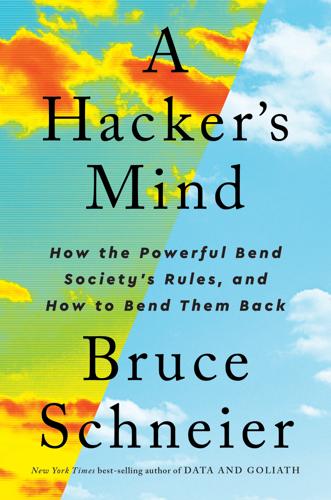
A Hacker's Mind: How the Powerful Bend Society's Rules, and How to Bend Them Back
by
Bruce Schneier
Published 7 Feb 2023
In the US, insider trading was criminalized by the Securities Exchange Act of 1934, affirmed and refined over the years in US Supreme Court rulings. In 2021, three people were charged with insider trading for buying stock in the Long Island Iced Tea Co. just before it changed its name to the Long Blockchain Co. for no other reason than to ride the then-frenetic blockchain hype. A rule that has lasted for this long is a clear example of a successful systems patch. It’s actually impressive that these prohibitions have survived almost ninety years of hacking and regulatory inertia. If there’s a general lesson here, it’s that a broad rule enables a more robust, adaptable, and resilient regulatory regime.
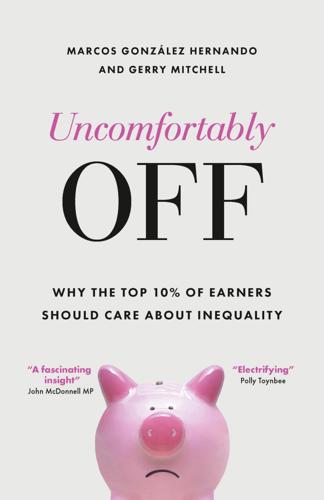
Uncomfortably Off: Why the Top 10% of Earners Should Care About Inequality
by
Marcos González Hernando
and
Gerry Mitchell
Published 23 May 2023
The common factor in the strategies of high-income earners described in this chapter is the desire to distance themselves from these trends, even though nearly all of them inevitably will, if they haven’t already, affect them and their children. 142 Jumping ship, but where to? A more tangible future One of the most interesting technological and financial developments of the last decade is the rise of cryptocurrencies – digital currencies that seek to do away with inflation and central banking through a decentralised registry system, the ‘blockchain’ – and NFTs (non-fungible tokens)57 – which, in the simplest terms, are an attempt to replicate the logic of private property for online informational objects such as memes. Both are interesting economic and sociocultural phenomena; digital in nature but increasingly important for speculators. The most famous cryptocurrency, Bitcoin, began in January 2013 being traded at USD$13.30 and by January 2014, was worth $770.
…
Soper, 2020, p. 69 Sandel, 2013 Reich, 2020 Savage, 2022a Dunne and Gabbatiss, 2022 Evans, 2022 Monbiot, 2022 Cited in Fisher and Gilbert, 2013, p. 90 Stronge and Lewis, 2021, p. 95 Davies, 2022 197 Uncomfortably Off 55 56 57 58 59 60 61 62 Mason, 2022 Ghosh, 2022b A non-fungible token is a unique digital identifier in a blockchain (a decentralised log shared across a network) that cannot be copied, merged or subdivided. Its purpose is to certify the authenticity or ownership of a digital object, turned into a commodity. Pymnts, 2022 European Central Bank, 2022 Olson, 2022 Blundell et al, 2020 Coyle, 2011, p. 11 Chapter 7 1 2 3 4 5 6 7 8 9 10 11 12 13 14 15 16 17 18 19 20 21 22 23 24 25 26 27 28 29 30 31 32 Wilkinson and Pickett, 2019 See Markovits, 2020 Dorling, 2014, p. 46 Dorling, 2014, p. 46 Dorling, 2014, p. 46 Dorling, 2014, p. 40 Mandler, 2022, pp. 44–5 Jones, 2012, p. 258 Lister, 2004 Tilly and Tilly, 1998, p. 22; Dhar, 2020 ‘No man is an island, entire of itself; every man is a piece of the continent, a part of the main.’
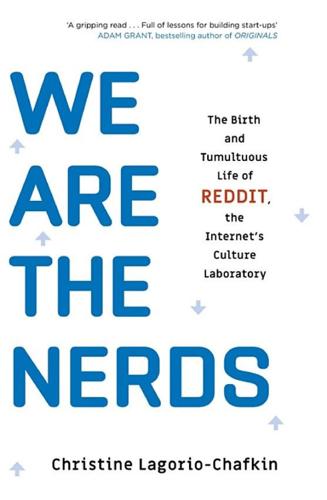
We Are the Nerds: The Birth and Tumultuous Life of Reddit, the Internet's Culture Laboratory
by
Christine Lagorio-Chafkin
Published 1 Oct 2018
” * * * The year 2014 was a turnaround year for cryptocurrency; major retailers such as Overstock, Microsoft, and Dell began accepting Bitcoin, and to payments-startup insiders, some of the hottest scrappy San Francisco upstarts—Coinbase, Ripple—were in digital currency. Wong thought, if anything could manage his vision for distributing tiny fractions of dollars to Redditors, the blockchain might work. He hired a cryptocurrency engineer, Ryan X. Charles, to execute this vision for giving 10 percent of ad revenue back to millions of anonymous users, a project users joked should be called “creddits,” but would become known as Reddit Notes. These hypothetical “notes”—for which a labyrinthine new blockchain system was to be developed by Charles and project manager Daniel Lim—were perhaps doomed from their inception. For Wong’s part, he admits that at the time he was not entirely in control.
…
Angel, the former rocket scientist who’d transformed her life and career to work for Reddit ever since that day at the Colbert rally when she was just a college kid in her alien T-shirt, said no. She had a life in Portland. She resigned and took the severance. Also dismissed: cryptocurrency engineer Ryan X. Charles, who later said he was given no reasonable opportunity to pitch to the new administration his digital creation harnessing blockchain technology, which Wong had hired him to develop. There were others. Every few weeks, someone would not show up to the Wednesday all-hands meeting, and stop appearing on online chat—and everyone else would be left to speculate what happened. (Speculation was usually all they got, as most employees were careful not to violate the paperwork they’d signed in exchange for significant severance pay.)
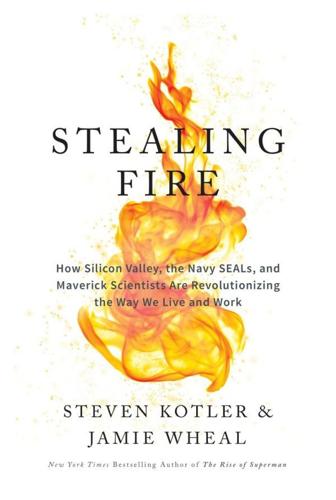
Stealing Fire: How Silicon Valley, the Navy SEALs, and Maverick Scientists Are Revolutionizing the Way We Live and Work
by
Steven Kotler
and
Jamie Wheal
Published 21 Feb 2017
“When I do [reach flow],” Branson told us over smoothies on his back porch one morning, “I get an extra two hours of great work done, and the other twelve are really, really productive—so trying to get that balance in life is really important; not saying that one shouldn’t party hard as well.” Branson and Mai Tai are taking this same approach to host the Carbon Warroom, a transnational organization35 dedicated to energy sustainability in the Caribbean, and the Blockchain Summit, an international consortium exploring socially beneficial applications for alternative currencies. By bringing the passionate and talented together to play and work, they’re charting a course toward a more innovative and sustainable future. Case in point: a cedar hot tub perched on the crow’s nest of the main house of Necker Island.
…
See consciousness-hacking technology biofeedback, 79, 147, 151, 190, 198. See also biometrics biology. See Pale of the Body; specific topic biometrics, 96, 104–5, 111, 150, 151, 177, 197–98. See also biofeedback Black Panthers, 192 Black Rock City. See Burning Man Black Rock City Census, 160 Blahnik, Jay, 177 Blake, William, 155, 216 Bliss Point, 212–13 Blockchain Summit, 173 boat race, Ellison-New Zealand, 219–20 body distrust of, 99–100 See also mind-body relationship; Pale of the Body body language, 98 Book of Mormon, 127 Boom Festival (Portugal, 2014), 142, 143 The Botany of Desire (Pollan), 118 Botox, 96, 97 Bradford, Nichol, 148 brain complexity of, 37 and default mode network, 125–26 and enlightenment engineering, 147–48 and neurobiology, 24, 74, 107–8, 109–10 and neurotheology, 107–8, 109–10 pleasure system of, 183, 191 and psychedelics, 124–26 and richness, 44–46 and STER, 36–46 and techniques of ecstasis, 24–25 temporal-parietal junction in, 109–10 and time, 40 training of, 114 and transient hypofrontality, 38, 40, 45, 125 See also brain imaging; brainwashing; EEG technology; specific part of brain or neurochemical Brain Games (TV show), 33 brain imaging, 101, 107–8, 109–10, 177, 191.
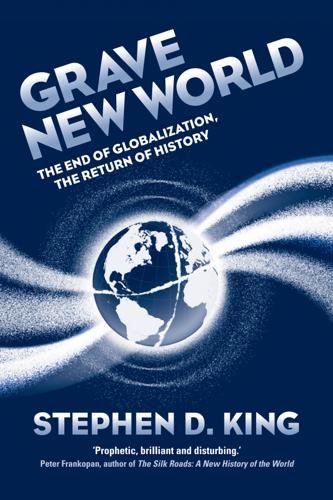
Grave New World: The End of Globalization, the Return of History
by
Stephen D. King
Published 22 May 2017
At worst, we could end up with a chaotic ever-changing constellation of currencies challenging globalization on three separate fronts: first, the desire for individual countries to deflect their debt problem somewhere else; second, the American economy’s diminishing status on the world stage; and third, the absence of a global financial imperium to replace the US. It’s no great surprise that, given this prospect, interest in new currency algorithms – most obviously the Blockchain that underlies Bitcoin – is on the increase. ‘CONSPANSIONARY’ MONETARY POLICY Monetary policy’s redistributional qualities are not, however, confined to cross-border effects alone. Within countries, it increasingly appears that monetary stimulus has both expansionary and contractionary effects – a combination that might best be termed ‘conspansionary’.8 Before the global financial crisis, these effects tended to even out over time.
…
London, January 2017 INDEX Abbasids (i), (ii) Abu Bakr (i) Acemoglu, Daron (i) advertising (i) Afghanistan (i), (ii), (iii), (iv) Africa (i) China and (i) high levels of ethnic diversity (i) oil, commodities and (i) population percentages (i) ‘scramble for’ (i), (ii) sub-Saharan nations (i), (ii), (iii) trade flows and slavery (i) ageing population (i), (ii), (iii), (iv) Agincourt, Battle of (i) Al Qaeda (i), (ii)n2 Alaska (i) Ali (cousin/son-in-law to Prophet Mohammad) (i) Alibaba (i) Allies (Second World War) (i) Almaty (i) Almohads (i) Almoravids (i) Alternative für Deutschland (AfD) (i) Amazon (i) America see United States American Civil War (i), (ii) American dollar (i), (ii) as good as gold (i) global foreign exchange market and (i) peso and (i) premier reserve currency (i), (ii), (iii), (iv) American Dream (i) American Samoa (i) Amin, Idi (i) Amsterdam Treaty (1997) (i), (ii) Anatolia (i) Andalucía (i) Andes (i) Angell, Norman (i), (ii), (iii) Angola (i) ‘animal spirits’ (i) Annecy (i) Apple (i), (ii) Arab nations (i), (ii) Arab Spring (i) Arabic language (i), (ii) Arabs (i), (ii), (iii) Aramaic (i) Arc of Prosperity (i) Argentina (i), (ii), (iii) Armenia (i) ASEAN (Association of Southeast Asian Nations) (i) Asia see also China and other individual countries 1997/8 crisis (i), (ii), (iii) ageing population (i) balance of payments deficits (i) Central Asia (i), (ii), (iii) Columbus’s belief (i) East Asia (i) emerging market labour (i) events impinging on the West (i) immigrants in America (i) mathematical ability (i) Obama and (i), (ii), (iii) rail connections (i) Russia and (i) Trump and a vacuum (i) Asian Development Bank (i) Asian Infrastructure Investment Bank (i), (ii), (iii), (iv), (v) Asiatic Barred Zone Act (i) al-Assad, Bashar (i), (ii) asylum seekers (i), (ii), (iii), (iv), (v)n17 see also immigration; refugees Atatürk, Mustafa Kemal (i) Atlantic (i), (ii) Austen, Jane (i) austerity (i), (ii), (iii) Australia ASEAN and (i) Asian Infrastructure Investment Bank and (i) average incomes (i) foreign-born share of population (i) Second Gulf War (i) tobacco policy (i) Austria (i), (ii) Austro-Hungarian Empire (i), (ii) Axis (Second World War) (i) Azerbaijan (i) Bagehot, Walter (i) Baghdad (i) Baker, James (III) (i) balance of payments (i) Asian Crisis (i) Latin America (i) Plaza Accord and (i) UK and Suez (i) US (i), (ii) Varoufakis on (i) Balkans (i) Baltic Sea (i), (ii) bancor (i), (ii), (iii) Bangladesh (i) Bank of Credit and Commerce International (i) Bank of England (i), (ii) Bank of Japan (i) bankers (i), (ii), (iii), (iv), (v) see also central banks Barings (i), (ii)n1 Basel I (i) Basel II (i) Basra (i) Battle of Bretton Woods, The (Ben Steil) (i)n4 BBC Two (i) Bedford (i) Beijing (i), (ii), (iii), (iv) Belarus (i), (ii) Belgium (i), (ii), (iii), (iv) Belt and Road strategy (i), (ii) Benn, Tony (i) Bentham, Jeremy (i) Berbers (i) Bergère, 14 rue (i) Berghof sanatorium (i) Berlin Wall (fall of) asylum seekers after (i) changing times after (i), (ii) Poland goes from strength to strength (i) relative living standards after fall (i) Soviet living standards (i) US military spending and (i) Bernanke, Ben (i) Big Brother (i) Bilderberg Club (i) bin Laden, Osama (i) Bitcoin (i) Black and White Minstrel Show, The (i) Black Death (i) Black Sea (i), (ii), (iii) Blair, Tony (i), (ii), (iii) Blanchard, Olivier (i) Blockchain (i) Blue Feed (i) BMW (i) BNP Paribas (i) Boers (i) Boko Haram (i) Bolsheviks (i) see also communism borders (i), (ii), (iii), (iv), (v) see also cross-border capital flow capital flows see cross-border capital flow EU and (i) globalization and (i) historical accident (i) Mediterranean (i) movement of labour (i), (ii) post-global financial crisis (i), (ii) railways and (i) slowly dissolving (i), (ii) technology and (i), (ii) Triffin Dilemma (i) Boston (i), (ii) Boughton, James M.
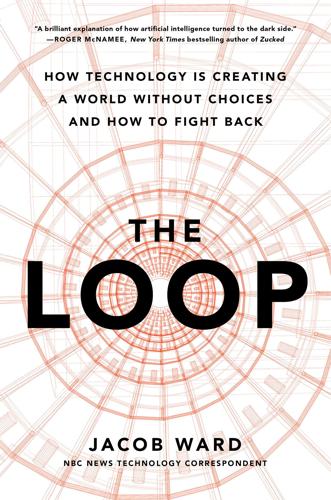
The Loop: How Technology Is Creating a World Without Choices and How to Fight Back
by
Jacob Ward
Published 25 Jan 2022
I struggled with that notion for a while, feeling tempted to dismiss the whole thing. But then along came NFTs. NFTs, or non-fungible tokens, are pieces of code slipped inside any digital file that identify it as “unique” in the open-receipt system known as blockchain. Once an NFT has been placed inside something like a movie or audio file, that particular file—just the one—is, in theory, the only one of its kind, and in the public ledger of the blockchain, anyone can look up that particular NFT to see whether it’s registered to a particular person. This allows humans to own a digital file in a way that no one else—even if they have a file that’s identical in all other ways—can claim.
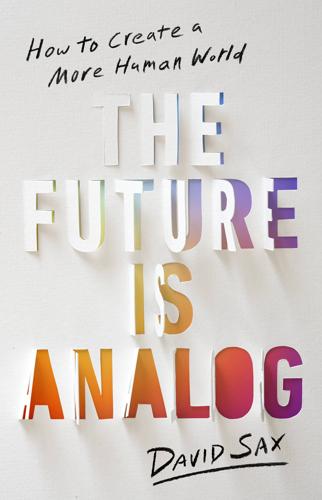
The Future Is Analog: How to Create a More Human World
by
David Sax
Published 15 Jan 2022
In the future, conversations would not be bound by space, instantly fostering a community of global empathy and understanding that would rapidly end conflict and divisions across borders, faiths, creeds, and colors. This future, made possible by artificial intelligence, big data, mobile computing, the internet, electric cars, smart scooters, virtual reality, and blockchain, would make us happier, healthier, smarter, richer, and just better-off. And then one day, just like that, our digital future arrived. Late in 2019, a sick bat emerged from its cave somewhere in China, pooped near a pangolin (or some other creature), and set off a chain of events that none of the tech oracles predicted (except Bill Gates).
…
There were widely touted examples, like the supposedly data-driven transformation of broke, gritty, crime-ridden 1980s New York City into the safer, technocratic, and oligarch friendly New York of Mike Bloomberg, or places like Singapore, where public services supposedly ran like clockwork, or Seoul, where robots were granted legal rights, or Dubai, which came closest to those Le Corbusier renderings. Over the past decade, municipal governments worldwide have rushed to jump onto the smart city bandwagon, boasting about new data-governance initiatives, cutting-edge blockchain experiments, digital innovation zones built to house technology start-ups, and innumerable press-release-friendly pilot projects, from Wi-Fi kiosks and driverless garbage trucks to park benches with embedded height sensors and flying armadas of specialized drones doing everything from monitoring crowds to delivering pizza.

How to Spend a Trillion Dollars
by
Rowan Hooper
Published 15 Jan 2020
It’s going to be challenging to bring total health care to everyone in the UK, let alone the entire world. In a vision statement for the World Economic Forum, Jenniffer Maroa, of the Department of Global Health at the University of Washington, says a world free from preventable forms of suffering can ‘easily’ be achieved.6 All it will take, she suggests, are new technologies such as Blockchain, the internet of things and artificial intelligence (AI). Is this enough? Can we tech our way out of this? As CZI see it, in a very basic form the plan to cure all disease has three parts: 1. Bring together scientists and engineers. 2. Build tools and technology. 3. Grow the movement to fund science.
…
If you’ve submitted your DNA for ancestry determination, or for sequencing, it may be that your genetic information has been passed on to secondary companies for analysis. DeepMind was reprimanded when it was revealed that it had used sensitive medical information about 1.6 million people registered with the UK National Health Service without those people’s informed consent.7 One way to make things more secure could be to use blockchain technology – the same thing that underpins Bitcoin cryptocurrency – to help protect patient data. The more this encourages people to give access to their medical data, the better algorithms will become at interpretation. $ $ $ THIS IS NOT TO SAY that we should create an all-powerful AGI, then prostrate ourselves before it to sort out our lives and clean up our mess.

Designing Data-Intensive Applications: The Big Ideas Behind Reliable, Scalable, and Maintainable Systems
by
Martin Kleppmann
Published 17 Apr 2017
A transaction log can be made tamper-proof by periodically signing it with a hardware security module, but that does not guarantee that the right transactions went into the log in the first place. It would be interesting to use cryptographic tools to prove the integrity of a system in a way that is robust to a wide range of hardware and software issues, and even poten‐ tially malicious actions. Cryptocurrencies, blockchains, and distributed ledger tech‐ nologies such as Bitcoin, Ethereum, Ripple, Stellar, and various others [71, 72, 73] have sprung up to explore this area. I am not qualified to comment on the merits of these technologies as currencies or mechanisms for agreeing contracts. However, from a data systems point of view they contain some interesting ideas.
…
Gray and Catharine van Ingen: “Empirical Measurements of Disk Failure Rates and Error Rates,” Microsoft Research, MSR-TR-2005-166, December 2005. [65] Annamalai Gurusami and Daniel Price: “Bug #73170: Duplicates in Unique Sec‐ ondary Index Because of Fix of Bug#68021,” bugs.mysql.com, July 2014. [66] Gary Fredericks: “Postgres Serializability Bug,” github.com, September 2015. [67] Xiao Chen: “HDFS DataNode Scanners and Disk Checker Explained,” blog.clou‐ dera.com, December 20, 2016. [68] Jay Kreps: “Getting Real About Distributed System Reliability,” blog.empathy‐ box.com, March 19, 2012. [69] Martin Fowler: “The LMAX Architecture,” martinfowler.com, July 12, 2011. [70] Sam Stokes: “Move Fast with Confidence,” blog.samstokes.co.uk, July 11, 2016. [71] “Sawtooth Lake Documentation,” Intel Corporation, intelledger.github.io, 2016. [72] Richard Gendal Brown: “Introducing R3 Corda™: A Distributed Ledger Designed for Financial Services,” gendal.me, April 5, 2016. [73] Trent McConaghy, Rodolphe Marques, Andreas Müller, et al.: “BigchainDB: A Scalable Blockchain Database,” bigchaindb.com, June 8, 2016. [74] Ralph C. Merkle: “A Digital Signature Based on a Conventional Encryption Function,” at CRYPTO ’87, August 1987. doi:10.1007/3-540-48184-2_32 [75] Ben Laurie: “Certificate Transparency,” ACM Queue, volume 12, number 8, pages 10-19, August 2014. doi:10.1145/2668152.2668154 Summary | 549 [76] Mark D.
…
The opposite of bounded. 558 | Glossary Index A aborts (transactions), 222, 224 in two-phase commit, 356 performance of optimistic concurrency con‐ trol, 266 retrying aborted transactions, 231 abstraction, 21, 27, 222, 266, 321 access path (in network model), 37, 60 accidental complexity, removing, 21 accountability, 535 ACID properties (transactions), 90, 223 atomicity, 223, 228 consistency, 224, 529 durability, 226 isolation, 225, 228 acknowledgements (messaging), 445 active/active replication (see multi-leader repli‐ cation) active/passive replication (see leader-based rep‐ lication) ActiveMQ (messaging), 137, 444 distributed transaction support, 361 ActiveRecord (object-relational mapper), 30, 232 actor model, 138 (see also message-passing) comparison to Pregel model, 425 comparison to stream processing, 468 Advanced Message Queuing Protocol (see AMQP) aerospace systems, 6, 10, 305, 372 aggregation data cubes and materialized views, 101 in batch processes, 406 in stream processes, 466 aggregation pipeline query language, 48 Agile, 22 minimizing irreversibility, 414, 497 moving faster with confidence, 532 Unix philosophy, 394 agreement, 365 (see also consensus) Airflow (workflow scheduler), 402 Ajax, 131 Akka (actor framework), 139 algorithms algorithm correctness, 308 B-trees, 79-83 for distributed systems, 306 hash indexes, 72-75 mergesort, 76, 402, 405 red-black trees, 78 SSTables and LSM-trees, 76-79 all-to-all replication topologies, 175 AllegroGraph (database), 50 ALTER TABLE statement (SQL), 40, 111 Amazon Dynamo (database), 177 Amazon Web Services (AWS), 8 Kinesis Streams (messaging), 448 network reliability, 279 postmortems, 9 RedShift (database), 93 S3 (object storage), 398 checking data integrity, 530 amplification of bias, 534 of failures, 364, 495 Index | 559 of tail latency, 16, 207 write amplification, 84 AMQP (Advanced Message Queuing Protocol), 444 (see also messaging systems) comparison to log-based messaging, 448, 451 message ordering, 446 analytics, 90 comparison to transaction processing, 91 data warehousing (see data warehousing) parallel query execution in MPP databases, 415 predictive (see predictive analytics) relation to batch processing, 411 schemas for, 93-95 snapshot isolation for queries, 238 stream analytics, 466 using MapReduce, analysis of user activity events (example), 404 anti-caching (in-memory databases), 89 anti-entropy, 178 Apache ActiveMQ (see ActiveMQ) Apache Avro (see Avro) Apache Beam (see Beam) Apache BookKeeper (see BookKeeper) Apache Cassandra (see Cassandra) Apache CouchDB (see CouchDB) Apache Curator (see Curator) Apache Drill (see Drill) Apache Flink (see Flink) Apache Giraph (see Giraph) Apache Hadoop (see Hadoop) Apache HAWQ (see HAWQ) Apache HBase (see HBase) Apache Helix (see Helix) Apache Hive (see Hive) Apache Impala (see Impala) Apache Jena (see Jena) Apache Kafka (see Kafka) Apache Lucene (see Lucene) Apache MADlib (see MADlib) Apache Mahout (see Mahout) Apache Oozie (see Oozie) Apache Parquet (see Parquet) Apache Qpid (see Qpid) Apache Samza (see Samza) Apache Solr (see Solr) Apache Spark (see Spark) 560 | Index Apache Storm (see Storm) Apache Tajo (see Tajo) Apache Tez (see Tez) Apache Thrift (see Thrift) Apache ZooKeeper (see ZooKeeper) Apama (stream analytics), 466 append-only B-trees, 82, 242 append-only files (see logs) Application Programming Interfaces (APIs), 5, 27 for batch processing, 403 for change streams, 456 for distributed transactions, 361 for graph processing, 425 for services, 131-136 (see also services) evolvability, 136 RESTful, 133 SOAP, 133 application state (see state) approximate search (see similarity search) archival storage, data from databases, 131 arcs (see edges) arithmetic mean, 14 ASCII text, 119, 395 ASN.1 (schema language), 127 asynchronous networks, 278, 553 comparison to synchronous networks, 284 formal model, 307 asynchronous replication, 154, 553 conflict detection, 172 data loss on failover, 157 reads from asynchronous follower, 162 Asynchronous Transfer Mode (ATM), 285 atomic broadcast (see total order broadcast) atomic clocks (caesium clocks), 294, 295 (see also clocks) atomicity (concurrency), 553 atomic increment-and-get, 351 compare-and-set, 245, 327 (see also compare-and-set operations) replicated operations, 246 write operations, 243 atomicity (transactions), 223, 228, 553 atomic commit, 353 avoiding, 523, 528 blocking and nonblocking, 359 in stream processing, 360, 477 maintaining derived data, 453 for multi-object transactions, 229 for single-object writes, 230 auditability, 528-533 designing for, 531 self-auditing systems, 530 through immutability, 460 tools for auditable data systems, 532 availability, 8 (see also fault tolerance) in CAP theorem, 337 in service level agreements (SLAs), 15 Avro (data format), 122-127 code generation, 127 dynamically generated schemas, 126 object container files, 125, 131, 414 reader determining writer’s schema, 125 schema evolution, 123 use in Hadoop, 414 awk (Unix tool), 391 AWS (see Amazon Web Services) Azure (see Microsoft) B B-trees (indexes), 79-83 append-only/copy-on-write variants, 82, 242 branching factor, 81 comparison to LSM-trees, 83-85 crash recovery, 82 growing by splitting a page, 81 optimizations, 82 similarity to dynamic partitioning, 212 backpressure, 441, 553 in TCP, 282 backups database snapshot for replication, 156 integrity of, 530 snapshot isolation for, 238 use for ETL processes, 405 backward compatibility, 112 BASE, contrast to ACID, 223 bash shell (Unix), 70, 395, 503 batch processing, 28, 389-431, 553 combining with stream processing lambda architecture, 497 unifying technologies, 498 comparison to MPP databases, 414-418 comparison to stream processing, 464 comparison to Unix, 413-414 dataflow engines, 421-423 fault tolerance, 406, 414, 422, 442 for data integration, 494-498 graphs and iterative processing, 424-426 high-level APIs and languages, 403, 426-429 log-based messaging and, 451 maintaining derived state, 495 MapReduce and distributed filesystems, 397-413 (see also MapReduce) measuring performance, 13, 390 outputs, 411-413 key-value stores, 412 search indexes, 411 using Unix tools (example), 391-394 Bayou (database), 522 Beam (dataflow library), 498 bias, 534 big ball of mud, 20 Bigtable data model, 41, 99 binary data encodings, 115-128 Avro, 122-127 MessagePack, 116-117 Thrift and Protocol Buffers, 117-121 binary encoding based on schemas, 127 by network drivers, 128 binary strings, lack of support in JSON and XML, 114 BinaryProtocol encoding (Thrift), 118 Bitcask (storage engine), 72 crash recovery, 74 Bitcoin (cryptocurrency), 532 Byzantine fault tolerance, 305 concurrency bugs in exchanges, 233 bitmap indexes, 97 blockchains, 532 Byzantine fault tolerance, 305 blocking atomic commit, 359 Bloom (programming language), 504 Bloom filter (algorithm), 79, 466 BookKeeper (replicated log), 372 Bottled Water (change data capture), 455 bounded datasets, 430, 439, 553 (see also batch processing) bounded delays, 553 in networks, 285 process pauses, 298 broadcast hash joins, 409 Index | 561 brokerless messaging, 442 Brubeck (metrics aggregator), 442 BTM (transaction coordinator), 356 bulk synchronous parallel (BSP) model, 425 bursty network traffic patterns, 285 business data processing, 28, 90, 390 byte sequence, encoding data in, 112 Byzantine faults, 304-306, 307, 553 Byzantine fault-tolerant systems, 305, 532 Byzantine Generals Problem, 304 consensus algorithms and, 366 C caches, 89, 553 and materialized views, 101 as derived data, 386, 499-504 database as cache of transaction log, 460 in CPUs, 99, 338, 428 invalidation and maintenance, 452, 467 linearizability, 324 CAP theorem, 336-338, 554 Cascading (batch processing), 419, 427 hash joins, 409 workflows, 403 cascading failures, 9, 214, 281 Cascalog (batch processing), 60 Cassandra (database) column-family data model, 41, 99 compaction strategy, 79 compound primary key, 204 gossip protocol, 216 hash partitioning, 203-205 last-write-wins conflict resolution, 186, 292 leaderless replication, 177 linearizability, lack of, 335 log-structured storage, 78 multi-datacenter support, 184 partitioning scheme, 213 secondary indexes, 207 sloppy quorums, 184 cat (Unix tool), 391 causal context, 191 (see also causal dependencies) causal dependencies, 186-191 capturing, 191, 342, 494, 514 by total ordering, 493 causal ordering, 339 in transactions, 262 sending message to friends (example), 494 562 | Index causality, 554 causal ordering, 339-343 linearizability and, 342 total order consistent with, 344, 345 consistency with, 344-347 consistent snapshots, 340 happens-before relationship, 186 in serializable transactions, 262-265 mismatch with clocks, 292 ordering events to capture, 493 violations of, 165, 176, 292, 340 with synchronized clocks, 294 CEP (see complex event processing) certificate transparency, 532 chain replication, 155 linearizable reads, 351 change data capture, 160, 454 API support for change streams, 456 comparison to event sourcing, 457 implementing, 454 initial snapshot, 455 log compaction, 456 changelogs, 460 change data capture, 454 for operator state, 479 generating with triggers, 455 in stream joins, 474 log compaction, 456 maintaining derived state, 452 Chaos Monkey, 7, 280 checkpointing in batch processors, 422, 426 in high-performance computing, 275 in stream processors, 477, 523 chronicle data model, 458 circuit-switched networks, 284 circular buffers, 450 circular replication topologies, 175 clickstream data, analysis of, 404 clients calling services, 131 pushing state changes to, 512 request routing, 214 stateful and offline-capable, 170, 511 clocks, 287-299 atomic (caesium) clocks, 294, 295 confidence interval, 293-295 for global snapshots, 294 logical (see logical clocks) skew, 291-294, 334 slewing, 289 synchronization and accuracy, 289-291 synchronization using GPS, 287, 290, 294, 295 time-of-day versus monotonic clocks, 288 timestamping events, 471 cloud computing, 146, 275 need for service discovery, 372 network glitches, 279 shared resources, 284 single-machine reliability, 8 Cloudera Impala (see Impala) clustered indexes, 86 CODASYL model, 36 (see also network model) code generation with Avro, 127 with Thrift and Protocol Buffers, 118 with WSDL, 133 collaborative editing multi-leader replication and, 170 column families (Bigtable), 41, 99 column-oriented storage, 95-101 column compression, 97 distinction between column families and, 99 in batch processors, 428 Parquet, 96, 131, 414 sort order in, 99-100 vectorized processing, 99, 428 writing to, 101 comma-separated values (see CSV) command query responsibility segregation (CQRS), 462 commands (event sourcing), 459 commits (transactions), 222 atomic commit, 354-355 (see also atomicity; transactions) read committed isolation, 234 three-phase commit (3PC), 359 two-phase commit (2PC), 355-359 commutative operations, 246 compaction of changelogs, 456 (see also log compaction) for stream operator state, 479 of log-structured storage, 73 issues with, 84 size-tiered and leveled approaches, 79 CompactProtocol encoding (Thrift), 119 compare-and-set operations, 245, 327 implementing locks, 370 implementing uniqueness constraints, 331 implementing with total order broadcast, 350 relation to consensus, 335, 350, 352, 374 relation to transactions, 230 compatibility, 112, 128 calling services, 136 properties of encoding formats, 139 using databases, 129-131 using message-passing, 138 compensating transactions, 355, 461, 526 complex event processing (CEP), 465 complexity distilling in theoretical models, 310 hiding using abstraction, 27 of software systems, managing, 20 composing data systems (see unbundling data‐ bases) compute-intensive applications, 3, 275 concatenated indexes, 87 in Cassandra, 204 Concord (stream processor), 466 concurrency actor programming model, 138, 468 (see also message-passing) bugs from weak transaction isolation, 233 conflict resolution, 171, 174 detecting concurrent writes, 184-191 dual writes, problems with, 453 happens-before relationship, 186 in replicated systems, 161-191, 324-338 lost updates, 243 multi-version concurrency control (MVCC), 239 optimistic concurrency control, 261 ordering of operations, 326, 341 reducing, through event logs, 351, 462, 507 time and relativity, 187 transaction isolation, 225 write skew (transaction isolation), 246-251 conflict-free replicated datatypes (CRDTs), 174 conflicts conflict detection, 172 causal dependencies, 186, 342 in consensus algorithms, 368 in leaderless replication, 184 Index | 563 in log-based systems, 351, 521 in nonlinearizable systems, 343 in serializable snapshot isolation (SSI), 264 in two-phase commit, 357, 364 conflict resolution automatic conflict resolution, 174 by aborting transactions, 261 by apologizing, 527 convergence, 172-174 in leaderless systems, 190 last write wins (LWW), 186, 292 using atomic operations, 246 using custom logic, 173 determining what is a conflict, 174, 522 in multi-leader replication, 171-175 avoiding conflicts, 172 lost updates, 242-246 materializing, 251 relation to operation ordering, 339 write skew (transaction isolation), 246-251 congestion (networks) avoidance, 282 limiting accuracy of clocks, 293 queueing delays, 282 consensus, 321, 364-375, 554 algorithms, 366-368 preventing split brain, 367 safety and liveness properties, 365 using linearizable operations, 351 cost of, 369 distributed transactions, 352-375 in practice, 360-364 two-phase commit, 354-359 XA transactions, 361-364 impossibility of, 353 membership and coordination services, 370-373 relation to compare-and-set, 335, 350, 352, 374 relation to replication, 155, 349 relation to uniqueness constraints, 521 consistency, 224, 524 across different databases, 157, 452, 462, 492 causal, 339-348, 493 consistent prefix reads, 165-167 consistent snapshots, 156, 237-242, 294, 455, 500 (see also snapshots) 564 | Index crash recovery, 82 enforcing constraints (see constraints) eventual, 162, 322 (see also eventual consistency) in ACID transactions, 224, 529 in CAP theorem, 337 linearizability, 324-338 meanings of, 224 monotonic reads, 164-165 of secondary indexes, 231, 241, 354, 491, 500 ordering guarantees, 339-352 read-after-write, 162-164 sequential, 351 strong (see linearizability) timeliness and integrity, 524 using quorums, 181, 334 consistent hashing, 204 consistent prefix reads, 165 constraints (databases), 225, 248 asynchronously checked, 526 coordination avoidance, 527 ensuring idempotence, 519 in log-based systems, 521-524 across multiple partitions, 522 in two-phase commit, 355, 357 relation to consensus, 374, 521 relation to event ordering, 347 requiring linearizability, 330 Consul (service discovery), 372 consumers (message streams), 137, 440 backpressure, 441 consumer offsets in logs, 449 failures, 445, 449 fan-out, 11, 445, 448 load balancing, 444, 448 not keeping up with producers, 441, 450, 502 context switches, 14, 297 convergence (conflict resolution), 172-174, 322 coordination avoidance, 527 cross-datacenter, 168, 493 cross-partition ordering, 256, 294, 348, 523 services, 330, 370-373 coordinator (in 2PC), 356 failure, 358 in XA transactions, 361-364 recovery, 363 copy-on-write (B-trees), 82, 242 CORBA (Common Object Request Broker Architecture), 134 correctness, 6 auditability, 528-533 Byzantine fault tolerance, 305, 532 dealing with partial failures, 274 in log-based systems, 521-524 of algorithm within system model, 308 of compensating transactions, 355 of consensus, 368 of derived data, 497, 531 of immutable data, 461 of personal data, 535, 540 of time, 176, 289-295 of transactions, 225, 515, 529 timeliness and integrity, 524-528 corruption of data detecting, 519, 530-533 due to pathological memory access, 529 due to radiation, 305 due to split brain, 158, 302 due to weak transaction isolation, 233 formalization in consensus, 366 integrity as absence of, 524 network packets, 306 on disks, 227 preventing using write-ahead logs, 82 recovering from, 414, 460 Couchbase (database) durability, 89 hash partitioning, 203-204, 211 rebalancing, 213 request routing, 216 CouchDB (database) B-tree storage, 242 change feed, 456 document data model, 31 join support, 34 MapReduce support, 46, 400 replication, 170, 173 covering indexes, 86 CPUs cache coherence and memory barriers, 338 caching and pipelining, 99, 428 increasing parallelism, 43 CRDTs (see conflict-free replicated datatypes) CREATE INDEX statement (SQL), 85, 500 credit rating agencies, 535 Crunch (batch processing), 419, 427 hash joins, 409 sharded joins, 408 workflows, 403 cryptography defense against attackers, 306 end-to-end encryption and authentication, 519, 543 proving integrity of data, 532 CSS (Cascading Style Sheets), 44 CSV (comma-separated values), 70, 114, 396 Curator (ZooKeeper recipes), 330, 371 curl (Unix tool), 135, 397 cursor stability, 243 Cypher (query language), 52 comparison to SPARQL, 59 D data corruption (see corruption of data) data cubes, 102 data formats (see encoding) data integration, 490-498, 543 batch and stream processing, 494-498 lambda architecture, 497 maintaining derived state, 495 reprocessing data, 496 unifying, 498 by unbundling databases, 499-515 comparison to federated databases, 501 combining tools by deriving data, 490-494 derived data versus distributed transac‐ tions, 492 limits of total ordering, 493 ordering events to capture causality, 493 reasoning about dataflows, 491 need for, 385 data lakes, 415 data locality (see locality) data models, 27-64 graph-like models, 49-63 Datalog language, 60-63 property graphs, 50 RDF and triple-stores, 55-59 query languages, 42-48 relational model versus document model, 28-42 data protection regulations, 542 data systems, 3 about, 4 Index | 565 concerns when designing, 5 future of, 489-544 correctness, constraints, and integrity, 515-533 data integration, 490-498 unbundling databases, 499-515 heterogeneous, keeping in sync, 452 maintainability, 18-22 possible faults in, 221 reliability, 6-10 hardware faults, 7 human errors, 9 importance of, 10 software errors, 8 scalability, 10-18 unreliable clocks, 287-299 data warehousing, 91-95, 554 comparison to data lakes, 415 ETL (extract-transform-load), 92, 416, 452 keeping data systems in sync, 452 schema design, 93 slowly changing dimension (SCD), 476 data-intensive applications, 3 database triggers (see triggers) database-internal distributed transactions, 360, 364, 477 databases archival storage, 131 comparison of message brokers to, 443 dataflow through, 129 end-to-end argument for, 519-520 checking integrity, 531 inside-out, 504 (see also unbundling databases) output from batch workflows, 412 relation to event streams, 451-464 (see also changelogs) API support for change streams, 456, 506 change data capture, 454-457 event sourcing, 457-459 keeping systems in sync, 452-453 philosophy of immutable events, 459-464 unbundling, 499-515 composing data storage technologies, 499-504 designing applications around dataflow, 504-509 566 | Index observing derived state, 509-515 datacenters geographically distributed, 145, 164, 278, 493 multi-tenancy and shared resources, 284 network architecture, 276 network faults, 279 replication across multiple, 169 leaderless replication, 184 multi-leader replication, 168, 335 dataflow, 128-139, 504-509 correctness of dataflow systems, 525 differential, 504 message-passing, 136-139 reasoning about, 491 through databases, 129 through services, 131-136 dataflow engines, 421-423 comparison to stream processing, 464 directed acyclic graphs (DAG), 424 partitioning, approach to, 429 support for declarative queries, 427 Datalog (query language), 60-63 datatypes binary strings in XML and JSON, 114 conflict-free, 174 in Avro encodings, 122 in Thrift and Protocol Buffers, 121 numbers in XML and JSON, 114 Datomic (database) B-tree storage, 242 data model, 50, 57 Datalog query language, 60 excision (deleting data), 463 languages for transactions, 255 serial execution of transactions, 253 deadlocks detection, in two-phase commit (2PC), 364 in two-phase locking (2PL), 258 Debezium (change data capture), 455 declarative languages, 42, 554 Bloom, 504 CSS and XSL, 44 Cypher, 52 Datalog, 60 for batch processing, 427 recursive SQL queries, 53 relational algebra and SQL, 42 SPARQL, 59 delays bounded network delays, 285 bounded process pauses, 298 unbounded network delays, 282 unbounded process pauses, 296 deleting data, 463 denormalization (data representation), 34, 554 costs, 39 in derived data systems, 386 materialized views, 101 updating derived data, 228, 231, 490 versus normalization, 462 derived data, 386, 439, 554 from change data capture, 454 in event sourcing, 458-458 maintaining derived state through logs, 452-457, 459-463 observing, by subscribing to streams, 512 outputs of batch and stream processing, 495 through application code, 505 versus distributed transactions, 492 deterministic operations, 255, 274, 554 accidental nondeterminism, 423 and fault tolerance, 423, 426 and idempotence, 478, 492 computing derived data, 495, 526, 531 in state machine replication, 349, 452, 458 joins, 476 DevOps, 394 differential dataflow, 504 dimension tables, 94 dimensional modeling (see star schemas) directed acyclic graphs (DAGs), 424 dirty reads (transaction isolation), 234 dirty writes (transaction isolation), 235 discrimination, 534 disks (see hard disks) distributed actor frameworks, 138 distributed filesystems, 398-399 decoupling from query engines, 417 indiscriminately dumping data into, 415 use by MapReduce, 402 distributed systems, 273-312, 554 Byzantine faults, 304-306 cloud versus supercomputing, 275 detecting network faults, 280 faults and partial failures, 274-277 formalization of consensus, 365 impossibility results, 338, 353 issues with failover, 157 limitations of distributed transactions, 363 multi-datacenter, 169, 335 network problems, 277-286 quorums, relying on, 301 reasons for using, 145, 151 synchronized clocks, relying on, 291-295 system models, 306-310 use of clocks and time, 287 distributed transactions (see transactions) Django (web framework), 232 DNS (Domain Name System), 216, 372 Docker (container manager), 506 document data model, 30-42 comparison to relational model, 38-42 document references, 38, 403 document-oriented databases, 31 many-to-many relationships and joins, 36 multi-object transactions, need for, 231 versus relational model convergence of models, 41 data locality, 41 document-partitioned indexes, 206, 217, 411 domain-driven design (DDD), 457 DRBD (Distributed Replicated Block Device), 153 drift (clocks), 289 Drill (query engine), 93 Druid (database), 461 Dryad (dataflow engine), 421 dual writes, problems with, 452, 507 duplicates, suppression of, 517 (see also idempotence) using a unique ID, 518, 522 durability (transactions), 226, 554 duration (time), 287 measurement with monotonic clocks, 288 dynamic partitioning, 212 dynamically typed languages analogy to schema-on-read, 40 code generation and, 127 Dynamo-style databases (see leaderless replica‐ tion) E edges (in graphs), 49, 403 property graph model, 50 edit distance (full-text search), 88 effectively-once semantics, 476, 516 Index | 567 (see also exactly-once semantics) preservation of integrity, 525 elastic systems, 17 Elasticsearch (search server) document-partitioned indexes, 207 partition rebalancing, 211 percolator (stream search), 467 usage example, 4 use of Lucene, 79 ElephantDB (database), 413 Elm (programming language), 504, 512 encodings (data formats), 111-128 Avro, 122-127 binary variants of JSON and XML, 115 compatibility, 112 calling services, 136 using databases, 129-131 using message-passing, 138 defined, 113 JSON, XML, and CSV, 114 language-specific formats, 113 merits of schemas, 127 representations of data, 112 Thrift and Protocol Buffers, 117-121 end-to-end argument, 277, 519-520 checking integrity, 531 publish/subscribe streams, 512 enrichment (stream), 473 Enterprise JavaBeans (EJB), 134 entities (see vertices) epoch (consensus algorithms), 368 epoch (Unix timestamps), 288 equi-joins, 403 erasure coding (error correction), 398 Erlang OTP (actor framework), 139 error handling for network faults, 280 in transactions, 231 error-correcting codes, 277, 398 Esper (CEP engine), 466 etcd (coordination service), 370-373 linearizable operations, 333 locks and leader election, 330 quorum reads, 351 service discovery, 372 use of Raft algorithm, 349, 353 Ethereum (blockchain), 532 Ethernet (networks), 276, 278, 285 packet checksums, 306, 519 568 | Index Etherpad (collaborative editor), 170 ethics, 533-543 code of ethics and professional practice, 533 legislation and self-regulation, 542 predictive analytics, 533-536 amplifying bias, 534 feedback loops, 536 privacy and tracking, 536-543 consent and freedom of choice, 538 data as assets and power, 540 meaning of privacy, 539 surveillance, 537 respect, dignity, and agency, 543, 544 unintended consequences, 533, 536 ETL (extract-transform-load), 92, 405, 452, 554 use of Hadoop for, 416 event sourcing, 457-459 commands and events, 459 comparison to change data capture, 457 comparison to lambda architecture, 497 deriving current state from event log, 458 immutability and auditability, 459, 531 large, reliable data systems, 519, 526 Event Store (database), 458 event streams (see streams) events, 440 deciding on total order of, 493 deriving views from event log, 461 difference to commands, 459 event time versus processing time, 469, 477, 498 immutable, advantages of, 460, 531 ordering to capture causality, 493 reads as, 513 stragglers, 470, 498 timestamp of, in stream processing, 471 EventSource (browser API), 512 eventual consistency, 152, 162, 308, 322 (see also conflicts) and perpetual inconsistency, 525 evolvability, 21, 111 calling services, 136 graph-structured data, 52 of databases, 40, 129-131, 461, 497 of message-passing, 138 reprocessing data, 496, 498 schema evolution in Avro, 123 schema evolution in Thrift and Protocol Buffers, 120 schema-on-read, 39, 111, 128 exactly-once semantics, 360, 476, 516 parity with batch processors, 498 preservation of integrity, 525 exclusive mode (locks), 258 eXtended Architecture transactions (see XA transactions) extract-transform-load (see ETL) F Facebook Presto (query engine), 93 React, Flux, and Redux (user interface libra‐ ries), 512 social graphs, 49 Wormhole (change data capture), 455 fact tables, 93 failover, 157, 554 (see also leader-based replication) in leaderless replication, absence of, 178 leader election, 301, 348, 352 potential problems, 157 failures amplification by distributed transactions, 364, 495 failure detection, 280 automatic rebalancing causing cascading failures, 214 perfect failure detectors, 359 timeouts and unbounded delays, 282, 284 using ZooKeeper, 371 faults versus, 7 partial failures in distributed systems, 275-277, 310 fan-out (messaging systems), 11, 445 fault tolerance, 6-10, 555 abstractions for, 321 formalization in consensus, 365-369 use of replication, 367 human fault tolerance, 414 in batch processing, 406, 414, 422, 425 in log-based systems, 520, 524-526 in stream processing, 476-479 atomic commit, 477 idempotence, 478 maintaining derived state, 495 microbatching and checkpointing, 477 rebuilding state after a failure, 478 of distributed transactions, 362-364 transaction atomicity, 223, 354-361 faults, 6 Byzantine faults, 304-306 failures versus, 7 handled by transactions, 221 handling in supercomputers and cloud computing, 275 hardware, 7 in batch processing versus distributed data‐ bases, 417 in distributed systems, 274-277 introducing deliberately, 7, 280 network faults, 279-281 asymmetric faults, 300 detecting, 280 tolerance of, in multi-leader replication, 169 software errors, 8 tolerating (see fault tolerance) federated databases, 501 fence (CPU instruction), 338 fencing (preventing split brain), 158, 302-304 generating fencing tokens, 349, 370 properties of fencing tokens, 308 stream processors writing to databases, 478, 517 Fibre Channel (networks), 398 field tags (Thrift and Protocol Buffers), 119-121 file descriptors (Unix), 395 financial data, 460 Firebase (database), 456 Flink (processing framework), 421-423 dataflow APIs, 427 fault tolerance, 422, 477, 479 Gelly API (graph processing), 425 integration of batch and stream processing, 495, 498 machine learning, 428 query optimizer, 427 stream processing, 466 flow control, 282, 441, 555 FLP result (on consensus), 353 FlumeJava (dataflow library), 403, 427 followers, 152, 555 (see also leader-based replication) foreign keys, 38, 403 forward compatibility, 112 forward decay (algorithm), 16 Index | 569 Fossil (version control system), 463 shunning (deleting data), 463 FoundationDB (database) serializable transactions, 261, 265, 364 fractal trees, 83 full table scans, 403 full-text search, 555 and fuzzy indexes, 88 building search indexes, 411 Lucene storage engine, 79 functional reactive programming (FRP), 504 functional requirements, 22 futures (asynchronous operations), 135 fuzzy search (see similarity search) G garbage collection immutability and, 463 process pauses for, 14, 296-299, 301 (see also process pauses) genome analysis, 63, 429 geographically distributed datacenters, 145, 164, 278, 493 geospatial indexes, 87 Giraph (graph processing), 425 Git (version control system), 174, 342, 463 GitHub, postmortems, 157, 158, 309 global indexes (see term-partitioned indexes) GlusterFS (distributed filesystem), 398 GNU Coreutils (Linux), 394 GoldenGate (change data capture), 161, 170, 455 (see also Oracle) Google Bigtable (database) data model (see Bigtable data model) partitioning scheme, 199, 202 storage layout, 78 Chubby (lock service), 370 Cloud Dataflow (stream processor), 466, 477, 498 (see also Beam) Cloud Pub/Sub (messaging), 444, 448 Docs (collaborative editor), 170 Dremel (query engine), 93, 96 FlumeJava (dataflow library), 403, 427 GFS (distributed file system), 398 gRPC (RPC framework), 135 MapReduce (batch processing), 390 570 | Index (see also MapReduce) building search indexes, 411 task preemption, 418 Pregel (graph processing), 425 Spanner (see Spanner) TrueTime (clock API), 294 gossip protocol, 216 government use of data, 541 GPS (Global Positioning System) use for clock synchronization, 287, 290, 294, 295 GraphChi (graph processing), 426 graphs, 555 as data models, 49-63 example of graph-structured data, 49 property graphs, 50 RDF and triple-stores, 55-59 versus the network model, 60 processing and analysis, 424-426 fault tolerance, 425 Pregel processing model, 425 query languages Cypher, 52 Datalog, 60-63 recursive SQL queries, 53 SPARQL, 59-59 Gremlin (graph query language), 50 grep (Unix tool), 392 GROUP BY clause (SQL), 406 grouping records in MapReduce, 406 handling skew, 407 H Hadoop (data infrastructure) comparison to distributed databases, 390 comparison to MPP databases, 414-418 comparison to Unix, 413-414, 499 diverse processing models in ecosystem, 417 HDFS distributed filesystem (see HDFS) higher-level tools, 403 join algorithms, 403-410 (see also MapReduce) MapReduce (see MapReduce) YARN (see YARN) happens-before relationship, 340 capturing, 187 concurrency and, 186 hard disks access patterns, 84 detecting corruption, 519, 530 faults in, 7, 227 sequential write throughput, 75, 450 hardware faults, 7 hash indexes, 72-75 broadcast hash joins, 409 partitioned hash joins, 409 hash partitioning, 203-205, 217 consistent hashing, 204 problems with hash mod N, 210 range queries, 204 suitable hash functions, 203 with fixed number of partitions, 210 HAWQ (database), 428 HBase (database) bug due to lack of fencing, 302 bulk loading, 413 column-family data model, 41, 99 dynamic partitioning, 212 key-range partitioning, 202 log-structured storage, 78 request routing, 216 size-tiered compaction, 79 use of HDFS, 417 use of ZooKeeper, 370 HDFS (Hadoop Distributed File System), 398-399 (see also distributed filesystems) checking data integrity, 530 decoupling from query engines, 417 indiscriminately dumping data into, 415 metadata about datasets, 410 NameNode, 398 use by Flink, 479 use by HBase, 212 use by MapReduce, 402 HdrHistogram (numerical library), 16 head (Unix tool), 392 head vertex (property graphs), 51 head-of-line blocking, 15 heap files (databases), 86 Helix (cluster manager), 216 heterogeneous distributed transactions, 360, 364 heuristic decisions (in 2PC), 363 Hibernate (object-relational mapper), 30 hierarchical model, 36 high availability (see fault tolerance) high-frequency trading, 290, 299 high-performance computing (HPC), 275 hinted handoff, 183 histograms, 16 Hive (query engine), 419, 427 for data warehouses, 93 HCatalog and metastore, 410 map-side joins, 409 query optimizer, 427 skewed joins, 408 workflows, 403 Hollerith machines, 390 hopping windows (stream processing), 472 (see also windows) horizontal scaling (see scaling out) HornetQ (messaging), 137, 444 distributed transaction support, 361 hot spots, 201 due to celebrities, 205 for time-series data, 203 in batch processing, 407 relieving, 205 hot standbys (see leader-based replication) HTTP, use in APIs (see services) human errors, 9, 279, 414 HyperDex (database), 88 HyperLogLog (algorithm), 466 I I/O operations, waiting for, 297 IBM DB2 (database) distributed transaction support, 361 recursive query support, 54 serializable isolation, 242, 257 XML and JSON support, 30, 42 electromechanical card-sorting machines, 390 IMS (database), 36 imperative query APIs, 46 InfoSphere Streams (CEP engine), 466 MQ (messaging), 444 distributed transaction support, 361 System R (database), 222 WebSphere (messaging), 137 idempotence, 134, 478, 555 by giving operations unique IDs, 518, 522 idempotent operations, 517 immutability advantages of, 460, 531 Index | 571 deriving state from event log, 459-464 for crash recovery, 75 in B-trees, 82, 242 in event sourcing, 457 inputs to Unix commands, 397 limitations of, 463 Impala (query engine) for data warehouses, 93 hash joins, 409 native code generation, 428 use of HDFS, 417 impedance mismatch, 29 imperative languages, 42 setting element styles (example), 45 in doubt (transaction status), 358 holding locks, 362 orphaned transactions, 363 in-memory databases, 88 durability, 227 serial transaction execution, 253 incidents cascading failures, 9 crashes due to leap seconds, 290 data corruption and financial losses due to concurrency bugs, 233 data corruption on hard disks, 227 data loss due to last-write-wins, 173, 292 data on disks unreadable, 309 deleted items reappearing, 174 disclosure of sensitive data due to primary key reuse, 157 errors in transaction serializability, 529 gigabit network interface with 1 Kb/s throughput, 311 network faults, 279 network interface dropping only inbound packets, 279 network partitions and whole-datacenter failures, 275 poor handling of network faults, 280 sending message to ex-partner, 494 sharks biting undersea cables, 279 split brain due to 1-minute packet delay, 158, 279 vibrations in server rack, 14 violation of uniqueness constraint, 529 indexes, 71, 555 and snapshot isolation, 241 as derived data, 386, 499-504 572 | Index B-trees, 79-83 building in batch processes, 411 clustered, 86 comparison of B-trees and LSM-trees, 83-85 concatenated, 87 covering (with included columns), 86 creating, 500 full-text search, 88 geospatial, 87 hash, 72-75 index-range locking, 260 multi-column, 87 partitioning and secondary indexes, 206-209, 217 secondary, 85 (see also secondary indexes) problems with dual writes, 452, 491 SSTables and LSM-trees, 76-79 updating when data changes, 452, 467 Industrial Revolution, 541 InfiniBand (networks), 285 InfiniteGraph (database), 50 InnoDB (storage engine) clustered index on primary key, 86 not preventing lost updates, 245 preventing write skew, 248, 257 serializable isolation, 257 snapshot isolation support, 239 inside-out databases, 504 (see also unbundling databases) integrating different data systems (see data integration) integrity, 524 coordination-avoiding data systems, 528 correctness of dataflow systems, 525 in consensus formalization, 365 integrity checks, 530 (see also auditing) end-to-end, 519, 531 use of snapshot isolation, 238 maintaining despite software bugs, 529 Interface Definition Language (IDL), 117, 122 intermediate state, materialization of, 420-423 internet services, systems for implementing, 275 invariants, 225 (see also constraints) inversion of control, 396 IP (Internet Protocol) unreliability of, 277 ISDN (Integrated Services Digital Network), 284 isolation (in transactions), 225, 228, 555 correctness and, 515 for single-object writes, 230 serializability, 251-266 actual serial execution, 252-256 serializable snapshot isolation (SSI), 261-266 two-phase locking (2PL), 257-261 violating, 228 weak isolation levels, 233-251 preventing lost updates, 242-246 read committed, 234-237 snapshot isolation, 237-242 iterative processing, 424-426 J Java Database Connectivity (JDBC) distributed transaction support, 361 network drivers, 128 Java Enterprise Edition (EE), 134, 356, 361 Java Message Service (JMS), 444 (see also messaging systems) comparison to log-based messaging, 448, 451 distributed transaction support, 361 message ordering, 446 Java Transaction API (JTA), 355, 361 Java Virtual Machine (JVM) bytecode generation, 428 garbage collection pauses, 296 process reuse in batch processors, 422 JavaScript in MapReduce querying, 46 setting element styles (example), 45 use in advanced queries, 48 Jena (RDF framework), 57 Jepsen (fault tolerance testing), 515 jitter (network delay), 284 joins, 555 by index lookup, 403 expressing as relational operators, 427 in relational and document databases, 34 MapReduce map-side joins, 408-410 broadcast hash joins, 409 merge joins, 410 partitioned hash joins, 409 MapReduce reduce-side joins, 403-408 handling skew, 407 sort-merge joins, 405 parallel execution of, 415 secondary indexes and, 85 stream joins, 472-476 stream-stream join, 473 stream-table join, 473 table-table join, 474 time-dependence of, 475 support in document databases, 42 JOTM (transaction coordinator), 356 JSON Avro schema representation, 122 binary variants, 115 for application data, issues with, 114 in relational databases, 30, 42 representing a résumé (example), 31 Juttle (query language), 504 K k-nearest neighbors, 429 Kafka (messaging), 137, 448 Kafka Connect (database integration), 457, 461 Kafka Streams (stream processor), 466, 467 fault tolerance, 479 leader-based replication, 153 log compaction, 456, 467 message offsets, 447, 478 request routing, 216 transaction support, 477 usage example, 4 Ketama (partitioning library), 213 key-value stores, 70 as batch process output, 412 hash indexes, 72-75 in-memory, 89 partitioning, 201-205 by hash of key, 203, 217 by key range, 202, 217 dynamic partitioning, 212 skew and hot spots, 205 Kryo (Java), 113 Kubernetes (cluster manager), 418, 506 L lambda architecture, 497 Lamport timestamps, 345 Index | 573 Large Hadron Collider (LHC), 64 last write wins (LWW), 173, 334 discarding concurrent writes, 186 problems with, 292 prone to lost updates, 246 late binding, 396 latency instability under two-phase locking, 259 network latency and resource utilization, 286 response time versus, 14 tail latency, 15, 207 leader-based replication, 152-161 (see also replication) failover, 157, 301 handling node outages, 156 implementation of replication logs change data capture, 454-457 (see also changelogs) statement-based, 158 trigger-based replication, 161 write-ahead log (WAL) shipping, 159 linearizability of operations, 333 locking and leader election, 330 log sequence number, 156, 449 read-scaling architecture, 161 relation to consensus, 367 setting up new followers, 155 synchronous versus asynchronous, 153-155 leaderless replication, 177-191 (see also replication) detecting concurrent writes, 184-191 capturing happens-before relationship, 187 happens-before relationship and concur‐ rency, 186 last write wins, 186 merging concurrently written values, 190 version vectors, 191 multi-datacenter, 184 quorums, 179-182 consistency limitations, 181-183, 334 sloppy quorums and hinted handoff, 183 read repair and anti-entropy, 178 leap seconds, 8, 290 in time-of-day clocks, 288 leases, 295 implementation with ZooKeeper, 370 574 | Index need for fencing, 302 ledgers, 460 distributed ledger technologies, 532 legacy systems, maintenance of, 18 less (Unix tool), 397 LevelDB (storage engine), 78 leveled compaction, 79 Levenshtein automata, 88 limping (partial failure), 311 linearizability, 324-338, 555 cost of, 335-338 CAP theorem, 336 memory on multi-core CPUs, 338 definition, 325-329 implementing with total order broadcast, 350 in ZooKeeper, 370 of derived data systems, 492, 524 avoiding coordination, 527 of different replication methods, 332-335 using quorums, 334 relying on, 330-332 constraints and uniqueness, 330 cross-channel timing dependencies, 331 locking and leader election, 330 stronger than causal consistency, 342 using to implement total order broadcast, 351 versus serializability, 329 LinkedIn Azkaban (workflow scheduler), 402 Databus (change data capture), 161, 455 Espresso (database), 31, 126, 130, 153, 216 Helix (cluster manager) (see Helix) profile (example), 30 reference to company entity (example), 34 Rest.li (RPC framework), 135 Voldemort (database) (see Voldemort) Linux, leap second bug, 8, 290 liveness properties, 308 LMDB (storage engine), 82, 242 load approaches to coping with, 17 describing, 11 load testing, 16 load balancing (messaging), 444 local indexes (see document-partitioned indexes) locality (data access), 32, 41, 555 in batch processing, 400, 405, 421 in stateful clients, 170, 511 in stream processing, 474, 478, 508, 522 location transparency, 134 in the actor model, 138 locks, 556 deadlock, 258 distributed locking, 301-304, 330 fencing tokens, 303 implementation with ZooKeeper, 370 relation to consensus, 374 for transaction isolation in snapshot isolation, 239 in two-phase locking (2PL), 257-261 making operations atomic, 243 performance, 258 preventing dirty writes, 236 preventing phantoms with index-range locks, 260, 265 read locks (shared mode), 236, 258 shared mode and exclusive mode, 258 in two-phase commit (2PC) deadlock detection, 364 in-doubt transactions holding locks, 362 materializing conflicts with, 251 preventing lost updates by explicit locking, 244 log sequence number, 156, 449 logic programming languages, 504 logical clocks, 293, 343, 494 for read-after-write consistency, 164 logical logs, 160 logs (data structure), 71, 556 advantages of immutability, 460 compaction, 73, 79, 456, 460 for stream operator state, 479 creating using total order broadcast, 349 implementing uniqueness constraints, 522 log-based messaging, 446-451 comparison to traditional messaging, 448, 451 consumer offsets, 449 disk space usage, 450 replaying old messages, 451, 496, 498 slow consumers, 450 using logs for message storage, 447 log-structured storage, 71-79 log-structured merge tree (see LSMtrees) replication, 152, 158-161 change data capture, 454-457 (see also changelogs) coordination with snapshot, 156 logical (row-based) replication, 160 statement-based replication, 158 trigger-based replication, 161 write-ahead log (WAL) shipping, 159 scalability limits, 493 loose coupling, 396, 419, 502 lost updates (see updates) LSM-trees (indexes), 78-79 comparison to B-trees, 83-85 Lucene (storage engine), 79 building indexes in batch processes, 411 similarity search, 88 Luigi (workflow scheduler), 402 LWW (see last write wins) M machine learning ethical considerations, 534 (see also ethics) iterative processing, 424 models derived from training data, 505 statistical and numerical algorithms, 428 MADlib (machine learning toolkit), 428 magic scaling sauce, 18 Mahout (machine learning toolkit), 428 maintainability, 18-22, 489 defined, 23 design principles for software systems, 19 evolvability (see evolvability) operability, 19 simplicity and managing complexity, 20 many-to-many relationships in document model versus relational model, 39 modeling as graphs, 49 many-to-one and many-to-many relationships, 33-36 many-to-one relationships, 34 MapReduce (batch processing), 390, 399-400 accessing external services within job, 404, 412 comparison to distributed databases designing for frequent faults, 417 diversity of processing models, 416 diversity of storage, 415 Index | 575 comparison to stream processing, 464 comparison to Unix, 413-414 disadvantages and limitations of, 419 fault tolerance, 406, 414, 422 higher-level tools, 403, 426 implementation in Hadoop, 400-403 the shuffle, 402 implementation in MongoDB, 46-48 machine learning, 428 map-side processing, 408-410 broadcast hash joins, 409 merge joins, 410 partitioned hash joins, 409 mapper and reducer functions, 399 materialization of intermediate state, 419-423 output of batch workflows, 411-413 building search indexes, 411 key-value stores, 412 reduce-side processing, 403-408 analysis of user activity events (exam‐ ple), 404 grouping records by same key, 406 handling skew, 407 sort-merge joins, 405 workflows, 402 marshalling (see encoding) massively parallel processing (MPP), 216 comparison to composing storage technolo‐ gies, 502 comparison to Hadoop, 414-418, 428 master-master replication (see multi-leader replication) master-slave replication (see leader-based repli‐ cation) materialization, 556 aggregate values, 101 conflicts, 251 intermediate state (batch processing), 420-423 materialized views, 101 as derived data, 386, 499-504 maintaining, using stream processing, 467, 475 Maven (Java build tool), 428 Maxwell (change data capture), 455 mean, 14 media monitoring, 467 median, 14 576 | Index meeting room booking (example), 249, 259, 521 membership services, 372 Memcached (caching server), 4, 89 memory in-memory databases, 88 durability, 227 serial transaction execution, 253 in-memory representation of data, 112 random bit-flips in, 529 use by indexes, 72, 77 memory barrier (CPU instruction), 338 MemSQL (database) in-memory storage, 89 read committed isolation, 236 memtable (in LSM-trees), 78 Mercurial (version control system), 463 merge joins, MapReduce map-side, 410 mergeable persistent data structures, 174 merging sorted files, 76, 402, 405 Merkle trees, 532 Mesos (cluster manager), 418, 506 message brokers (see messaging systems) message-passing, 136-139 advantages over direct RPC, 137 distributed actor frameworks, 138 evolvability, 138 MessagePack (encoding format), 116 messages exactly-once semantics, 360, 476 loss of, 442 using total order broadcast, 348 messaging systems, 440-451 (see also streams) backpressure, buffering, or dropping mes‐ sages, 441 brokerless messaging, 442 event logs, 446-451 comparison to traditional messaging, 448, 451 consumer offsets, 449 replaying old messages, 451, 496, 498 slow consumers, 450 message brokers, 443-446 acknowledgements and redelivery, 445 comparison to event logs, 448, 451 multiple consumers of same topic, 444 reliability, 442 uniqueness in log-based messaging, 522 Meteor (web framework), 456 microbatching, 477, 495 microservices, 132 (see also services) causal dependencies across services, 493 loose coupling, 502 relation to batch/stream processors, 389, 508 Microsoft Azure Service Bus (messaging), 444 Azure Storage, 155, 398 Azure Stream Analytics, 466 DCOM (Distributed Component Object Model), 134 MSDTC (transaction coordinator), 356 Orleans (see Orleans) SQL Server (see SQL Server) migrating (rewriting) data, 40, 130, 461, 497 modulus operator (%), 210 MongoDB (database) aggregation pipeline, 48 atomic operations, 243 BSON, 41 document data model, 31 hash partitioning (sharding), 203-204 key-range partitioning, 202 lack of join support, 34, 42 leader-based replication, 153 MapReduce support, 46, 400 oplog parsing, 455, 456 partition splitting, 212 request routing, 216 secondary indexes, 207 Mongoriver (change data capture), 455 monitoring, 10, 19 monotonic clocks, 288 monotonic reads, 164 MPP (see massively parallel processing) MSMQ (messaging), 361 multi-column indexes, 87 multi-leader replication, 168-177 (see also replication) handling write conflicts, 171 conflict avoidance, 172 converging toward a consistent state, 172 custom conflict resolution logic, 173 determining what is a conflict, 174 linearizability, lack of, 333 replication topologies, 175-177 use cases, 168 clients with offline operation, 170 collaborative editing, 170 multi-datacenter replication, 168, 335 multi-object transactions, 228 need for, 231 Multi-Paxos (total order broadcast), 367 multi-table index cluster tables (Oracle), 41 multi-tenancy, 284 multi-version concurrency control (MVCC), 239, 266 detecting stale MVCC reads, 263 indexes and snapshot isolation, 241 mutual exclusion, 261 (see also locks) MySQL (database) binlog coordinates, 156 binlog parsing for change data capture, 455 circular replication topology, 175 consistent snapshots, 156 distributed transaction support, 361 InnoDB storage engine (see InnoDB) JSON support, 30, 42 leader-based replication, 153 performance of XA transactions, 360 row-based replication, 160 schema changes in, 40 snapshot isolation support, 242 (see also InnoDB) statement-based replication, 159 Tungsten Replicator (multi-leader replica‐ tion), 170 conflict detection, 177 N nanomsg (messaging library), 442 Narayana (transaction coordinator), 356 NATS (messaging), 137 near-real-time (nearline) processing, 390 (see also stream processing) Neo4j (database) Cypher query language, 52 graph data model, 50 Nephele (dataflow engine), 421 netcat (Unix tool), 397 Netflix Chaos Monkey, 7, 280 Network Attached Storage (NAS), 146, 398 network model, 36 Index | 577 graph databases versus, 60 imperative query APIs, 46 Network Time Protocol (see NTP) networks congestion and queueing, 282 datacenter network topologies, 276 faults (see faults) linearizability and network delays, 338 network partitions, 279, 337 timeouts and unbounded delays, 281 next-key locking, 260 nodes (in graphs) (see vertices) nodes (processes), 556 handling outages in leader-based replica‐ tion, 156 system models for failure, 307 noisy neighbors, 284 nonblocking atomic commit, 359 nondeterministic operations accidental nondeterminism, 423 partial failures in distributed systems, 275 nonfunctional requirements, 22 nonrepeatable reads, 238 (see also read skew) normalization (data representation), 33, 556 executing joins, 39, 42, 403 foreign key references, 231 in systems of record, 386 versus denormalization, 462 NoSQL, 29, 499 transactions and, 223 Notation3 (N3), 56 npm (package manager), 428 NTP (Network Time Protocol), 287 accuracy, 289, 293 adjustments to monotonic clocks, 289 multiple server addresses, 306 numbers, in XML and JSON encodings, 114 O object-relational mapping (ORM) frameworks, 30 error handling and aborted transactions, 232 unsafe read-modify-write cycle code, 244 object-relational mismatch, 29 observer pattern, 506 offline systems, 390 (see also batch processing) 578 | Index stateful, offline-capable clients, 170, 511 offline-first applications, 511 offsets consumer offsets in partitioned logs, 449 messages in partitioned logs, 447 OLAP (online analytic processing), 91, 556 data cubes, 102 OLTP (online transaction processing), 90, 556 analytics queries versus, 411 workload characteristics, 253 one-to-many relationships, 30 JSON representation, 32 online systems, 389 (see also services) Oozie (workflow scheduler), 402 OpenAPI (service definition format), 133 OpenStack Nova (cloud infrastructure) use of ZooKeeper, 370 Swift (object storage), 398 operability, 19 operating systems versus databases, 499 operation identifiers, 518, 522 operational transformation, 174 operators, 421 flow of data between, 424 in stream processing, 464 optimistic concurrency control, 261 Oracle (database) distributed transaction support, 361 GoldenGate (change data capture), 161, 170, 455 lack of serializability, 226 leader-based replication, 153 multi-table index cluster tables, 41 not preventing write skew, 248 partitioned indexes, 209 PL/SQL language, 255 preventing lost updates, 245 read committed isolation, 236 Real Application Clusters (RAC), 330 recursive query support, 54 snapshot isolation support, 239, 242 TimesTen (in-memory database), 89 WAL-based replication, 160 XML support, 30 ordering, 339-352 by sequence numbers, 343-348 causal ordering, 339-343 partial order, 341 limits of total ordering, 493 total order broadcast, 348-352 Orleans (actor framework), 139 outliers (response time), 14 Oz (programming language), 504 P package managers, 428, 505 packet switching, 285 packets corruption of, 306 sending via UDP, 442 PageRank (algorithm), 49, 424 paging (see virtual memory) ParAccel (database), 93 parallel databases (see massively parallel pro‐ cessing) parallel execution of graph analysis algorithms, 426 queries in MPP databases, 216 Parquet (data format), 96, 131 (see also column-oriented storage) use in Hadoop, 414 partial failures, 275, 310 limping, 311 partial order, 341 partitioning, 199-218, 556 and replication, 200 in batch processing, 429 multi-partition operations, 514 enforcing constraints, 522 secondary index maintenance, 495 of key-value data, 201-205 by key range, 202 skew and hot spots, 205 rebalancing partitions, 209-214 automatic or manual rebalancing, 213 problems with hash mod N, 210 using dynamic partitioning, 212 using fixed number of partitions, 210 using N partitions per node, 212 replication and, 147 request routing, 214-216 secondary indexes, 206-209 document-based partitioning, 206 term-based partitioning, 208 serial execution of transactions and, 255 Paxos (consensus algorithm), 366 ballot number, 368 Multi-Paxos (total order broadcast), 367 percentiles, 14, 556 calculating efficiently, 16 importance of high percentiles, 16 use in service level agreements (SLAs), 15 Percona XtraBackup (MySQL tool), 156 performance describing, 13 of distributed transactions, 360 of in-memory databases, 89 of linearizability, 338 of multi-leader replication, 169 perpetual inconsistency, 525 pessimistic concurrency control, 261 phantoms (transaction isolation), 250 materializing conflicts, 251 preventing, in serializability, 259 physical clocks (see clocks) pickle (Python), 113 Pig (dataflow language), 419, 427 replicated joins, 409 skewed joins, 407 workflows, 403 Pinball (workflow scheduler), 402 pipelined execution, 423 in Unix, 394 point in time, 287 polyglot persistence, 29 polystores, 501 PostgreSQL (database) BDR (multi-leader replication), 170 causal ordering of writes, 177 Bottled Water (change data capture), 455 Bucardo (trigger-based replication), 161, 173 distributed transaction support, 361 foreign data wrappers, 501 full text search support, 490 leader-based replication, 153 log sequence number, 156 MVCC implementation, 239, 241 PL/pgSQL language, 255 PostGIS geospatial indexes, 87 preventing lost updates, 245 preventing write skew, 248, 261 read committed isolation, 236 recursive query support, 54 representing graphs, 51 Index | 579 serializable snapshot isolation (SSI), 261 snapshot isolation support, 239, 242 WAL-based replication, 160 XML and JSON support, 30, 42 pre-splitting, 212 Precision Time Protocol (PTP), 290 predicate locks, 259 predictive analytics, 533-536 amplifying bias, 534 ethics of (see ethics) feedback loops, 536 preemption of datacenter resources, 418 of threads, 298 Pregel processing model, 425 primary keys, 85, 556 compound primary key (Cassandra), 204 primary-secondary replication (see leaderbased replication) privacy, 536-543 consent and freedom of choice, 538 data as assets and power, 540 deleting data, 463 ethical considerations (see ethics) legislation and self-regulation, 542 meaning of, 539 surveillance, 537 tracking behavioral data, 536 probabilistic algorithms, 16, 466 process pauses, 295-299 processing time (of events), 469 producers (message streams), 440 programming languages dataflow languages, 504 for stored procedures, 255 functional reactive programming (FRP), 504 logic programming, 504 Prolog (language), 61 (see also Datalog) promises (asynchronous operations), 135 property graphs, 50 Cypher query language, 52 Protocol Buffers (data format), 117-121 field tags and schema evolution, 120 provenance of data, 531 publish/subscribe model, 441 publishers (message streams), 440 punch card tabulating machines, 390 580 | Index pure functions, 48 putting computation near data, 400 Q Qpid (messaging), 444 quality of service (QoS), 285 Quantcast File System (distributed filesystem), 398 query languages, 42-48 aggregation pipeline, 48 CSS and XSL, 44 Cypher, 52 Datalog, 60 Juttle, 504 MapReduce querying, 46-48 recursive SQL queries, 53 relational algebra and SQL, 42 SPARQL, 59 query optimizers, 37, 427 queueing delays (networks), 282 head-of-line blocking, 15 latency and response time, 14 queues (messaging), 137 quorums, 179-182, 556 for leaderless replication, 179 in consensus algorithms, 368 limitations of consistency, 181-183, 334 making decisions in distributed systems, 301 monitoring staleness, 182 multi-datacenter replication, 184 relying on durability, 309 sloppy quorums and hinted handoff, 183 R R-trees (indexes), 87 RabbitMQ (messaging), 137, 444 leader-based replication, 153 race conditions, 225 (see also concurrency) avoiding with linearizability, 331 caused by dual writes, 452 dirty writes, 235 in counter increments, 235 lost updates, 242-246 preventing with event logs, 462, 507 preventing with serializable isolation, 252 write skew, 246-251 Raft (consensus algorithm), 366 sensitivity to network problems, 369 term number, 368 use in etcd, 353 RAID (Redundant Array of Independent Disks), 7, 398 railways, schema migration on, 496 RAMCloud (in-memory storage), 89 ranking algorithms, 424 RDF (Resource Description Framework), 57 querying with SPARQL, 59 RDMA (Remote Direct Memory Access), 276 read committed isolation level, 234-237 implementing, 236 multi-version concurrency control (MVCC), 239 no dirty reads, 234 no dirty writes, 235 read path (derived data), 509 read repair (leaderless replication), 178 for linearizability, 335 read replicas (see leader-based replication) read skew (transaction isolation), 238, 266 as violation of causality, 340 read-after-write consistency, 163, 524 cross-device, 164 read-modify-write cycle, 243 read-scaling architecture, 161 reads as events, 513 real-time collaborative editing, 170 near-real-time processing, 390 (see also stream processing) publish/subscribe dataflow, 513 response time guarantees, 298 time-of-day clocks, 288 rebalancing partitions, 209-214, 556 (see also partitioning) automatic or manual rebalancing, 213 dynamic partitioning, 212 fixed number of partitions, 210 fixed number of partitions per node, 212 problems with hash mod N, 210 recency guarantee, 324 recommendation engines batch process outputs, 412 batch workflows, 403, 420 iterative processing, 424 statistical and numerical algorithms, 428 records, 399 events in stream processing, 440 recursive common table expressions (SQL), 54 redelivery (messaging), 445 Redis (database) atomic operations, 243 durability, 89 Lua scripting, 255 single-threaded execution, 253 usage example, 4 redundancy hardware components, 7 of derived data, 386 (see also derived data) Reed–Solomon codes (error correction), 398 refactoring, 22 (see also evolvability) regions (partitioning), 199 register (data structure), 325 relational data model, 28-42 comparison to document model, 38-42 graph queries in SQL, 53 in-memory databases with, 89 many-to-one and many-to-many relation‐ ships, 33 multi-object transactions, need for, 231 NoSQL as alternative to, 29 object-relational mismatch, 29 relational algebra and SQL, 42 versus document model convergence of models, 41 data locality, 41 relational databases eventual consistency, 162 history, 28 leader-based replication, 153 logical logs, 160 philosophy compared to Unix, 499, 501 schema changes, 40, 111, 130 statement-based replication, 158 use of B-tree indexes, 80 relationships (see edges) reliability, 6-10, 489 building a reliable system from unreliable components, 276 defined, 6, 22 hardware faults, 7 human errors, 9 importance of, 10 of messaging systems, 442 Index | 581 software errors, 8 Remote Method Invocation (Java RMI), 134 remote procedure calls (RPCs), 134-136 (see also services) based on futures, 135 data encoding and evolution, 136 issues with, 134 using Avro, 126, 135 using Thrift, 135 versus message brokers, 137 repeatable reads (transaction isolation), 242 replicas, 152 replication, 151-193, 556 and durability, 227 chain replication, 155 conflict resolution and, 246 consistency properties, 161-167 consistent prefix reads, 165 monotonic reads, 164 reading your own writes, 162 in distributed filesystems, 398 leaderless, 177-191 detecting concurrent writes, 184-191 limitations of quorum consistency, 181-183, 334 sloppy quorums and hinted handoff, 183 monitoring staleness, 182 multi-leader, 168-177 across multiple datacenters, 168, 335 handling write conflicts, 171-175 replication topologies, 175-177 partitioning and, 147, 200 reasons for using, 145, 151 single-leader, 152-161 failover, 157 implementation of replication logs, 158-161 relation to consensus, 367 setting up new followers, 155 synchronous versus asynchronous, 153-155 state machine replication, 349, 452 using erasure coding, 398 with heterogeneous data systems, 453 replication logs (see logs) reprocessing data, 496, 498 (see also evolvability) from log-based messaging, 451 request routing, 214-216 582 | Index approaches to, 214 parallel query execution, 216 resilient systems, 6 (see also fault tolerance) response time as performance metric for services, 13, 389 guarantees on, 298 latency versus, 14 mean and percentiles, 14 user experience, 15 responsibility and accountability, 535 REST (Representational State Transfer), 133 (see also services) RethinkDB (database) document data model, 31 dynamic partitioning, 212 join support, 34, 42 key-range partitioning, 202 leader-based replication, 153 subscribing to changes, 456 Riak (database) Bitcask storage engine, 72 CRDTs, 174, 191 dotted version vectors, 191 gossip protocol, 216 hash partitioning, 203-204, 211 last-write-wins conflict resolution, 186 leaderless replication, 177 LevelDB storage engine, 78 linearizability, lack of, 335 multi-datacenter support, 184 preventing lost updates across replicas, 246 rebalancing, 213 search feature, 209 secondary indexes, 207 siblings (concurrently written values), 190 sloppy quorums, 184 ring buffers, 450 Ripple (cryptocurrency), 532 rockets, 10, 36, 305 RocksDB (storage engine), 78 leveled compaction, 79 rollbacks (transactions), 222 rolling upgrades, 8, 112 routing (see request routing) row-oriented storage, 96 row-based replication, 160 rowhammer (memory corruption), 529 RPCs (see remote procedure calls) Rubygems (package manager), 428 rules (Datalog), 61 S safety and liveness properties, 308 in consensus algorithms, 366 in transactions, 222 sagas (see compensating transactions) Samza (stream processor), 466, 467 fault tolerance, 479 streaming SQL support, 466 sandboxes, 9 SAP HANA (database), 93 scalability, 10-18, 489 approaches for coping with load, 17 defined, 22 describing load, 11 describing performance, 13 partitioning and, 199 replication and, 161 scaling up versus scaling out, 146 scaling out, 17, 146 (see also shared-nothing architecture) scaling up, 17, 146 scatter/gather approach, querying partitioned databases, 207 SCD (slowly changing dimension), 476 schema-on-read, 39 comparison to evolvable schema, 128 in distributed filesystems, 415 schema-on-write, 39 schemaless databases (see schema-on-read) schemas, 557 Avro, 122-127 reader determining writer’s schema, 125 schema evolution, 123 dynamically generated, 126 evolution of, 496 affecting application code, 111 compatibility checking, 126 in databases, 129-131 in message-passing, 138 in service calls, 136 flexibility in document model, 39 for analytics, 93-95 for JSON and XML, 115 merits of, 127 schema migration on railways, 496 Thrift and Protocol Buffers, 117-121 schema evolution, 120 traditional approach to design, fallacy in, 462 searches building search indexes in batch processes, 411 k-nearest neighbors, 429 on streams, 467 partitioned secondary indexes, 206 secondaries (see leader-based replication) secondary indexes, 85, 557 partitioning, 206-209, 217 document-partitioned, 206 index maintenance, 495 term-partitioned, 208 problems with dual writes, 452, 491 updating, transaction isolation and, 231 secondary sorts, 405 sed (Unix tool), 392 self-describing files, 127 self-joins, 480 self-validating systems, 530 semantic web, 57 semi-synchronous replication, 154 sequence number ordering, 343-348 generators, 294, 344 insufficiency for enforcing constraints, 347 Lamport timestamps, 345 use of timestamps, 291, 295, 345 sequential consistency, 351 serializability, 225, 233, 251-266, 557 linearizability versus, 329 pessimistic versus optimistic concurrency control, 261 serial execution, 252-256 partitioning, 255 using stored procedures, 253, 349 serializable snapshot isolation (SSI), 261-266 detecting stale MVCC reads, 263 detecting writes that affect prior reads, 264 distributed execution, 265, 364 performance of SSI, 265 preventing write skew, 262-265 two-phase locking (2PL), 257-261 index-range locks, 260 performance, 258 Serializable (Java), 113 Index | 583 serialization, 113 (see also encoding) service discovery, 135, 214, 372 using DNS, 216, 372 service level agreements (SLAs), 15 service-oriented architecture (SOA), 132 (see also services) services, 131-136 microservices, 132 causal dependencies across services, 493 loose coupling, 502 relation to batch/stream processors, 389, 508 remote procedure calls (RPCs), 134-136 issues with, 134 similarity to databases, 132 web services, 132, 135 session windows (stream processing), 472 (see also windows) sessionization, 407 sharding (see partitioning) shared mode (locks), 258 shared-disk architecture, 146, 398 shared-memory architecture, 146 shared-nothing architecture, 17, 146-147, 557 (see also replication) distributed filesystems, 398 (see also distributed filesystems) partitioning, 199 use of network, 277 sharks biting undersea cables, 279 counting (example), 46-48 finding (example), 42 website about (example), 44 shredding (in relational model), 38 siblings (concurrent values), 190, 246 (see also conflicts) similarity search edit distance, 88 genome data, 63 k-nearest neighbors, 429 single-leader replication (see leader-based rep‐ lication) single-threaded execution, 243, 252 in batch processing, 406, 421, 426 in stream processing, 448, 463, 522 size-tiered compaction, 79 skew, 557 584 | Index clock skew, 291-294, 334 in transaction isolation read skew, 238, 266 write skew, 246-251, 262-265 (see also write skew) meanings of, 238 unbalanced workload, 201 compensating for, 205 due to celebrities, 205 for time-series data, 203 in batch processing, 407 slaves (see leader-based replication) sliding windows (stream processing), 472 (see also windows) sloppy quorums, 183 (see also quorums) lack of linearizability, 334 slowly changing dimension (data warehouses), 476 smearing (leap seconds adjustments), 290 snapshots (databases) causal consistency, 340 computing derived data, 500 in change data capture, 455 serializable snapshot isolation (SSI), 261-266, 329 setting up a new replica, 156 snapshot isolation and repeatable read, 237-242 implementing with MVCC, 239 indexes and MVCC, 241 visibility rules, 240 synchronized clocks for global snapshots, 294 snowflake schemas, 95 SOAP, 133 (see also services) evolvability, 136 software bugs, 8 maintaining integrity, 529 solid state drives (SSDs) access patterns, 84 detecting corruption, 519, 530 faults in, 227 sequential write throughput, 75 Solr (search server) building indexes in batch processes, 411 document-partitioned indexes, 207 request routing, 216 usage example, 4 use of Lucene, 79 sort (Unix tool), 392, 394, 395 sort-merge joins (MapReduce), 405 Sorted String Tables (see SSTables) sorting sort order in column storage, 99 source of truth (see systems of record) Spanner (database) data locality, 41 snapshot isolation using clocks, 295 TrueTime API, 294 Spark (processing framework), 421-423 bytecode generation, 428 dataflow APIs, 427 fault tolerance, 422 for data warehouses, 93 GraphX API (graph processing), 425 machine learning, 428 query optimizer, 427 Spark Streaming, 466 microbatching, 477 stream processing on top of batch process‐ ing, 495 SPARQL (query language), 59 spatial algorithms, 429 split brain, 158, 557 in consensus algorithms, 352, 367 preventing, 322, 333 using fencing tokens to avoid, 302-304 spreadsheets, dataflow programming capabili‐ ties, 504 SQL (Structured Query Language), 21, 28, 43 advantages and limitations of, 416 distributed query execution, 48 graph queries in, 53 isolation levels standard, issues with, 242 query execution on Hadoop, 416 résumé (example), 30 SQL injection vulnerability, 305 SQL on Hadoop, 93 statement-based replication, 158 stored procedures, 255 SQL Server (database) data warehousing support, 93 distributed transaction support, 361 leader-based replication, 153 preventing lost updates, 245 preventing write skew, 248, 257 read committed isolation, 236 recursive query support, 54 serializable isolation, 257 snapshot isolation support, 239 T-SQL language, 255 XML support, 30 SQLstream (stream analytics), 466 SSDs (see solid state drives) SSTables (storage format), 76-79 advantages over hash indexes, 76 concatenated index, 204 constructing and maintaining, 78 making LSM-Tree from, 78 staleness (old data), 162 cross-channel timing dependencies, 331 in leaderless databases, 178 in multi-version concurrency control, 263 monitoring for, 182 of client state, 512 versus linearizability, 324 versus timeliness, 524 standbys (see leader-based replication) star replication topologies, 175 star schemas, 93-95 similarity to event sourcing, 458 Star Wars analogy (event time versus process‐ ing time), 469 state derived from log of immutable events, 459 deriving current state from the event log, 458 interplay between state changes and appli‐ cation code, 507 maintaining derived state, 495 maintenance by stream processor in streamstream joins, 473 observing derived state, 509-515 rebuilding after stream processor failure, 478 separation of application code and, 505 state machine replication, 349, 452 statement-based replication, 158 statically typed languages analogy to schema-on-write, 40 code generation and, 127 statistical and numerical algorithms, 428 StatsD (metrics aggregator), 442 stdin, stdout, 395, 396 Stellar (cryptocurrency), 532 Index | 585 stock market feeds, 442 STONITH (Shoot The Other Node In The Head), 158 stop-the-world (see garbage collection) storage composing data storage technologies, 499-504 diversity of, in MapReduce, 415 Storage Area Network (SAN), 146, 398 storage engines, 69-104 column-oriented, 95-101 column compression, 97-99 defined, 96 distinction between column families and, 99 Parquet, 96, 131 sort order in, 99-100 writing to, 101 comparing requirements for transaction processing and analytics, 90-96 in-memory storage, 88 durability, 227 row-oriented, 70-90 B-trees, 79-83 comparing B-trees and LSM-trees, 83-85 defined, 96 log-structured, 72-79 stored procedures, 161, 253-255, 557 and total order broadcast, 349 pros and cons of, 255 similarity to stream processors, 505 Storm (stream processor), 466 distributed RPC, 468, 514 Trident state handling, 478 straggler events, 470, 498 stream processing, 464-481, 557 accessing external services within job, 474, 477, 478, 517 combining with batch processing lambda architecture, 497 unifying technologies, 498 comparison to batch processing, 464 complex event processing (CEP), 465 fault tolerance, 476-479 atomic commit, 477 idempotence, 478 microbatching and checkpointing, 477 rebuilding state after a failure, 478 for data integration, 494-498 586 | Index maintaining derived state, 495 maintenance of materialized views, 467 messaging systems (see messaging systems) reasoning about time, 468-472 event time versus processing time, 469, 477, 498 knowing when window is ready, 470 types of windows, 472 relation to databases (see streams) relation to services, 508 search on streams, 467 single-threaded execution, 448, 463 stream analytics, 466 stream joins, 472-476 stream-stream join, 473 stream-table join, 473 table-table join, 474 time-dependence of, 475 streams, 440-451 end-to-end, pushing events to clients, 512 messaging systems (see messaging systems) processing (see stream processing) relation to databases, 451-464 (see also changelogs) API support for change streams, 456 change data capture, 454-457 derivative of state by time, 460 event sourcing, 457-459 keeping systems in sync, 452-453 philosophy of immutable events, 459-464 topics, 440 strict serializability, 329 strong consistency (see linearizability) strong one-copy serializability, 329 subjects, predicates, and objects (in triplestores), 55 subscribers (message streams), 440 (see also consumers) supercomputers, 275 surveillance, 537 (see also privacy) Swagger (service definition format), 133 swapping to disk (see virtual memory) synchronous networks, 285, 557 comparison to asynchronous networks, 284 formal model, 307 synchronous replication, 154, 557 chain replication, 155 conflict detection, 172 system models, 300, 306-310 assumptions in, 528 correctness of algorithms, 308 mapping to the real world, 309 safety and liveness, 308 systems of record, 386, 557 change data capture, 454, 491 treating event log as, 460 systems thinking, 536 T t-digest (algorithm), 16 table-table joins, 474 Tableau (data visualization software), 416 tail (Unix tool), 447 tail vertex (property graphs), 51 Tajo (query engine), 93 Tandem NonStop SQL (database), 200 TCP (Transmission Control Protocol), 277 comparison to circuit switching, 285 comparison to UDP, 283 connection failures, 280 flow control, 282, 441 packet checksums, 306, 519, 529 reliability and duplicate suppression, 517 retransmission timeouts, 284 use for transaction sessions, 229 telemetry (see monitoring) Teradata (database), 93, 200 term-partitioned indexes, 208, 217 termination (consensus), 365 Terrapin (database), 413 Tez (dataflow engine), 421-423 fault tolerance, 422 support by higher-level tools, 427 thrashing (out of memory), 297 threads (concurrency) actor model, 138, 468 (see also message-passing) atomic operations, 223 background threads, 73, 85 execution pauses, 286, 296-298 memory barriers, 338 preemption, 298 single (see single-threaded execution) three-phase commit, 359 Thrift (data format), 117-121 BinaryProtocol, 118 CompactProtocol, 119 field tags and schema evolution, 120 throughput, 13, 390 TIBCO, 137 Enterprise Message Service, 444 StreamBase (stream analytics), 466 time concurrency and, 187 cross-channel timing dependencies, 331 in distributed systems, 287-299 (see also clocks) clock synchronization and accuracy, 289 relying on synchronized clocks, 291-295 process pauses, 295-299 reasoning about, in stream processors, 468-472 event time versus processing time, 469, 477, 498 knowing when window is ready, 470 timestamp of events, 471 types of windows, 472 system models for distributed systems, 307 time-dependence in stream joins, 475 time-of-day clocks, 288 timeliness, 524 coordination-avoiding data systems, 528 correctness of dataflow systems, 525 timeouts, 279, 557 dynamic configuration of, 284 for failover, 158 length of, 281 timestamps, 343 assigning to events in stream processing, 471 for read-after-write consistency, 163 for transaction ordering, 295 insufficiency for enforcing constraints, 347 key range partitioning by, 203 Lamport, 345 logical, 494 ordering events, 291, 345 Titan (database), 50 tombstones, 74, 191, 456 topics (messaging), 137, 440 total order, 341, 557 limits of, 493 sequence numbers or timestamps, 344 total order broadcast, 348-352, 493, 522 consensus algorithms and, 366-368 Index | 587 implementation in ZooKeeper and etcd, 370 implementing with linearizable storage, 351 using, 349 using to implement linearizable storage, 350 tracking behavioral data, 536 (see also privacy) transaction coordinator (see coordinator) transaction manager (see coordinator) transaction processing, 28, 90-95 comparison to analytics, 91 comparison to data warehousing, 93 transactions, 221-267, 558 ACID properties of, 223 atomicity, 223 consistency, 224 durability, 226 isolation, 225 compensating (see compensating transac‐ tions) concept of, 222 distributed transactions, 352-364 avoiding, 492, 502, 521-528 failure amplification, 364, 495 in doubt/uncertain status, 358, 362 two-phase commit, 354-359 use of, 360-361 XA transactions, 361-364 OLTP versus analytics queries, 411 purpose of, 222 serializability, 251-266 actual serial execution, 252-256 pessimistic versus optimistic concur‐ rency control, 261 serializable snapshot isolation (SSI), 261-266 two-phase locking (2PL), 257-261 single-object and multi-object, 228-232 handling errors and aborts, 231 need for multi-object transactions, 231 single-object writes, 230 snapshot isolation (see snapshots) weak isolation levels, 233-251 preventing lost updates, 242-246 read committed, 234-238 transitive closure (graph algorithm), 424 trie (data structure), 88 triggers (databases), 161, 441 implementing change data capture, 455 implementing replication, 161 588 | Index triple-stores, 55-59 SPARQL query language, 59 tumbling windows (stream processing), 472 (see also windows) in microbatching, 477 tuple spaces (programming model), 507 Turtle (RDF data format), 56 Twitter constructing home timelines (example), 11, 462, 474, 511 DistributedLog (event log), 448 Finagle (RPC framework), 135 Snowflake (sequence number generator), 294 Summingbird (processing library), 497 two-phase commit (2PC), 353, 355-359, 558 confusion with two-phase locking, 356 coordinator failure, 358 coordinator recovery, 363 how it works, 357 issues in practice, 363 performance cost, 360 transactions holding locks, 362 two-phase locking (2PL), 257-261, 329, 558 confusion with two-phase commit, 356 index-range locks, 260 performance of, 258 type checking, dynamic versus static, 40 U UDP (User Datagram Protocol) comparison to TCP, 283 multicast, 442 unbounded datasets, 439, 558 (see also streams) unbounded delays, 558 in networks, 282 process pauses, 296 unbundling databases, 499-515 composing data storage technologies, 499-504 federation versus unbundling, 501 need for high-level language, 503 designing applications around dataflow, 504-509 observing derived state, 509-515 materialized views and caching, 510 multi-partition data processing, 514 pushing state changes to clients, 512 uncertain (transaction status) (see in doubt) uniform consensus, 365 (see also consensus) uniform interfaces, 395 union type (in Avro), 125 uniq (Unix tool), 392 uniqueness constraints asynchronously checked, 526 requiring consensus, 521 requiring linearizability, 330 uniqueness in log-based messaging, 522 Unix philosophy, 394-397 command-line batch processing, 391-394 Unix pipes versus dataflow engines, 423 comparison to Hadoop, 413-414 comparison to relational databases, 499, 501 comparison to stream processing, 464 composability and uniform interfaces, 395 loose coupling, 396 pipes, 394 relation to Hadoop, 499 UPDATE statement (SQL), 40 updates preventing lost updates, 242-246 atomic write operations, 243 automatically detecting lost updates, 245 compare-and-set operations, 245 conflict resolution and replication, 246 using explicit locking, 244 preventing write skew, 246-251 V validity (consensus), 365 vBuckets (partitioning), 199 vector clocks, 191 (see also version vectors) vectorized processing, 99, 428 verification, 528-533 avoiding blind trust, 530 culture of, 530 designing for auditability, 531 end-to-end integrity checks, 531 tools for auditable data systems, 532 version control systems, reliance on immutable data, 463 version vectors, 177, 191 capturing causal dependencies, 343 versus vector clocks, 191 Vertica (database), 93 handling writes, 101 replicas using different sort orders, 100 vertical scaling (see scaling up) vertices (in graphs), 49 property graph model, 50 Viewstamped Replication (consensus algo‐ rithm), 366 view number, 368 virtual machines, 146 (see also cloud computing) context switches, 297 network performance, 282 noisy neighbors, 284 reliability in cloud services, 8 virtualized clocks in, 290 virtual memory process pauses due to page faults, 14, 297 versus memory management by databases, 89 VisiCalc (spreadsheets), 504 vnodes (partitioning), 199 Voice over IP (VoIP), 283 Voldemort (database) building read-only stores in batch processes, 413 hash partitioning, 203-204, 211 leaderless replication, 177 multi-datacenter support, 184 rebalancing, 213 reliance on read repair, 179 sloppy quorums, 184 VoltDB (database) cross-partition serializability, 256 deterministic stored procedures, 255 in-memory storage, 89 output streams, 456 secondary indexes, 207 serial execution of transactions, 253 statement-based replication, 159, 479 transactions in stream processing, 477 W WAL (write-ahead log), 82 web services (see services) Web Services Description Language (WSDL), 133 webhooks, 443 webMethods (messaging), 137 WebSocket (protocol), 512 Index | 589 windows (stream processing), 466, 468-472 infinite windows for changelogs, 467, 474 knowing when all events have arrived, 470 stream joins within a window, 473 types of windows, 472 winners (conflict resolution), 173 WITH RECURSIVE syntax (SQL), 54 workflows (MapReduce), 402 outputs, 411-414 key-value stores, 412 search indexes, 411 with map-side joins, 410 working set, 393 write amplification, 84 write path (derived data), 509 write skew (transaction isolation), 246-251 characterizing, 246-251, 262 examples of, 247, 249 materializing conflicts, 251 occurrence in practice, 529 phantoms, 250 preventing in snapshot isolation, 262-265 in two-phase locking, 259-261 options for, 248 write-ahead log (WAL), 82, 159 writes (database) atomic write operations, 243 detecting writes affecting prior reads, 264 preventing dirty writes with read commit‐ ted, 235 WS-* framework, 133 (see also services) WS-AtomicTransaction (2PC), 355 590 | Index X XA transactions, 355, 361-364 heuristic decisions, 363 limitations of, 363 xargs (Unix tool), 392, 396 XML binary variants, 115 encoding RDF data, 57 for application data, issues with, 114 in relational databases, 30, 41 XSL/XPath, 45 Y Yahoo!

WTF?: What's the Future and Why It's Up to Us
by
Tim O'Reilly
Published 9 Oct 2017
Instead they stored them on the hard drives of millions of users across the Internet. Andy Oram, one of the editors at my publishing company, made the point to me that the architectural implications of these programs were more important than their business implications. (This is a history that has repeated itself fifteen years later with bitcoin and the blockchain.) This was a kind of decentralization beyond even the World Wide Web. It was becoming clear that the future demanded even more extreme rethinking of what the Internet could become as a platform for next-generation software applications and content. Nor was this future limited to file sharing.
…
An equivalent framework for privacy would be very helpful. During the Obama administration, there was a concerted effort toward what is called “Smart Disclosure,” defined as “the timely release of complex information and data in standardized, machine readable formats in ways that enable consumers to make informed decisions.” New technology like the blockchain can also encode contracts and rules, creating new kinds of “smart contracts.” A smart contracts approach to data privacy could be very powerful. Rather than using brute force “Do Not Track” tools in their browser, users could provide nuanced limits to the use of their data. Unlike paper disclosures, digital privacy contracts could be enforceable and trackable.
…
See also http://www.davidbrin.com/transparentsociety.html. 177 “is generally bad”: Bruce Schneier, “The Myth of the ‘Transparent Society,’” Bruce Schneier on Security, March 6, 2008, https://www.schneier.com/essays/archives/2008/03/the_myth_of_the _tran.html. 178 “we all know where the creep factor comes in”: Alexis Madrigal, “Get Ready to Roboshop,” Atlantic, March 2014, https://www.theatlantic.com/magazine/archive/2014/03/get-ready-to-roboshop/357569/. 178 steering Mac users to higher-priced hotels: Dana Mattioli, “On Orbitz, Mac Users Steered to Pricier Hotels,” Wall Street Journal, August 23, 2012, https://www.wsj.com/articles/SB10001424052702304458604577488822667325882. 180 express their intent clearly and simply: “Share Your Work,” Creative Commons, retrieved March 31, 2017, https://crea tivecommons.org/share-your-work/. 180 “Smart Disclosure”: “Smart Disclosure Policy Resources,” data.gov, retrieved March 31, 2017, https://www.data.gov/consumer/smart-disclosure-policy-resources. 180 “smart contracts”: Josh Stark, “Making Sense of Blockchain Smart Contracts,” June 4, 2016, http://www.coindesk.com/making-sense-smart-contracts/. 181 a requirement for interpretability: Tal Zarsky, “Transparency in Data Mining: From Theory to Practice,” in Discrimination and Privacy in the Information Society, ed. Bart Custers, Toon Calders, Bart Schermer, and Tal Zarsky (New York: Springer, 2012), 306. 182 a perfect marketplace: Adam Cohen, “‘The Perfect Store,’” New York Times, June 16, 2002, http://www.nytimes.com/2002/06/16/books/chapters/the-perfect-store.html. 182 nothing was known about the sellers: Paul Resnick and Richard Zeckhauser, “Trust Among Strangers in Internet Transactions: Empirical Analysis of eBay’s Reputation System,” draft of February 5, 2001, version for review by NBER workshop participants, http://www.presnick. people.si.umich.edu/papers/ebay NBER/RZNBERBodegaBay.pdf. 183 “the apps and algorithms provide a filter”: David Lang, “The Life-Changing Magic of Small Amounts of Money,” Medium, unpublished post retrieved April 5, 2017, https://medium.com/@davidtlang/cacb7277ee9f. 184 “the multitude and promiscuous use of coaches”: Steven Hill, “Our Streets as a Public Utility: How UBER Could Be Part of the Solution,” Medium, September 2, 2015, https://medium.com/the-wtf-economy/our-streets-as-a-public-utility-how-uber-could-be-part-of-the-solution-65772bdf5dcf. 184 “cried out for public control over the taxi industry”: Steven Hill, “Rethinking the Uber vs.

The Singularity Is Nearer: When We Merge with AI
by
Ray Kurzweil
Published 25 Jun 2024
BACK TO NOTE REFERENCE 116 “Top 100 Cryptocurrencies by Market Capitalization,” CoinMarketCap, accessed April 20, 2023, https://coinmarketcap.com. BACK TO NOTE REFERENCE 117 “USD Exchange Trade Volume,” Blockchain.com, accessed July 31, 2023, https://www.blockchain.com/charts/trade-volume?timespan=all. BACK TO NOTE REFERENCE 118 “USD Exchange Trade Volume,” Blockchain.com. BACK TO NOTE REFERENCE 119 Bank for International Settlements, BIS Quarterly Review: International Banking and Financial Market Developments (Bank for International Settlements, December 2022), 16, https://www.bis.org/publ/qtrpdf/r_qt2212.pdf.

Perfection
by
Vincenzo Latronico
Published 18 Mar 2025
Anna and Tom had planned to stay on for a few weeks, only to be told that the hotel was fully booked after the summit. They told themselves that this was a good thing, as it would spur them to find somewhere more homely. That night they hung out until late in the hotel courtyard, which was packed with blockchain analysts and teenage entrepreneurs practicing the pitches they would make over the following days to angel investors or anyone drunk enough to listen. The party was sponsored by a vodka brand and very soon everyone was drunk. They met someone there who knew their Berlin subtenants, who had actually written to Anna and Tom to say they were on their way to Lisbon but then went quiet.

The End of Ownership: Personal Property in the Digital Economy
by
Aaron Perzanowski
and
Jason Schultz
Published 4 Nov 2016
For a thorough discussion of the insights bitcoin offers for property in general and digital assets in particular, see Joshua A. T. Fairfield, “Bitproperty,” Southern California Law Review 88 (May 2015): 805–874. 51. James Grimmelmann and Arvind Narayanan, “The Blockchain Gang,” Slate, February 16, 2016, http://www.slate.com/articles/technology/future_tense/2016/02/bitcoin_s_blockchain_technology_won_t_change_everything.html, accessed April 10, 2015. 52. Marc Andreessen, “Why Bitcoin Matters,” Dealbook (blog), New York Times, January 21, 2014, http://dealbook.nytimes.com/2014/01/21/why-bitcoin-matters/, accessed September 4, 2015. 53.

The Big Nine: How the Tech Titans and Their Thinking Machines Could Warp Humanity
by
Amy Webb
Published 5 Mar 2019
This, in turn, has a compounding effect on the future of many other technologies adjacent to or directly intersecting with AI: autonomous vehicles, CRISPR and genomic editing, precision medicine, home robotics, automated medical diagnoses, green- and geoengineering technologies, space travel, cryptocurrencies and blockchain, smart farms and agricultural technologies, the Internet of Things, autonomous factories, stock-trading algorithms, search engines, facial and voice recognition, banking technologies, fraud and risk detection, policing and judicial technologies… I could make a list that spans dozens of pages. There isn’t a facet of your personal or professional life that won’t be impacted by AI.
…
GAIA nations sign accords, explicitly agreeing to value safety over speed, and dedicate considerable resources to cleaning up all of our current systems: the databases and algorithms already in use, the frameworks they rely on, the enterprise-level products that incorporate AI (like those being used at banks and within law enforcements) and the consumer devices that harness AI for everyday tasks (our smart speakers, watches, and phones). GAIA invites—and rewards—public accountability. Within GAIA, a decision is made to treat our personal data records (PDRs) like we do the distributed ledgers of blockchains. Distributed ledgers use thousands of independent computers to record, share, and synchronize transactions. By design, they don’t keep data centralized under the umbrella of just one company or agency. Because the G-MAFIA Coalition adopts a set of standards and deploys unified AI technologies, our PDRs don’t really need a centrally coordinating company to manage transactions.

American Kingpin: The Epic Hunt for the Criminal Mastermind Behind the Silk Road
by
Nick Bilton
Published 15 Mar 2017
By himself he had essentially done the work of a twelve-person start-up, acting as the front-end programmer, back-end developer, database guy, Tor consultant, Bitcoin analyst, project manager, guerrilla marketing strategist, CEO, and lead investor. Not to mention the in-house fungiculturist. It would have cost more than a million dollars of people’s time to replicate the site. Plus thousands of lines of PHP and MySQL code needed to connect to the Bitcoin blockchain—list of transactions—and a dozen widgets and whatnots in between. If it failed, Ross didn’t know what he would do with himself. But something told him this time was different, that maybe, in some strange and cosmic way, this site was why he was here, and he was going to do everything he could to see it reach its full potential.
…
The prosecution showed spreadsheets illustrating the immense growth of the Silk Road, the hundreds of millions of dollars in sales, and the more than $80 million in profit that allegedly led back to Ross Ulbricht. The jury’s eyes seemed to glaze over when the lawyers tried to explain how Bitcoin blockchains worked, why server encryption and CAPTCHAs and IP addresses were so important, and what happens when you run Ubuntu Linux on a Samsung 700Z. Then it was the defense’s turn. Dratel eloquently argued that, sure, Ross had been caught with his hands on the keyboard, but he was not the Dread Pirate Roberts.
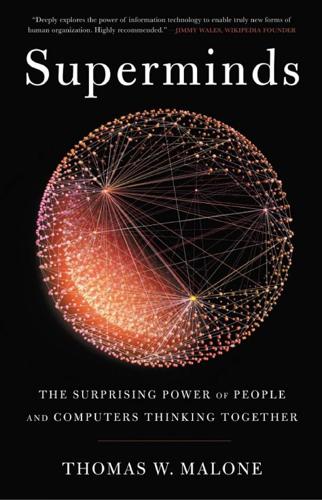
Superminds: The Surprising Power of People and Computers Thinking Together
by
Thomas W. Malone
Published 14 May 2018
The contests where people compete to come up with basic ideas for improving things like transportation and electricity are called basic contests. Higher-level contests, where people compete to combine these basic proposals into national and global climate action plans, are called integrated contests. For instance, one of our winning global proposals suggested that a digital currency called solar dollars (based on Bitcoin-like blockchain technology) could be used to encourage emission reductions in countries around the world. This global proposal contained subproposals for how the major countries and regions of the world could contribute to the overall plan (see the following illustration). The subproposal for Europe, for example, suggested that Greece could be used as a test laboratory for renewable energy approaches that could be used all over Europe.
…
Carbon Price 2014”), Climate CoLab, https://climatecolab.org/contests/2014/us-carbon-price/c/proposal/1305801; “GreenCoin: Start Pricing Carbon Without Governments” (proposal for 2015 Proposal Workspace), Climate CoLab, https://climatecolab.org/contests/2014/2015-proposal-workspace/c/proposal/1324607. 5. Christian Catalini and Joshua S. Gans, “Some Simple Economics of the Blockchain” (working paper no. 5191-16, MIT Sloan School of Management, Cambridge, MA, November 23, 2016), 9, 24, https://ssrn.com/abstract=2874598. 6. Monica Hesse, “Crisis Mapping Brings Online Tool to Haitian Disaster Relief Effort,” Washington Post, January 16, 2010, http://www.washingtonpost.com/wp-dyn/content/article/2010/01/15/AR2010011502650.html. 7.
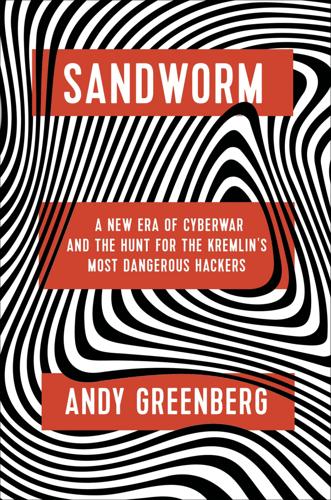
Sandworm: A New Era of Cyberwar and the Hunt for the Kremlin's Most Dangerous Hackers
by
Andy Greenberg
Published 5 Nov 2019
* * * ■ In the early days after the Shadow Brokers’ post, it appeared that the group’s operation might be a bust. They did not get their one-million-bitcoin jackpot. Instead, in the first twenty-four hours of their auction, they received a grand total of $937.15, according to the Bitcoin blockchain’s public record of transactions. But the auction nonetheless served to create buzz around the NSA’s security breach. Experts largely agreed the profit motive was likely a cover story, that the Shadow Brokers were probably state-sponsored hackers, not cybercriminals, and they were seeking above all to embarrass the NSA.

Reset
by
Ronald J. Deibert
Published 14 Aug 2020
A major study by a team of researchers at Canada’s McMaster University found that the biggest contributions to carbon emissions are likely going to come from the explosion in smartphone usage, although the largest culprits right now are still data centres (45 percent of the total information and communications technology carbon footprint), followed by communications networks (24 percent).347 Probably the most perverse example of energy consumption and waste related to digital technologies comes from the digital currency market: Bitcoin. A Bitcoin is a virtual commodity that exists only as binary digits in a distributed digital ledger called a blockchain. Unlike paper bills or coins, Bitcoins have no physical quality. And unlike the credit card issued by your bank, the currency is entirely decentralized, without any intermediaries. New Bitcoin currency is generated by a “mining” process that entails solving complex mathematical problems, which in turn require the use of vast and energy-intensive computing resources to solve.
…
Bitcoin energy consumption index. Retrieved May 27, 2020, from https://digiconomist.net/bitcoin-energy-consumption; De Vries, A. (2018). Bitcoin’s growing energy problem. Joule, 2(5), 801-805; Truby, J. (2018). Decarbonizing Bitcoin: Law and policy choices for reducing the energy consumption of Blockchain technologies and digital currencies. Energy research & social science, 44, 399-410. The electricity consumed by the Bitcoin network in one year could power all the teakettles used to boil water in the entire United Kingdom for nineteen years: Cambridge Centre for Alternative Finance. (n.d.).
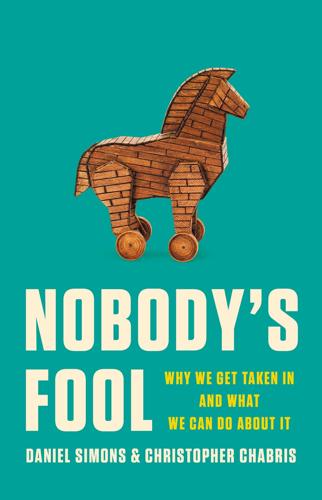
Nobody's Fool: Why We Get Taken in and What We Can Do About It
by
Daniel Simons
and
Christopher Chabris
Published 10 Jul 2023
When investing with a large firm like Morgan Stanley, Fidelity, or Vanguard, we probably don’t need to spend much time or energy making sure it won’t steal our life savings. But if we’re considering investing in new, unregulated markets like cryptocurrency, we should check carefully. Unless you are a blockchain expert with a sophisticated understanding of math and computer science, investing in crypto means you likely are being influenced by the hook of familiarity and hoping that following a herd will lead you to riches. Would you regret it if the crypto market crashed (again)? Do you have any actual evidence that it won’t?
…
Glenn Arcano pleaded guilty to participating in the conspiracy to defraud BitConnect investors [https://www.justice.gov/opa/pr/56-million-seized-cryptocurrency-being-sold-first-step-compensate-victims-bitconnect-fraud]. 2. The original publication on Bitcoin is S. Nakamoto, Bitcoin: A Peer-to-Peer Electronic Cash System, October 31, 2008 [bitcoin.org/bitcoin.pdf]. See also F. Schär and A. Berentsen, Bitcoin, Blockchain, and Cryptoassets: A Comprehensive Introduction (Cambridge, MA: MIT Press, 2020). 3. S. Williams, “The 20 Largest Cryptocurrencies by Market Cap,” The Motley Fool, December 15, 2017 [https://www.fool.com/investing/2017/07/20/the-20-largest-cryptocurrencies-by-market-cap.aspx]. 4. T. Frankel, The Ponzi Scheme Puzzle (Oxford, UK: Oxford University Press, 2012); see especially ch. 1 for a brief account of Ponzi’s original con.
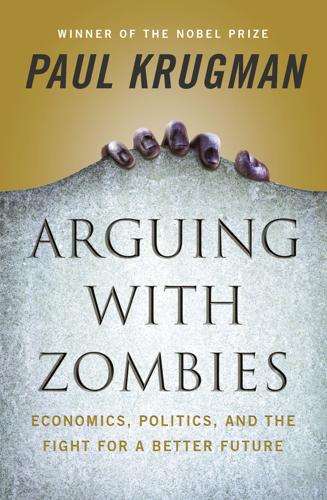
Arguing With Zombies: Economics, Politics, and the Fight for a Better Future
by
Paul Krugman
Published 28 Jan 2020
I’m keeping up with the news, more or less, but am only occasionally and unpredictably in a place and condition where I can actually write something and post it. But this is one of those times, and I thought I’d post some thoughts in advance of stuff I’ll be doing after I get back. Specifically, in a couple of weeks I’m going to play Emmanuel Goldstein—the designated enemy—at a conference on blockchain and all that. Hey, if you only speak to friendly audiences, you’re not challenging yourself enough. So I thought it might be worth explaining why I’m a cryptocurrency skeptic. It comes down to two things: transaction costs and the absence of tethering. Let me explain. If you look at the broad sweep of monetary history, there has been a clear direction of change over time: namely, one of reducing the frictions of doing business and the amount of real resources required to deal with those frictions.
…
I think it’s more likely than not, partly because of the gap between the messianic rhetoric of crypto and the much more mundane real possibilities. That is, there might be a potential equilibrium in which Bitcoin (although probably not other cryptocurrencies) remain in use mainly for black market transactions and tax evasion, but that equilibrium, if it exists, would be hard to get to from here: once the dream of a blockchained future dies, the disappointment will probably collapse the whole thing. So that’s why I’m a crypto skeptic. Could I be wrong? Of course. But if you want to argue that I’m wrong, please answer the question, what problem does cryptocurrency solve? Don’t just try to shout down the skeptics with a mixture of technobabble and libertarian derp.

Human Frontiers: The Future of Big Ideas in an Age of Small Thinking
by
Michael Bhaskar
Published 2 Nov 2021
Welcome to the great meta-problem of the twenty-first century. We're at a curious juncture of history. To open the latest Wired, Nature or cultural review is to be treated to a parade of wonders: extraordinary new discoveries, products and achievements. From quantum biology, nanotechnology and exoplanet astronomy to nudge unit governance, blockchain and virtual worlds, surely this is a uniquely fecund moment when the frontier is expanding at a record and still accelerating pace. Mounting evidence suggests the opposite. A lively debate is calling into question these dominant assumptions about our place in history and the default nature of progress.
…
We have private companies like SpaceX but precious little crewed space flight; we have the Standard Model of physics but haven't gone beyond it; we have libraries of humanities research that no one reads; we have a decades-long war on cancer, but still have cancer. Our time comes with a litany of big ideas: blockchain, mobile social networks, supermaterials like graphene, deep learning neural networks, quantum biology, massive multiplayer online games, molecular machines, behavioural economics, algorithmic trading, gravitational wave and exoplanet astronomy, parametric architecture, e-sports, the ending of taboos around gender and sexuality, to name a few.

Future Crimes: Everything Is Connected, Everyone Is Vulnerable and What We Can Do About It
by
Marc Goodman
Published 24 Feb 2015
People can send Bitcoins to each other using computers or mobile apps, where coins are stored in “digital wallets.” Bitcoins can be directly exchanged between users anywhere in the world using unique alphanumeric identifiers, akin to e-mail addresses, and there are no transaction fees. Anytime a purchase takes place, it is recorded in a public ledger known as the “blockchain,” which ensures no duplicate transactions are permitted. Bitcoin is the world’s largest crypto currency, so-called because it uses “cryptography to regulate the creation and transfer of money, rather than relying on central authorities.” Bitcoin acceptance is growing rapidly, and it is possible to use Bitcoins to buy cupcakes in San Francisco, cocktails in Manhattan, and a Subway sandwich in Allentown.
…
Though Bitcoin, like all forms of money, can be used for both legal and illegal purposes, its encryption techniques and relative anonymity make it strongly attractive to criminals. Because funds are not stored in a central location, accounts cannot readily be seized or frozen by police, and tracing the transactions recorded in the blockchain is significantly more complex than serving a subpoena on a local bank operating within traditionally regulated financial networks. As a result, nearly all of the Dark Web’s illicit commerce is facilitated through alternative currency systems. People do not send paper checks or use credit cards in their own names to buy meth and child sexual abuse images.
…
Though Liberty Reserve, like Silk Road, was ultimately taken down by the FBI and its founder arrested, many competitors have sprung up in its place, and these new marketplaces generally have decentralized peer-to-peer structures and favor next-generation iterations of crypto currencies. They promise not just pseudonymity as recorded publicly in the Bitcoin blockchain but completely untraceable anonymity. One such new currency, Darkcoin, can be viewed as the ultrasecret shadowy cousin of Bitcoin, created specifically to obfuscate users’ purchases by combining any single transaction with those of other users so that payments cannot be tied to any particular individual.
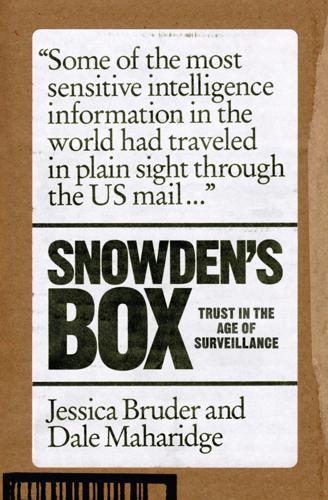
Snowden's Box: Trust in the Age of Surveillance
by
Jessica Bruder
and
Dale Maharidge
Published 29 Mar 2020
His public key had been vouched for by some of the most respected figures in the world of digital privacy. That made it a reliable node in the crowdsourced, decentralized verification system that encryption users call a “web of trust.” It’s easy to go down a rabbit hole when you’re talking about how to build trust in the digital world. That’s why so much writing about blockchain is inscrutable. But the basic principle behind using a web of trust to leverage credibility is simple. In an online article explaining why it’s so important, Henk Penning, a developer at Utrecht University, arrived at a conclusion that would please fans of The Matrix. He wrote: What can I trust, ultimately?
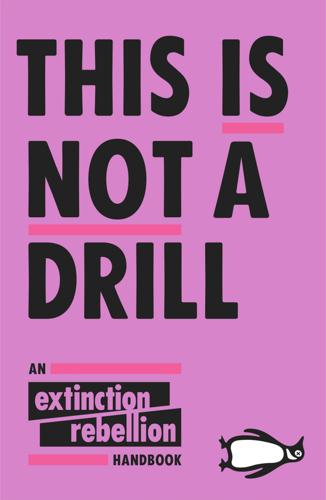
This Is Not a Drill: An Extinction Rebellion Handbook
by
Extinction Rebellion
Published 12 Jun 2019
It was by far the largest fee I had ever been offered for a talk – about half my annual professor’s salary – all to deliver some insight on the subject of ‘the future of technology’. I’ve never liked talking about the future. The Q&A sessions always end up more like parlour games where I’m asked to opine on the latest technology buzzwords as if they were ticker symbols for potential investments: blockchain, 3D printing, CRISPR. The audiences are rarely interested in learning about these technologies or their potential impacts beyond the binary choice of whether or not to invest in them. But money talks, so I took the gig. After I arrived, I was ushered into what I thought was the Green Room. But instead of being wired with a microphone or taken to a stage, I just sat there at a plain round table as my audience was brought to me: five super-wealthy guys – yes, all men – from the upper echelon of the hedge-fund world.
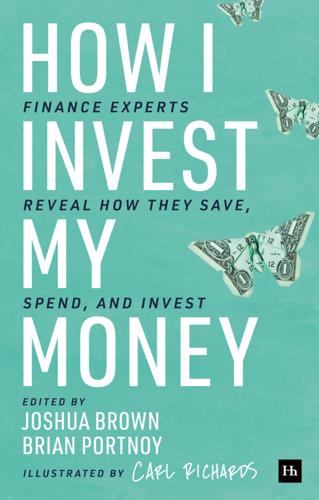
How I Invest My Money: Finance Experts Reveal How They Save, Spend, and Invest
by
Brian Portnoy
and
Joshua Brown
Published 17 Nov 2020
In my case, my bias in favor of hard assets combined with my experience during Internet 1.0 as a co-inventor of Priceline.com, led me to begin investing in Bitcoin and other cryptocurrencies three years ago. I have since also started a cryptocurrency hedge fund with two other partners who are veterans in the blockchain/crypto space and are members of the Satoshi Roundtable. Bitcoin has been the single best performing asset of the past decade by a mile. The law of giving People who are overly obsessed with their personal investments (e.g., watching their portfolio 10–20 times per day or similar) may achieve decent results in the short or medium term, but long term they tend to self-destruct (their portfolios/net worth that is) by being too close to it, too emotional, and too tight-fisted about their money.

The Cosmopolites: The Coming of the Global Citizen
by
Atossa Araxia Abrahamian
Published 14 Jul 2015
Bitcoin is a decentralized digital payment system that is entirely independent of, and unregulated by, banks. Created in 2009 by someone using the pseudonym Satoshi Nakamoto, Bitcoins are “mined” by computers that take records of previous transactions. The computers turn the records into code and add them to a “blockchain,” or a constantly evolving ledger that’s stored on every Bitcoin-holder’s computer. That means that goods can be bought anonymously, without the transactions ever getting traced back to either the buyer or the seller. It also means money can be transferred internationally without any bank fees.
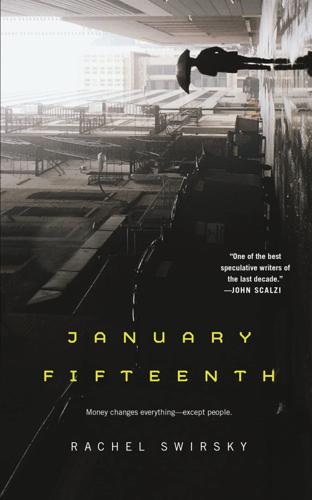
January Fifteenth
by
Rachel Swirsky
Published 13 Jun 2022
Dad in particular—he could not handle risks to his income, big or small. I mean, I get it. When I was a kid, he’d wake up from nightmares about us losing our house the way his parents lost theirs. One of Dad’s friends from medical school lost a lot of money in a breach during the quantum transition . . . then after the blockchain crash, Dad started getting really paranoid. . . .” Janelle trailed off. “Yeah?” prompted Nevaeh. Janelle shrugged. “We still talked. I just stopped visiting. I lived across the country anyway. I wavved every couple weeks, remember? It hasn’t been that long.” “I remember,” Nevaeh said. “I never had anything to say.”

Greater: Britain After the Storm
by
Penny Mordaunt
and
Chris Lewis
Published 19 May 2021
It is about to happen again.25,26 Another effect of the internet is that the control of money has passed from central banks to other, less recognisable, and perhaps less reliable, providers. This creates an unprecedented opportunity for those who wish to ‘get off the grid’, for compliance or criminal reasons, for instance. This is the case with new digital technologies such as bitcoin, which use blockchain security. Blockchain offers an ultimate lock for a transaction, providing transparency and clarity as to the provenance and destination of funding. In this instance, it could be argued that one of the reasons that banking has been slow to adopt technologies like this is precisely because it provides the ultimate in terms of transparency.
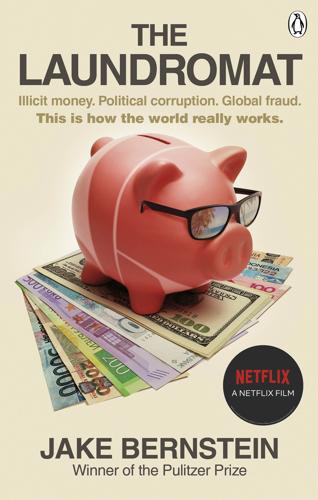
The Laundromat : Inside the Panama Papers, Illicit Money Networks, and the Global Elite
by
Jake Bernstein
Published 14 Oct 2019
Simpson, “The Business Deals That Could Imperil Trump,” New York Times, April 21, 2018, https://www.nytimes.com/2018/04/21/opinion/sunday/trump-business-mueller-money-laundering.html. 42 to make the island a center for cryptocurrencies: Kai Sedgwick, “Malta Prime Minister Welcomes Binance to Its ‘Blockchain Island,’” Bitcoin.com, March 23, 2018, https://news.bitcoin.com/malta-prime-minister-welcomes-binance-to-its-blockchain-island/. 43 collected more than $1.2 billion in evaded taxes: Douglas Dalby and Amy Wilson-Chapman, “Panama Papers helps recover more than $1.2 billion around the world,” ICIJ, April 3, 2019, https://www.icij.org/investigations/panama-papers/panama-papers-helps-recover-more-than-1-2-billion-around-the-world/. 44 more than 150 government and corporate inquiries: Will Fitzgibbon and Emilia Diaz-Struck, “Panama Papers have had historic global effects—and the impacts keep coming,” The Center for Public Integrity, December 1, 2016, https://www.publicintegrity.org/2016/12/01/20500/panama-papers-have-had-historic-global-effects-and-impacts-keep-coming. 45 In March, Mossfon announced: “Comunicado de Cierre de Operaciones,” Mos-sack Fonseca, March 14, 2018. 46 they couldn’t be found: Olmedo Rodriguez, “Fiscal detiene a siete personas por caso Mossack Fonseca,” La Prensa, May 23, 2018, https://impresa.prensa.com/panorama/Fiscal-detiene-personas-caso-MF_0_5036496409.html. 47 more than a million additional files: Will Fitzgibbon, “New Panama Papers Leak Reveals Firm’s Chaotic Scramble to Identify Clients, Save Business Amid Global Fallout,” ICIJ, June 20, 2018, https://www.icij.org/investigations/panama-papers/new-panama-papers-leak-reveals-mossack-fonsecas-chaotic-scramble/. 48 the firm knew the names of the owners: Nicholas Nehamas, “‘A Mickey Mouse operation’: How Panama Papers law firm dumped clients, lost Miami office,” Miami Herald, June 20, 2018, http://www.miamiherald.com/latest-news/article213423514.html. 49 “I don’t care”: Fitzgibbon, “New Panama Papers Leak Reveals Firm’s Chaotic Scramble to Identify Clients, Save Business Amid Global Fallout.” 50 “we stayed a client”: Email from Johan Van den Braber to Mossack Fonseca & Co.
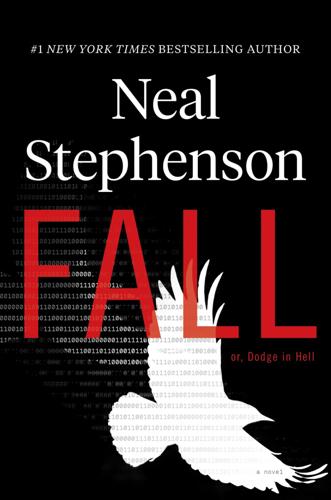
Fall; Or, Dodge in Hell
by
Neal Stephenson
Published 3 Jun 2019
They don’t have to know each other. When they have to communicate, they do it—” Sophia closed her eyes momentarily, maybe to conceal an eye-roll. “They do it the way all communication happens nowadays, which is through distributed-ledger-type stuff.” “Blockchain?” Zula asked. Actively suppressing another eye-roll, Sophia answered, “Way, way more efficient algorithms that do what blockchain was supposed to do twenty years ago. But still requiring a lot of fast computation.” “So, if we think of it”—and here Zula held out a hand as if to deflect any objections—“if we imagine, just for the sake of argument, that we have one process, what we used to call a computer program, that does one thing only, which is to simulate the workings of one single neuron in a brain.
…
“I wasn’t born yet. But yeah. That is basically the story.” A new thought had crossed Julian’s mind. “Was this how C-plus and Maeve became interested in PURDAH and VEILs? Because of all these hassles over this one paper document?” Sophia shook her head. “I would say not. I mean, this was all after the blockchain craze, and all of the issues related to anonymity and privacy on the Old Internet.” “Mmm,” Julian said, going a little passive-aggressive on her. “No, seriously,” she insisted. “Again, it goes back to the language in the will. One of the stated missions of the foundation was to work on applications of gaming technology outside of what was conventionally thought of as the game industry.
…
You could link it to your actual legal name and face if you wanted, or not. And either way you could punch it into your VEIL system so that as you walked down the street, computer vision systems, even though they couldn’t recognize your actual face, could look up your PURDAH and from there see any activity blockchained to it. All three of the laughing, coffee-toting, VEIL-wearing schoolgirls had done this as a matter of course. It was probably a free-and-mandatory service offered by their prep school. The security cameras on the front of Zula’s condo building had looked them up. For that matter, Zula’s glasses had outward-looking cameras that could have done the same thing, had she shown any interest.
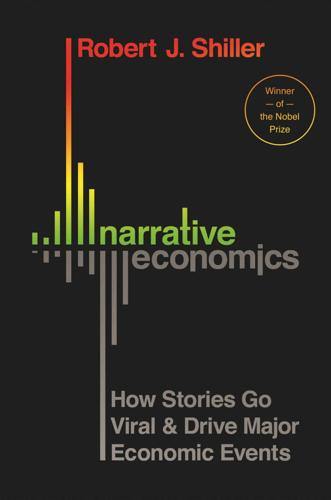
Narrative Economics: How Stories Go Viral and Drive Major Economic Events
by
Robert J. Shiller
Published 14 Oct 2019
In reality, Bitcoin was meant to function as a monetary weapon, as a cryptocurrency poised to undermine authority.5 Most Bitcoin enthusiasts might not describe their enthusiasm in such extreme terms, but this passage seems to capture a central element of their narrative. Both cryptocurrencies and blockchains (the accounting systems for the cryptocurrencies, which are by design maintained democratically and anonymously by large numbers of individuals and supposedly beyond the regulation of any government) seem to have great emotional appeal for some people, kindling deep feelings about their position and role in society.
…
See also gold standard Bitcoin narrative, xviii, 3–11; anarchism and, 5–7; bimetallism and, 108, 161–62, 171; cause of increased value and, 72; contagion of, 21–23; cosmopolitan culture and, 4, 11, 87; cryptocurrencies competing with, 92; epidemic theory applied to, 21–23; fading by 2013, 76; fascination with narratives about money and, 173; fear of inequality and, 8–9; the future and, 9–10, 87; geographic pattern of spread, 299; history of, 4; as human-interest story, 7–8; key features of, 87; mathematical concepts underlying, 5, 302n3; membership in world economy and, 11; as mystery story, 7, 8, 162; in news articles by year, 22, 22f; in news articles compared to relevant algorithms, 9–10; sale of Bitcoin in convenience stores and, 10; similarity to gold standard and bimetallism narratives, 108–9; as successful economic narrative, 3–4; technocracy movement and, 193; uncertain truth of, 96; volatility of value in, 5, 10. See also Nakamoto, Satoshi Bix, Amy Sue, 186–87 Blade Runner (film), 203 Blanc, Louis, 102 Blinder, Alan, 281 blockchains, 6 blue jeans, 147–48, 149 blue sky laws, 220, 221 Booker, Christopher, 16 book jackets, 60–61 Boulding, Kenneth E., xv–xvi Box, George E. P., 295 Boycott, Charles C., 239–40 The Boycott in American Trade Unions (Wolman), 241 boycott narrative, 239–43; in 1973–75 recession, 256–57; contributing to 1920–21 depression, 249; going viral, 241; during Great Depression, 254; origins of, 239–40; profiteer stories in World War I and, 241–42, 246; recurring periodically, 241; during world financial crisis of 2007–9, 257; after World War II, 255.
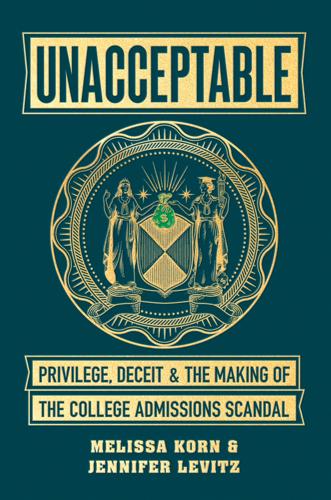
Unacceptable: Privilege, Deceit & the Making of the College Admissions Scandal
by
Melissa Korn
and
Jennifer Levitz
Published 20 Jul 2020
Klapper, case no. 19-cr-10017-IT. an ordinary water polo player: Government’s sentencing memo for Agustin Huneeus. McGlashan was a regular at Davos: See, for example, interview with Erik Schatzker, “McGlashan Seeing Deals That Have Dimensions of Blockchain,” Bloomberg, January 23, 2018, https://www.bloomberg.com/news/videos/2018-01-23/mcglashan-seeing-deals-that-have-dimensions-of-blockchain-video. after hiring Singer in spring 2017: Government’s opposition filing. He’d met Singer through a college friend: Letter from Agustin Huneeus to U.S. District Judge Indira Talwani. Document 494, Exhibit A, Tab 1, filed September 27, 2019, in USA v.
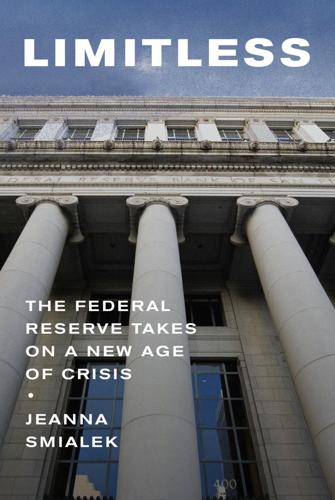
Limitless: The Federal Reserve Takes on a New Age of Crisis
by
Jeanna Smialek
Published 27 Feb 2023
The Fed’s future role in markets and society also preoccupied Brainard, which partly reflected the committees she had been assigned to at the Board and partly reflected her own interests. She held regular market intelligence calls with Wall Street analysts to understand the financial stability landscape, and she tended to catch on to trends quickly. She began speaking about blockchain technologies in 2016, before central bankers were widely focused on them, and before long became focused on the Fed’s potential role in developing and policing digital currency technologies.[32] She was the governor who most believed that the central bank had responsibility for understanding and talking about climate change’s economic and financial risks, a topic many of her colleagues kept at a careful distance, given its political divisiveness.[*8] Owing in large part to her thoroughness and competence, Brainard maintained the respect of her colleagues, even though she was out of step with them ideologically—in Powell’s case, slightly, and in Quarles’s, very.
…
“Joe” Biden: approval rating of, 283; Campbell as part of administration, 342n28; climate policy under, 269–70, 270n; continuation of relief programs under, 256, 260; election of, 253; mask wearing by, 219; racial unemployment gap focus of, 234; renomination of Powell by, 294–8, 299; stimulus checks sent by, 280–3, 281n; transfer of power and transition to, 281, 281n Bies, Susan, 92 Bitcoin, 272, 291 Black Lives Matter protests, 220–3 BlackRock, 189, 208, 209–11, 344–5n11 blockchain technology, 126 Boeing, 248, 248n bonds/Treasury securities: buying by Fed to support economy, 4–5, 20, 21, 22, 72–4, 72n, 93, 113–14, 113n; buying program during 2008 crisis, 7, 7n, 25, 32n, 93, 98, 113n, 285; buying program during pandemic, 33–6, 149–50, 152, 167, 182, 187, 189–90, 210, 263, 285–7, 286n, 301, 335n7; buying program during World War I, 61; consequences of Fed purchases, 5, 113–14; foreign governments’ dumping of Treasury holdings, 197–8; impact of pandemic on market, 141, 147–50, 343n27, 343n35; interest rates and bond-buying program, 32n, 93; low rates on, 115; normal function and activities related to, 146–7; QE programs, 5, 21, 32n, 113–14, 113n, 189–90, 225, 335n7; safety of Treasury securities, 30–2, 147; sales of Treasury securities and the pandemic, 29–35; Salomon Brothers and changes to buying and selling of, 16–17; trade wars and mass bond buying, 8 Bostic, Raphael, 223, 230 Bowman, Michelle, 154, 154n Brady, Nicholas F., 16 Brainard, Lael: background, education, and expertise of, 122–3; bipartisan qualities of, 127, 271, 300; career of, 122–3; climate conference speech of, 268; community outreach events of, 233; digital currency and role of Fed, position on, 270, 272–5; Fed Listens outreach branding by, 132; governor role of, 6, 122, 124–8; influence of, 126–7; loyalty of and higher position for, 271–2; Main Street program role of, 212–14, 247; marriage and family of, 123–4; monetary policy ideology of, 125–8, 297, 297n; opposition to regulatory changes by, 122, 125–6, 127; pandemic rescue program role of, 162, 168, 204, 206; political donation of, 124–5, 342n31; politics of, 122, 124–5, 127, 127n, 268, 270–1; reputation of and respect for, 124–5, 126, 162, 214, 271–2; suspension of bank payments, opinion about, 215; Treasury secretary candidacy potential for, 271; trust between and working relationship of Powell, Quarles, and, 127–8; trust between and working relationship with Powell, 300; vice-chair position of, 6, 299; wealth of, 133 Bretton Woods meeting and monetary system, 75–6 Buffet, Warren, 16, 24 Bullard, James B.
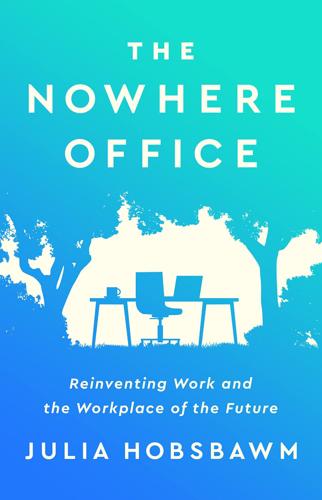
The Nowhere Office: Reinventing Work and the Workplace of the Future
by
Julia Hobsbawm
Published 11 Apr 2022
I talked to people working in the creative industries, those working in hospital offices, in back-end operations supporting front-line systems, in one-person start-ups in the Generation Z demographic and Generation X ‘solopreneurs’. They helped me build a picture of what working life means to them now and how it could be shaped in the near future. We never see the future as clearly as we see the past. It is as if the more seismic the shift the less we anticipate it until it has arrived. For instance, blockchain technology is upending finance as we know it and decentralising centuries of controlled banking – but people said it would never happen. I was one of the naysayers against the driverless car but no one would bet against it now, nor electric vehicles replacing petrol-driven ones. The Nowhere Office is not a blip or a trend which is going to be reversed.

Lifespan: Why We Age—and Why We Don't Have To
by
David A. Sinclair
and
Matthew D. Laplante
Published 9 Sep 2019
That said, this particular company was also promoting the idea of a “coin,” or digital currency, not for investment or as a security, according to the writer, but to incentivize individuals to share their genomic data with scientists. “The underlying idea is to incentivize users to make their personal genomic data available for biomedical and health-related research for the greater good of medical discovery.” B. V. Bigelow, “Luna DNA Uses Blockchain to Share Genomic Data as a ‘Public Benefit,’ ” Exome, January 22, 2018, https://xconomy.com/san-diego/2018/01/22/luna-dna-uses-blockchain-to-share-genomic-data-as-a-public-benefit/. 4. S. W. H. Lee, N. Chaiyakunapruk, and N. M. Lai, “What G6PD-Deficient Individuals Should Really Avoid,” British Journal of Clinical Pharmacology 83, no. 1 (January 2017): 211–12, https://www.ncbi.nlm.nih.gov/pmc/articles/PMC5338146/; “Glucose-6-Phosphate Dehydrogenase Deficiency,” MedlinePlus, https://medlineplus.gov/ency/article/000528.htm. 5.
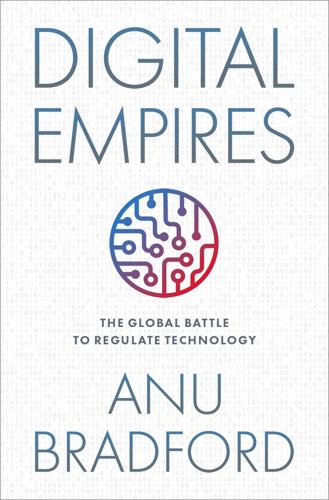
Digital Empires: The Global Battle to Regulate Technology
by
Anu Bradford
Published 25 Sep 2023
As a result, China needs to cultivate relationships across the developing world with countries that are still likely to allow Chinese companies to manifest their global ambitions. This strong government presence in DSR projects has raised fears that China might also be leveraging the DSR toward geopolitical ends. With the DSR, China can gain more influence over standards for key technologies such as artificial intelligence, robotics, the Internet of Things, and blockchain.16 This gives the Chinese government not just an economic advantage but also a strategic advantage over the US and other geopolitical rivals. The DSR further grants Chinese companies access to large pools of data around the world, including, in some instances, to data that is politically sensitive or geostrategically valuable.
…
It states that “this approach aligns with the advice of expert authorities, such as that of the Council of Europe’s Commissioner of Human Rights.”167 In relation to facial recognition, the AHRC also endorsed the risk-based approach taken by the Council of Europe’s Directorate General of Human Rights and the Rule of Law’s in their Guidelines of Facial Recognition.168 Australia may further continue to develop its AI legislation in close cooperation with the EU after the two jurisdictions launched a digital economy and technology dialogue to promote mutual cooperation “based on shared values” in areas such as AI and blockchain.169 Until recently, the US has been focused on maintaining its lead over China in the AI race and warned the EU against overregulating AI. In January 2020, the White House stated that “Europe and our allies should avoid heavy handed innovation-killing models,” while adding that “the best way to counter authoritarian uses of AI is to make sure America and our international partners remain the global hubs of innovation.”170 These statements underscore the US’s view that emphasizes clear benefits of the American market-driven model over the European rights-driven model.
…
A Medium Corporation, 76–77 Abdulemam, Ali, 284 Acacia, 204–5 ACCC (Australian Competition and Consumer Commission), 334, 341, 343–44 Accenture, 136–37 Act on Improvement of Transparency and Fairness in Trading on Specified Digital Platforms (TFDPA) (Japan), 346–47 Act on the Protection of Personal Information (Japan), 333–34 Adobe, 341 AdSense program (Google), 243 advertising AdSense program (Google), 243 Digital Advertising Tax (Maryland), 239–40 on Facebook, 154–55, 260, 384 political, 66 targeted, 382 Afghanistan, 274, 282 Africa, 261, 273, 297–300. see also specific countries by name Pakistan East Africa Cable Express, 300 Silicon Valley sites, 263 African Union (AU), 18–19, 318 AFSL (Anti-Foreign Sanctions Law) (China), 202–3 Agency for Global Media, 276–77 AHRC (Australian Human Rights Commission), 350–51 AI. see artificial intelligence AI Act (EU), 114, 144–45 AI Regulation (EU), 130 AirPods (Apple), 261 Alexander, Keith, 66–67 Algeria, 317–18 Alibaba, 108, 154–55 antitrust fines, 94, 98–99, 347–48, 391 Chinese state support, 8–9, 71, 96, 391–92 compliance with Chinese regulations, 391 DSR projects, 294–95, 296 e-commerce operations, 155, 300 global influence, 70–71, 73, 208–9, 262–63, 293 Memorandum of Understanding with Pakistan Trade Development Authority, 300 prosperity initiatives, 98–99 US audits, 177 US funding, 93–94 VIE structure, 174–75 Allison, Graham, 216–17 Allow States and Victims to Fight Online Sex Trafficking Act (FOSTA) (US), 51–52, 53–54, 55 Alphabet, 153–54 Amari, Akira, 316–17 Amazon, 108, 137 acquisitions, 2, 50–51 annual revenues, 2 antitrust investigations, 224, 242–44, 249, 345 China Books portal, 159–60 compliance with Chinese laws and regulations, 155, 159–61 e-commerce operations, 155, 262 EU market, 328 European headquarters, 142–43 global influence, 133–34, 259–60, 262–63 lobbying expenditures, 55–56 market capitalization, 2 monopolistic behavior, 53–54 Safe Harbor agreement, 229–30 tax payments, 126–27, 238–39 Amazon Prime Video, 372 Amazon Warehouse Services, 262 Amazon Web Services (AWS), 155, 160 Amazon.cn, 160 AMD, 247 America First policy, 213 American Chamber of Commerce, 357 American Civil Liberties Union (ACLU), 46, 355–56 American Innovation and Choice Online Act (US), 53–54 American market-driven regulatory model, 6–10, 21–22, 23–24, 28–29, 33–68, 91–94, 106–7, 131–36, 221–54, 366–69 decline, 361–64 global influence, 16–20, 257–89 Amnesty International, 78–79, 162–63 Andersen, Ross, 86 Andorra, 333–34 Android OS (Google), 153–54, 189–90, 243, 344–45 Anonymous.Kollektiv, 280–81 Ant Group, 71, 94, 96, 175, 300 anti-censorship principles, 267–68, 270–76 Anti-Foreign Sanctions Law (AFSL) (China), 202–3 Anti-Google Law (Telecommunications Business Act 31) (South Korea), 347 Anti-Monopoly Guidelines (China), 94–95, 347–48 Anti-Monopoly Law (China), 204 Anti-Sanctions Law (China), 200 antitrust regulation Brussels effect in, 342–48 Chinese laws and fines, 71, 94 enforcement of, 2, 5, 53–55, 140, 244–45, 358 EU law, 125–26, 140, 224, 242–50, 342–48 US law, 50–51, 53–54, 63–64 AOL, 46 APIG, 123 Apple, 33–34, 54–55, 108 acquisitions, 2, 50–51 AirPods, 261 annual revenue, 2 anti-tracking measures, 382–83 antitrust investigations, 242–45, 247, 249, 345, 347, 358 App Store, 377–78 App Tracking Transparency tool, 382–83 child protection systems, 39–40 Chinese App Store, 78–79, 153, 156–57 compliance with Chinese laws and regulations, 149–50, 151, 153, 156–57, 161, 178 compliance with EU laws and regulations, 324–25 compliance with Russian laws and regulations, 163, 312, 338 content moderation, 338, 341, 377–78 core values, 149 data collection, 61 data privacy policy, 149, 324, 330, 382–83 disinformation code, 341 EU market, 328 European headquarters, 142–43 global influence, 259–60, 261 government battles, 13–15 iCloud operations, 153 iMac, 59 iOS 15 phone, 39–40 iPad, 153 iPhone, 59, 133–34, 153, 215–16, 261, 382–83 lobbying activity, 55–56, 356–57 Mac, 153 market capitalization, 2 monopolistic behavior, 53–54 neuralMatch, 39–40 Russian law against, 312 Safe Harbor data transfer agreement, 229–30 sales in China, 153 sales in Europe, 236 Siri, 59 tax payments, 126–28, 236–37, 238–39, 243–44, 245 Weather app, 338 Apple Maps, 156–57, 338 Apple Pay, 153 Apple Store, 358 Apple Watch, 156–57, 261 Applied Materials, 204–5 apps Apple’s Chinese App Store, 156–57 Chinese, 165–72 Colorful Balloons (Facebook), 158–59 Quran, 156–57 Russian, 312 Smart Voting, 163 Weather (Apple), 338 Arab countries, 267–68 Arab Spring, 272, 285–86 Argentina, 260, 333–34 ARPANET, 59 artificial intelligence (AI) AI Act (EU), 114, 144–45 Chinese, 99–100, 102, 180–81, 208–9, 210–11, 295–96, 315–16 Digital Silk Road (DSR) projects, 296 Ethics Guidelines for Trustworthy AI (EU), 350–51 facial recognition, 138 gait recognition, 101 Global Artificial Intelligence Industry Data Report, 210 Governance Principles for a New Generation of Artificial Intelligence (Chinese Ministry of Science and Technology), 92 Next Generation of Artificial Intelligence Development Plan (China), 75 Plan for Development of the New Generation of Artificial Intelligence (2017 AI Development Plan) (China), 208–9 protections against harmful applications of, 113–15 regulation of, 15–16, 142, 251–52, 337, 348–53 research and development, 197, 374–75 surveillance operations, 85, 293, 315–16 tech standards, 305–6 US–China tech war, 186–87, 207–11 VC funding, 209–10 Asia, 260–61, 300. see also specific countries by name Asia-Pacific Economic Group, 266–67 AU (African Union), 18–19, 318 Audiovisual Media Services Directive (EU), 123 Austin, Lloyd, 209 Australia, 337 AI Action Plan, 350–51 AI Ethics Framework, 350–51 anti-censorship principles, 267–68 antitrust regulation, 343–44, 345 Clean Network, 321 Code of Practice on Disinformation and Misinformation, 341–42 content moderation, 341–42 digital trade agreements, 322 news industry regulation, 351–52, 383 nonregulation principle, 266–68 Privacy Act, 334 relations with China, 197–98, 319–20 restrictions on Chinese tech companies, 193–94, 319–20 search engine market, 260–61 techno-democracy, 389–90 Australian Communications and Media Authority (ACMA), 341–42 Australian Competition and Consumer Commission (ACCC), 334, 341, 343–44 Australian Human Rights Commission (AHRC), 350–51 Austria, 126–27, 239, 242 authoritarian governments, 364–66 authoritarianism, 135, 388–89 beyond China, 308–13 digital, 77–78, 99, 290–323 automated driving, 208–9 autonomy, strategic, 132–34, 186 AWS (Amazon Web Services), 155, 160 Azure cloud-computing service (Microsoft), 154–55 B3W (Build Back Better World) initiative (G7), 321–22 Backpage, 367–68 Backpage.com, 51–52, 64 Bahrain, 284 Baidu, 73, 108, 153–54, 165, 208–9 American funding, 93–94 VIE structure, 174–75 Baker, Stewart, 233 Balkin, Jack, 53–54, 56–57 Bankruptcy Code (US), 374 Barbrook, Richard, 34 Barlow, John Perry, 36–37 Barreto, Alexandre, 344–45 Barshefsky, Charlene, 224 batteries, 134–35 Bazelon, Emily, 363–64 BeiDou Navigation Satellite System, 300 Beijing, China, 153 Beijing News, 160–61 Beijing Sinnet Technology, 160 Belarus, 285–86 Belgium, 142 Belt and Road Initiative (BRI) (China), 206, 294, 305, 321–22 Benkler, Yochai, 34–35 Berlin, Germany, 263 Bezos, Jeff, 374–75 Bhatia, Karan, 158 Biden, Joe approach toward Chinese companies, 193, 213 approach toward regulation, 53–55, 168–69 Build Back Better World (B3W) initiative, 321–22 China doctrine, 185, 213–14 Executive Order on Enhancing Safeguards for United States Signals Intelligence Activities, 235–36 foreign policy doctrine, 390 internet freedom agenda, 278–79 Big Data of Public Tranquility Project (Marseille), 296–97 bilibili, 165 Binding Corporate Rules, 231–32 Bing search engine (Microsoft), 154, 160–61, 282–83 bipolar world, 386–88 bit taxes, 286 #BlackLivesMatter movement, 41, 362–63 Blackstone, 204 Blinken, Anthony, 198–99, 278 blockchain, 295–96 Blocking Rules (Rules on Counteracting Unjustified Extra-territorial Application of Foreign Legislation and Other Measures) (China), 200, 202 Boeing, 275–76 Borrell, Josep, 111 Brazil, 344–45 BRICS Leaders Declaration, 303 Lei Geral de Proteção de Dados Pessoais, 335–36 WhatsApp users, 260 Bremmer, Ian, 259–60 Breton, Thierry, 105, 134, 234 Brexit campaign, 17–18, 120–21, 280 BRI (Belt and Road Initiative) (China), 206, 294, 305, 321–22 BRICS Leaders Declaration, 303 Brilliant, Myron, 246 Brin, Sergey, 374–75 Brookings Institution, 207–8, 282–83 Brussels effect, 324–26 in antitrust regulation, 342–48 in artificial intelligence (AI), 348–53 beyond privacy, 337–53 in content moderation, 337–42 countermeasures, 356–59 criticism of, 353–56 in data privacy policy, 326–36 in digital services taxes (DSTs), 352 foreign tech companies and governments’ concern with, 353–59 in news industry regulation, 351–52 Build Back Better World (B3W) initiative (G7), 321–22 Bulgaria, 144 Burma, 270–71, 274–75, 285–86 ByteDance, 14–15, 98–99, 165, 166–67, 175 Content Quality Center, 89 global influence, 70–71, 293–94 US funding, 93 CAC (Cyberspace Administration of China), 88–89, 173, 175 Cadence, 218 California, 40, 58, 63–64, 347 Northern District, 169 Silicon Valley, 7–8, 33–35, 42, 92–93, 263, 283–84 California Consumer Privacy Act (CCPA), 54–55, 333, 336 California effect, 332 California Privacy Rights Act (CPRA), 54–55, 333, 336 Cambridge Analytica, 4, 7–8, 66, 120–21, 251, 368–69 Cameron, Andy, 34 Canada antitrust regulation, 345 Clean Network, 321 data privacy, 331 data protection law, 333–34 digital services taxes (DSTs), 352 digital trade agreements, 322 entrepreneurship, 374 G7 relations, 321–22 relations with China, 197–98 restrictions on Chinese tech companies, 193–94 techno-democracy, 389–90 Canon, 263 Capital Markets Union (CMU), 373 capitalism digital, 6 surveillance, 4, 66, 135–36, 368–69 varieties of, 106–7 Carnegie Endowment for International Peace, 318–19 Cayman Islands, 92–93 CCP (Chinese Communist Party), 8, 18, 24–25, 69–70, 71, 73–74, 164, 166–67, 192–93, 196–97, 296 CCPA (California Consumer Privacy Act), 54–55, 333, 336 CDA. see Communications Decency Act CEIEC (China National Electronics Import & Export Corporation), 301 cellphones, 274. see also smartphones censorship, 14–15, 76–77, 141. see also content moderation anti-censorship principles, 267–68, 270–76 in Apple’s Chinese App Store, 156–57 Chinese measures, 77–85, 150–51, 152, 154, 155–64 human, 83 optimal, 80–81 porous, 81–82 proactive, 14–15 Russian measures, 309–10 state control by, 78–85 Center for Democracy & Technology (CDT), 232, 357 Central Party School, 80–81 CFIUS (Committee on Foreign Investment in the United States), 195–96 Charanzovà, Dita, 249 Charter of Fundamental Rights of the European Union (EU Charter), 110–11, 112, 116, 226 Chen, Gang, 196 Chen, Yuyu, 82 Chen Weiss, Jessica, 219 child protection systems, 39–40 Children’s Online Privacy Protection Act (COPPA) (US), 44–45 Chile, 266–67, 322 Chilecon Valley (Santiago), 263 China 50 Cent Army, 83 Administrative Measures for Internet Information Services, 88 advertising market, 154–55 AI operations, 99–100, 388–89 AI research, 180–81, 208–11 Anti-Foreign Sanctions Law (AFSL), 202–3 Anti-Monopoly Guidelines, 94–95, 347–48 Anti-Monopoly Law, 204 Anti-Sanctions Law, 200 antitrust regulation, 71, 94, 97–98, 200, 204, 347–48 Apple operations, 149–50, 261 battles with tech companies, 13–16 battles with US and EU, 11–13, 15–16, 21, 26, 27 Belt and Road Initiative (BRI), 206, 294, 305, 321–22 BRICS Leaders Declaration, 303 censorship measures, 77–91, 150–52, 154, 156–57, 163–64, 180–81, 274 Central Party School, 80–81 cloud-computing service market, 154 CN2 network, 275–76 “common prosperity”, 5, 71–72, 95–96, 98–99, 347–48 criticism of US internet freedom agenda, 284, 288–89 cyber development, 70 cyberattacks, 134 Cybersecurity Law, 79–80, 94–95, 175, 201–2 Cybersecurity Review Measures, 94–95 Cyberspace Administration of China (CAC), 88–89, 173, 175 data localization requirements, 330–31 Data Security Law (DSL), 79–80, 94–95, 175, 201–2 digital authoritarianism, 135, 290–323 digital influence, 297–302 digital protectionism, 72–77, 214 Digital Silk Road (DSR) initiative, 18, 20, 27–28, 294–97, 314, 316–17, 391–92 digital sovereignty, 215 disinformation campaigns, 282–83 dual circulation strategy, 206 e-commerce, 94–95, 155 Export Control Law (ECL), 200–3 exports, 290–323 Five-Year Plan (14th), 206 global influence, 20, 27–28, 289, 290–92, 293–308, 313–23 Great Firewall, 8–9, 78–79, 203–4, 275–76 Houston, Texas consulate, 302 human rights abuses, 100–1, 185, 190–91 influence strategy, 302–8 infrastructure, 20, 290–323 International Strategy for Cooperation on Cyberspace, 303–4 internet policy, 100, 180, 181 internet sovereignty, 288–89 limitations on foreign investment and operations in, 203–5 Made in China 2025 program, 74–75, 185–86, 214 Measures for the Security Review of Foreign Investments (FISR Measures), 203 Military-Civil Fusion strategy, 190–91, 196–97 Ministry of Commerce (MOFCOM), 200–1, 202, 203 Ministry of Foreign Affairs, 100–1 Ministry of Industry and Information Technology (MIIT), 306 Ministry of Public Security, 160 Ministry of Science and Technology, 92, 302 Ministry of State Security, 197–98 mobile payments, 96 National Development and Reform Commission (NDRC), 203 National People’s Congress (NPC), 73–74, 94–95, 201–2 national policy agenda, 73–74 national security concerns, 164–78 National Security Law, 79–80 Negative List, 203–4 Next Generation of Artificial Intelligence Development Plan, 75 Peace & Security Partnerships with the African Union, 318 People’s Liberation Army, 78–79 Personal Information Protection Law (PIPL), 91–92, 94–95, 175, 334–35 Plan for Development of the New Generation of Artificial Intelligence (2017 AI Development Plan), 208–9 political leadership, 70 propaganda campaigns, 282–83 recent tech crackdown, 94–99 regulations, 6–10, 16–20, 21, 23–25, 28–29, 57–63, 67, 69–104, 108, 131–36, 364–66, 387–88, 391 relations with African Union, 318 relations with Australia, 197–98, 319–20 relations with EU, 253–54 relations with Germany, 253, 321 relations with Russia, 310–13 restrictions on US tech companies, 76, 199–207 Rules on Counteracting Unjustified Extra-territorial Application of Foreign Legislation and Other Measures (Blocking Rules), 200, 202 science and technology diplomats, 302 search engine market, 153–54, 260–61 semiconductors, 211, 217–18 Sharp Eyes initiative, 4–5, 86 smart cities, 86 social credit system, 8–9, 87–88, 89–90 social media, 154–55, 312–13 societal security, 85 standards, 302–8 State Administration for Market Regulation (SAMR), 204, 347–48 State Administration of Radio and Television, 89 State Bureau of Surveying and Mapping, 156–57 state control, 85–88 state-controlled media, 84 State Council Information Office, 70 subsidies, 211, 217–18 support for UN, 303 Supreme People’s Court, 80 Supreme People’s Procuratorate, 80 surveillance operations, 4–5, 17, 61–62, 77–91, 188–89 tech entrepreneurs, 35 tech exports, 293 tech industry, 70–71, 72–75, 92–93, 97–98 technical standards, 291, 305–6 techno-autocracy, 389–90 techno-nationalism, 75–76 technological self-sufficiency, 73–75, 199–207 trade sanctions against, 185–86 Unreliable Entities List (UEL), 200–1, 218–19 US measures against, 187–99, 270–71 US tech companies’ battle with, 152–64 US–China relations, 74–75, 162–63, 171, 197–99, 323 US–China tech war, 10–11, 96–97, 103, 151–52, 164, 179–80, 183–220, 295, 361, 366, 386, 387 US–China trade war, 97, 185–86, 200 videoconferencing market, 154 wealth distribution, 95–96 China Books portal (Amazon), 159–60 China Daily, 84 China Development Bank, 194 China Initiative (US), 196–97 China International Book Trading Corp, 160 China International Telecommunications and Construction Corporation (CITCC), 300 China National Electronics Import & Export Corporation (CEIEC), 301 China Railway Rolling Stock Corporation, 248 China Securities Regulatory Commission (CSRC), 176–77 China Standards 2035 plan, 304 China Strategy Group, 389–90 China Telecom, 306 China Unicom, 306 Chinese apps, 165–72 Chinese Communist Party (CCP), 8, 18, 24–25, 69–70, 71, 73–74, 77–78, 84, 85, 164, 166–67, 192–93, 196–97, 296 Chinese internet, 388 Chinese Internet Propaganda Office, 83 Chinese tech companies, 98–99, 108, 170, 316, 365–66. see also specific companies by name AI technologies, 208–9 Australian restrictions on, 193–94, 319–20 business practices, 151–52 compliance with government regulations, 391 Entity List (US), 189–90 global influence, 262–63, 290–91, 297–99, 316 global smartphone sales, 215–16 internet companies, 84 relations with Chinese government, 293–94 social media companies, 166–67 surveillance technologies, 316 US funding, 93–94 US presence, 165 US restrictions on, 102–3, 164–79, 192–96 VIE structure, 174–75, 176–77 Chinese technology, 21 CHIPS and Science Act (US), 59–60, 211 chokepoint technologies, 206 Chu, Steven, 197 Cisco Networking Academies, 268 Cisco Systems acquisition of Acacia, 204–5 Clean Company, 321 European headquarters, 142–43 Internet City presence, 263 lobbying activity, 357 SolarWinds hack, 60 support for internet freedom, 274–76 surveillance equipment, 312, 316 CITCC (China International Telecommunications and Construction Corporation), 300 Citizens United, 355 Citron, Danielle, 53–54, 56–57, 283–84 CJEU. see European Court of Justice Clarifying Lawful Overseas Use of Data Act (CLOUD Act) (US), 222–23 Clean Companies, 321 Clean Network program (US), 320–21 Clean Telcos, 320–21 Clegg, Nick, 246 Clinton, Bill, 36–37, 48, 268–69 Clinton, Hillary, 40–41, 67, 265, 271–72, 273–75 clipper chips, 47–48 CLOUD Act (Clarifying Lawful Overseas Use of Data Act) (US), 222–23 cloud-computing services, 154–55, 293, 297–98 CloudWalk Technology, 85, 189–90, 298–99, 314–15 CMU (Capital Markets Union), 373 CN2 network, 275–76 code, 37 Code of Conduct on Countering Illegal Hate Speech Online (Hate Speech Code) (EU), 116–17, 338 Code of Practice on Disinformation and Misinformation (Australia), 341–42 Cohen, Jared, 389 Cold War, 58–59, 217–18, 270 Colombia, 268 Colorful Balloons app (Facebook), 158–59 Commerce Control List (US), 188–89 Committee on Foreign Investment in the United States (CFIUS), 195–96 “common prosperity” push (China), 5, 24–25, 71–72, 95–96, 347–48 Communications Decency Act (CDA) (US), 5, 46 Section 230, 42–47, 53–54, 56–57, 64, 132, 137–38, 265–66, 286–87, 364 community guidelines, 3–4 Compaq, 263 competition between regulatory models, 149–82 United States Innovation and Competition Act, 190–91 US–China tech war, 10–11, 96–97, 103, 183–220, 361 zero-sum, 219 Competition and Markets Authority (UK), 345–46 computer chips, 134 Congressional Research Service, 232 CONSENT Act (proposed), 54–55 Consumer Data Protection Act (Virginia), 336 Consumer Privacy Bill of Rights (proposed), 51, 54–55 content moderation, 3–4. see also censorship Brussels effect on, 337–42 EU approach to, 9–10, 116–18, 119–21, 141, 377–78 role in politics, 65–66 role in propaganda or disinformation, 282–83 Russian approach to, 309–10 Cook, Tim, 2, 61–62, 156–57, 333 Cooper, Alissa, 306–7 Coordinated AI Plan (EU), 134–35 COPPA (Children’s Online Privacy Protection Act) (US), 44–45 copyright Copyright Directive (EU), 122–23, 129–30, 351–52 Digital Millennium Copyright Act (US), 44–45 Correa, Rafael, 301 Cotton, Tom, 192–93 Council of Europe, 350–51 Council on Foreign Relations, 180, 193–94, 355–56 COVID-19 pandemic, 212–13, 351–52 Chinese propaganda messaging, 82–83 disinformation about, 7–8 surveillance during, 85, 315–16, 365 Cox, Chris, 43–44 CPRA (California Privacy Rights Act), 54–55, 333, 336 Crimea, 338 criminal activity cybercrime, 60 social media and, 281–82 surveillance tech and, 85, 296–97, 301, 314 CrowdStrike, 228 CSRC (China Securities Regulatory Commission), 176–77 Cuba, 270–71 cyber civil rights, 53–54 cyber development, 70 cybercrime, 60 cyberespionage, 66–67, 197–98 cybersecurity, 60, 153, 299–300 Chinese reviews, 173 private-public collaboration on, 62 sanctions to deter malicious cyber activity, 134, 197–99 Cybersecurity Law (China), 79–80, 94–95, 175, 201–2 Cybersecurity Review Measures (China), 94–95 cyberspace “A Declaration of the Independence of the Cyberspace” (Barlow), 36–37 International Strategy for Cyberspace (US), 48–49 “National Strategy to Secure Cyberspace” (US), 48–49 regulation of, 36–38 Cyberspace Administration of China (CAC), 88–89, 173, 175 Cyberspace Law and Policy Center (Australia), 357 cybersurveillance, 134. see also surveillance cyberterrorism, 284 Cyprus, 142–43 Czech Republic, 142, 374 D9 (digitally advanced EU countries) group, 142 D9+ group, 142 Dahua, 85, 189–90, 301 Dai Hong, 304 Dailymotion, 76–77 DARPA (Defense Advanced Research Project Agency) (US), 59 data breaches, 18–19, 173, 318 data collection, 4–5, 38, 61. see also data transfers data imperialism, 354–55 data localization, 234, 309, 330–31 Data Mining Tax (New York), 239–40 data privacy, 51. see also privacy Apple’s policy on, 149, 324, 330, 382–83 company policies, 326–32 country policies, 332–36 EU Data Privacy Directive, 228–29 EU-US Data Privacy Framework, 235 European standards, 19, 324–25 privacy cultures, 143–44 public interest exceptions, 335–36 regulation of, 326–36, 382 transatlantic data transfers, 226–36 US rethinking of, 54–55, 362–64 data protection. see also protection(s) adequacy decisions, 333–34 Brazilian Lei Geral de Proteção de Dados Pessoais, 335–36 Chinese measures, 173 Chinese Personal Information Protection Law (PIPL), 91–92, 94–95, 175, 334–35 EU Data Protection Board, 112 EU Data Protection Directive, 132, 137–38, 267, 286–87 EU General Data Protection Regulation (GDPR), 9–10, 28, 91–92, 112–13, 129–31, 136, 137–40 Indian Personal Data Protection Bill (PDPB), 335 Irish Data Protection Commission (DPC), 139, 230, 377 Japanese Act on the Protection of Personal Information, 333–34 Nigerian Data Protection Regulation, 335–36 right to, 111–13, 226 US CLOUD Act (Clarifying Lawful Overseas Use of Data Act), 222–23 Virginia Consumer Data Protection Act, 336 Data Retention Directive (EU), 227–28 Data Security Law (DSL) (China), 79–80, 94–95, 175, 201–2 data sovereignty, 297 data transfers Safe Harbor agreement, 111, 229–30 transatlantic, 222–23, 226–36 decisional privacy, 4, 66, 368–69 “Declaration for the Future of the Internet” (White House), 390 “A Declaration of the Independence of the Cyberspace” (Barlow), 36–37 Declaration on Global Electronic Commerce (WTO), 268–69 decoupling human, 196–97 technological, 178–82, 388 deep tech, 206–7 Defense Advanced Research Projects Agency (DARPA) (US), 59, 209 deglobalization, 151, 165–66 Deliveroo, 128–29 Dell, 263, 312 Deloitte, 60, 175, 207–8 democracy(-ies) advancement of, 40–42 European Democracy Action Plan, 119, 121–22 flawed, 389–90 preserving and strengthening, 118–23 regulatory model for, 366–69 Summit of Democracy, 390 techno-democracies, 22, 320, 388–93 Democracy-10, 389–90 democratic governments, 393 Democratic National Committee (DNC), 67 Democratic Party, 56, 272 Denmark, 142 Deutsche Bank, 217 Development Initiative (US), 268 DFJ, 93 Diaoyu Islands (Senkaku Islands), 156–57 DiDi Chuxing, 14–15, 94, 96–97, 165 annual active users, 173 data protection breach fines, 173 US restrictions on, 173–78, 201–2 user base, 262–63 Digital Advertising Tax (Maryland), 239–40 digital authoritarianism, 135 beyond China, 308–13 China’s, 77–78, 290–323 criticism of, 99 digital capitalism, 6 Digital Divide projects, 268 digital economy, 21–23, 388–93. see also e-commerce global, 385–88 local, 300 digital empires, 6–20, 23, 31–145 digital gatekeepers, 244 digital infrastructure projects, 300 digital liberalism, 132 digital markets, 129–36 Digital Markets Act (DMA) (EU), 107, 126, 130, 137, 138–39, 140, 224, 244, 245–46, 249, 342–43, 345–46, 357–58, 380–81 Digital Millennium Copyright Act (US), 44–45 Digital Opportunity Task Force, 268 Digital Platforms Inquiry (DPI) (Australia), 334, 341, 343–44 digital protectionism Chinese, 72–77, 214 European, 109, 133–34, 224, 242–46 US, 213 digital regulation(s). see also regulation(s) enforcement of, 139–42, 377–78, 381–85 to preserve and strengthen democracy, 118–23 to promote fairness and redistribution, 124–29 to safeguard fundamental rights, 110–18 digital rights, 324–59. see also rights Digital Rights Ireland, 227–28, 243–44 Digital Services Act (DSA) (EU), 117–18, 120, 130, 140, 141–42, 169–70, 224, 246, 249, 340–41, 381 digital services taxes (DSTs), 126–28, 142–43, 224, 240–41 Brussels effect on, 352 transatlantic conflict over, 236–40 Digital Silk Road (DSR) initiative (China), 18, 20, 27–28, 290–91, 294–97, 314, 316–17, 391–92 projects in Pakistan, 300 projects in South and South-East Asia, 300 digital single market (DSM) (EU), 129–30, 371–72 digital society, 25 digital sovereignty, 132–33, 135, 186, 215, 245–46, 354 digital surveillance, 4–5, 61, 170. see also surveillance criticism of, 99–100 pervasive, 85–88 digital taxation, 126–28 digital technology, 390. see also technology(-ies) digital trade agreements, 322–23 digital trust standards, 320–21 digital world order, 386–88 digitally advanced EU countries (D9) group, 142 diplomacy hostage, 193 science and technology diplomats, 302 Discord, 76–77 disinformation, 7–8, 13–14, 55–56, 100–1, 119–21, 277–78, 280–81, 282–83 Australian Code of Practice on Disinformation and Misinformation, 341–42 EU Code of Practice on Disinformation, 120, 341–42 Disinformation Code, 120 Djibouti, 300 DMA (Digital Markets Act) (EU), 107, 126, 130, 137, 138–39, 140, 224, 244, 245–46, 249, 342–43, 345–46, 357–58, 380–81 Doe v.
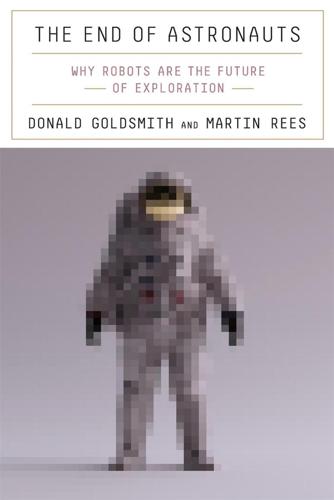
The End of Astronauts: Why Robots Are the Future of Exploration
by
Donald Goldsmith
and
Martin Rees
Published 18 Apr 2022
The company enjoyed a good run of publicity until its acquisition in 2019 by Bradford Industries, which announced that it would concentrate on space propulsion systems rather than asteroid mining. A few months earlier, Planetary Resources, a United States company founded in 2009 to create a trillion-dollar business in asteroid mining, became part of ConsenSys, which focuses primarily on bringing blockchain technology into space, presumably to avoid all governmental interference.11 During the previous decade, Planetary Resources had deployed significant amounts of capital obtained from venture-capital luminaries such as Charles Simonyi (the only one of the seven wealthy individuals who have paid for trips to the International Space Station to have made two visits) and the founders of Google in order to launch two experimental satellites to search for the most promising asteroids.
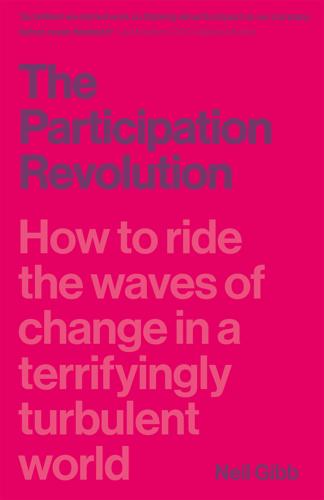
The Participation Revolution: How to Ride the Waves of Change in a Terrifyingly Turbulent World
by
Neil Gibb
Published 15 Feb 2018
In a time of transformation, when it is not just technology but the whole social and economic landscape that is radically and rapidly shifting, focusing on the why rather than the what isn’t a nice-to-have or a noble thing to do; it is the only way to survive and thrive. Whys don’t change, whats do – and fast. If we apply Moore’s law to technologies like solar, blockchain, and artificial intelligence, in the next 10 years we are going to see the total transformation of the energy industry, financial services, and a lot of skilled-knowledge industries like engineering, medicine and law. Remember the Luddites, remember the East India Company… In 1900, one of London’s biggest problems was horseshit… and by that, I really literally mean horseshit.
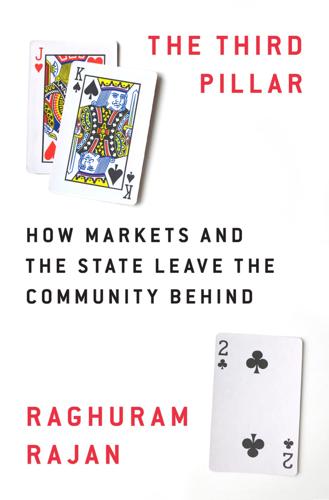
The Third Pillar: How Markets and the State Leave the Community Behind
by
Raghuram Rajan
Published 26 Feb 2019
Galena’s example is worth noting because many examples of revival center around new technologies. Galena’s does not. Indeed, in every developing country I visit, some ministry is putting together a plan to make their country a power in artificial intelligence, robotics, and financial technologies like cryptocurrencies and blockchains. Yet, few have the research base or the human capital to make the plan a success just yet. Far better to figure out realistic strengths as well as gaps, and go about exploiting the strengths and filling in the gaps, much as Galena did. COMMON THEMES IN COMMUNITY REVIVAL There are many examples of communities that have revived, some after the loss of a dominant industry (think Pittsburgh and steel) and others a major employer (the region around Lund and Malmo in Sweden after the Kockums shipyard downsized and closed in the 1980s).9 There are also many failed attempts at revival that we hear very little of.
…
Once the individual controls her data, she will have the option to sell portions of it to firms, or enter into longer-term arrangements where firms would provide her services in return for the use of her data. Some of what is implicit today would become explicit, the difference is it would be controlled by the user. Indeed, new technologies like blockchains will help decentralize this process, and bargaining bots can help routinize data acquisition for a fee when corporations need vast amounts of data to train their artificial-intelligence applications.15 Another important source of power that e-platforms or social media have is their ownership of the network.
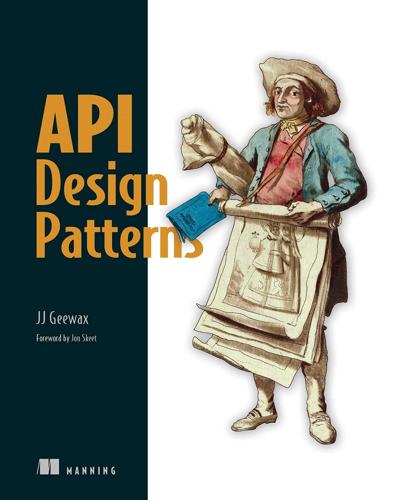
API Design Patterns
by
Jj Geewax
Published 19 Jul 2021
It should go without saying that security patches and other changes in that category are often mandated, although not always by lawyers. While there are cases that it’s simply impossible to be completely compliant with all laws (e.g., it’s rumored that the bitcoin blockchain has metadata storing material that’s illegal in most countries, and blockchains are built specifically so that you cannot alter past data), it’s almost always possible to make changes to comply with relevant laws. The question, really, is one of how best to make these mandated changes (often coming from lawyers or other primarily nontechnical people) without causing undue amounts of stress on API users.
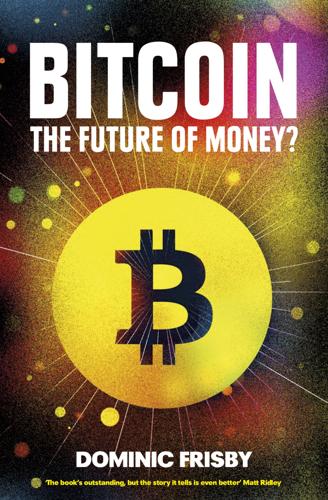
Bitcoin: The Future of Money?
by
Dominic Frisby
Published 1 Nov 2014
You can either buy them, earn them or mine them. I would suggest beginners ignore mining for the time being. Mining has become a specialized endeavour that takes a bit of experience and a lot of computer power. Earn them or buy them instead. The first thing you will need is a wallet. The simplest place to get one of these is blockchain.info. Click on ‘Wallet’ and you’ll have one as quickly as you can type in your email address and password. Once you have a wallet, you have an address – a place to receive your bitcoins. If you want to earn coins, simply mention that you accept bitcoins wherever you advertise your goods or services and add the option to pay with Bitcoin at your point of sale.
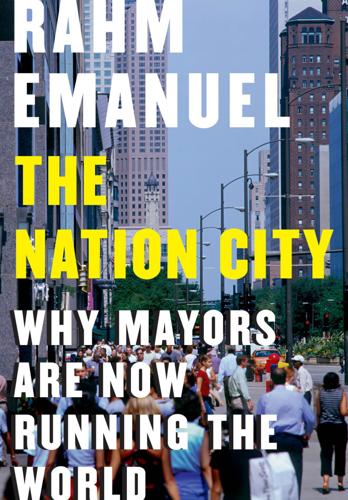
The Nation City: Why Mayors Are Now Running the World
by
Rahm Emanuel
Published 25 Feb 2020
The dynamism of cities isn’t just relegated to what we think of as “developed countries.” Taipei, located in emerging Taiwan, is a leader in industrial design. The São Pedro neighborhood of Belo Horizonte in Brazil is home to more than three hundred start-ups. Ho Chi Minh City in Vietnam is emerging as a leader in Asia in blockchain start-ups. India’s Bangalore, once a manufacturing city, is now a software hub and city of ideas. And the investments that Gaborone has made in education—at all levels—have paid off and helped it become a beacon of hope and progress in Botswana. This dynamism and progress matters, not only for the cities but for everyone in the world.
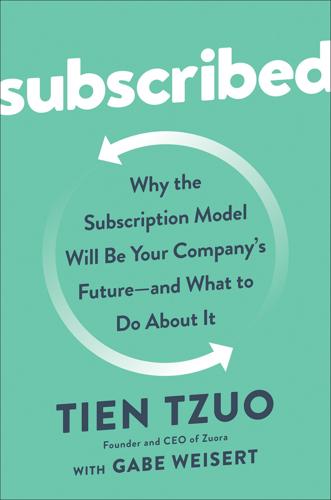
Subscribed: Why the Subscription Model Will Be Your Company's Future - and What to Do About It
by
Tien Tzuo
and
Gabe Weisert
Published 4 Jun 2018
Thanks to sensors and connectivity, the entire industry is starting to “wake up” and unlock all sorts of new value: French electricity provider ENGIE (which traces its roots to the company that built the Suez Canal) now has an app-based service that lets you book home service appointments; Schneider Electric (founded in 1836) partners with municipal districts not to sell them more power, but to help them reduce energy consumption by 35 percent. A new solar start-up in Brooklyn called LO3 Energy is using blockchain technology that lets you sell your solar energy to your neighbors. All these new services aren’t just about adding convenience, they’re about accelerating outcomes. Real Estate. For generations, we’ve been taught that buying and owning a house is an expected and necessary part of becoming an adult.
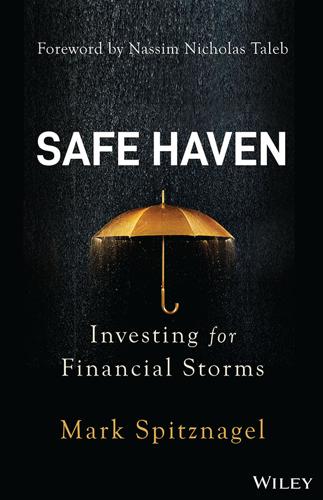
Safe Haven: Investing for Financial Storms
by
Mark Spitznagel
Published 9 Aug 2021
Cryptocurrencies are thought of as insurance policies against the failure of central bankers. This, by extension, has also given them the presumed role of being an insurance policy against economic crises—since, at this point, that would entail the failure of current monetary policy. Cryptocurrencies are a most significant technology platform (the blockchain). They are like secure, virtual safety deposit boxes that only you can access. The box is the thing that's so cool and impressive, and worthy of our respect. It will change the world. But the stuff inside those boxes, just by virtue of the secure, convenient, cool boxes, is now presumed to have value—by decree or, dare I say, by fiat.
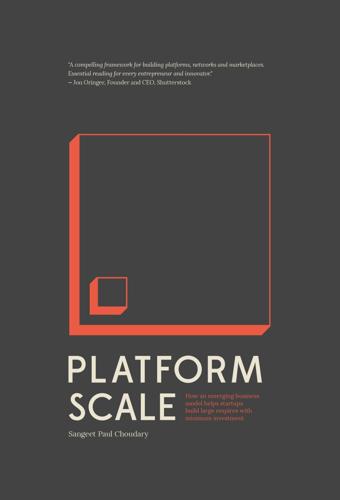
Platform Scale: How an Emerging Business Model Helps Startups Build Large Empires With Minimum Investment
by
Sangeet Paul Choudary
Published 14 Sep 2015
They provide an early glimpse into a future where value creation may not need a supply chain, instead being orchestrated via a network of connected users on a platform. h. Cryptocurrencies Platform theory helps to explain the workings of cryptocurrencies, like Bitcoin. Decentralized management – through mechanisms like the blockchain – has the potential to change governance structures for the next generation of platforms, much like social feedback tools power curation on many of the current generation of platforms. While we do not explore Bitcoin in detail in this book, the principles laid out apply equally well to understanding all emerging platforms that the book may not explicitly cover.
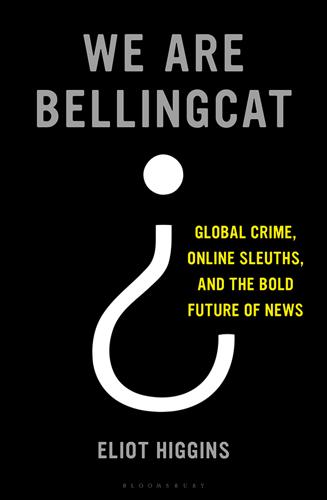
We Are Bellingcat: Global Crime, Online Sleuths, and the Bold Future of News
by
Eliot Higgins
Published 2 Mar 2021
Also, companies that produce media-manipulation software must consider their ethical responsibilities, building detection tools alongside deception tools.34 One possibility is to have verification data built in, so that each time a video or a photo is taken, metadata is uploaded for easy checks by forensic specialists or social-media platforms.35 The Research & Development team at the New York Times set up a News Provenance Project, testing the possibility of including context and metadata within images, perhaps with a watermark that affirms that the content was verified. They also experimented with publishing photos using blockchain, the technology made famous by cryptocurrencies, where a shared online ledger is updated at each transaction, which prevents tampering.36 Facebook also encouraged researchers to work on the problem, launching a $10 million Deepfake Detection Challenge, whose goal was to find how best to identify synthetic media.37 Deepfakes do not trouble me too much for now.

Uncanny Valley: A Memoir
by
Anna Wiener
Published 14 Jan 2020
Years prior, we had conducted an off-again, on-again, casual noncommitment, which had mostly consisted of him explaining things and then apologizing. “Email is about as secure as a postcard,” he’d remind me, as we wandered between families at the farmers market in Fort Greene Park. “You don’t expect your mailman to read it, but he could.” I had listened patiently as he tried to teach me about cryptocurrencies and the promise of the blockchain, the shortcomings of two-factor authentication, the necessity of end-to-end encryption, the inevitability of data breaches. The romance didn’t last, but in its wake we had fallen into a rhythm of exchanging insecure emails on niche topics, like 1980s interface design, binary code, and public-domain art, and occasionally meeting for chaste, geriatric cultural activities.
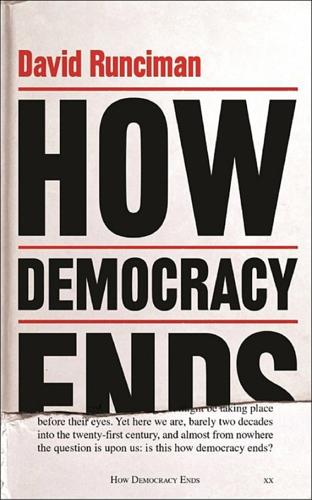
How Democracy Ends
by
David Runciman
Published 9 May 2018
When they went back online the day after the vote, his supporters were greeted with messages of congratulations from their host servers. The central plank of Li’s campaign had been his defence of the beleaguered dollar, which he called ‘the people’s money’. He had promised to start printing banknotes again for spending within the borders of the United States. This was popular with the victims of the great block-chain deflation, including many indebted college graduates who had long since given up trying to find a permanent job. Li’s coalition was made up of the stay-at-homes, who lived off their meagre universal basic income, and the travellers, who moved from state to state looking for part-time work. His support was lowest among the over-80s, who were worried he would substitute their retirement income with dollars.
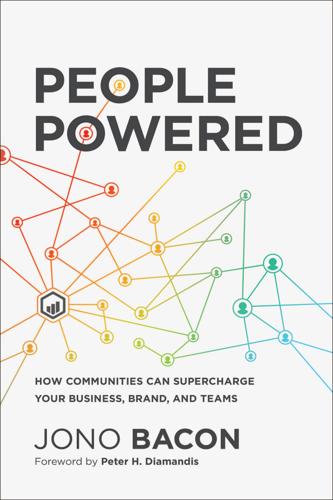
People Powered: How Communities Can Supercharge Your Business, Brand, and Teams
by
Jono Bacon
Published 12 Nov 2019
—Dries Buytaert, Founder, Drupal and Acquia Jono Bacon is the industry leader in community strategy. People Powered is the industry-leading approach. Read it. —Jose Morales, Head of Field Operations, Atlassian The power of community is proven to us every day in our work with Open Source, Blockchain, and our own Core Community, where Jono has participated. Everywhere he engages and everyone he connects with benefits, which proves why he’s recognized as the leader in community development. —Michael Skok, Founding Partner, Underscore. VC People Powered sets the record straight about what business or product-related communities are, and the impact you can expect when they are managed well.
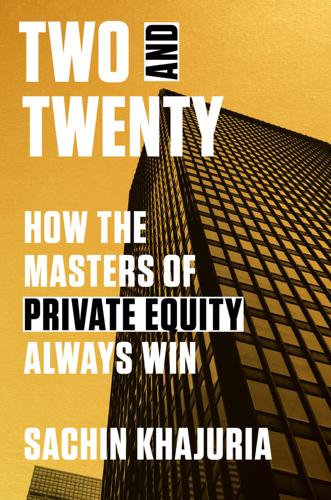
Two and Twenty: How the Masters of Private Equity Always Win
by
Sachin Khajuria
Published 13 Jun 2022
It’s a far cry from the stereotypical image of excess often heard on Wall Street about private equity. In fact, it’s closer to the image of a responsible anchor of the economy, an industrial stalwart. One of the partners then reviews the joint ventures and minority investments the Firm has made in areas not typically covered by the funds’ traditional activities. Blockchain technology start-ups, financial technology, social housing, wind turbines, student loans, and new medicines. The Firm’s franchise is powerful enough to strike a deal in any part of the economy, and these are all new fields for the Firm to tap into. The partner goes on to review the media coverage the Firm has courted for all of these initiatives.
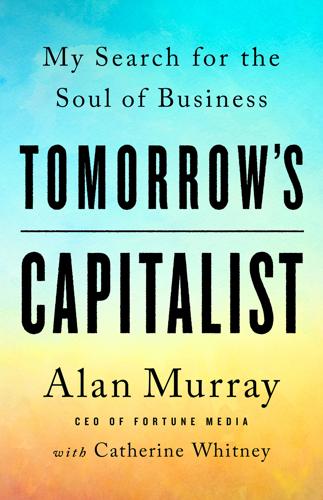
Tomorrow's Capitalist: My Search for the Soul of Business
by
Alan Murray
Published 15 Dec 2022
A quarter century ago, if you asked the head of an investment bank or a retail giant or a media company who its main competitor was, they would quickly point to another company in the same industry. But ask the question today, and the answer is far less clear. It could be Amazon, which is making inroads in multiple industries; or a startup that is challenging the industry’s entire business model; or even a new technology, like artificial intelligence or the blockchain, which promises to reshape the entire industrial landscape. Disruption has become a constant in business. Information flows also have changed. A half century ago, corporations were set up as information hierarchies. The people in the field all reported information up to the C-suite, where the leaders would take that information, analyze it, formulate a strategy, and then send orders back down the hierarchy.

Facebook: The Inside Story
by
Steven Levy
Published 25 Feb 2020
The solution—and an opportunity to grab a space in the net paradigm shift—came in an email to Zuckerberg from one of his favorite executives, David Marcus, who headed the Messenger team. On his 2017 Christmas break, Marcus had been on a family vacation in the Dominican Republic. He was musing about cryptocurrencies, which was not such a stretch for a former PayPal executive. A technology called blockchain had the potential to lock down the security of digital currencies, but so far the electronic currencies in circulation were more objects of speculation than exchange. Marcus felt that Facebook could change this. What if Facebook created a global digital currency? Marcus had ideas on how it could do this and dashed them off to Zuckerberg.
…
Libra had a convoluted plan for administration, mainly to address the skepticism people would bring to a global currency established by a company that was now among the least trustworthy on the planet. The company would turn over administration of this currency to an outside body, the Libra Association. It would have one hundred partners—each one a “node” on the blockchain, able to make direct transactions. Facebook would be only one of those nodes, with but a single vote. An outside director would run the association. Facebook would also make the Libra code available via open-source software. No secrets. Ceding control actually would make Libra more valuable to Facebook, because not being owned by Facebook would make Libra attractive to those suspicious of Facebook, which was just about everyone.

Exponential Organizations: Why New Organizations Are Ten Times Better, Faster, and Cheaper Than Yours (And What to Do About It)
by
Salim Ismail
and
Yuri van Geest
Published 17 Oct 2014
Oculus Rift, High Fidelity and Google Glass drive new applications. Implications: Remote viewing; centrally located experts serving more areas; new practice areas; remote medicine. Bitcoin and block chain Description: Trustless, ultra-low-cost secure transactions enabled by distributed ledgers that log everything. Implications: The blockchain becomes a trust engine; most third-party validation functions become automated (e.g., multi-signatory contracts, voting systems, audit practices). Micro-transactions and new payment systems become ubiquitous. Neuro-feedback Description: Use of feedback loops to bring the brain to a high level of precision.

Blitzscaling: The Lightning-Fast Path to Building Massively Valuable Companies
by
Reid Hoffman
and
Chris Yeh
Published 14 Apr 2018
So far, blitzscaling has been concentrated in software and the Internet, but it’s likely to reshape our physical infrastructure or even our bodies in the future. Artificial intelligence will soon be ubiquitous, thanks to self-driving vehicles and better machine learning. Technology innovations in the life sciences, such as CRISPR gene editing, may change the fabric of life itself. Cryptocurrencies and blockchain technology may change the role of governments and corporations in global finance and commerce. New technologies are emerging rapidly and promise to change everything—again. These new technologies will enable new business models, which in turn will create new industries. In the history of high tech, platform shifts, such as the move from mainframes to client-server or the move from the Web to mobile, have represented huge opportunities.

Lab Rats: How Silicon Valley Made Work Miserable for the Rest of Us
by
Dan Lyons
Published 22 Oct 2018
They’ve seen other big old companies get killed off by Silicon Valley, and they would rather not have this happen to them. They seem to believe that some magic elixir exists here, some recipe for innovation that floats in the air and can be absorbed if you drive around with your windows open, smelling the eucalyptus trees. They see people getting rich on things they don’t even understand. Blockchain? Ethereum? Initial coin offerings? So they fly out and have drinks at the Rosewood Hotel on Sand Hill Road in Menlo Park, where venture capitalists hang around, as do expensive “companions,” many with Eastern European accents. They eat lunch at the Battery, a members-only private club for social-climbing parvenus in San Francisco.
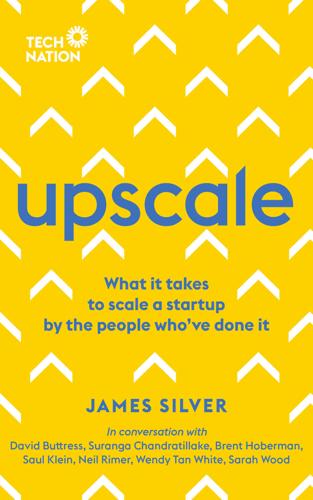
Upscale: What It Takes to Scale a Startup. By the People Who've Done It.
by
James Silver
Published 15 Nov 2018
Founded in 2011 (originally as Tech City), Tech Nation’s programmes cater for businesses at all stages of company growth, from initial idea and early stages (The Digital Business Academy, Founders’ Network and Rising Stars), right through to the mid and late stages (Upscale and Future Fifty). It also recently launched its first sector-specific programme, covering FinTech, while Cyber, Deep Tech and Blockchain will be launching shortly. www.technation.io Twitter@TechNation First published in 2018 by Tech Nation Copyright © James Silver 2018 The moral right of James Silver to be identified as the author of this work has been asserted in accordance with the Copyright, Designs and Patents Act 1988.
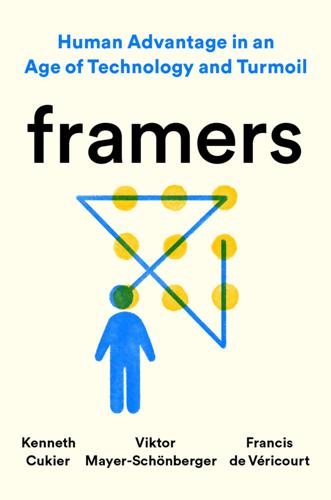
Framers: Human Advantage in an Age of Technology and Turmoil
by
Kenneth Cukier
,
Viktor Mayer-Schönberger
and
Francis de Véricourt
Published 10 May 2021
Good framers are rare, but they can be found everywhere. Thinking New, Thinking Different Human progress is typically measured through the lens of human cooperation. By working together, people advance their societies. We build cities, travel oceans, explore the heavens. Roman roads and the Chinese wall; courts of law and blockchain updates. Whether in the form of infrastructure, institutions, or inventions, society’s achievements are attributed to the organization and coordination of people. For good reason too. Most of what people do and know cannot be captured in a single mind. It takes a village, today a global village, to achieve humanity’s potential.
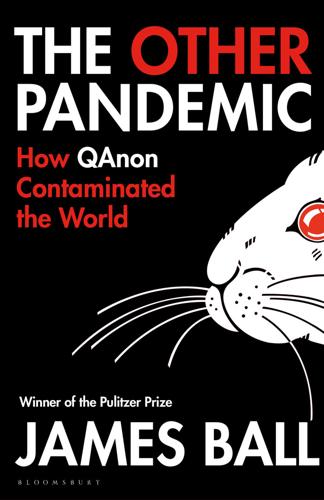
Other Pandemic: How QAnon Contaminated the World
by
James Ball
Published 19 Jul 2023
In a Twitter thread with more than 26,000 retweets, a man claiming to be US Air Force veteran Tom Graham had an answer for those worried in November 2020: Democrats had fallen into Trump’s trap. Trump was watching the results in a secure facility, knowing the Democrats would fake them. Secretly, he had marked the ballots using blockchain technology. Soon, the fraud would be revealed, and the Democrats locked up. Trust the plan, even though the plan keeps changing.1 For those holding the faith, things started to look up again. After a ten-day silence, Q resurfaced on 13 November,2 initially posting a US flag accompanied by this short message: Nothing can stop what is coming.
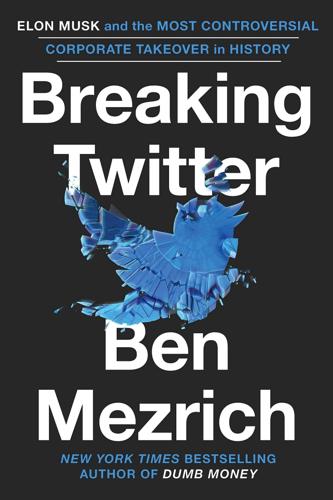
Breaking Twitter: Elon Musk and the Most Controversial Corporate Takeover in History
by
Ben Mezrich
Published 6 Nov 2023
Like Elon, SBF was a prominent believer in simulation theory, but it appeared the quest he was playing in the video game of life had veered NC-17. Simulation theory, meet stimulation theory. Watching SBF, as the kid rocked back and forth on the edge of the wicker, spouting phrases like “vision lock” and “social blockchain integration,” pinpoint eyes darting every direction but the camera, it was clear he was smart; likewise, considering the setting, and the stories surrounding him, his embrace of effective altruism made perfect sense. The idea that you could fix the world by making as much money as you could—in other words, get stinking rich to make the world better—meant not only did you get to solve world hunger or cure malaria, but you were able to do it from a wicker lounge chair on the balcony of a $40 million penthouse, overlooking a tropical beach.

Beautiful Solutions: A Toolbox for Liberation
by
Elandria Williams, Eli Feghali, Rachel Plattus
and
Nathan Schneider
Published 15 Dec 2024
But if we think of it as a social institution on the level of schools or health care, it’s exceptionally cheap—about $20 per year, per person could double the number of journalists in any given country. The challenge is to keep the interests and desires of each person connected to the value they create—whether by funding, reading or creating the news. LEARN MORE WEBSITE The Media Co-op. mediacoop.ca ARTICLE “Broad-Based Stakeholder Ownership in Journalism: Co-ops, ESOPs, Blockchains” by Nathan Schneider. (2020) ntnsndr.in/StakeholderNews BOOK Saving the Media by Julia Cagé. (2015) juliacage.com/books/sauver-les-medias/saving-the-media-english SOLUTION COMMUNITY BROADBAND NETWORKS A ribbon-cutting ceremony in Baltimore, Maryland by Project Waves, a nonprofit organization that brings affordable high-speed internet to low-income households.

The Thinking Machine: Jensen Huang, Nvidia, and the World's Most Coveted Microchip
by
Stephen Witt
Published 8 Apr 2025
Many inside Nvidia were appalled—some, concerned about climate change, found this use of the cards to border on sacrilege. Huang, reasoning from first principles, had seen a world in which AI would become the dominant force in computing. When Huang similarly reasoned from first principles about the potential for the blockchain, he did not foresee a world in which crypto displaced fiat money. Huang was too much of a businessman to explicitly discourage miners from purchasing his GPUs, although he never exactly endorsed bitcoin mining either. Nvidia’s official position on crypto was silence. On conference calls throughout 2017, Nvidia stuck to discussions of self-driving cars and AI, downplayed the impact of crypto, and declined to speculate on the proportion of its retail sales that came from miners.
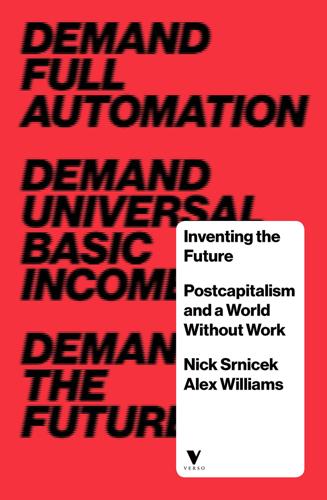
Inventing the Future: Postcapitalism and a World Without Work
by
Nick Srnicek
and
Alex Williams
Published 1 Oct 2015
Additive manufacturing and the automation of work portend the possibility of production based on flexibility, decentralisation and post-scarcity for some goods. The rapid automation of logistics presents the utopian possibility of a globally interconnected system in which parts and goods can be shipped rapidly and efficiently without human labour. Cryptocurrencies and their block-chain technology could bring forth a new money of the commons, divorced from capitalist forms.27 The democratic guidance of the economy is also accelerated by emerging technologies. Famously, Oscar Wilde once said that the problem with socialism was that it took up too many evenings. Increasing economic democracy could require us to devote an overwhelming amount of time to discussions and decisions over the minutiae of everyday life.28 The use of computing technology is essential in avoiding this problem, both by simplifying the decisions to be made and by automating decisions collectively deemed to be irrelevant.
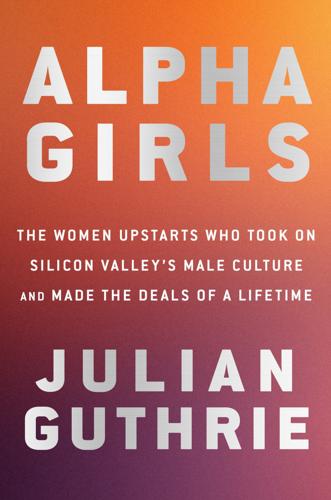
Alpha Girls: The Women Upstarts Who Took on Silicon Valley's Male Culture and Made the Deals of a Lifetime
by
Julian Guthrie
Published 15 Nov 2019
The Broadway Angels’ early investments included Rocksbox, a jewelry subscription service founded by Meaghan Rose, a mother, math whiz, and scrappy entrepreneur; Debbie Sterling, an engineer who founded the toy brand GoldieBlox to introduce girls to science and engineering; and UrbanSitter, co-founded by Lynn Perkins, a mother who wanted a better way than word of mouth to find a babysitter. Other investments included Hint Water, a beverage company founded by Kara Goldin, who started the company because she wanted to lose weight and get away from diet soda. Hint was now a $100-million-a-year business. Sonja invited Brad Stephens, a pioneer in blockchain technology investing, to talk about opportunities in the sector. Sonja slowly reduced her time at Menlo and stopped attending partners’ meetings. In addition to Broadway Angels, she had started a nonprofit to support at-risk teenage girls. The nonprofit, Project Glimmer, was inspired by the online beauty site Eve, and gave gifts of jewelry and makeup at Christmas, reaching more than 125,000 girls and women a year.
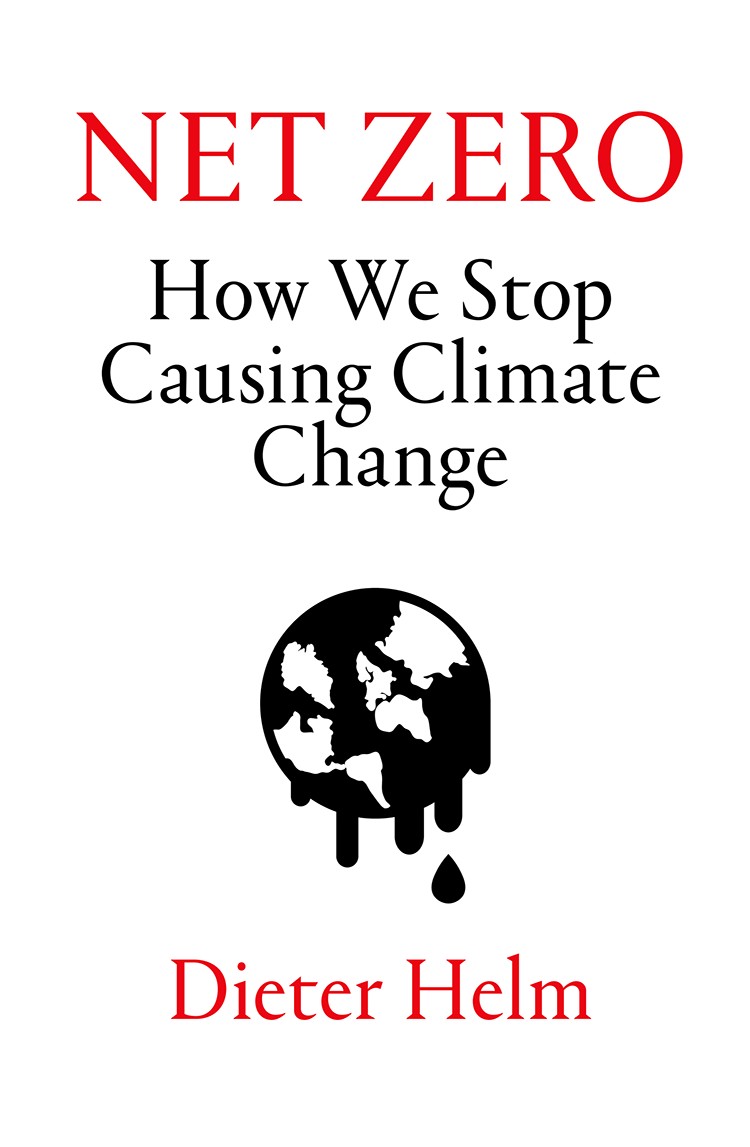
Net Zero: How We Stop Causing Climate Change
by
Dieter Helm
Published 2 Sep 2020
Digitalisation is not confined to robots, data and AI, but also includes the things that these will enable. 3D printing ushers in a much greater degree of customisation, as products are printed from digital images and instructions. The food chain itself has already been digitalised, but there is more to come here too, with blockchain and the internet-of-things allowing precision identification and tracking of each item and payment. Agricultural activities are increasingly being integrated with food processing and logistics supply chains. Food itself is being broken down by genetics. Where once there were cows and sheep, and then specific sorts of cows and sheep, it is increasingly possible to regard each as bunches of genes.
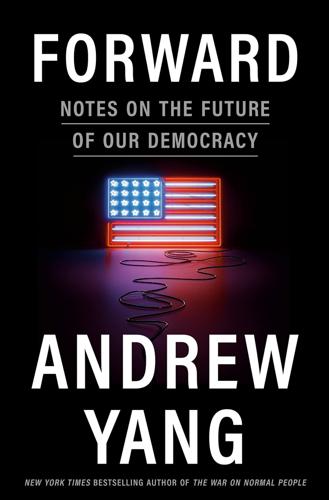
Forward: Notes on the Future of Our Democracy
by
Andrew Yang
Published 15 Nov 2021
State unemployment benefits are run out of state agencies that don’t interface with the federal government. The IRS, CDC, Census Bureau, and Small Business Administration don’t pool data with each other. And there would be concerns among some that the site would not be secure and would be subject to hacks. Our volunteer team was using blockchain technologies to better synchronize online government platforms and ensure site security. Of course these kinds of volunteer efforts aren’t a fit for every problem. Much of the time, the best thing you can do is identify dedicated people within a bureaucracy and empower them to do their jobs.
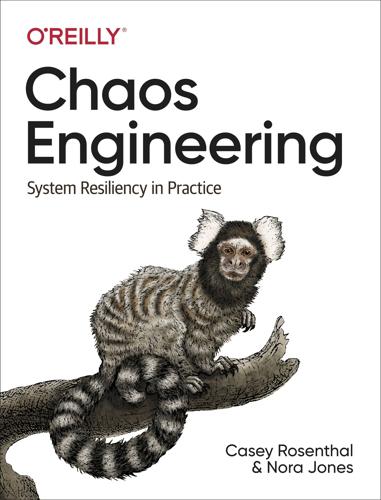
Chaos Engineering: System Resiliency in Practice
by
Casey Rosenthal
and
Nora Jones
Published 27 Apr 2020
Banks have put in required governance processes and tools in collecting and submitting this evidence to the appropriate authorities. That process has legal implications and must not be affected by efforts or tooling like Chaos Engineering. On the other hand, with the rise of digital banks and neobanks,1 the way customers interact with their money is changing. Financial capabilities powered by blockchain, AI, machine learning, and business intelligence has exposed the need for highly robust and scalable systems that the cloud infrastructure provides. This drives an evolution in software development methodologies and the need to bake in the right engineering practices into their way of working. Just like automated deployments have improved feature velocity, and immutable infrastructure makes sure the deployed servers are never altered, the systems need to be continuously validated for reliability.
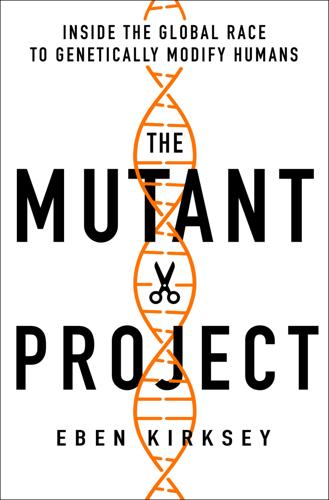
The Mutant Project: Inside the Global Race to Genetically Modify Humans
by
Eben Kirksey
Published 10 Nov 2020
The new synthetic chromosome did not cure Tristan’s HIV infection. On his website he waxed poetic: “We are at a crossroads in humanity’s evolution. Will we experience a transition into abundance, transcending our violent, scarcity-bounded heritage? Or will exponential technologies such as bio-engineering and blockchains be our Tower of Babel; exacerbating inequalities rather than truly reaching heaven?”9 * * * The Netflix film crew traveled to Mississippi, where they filmed David Ishee injecting himself with a new synthetic chromosome. A white laptop, safety goggles, and disinfectant spray were on a small dining table.

A New History of the Future in 100 Objects: A Fiction
by
Adrian Hon
Published 5 Oct 2020
In theory, China’s supposedly all-seeing surveillance state would have spotted these kinds of tricks, but the deeply—and deliberately—fragmented nature of those surveillance systems meant there were plenty of opportunities for digital gatekeepers to ignore infractions and manipulate accounts. Unlike the blockchains employed by other nations, China’s tax records were stored in a nonimmutable transaction log. You never know when you might need to rewrite history, after all. Capital flight wasn’t a serious problem; few rich Chinese wanted to become tax exiles, and China’s tightening grip over global financial institutions meant that no one felt comfortable running for long.

The Quiet Damage: QAnon and the Destruction of the American Family
by
Jesselyn Cook
Published 22 Jul 2024
“I’m here to say it: that America, there is a cure for Covid!” shouted Immanuel, who ran a tiny clinic out of a Houston strip mall. “All this foolishness does not need to happen!” She was talking about hydroxychloroquine, an antimalarial drug. It had first caught the president’s attention after a blockchain investor and a lawyer falsely claiming to be affiliated with Stanford University heralded its use in a non-peer-reviewed paper they self-published as a Google Doc. Their conclusion was based upon a single French study that had tested the drug on twenty-six Covid patients (three of whom had ended up in intensive care, and one of whom had died).
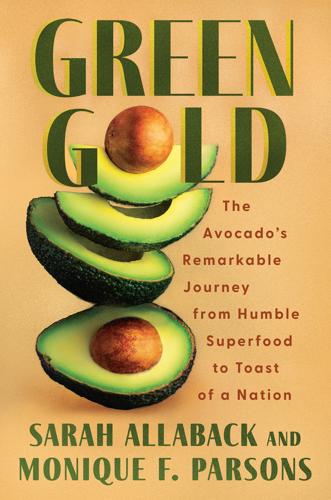
Green Gold
by
Sarah Allaback
Published 14 Mar 2025
That’s my job, and that’s my purpose in life.”6 In 2020, Hispanic Executive magazine credited Luque with coming on the scene “at the exact moment when the population of the United States collectively realized there was an avocado-sized hole in their lives.”7 The following year, Fast Company named Avocados From Mexico the year’s most innovative brand and one of the world’s most innovative companies, praising its Super Bowl digital campaigns and its “nontraditional marketing avenues,” including using NFTs (non-fungible tokens) and blockchain. By 2022, Luque was making more than $1 million a year and preparing to bring his brand to the college football season, buying a digital billboard in New York City’s Times Square in time for New Year’s Eve and launching a catchy new 2023 campaign.8 Called the “Avocados From Mexico Jingle Challenge,” it asked avocado lovers to record themselves delivering bad news to the tune of their catchy and ubiquitous popular jingle.
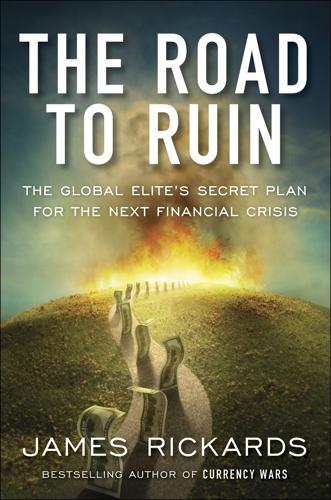
The Road to Ruin: The Global Elites' Secret Plan for the Next Financial Crisis
by
James Rickards
Published 15 Nov 2016
Regulators will want to suppress twenty-first-century digital curb exchanges to prevent price discovery and maintain the myth of pre-panic prices. Curb exchanges could be conducted online in an eBay-style format with settlement by bitcoin or cash delivered face-to-face. Title to shares can be recorded in a distributed ledger using a blockchain. Eliminating cash helps the suppression of alternative markets, although bitcoin presents new challenges to elite power. The second reason for eliminating cash is to impose negative interest rates. Central banks are in a losing battle against deflationary trends. One way to defeat deflation is to promote inflation with negative real interest rates.
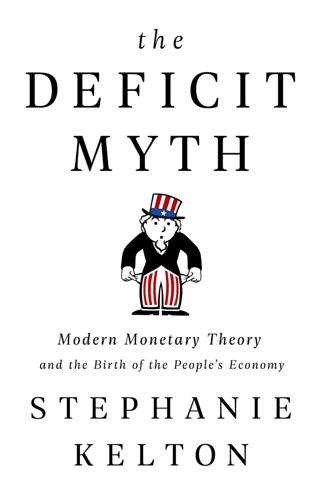
The Deficit Myth: Modern Monetary Theory and the Birth of the People's Economy
by
Stephanie Kelton
Published 8 Jun 2020
Millikan (New Haven, CT: Yale University Press, 1953); Simon Gray and Runchana Pongsaparn, Issuance of Central Securities: International Experiences and Guidelines, IMF Working Paper, WP/15/106, May 2015, www.imf.org/external/pubs/ft/wp/2015/wp15106.pdf; and Rohan Grey, “Banking in a Digital Fiat Currency Regime,” in Regulating Blockchain: Techno-Social and Legal Challenges, ed. Philipp Hacker, Ioannis Lianos, Georgios Dimitropoulos, and Stefan Eich (Oxford, UK: Oxford University Press, 2019), 169–180, rohangrey.net/files/banking.pdf. 10. The CBO estimates that net interest expenditure will rise from 1.8 percent of GDP in 2019 to 3.0 percent by 2029, climbing all the way to 5.7 percent by 2049.
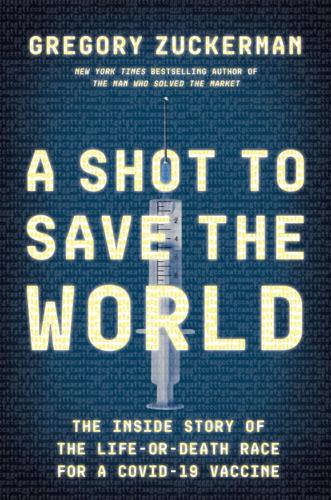
A Shot to Save the World: The Inside Story of the Life-Or-Death Race for a COVID-19 Vaccine
by
Gregory Zuckerman
Published 25 Oct 2021
On January 23, the third day of the forum, Chinese leaders locked down Wuhan and three other cities, in the biggest quarantine in history. The Chinese must know it’s bad and they’re not telling anyone, Bancel concluded. He looked around—heated discussions were under way about the future of work, blockchain traceability, and inclusivity. A tsunami was just beyond the horizon, yet everyone was frolicking on the beach. On Saturday morning, January 25, Bancel woke up scared. A pandemic was coming but his company wasn’t ready. The NIH planned to test Moderna’s vaccine but he didn’t know if the government agency could move quickly enough or if it was as frightened of the new virus as he had become.
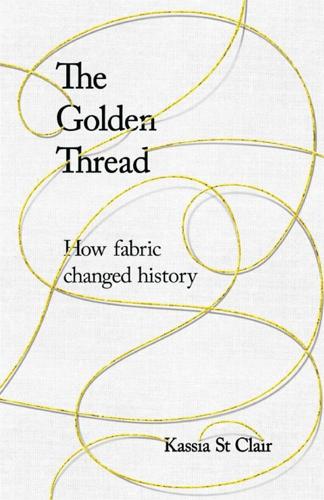
The Golden Thread: How Fabric Changed History
by
Kassia St Clair
Published 3 Oct 2018
The industry of fabric is older than pottery or metallurgy and perhaps even than agriculture and stock-breeding. Cloth is the original technology.7 Trade and Technology The weavers take the intertwined threads and through their expert, value-added activity create a strong fabric – which is exactly what the global distributed network of computers creating the Bitcoin Blockchain does. David Orban, ‘Weaving is a Better Metaphor for Bitcoin, Instead of Mining’, 2014 In 2015, Google I/O, one of the firm’s secretive research and development divisions, announced that they were planning to make a pair of trousers that would also be computers. They would be made of a special textile – available in a wide palette of colours and myriad textures – that would function as a touchscreen, registering special gestures and able to control devices such as smartphones.
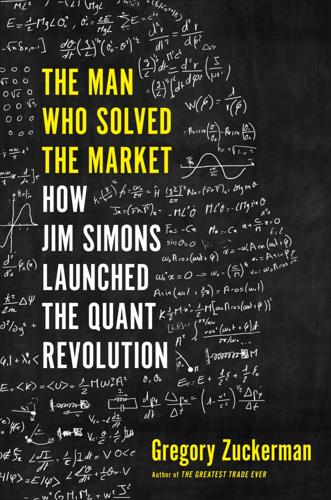
The Man Who Solved the Market: How Jim Simons Launched the Quant Revolution
by
Gregory Zuckerman
Published 5 Nov 2019
Abuse of Structured Financial Products (statement of Peter Brown). 4. Katherine Burton, “Inside a Moneymaking Machine Like No Other,” Bloomberg, November 21, 2016, https://www.bloomberg.com/news/articles/2016-11-21/how-renaissance-s-medallion-fund-became-finance-s-blackest-box. 5. George Gilder, Life after Google: The Fall of Big Data and the Rise of the Blockchain Economy (Washington, DC: Regnery Gateway, 2018). 6. Simon Van Zuylen-Wood, “The Controversial David Magerman,” Philadelphia Magazine, September 13, 2013, https://www.phillymag.com/news/2013/09/13/controversial-david-magerman. 7. Scott Patterson and Jenny Strasburg, “Pioneering Fund Stages Second Act,” Wall Street Journal, March 16, 2010, https://www.wsj.com/articles/SB10001424052748703494404575082000779302566. 8.

Bean Counters: The Triumph of the Accountants and How They Broke Capitalism
by
Richard Brooks
Published 23 Apr 2018
‘From strategy through execution,’ it says, ‘PwC’s alliance with Google for Work takes a business-focused approach that brings together PwC’s business transformation, process and organizational change capabilities and Google for Work’s collaborative and innovative applications & technologies.’21 KPMG boasts a similar ‘Global Digital Solution Hub’ tie-in with Microsoft. Deloitte attributed a 10% growth in consulting revenues in 2017 to ‘artificial intelligence, robotics, cognitive, creative digital consulting, cloud computing, blockchain and [the] Internet of Things’. The Big Four are where management consultancy and information technology now meet. They are perfectly placed to capitalize on the age of mass data, with troubling potential conflicts of interest. The firms offer firstly to use client companies’ own data to improve their audits and, through that, their audit clients’ performance.

The AI Economy: Work, Wealth and Welfare in the Robot Age
by
Roger Bootle
Published 4 Sep 2019
Because of economies of scale and first mover advantage, they may not be very vulnerable to competitors trying to do the same as them – although they cannot be sure of this. Their real vulnerability is that some new technology may come along and undermine them, just as happened to those who preceded them. Furthermore, some modern technologies, such as blockchain and 3D printing, facilitate small-scale production. Moreover, another surprising possible effect on the income distribution springs up from the discussion of work versus leisure in Chapter 4. It transpires that, in a turnaround from most of human history, in today’s society, those at the top of the income distribution currently tend to work longer hours that those at the bottom.

Nomad Capitalist: How to Reclaim Your Freedom With Offshore Bank Accounts, Dual Citizenship, Foreign Companies, and Overseas Investments
by
Andrew Henderson
Published 8 Apr 2018
You could travel to every country on the planet, but as long as your mindset stays at home, you will miss the boat toward greater progress and freedom. It is the countries (and people) that recognize that they have room for improvement that achieve some of the greatest advancements. The country of Georgia, for example, is the first country in the world to be putting its real estate on the blockchain. They innovate because they know that they have to do something interesting and different to stand out and make a name for themselves. You want to find countries that are a bit self-conscious like that because they are more responsive to opportunities to change and improve. In a sense, you need to be the same way when it comes to your personal mindset toward growth.
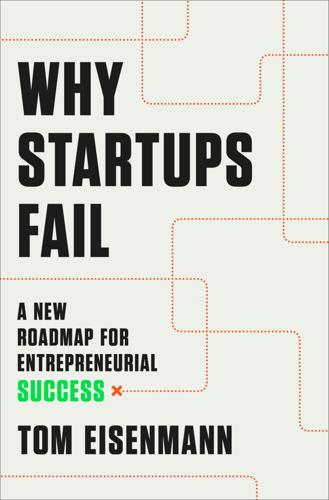
Why Startups Fail: A New Roadmap for Entrepreneurial Success
by
Tom Eisenmann
Published 29 Mar 2021
In each instance, VCs poured huge amounts of capital into scores of ventures in some hot new sector. Then, the flow of capital suddenly stopped, and startups, starved for capital, struggled to survive. Boom-bust investment cycles do not always impact entire industry sectors. Sometimes they are limited to certain segments, like meal delivery services, virtual reality, pet care, bitcoin/blockchain, direct-to-consumer brands, robo-investing, autonomous vehicles, and so forth. Investment bubbles typically start when entrepreneurs and investors recognize a big, new opportunity, often triggered by technology breakthroughs, like machine learning, gene editing, or voice recognition software (e.g., Jibo).
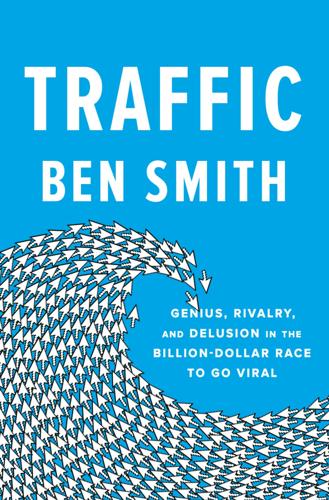
Traffic: Genius, Rivalry, and Delusion in the Billion-Dollar Race to Go Viral
by
Ben Smith
Published 2 May 2023
Gionet “informed me that he was a ‘influencer’ and had a large following on social media,” according to a police report. By then, Gionet had been subject to the evils that had been denounced at Trump’s social media summit. He’d been deplatformed—thrown off Twitter and Twitch—and had his YouTube videos demonetized. So he was streaming to DLive, a blockchain-based service, when he entered the Capitol on January 6, 2021. He strode around like he owned the place. “America First is inevitable! Fuck globalists, let’s go!” he yelled. At one point he advised other rioters not to damage anything; at another he yelled at a police officer that he was a “fucking oathbreaker, you piece of shit.”
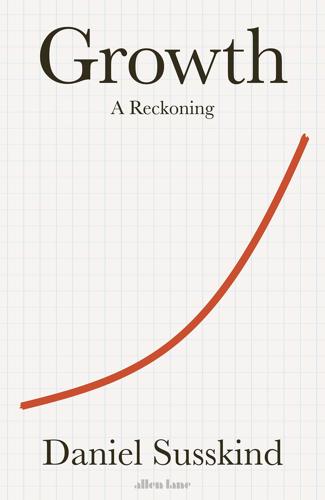
Growth: A Reckoning
by
Daniel Susskind
Published 16 Apr 2024
As the lawyer Jamie Susskind puts it in his books Future Politics and The Digital Republic, ‘the digital is political.’ Today, code constrains our liberty: a seller can be blocked from advertising certain goods in an online market, a cryptocurrency holder can forget their wallet key and lose their fortune to the blockchain, an electric bike rider can be prevented from going above a set speed or cycling on certain roads. Code determines questions of social justice: there are algorithms that decide which applicants get a job, which citizens get social housing, which borrowers receive a financial loan, which prisoners are released on parole, which patients receive health treatment.
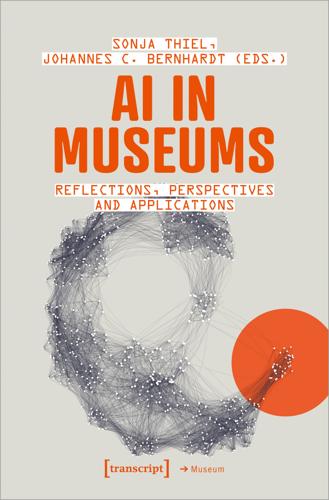
AI in Museums: Reflections, Perspectives and Applications
by
Sonja Thiel
and
Johannes C. Bernhardt
Published 31 Dec 2023
Generating Critical Information about Painting Collections with AI Lukas Fuchsgruber Why the current urgency to talk about artificial intelligence in museums—apart from the fact that large software companies periodically push this topic, in rotation with others like big data, virtual reality, and blockchain? Automated knowledge work is perceived as powerful, and automation even is understood as having the potential to decentre the genealogies of power in museums, the power of the museum itself. There appears to be a connection between the virulent debates about the future of museums as social spaces and the approaches to re-indexing their past, or rather their holdings.

Cities in the Sky: The Quest to Build the World's Tallest Skyscrapers
by
Jason M. Barr
Published 13 May 2024
The films also feed into the perception that the superrich are inherently corrupt and hurt society by their greed. The developer’s spoiled son-in-law cuts corners so as not to be ripped off by the contractors. Zhao pays a syndicate extortion money, so criminals don’t shut down his worksite. He then turns the tables on them by keeping block-chain “bread crumbs” on the trail of their laundered money so he can steal it back. Hollywood exaggerates, of course, for the purpose of storytelling. The moviemakers take our hidden anxieties and put them out on display. Yet, when one starts to “deconstruct” The Pearl, it’s rife with fictions that say more about our beliefs than reality.

The Hidden Globe: How Wealth Hacks the World
by
Atossa Araxia Abrahamian
Published 7 Oct 2024
The company’s engineers greeted the royals with hors d’oeuvres, craft beer, and bottles upon bottles of Columbia Valley Rieslings and Syrahs. In the corner of the lounge stood a vintage Asteroids arcade game. On a wall, the grand duchy’s own red, white, and blue stripes hung alongside an American flag. Before Planetary Resources was sold to an obscure blockchain company in 2018, it had been one of a handful of start-ups building the tools to “expand the economy into space.” In addition to more predictable Silicon Valley investors, the nation of Luxembourg was one of its first and most vocal benefactors, having pledged about 25 million euro in direct funding and state support for research and development.
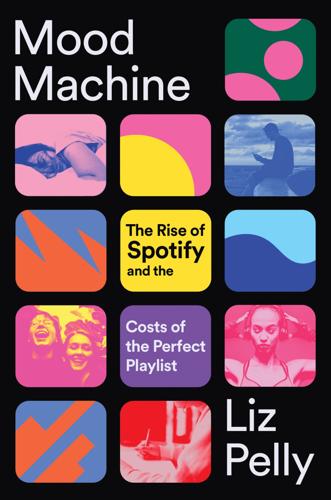
Mood Machine: The Rise of Spotify and the Costs of the Perfect Playlist
by
Liz Pelly
Published 7 Jan 2025
Conclusion 1 Capitol Music Group press release: https://www.prnewswire.com/news-releases/capitol-music-group-launches-capitol-innovation-center-to-be-based-at-companys-iconic-tower-and-state-of-the-art-recording-studios-300627088.html; UMG press release: https://www.universalmusic.com/universal-music-group-launches-accelerator-engagement-network/; Sony Innovation Fund: https://www.sonyinnovationfund.com/; WMG press release: https://www.wmg.com/news/warner-music-group-and-polygon-labs-launch-music-accelerator-program-to-power-the-next-great-evolution-of-the-music-industry-through-blockchain-technology. 2 For a deeper dive on the solidarity economy, see https://neweconomy.net/solidarity-economy/ & for connections between the solidarity economy and artists: https://art.coop/. 3 https://www.catalyticsound.com/about/. 4 https://hellgatenyc.com/about/ & https://newfeeling.ca/about-the-co-op/. 5 “An Alternative Model for Music Streaming,” Written evidence submitted by Resonate Co-operative to the UK Parliament Digital, Culture, Media and Sport Select Committee inquiry into the Economics of Music Streaming, https://committees.parliament.uk/writtenevidence/15377/pdf/. 6 Liz Pelly, “Zola Jesus Finds Purpose in the Process,” NPR Music, June 21, 2002, https://www.npr.org/2022/06/21/1104432916/zola-jesus-finds-purpose-in-the-process. 7 Liz Pelly, “Library Music: In the age of streaming, public libraries offer small-scale alternatives for local archiving,” Pioneer Works Broadcast, September 10, 2021, https://pioneerworks.org/broadcast/library-music-liz-pelly. 8 Clay Masters, “A Unique Digital Music Service, For Locals Only,” NPR Music, August 22, 2013, https://www.npr.org/sections/therecord/2013/08/22/213863138/a-unique-digital-music-service-for-locals-only. 9 For an archive of the Danish Netmusik project, see: https://web.archive.org/web/20040402180038/ http://www.netmusik.dk/default.asp?
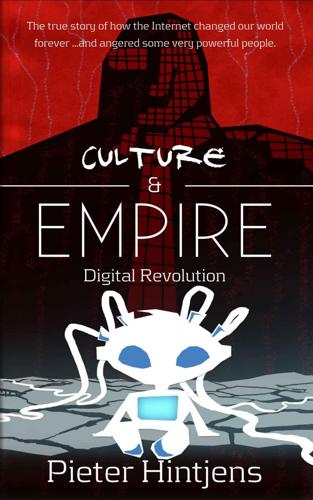
Culture & Empire: Digital Revolution
by
Pieter Hintjens
Published 11 Mar 2013
Better, the Spider calculates, to buy time and find a way to control BitCoin, and make a profit from it. BitCoin is a surprisingly strong model in some ways, yet it still has several vulnerabilities. It will depend on exchanges for converting BitCoin to other currencies until it gains (if it ever does) a sufficient internal market. BitCoin transactions -- the blockchain -- are essentially public, and it's been shown that you can tie transactions back to individual identities. Lastly, and most importantly, the whole system depends on a distributed network of "miners," who recalculate transactions, and in the process generate new BitCoin. BitCoin depends on its miners to remain honest.
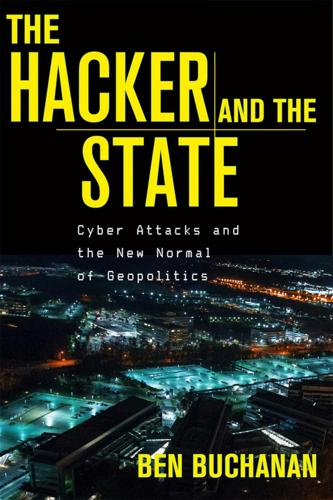
The Hacker and the State: Cyber Attacks and the New Normal of Geopolitics
by
Ben Buchanan
Published 25 Feb 2020
Arkin, Ken Dilanian, and Robert Windrem, “CIA Prepping for Possible Cyber Strike against Russia,” NBC News, October 14, 2016. 16. Becker et al., “NSA Contractor Arrested in Possible New Theft of Secrets.” 17. This original message and others from this period appear to have been taken down, but reposts are visible on the Shadow Brokers’ account on Steemit, a blockchain-based messaging site, which the Shadow Brokers later used for their communications and which is the best compendium of their messages in one place. theshadowbrokers, “Repost: TheShadowBrokers Message#4 - October 2016,” Steemit, October 15, 2016. 18. theshadowbrokers, “Message#5— Trick or Treat?

No Filter: The Inside Story of Instagram
by
Sarah Frier
Published 13 Apr 2020
That month, research groups commissioned: “The Disinformation Report,” New Knowledge, December 17, 2018, https://www.newknowledge.com/articles/the-disinformation-report/. 12 | THE CEO In 2012, when Facebook reached: Leena Rao, “Facebook Will Grow Head Count Quickly in 2013 to Develop Money-Making Products, Total Expenses Will Jump by 50 Percent,” TechCrunch, January 30, 2013, https://techcrunch.com/2013/01/30/zuck-facebook-will-grow-headcount-quickly-in-2013-to-develop-future-money-making-products/. The new hierarchy, the biggest reshuffling: Kurt Wagner, “Facebook Is Making Its Biggest Executive Reshuffle in Company History,” Vox, May 8, 2018, https://www.vox.com/2018/5/8/17330226/facebook-reorg-mark-zuckerberg-whatsapp-messenger-ceo-blockchain. Whatever they wanted to do was their right: Parmy Olson, “Exclusive: WhatsApp Cofounder Brian Acton Gives the Inside Story on #DeleteFacebook and Why He Left $850 Million Behind,” Forbes, September 26, 2018, https://www.forbes.com/sites/parmyolson/2018/09/26/exclusive-whatsapp-cofounder-brian-acton-gives-the-inside-story-on-deletefacebook-and-why-he-left-850-million-behind/.
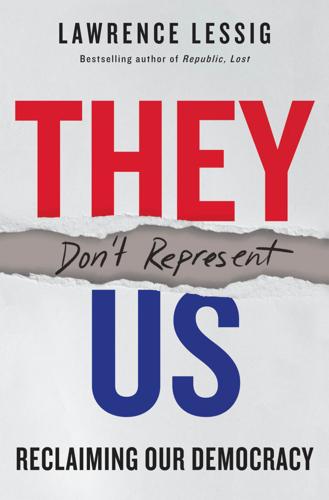
They Don't Represent Us: Reclaiming Our Democracy
by
Lawrence Lessig
Published 5 Nov 2019
Today, there is no faith. The best and brightest turn west, not east—to Silicon Valley, not Washington, D.C. The future is technology, and hence technocracy, not a better-functioning democracy. Artificial intelligence (AI) will decide for us. Automatic contracts enforced through something called a “blockchain” will bind us. The very rich will give us the best security they can. It will be good enough, for them at least, given the alternative is so dreadfully hopeless. And for the rest, the operative term is not hopeless, but certainly much less hope. The future is not doom. This is America. But without repair, democracy has none of the promise of the democracy in our past.
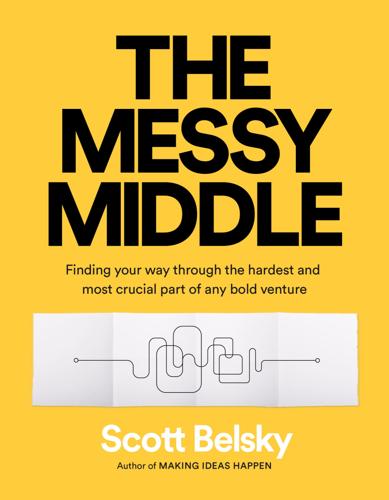
The Messy Middle: Finding Your Way Through the Hardest and Most Crucial Part of Any Bold Venture
by
Scott Belsky
Published 1 Oct 2018
The millions of portfolios hosted on Behance didn’t belong to us. Our job was to protect and enrich the network, but we didn’t own it. If you’re building or hosting a community or network of any kind, you are a steward, not an owner. As businesses become more decentralized, whether through online networks, blockchains, or other methods that connect people, traditional approaches to building and leading communities need to be reimagined. NETWORKS ARE SERVED, NOT LED. If so much of the future of business depends on building networks, then we need to rethink the role of leaders in business. For instance, a strategy is less about accomplishing your team’s objectives and more about better serving the needs of your network’s participants.
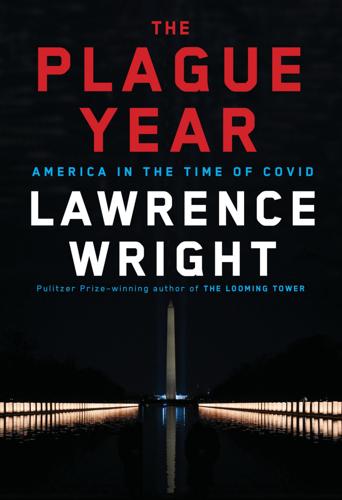
The Plague Year: America in the Time of Covid
by
Lawrence Wright
Published 7 Jun 2021
“Gregory, how big a game changer could chloroquine and its sister drug hydrochloroquine [sic] be if, say, we began using it fairly promptly to treat Americans who are highly at risk?” Rigano, who was not otherwise identified on the show except as the author of the paper, was a thirty-four-year-old lawyer from Long Island. He had recently started several blockchain funds that aimed to “cheat death” and “end Alzheimer’s.” What brought him to Ingraham’s attention was a document he self-published on Google Docs with his co-author, James Todaro, a medical school graduate who is also a cryptocurrency investor. Ingraham quoted from the document, which claimed that the drugs were “effective in treating Covid-19,” and could be used as a prophylactic to prevent contracting the disease.
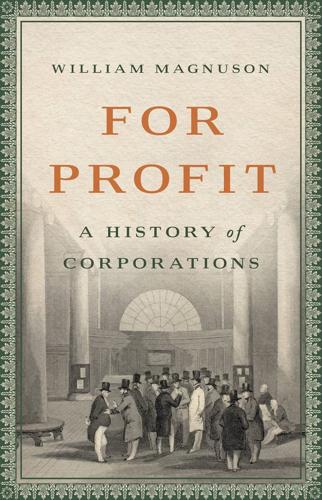
For Profit: A History of Corporations
by
William Magnuson
Published 8 Nov 2022
Discover Your Next Great Read Get sneak peeks, book recommendations, and news about your favorite authors. Tap here to learn more. MING CHEN WILLIAM MAGNUSON is a professor at Texas A&M Law School, where he teaches corporate law. Previously, he taught law at Harvard University. The author of Blockchain Democracy, he has written for the Wall Street Journal, Washington Post, Los Angeles Times, and Bloomberg. He lives in Austin, Texas. Notes INTRODUCTION 1. William Blackstone, Commentaries on the Laws of England, Vol. 1 186 (1876); The Case of Sutton’s Hospital, 5 Co. Rep. 23, 32b (1526–1616). 2.
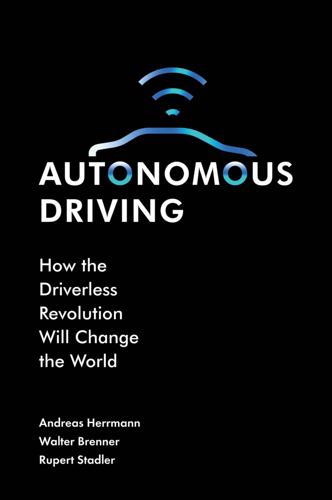
Autonomous Driving: How the Driverless Revolution Will Change the World
by
Andreas Herrmann
,
Walter Brenner
and
Rupert Stadler
Published 25 Mar 2018
During the journey, there is individualised entertainment on offer, so the passengers listen to their favourite music or watch their favourite television series. A traffic management centre equipped with artificial intelligence ensures that waiting times and journey times are minimised and that the vehicles are fully utilised. Data protection has also developed considerably. Blockchain technology allows each passenger to access his or her data and to decide who else can access which parts of it. The journeys are billed on a peer-to-peer basis without the involvement of an intermediary. Smart cities offer such self-driving shuttles free of charge, with companies acting as sponsors in order to advertise their products and services in the vehicles.
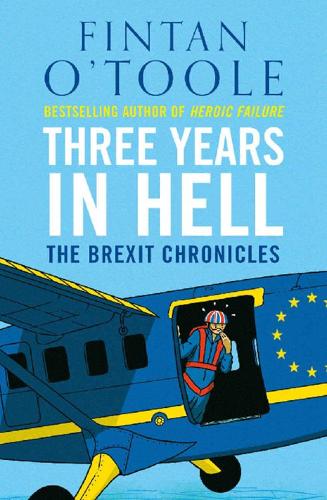
Three Years in Hell: The Brexit Chronicles
by
Fintan O'Toole
Published 5 Mar 2020
He thinks the DUP speaks for ‘the Northern Irish’, even though it gets a third of the vote and does not represent the strongly anti-Brexit majority. He claims Britain could have negotiated a trade deal with the EU before it discussed a withdrawal agreement, even though the EU can’t do a trade deal with Britain until it has actually left. His understanding of the border question – blockchain can solve ‘almost all’ the problems – is childish. He even seems oblivious to the basic history of the UK: ‘Our boundaries have not shifted much over the years.’ (So Ireland neither joined the UK in 1801 nor left it in 1922?) At the heart of Liddle’s new pose as defender of the people is his righteous rage against ‘the allegations that Leave voters were all racists’.

Click Here to Kill Everybody: Security and Survival in a Hyper-Connected World
by
Bruce Schneier
Published 3 Sep 2018
Many people realized it would be used to buy and sell things, but nobody predicted eBay. Many people understood that friends would use it to keep in touch, but nobody predicted Facebook. Again and again, we anticipate the immediate uses of a new technology, but fail to grasp how it will manifest in society. I see the same thing happening with personal digital assistants, robots, blockchain technologies like bitcoin, artificial intelligence, and driverless cars. What this means is that it’s easy to fall into the trap of technical determinism. I can easily map the current trajectories of security. However, I have no idea what new and transformative discoveries and inventions are coming in three, five, or ten years.
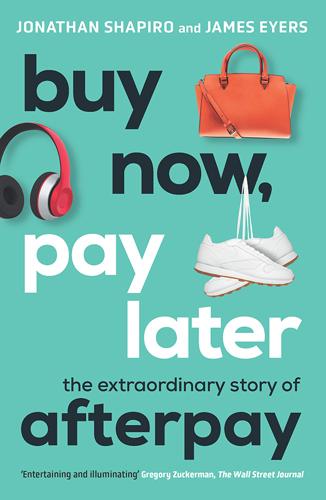
Buy Now, Pay Later: The Extraordinary Story of Afterpay
by
Jonathan Shapiro
and
James Eyers
Published 2 Aug 2021
Michael Walsh, a veteran salesman at UBS with close ties to Australia’s top investors and wealthy families, was sensing an increased interest in investing in technology and had helped shape the conference’s agenda along those lines. The keynote speaker was Alec Ross, an adviser to Hillary Clinton; he had written a bestselling book on disruption in 2016 called The Industries of the Future, which examined big data and blockchain technologies. But the main game of the conference each year is the one-on-one ‘speed-dating’ sessions held in the meeting rooms of the five-star Sheraton on the Park hotel between investment analysts and the corporate representatives—usually the chief executives and chief financial officers—of over 100 top companies.

Shadow Libraries: Access to Knowledge in Global Higher Education
by
Joe Karaganis
Published 3 May 2018
In 2013–2015, he was a Marie Curie Fellow at the IViR. Balázs is an internationally renowned expert in cultural black markets, piracy, informal media economies, and the digital underground. He is conducting normative research on a number of rapidly emerging technologies, including algorithmic news recommenders, blockchains, and smart contracts. Laura Czerniewicz is the director of the Centre for Innovation in Learning and Teaching (CILT) at the University of Cape Town in South Africa. She is an associate professor in the Centre for Higher Education Development, committed to equity of access and success in higher education.

Billionaires' Row: Tycoons, High Rollers, and the Epic Race to Build the World's Most Exclusive Skyscrapers
by
Katherine Clarke
Published 13 Jun 2023
At 111 West 57th Street, there was a contest between two wealthy buyers for one of the building’s most expensive units, a 7,130-square-foot aerie on the 72nd floor asking $66 million. The developers had already accepted an offer on the unit when they got a second offer from Gavin Wood, one of the founders of Ethereum, the blockchain-based computer network. (The unit went to the first, unidentified buyer.) Tim Gong, an executive whose firm owned a major stake in the parent company of social media giant TikTok, bought two units at the building for $34 million. At Central Park Tower, new buyers included Nicole Mendelsohn, the vice president of the global business group at Meta, Facebook’s parent company, which was then in the midst of doubling down on the digital realm known as the metaverse.
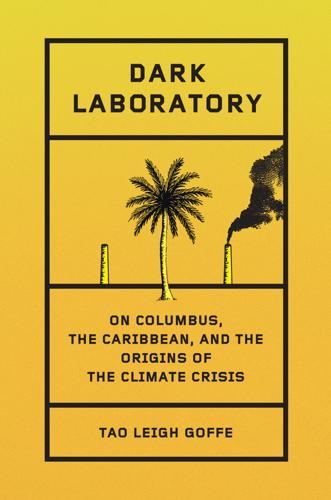
Dark Laboratory: On Columbus, the Caribbean, and the Origins of the Climate Crisis
by
Tao Leigh. Goffe
Published 14 Mar 2025
Using the power of her social media platforms, Rihanna asked for “bold commitments to finance and debt reforms” in a rare political action for a celebrity today. Decentralized autonomous organizations, or DAOs, are another possible financial strategy for reorganizing sustainability efforts and fundraising for global climate disasters in the future. DAOs were first developed as a system of financing in 2016 by those invested in cryptocurrency and blockchain, but there are other ways to consider the homegrown potential for this form of banking in the Caribbean. Intentionally fragmented collectives are taking action for the climate from the bottom up. These financial technology banking structures may be needed more and more because, as of 2019, the Caribbean has suffered what is called de-risking by Canadian banks.

These Strange New Minds: How AI Learned to Talk and What It Means
by
Christopher Summerfield
Published 11 Mar 2025
Many live around the Bay Area, which has long fostered an excitable culture of disruptive innovation, and remains the beating heart of progress in AI. Most are young and affluent, and would personally benefit from lower taxes, or a bonfire of business regulations. So techno-utopianism may be a convenient philosophy for well-heeled young tech entrepreneurs to buy into – it is an elite form of populism, like Breitbart for the blockchain classes.[*3] But there is no doubt that many genuinely do believe that AI is going to save us all, and that, in the final words of the manifesto, ‘it’s time to build’. Unsurprisingly, the fumes of impatient, self-serving libertarianism that this crowd gives off are especially noxious to those who care about AI’s imminent social harms.

The Optimist: Sam Altman, OpenAI, and the Race to Invent the Future
by
Keach Hagey
Published 19 May 2025
They had met in Peter Thiel’s hot tub at 3 a.m. in 2015, when Mulherin was studying computer science at the University of Melbourne, and bonded over their shared love of the song “Your Hand in Mine” by the band Explosions in the Sky. They were both dating other people but stayed up late talking as Thiel’s party swirled around them. Mulherin finished his studies in Australia, where he worked on AI projects ranging from game playing to language models. He then took a job at the Australian blockchain nonprofit the IOTA Foundation, before moving to the United States to work at an AI-driven dementia detection startup called SPARK Neuro. They came to view “Your Hand in Mine” as their song. “I remember one night when we were just, you know, sitting next to each other, looking at a fire, listening to the song, and kind of looked over at each other at some point and didn’t speak about it then either but felt like it had this great story of us in it,” he told the San Francisco Standard’s Life in Seven Songs podcast.31 By 2023, Altman, who had always wanted to have a large family, was already researching surrogacy.
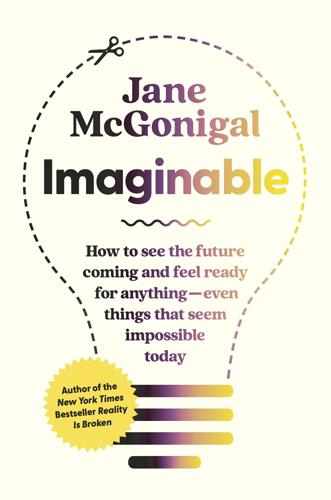
Imaginable: How to See the Future Coming and Feel Ready for Anything―Even Things That Seem Impossible Today
by
Jane McGonigal
Published 22 Mar 2022
If this scenario feels far-fetched to you, stick with the ten-year timeframe. 5 You can see all their ideas at http://www.stanford2025.com/. It’s a fantastic example of a community-based approach to futures thinking and imagination. 6 Note that this scenario is not about cryptocurrencies, which use blockchain technology, are not backed by any central bank or government, and are used primarily today as investment vehicles and for speculation. This scenario, instead, is about a central bank digital currency (CBDC). A CBDC is the digital form of a country’s fiat currency. Instead of printing money, the central bank issues electronic coins or an account backed by the full faith and credit of the government.

Taming the Sun: Innovations to Harness Solar Energy and Power the Planet
by
Varun Sivaram
Published 2 Mar 2018
But in a DC microgrid future, networks might arise organically, from the bottom up.46,47 This theory is known as “swarm electrification,” and the researcher who conceived the term, Sebastian Groh, likens a bottom-up electricity network to a “swarm of fish,” in which “there is no central intelligence, and the fish work together to create unity.” His company, ME SOLshare, is making it possible for the 4 million households in Bangladesh with DC SHSs to connect to one another and trade electricity. Using peer-to-peer mobile payments—securely logged using blockchain technology, which is also used to authenticate Bitcoin transactions—homes can participate in a bottom-up marketplace, dynamically balancing supply and demand across a self-assembled DC microgrid. This concept could work in any place with a high population density—Bangladesh is an ideal starting point, with a population of 160 million squished into an area the size of New York State.48 Clearly, DC microgrids could enable a wealth of new ways to improve energy access.

Super Continent: The Logic of Eurasian Integration
by
Kent E. Calder
Published 28 Apr 2019
An explosive expansion in the use of transponders, combined with AI advances, are allowing computers to automate and track logistics as never before. These developments have especially dramatic consequences for intermodal transport and storage, making it possible for firms to effortlessly track shipments and to anticipate delivery. Blockchain technology can also enhance this predictability, by reducing errors from manual data entry, increasing data transparency, and helping track supply-chain sourcing more effectively. The Logistics Revolution has fateful implications for producers, distributors, and consumers. For producers, it opens prospects for more efficient and predictable B2B supply chains, making long-distance production networks among manufacturers—including trans-continental networks—more and more feasible.
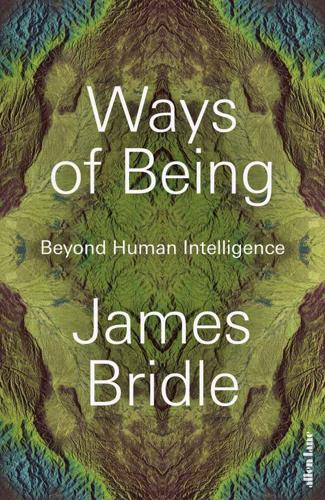
Ways of Being: Beyond Human Intelligence
by
James Bridle
Published 6 Apr 2022
Seeley, Honeybee Democracy, Princeton University Press, 2010 Kenneth Silverman, Begin Again: A Biography of John Cage, Random House, 2010 Suzanne Simard, Finding the Mother Tree: Uncovering the Wisdom and Intelligence of the Forest, Allen Lane, 2021 Merlin Sheldrake, Entangled Life, Bodley Head, 2020 Adrian Tchaikovsky, Children of Time, Orbit, 2018 Anna Lowenhaupt Tsing, The Mushroom at the End of the World: On the Possibility of Life in Capitalist Ruins, Princeton University Press, 2015 Frans de Waal, Are We Smart Enough to Know How Smart Animals Are?, Granta Books, 2016 Xiaowei Wang, Blockchain Chicken Farm, FSG, 2020 Peter Wohlleben, The Hidden Life of Trees, William Collins, 2017 Andrea Wulf, The Invention of Nature, John Murray, 2015 Tyson Yunkaporta, Sand Talk: How Indigenous Thinking Can Save the World, HarperOne, 2020 Acknowledgements Many friends and acquaintances have been part of the discussions and ideas that went into this book; many more than I can name.
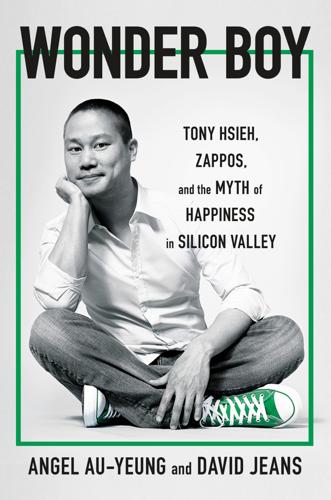
Wonder Boy: Tony Hsieh, Zappos, and the Myth of Happiness in Silicon Valley
by
Angel Au-Yeung
and
David Jeans
Published 25 Apr 2023
The doctor instructed Tyler to make serious life changes. As Tyler wondered how Tony was stomaching his Fernet habit, he witnessed another, even more troubling encounter. A meeting had been scheduled at the El Cortez between Tony and a man named Ben Jorgensen, a Silicon Valley entrepreneur who had recently raised $30 million for his new blockchain technology company, Constellation Labs. Ben and Tony had met previously during the early Downtown Project days and had remained friends. There was enough mutual respect between the two men that during a visit to Airstream Park, Tony had once confided in Ben about his frustrations. “Everybody seems to want something from me,” Tony had said.
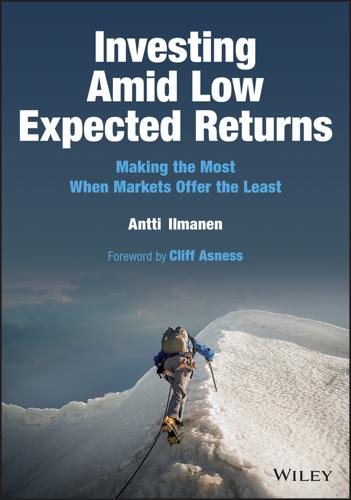
Investing Amid Low Expected Returns: Making the Most When Markets Offer the Least
by
Antti Ilmanen
Published 24 Feb 2022
For those interested in this intersection, I warmly recommend three books written in recent years: Will Goetzmann's (2016) Money Changes Everything, Philip Coggan's (2020) More, and Bill Bernstein's (2021) The Delusions of Crowds. 6 See Chambers-Dimson (2016) and Morecroft-Turnbull (2019). 7 This book will not drill into the history of investment vehicles or financial services, either the ancestry (the first common stock Dutch East India Company in 1602, the important development of limited liability in the mid-1800s, or the recent growth of ETFs), let alone the prospects for fintech, DeFi, and blockchain. Chambers-Dimson (2016) and Goetzmann (2016) are excellent introductions to financial history. 8 See Chambers-Dimson-Kaffe (2020). This article contains a great review of US endowment investing practices since WWII, while the authors have earlier focused on Keynes's pioneering role in Chambers-Dimson (2015). 9 See Clowes (2000), Federal Flow of Funds (Table L118), and Pensions and Investments surveys in Figure 3.5 in this chapter. 10 See Thinking Ahead Institute (2021).
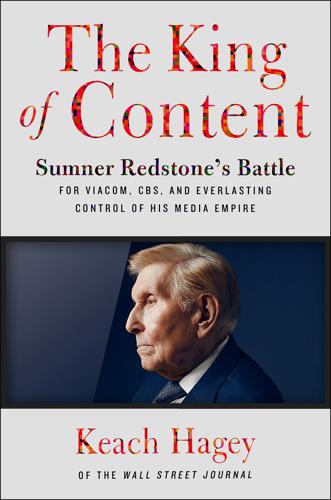
The King of Content: Sumner Redstone's Battle for Viacom, CBS, and Everlasting Control of His Media Empire
by
Keach Hagey
Published 25 Jun 2018
He welcomed her input, and she, in turn, rhapsodized over his brilliance. After years of caginess and spotlight-dodging, she seemed to visibly relax and began to do more public speaking, taking questions in live settings on everything from the need for scale among big media companies to the opportunities that blockchain technology presents to tech investors. Every now and then, she would toss off her father’s old adage that “content is king.” But mostly she would praise Bakish, bragging that he was restoring the culture that defined Viacom in her father’s heyday. This is literally true: under Bakish, MTV has rebooted TRL, Unplugged, and even the Jersey Shore franchise, hoping to reclaim its lost magic.
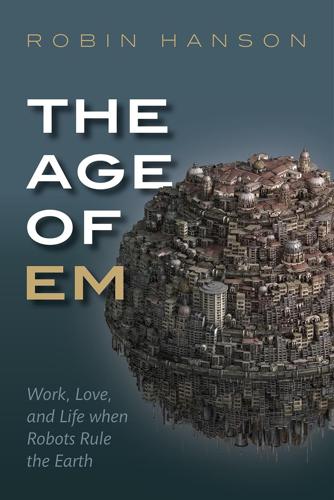
The Age of Em: Work, Love and Life When Robots Rule the Earth
by
Robin Hanson
Published 31 Mar 2016
Very secure and anonymous communications between willing parties can be arranged via “public key cryptography,” wherein each person publishes a public key for which they can prove only they know the matching private key. In addition, robust systems of secure anonymous decentralized transactions may be built on the recent innovation of block-chain based cryptographic systems, where a public record of all transactions between public key labeled accounts prevents double-spending of assets. Such systems could support digital currencies, token systems, safe wallets, registration, identity, decentralized file storage, multi-signature escrow, consensus via rewarding those who best guess a consensus, financial derivatives including insurance and bets, and more general decentralized autonomous organizations (Nakamoto 2008; Buterin 2014).

Connectography: Mapping the Future of Global Civilization
by
Parag Khanna
Published 18 Apr 2016
With the Bali Trade Facilitation Agreement of 2013, the harmonization of customs administration (cutting red tape) could add $1 trillion to world GDP and create twenty million jobs. A study undertaken by the World Economic Forum and Bain estimates that further aligning supply chain standards would boost world GDP by an enormous 5 percent, while implementation of all current WTO accords would deliver only 1 percent growth. The Ethereum blockchain platform will allow for standardized and transparent contracts between trading parties beyond any single jurisdiction and, when combined with real-time data sharing on supply chain transactions, can substantially reduce the cost of insuring trade. Open trade and open borders further reorganize the world into functional circuits.

Model Thinker: What You Need to Know to Make Data Work for You
by
Scott E. Page
Published 27 Nov 2018
In the test, each person must come up with novel uses of a common object, such as a brick. The test measures a person’s creativity based on the number of uses or categories of uses that she generates. When we calculate Shapley values, we find that they produce an intuitive scoring rule. Imagine three players, Arun, Betty, and Carlos, who each think up alternative uses for blockchain, a distributed ledger technology, shown in figure 9.1. Arun and Carlos each think of six ideas, giving each a creativity score of 6, and Betty thinks of seven, making her score 7. The group’s total creativity equals 9, as there are nine unique ideas. To compute the Shapley values, we could write down all six possible orders in which the group could form, give individuals credit only for unique ideas added to the group, and then average over all six cases.
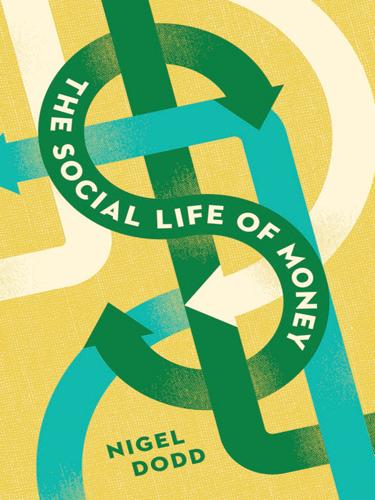
The Social Life of Money
by
Nigel Dodd
Published 14 May 2014
Stephenson mixed the genres of historical novel (one of the book’s central characters was based on Turing, whose work in cryptography was crucial to Allied efforts during the Second World War) and science fiction thriller. One of the key story lines tells of an attempt to establish a data haven in Southeast Asia, partly funded through a digital currency using powerful encryption and backed by gold (Stephenson 1999). 23 See http://p2pfoundation.net/bitcoin. 24 See http://blockchain.info/. This is a transaction database shared by all nodes participating in the system. 25 But unlike credit and debit card transactions, where the bank or card company manages the ledger, Bitcoin ledgers consist of block chains. 26 See https://www.casascius.com/. 27 For example, on April 15, 2013, an Asus laptop was available for 6.2271 BTC, which the website states was equivalent to US$629 (see https://www.bitcoinstore.com/). 28 See “Bitcoin takes an important step toward becoming part of every web browser on the planet,” http://qz.com/78014/bitcoin-is-now-part-of-the-web-sort-of/, accessed May 10, 2013. 29 Around 70 percent of items sold on Silk Road are drugs; other items include erotica, books, and fake IDs. 30 See http://www.bloomberg.com/news/2013–04–12/virtual-bitcoin-mining-is-a-real-world-environmental-disaster.html. 31 See http://krugman.blogs.nytimes.com/2013/04/12/adam-smith-hates-bitcoin/?
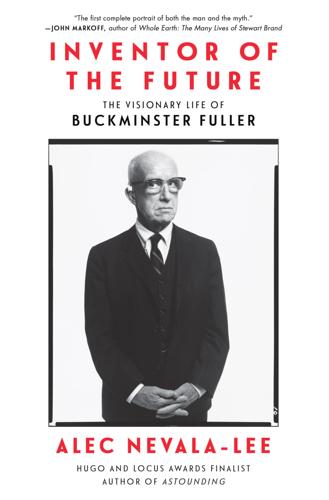
Inventor of the Future: The Visionary Life of Buckminster Fuller
by
Alec Nevala-Lee
Published 1 Aug 2022
More recently, the venture capitalist Paul Graham defined it as “the increasing tendency of physical machinery to be replaced by what we would now call software,” noting that phones and tablets “have effectively drilled a hole that will allow ephemeralization to flow into a lot of new areas.” The same trend can be seen in cloud computing, the invention of the blockchain, and the inexorable integration of technology into everyday life. Before they became part of our collective future, Fuller independently arrived at the principles of online education, remote working, and universal access to data, which he developed without any computers at all. On a more pragmatic level, Fuller used ephemeralization to sustain his virtual company, which he ran for years as a perpetual start-up.
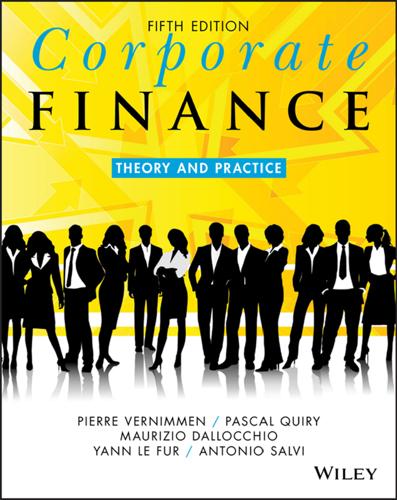
Corporate Finance: Theory and Practice
by
Pierre Vernimmen
,
Pascal Quiry
,
Maurizio Dallocchio
,
Yann le Fur
and
Antonio Salvi
Published 16 Oct 2017
Source: European Central Bank, 2016 Harmonisation of payment methods in the eurozone (Single Euro Payment Area, or SEPA) has allowed companies or individuals to transfer money and debits as easily and as quickly and at the same cost as if the transfer were between two towns in the same country. New payment methods that take advantage of the SEPA standard have been developed, such as SEPAmail, the main service of which is an email transfer for paying invoices at radically reduced processing costs, much faster processing periods and reduced risks of fraud. This is what Blockchain will be able to do on a very large scale, once it is developed beyond the hype and the buzz surrounding it today. 4. Optimising cash management Our survey of account balancing naturally leads us to the concept of zero cash, the nirvana of corporate treasurers, which keeps interest expense down to a minimum (even though in the current climate of very low, even negative, short-term interest rates, this is becoming a worry of the past).